Architectural landmarks around the world serve as invaluable learning resources for architects. These famous buildings and structures tell stories of different times, cultures, and ideas in design. They show how architecture has changed and evolved, offering lessons in creativity and engineering. Some of these famous architectural landmarks have stood the test of time and inspire awe and admiration. The Eiffel Tower is a wrought-iron lattice tower in Paris, France, built for the 1889 World’s Fair. It is named after the engineer Gustave Eiffel, whose company designed and built the tower. It is 1,063 feet (324 meters) tall and has three visitor levels, with restaurants and observation decks. The tower is the most visited monument with an entrance fee in the world, and a symbol of Paris and France, while the Pantheon is a former Roman temple and a Catholic church in Rome, Italy. It was built by the emperor Hadrian in the 2nd century AD and has a circular dome with a central opening (oculus) that lets in natural light. The dome is the largest unreinforced concrete dome in the world, and the interior is decorated with marble statues and tombs of famous people. The Pantheon is one of the best-preserved ancient buildings and a masterpiece of engineering and architecture. The Leaning Tower of Pisa is the bell tower of the cathedral of Pisa, Italy. It is famous for its tilt, caused by an unstable foundation. The tower was built in the 12th and 13th centuries and has 296 steps to the top. The tower was stabilized by remedial work in the 1990s and 2000s and is open to visitors who can enjoy the view of the city and the surrounding countryside. The tower is part of the Piazza dei Miracoli, a UNESCO World Heritage Site. The Great Pyramid of Giza, on the other hand, is the largest and oldest of the three pyramids in the Giza pyramid complex near Cairo, Egypt. It was built as the tomb of the pharaoh Khufu in the 26th century BC and is the only one of the Seven Wonders of the Ancient World that still exists. The pyramid is 456 feet (139 meters) high and has a base of 755 feet (230 meters) on each side. It comprises 2.3 million stone blocks, some weighing up to 80 tonnes. The pyramid has three chambers inside, surrounded by a complex of temples and tombs.
1. Eiffel Tower
The Eiffel Tower is a wrought-iron lattice tower that stands 1,083 feet (330 meters) tall, including a television antenna at the top. It has three visitor levels: restaurants on the first and second levels and an observation deck on the third. The Eiffel Tower is located on the Champ de Mars, a large public green space in the 7th arrondissement of Paris. It is near the Seine River and the Trocadéro gardens and offers a panoramic view of the city. The Eiffel Tower was built from 1887 to 1889 as the centerpiece of the 1889 World’s Fair, which celebrated the centennial of the French Revolution. It was designed by two engineers, Maurice Koechlin and Émile Nouguier, who worked for Gustave Eiffel’s company, which employed 250 workers to assemble the 18,038 pieces of iron and 2.5 million rivets that make up the tower’s structure. Eiffel supervised the construction and was involved in every aspect of the project, from the design to the financing.
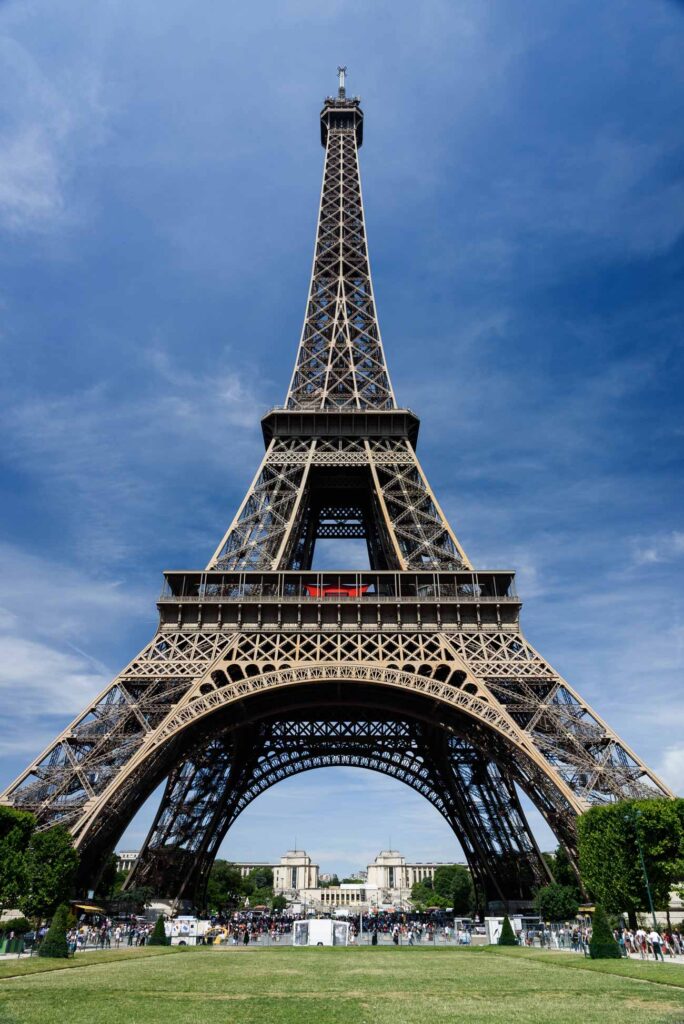
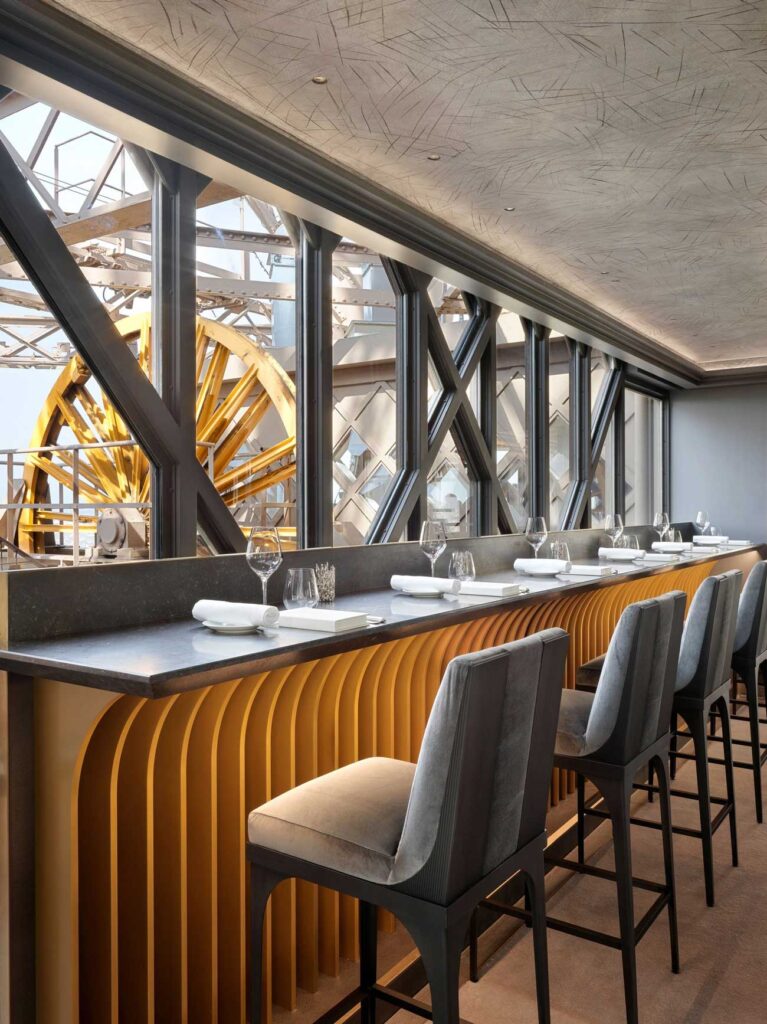
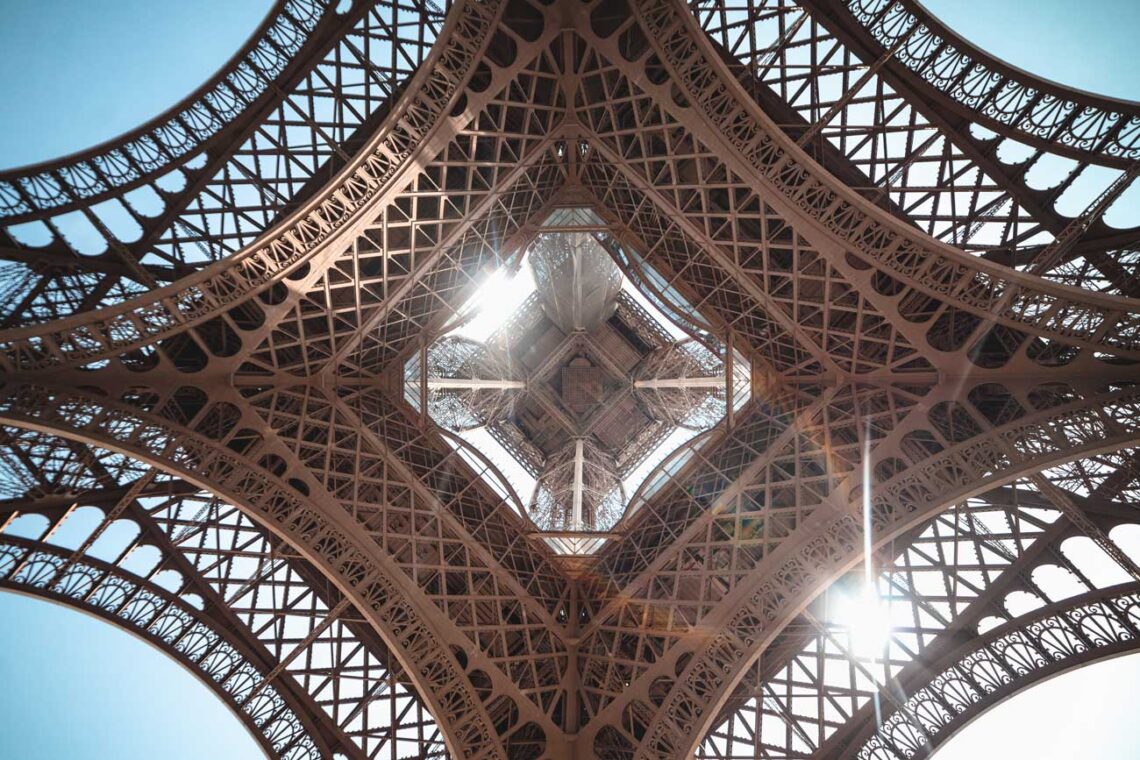
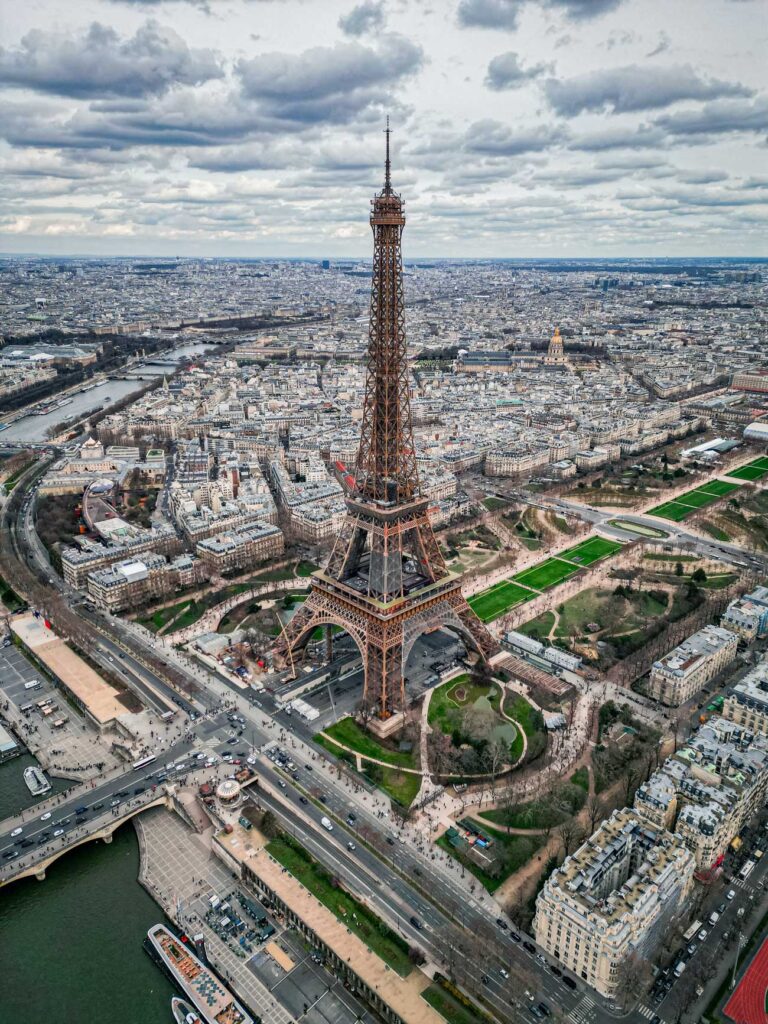
The Eiffel Tower is an example of the architectural style known as structural expressionism, which emphasizes the form and function of the building’s materials and structure. The tower’s design was inspired by the principles of statics and dynamics and the aesthetic of metal bridges and viaducts. The Eiffel Tower reflects the historical influences of the Industrial Revolution, the scientific discoveries of the 19th century, and the artistic movements of the Belle Époque. The tower symbolized modernity, progress, innovation, and a showcase of French engineering and culture. The Eiffel Tower has unique lighting and shading techniques that enhance its appearance and visibility. The tower is illuminated by 20,000 light bulbs that create a sparkling effect every hour at night. The tower also changes color according to the seasons, events, or causes, using a system of projectors and filters. The Eiffel Tower represents the architectural trend or movement of the late 19th and early 20th centuries, known as the Beaux-Arts style, which combined classical elements with modern techniques and materials. The tower was also a precursor of the Art Nouveau style, which featured organic shapes and motifs.
2. Empire State Building
The Empire State Building is a 102-story skyscraper in Midtown Manhattan, New York City. It was designed by Shreve, Lamb & Harmon and built from 1930 to 1931. Its name comes from “Empire State,” the nickname of the state of New York. The Empire State Building is on Fifth Avenue between West 33rd and 34th Streets. It occupies the site of the former Waldorf–Astoria Hotel, which was demolished in 1929. The building cost approximately $40.9 million (€36 million, £30.8 million) to construct. The Empire State Building was the world’s tallest building until 1970 when it was surpassed by the World Trade Center. It is currently the seventh-tallest building in New York City, the ninth-tallest in the United States, and the 54th-tallest in the world. The building has a roof height of 1,250 feet (381 meters) and a total height of 1,454 feet (443.2 meters), including its antenna.
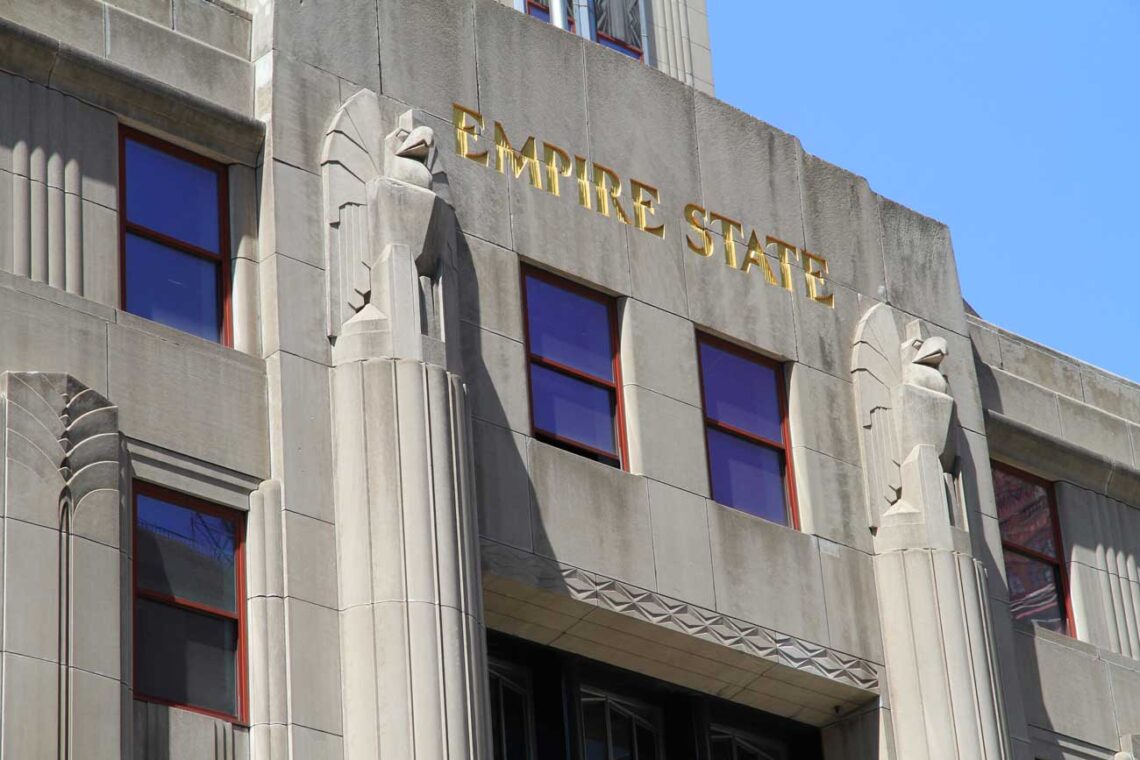
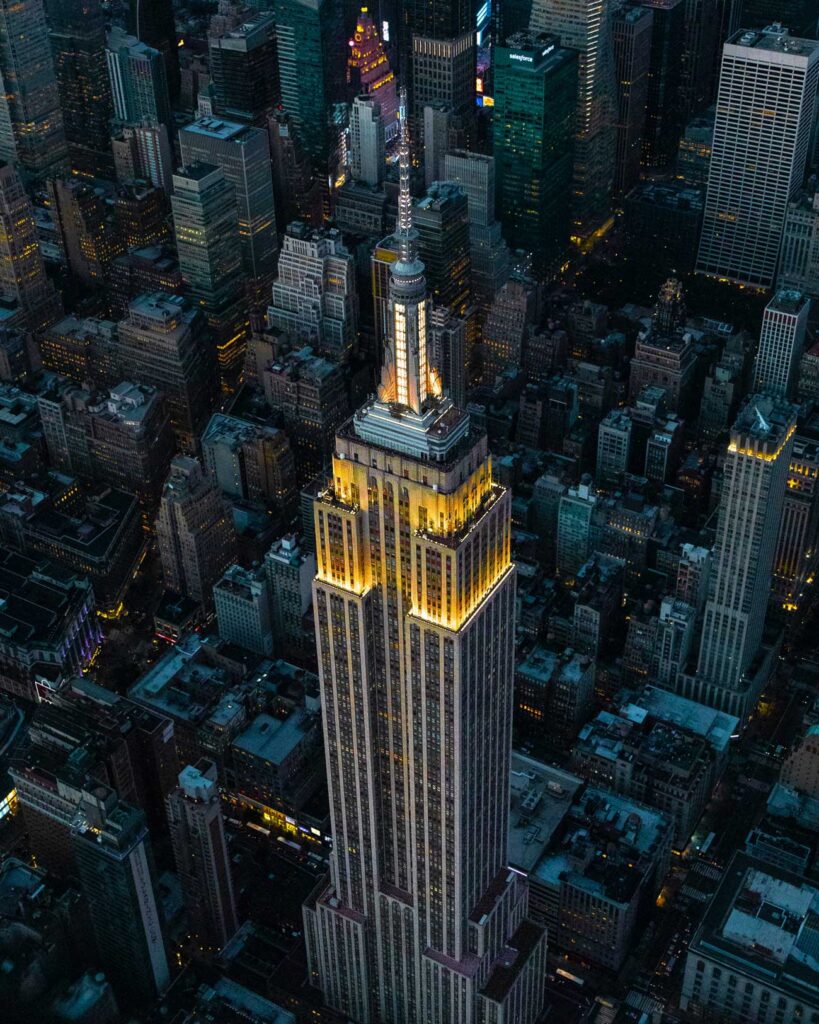
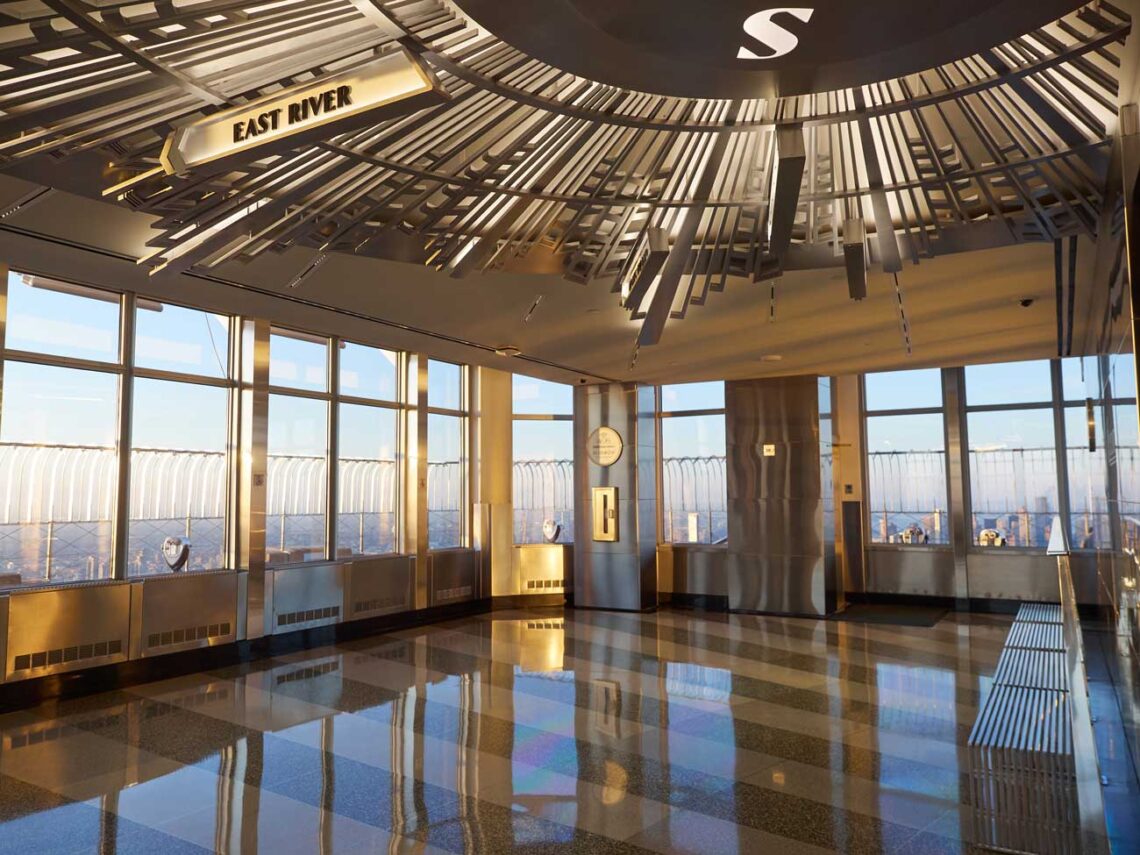
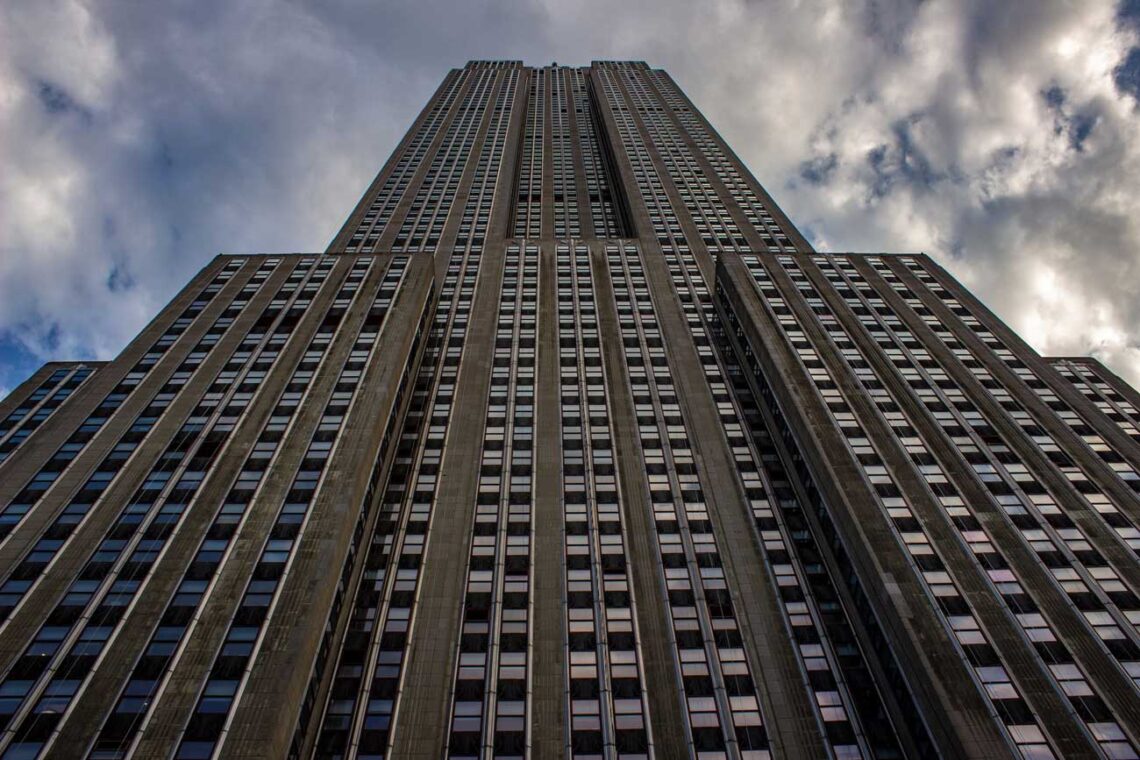
The Empire State Building is an example of Art Deco architecture, a style that emerged in the 1920s and 1930s. The building features a steel frame, a limestone facade, a stepped-back design, and geometric motifs. The Chrysler Building, another Art Deco skyscraper in New York City, and the Eiffel Tower, a wrought-iron tower in Paris, influenced the building’s design. The Empire State Building has a unique lighting system that changes colors to mark holidays, events, and causes. The building also has an observation deck on the 86th floor and a smaller one on the 102nd floor, offering panoramic city views. The building is a popular tourist attraction and a cultural icon, appearing in many films, TV shows, and books.
3. Buckingham Palace
The Buckingham Palace is a royal residence and administrative headquarters of the monarch of the United Kingdom. It is within the borough of Westminster in London. The palace is located on Buckingham Palace Road, London SW1A 1AA, near St James’s Park and The Mall. The palace was originally built in 1703 for the Duke of Buckingham but was later acquired by King George III in 1761. The palace was built by various architects and contractors over the years. William Winde designed the original house for the Duke of Buckingham. John Nash and Edward Blore were responsible for the expansion and transformation of the palace in the 19th century. Aston Webb designed the East Front, which contains the famous balcony, in the early 20th century.
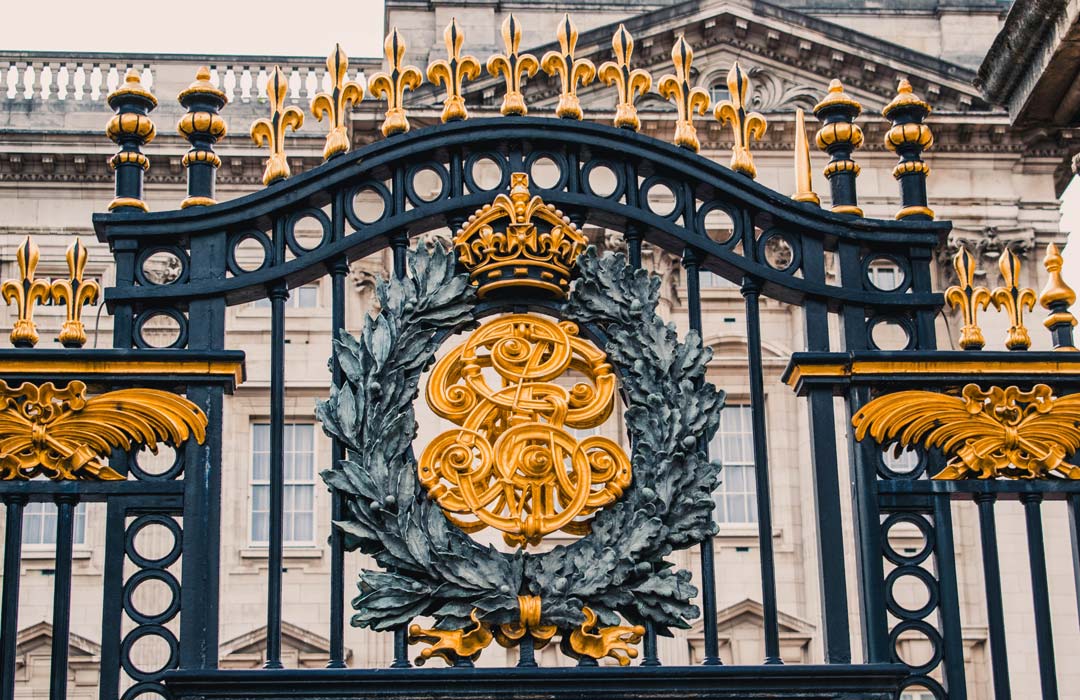
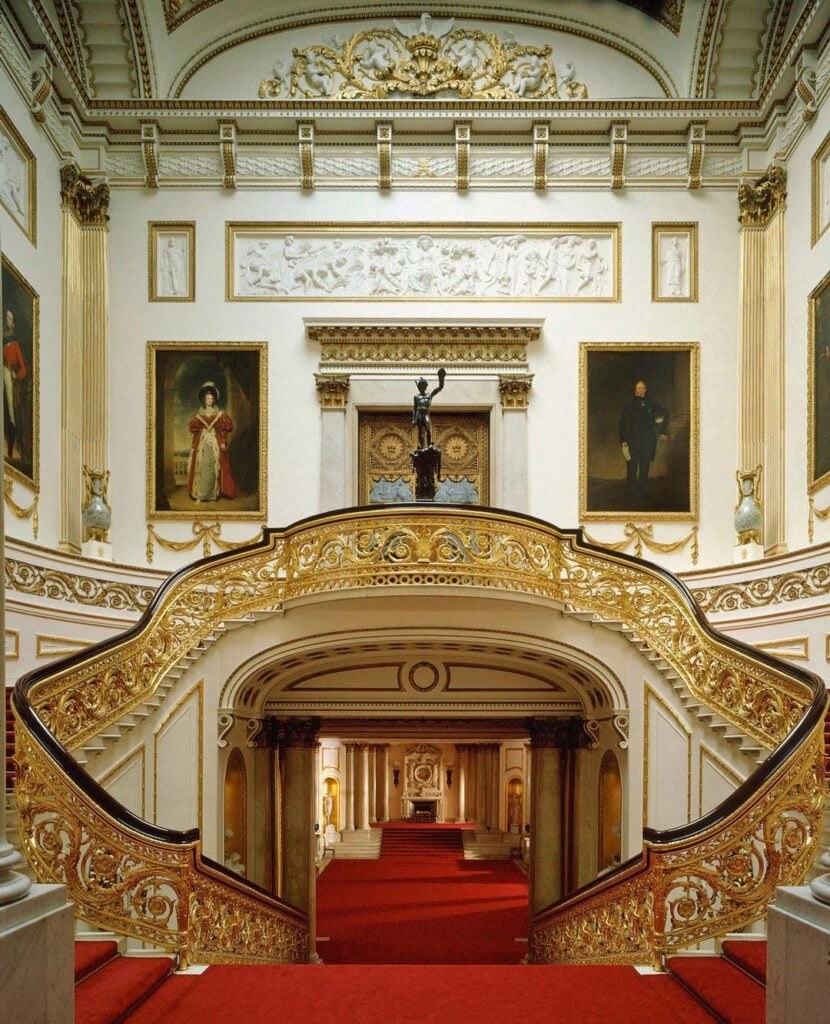

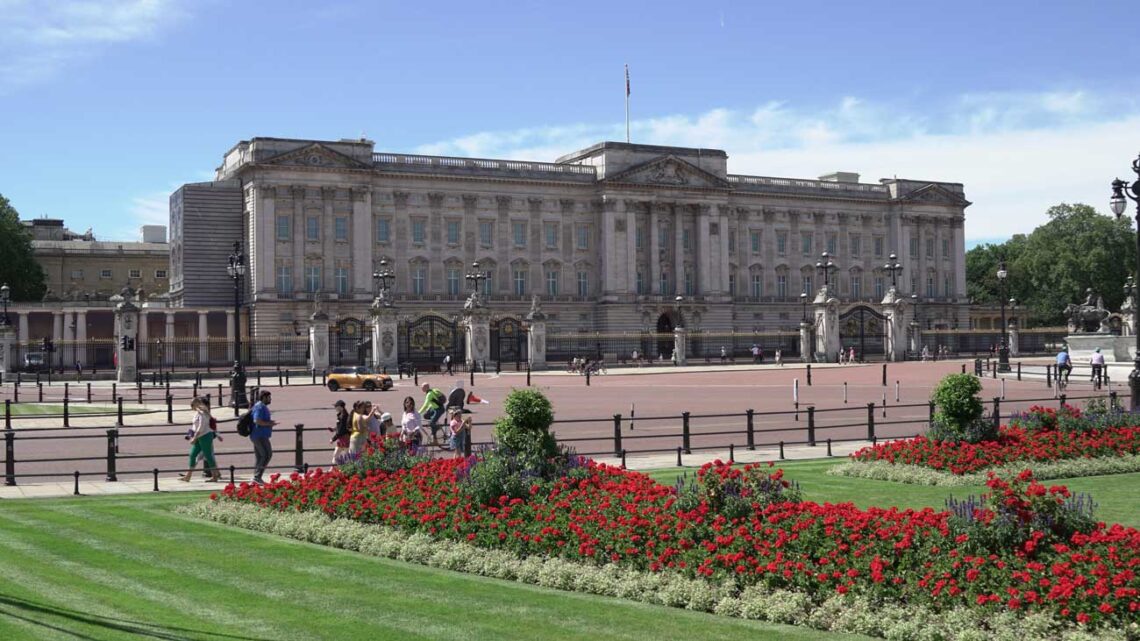
The Buckingham Palace was designed in a Neoclassical architectural style, inspired by Ancient Greek and Roman architecture. It features symmetrical shapes, columns, pediments, and domes. The palace also has elements of Baroque, Rococo, and French styles in its interiors and exteriors. The palace reflects the historical and cultural influences of different periods and monarchs. The late 17th and early 18th century English Baroque style influenced the original house. The 19th-century expansion was influenced by the Regency style of the early 19th century and the Victorian style of the mid to late 19th century, while the East Front was influenced by the Edwardian style of the early 20th century. The palace also incorporates motifs and symbols from the British Empire, such as the lion and unicorn, the rose, thistle, shamrock, and leek, and the royal coat of arms.
The Buckingham Palace uses various lighting and shading techniques to create different effects and moods. The palace is illuminated by thousands of electric lights, which can be dimmed or brightened according to the occasion. The palace also has chandeliers, candelabras, and wall sconces to provide additional lighting. It uses curtains, blinds, and shutters to control the natural light and heat entering the rooms with stained glass windows, which create colorful patterns and images on the walls and floors. The palace represents Neoclassicism’s architectural trend or movement, which emerged in the late 18th and early 19th centuries. Neoclassicism was a reaction to the excesses and frivolities of the Rococo and Baroque styles and sought to revive the simplicity and elegance of classical antiquity. Neoclassicism was also influenced by the discoveries of ancient ruins and artifacts, such as Pompeii and Herculaneum, and the publications of classical scholars, such as Vitruvius and Palladio. Neoclassicism was popular among the aristocracy and royalty, expressing their ideals of order, harmony, and rationality.
4. Space Needle
The Space Needle is an observation tower in Seattle, Washington, United States. It is one of the most recognizable landmarks in the world and a symbol of the city’s innovative and forward-thinking spirit. The Space Needle is located in the Lower Queen Anne neighborhood, in the Seattle Center, the 1962 World’s Fair site. The tower is 605 feet (184 meters) tall and has a 138-foot (42-meter) wide base. The Space Needle was built for the 1962 World’s Fair, whose theme was “The Age of Space.” The construction began in April 1961 and was completed in December 1961, just in time for the fair’s opening in April 1962. The tower cost $4.5 million (€3.8 million, £3.3 million) to build and drew over 2.3 million visitors during the fair. The Space Needle was designed by a team of architects and engineers led by John Graham Jr. and Edward E. Carlson. Graham was the architect who came up with the idea of a flying saucer-shaped top house, while Carlson was the businessman who sketched the initial concept of a balloon-like tower on a napkin. Victor Steinbrueck, a professor at the University of Washington, introduced the hourglass profile of the tower.
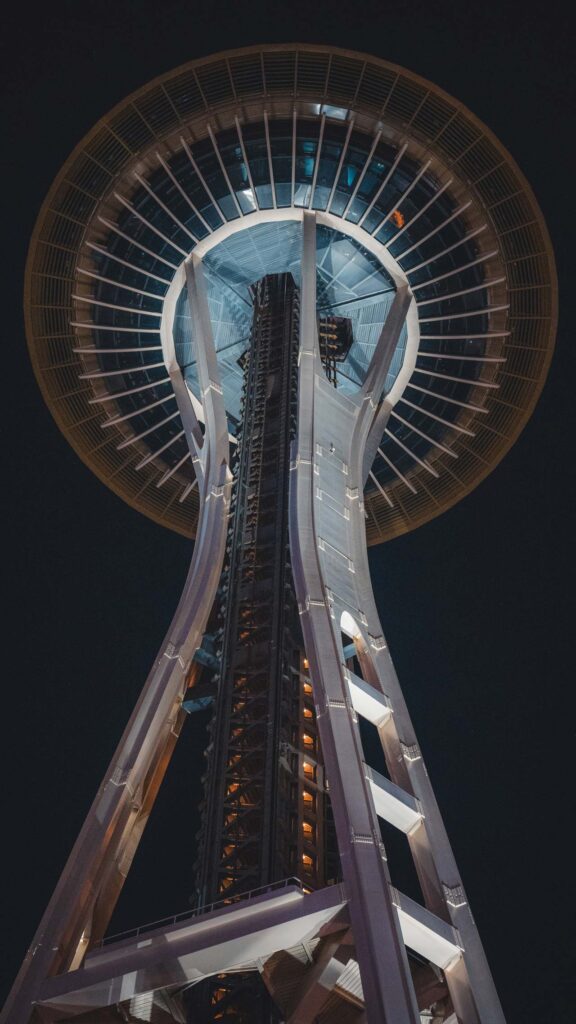
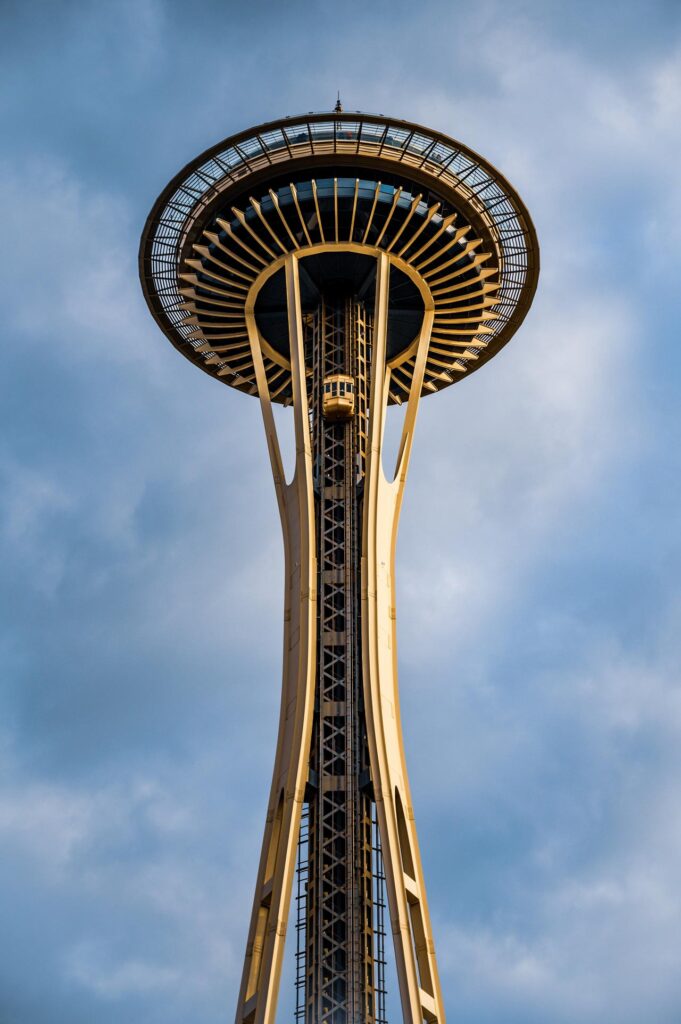
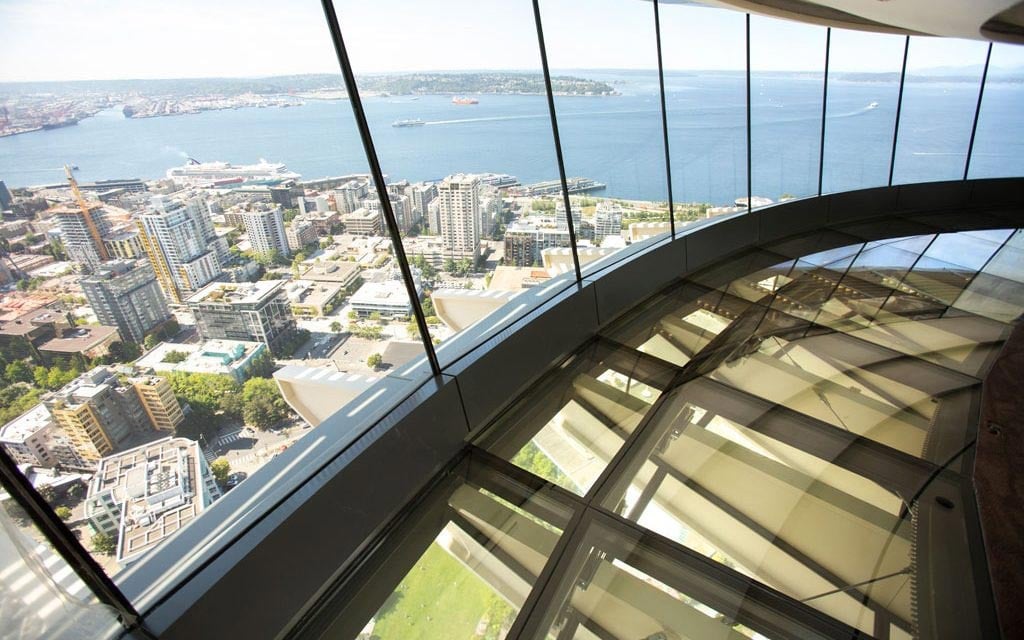
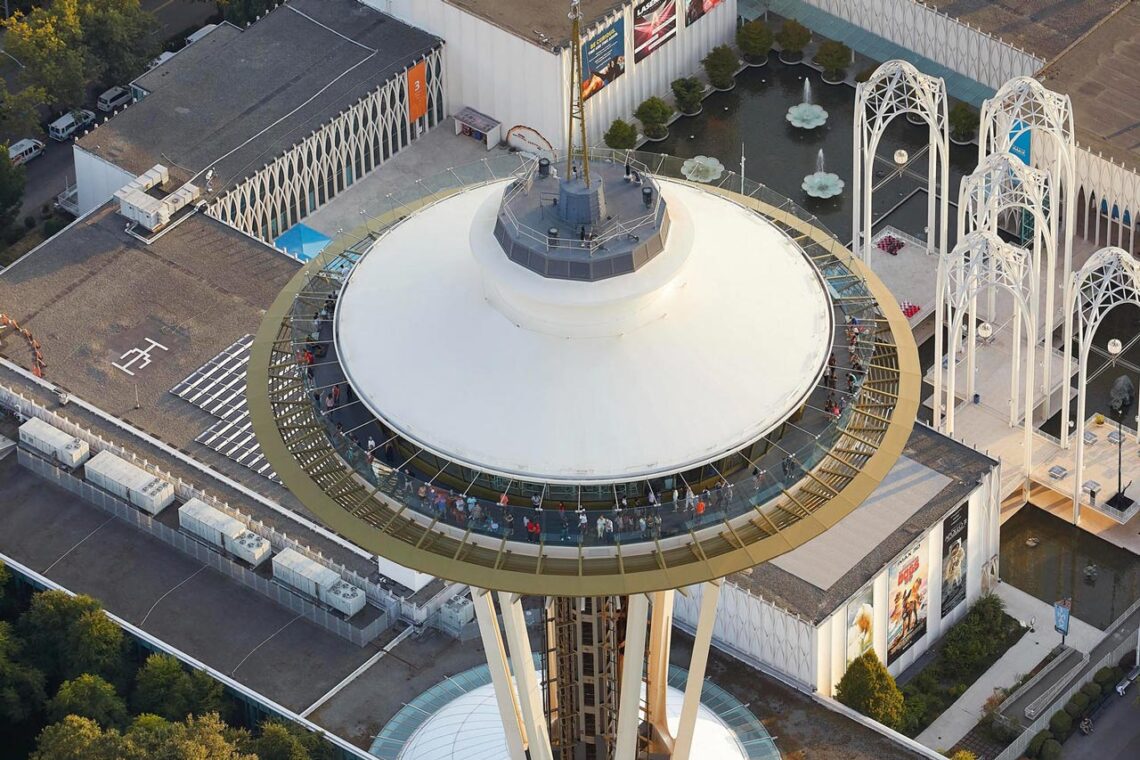
The architectural style of the Space Needle is modernist, with elements of futurism and Googie. Modernism is a movement that emerged in the early 20th century, characterized by simplicity, functionality, and rationality. Futurism is a style that originated in Italy in the 1910s, influenced by the technology and speed of the industrial age. Googie is a subgenre of futurism that developed in the 1950s and 1960s, inspired by space and the atomic age. The historical design influences of the Space Needle are diverse and eclectic. Some sources of inspiration include the Eiffel Tower in Paris, the Stuttgart Tower in Germany, the Theme Building at the Los Angeles International Airport, and the UFO-shaped restaurant in the 1958 film War of the Worlds. The Space Needle also reflects the cultural and artistic trends of the 1960s, such as the pop art movement and the psychedelic style.
The Space Needle has unique lighting and shading techniques that enhance its aesthetic appeal and functionality. The tower has a system of LED lights that can change colors and patterns according to the seasons, holidays, and special events. The lights are controlled by a computer program that can create over 2,000 different combinations. The tower also has a glass floor on the lower level, called The Loupe, that rotates and offers a downward view of the structure and the surrounding area. The glass floor has a special coating that reduces glare and heat and a mechanism that adjusts the rotation speed according to the wind conditions. The Space Needle represents the architectural trend or movement of the 1960s that aimed to express the optimism and excitement of the space age. The tower symbolized humanity’s aspirations to explore outer space and the unknown. The tower also embodied the vision of the future that was popularized by science fiction and media. The Space Needle was a showcase of the technological and engineering achievements of the time and a statement of the cultural and artistic values of the era.
5. One World Trade Center
The One World Trade Center is the main building of the rebuilt World Trade Center complex in Lower Manhattan, New York City. It is the tallest building in the United States, the Western Hemisphere, and the seventh-tallest worldwide. It has the same name as the North Tower of the original World Trade Center, which was destroyed in the terrorist attacks of September 11, 2001. The One World Trade Center is at 285 Fulton Street in Manhattan, New York City, United States. West Street bounds it to the west, Vesey Street to the north, Fulton Street to the south, and Washington Street to the east. The One World Trade Center construction began on April 27, 2006. The tower’s steel structure was topped out on August 30, 2012. The building opened on November 3, 2014. The One World Observatory, an observation deck on the top floors, opened on May 29, 2015. The Port Authority of New York and New Jersey built the One World Trade Center. The architect was David Childs of Skidmore, Owings & Merrill. The structural engineer was WSP Cantor Seinuk, while the main contractor was Tishman Construction.
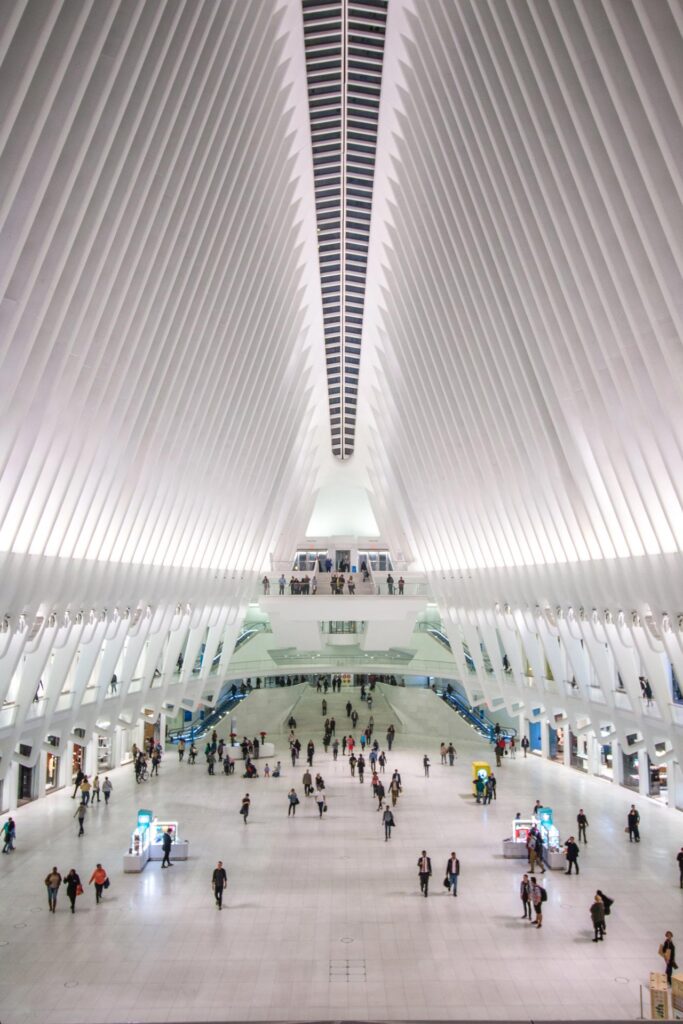
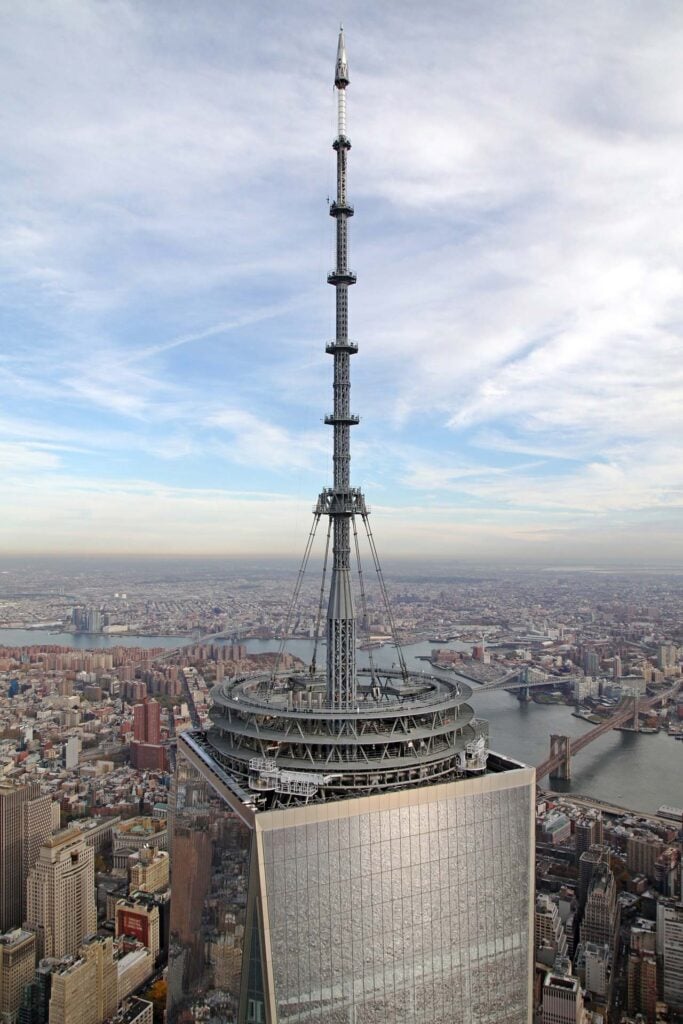
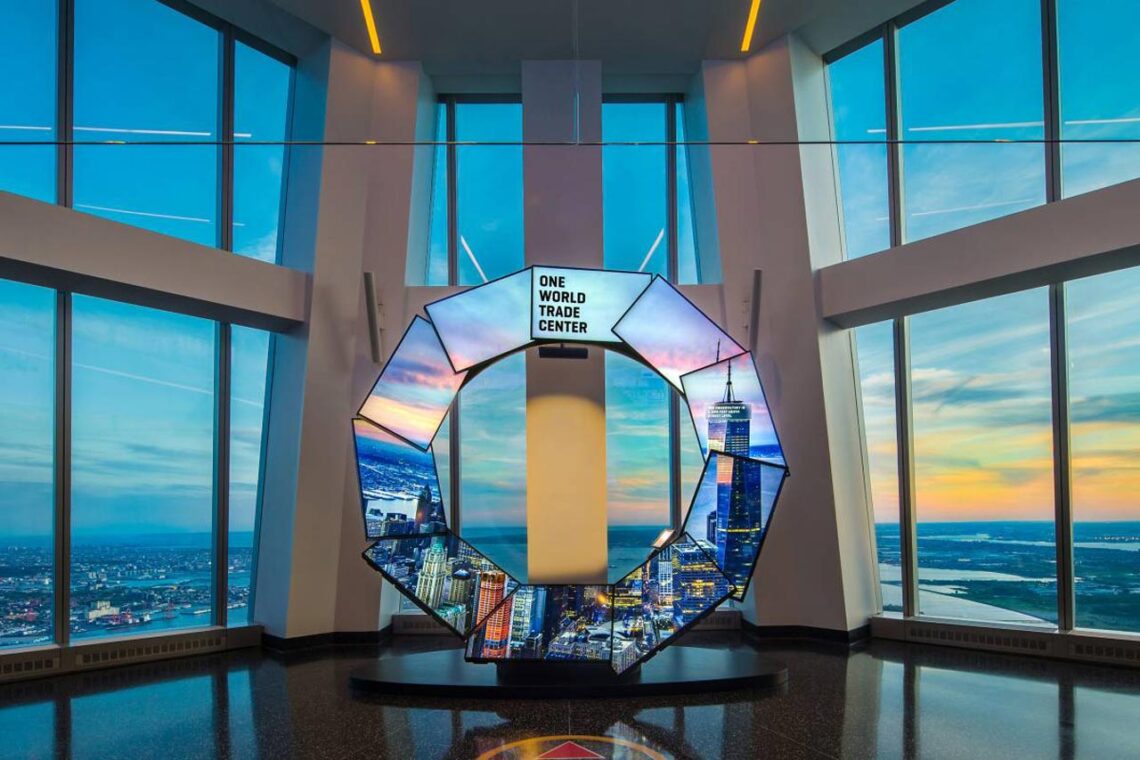
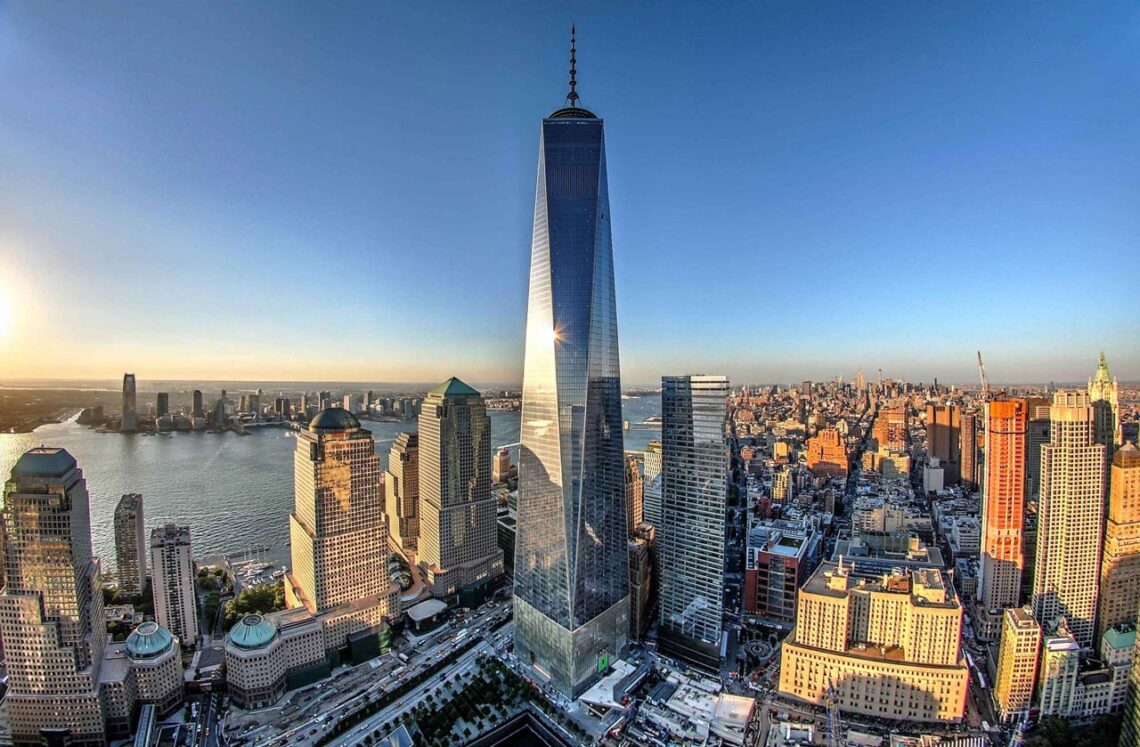
The architectural style of the One World Trade Center is contemporary and modern. It features a symmetrical shape, a glass curtain wall, and a tapered form that narrows as it rises. The building also has a parapet at 1,368 feet (417 meters), the same height as the original North Tower. The historical design influences of the One World Trade Center include the Empire State Building, the Chrysler Building, and the original World Trade Center. The building’s height of 1,776 feet (541 meters) refers to the year of the United States Declaration of Independence, while the building’s spire is inspired by the Statue of Liberty. The unique lighting and shading techniques of the One World Trade Center are based on the colorful glass that covers the facade. The glass reflects and refracts the sunlight, creating a dynamic and changing appearance throughout the day. The glass also reduces the need for artificial lighting and improves the energy efficiency of the building. The architectural trend or movement that the One World Trade Center represents is green architecture. The building incorporates various sustainable and environmental features, such as rainwater collection, recycled materials, natural ventilation, and renewable energy sources. The building has received the LEED Gold certification from the U.S. Green Building Council.
6. Pantheon
The Pantheon is a former Roman temple and, since AD 609, a Catholic church. It has a circular domed cella with a portico of large granite Corinthian columns. The Pantheon is located in the Piazza della Rotonda, a square in the historic center of Rome. It is near other famous monuments, such as the Trevi Fountain and the Spanish Steps. The Pantheon was built on the site of an earlier temple commissioned by Marcus Agrippa during the reign of Augustus (27 BC to AD 14). The Pantheon was built by the Roman emperor Hadrian, known for his extensive building projects throughout the empire. He also rebuilt the Temple of Venus, Roma, and the Castel Sant’Angelo in Rome.
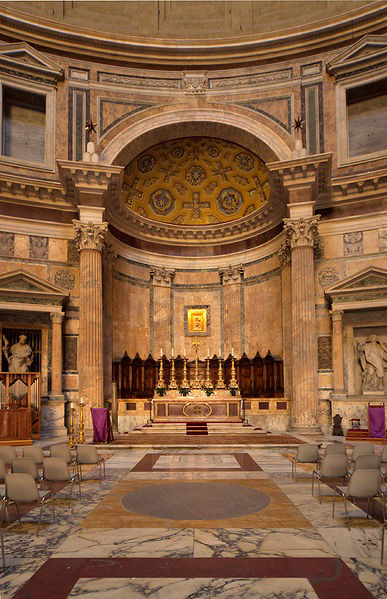
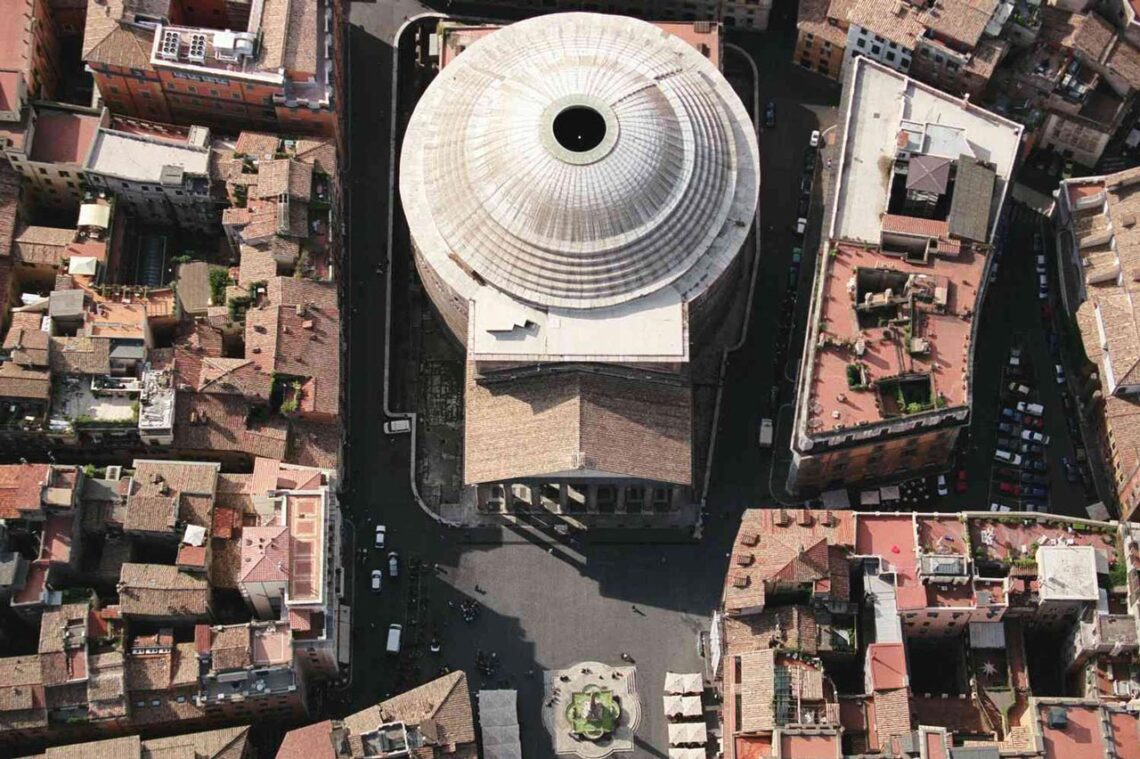
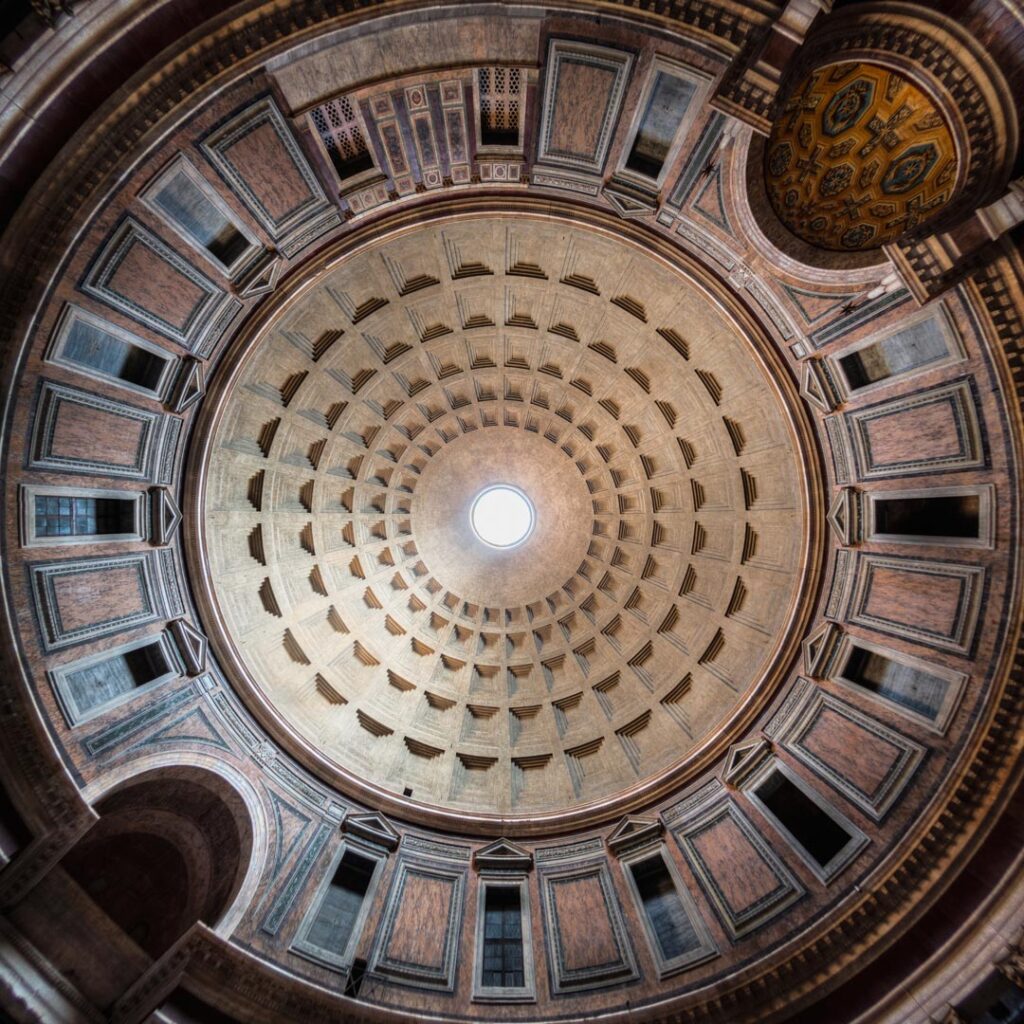
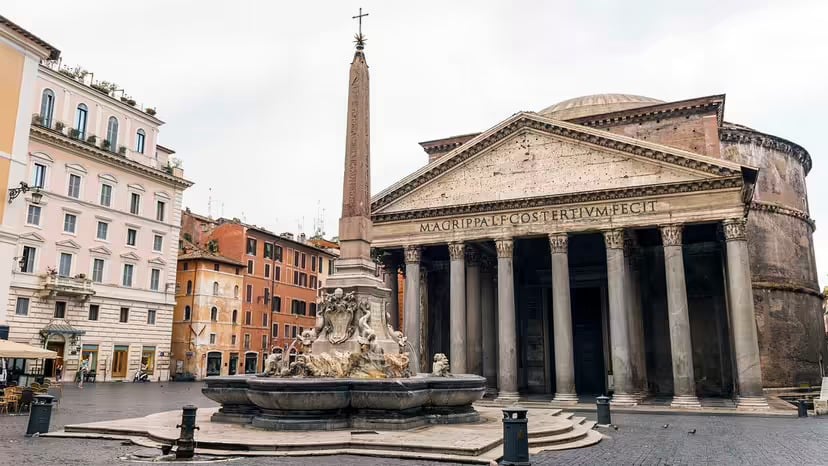
The architectural style of the Pantheon is mainly classical, with elements of Greek and Roman influence. The entrance has a triangular pediment supported by eight columns in the front and two groups of four behind. The dome is concrete and has a central opening (oculus) to the sky. The interior is decorated with marble, stucco, and bronze. The historical design influences of the Pantheon are diverse and complex. The entrance resembles the Greek temples, while the dome is a Roman innovation. The sun worship of the Egyptians or the Zoroastrians may have inspired the oculus. The dome may have been modeled after the circular temples of Baalbek or Palmyra. The Pantheon also incorporates elements from earlier Roman buildings, such as the Temple of Jupiter Capitolinus and the Baths of Agrippa.
The Pantheon’s unique lighting and shading techniques are based on the oculus and the dome. The oculus allows natural light to enter the building and dramatically changes illumination throughout the day. The dome has coffers (recessed panels) that reduce its weight and enhance its acoustics. The coffers also create patterns of light and shadow on the walls and floor of the rotunda. The architectural trend or movement that the Pantheon represents is the Roman imperial style, which combined the classical forms of Greece and Rome with the innovations and diversity of the empire. The Pantheon is a masterpiece of engineering and aesthetics and a symbol of the power and glory of Rome.
7. Colosseum
The Colosseum is a large amphitheater used for gladiatorial combats, animal hunts, executions, and other public spectacles in ancient Rome. Despite its age, it is the largest ancient amphitheater ever built and is still the largest standing amphitheater in the world. The Colosseum is located in the center of Rome, just east of the Roman Forum. It is a major tourist attraction and a symbol of Imperial Rome. The Colosseum was built during the reign of the Flavian emperors, who wanted to give a gift to the Roman people. The construction began under the emperor Vespasian in C.E. 72 and was completed in C.E. 80 under his successor and heir, Titus, while further modifications were made during the reign of Domitian. The Colosseum was built by thousands of slaves, prisoners of war, and free workers, who used materials such as travertine limestone, tuff, and concrete. It was also financed by the spoils of the Jewish War, which ended in C.E. 70 with the destruction of Jerusalem and the looting of the Temple.
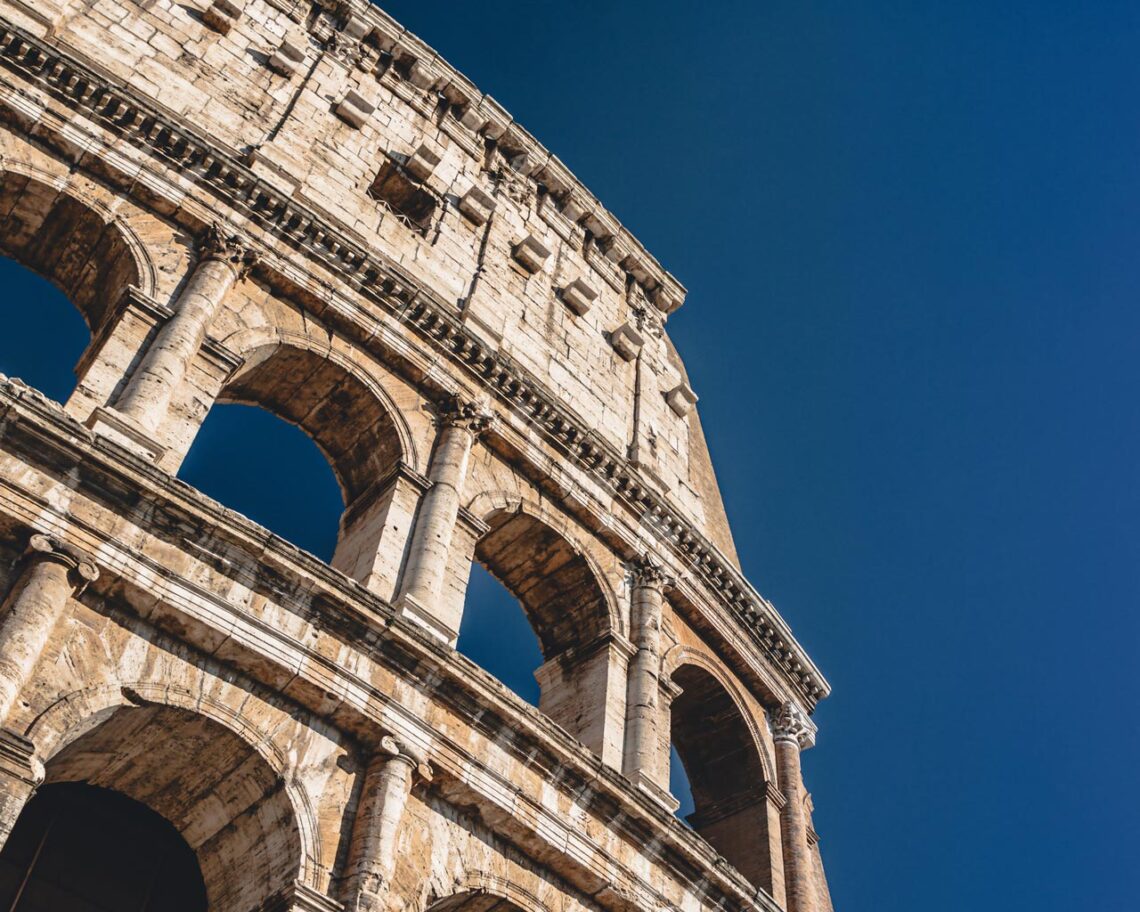
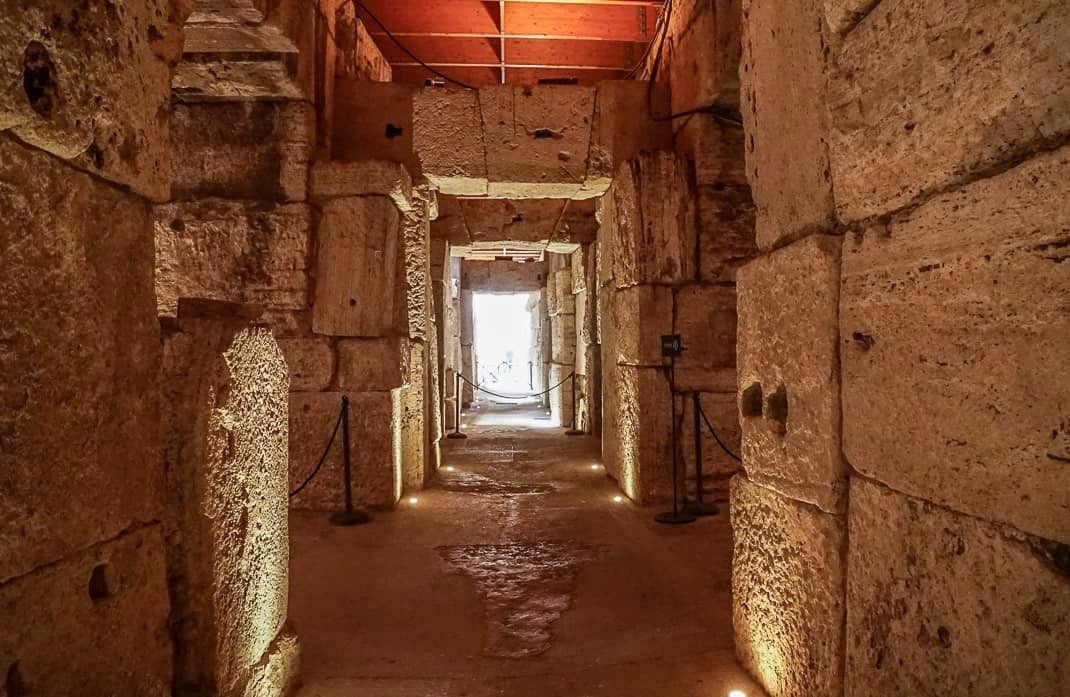
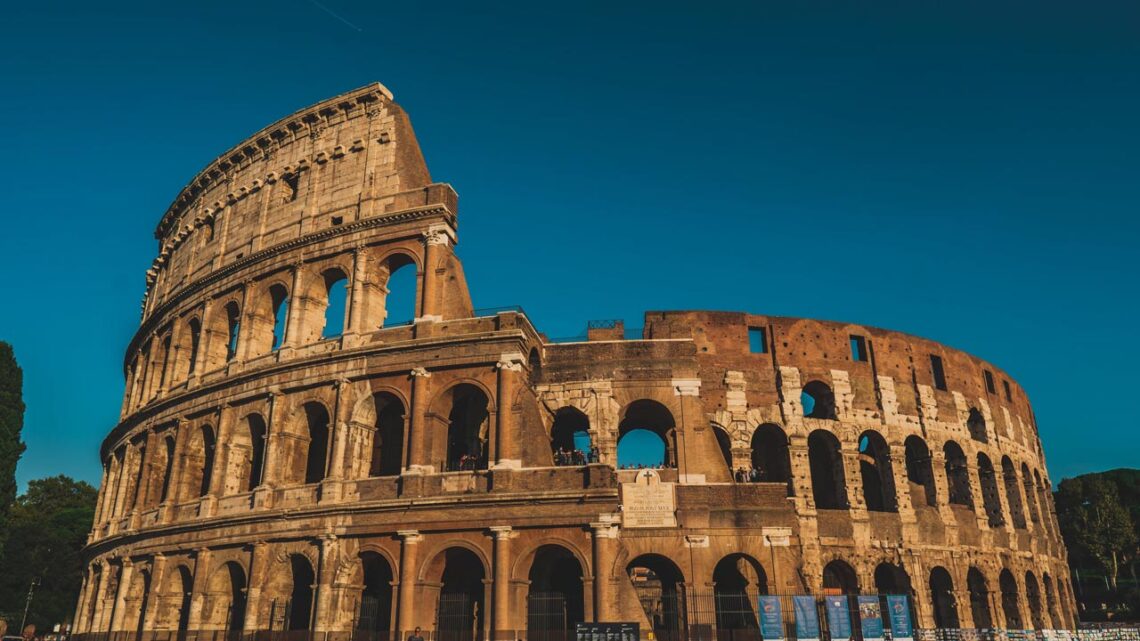
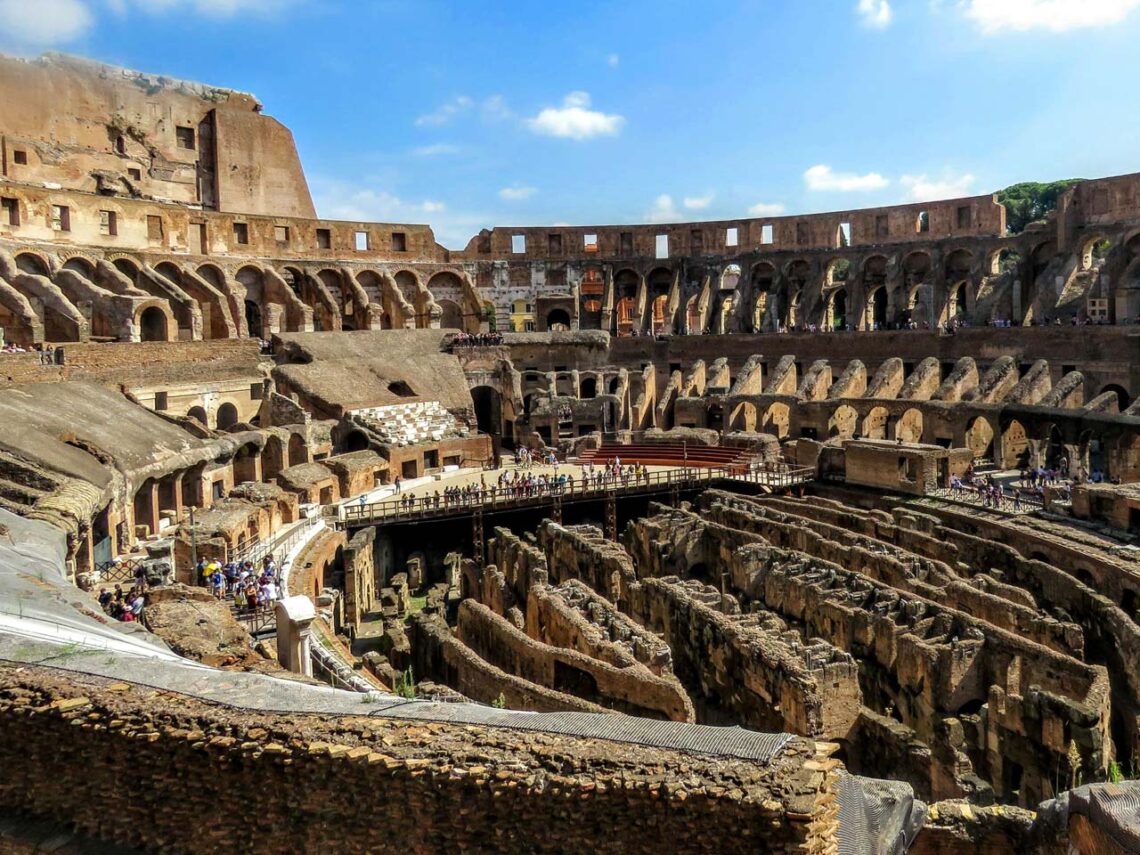
The architectural style of the Colosseum is mainly Roman, but it also incorporates some elements from Greek and Etruscan architecture. The Colosseum has an elliptical shape, with four levels of arcades supported by columns of different orders: Doric, Ionic, Corinthian, and Composite. It also has a complex system of vaults, arches, and corridors that create a sense of space and movement. The historical design influences of the Colosseum are visible in its resemblance to other amphitheaters in the Roman Empire, such as the Amphitheater of Pompeii and the Flavian Amphitheater in Pozzuoli. The Colosseum also draws inspiration from the Theater of Marcellus and the Circus Maximus, two other entertainment venues in Rome. It also reflects the political and cultural ambitions of the Flavian dynasty, who wanted to impress the public with their power and generosity.
The unique lighting and shading techniques of the Colosseum are related to its orientation and structure. It faces southeast, allowing it to receive the maximum sunlight during the day. The Colosseum also has a retractable awning, called the velarium, that could be extended or retracted by ropes and pulleys to provide shade and ventilation. It also has a series of windows and openings that contrast light and shadow, enhancing the visual effect of the performances. The architectural trend or movement that the Colosseum represents is Roman imperial architecture, which was characterized by monumental scale, engineering innovation, and artistic expression. It exemplifies the Roman mastery of concrete construction, which allowed them to create complex and durable structures that could accommodate large crowds and diverse functions. The Colosseum also showcases the Roman aesthetic of combining different architectural styles and motifs to create a harmonious and impressive whole.
8. Taj Mahal
The Taj Mahal is a white marble mausoleum that houses the tombs of the Mughal emperor Shah Jahan and his wife Mumtaz Mahal. It is one of the most famous monuments in the world and a symbol of India’s rich history and culture. The Taj Mahal is located on the right bank of the river Yamuna in Agra, Uttar Pradesh, India. It is 124 miles (200 kilometers) from the capital city of New Delhi and attracts millions of visitors every year. The Taj Mahal was built between 1632 and 1653 by Shah Jahan, the fifth Mughal emperor, who ruled from 1628 to 1658. He commissioned the mausoleum in memory of his beloved wife, Mumtaz Mahal, who died in 1631 while giving birth to their 14th child. The construction project employed 20,000 artisans and craftsmen under the supervision of a board of architects led by Ustad Ahmad Lahori.
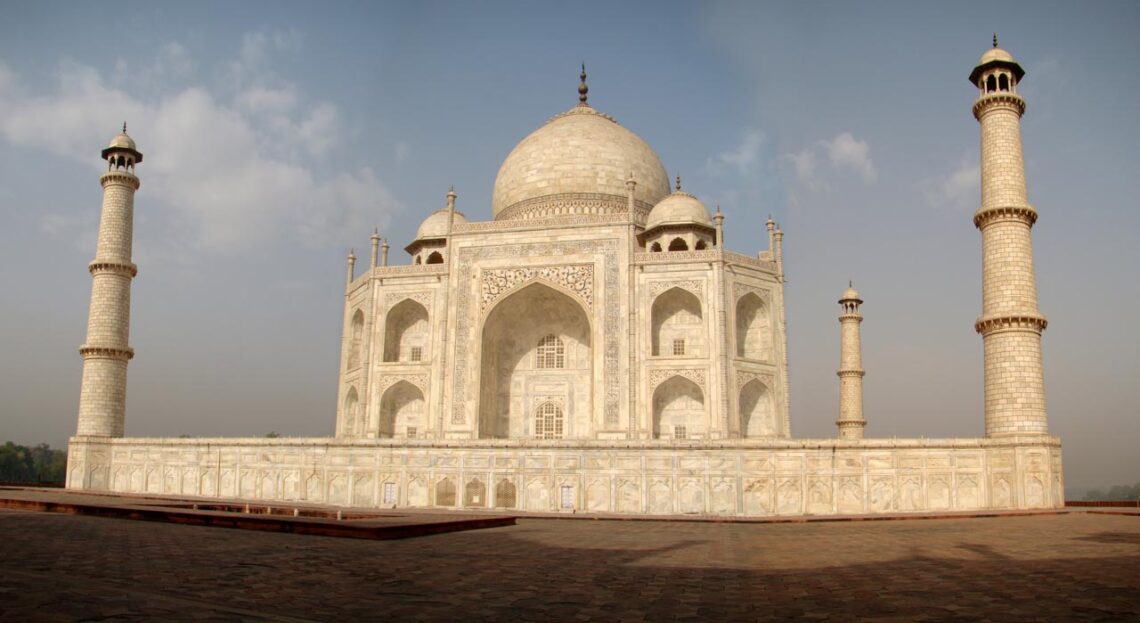
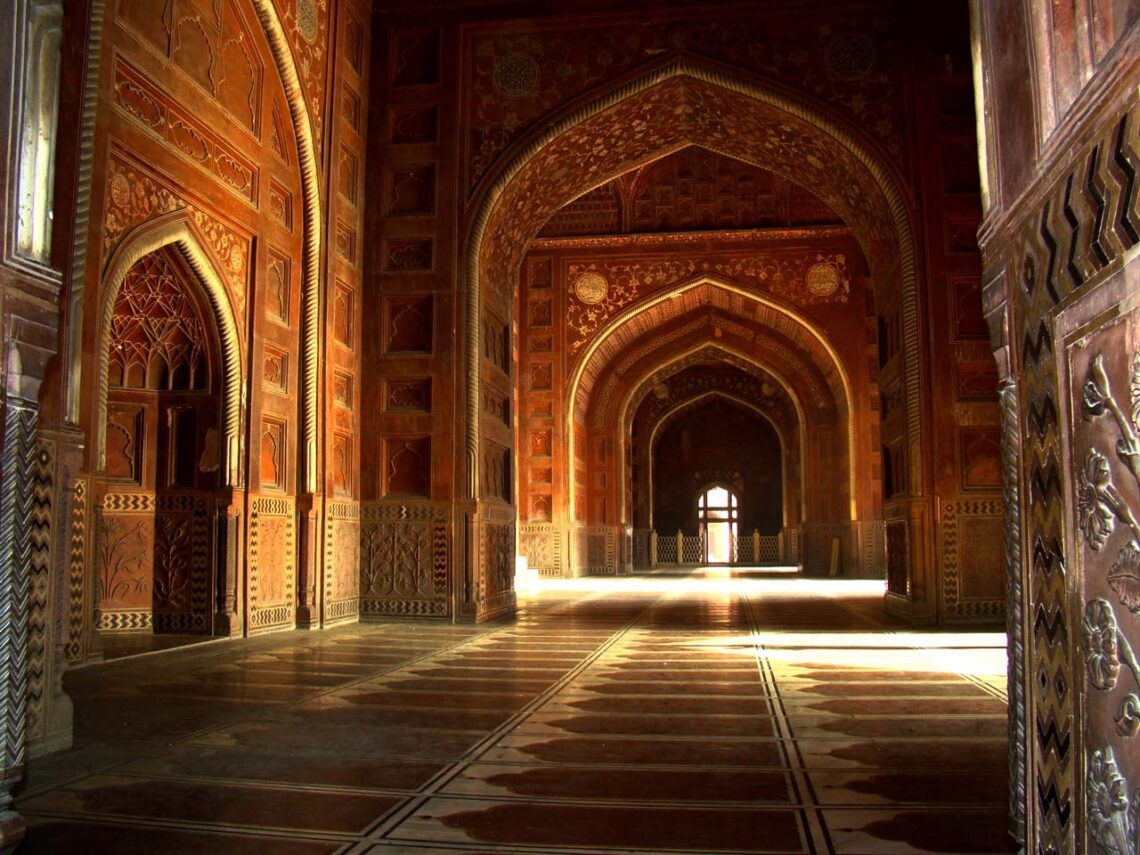
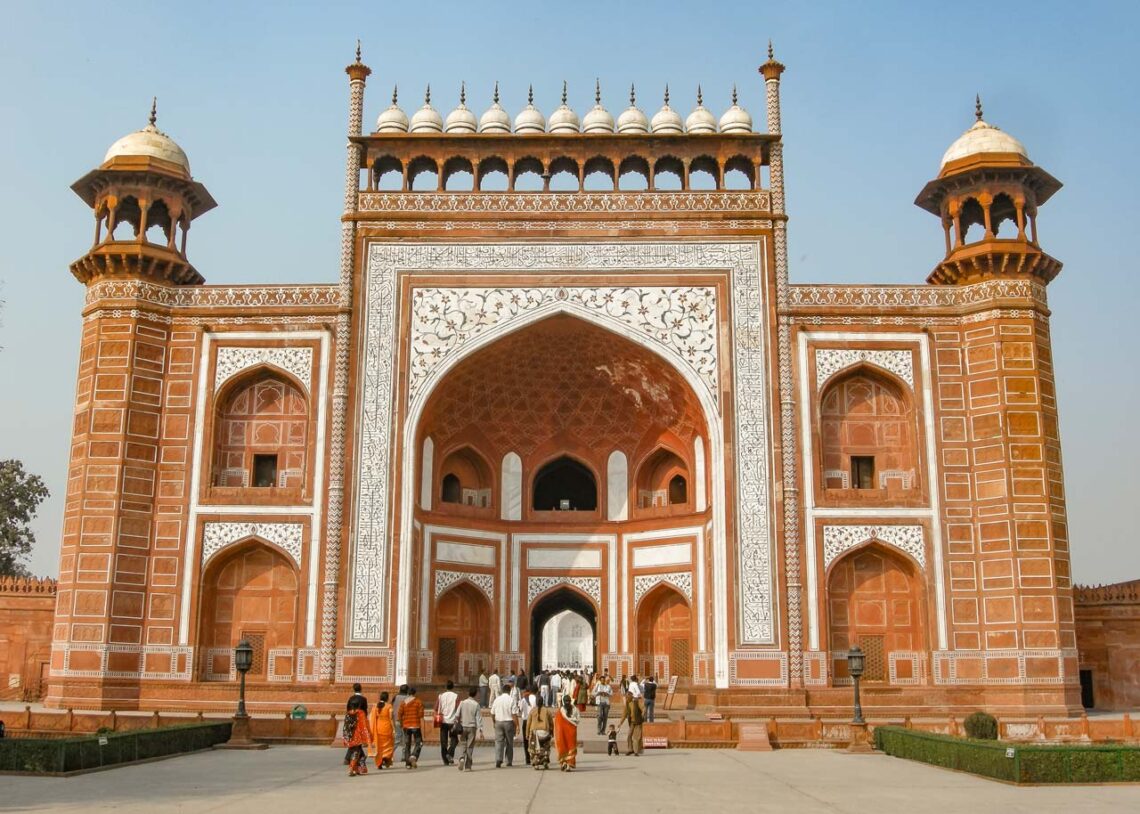
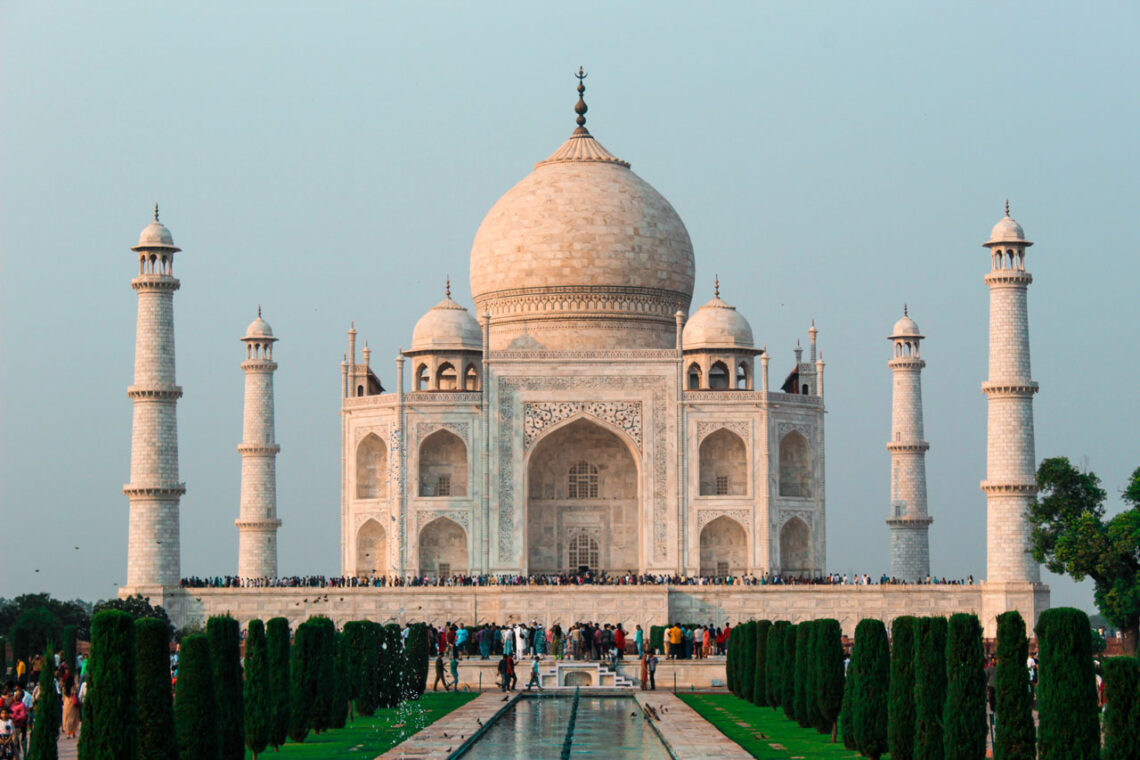
The Taj Mahal is considered the finest example of Mughal architecture, blending Indian, Persian, and Islamic styles. The main features of the Taj Mahal are the perfect octagonal tomb chamber, the four minarets at the corners of the plinth, the dome that rises to a height of 240 feet (73 meters), the inlay work of precious and semi-precious stones, and the calligraphy of verses from the Quran. The Taj Mahal reflects the historical and cultural influences of the Mughal era, which spanned from the 16th to the 18th century. The Mughals were descendants of the Mongols and the Turks, who conquered and ruled most of India. They brought their artistic and architectural traditions, which were influenced by Persian, Central Asian, and Islamic cultures. The Taj Mahal also incorporates elements from the local Indian styles, such as the lotus motif, the floral patterns, and the red sandstone.
The Taj Mahal is famous for its unique lighting and shading effects, which create a sense of harmony and beauty. The white marble changes its color and appearance depending on the time of the day and the year’s season. It glows softly in the morning, shines brightly in the afternoon, turns pinkish in the evening, and sparkles in the moonlight. The dome and the minarets also cast different shadows on the plinth and the garden, creating a dynamic and symmetrical contrast. The Taj Mahal represents the architectural trend or movement of the Mughal period, characterized by the fusion of different styles and cultures, geometric and floral motifs, the emphasis on symmetry and balance, and the expression of love and devotion. The Taj Mahal is regarded as the masterpiece of this movement and one of the world’s wonders.
9. Sistine Chapel
The Sistine Chapel is a chapel in the Vatican City, the pope’s official residence. It is famous for its Renaissance frescoes, especially the ones by Michelangelo on the ceiling and the west wall behind the altar. The Sistine Chapel is in the Apostolic Palace northeast of St. Peter’s Square in Vatican City. The Sistine Chapel was built between 1473 and 1481 by the architect Giovanni dei Dolci for Pope Sixtus IV, who gave the chapel its name. The Sistine Chapel was built by a team of craftsmen, artists, and engineers supervised by the architect Giovanni dei Dolci. Some of the most famous artists who worked on the chapel were Domenico Ghirlandaio, Cosimo Rosselli, Sandro Botticelli, Pietro Perugino, and Michelangelo.
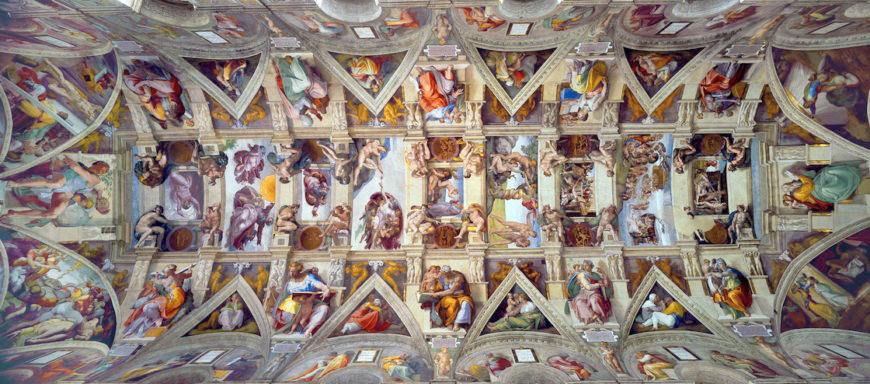
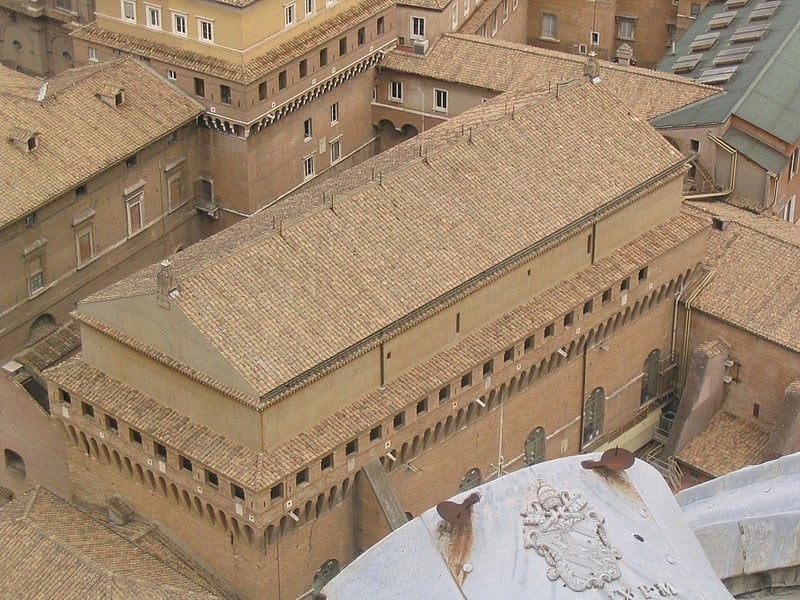
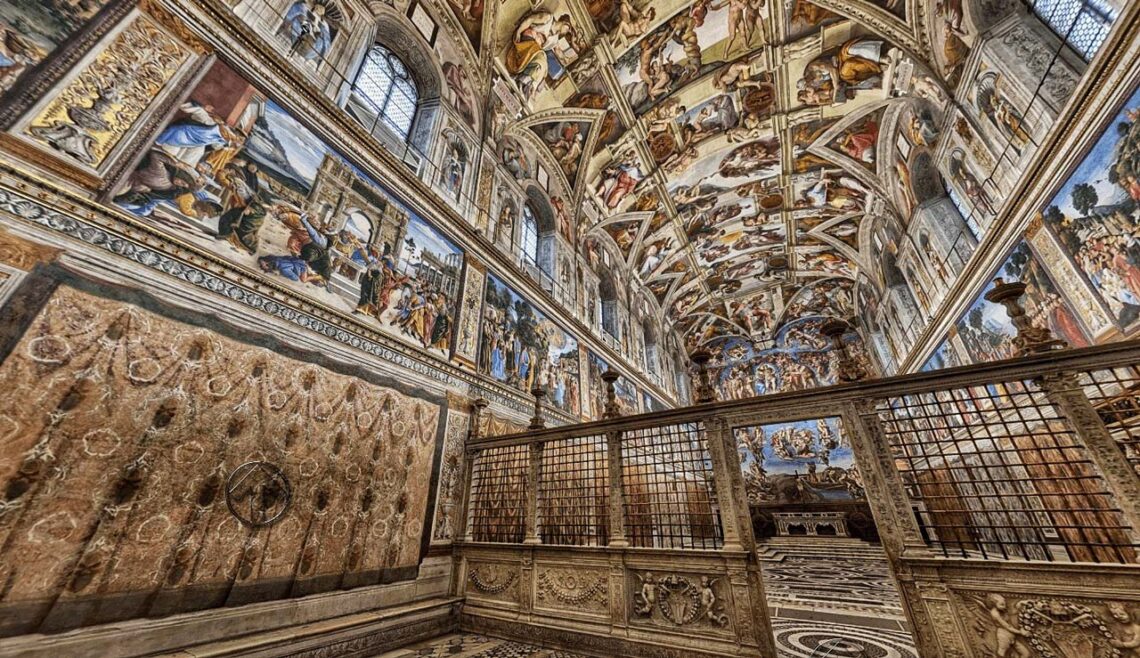
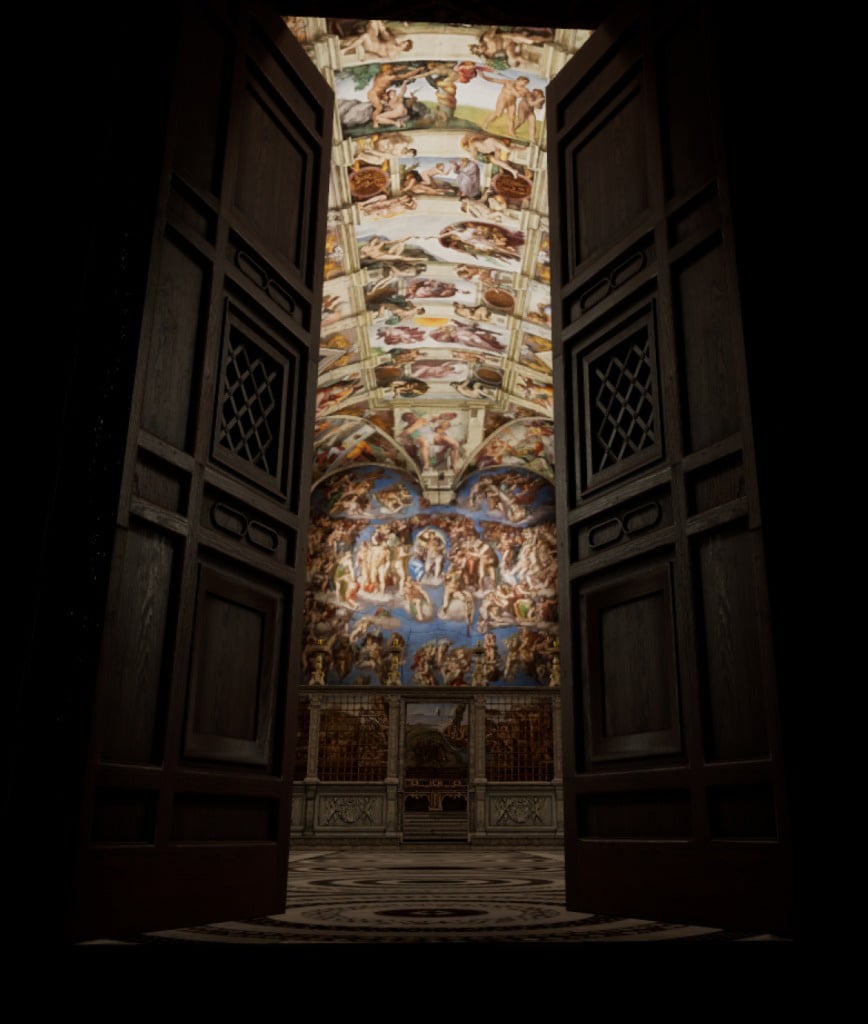
The architectural style of the Sistine Chapel is mainly influenced by the Early Renaissance, characterized by symmetry, proportion, harmony, and classical elements. The chapel has a rectangular plan with a barrel-vaulted ceiling and six arched windows on the two long walls. The walls are divided into three horizontal zones: the lower one with painted drapery, the middle one with frescoes of the life of Christ and Moses, and the upper one with portraits of the popes. The historical design influences of the Sistine Chapel are mainly from the ancient Roman and Byzantine art and architecture revived and adapted by the Renaissance artists. The chapel’s ceiling, for example, was inspired by the Roman coffered ceilings, while Byzantine mosaics and icons influenced the frescoes of the Last Judgment and the Creation of Adam.
The unique lighting and shading techniques of the Sistine Chapel are mainly the result of Michelangelo’s mastery of painting, which he used to create a realistic and dramatic effect on the ceiling and the wall. He used chiaroscuro, contrasting light and dark, to create depth and volume. He also used foreshortening, the distortion of perspective, to create a sense of movement and dynamism. The architectural trend or movement that the Sistine Chapel represents is the High Renaissance, the peak of artistic achievement in the 16th century. The High Renaissance was marked by the perfection of form, balance, and harmony and the expression of humanism and spirituality. The Sistine Chapel is considered one of the greatest examples of High Renaissance art and architecture, showcasing the genius and innovation of Michelangelo and other artists.
10. Westminster Abbey
The Westminster Abbey is an Anglican church in Westminster, London, England. It is a royal peculiar, which means it is directly responsible to the sovereign. It has been the site of coronations, royal weddings, and burials for many English and British monarchs. The Westminster Abbey is at 20 Dean’s Yard, London SW1P 3PA. It is near the Palace of Westminster and St. Margaret’s Church, also part of the UNESCO World Heritage site. The Westminster Abbey was founded around 960 as a Benedictine monastery. The first grand building was constructed in the 1060s under King Edward the Confessor and built by many people over the years. Some of the notable builders include Henry III, who commissioned the Gothic church; Henry VII, who added the Perpendicular chapel at the east end; Sir Christopher Wren, who designed the western towers; Nicholas Hawksmoor, who completed the towers; and Sir George Gilbert Scott, who restored the church in the 19th century.
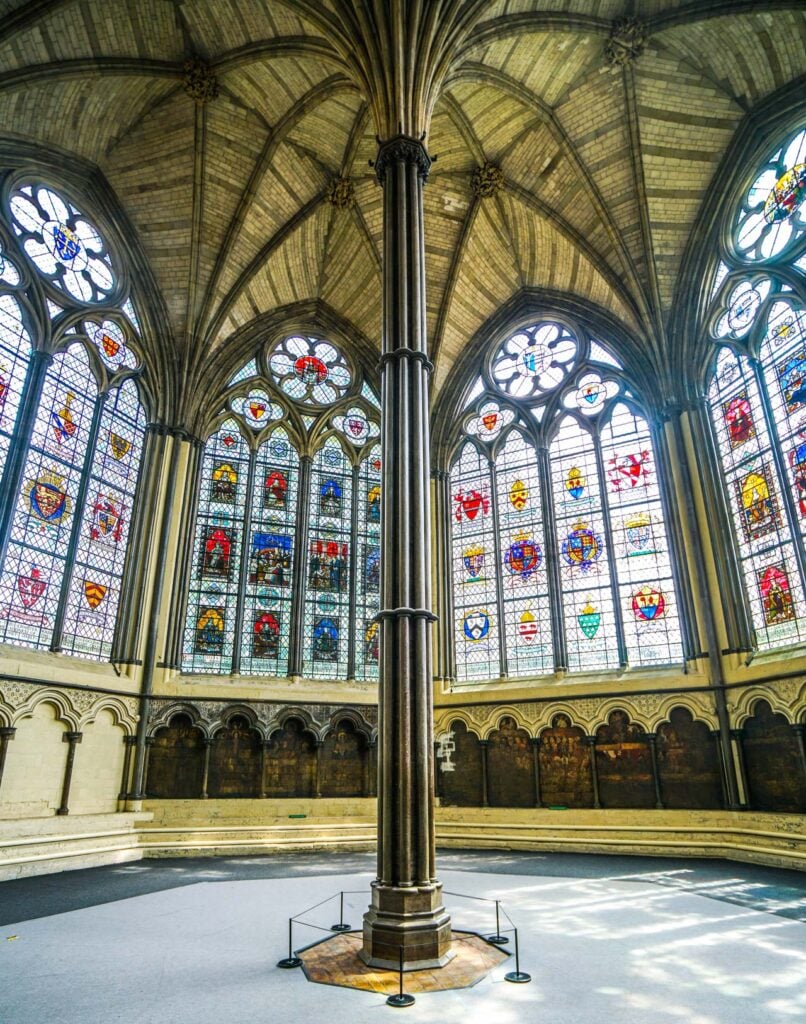
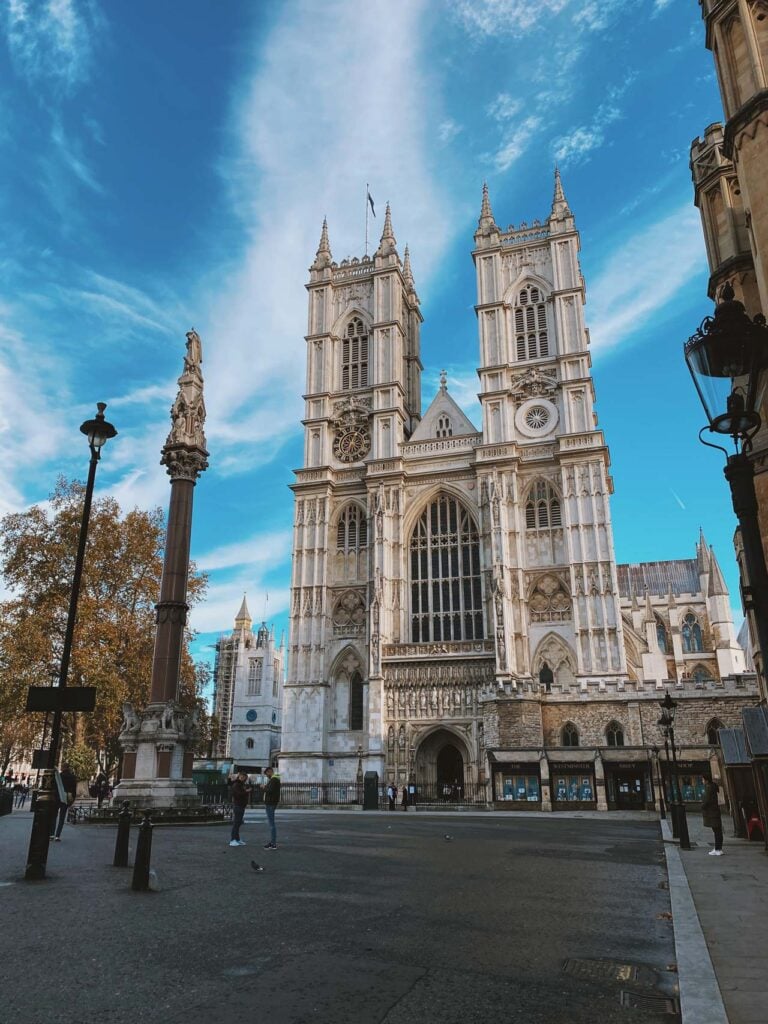
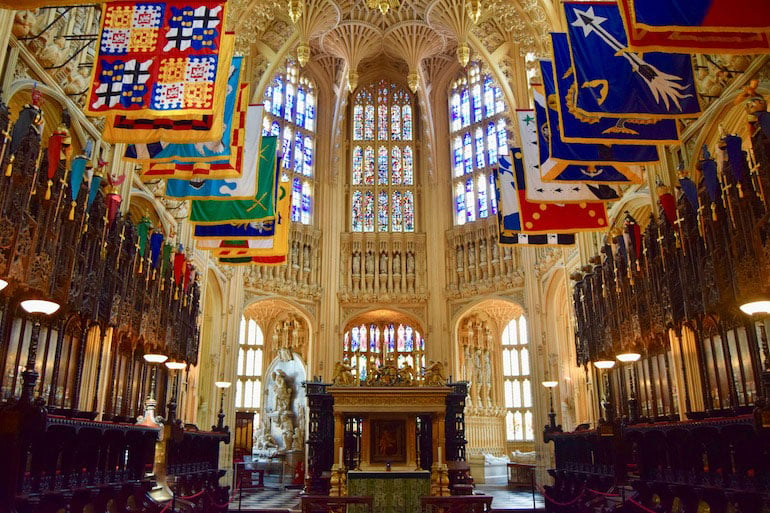
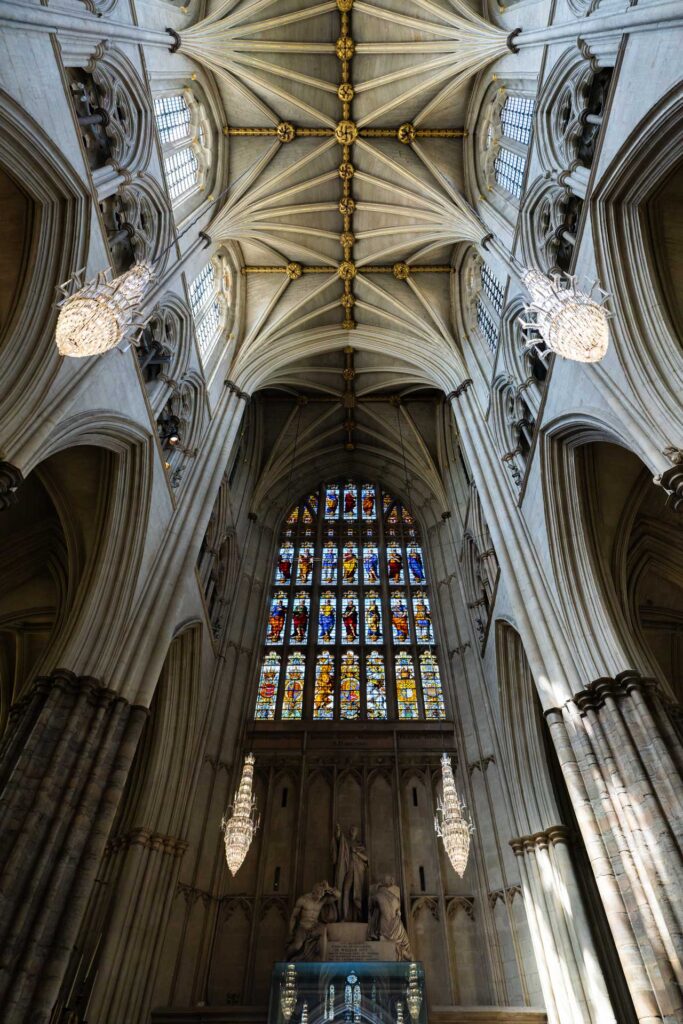
The architectural style that is most prominent in Westminster Abbey is Gothic, which is characterized by pointed arches, ribbed vaults, flying buttresses, and stained glass windows. The Gothic style originated in France and spread to England in the 12th century. The Westminster Abbey is one of England’s finest examples of Gothic architecture, especially the Henry VII Chapel, considered a masterpiece of Perpendicular Gothic. The historical design influences in the Westminster Abbey are mainly from the Romanesque, Gothic, and Baroque periods. The Romanesque style, which preceded the Gothic, can be seen in the round arches and thick walls of the nave and transepts. The Gothic style, which dominated the medieval period, can be seen in the choir, the chapels, the cloisters, and the vaulted ceilings. The Baroque style, which emerged in the 17th century, can be seen in the western towers, the lantern, and the monuments.
The unique lighting and shading techniques in Westminster Abbey are achieved by using stained glass windows, which create colorful patterns and effects on the walls and floors. The windows also depict scenes and figures from the Bible, history, and literature. The lighting and shading also vary depending on the time of the day and the season, creating different moods and atmospheres in the church. The architectural trend or movement that the Westminster Abbey represents is the Gothic Revival, a 19th-century movement that sought to revive the medieval Gothic style in architecture and art. The Gothic Revival was inspired by the Romanticism and nationalism of the time and the religious and historical associations of the Gothic style. The Westminster Abbey was one of the major sites of the Gothic Revival, as it underwent extensive restoration and decoration by Sir George Gilbert Scott and other architects. The Gothic Revival also influenced the design of many other churches, cathedrals, and buildings in Britain and worldwide.
11. Burj Khalifa
The Burj Khalifa is a mixed-use skyscraper that is the world’s tallest building, according to all three main criteria by which such buildings are judged: height to architectural top, height to the highest occupied floor, and height to tip. The Burj Khalifa is located in a new Downtown Dubai development next to Dubai Mall. It has a dedicated metro station on the Red Line and several bus routes that stop nearby. The construction of the Burj Khalifa began in 2004 and was completed in 2009. It was formally opened on January 4, 2010, with a total project cost estimated at $1.5 billion (€1.37 billion, £1.31 billion ). The Burj Khalifa was designed by the American architect Adrian Smith, who worked for Skidmore, Owings & Merrill (SOM). The main contractor was Samsung C&T, a South Korean company. The building was named in honor of the former president of the United Arab Emirates, Khalifa bin Zayed Al Nahyan.
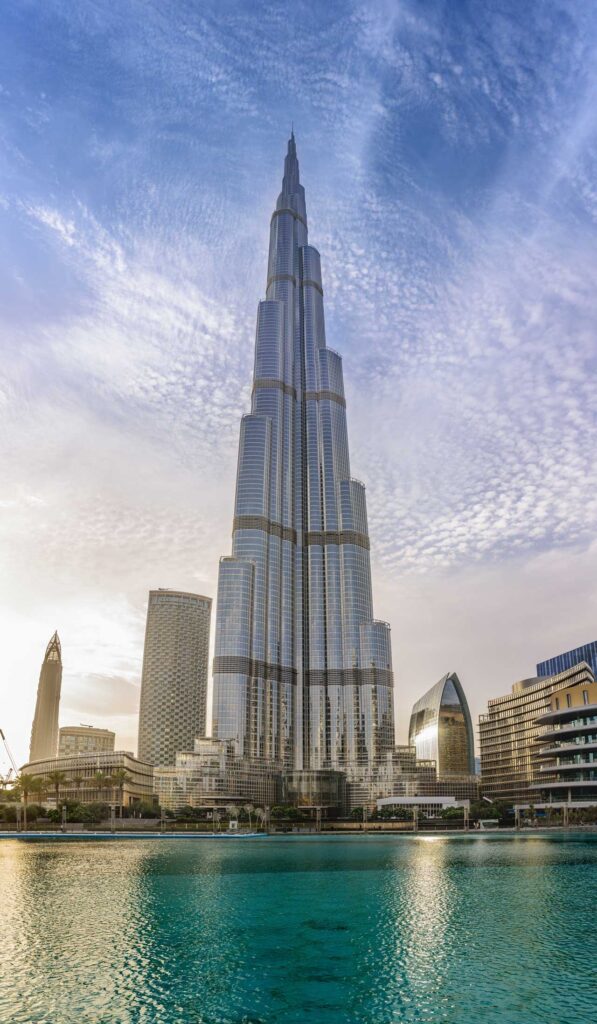
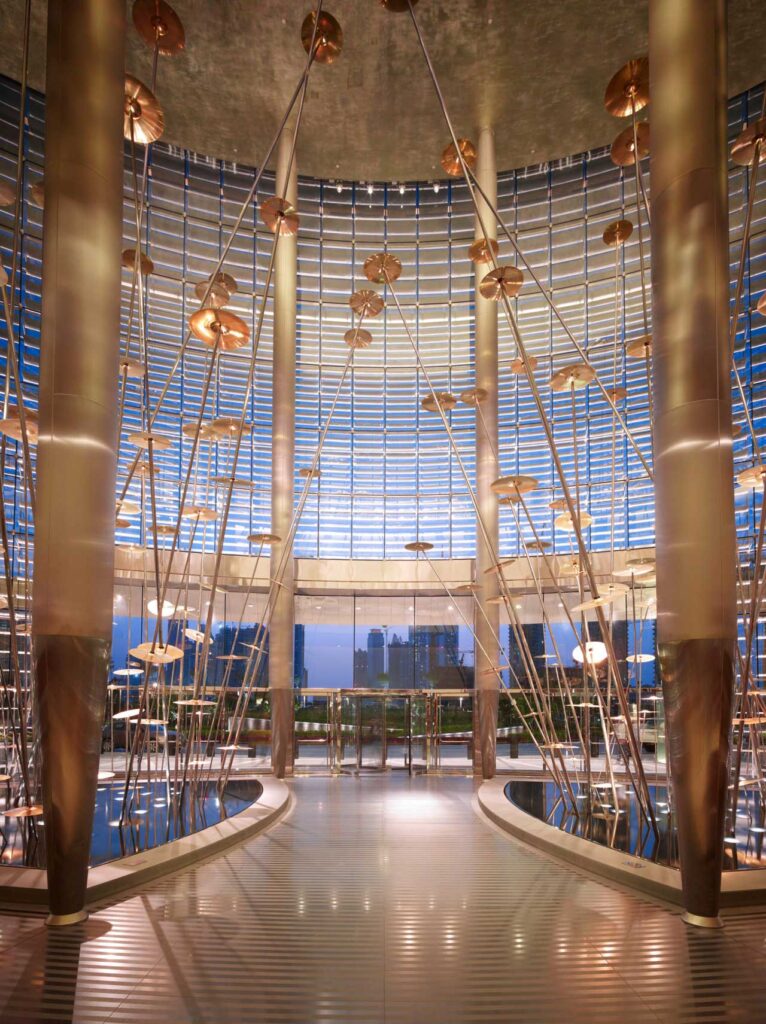
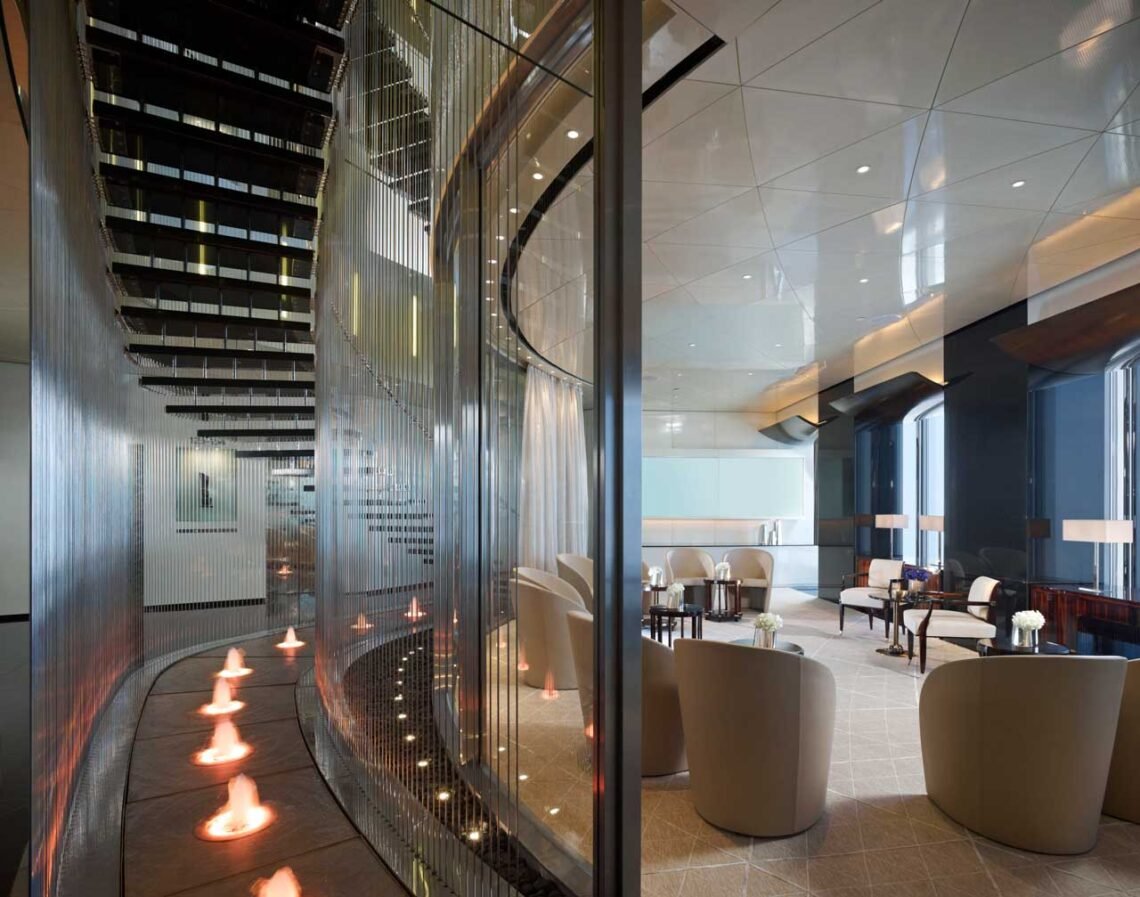
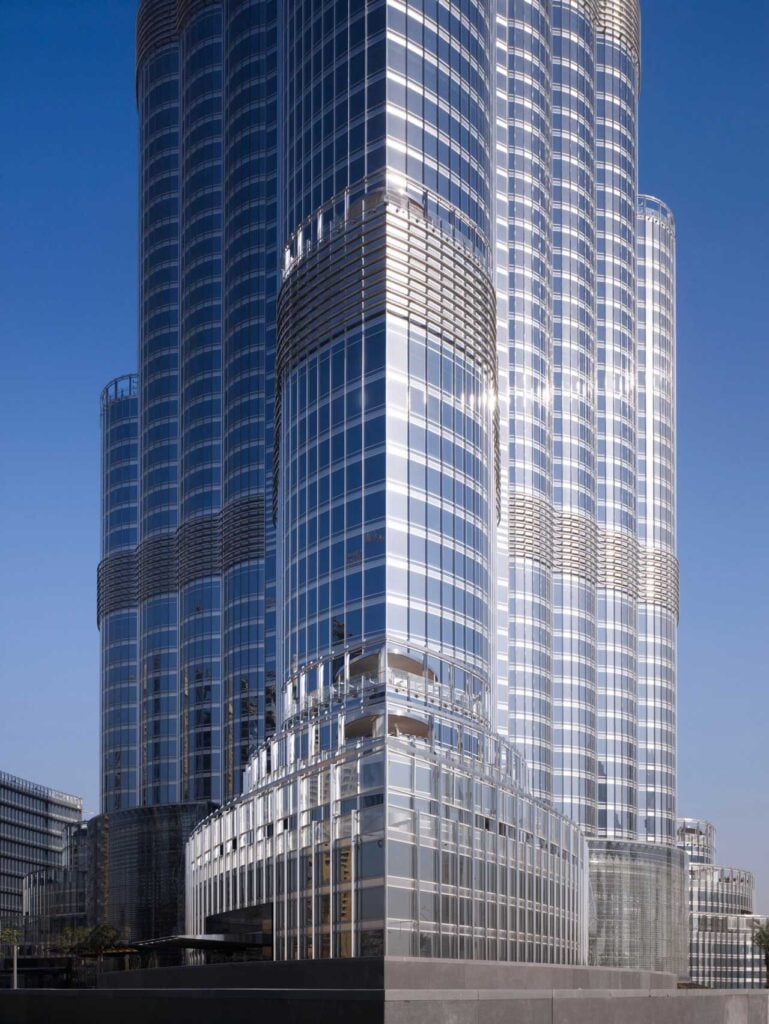
The Burj Khalifa’s architectural style is neo-futurism, characterized by dynamic and expressive forms, innovative materials, and advanced technology. The building is slender and tapered, with a central core and three wings supporting the structure and reducing wind forces. The historical design influences of the Burj Khalifa include Islamic architecture, especially the onion-dome design frequently found across the region. The Hymenocallis flower, a desert plant native to the Arabian Peninsula, inspires the building, while the geometric patterns and motifs on the exterior and interior of the building reflect the cultural heritage of the UAE.
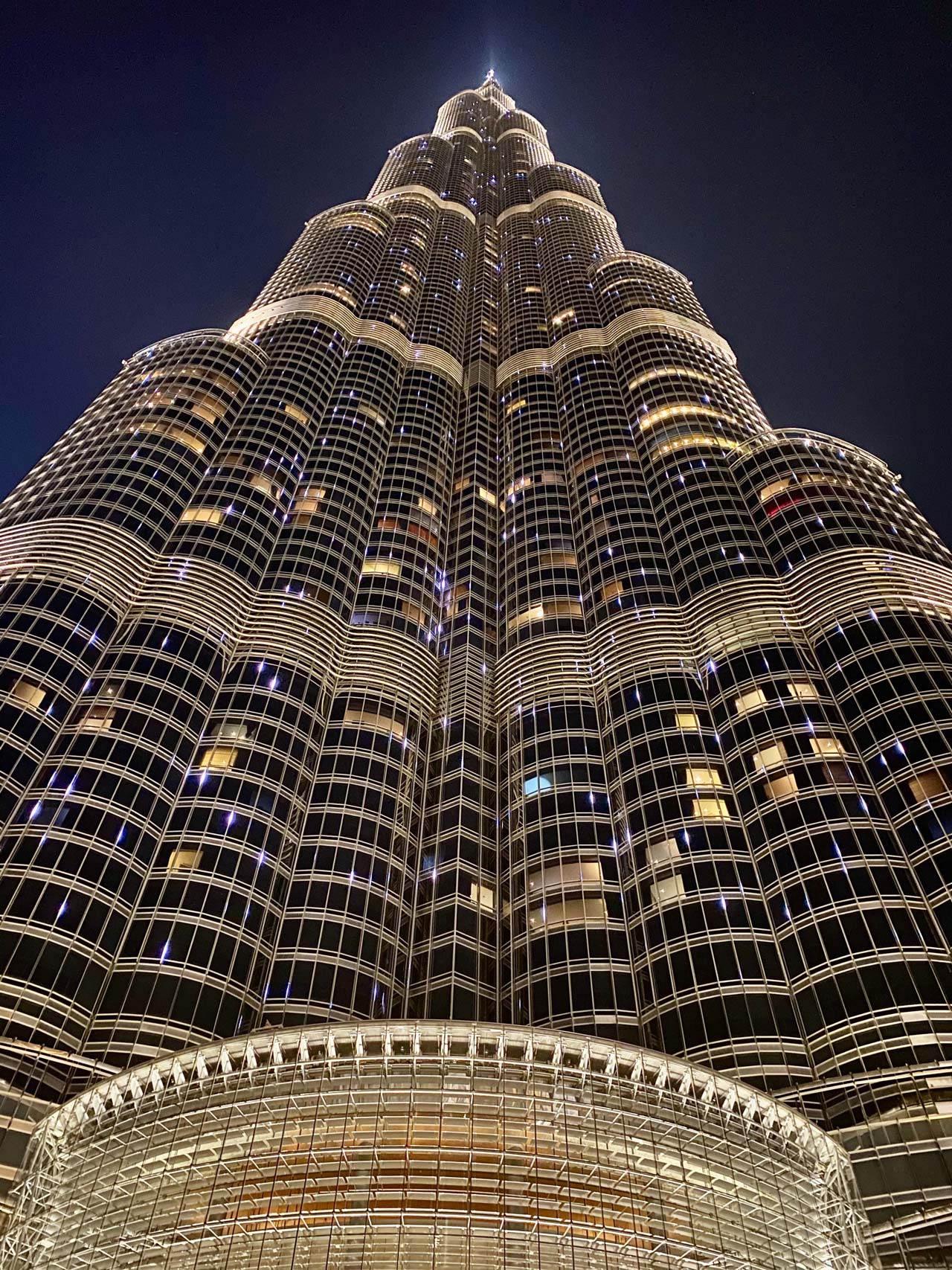
The unique lighting and shading techniques of the Burj Khalifa include using high-performance glazing, which reduces heat gain and glare, and installing automated blinds, which adjust according to the sun’s position. The building also features a sophisticated lighting system, which creates dynamic effects and displays on special occasions, such as the New Year’s Eve fireworks show. The architectural trend or movement that the Burj Khalifa represents is the quest for height and prestige, which has been a driving force in skyscraper design since the late 19th century. The building symbolizes the ambition and vision of Dubai, as well as its diversification from an oil-based economy to a global hub of tourism, trade, and innovation.
12. Parthenon
The Parthenon is a former temple dedicated to the goddess Athena, the patron of Athens. It is considered one of the high points of classical Greek art and a symbol of ancient Greece, democracy, and Western civilization. The Parthenon is located on the Acropolis, a hill that overlooks the city of Athens. The Acropolis is also home to ancient monuments like the Erechtheion, the Propylaea, and the Temple of Athena Nike. The Parthenon was built in the mid-5th century BCE, during the golden age of Athens, under the leadership of Pericles. The construction started in 447 BCE and was completed in 438 BCE, while the decoration continued until 432 BCE. The Parthenon was designed by the architects Iktinos and Callicrates, and the sculptor Phidias was in charge of the artistic decoration. The temple was built with Pentelic marble, a white and fine-grained stone quarried from the nearby Mount Pentelicus.
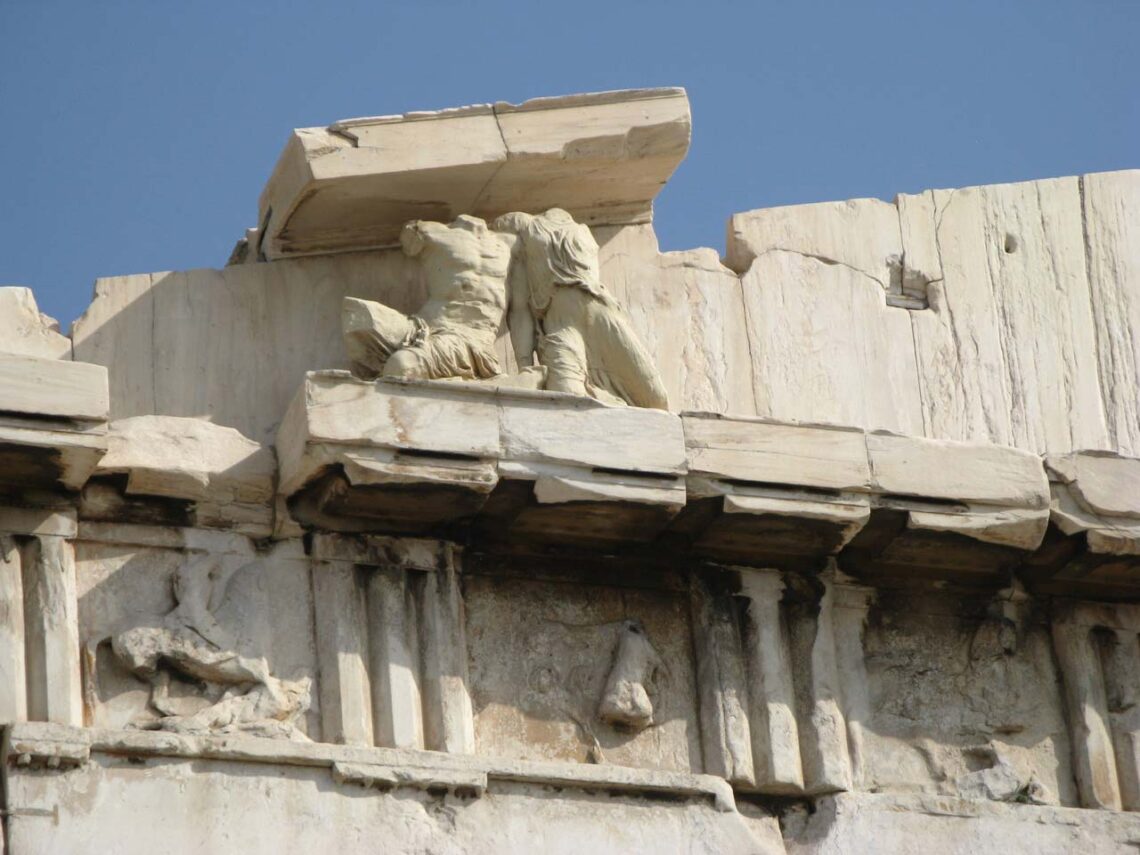
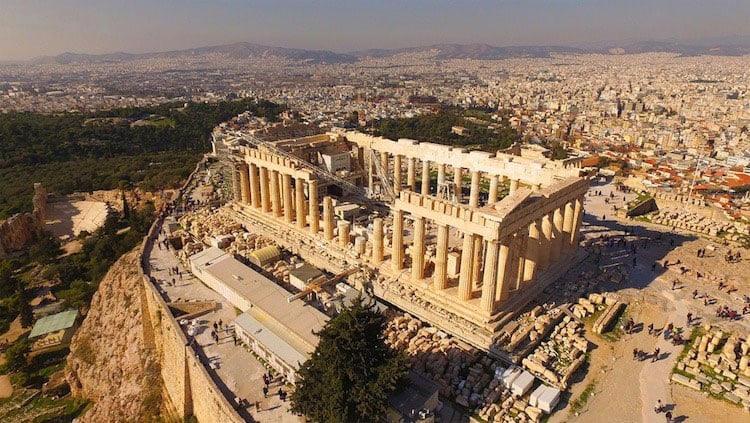
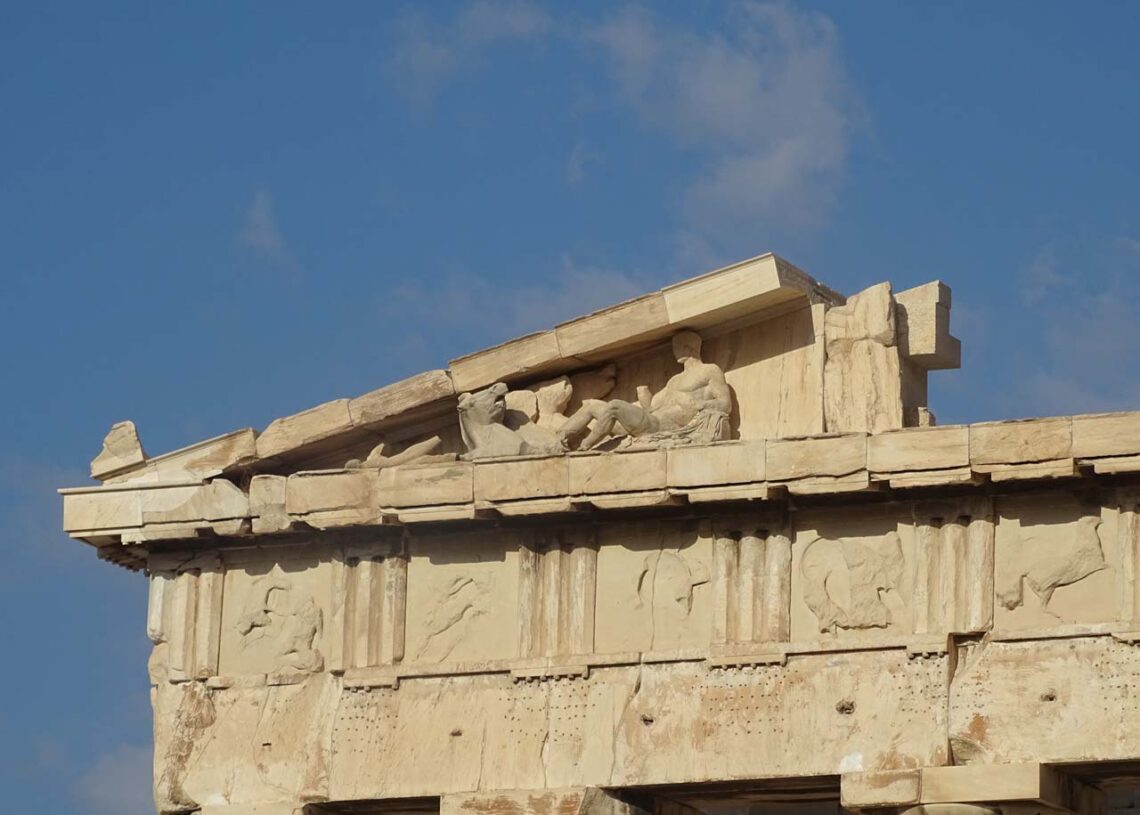
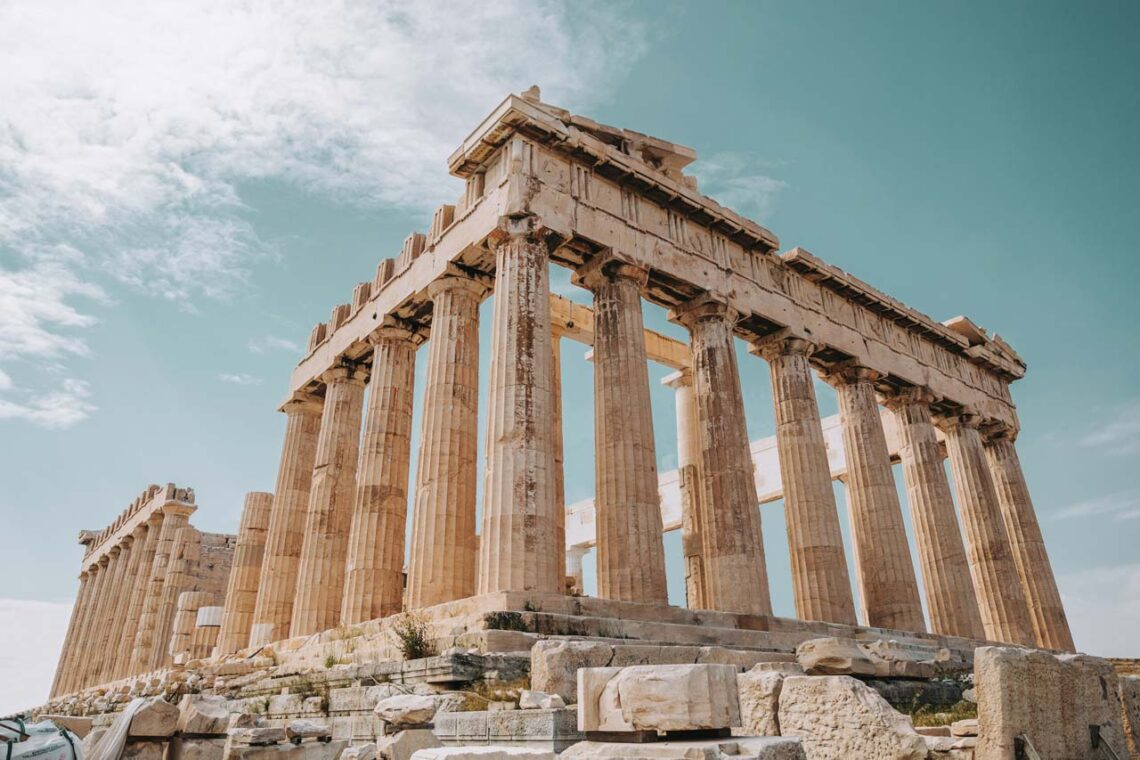
The Parthenon represents the classical style of Greek architecture, also known as the Doric order. Simple and elegant proportions, geometric harmony, and a sense of balance and symmetry characterize the Doric order. It is widely regarded as the culmination and the masterpiece of the Doric order. The Parthenon reflects ancient Greece’s historical and cultural influences, especially the ideals of democracy, rationalism, and humanism. The temple was a tribute to Athena, the goddess of wisdom and war, who embodied the values of the Athenian polis. The decoration of the Parthenon depicted scenes from Greek mythology, history, and religion, such as the birth of Athena, the battle of the gods and the giants, the Panathenaic procession, and the metopes of the labors of Heracles. The Parthenon exhibits unique lighting and shading techniques that enhance its aesthetic appeal and create optical illusions. The temple’s columns are slightly curved and tapered, creating a swelling effect that makes them appear more slender and dynamic. The stylobate, or the platform on which the columns rest, is also slightly convex, creating a subtle curvature that counteracts the visual impression of sagging. The corners of the temple are also slightly elevated, creating a contrast between light and shadow that emphasizes the three-dimensional shape of the building.
13. Lincoln Center
The Lincoln Center is a complex of buildings that host various performing arts organizations, such as the New York Philharmonic, the Metropolitan Opera, the New York City Ballet, and the Juilliard School. It has thirty indoor and outdoor facilities and attracts 5 million visitors annually. The Lincoln Center is in the Lincoln Square neighborhood on the Upper West Side of Manhattan, New York City. It covers an area of 16.3 hectares (40 acres) and is bounded by Columbus Avenue, Amsterdam Avenue, West 62nd Street, and West 66th Street. The Lincoln Center was built between 1955 and 1969 as part of the Lincoln Square Renewal Project, a major urban renewal initiative led by philanthropist John D. Rockefeller III and urban planner Robert Moses. The center’s first three buildings, David Geffen Hall, David H. Koch Theater, and the Metropolitan Opera House, were opened in 1962, 1964, and 1966. The Lincoln Center was designed by a consortium of respected architects responsible for a different complex part. Some notable architects involved were Wallace Harrison, Max Abramovitz, Philip Johnson, Eero Saarinen, Pietro Belluschi, Gordon Bunshaft, and Marcel Breuer.
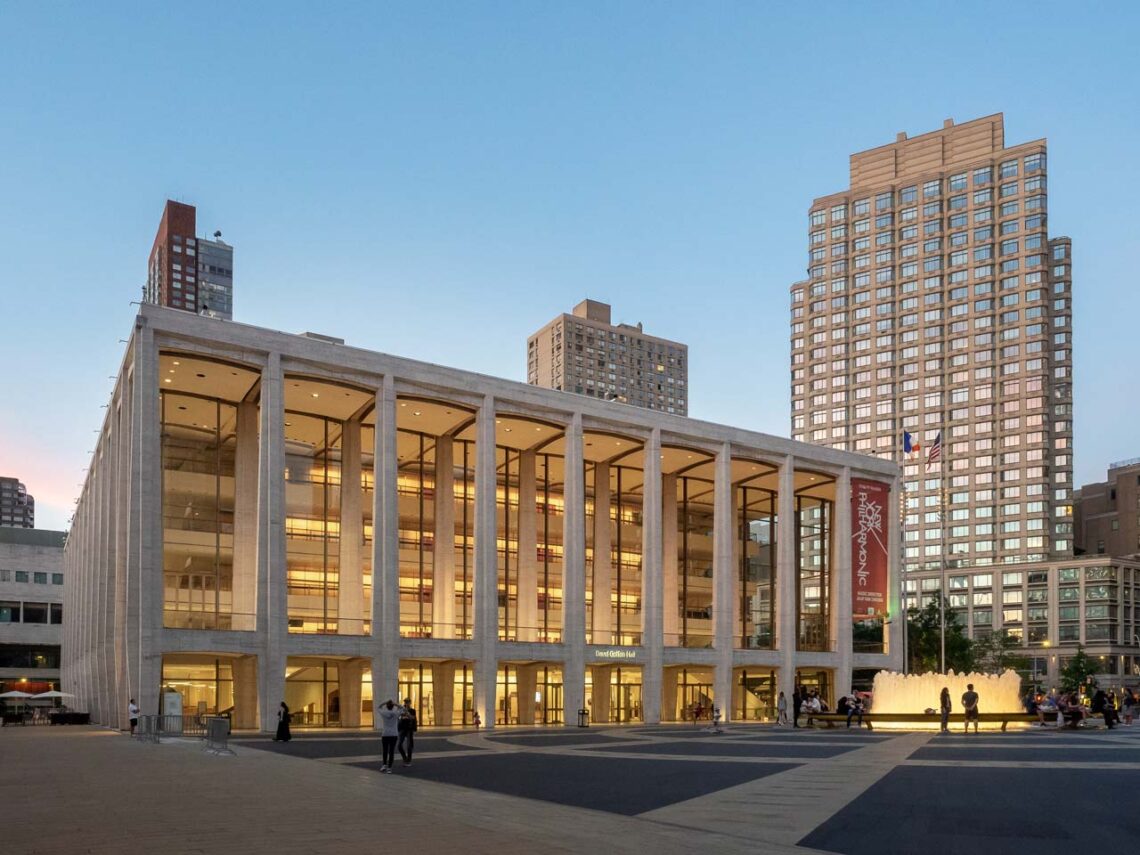
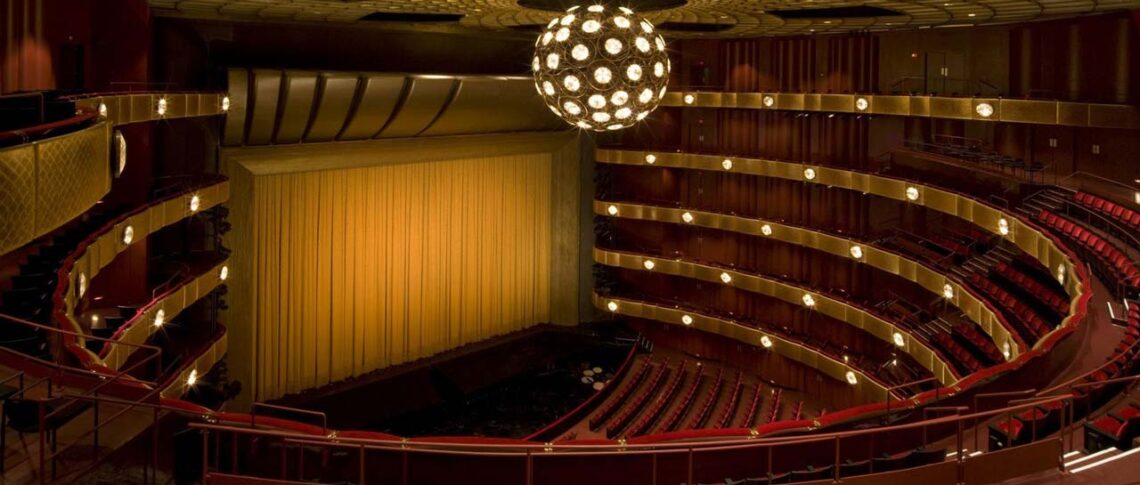
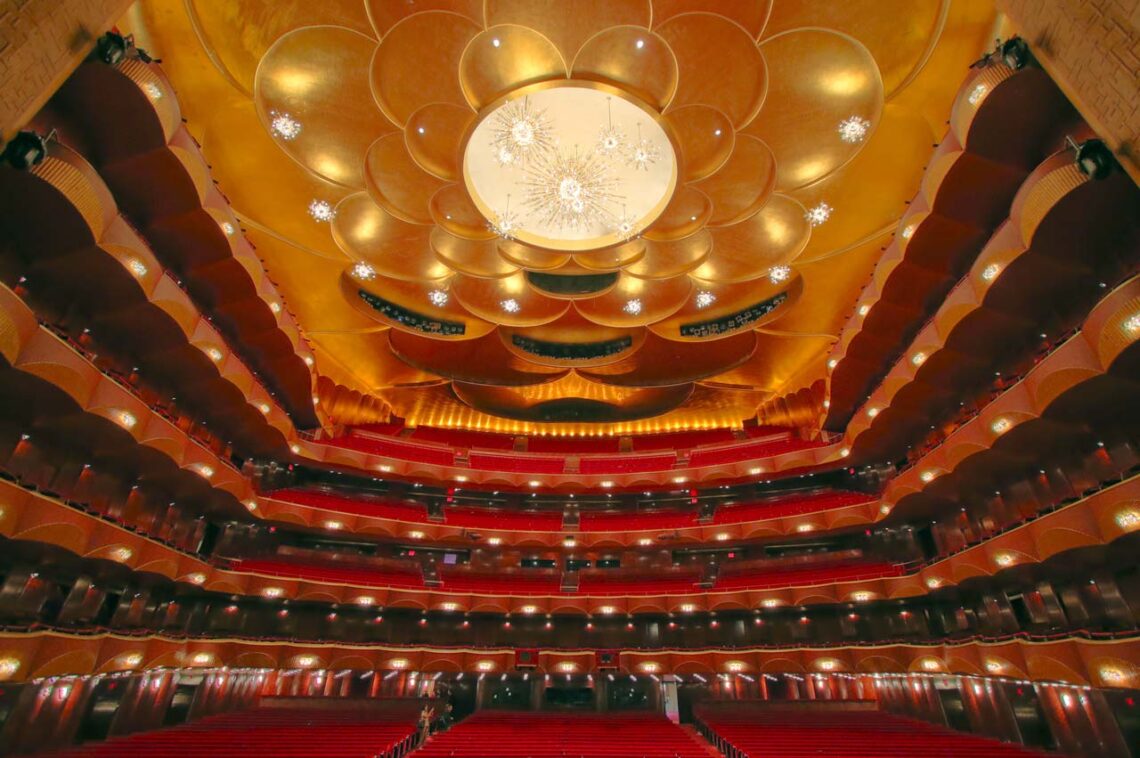
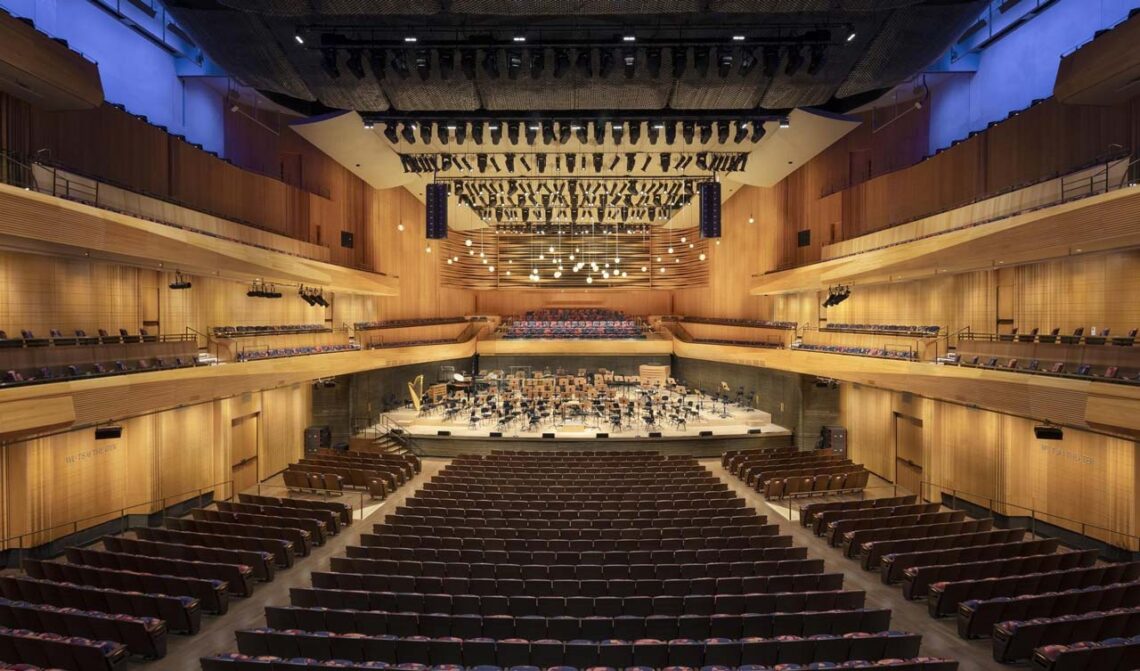
The Lincoln Center represents a modernist architectural trend or movement that emerged in the mid-20th century. Modernist architecture emphasizes function, simplicity, rationality, and innovation, often using materials from geometric forms, steel, glass, and concrete. The buildings reflect these principles, as well as the cultural aspirations and ambitions of the post-war era. The Lincoln Center’s design also incorporates historical influences from various sources, such as classical, neoclassical, Art Deco, and international styles. The Metropolitan Opera House’s facade features a series of arches and columns that echo ancient Roman architecture, while the David H. Koch Theater’s exterior is adorned with bronze sculptures that recall the art deco style of the 1920s and 1930s. The center’s overall layout is inspired by the international style of urban planning, which favors open spaces, grids, and symmetry. The Lincoln Center employs unique lighting and shading techniques to enhance its aesthetic and functional qualities. The center’s main plaza features a large fountain that creates a dynamic light show at night while also providing a cooling effect during the day. The center’s buildings also use various devices, such as louvers, screens, and curtains, to control the amount and direction of natural light that enters the interior spaces. The center’s venues also use state-of-the-art lighting systems to create different moods and atmospheres for the performances.
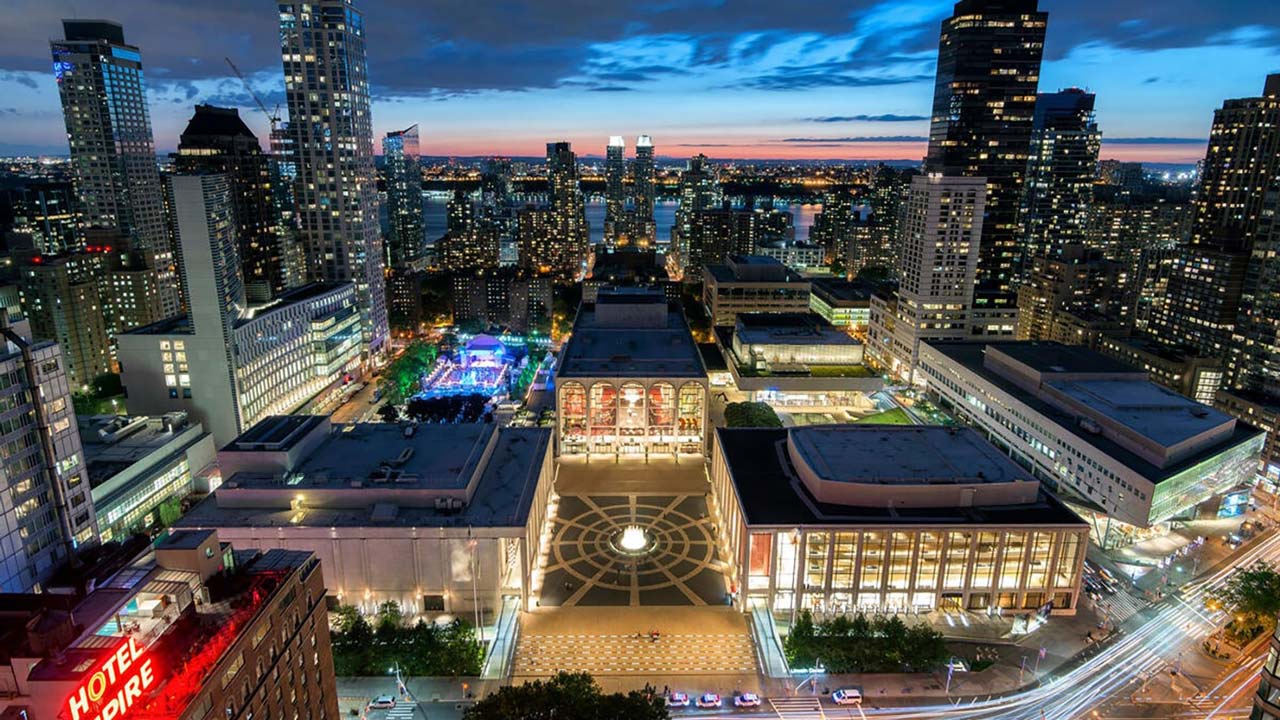
14. Chrysler Building
The Chrysler Building is an office building in New York City, designed by William Van Alen and often cited as the epitome of the Art Deco skyscraper. Its sunburst-patterned stainless steel spire remains one of the most striking features of the Manhattan skyline. The Chrysler Building is located on the East Side of Manhattan, at 42nd Street and Lexington Avenue in Midtown Manhattan. It is close to landmarks such as the Grand Central Terminal, the Empire State Building, and the United Nations Headquarters. The Chrysler Building was built between 1928 and 1930, and it was the world’s tallest building for 11 months after its completion in 1930. The Empire State Building surpassed it in 1931, which held the title until 1972. The Chrysler Building has 77 floors and a height of 1,046 feet (319 meters). The Chrysler Building was designed and funded by Walter Chrysler, the head of the Chrysler Corporation, as a real estate investment for his children. He hired William Van Alen, a former partner of his rival H. Craig Severance, who was also competing to build the tallest skyscraper at 40 Wall Street. Chrysler and Van Alen secretly added a 185-foot (56-meter) spire to the top of the building, hoisted it in place in 90 minutes, and revealed it to the public on May 27, 1930.
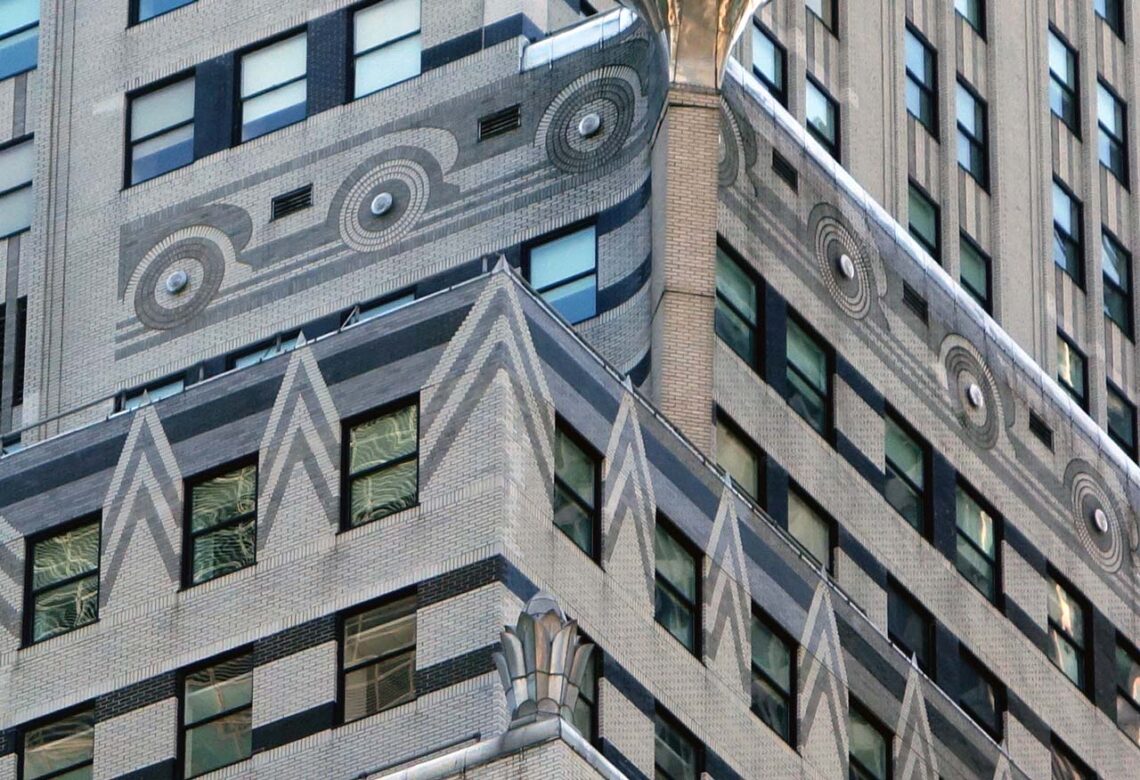
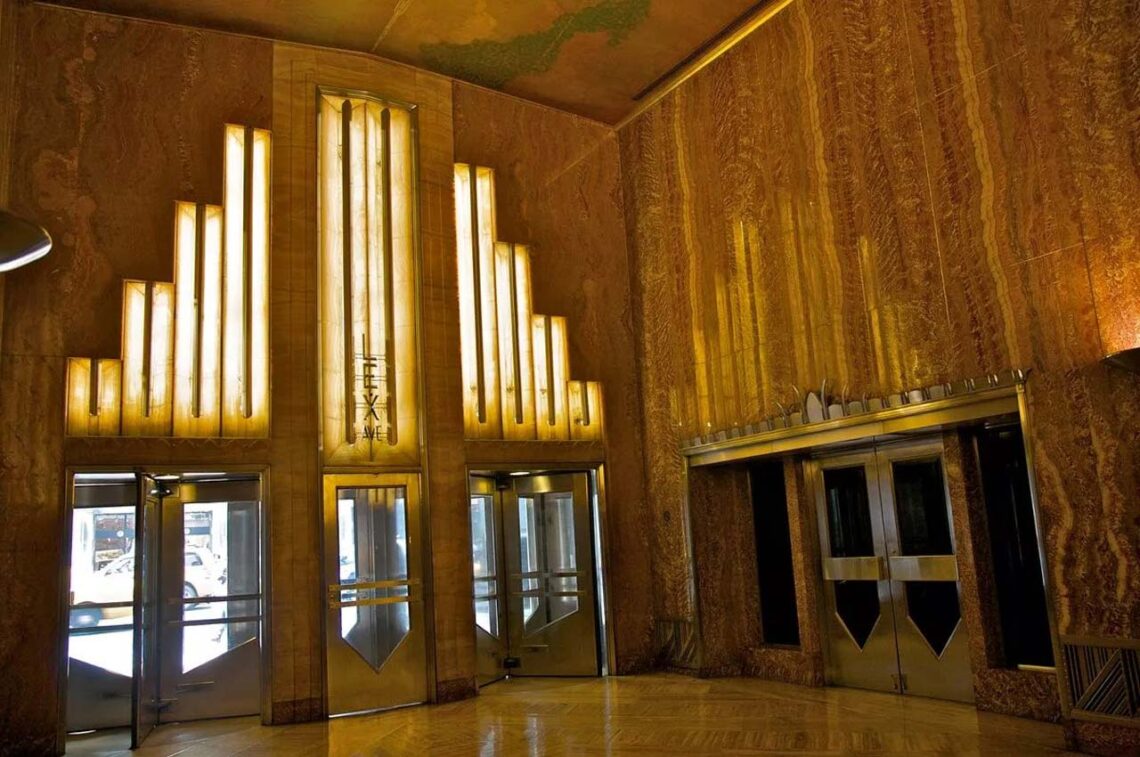
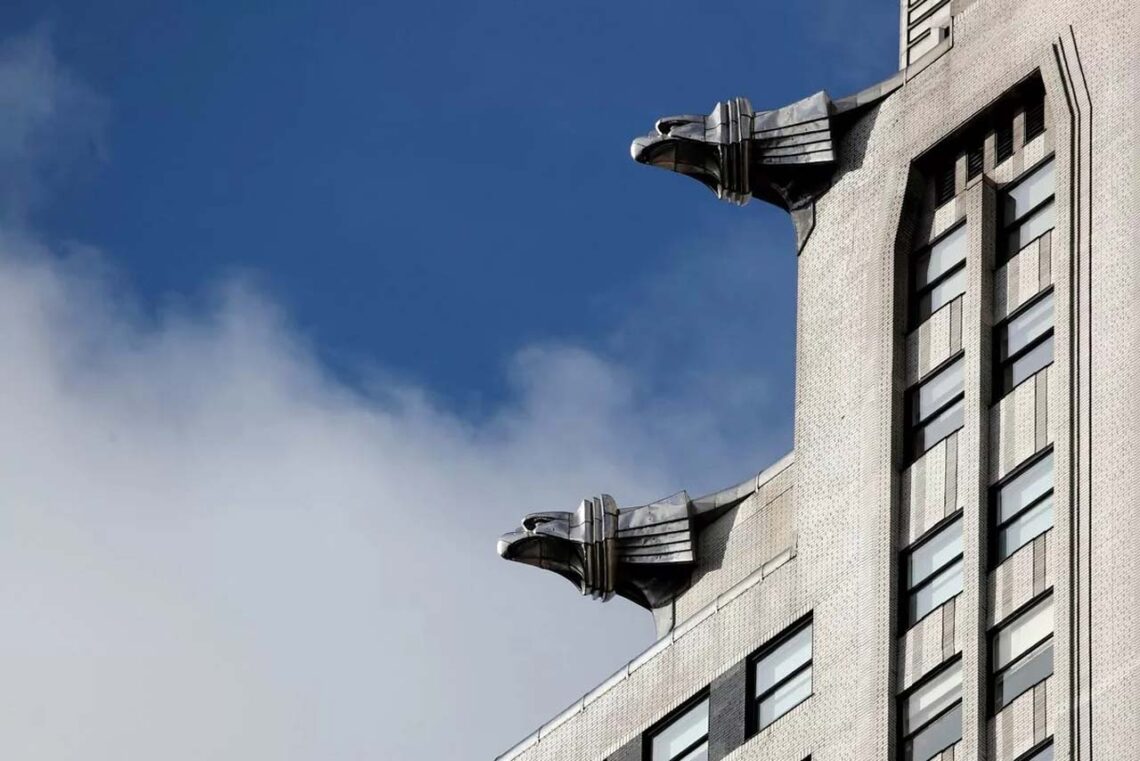
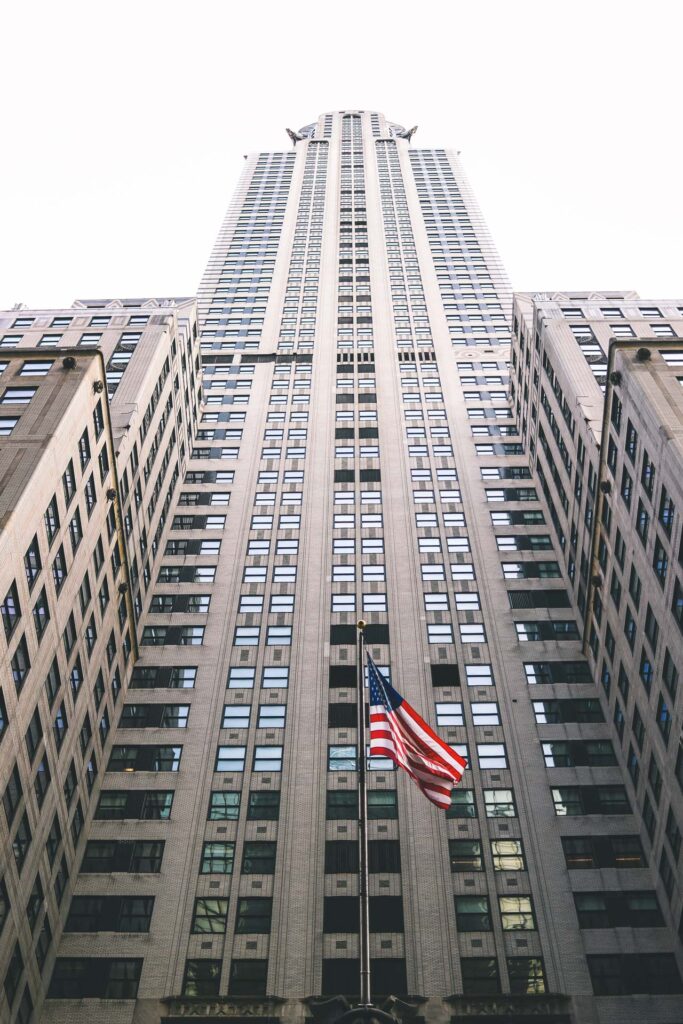
The Chrysler Building represents the Art Deco architectural style, popular in the 1920s and 1930s. Geometric shapes, symmetrical patterns, streamlined forms, and metallic colors characterize Art Deco. The Chrysler Building features many elements of Art Deco, such as the sunburst motifs, the triangular windows, the terraced crown, and the ornamentation inspired by Chrysler’s automobiles. The Chrysler Building also reflects the historical design influences of its time, such as the Gothic Revival, the Beaux-Arts, and the Machine Age. The Gothic Revival influence can be seen in the spire, which resembles a medieval cathedral tower. The influence of Beaux-Arts can be seen in the classical proportions, the symmetry, and the grandeur of the building. The Machine Age influence can be seen in the use of steel, chrome, and glass and the references to industrial products, such as hubcaps, radiator caps, and gargoyles shaped like eagles and hood ornaments. The Chrysler Building uses unique lighting and shading techniques to enhance its appearance and create a dynamic effect. The lighting system consists of floodlights, spotlights, and neon tubes, illuminating the spire, the crown, and the setbacks at night. The shading system consists of metal louvers, which adjust the amount of sunlight entering the building and create different patterns of light and shadow on the facade. The lighting and shading techniques make the Chrysler Building stand out among the other skyscrapers and change its appearance depending on the time of day and the weather.
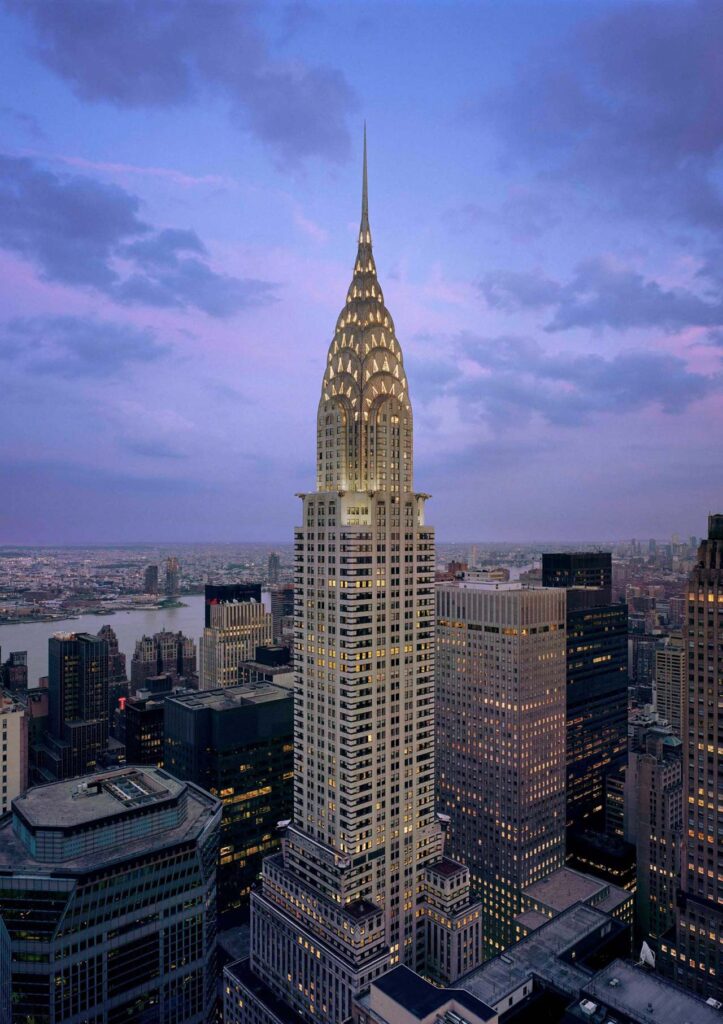
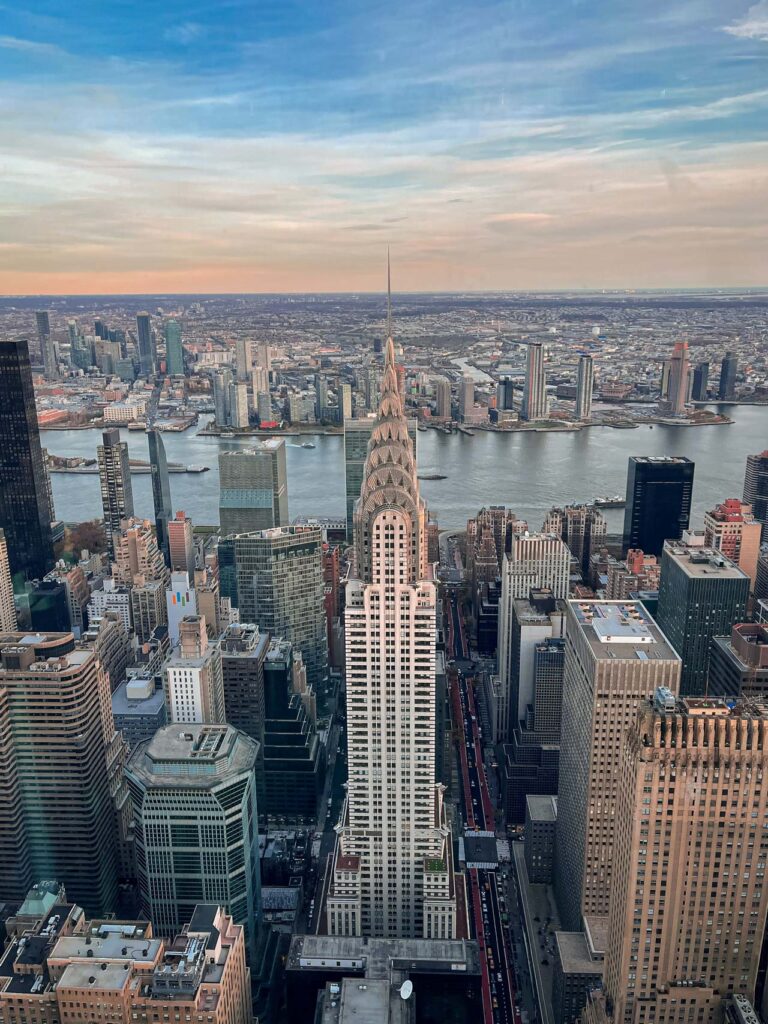
15. Leaning Tower of Pisa
The Leaning Tower of Pisa is the campanile, or freestanding bell tower, of Pisa Cathedral. It is known for its nearly four-degree lean, resulting from an unstable foundation. The Leaning Tower of Pisa is located in the city of Pisa, in Tuscany, a region in west-central Italy. It is part of Pisa’s Cathedral Square (Piazza del Duomo), including the cathedral and the baptistery. The tower’s construction began in 1173 and lasted almost 200 years, with many interruptions and delays, and was completed in 1372. The tower started to lean during the construction due to the soft ground that could not support its weight. The tower’s architect is not certain, but some scholars attribute it to Bonanno Pisano, a 12th-century artist from Pisa, or Diotisalvi, another Pisan architect who worked on the baptistery.
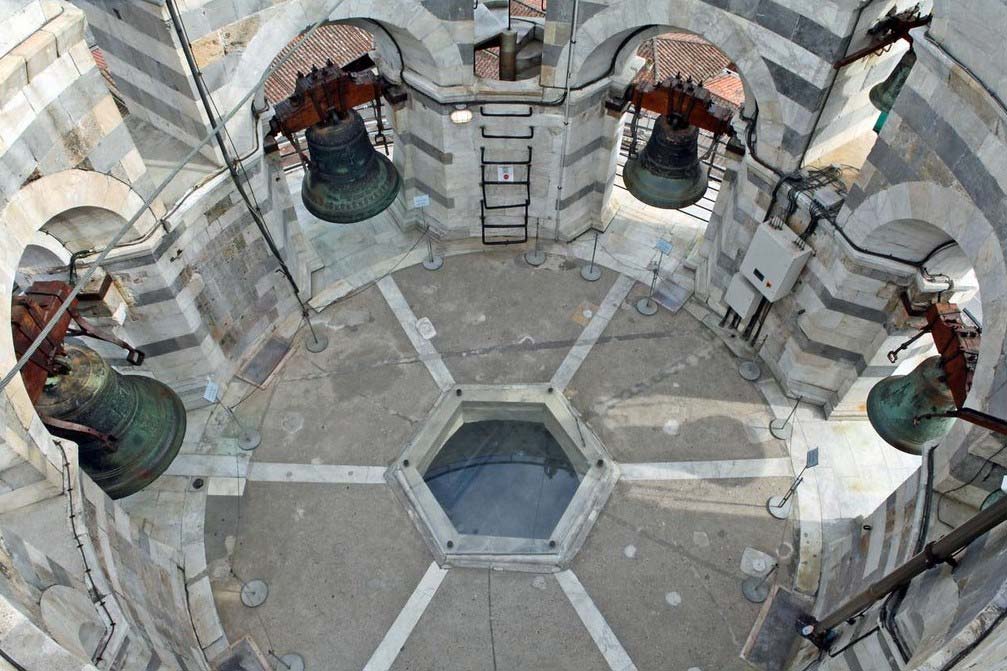
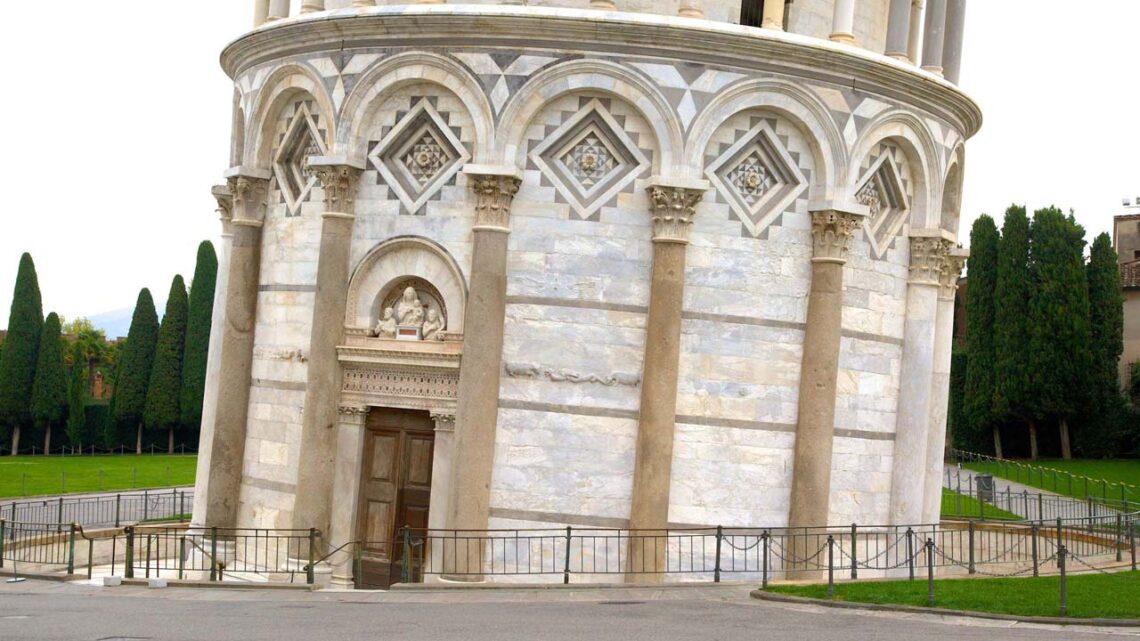
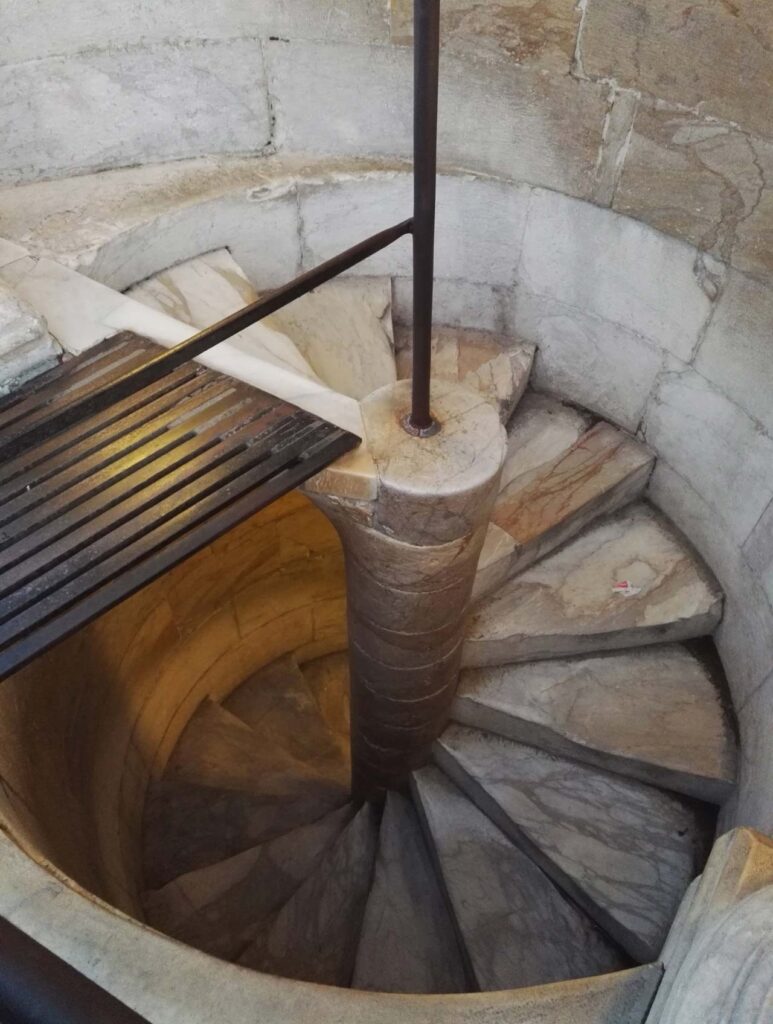
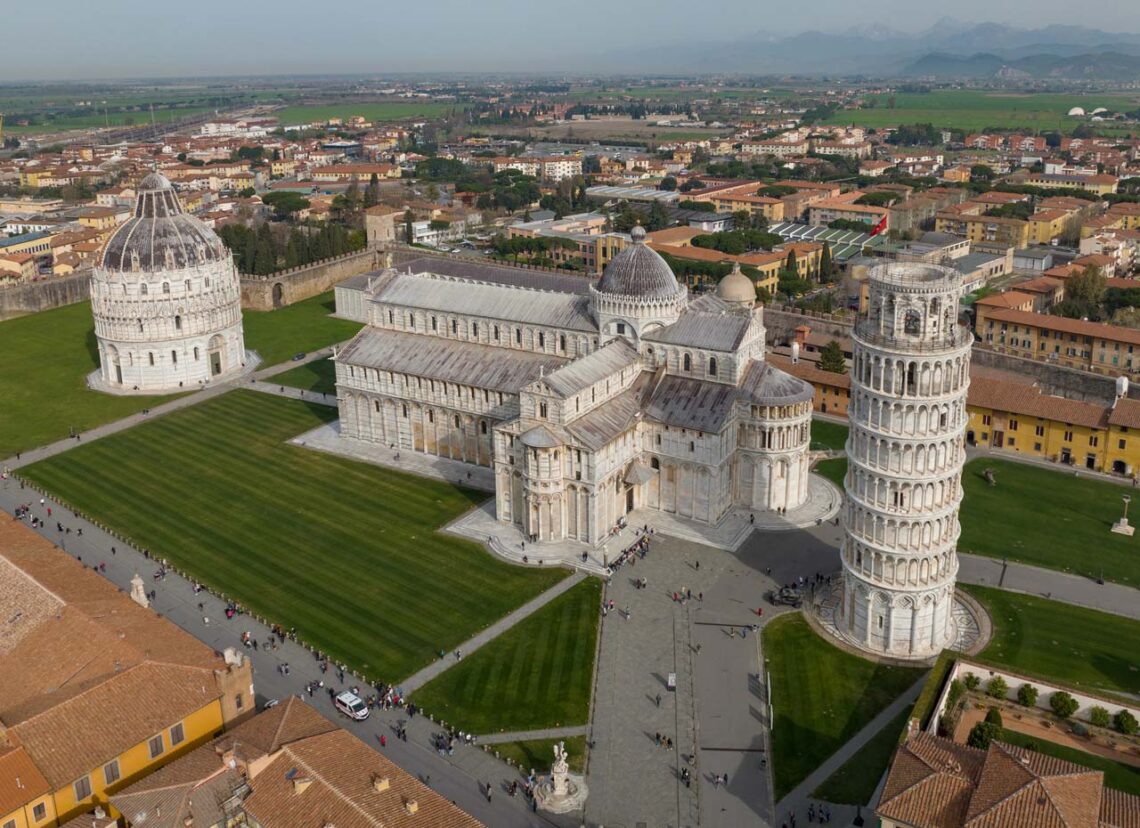
The Leaning Tower of Pisa represents the Romanesque style of architecture, which was popular in Europe from the 10th to the 12th century. The Romanesque style is characterized by round arches, thick walls, sturdy pillars, and decorative arcades. The Leaning Tower of Pisa reflects the historical influences of the Pisan culture, which was enriched by trade and contact with different civilizations, such as the Byzantine, Islamic, and Norman. The tower shows elements of classical, oriental, and Gothic art, such as marble columns, geometric patterns, and pointed arches. The Leaning Tower of Pisa has a unique lighting and shading effect due to its cylindrical shape and inclination. The tower casts a long shadow on the ground, which changes according to the sun’s position. The tower also reflects the light differently on its sides, contrasting the bright and the dark areas.
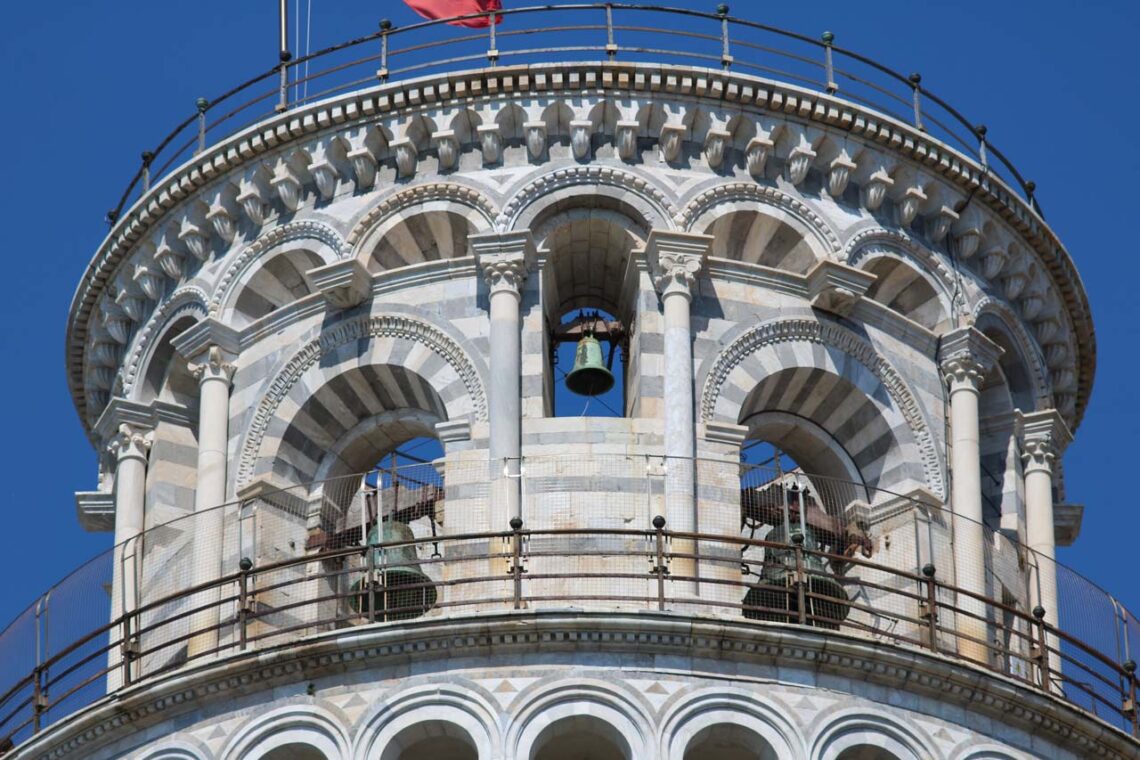
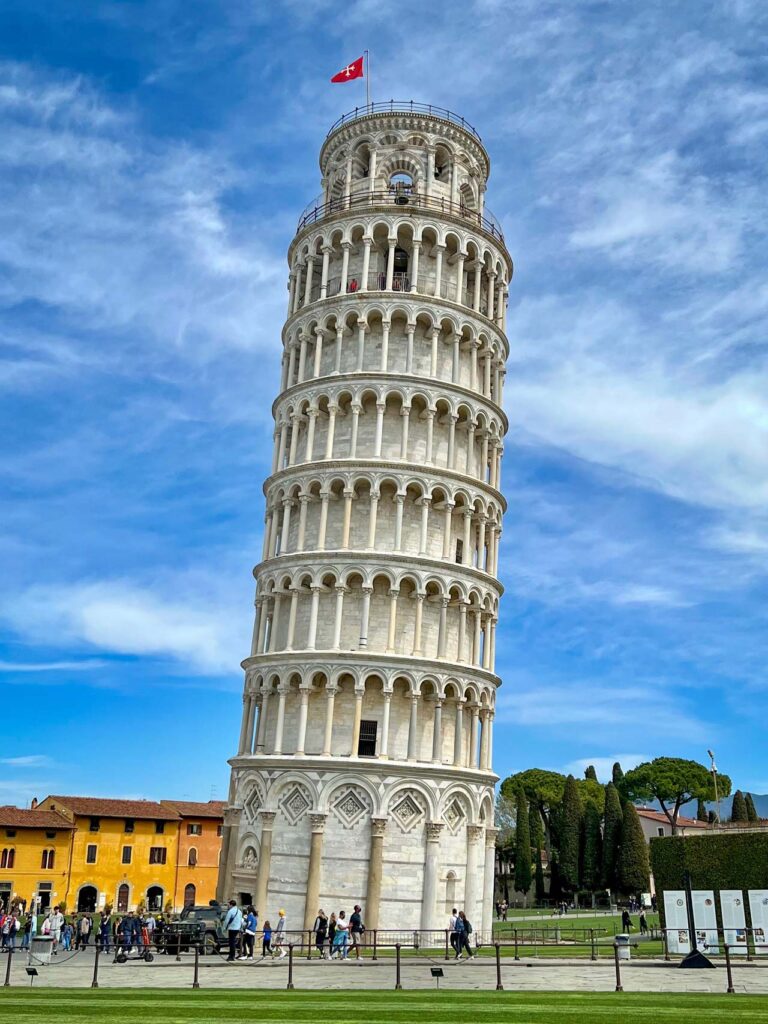
16. Guggenheim Museum
The Guggenheim Museum is an international museum that collects and exhibits modern and contemporary art in various locations. The most famous one is the Solomon R. Guggenheim Museum in New York City, designed by Frank Lloyd Wright. The Guggenheim Museum has several branches worldwide, such as the Peggy Guggenheim Collection in Venice, the Guggenheim Museum Bilbao in Spain, and the Guggenheim Abu Dhabi in the United Arab Emirates. The New York museum is located at 1071 Fifth Avenue between 88th and 89th Streets on Manhattan’s Upper East Side. The Guggenheim Museum was founded by Solomon R. Guggenheim, a wealthy American industrialist and art collector, in 1939 as the Museum of Non-Objective Painting. He commissioned Wright to design a permanent building for his collection in 1943, but the construction was delayed until 1956 due to various reasons, such as Guggenheim’s death in 1949 and postwar inflation. The museum opened to the public on October 21, 1959. The Guggenheim Museum was built by Frank Lloyd Wright, one of the most influential architects of the 20th century. Wright was known for his organic architecture, a concept based on harmony between man-made structures and the natural world. He designed the museum as a six-story, bowl-shaped building with a spiral ramp and a central skylight.
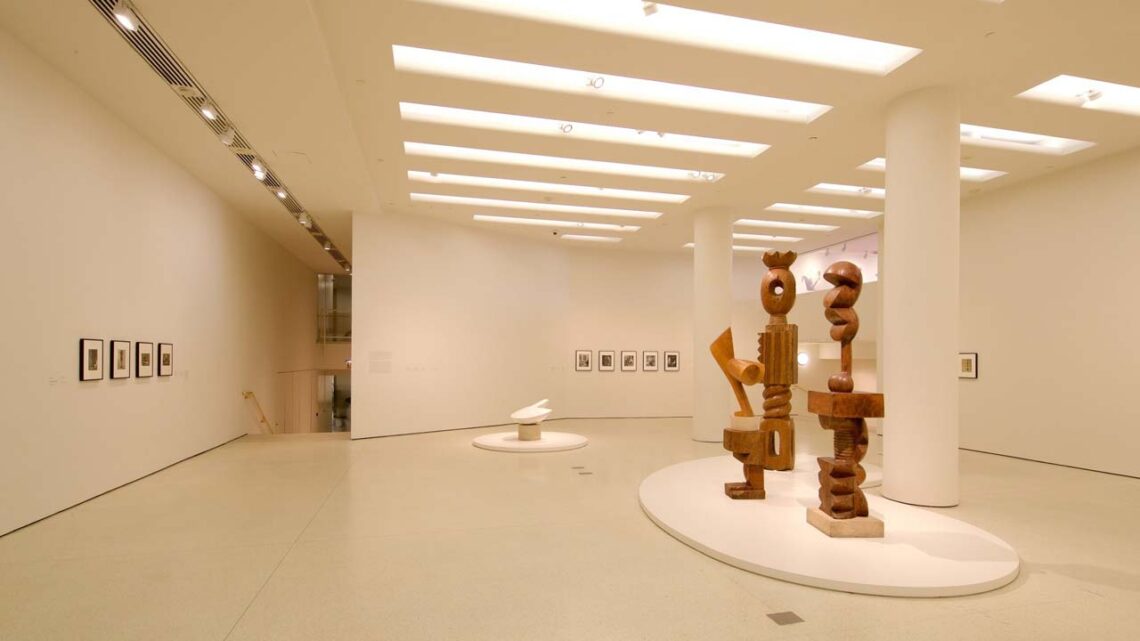
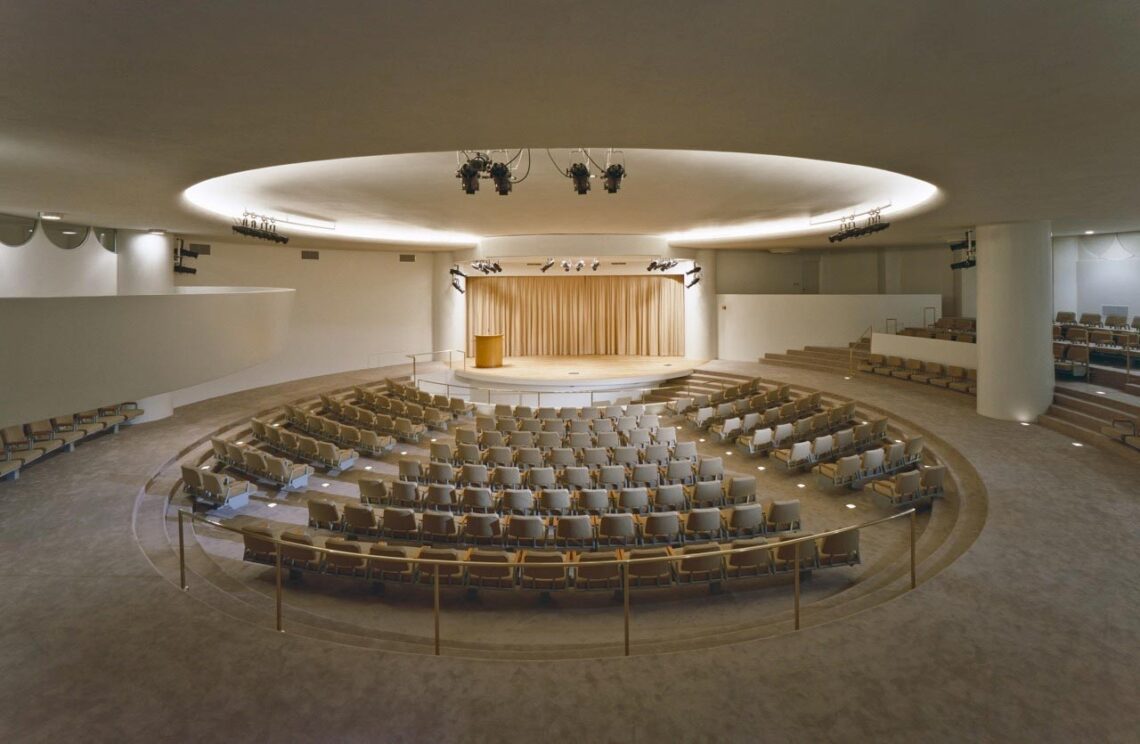
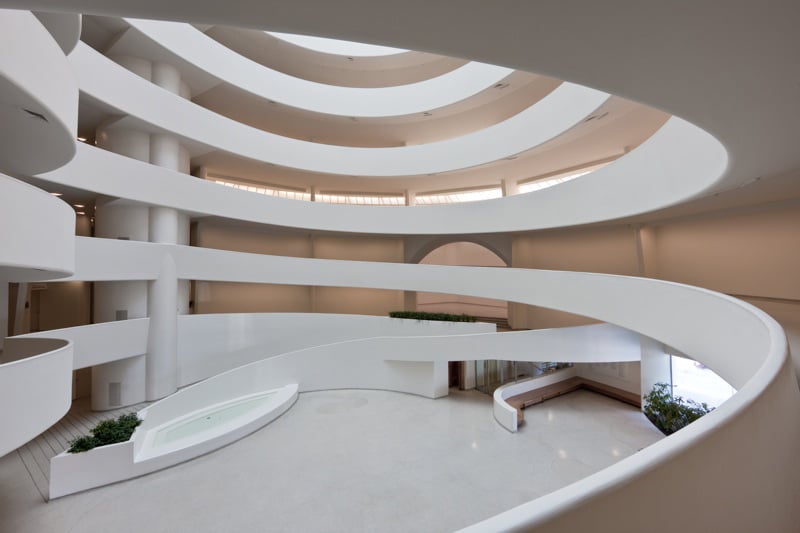
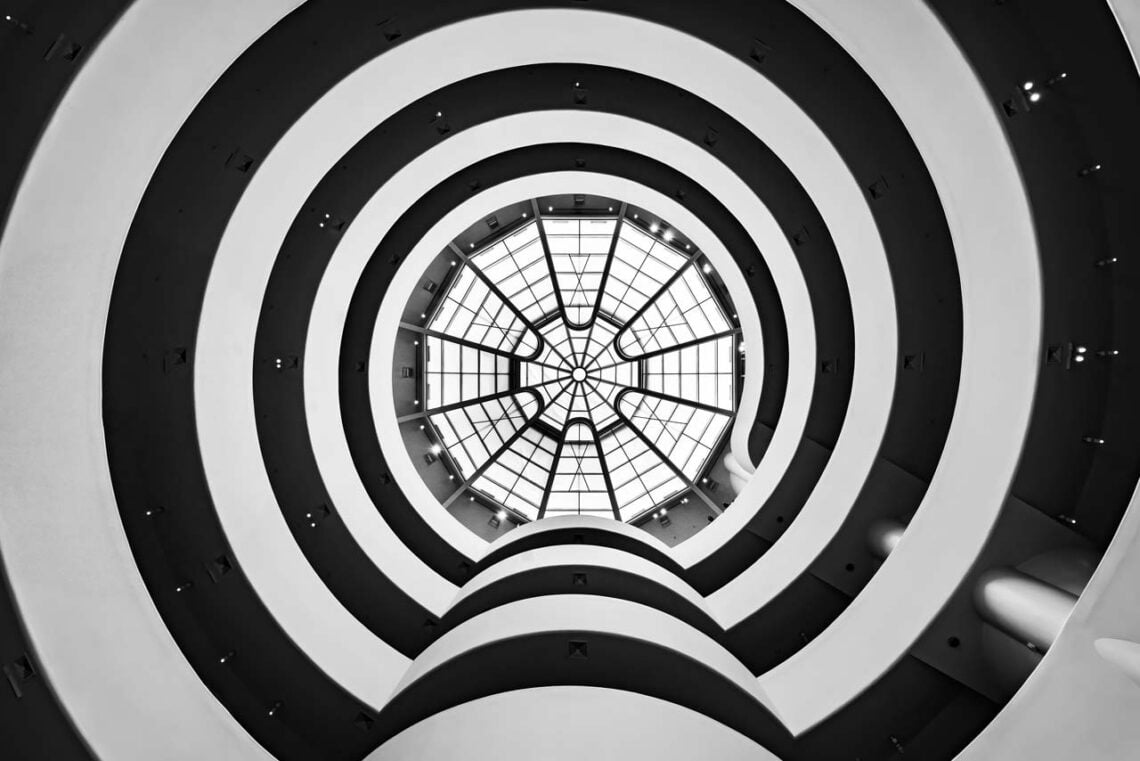
The Guggenheim Museum represents a modernist architectural trend or movement that challenged buildings’ conventional forms and functions. Wright’s design was controversial when it was completed, as some critics and artists thought it upstaged the art and did not fit the urban context; however, it was also widely praised for its originality and innovation and became a landmark of 20th-century architecture. The Guggenheim Museum reflects historical design influences from various sources, such as Wright’s previous works, Central Park, and European avant-garde art. Wright was inspired by his earlier projects, such as Fallingwater and the Johnson Wax Building, which also featured organic forms and circular motifs. He also admired the natural landscape of Central Park, which he wanted to complement with his building. He was influenced by the abstract art of the museum’s collection, especially the paintings of Vasily Kandinsky, which he incorporated into his sketches.
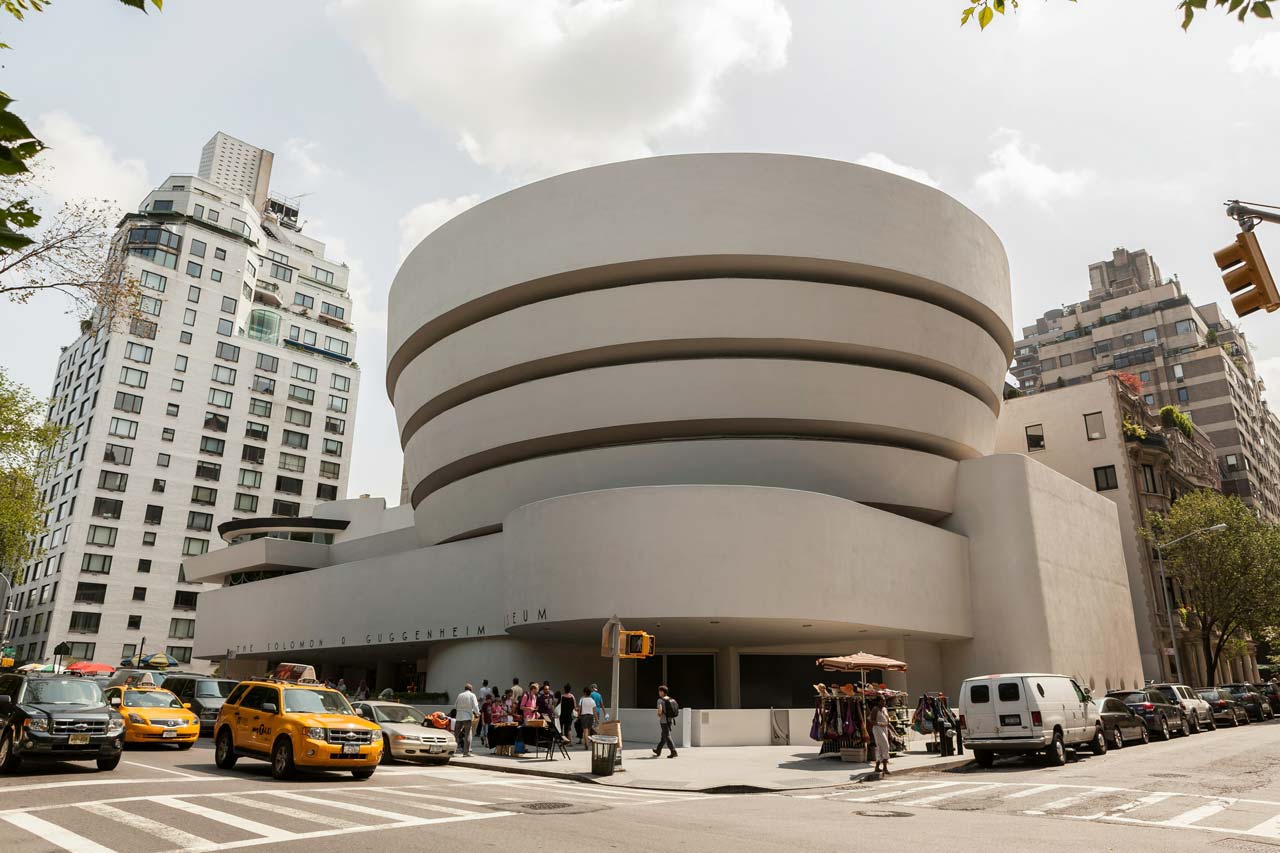
The Guggenheim Museum employs unique lighting and shading techniques to create different effects and atmospheres in the exhibition spaces. Wright designed the museum with a glass dome that allows natural light to enter the building and illuminate the art. He also used artificial lighting, such as spotlights and fluorescent tubes, to enhance the colors and shapes of the artworks. The museum has a preset light control system that can adjust the intensity and color temperature of the lights according to the time of day and the season.
17. Dome of the Rock
The Dome of the Rock is an Islamic shrine at the center of the Al-Aqsa mosque compound on the Temple Mount in the Old City of Jerusalem. It is the oldest surviving Islamic monument in the world and is believed to be the site of Muhammad’s ascent to heaven. The Dome of the Rock is located in Jerusalem, the capital of Israel, and a holy city for Jews, Christians, and Muslims. The shrine is on a hill known as the Temple Mount or Haram al-Sharif, which both Jews and Muslims revere as the location of Abraham’s sacrifice of his son. The Dome of the Rock was built in the late 7th century CE, between 688 and 692, by the order of Abd al-Malik, the fifth Umayyad caliph. The original dome collapsed in 1015 and was rebuilt in 1022 to 1023. The shrine has undergone several restorations and modifications over the centuries, most notably by the Ottoman Sultan Suleiman the Magnificent in the 16th century and by the Jordanian government in the 20th century.
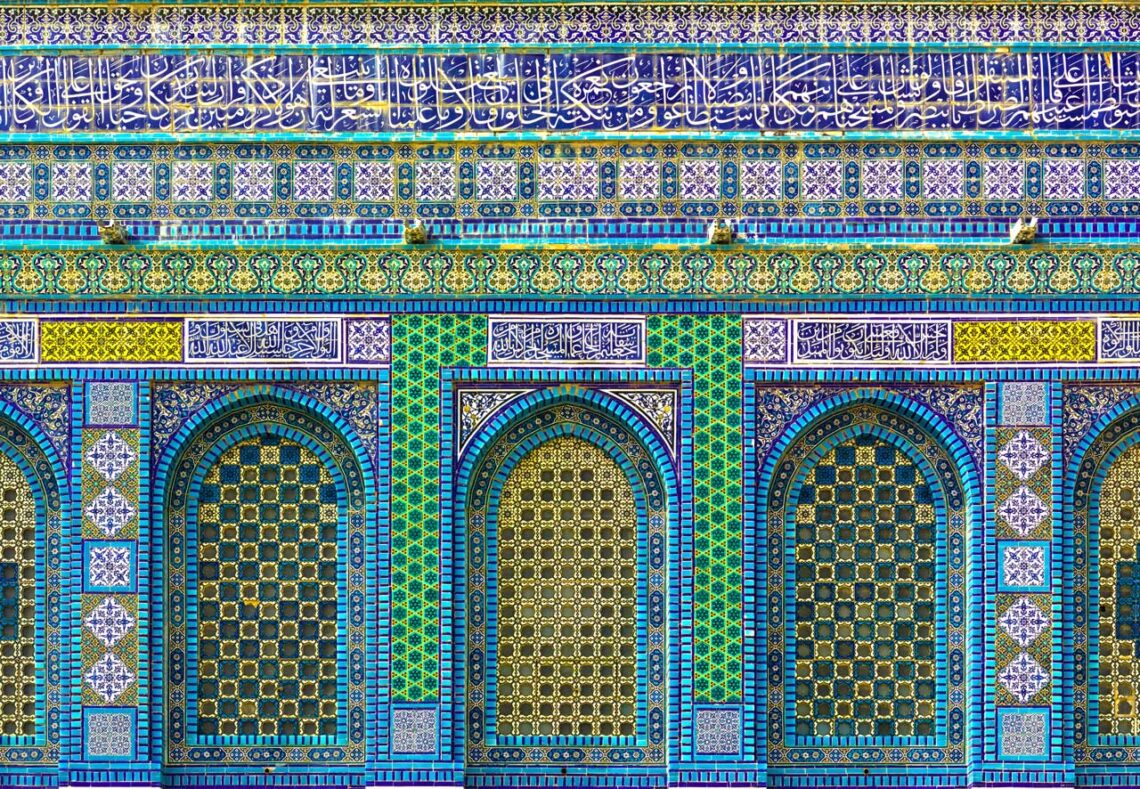
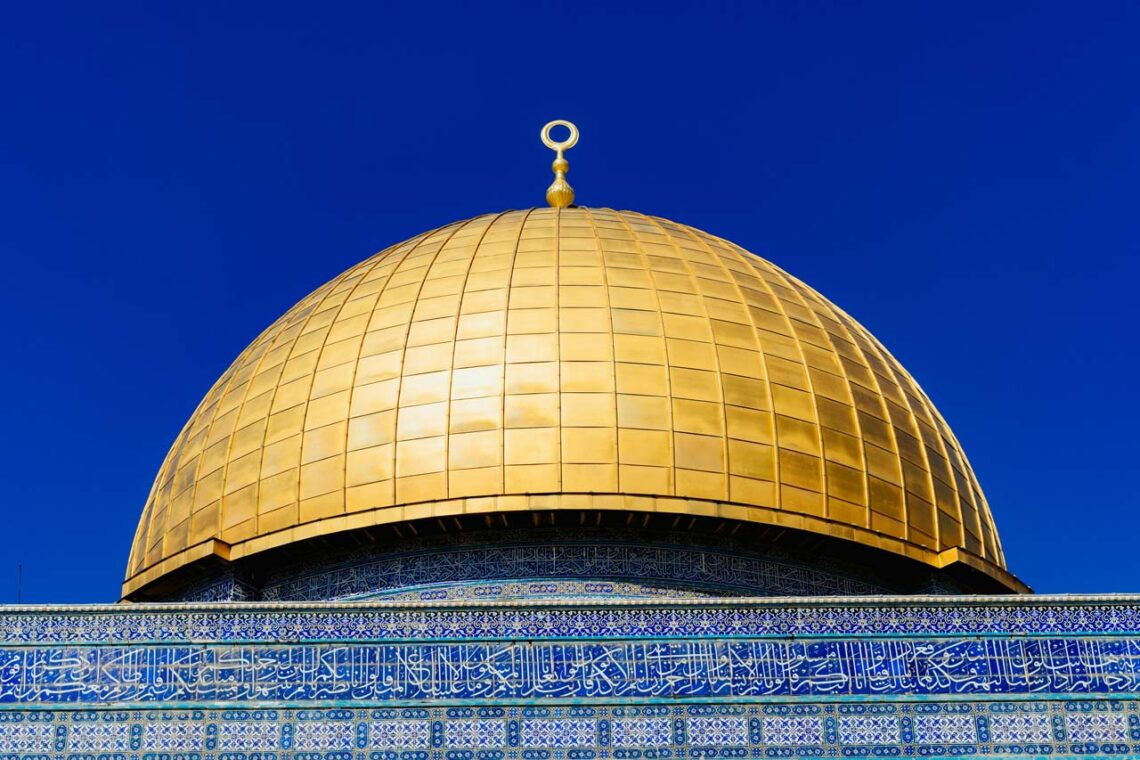
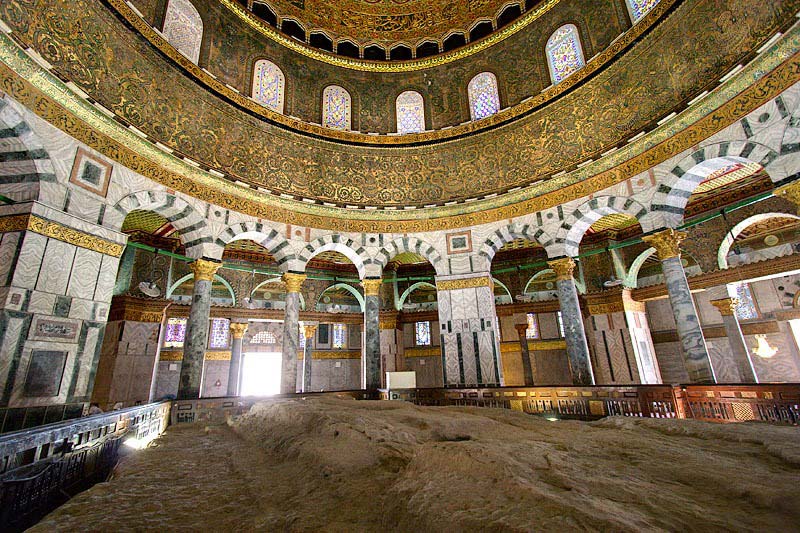
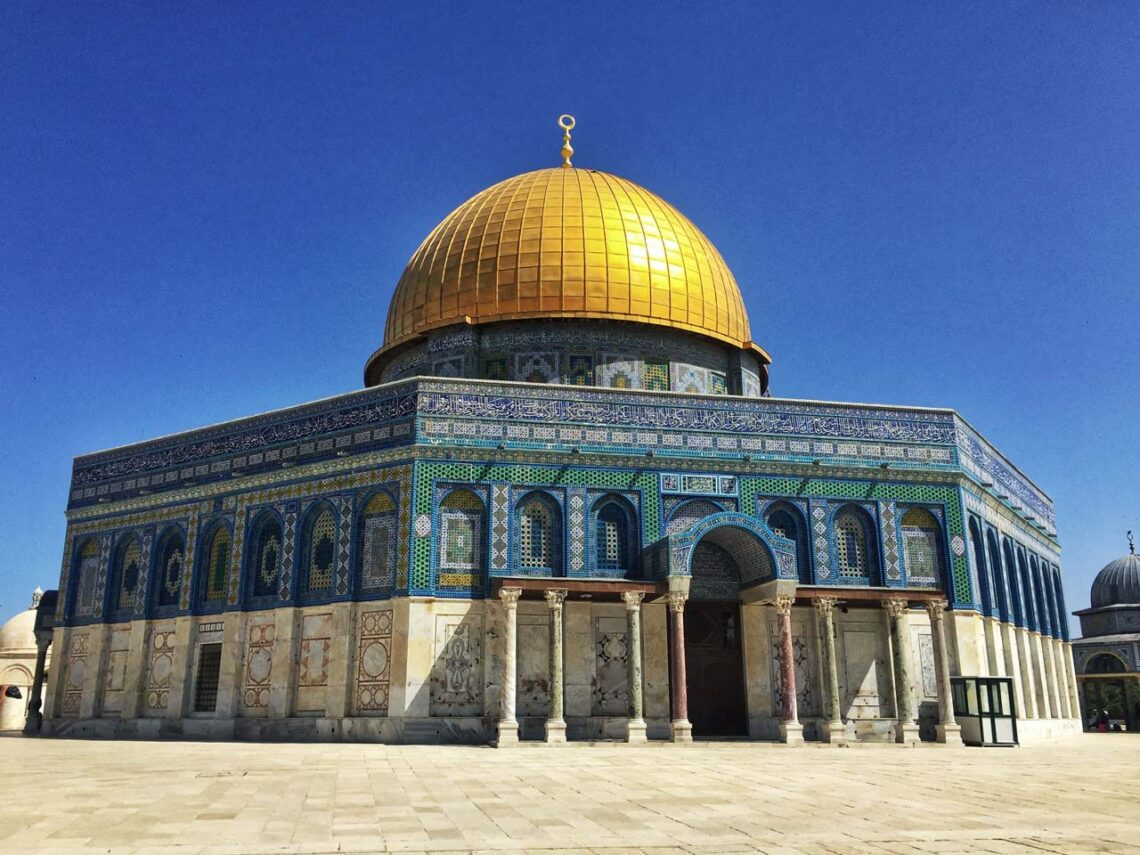
The Dome of the Rock was built by Abd al-Malik, who wanted to establish the legitimacy and supremacy of his rule and his faith over the rival factions and religions in the region. He commissioned the shrine’s construction as a symbol of Islam and a tribute to Muhammad, whose night journey to heaven is said to have started from the rock at the center of the structure. The Dome of the Rock represents the early Islamic architectural style, influenced by the Byzantine and Persian traditions. The octagonal plan, the circular dome, the pendentives, and the mosaics are all features derived from the Byzantine churches and palaces. The dome is also decorated with Quranic inscriptions, among the earliest examples of Islamic calligraphy. The shrine is considered a masterpiece of Islamic art and architecture, as it combines elements from different cultures and expresses the religious and political aspirations of the Umayyad dynasty. The Dome of the Rock reflects the historical design influences of the civilizations that ruled or interacted with Jerusalem. The shrine was built on the site of the Second Jewish Temple, which was destroyed by the Romans in 70 CE. The rock at the center of the dome is believed to be the Foundation Stone, where God created the world and God tested Abraham. The shape and size of the dome are similar to the Church of the Holy Sepulchre, which is the Christian site of Jesus’ crucifixion and resurrection. The mosaics and inscriptions on the walls and the dome are inspired by Byzantine and Sassanian art and culture, which were the dominant powers in the Middle East at the time of the Umayyad caliphate.
The Dome of the Rock employs unique lighting and shading techniques to create a sense of awe and wonder for the visitors. The dome is covered with gold, which reflects the sunlight and creates a dazzling effect. The windows on the dome’s drum are arranged to allow the light to enter the interior at different angles and times of the day, creating a dynamic and changing atmosphere. The mosaics on the walls and the ceiling are also designed to catch the light and create patterns and contrasts. The colors of the mosaics are mostly blue, green, and gold, which contrast with the red and white of the marble columns and the black and white of the inscriptions.
18. Sagrada Familia
The Sagrada Familia is a Roman Catholic minor basilica still under construction. It was designed by Antoni Gaudí, a Catalan architect known for combining Gothic and Art Nouveau elements. The church is one of the most visited attractions in Barcelona and a UNESCO World Heritage Site. The Sagrada Familia is located in the Eixample district of Barcelona, Catalonia, Spain. It is on a block bounded by Carrer de Mallorca, Carrer de Provença, Carrer de Marina, and Carrer de Sardenya. The nearest metro station is Sagrada Família on lines L2 and L5. The construction of the La Sagrada Familia began on March 19, 1882, under the supervision of Francisco de Paula del Villar, the original architect; however, he resigned in 1883, and Gaudí took over the project. Gaudí devoted the rest of his life to the church but died in 1926 when only a quarter of the project was complete. The construction was interrupted by the Spanish Civil War in 1936 and resumed in the 1950s with the help of Gaudí’s assistants and collaborators. The current estimate for the church’s completion is 2026, the centenary of Gaudí’s death.
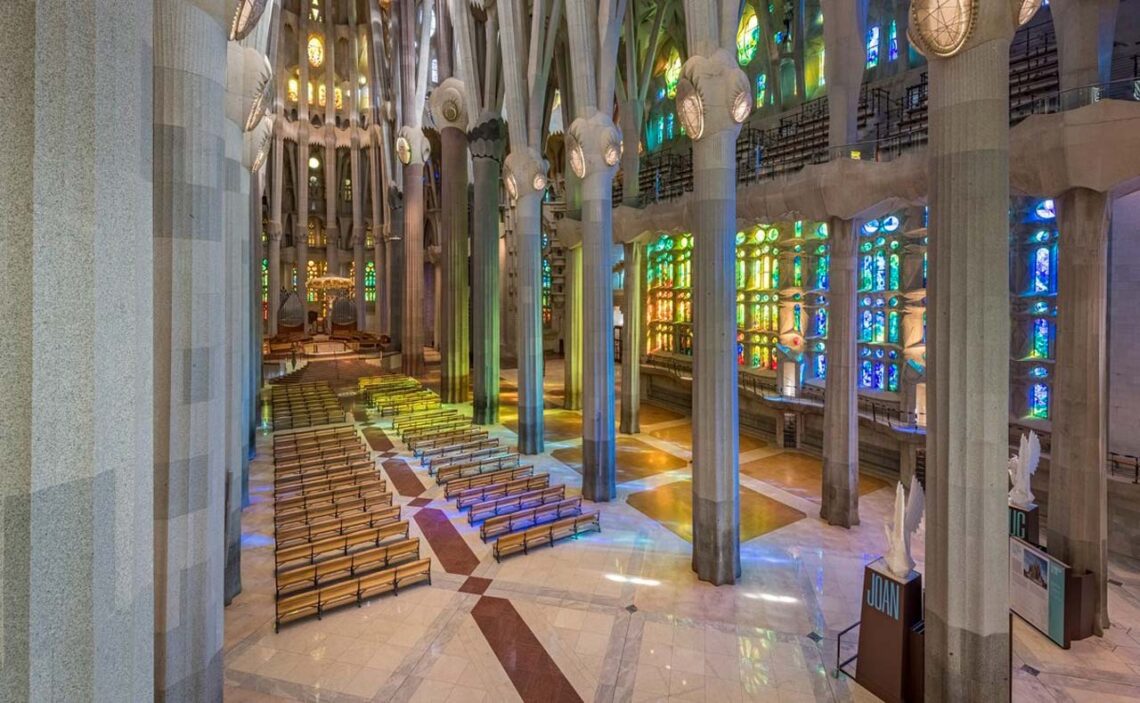
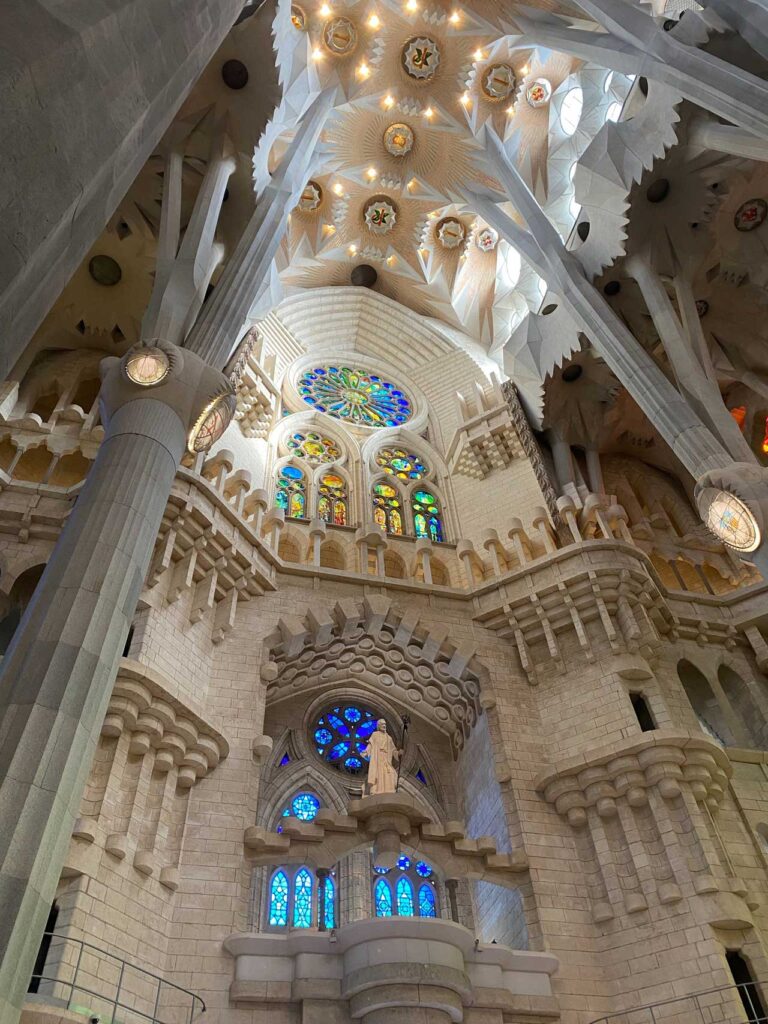
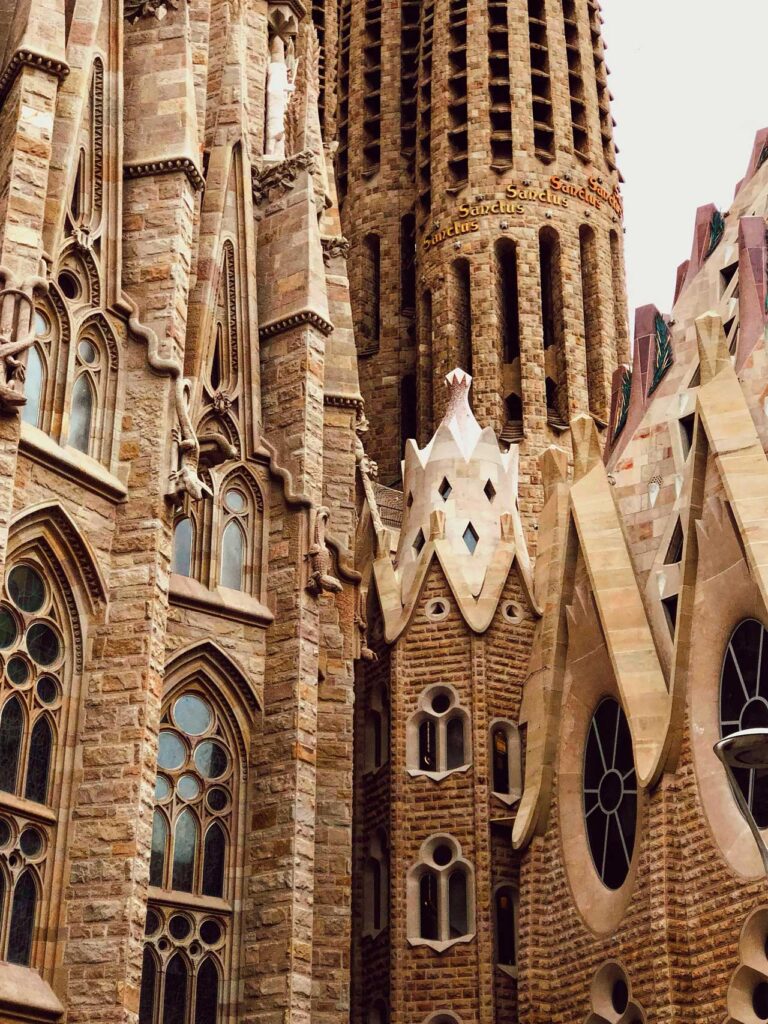
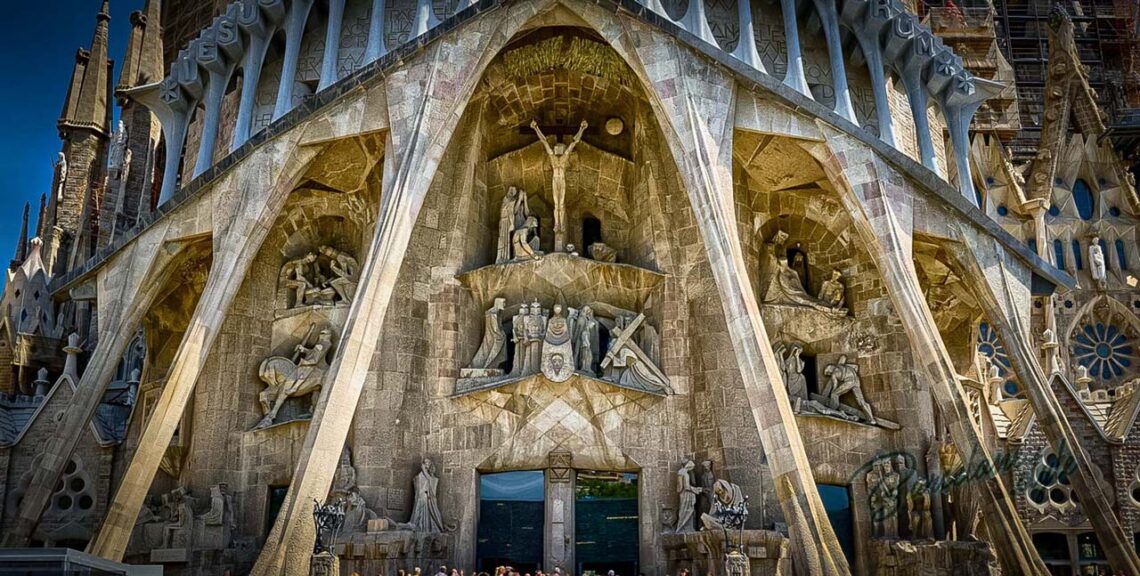
The Sagrada Familia represents a fusion of different architectural styles, such as Gothic, Art Nouveau, and Modernism. It is characterized by its complex and expressive forms, rich and colorful decoration, and innovative use of materials and techniques. The church has three grand façades, each representing a stage of Christ’s life: the Nativity, the Passion, and the Glory. It also has 18 towers, 12 of which symbolize the apostles, four the evangelists, one the Virgin Mary, and the tallest one, Jesus Christ. The church’s interior is inspired by nature, with columns resembling trees, vaults resembling branches, and windows resembling stars. The La Sagrada Familia is influenced by various historical and cultural sources, such as the Gothic cathedrals of Europe, the Byzantine and Romanesque art of the Mediterranean, the Islamic architecture of Spain, and the Catalan traditions and folklore. Gaudí also drew inspiration from the works of other artists, such as the sculptor Josep Llimona, the painter Joan Llimona, and the architect Josep Maria Jujol. He also incorporated elements from the Bible, the liturgy, and Christian symbolism into his design.
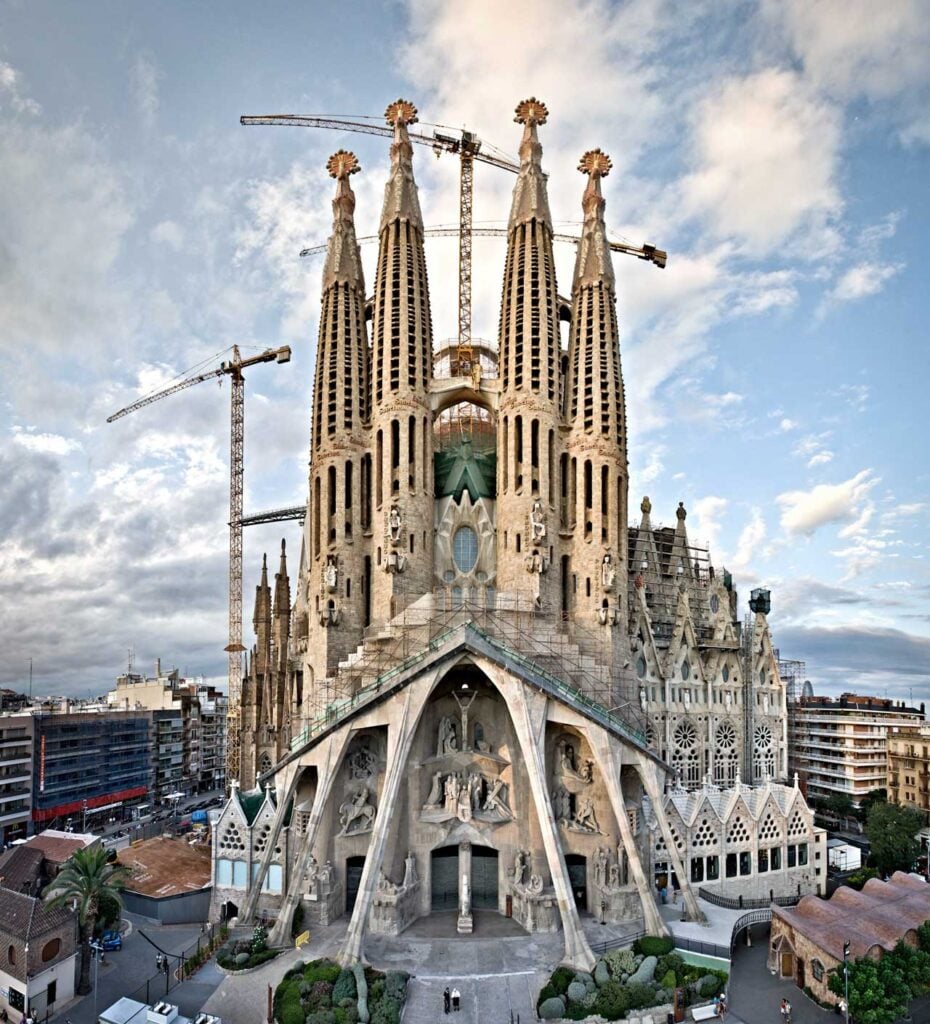
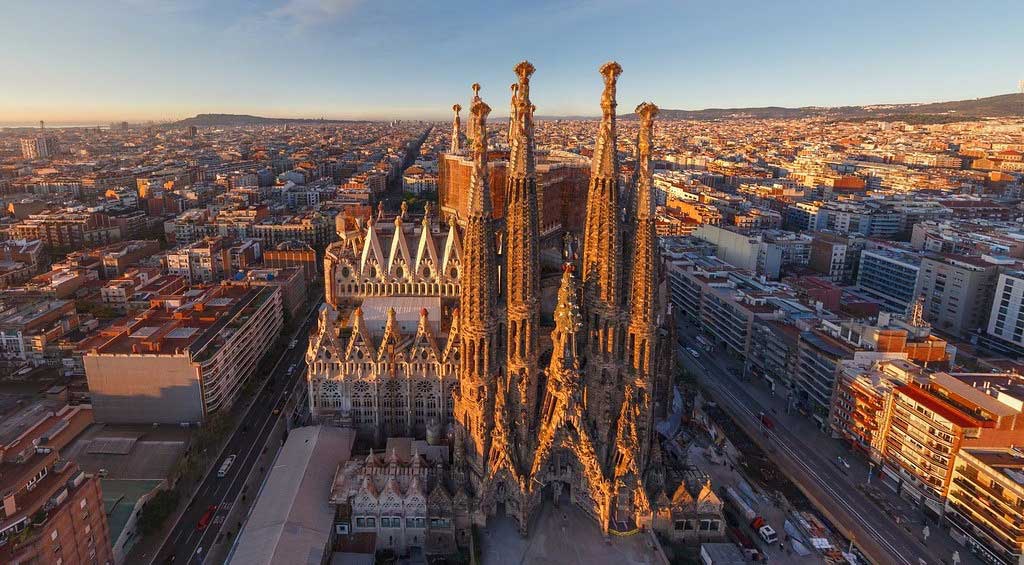
The La Sagrada Familia has a unique lighting and shading system that creates a dynamic and atmospheric effect inside the church. Gaudí designed the windows and skylights to filter and reflect the natural light according to the time of the day, the season of the year, and the mood of the scene. He also used different colors and textures of glass to create contrast and harmony. The windows on the east side are warmer and brighter, while the ones on the west side are cooler and darker. The windows on the north and south sides are more neutral and balanced. The light also interacts with the sculptures, mosaics, and other ornaments, creating a variety of shadows and reflections.
19. Angkor Wat
Angkor Wat is a temple complex in Cambodia located on a site measuring 162.6 hectares (402 acres). The Guinness World Records states it is the world’s largest religious structure. It was originally built as a Hindu temple dedicated to Lord Vishnu but later became a Buddhist temple. Angkor Wat is near Siem Reap, in the northwestern part of Cambodia. It is part of the Angkor Archaeological Park, which covers an area of 154 square miles (400 square kilometers) and contains many other ancient temples and monuments. Angkor Wat was constructed in the 12th century by King Suryavarman II, who ruled the Khmer Empire from 1113 to 1150. He commissioned the temple as his state temple and mausoleum, which took 37 years to complete. The temple was designed to represent Mount Meru, the mythical home of the gods in Hindu cosmology.
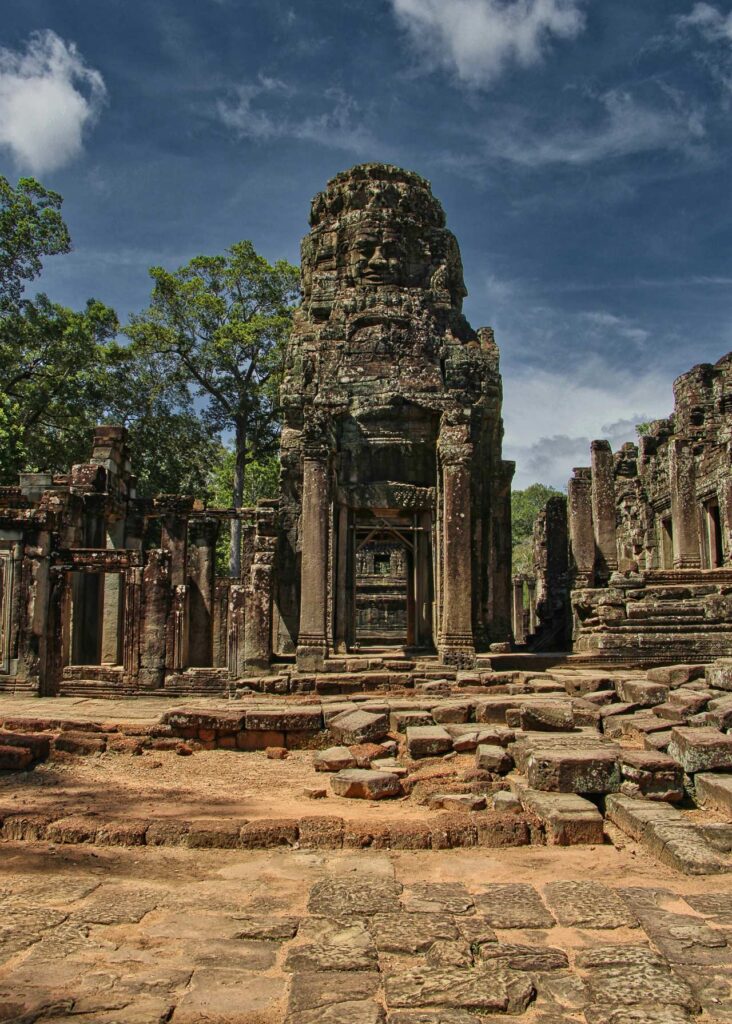
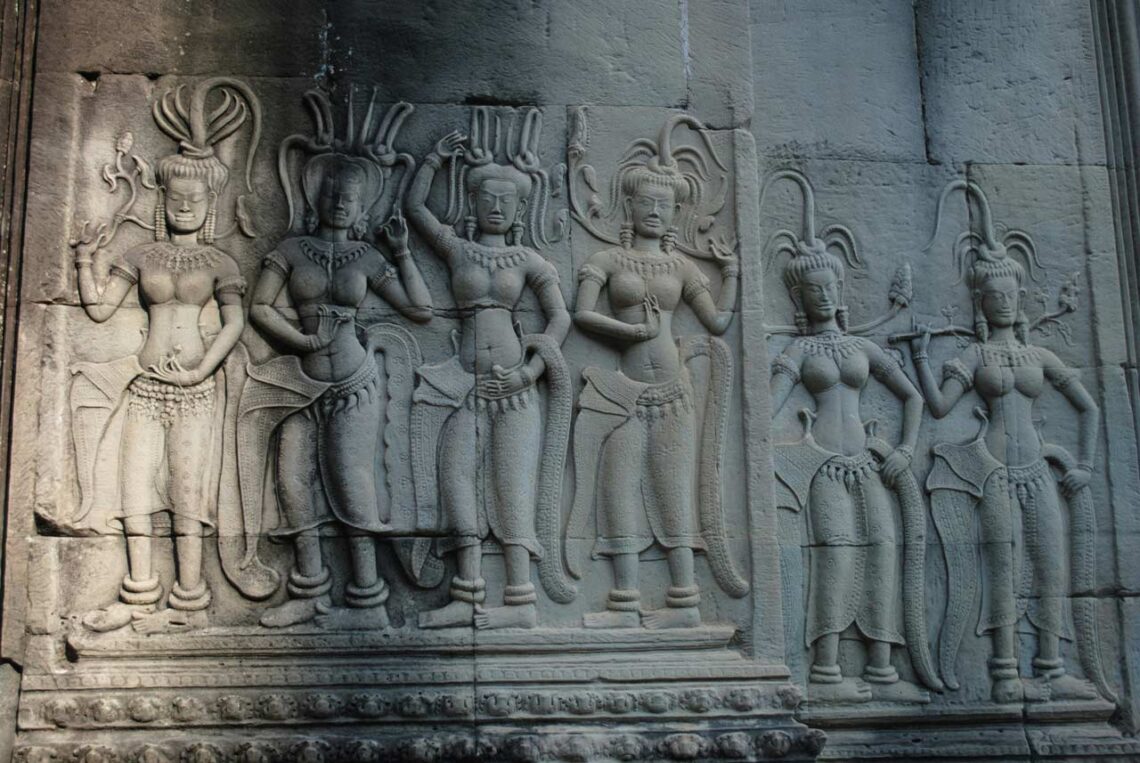
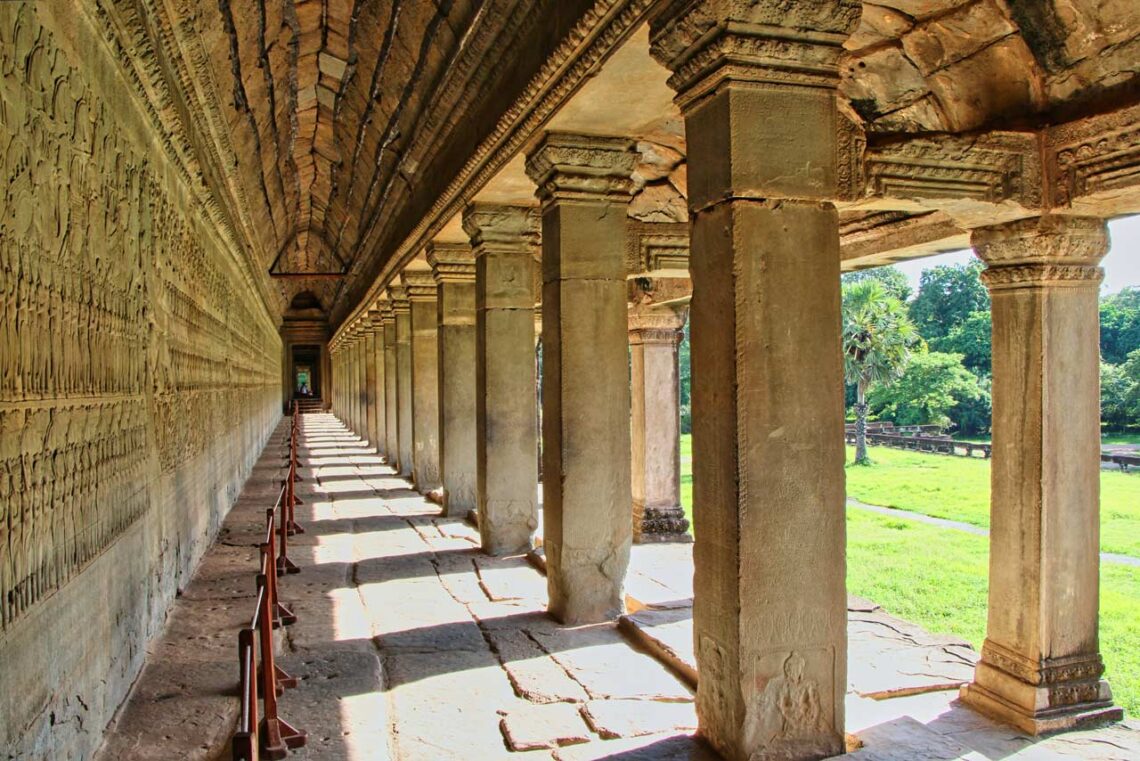
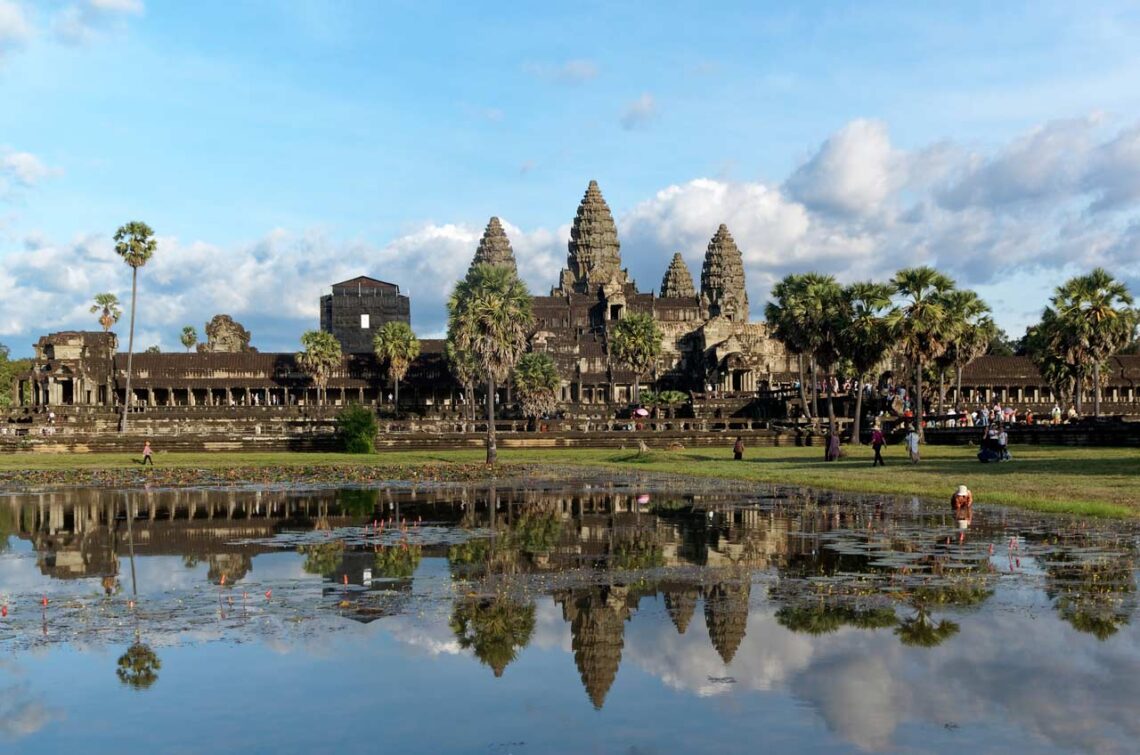
Angkor Wat was built in the style of Khmer architecture, using sandstone, laterite, brick, and wood as building materials and incorporating intricate carvings, sculptures, and bas-reliefs. The temple has a rectangular plan, with a central tower surrounded by four smaller towers, forming a quincunx. The temple is enclosed by three concentric galleries, each with a different height and width. The outer gallery is the longest, measuring 614 by 705 feet (187 by 215 meters). Angkor Wat represents the peak of the Angkor Wat style, one of the major periods of Khmer art and architecture. The proportions’ refinement and harmony distinguish the style, the figures’ elegance and grace, and the decorations’ richness and variety. The Angkor Wat style reflects the influence of Indian culture, especially the art of the Gupta and Chola dynasties, as well as the indigenous traditions of the Khmer people.
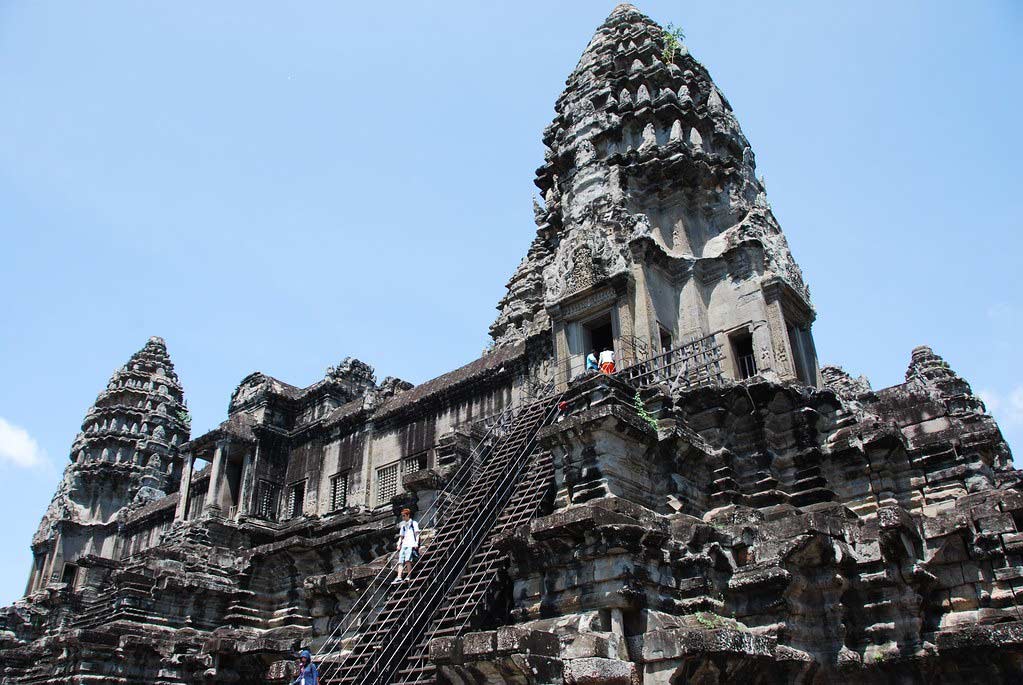
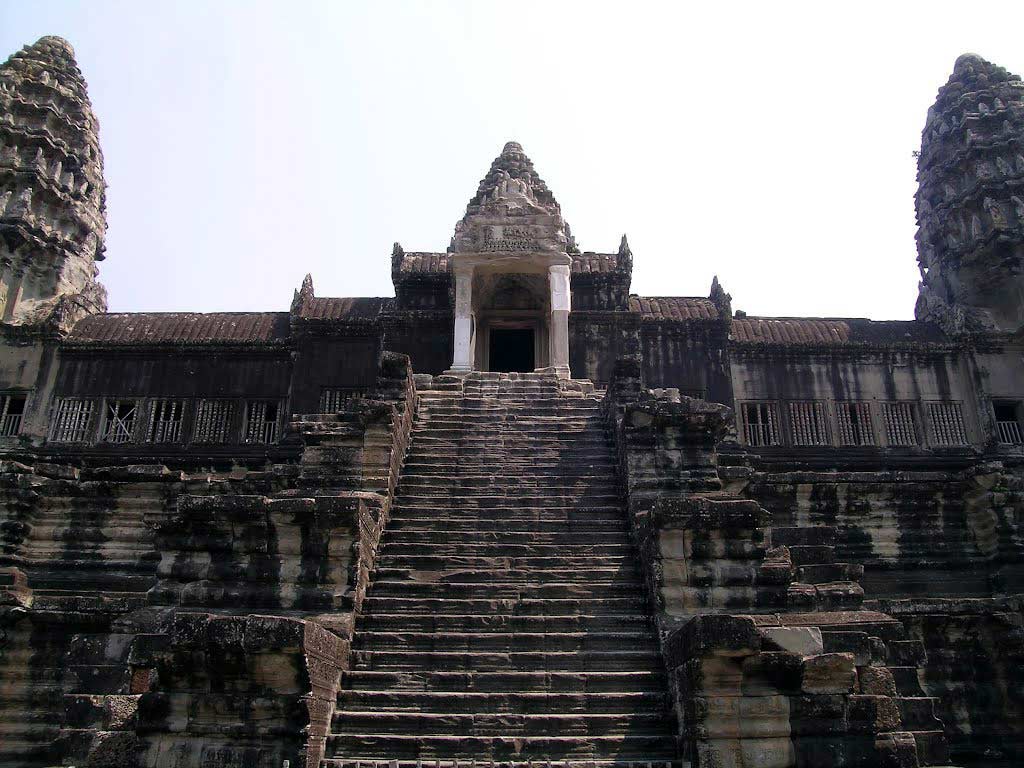
Angkor Wat displays a remarkable use of light and shade to create a sense of depth and perspective. The temple is oriented to the west, meaning it receives the most sunlight in the afternoon. The sunlight enhances the contrast between the light and dark areas of the walls and towers, creating a dramatic effect. The temple also has a complex system of windows, doors, and openings that allow natural light to enter and illuminate the interior spaces. The light and shade also highlight the details and textures of the carvings and sculptures, making them more vivid and realistic.
20. Big Ben
Big Ben is the nickname of the great bell inside the Elizabeth Tower, a clock tower at the north end of the Palace of Westminster in London. The name is often used to refer to the tower and the clock. The Big Ben is located in Westminster, Central London, next to the River Thames. It is part of the Houses of Parliament, the seat of the British government. The Big Ben was built between 1843 and 1859 to reconstruct the Palace of Westminster after a fire in 1834. Augustus Pugin designed the clock tower in a Gothic Revival style. The bell was cast in 1858 and first rang in 1859.
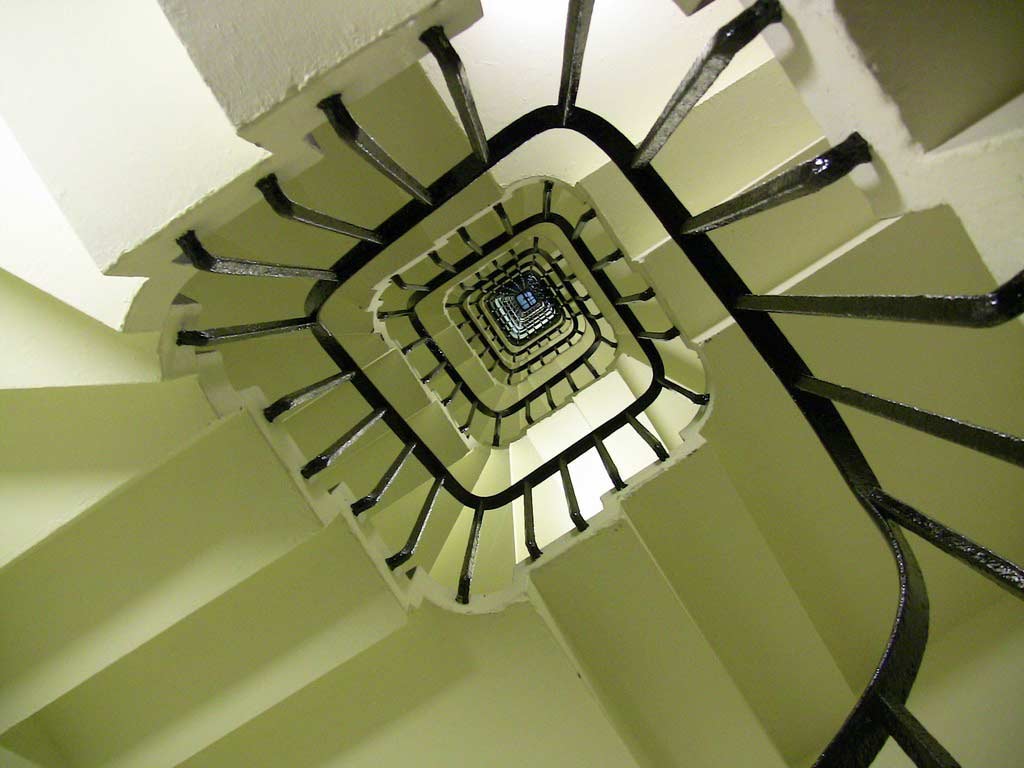
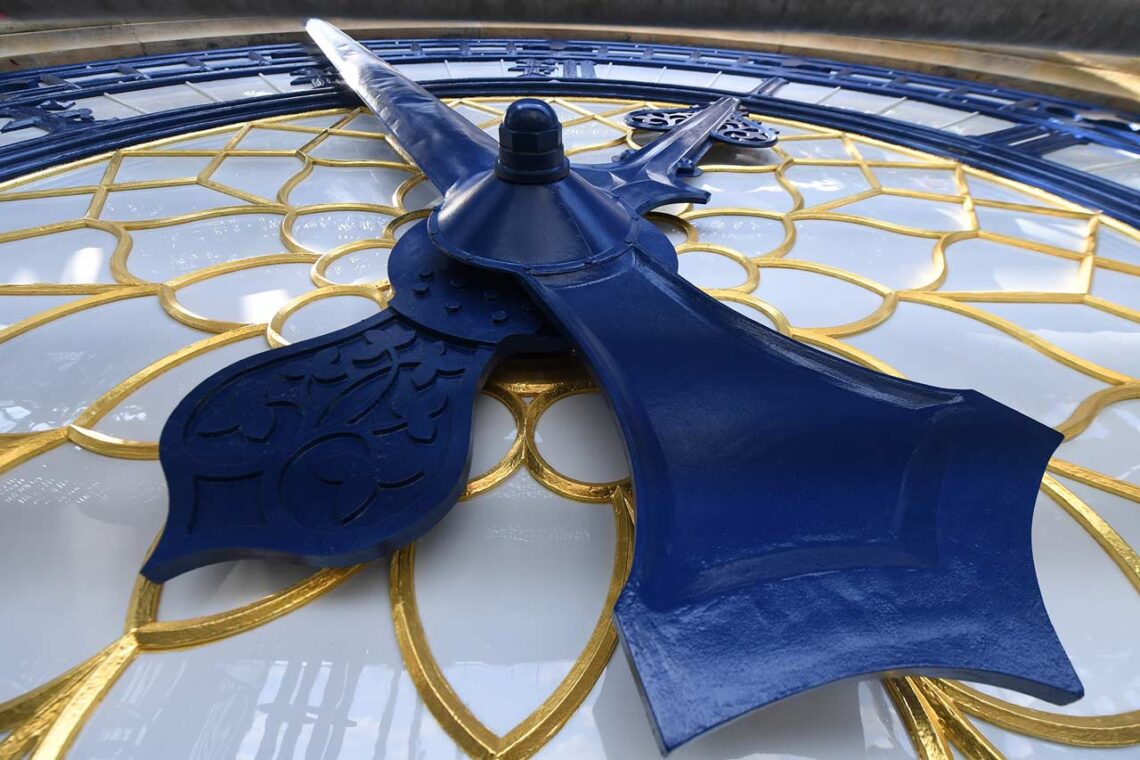
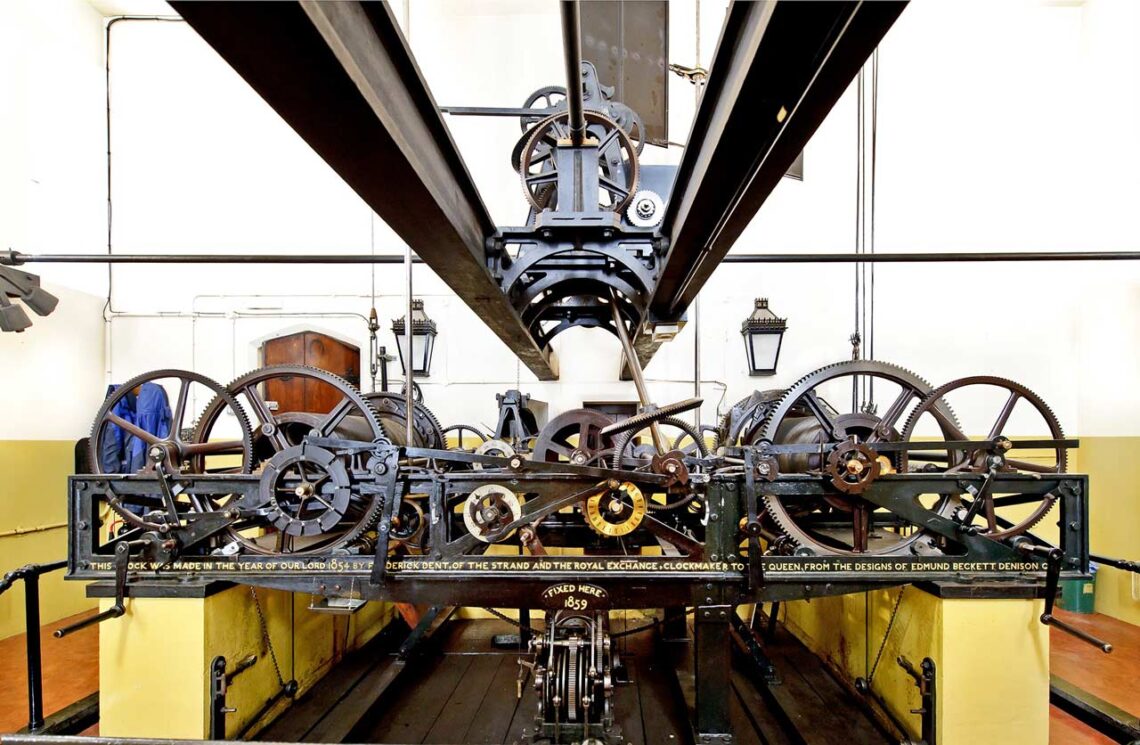

The Big Ben represents the Perpendicular Gothic style, a late medieval architectural trend that originated in England. The style is characterized by vertical lines, elaborate tracery, fan vaults, and large windows. It is one of the most prominent examples of this style in the 19th century. The historical design influences visible in Big Ben include the symbols of the four nations of the United Kingdom: the rose for England, the thistle for Scotland, the shamrock for Ireland, and the leek for Wales. The tower also features the Tudor rose, the portcullis, and the crown, emblems of the royal authority and the Parliament. The Latin inscription on the clock face reads “Domine salvam fac Reginam nostram Victoriam Primam,” which means “O Lord, keep safe our Queen Victoria the First.” The unique lighting and shading techniques in Big Ben include the illumination of the clock faces at night, which makes them visible from a distance. The clock faces are also lit by a special light above them when the Parliament is in session, indicating the activity of the government. The clock tower also casts a long shadow over the surrounding buildings, contrasting the light and dark areas.
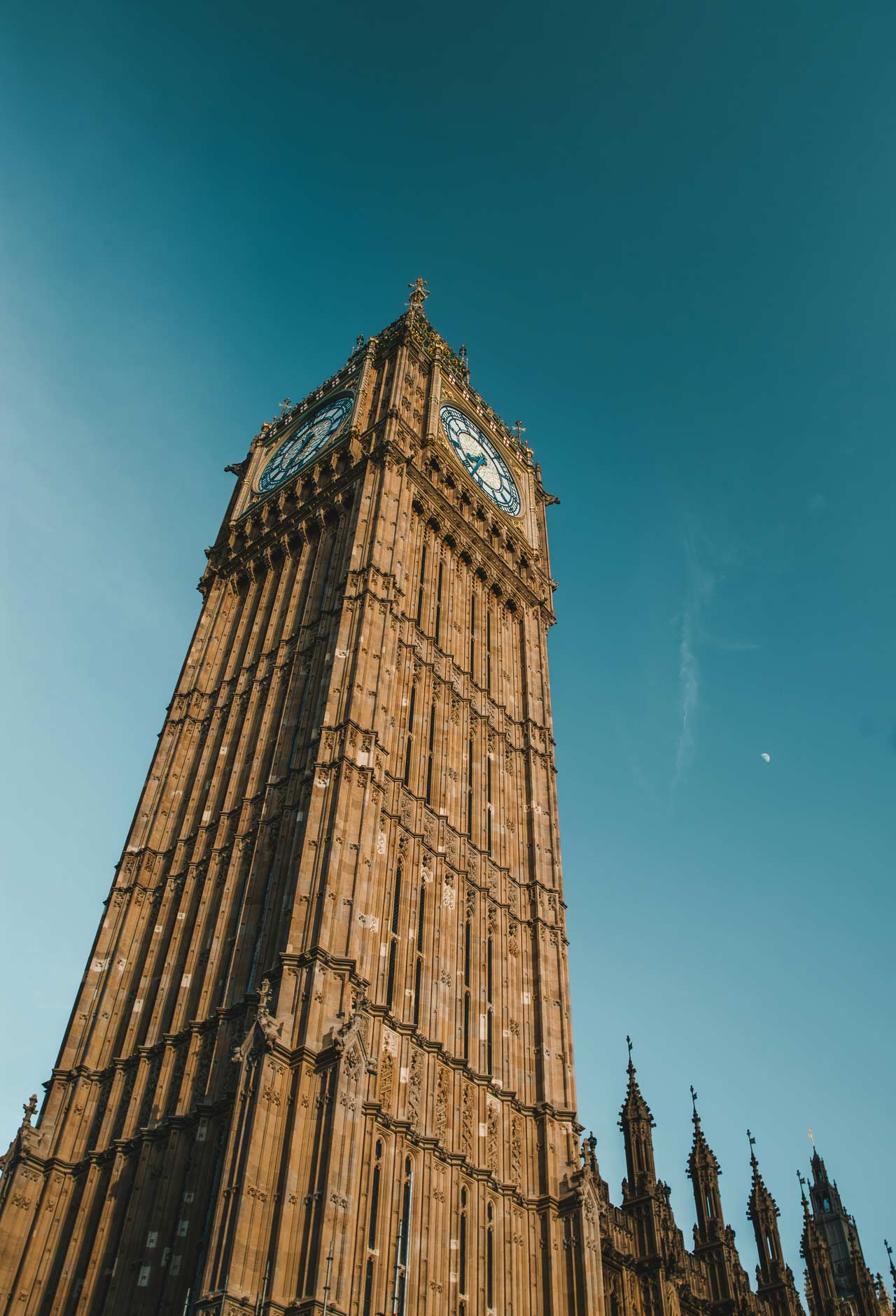
21. Hagia Sophia
The Hagia Sophia is a mosque and a major cultural and historical site in Istanbul, Turkey. It was originally built as a Christian basilica nearly 1,500 years ago by the Byzantine emperor Justinian I. It is considered the most important Byzantine structure in the world and one of its great monuments. The Hagia Sophia is located in the Fatih district of Istanbul, on the European side of the city. It is near Sultanahmet Square, where famous landmarks such as the Blue Mosque and the Topkapi Palace are also located. The Hagia Sophia was built between 532 and 537 AD under the direction of Justinian I, who wanted to create a magnificent church that would surpass the previous ones destroyed by riots and fires. The construction took only five years, which was remarkably fast for such a large and complex building. The architects were Isidore of Miletus and Anthemius of Tralles, experts in geometry and engineering.
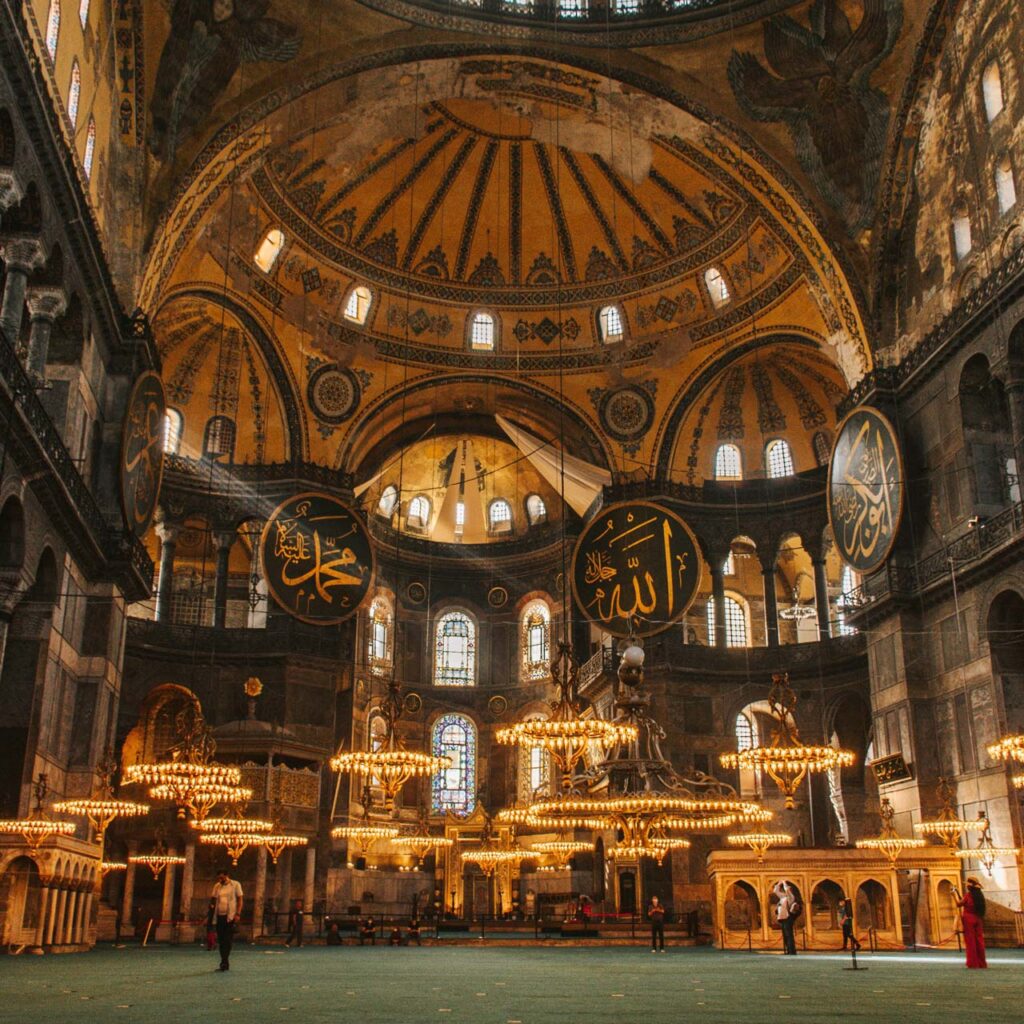
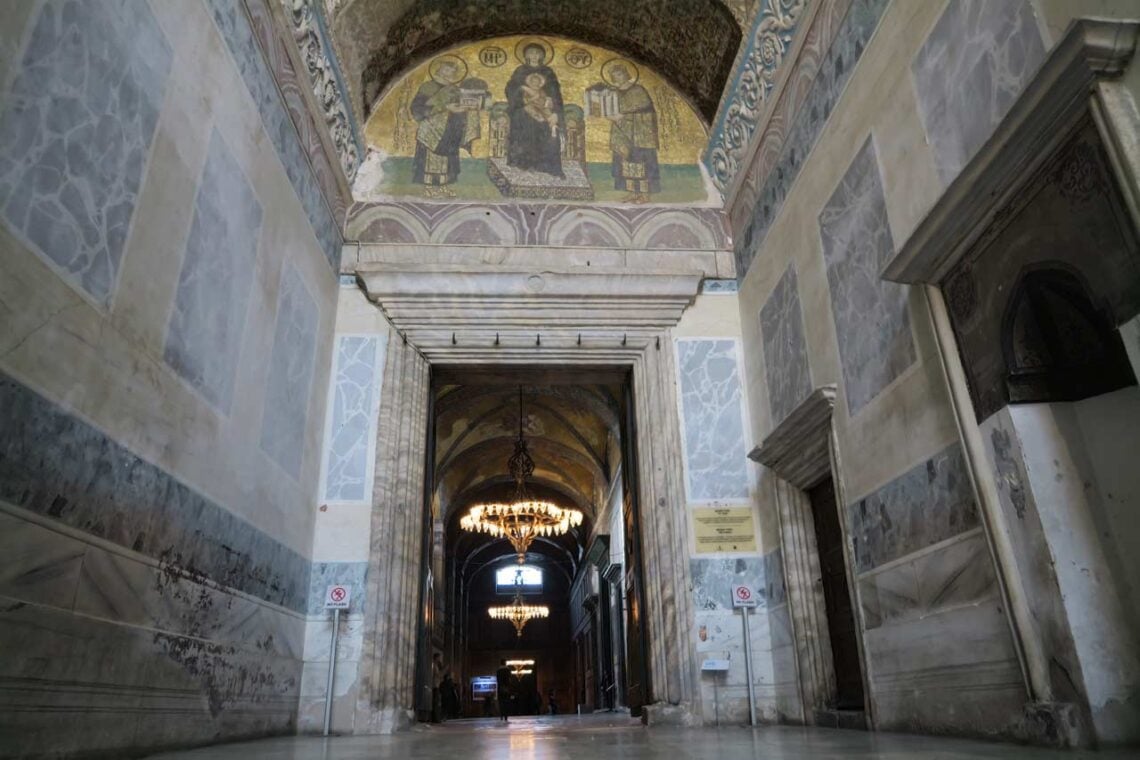
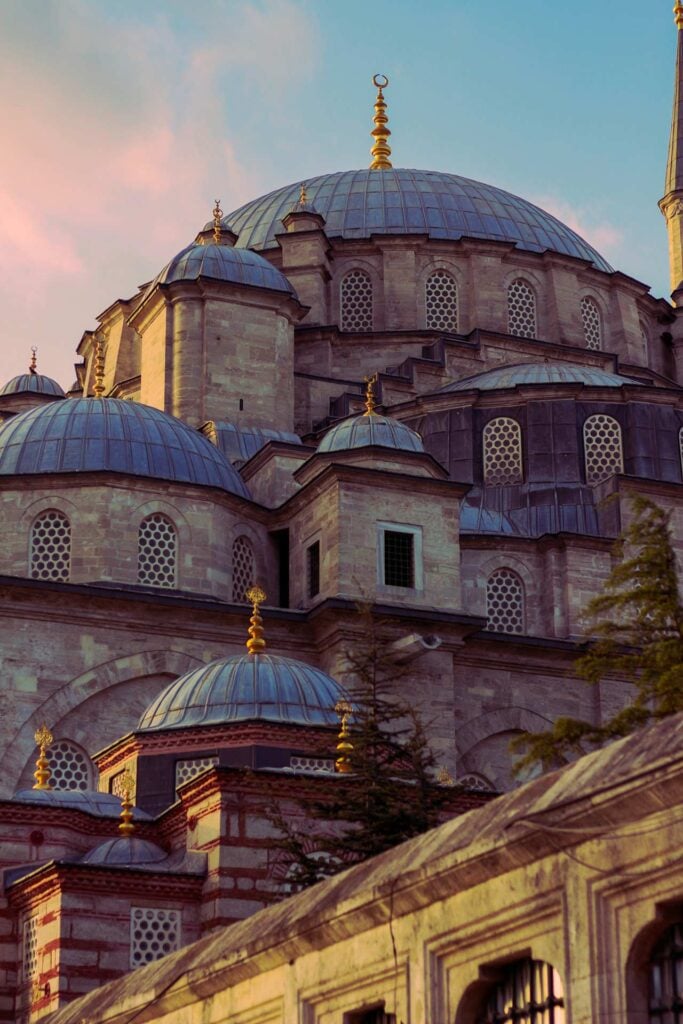
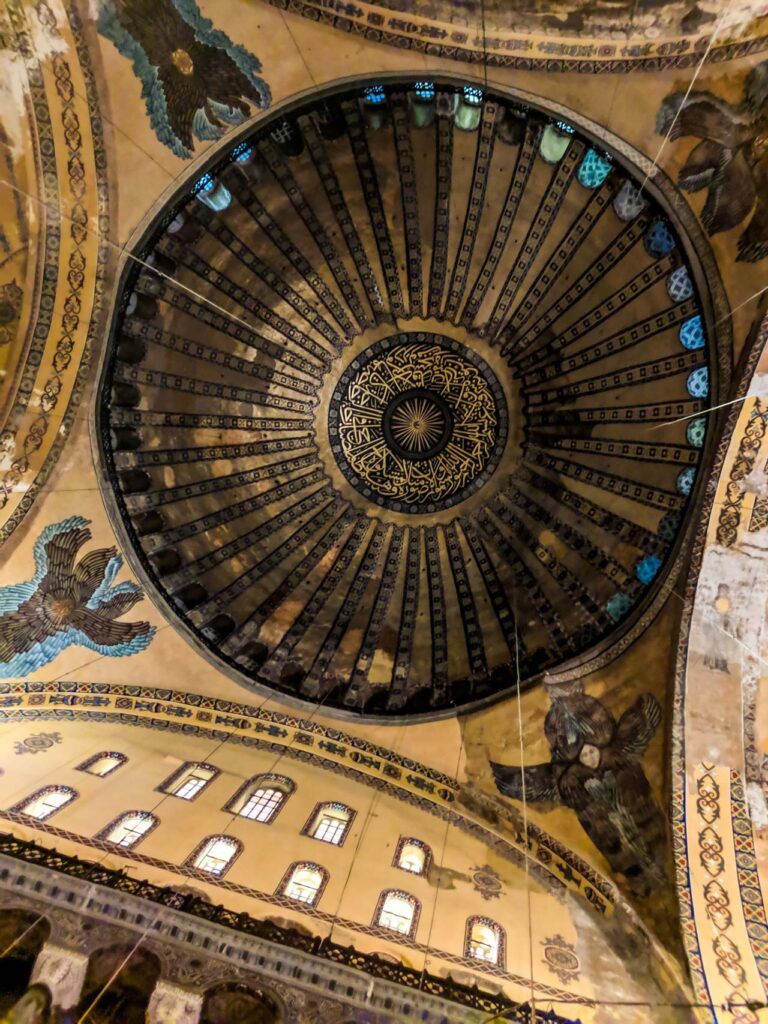
The Hagia Sophia represents the Byzantine architectural style, influenced by Roman and Eastern traditions. The most distinctive feature of the Hagia Sophia is its dome, which is supported by four massive pendentives that transfer the weight to four piers. The dome has a diameter of 102 feet (31 meters) and a height of 180 feet (55 meters), making it one of the largest domes in the world. The dome creates a sense of spaciousness and lightness inside the building and symbolizes heaven. The Hagia Sophia also shows the historical design influences of various cultures and religions that have occupied the building over the centuries. The original Christian mosaics, which depict scenes from the Bible and portraits of emperors and saints, were covered or removed by the Ottomans, who converted the church into a mosque in 1453. The Ottomans added Islamic elements, such as minarets, mihrab, minbar, and calligraphic panels with Allah, Muhammad, and the first four caliphs. Some mosaics were uncovered and restored in the 20th century when the building became a museum in 1935. In 2020, the Hagia Sophia was reopened as a mosque, but the mosaics were not removed again, only covered during prayer times.
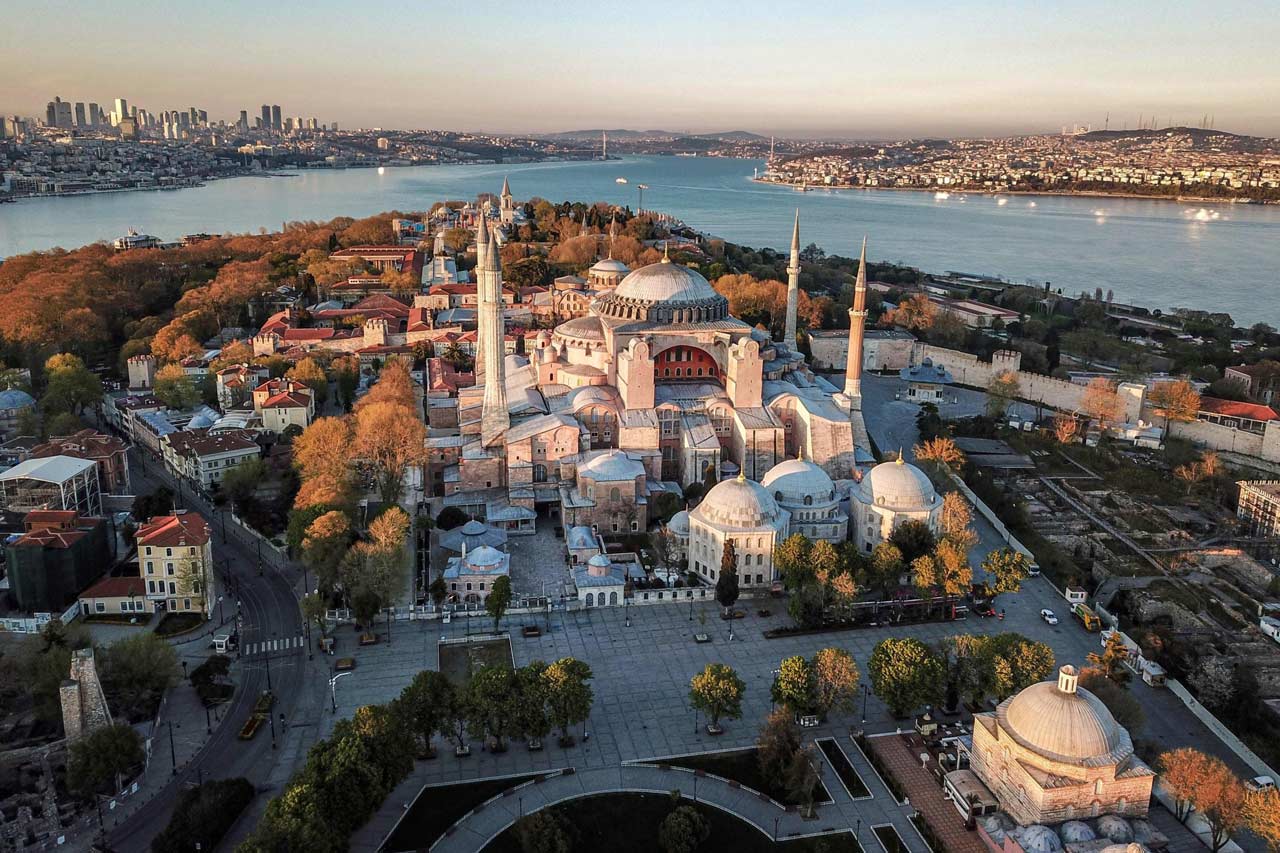
The Hagia Sophia also has unique lighting and shading techniques that create a mystical and spiritual atmosphere. The dome has 40 windows around its base, which allow natural light to enter and illuminate the interior. The light reflects on the gold and silver decorations and the marble surfaces, creating a glowing effect. The light also changes throughout the day and the seasons, creating different moods and colors. The shading is achieved by using curtains and lamps, which can contrast the light and the dark areas. The lamps also enhance the acoustics of the building, as they are hung from chains that act as sound absorbers.
22. Neuschwanstein Castle
Neuschwanstein Castle is a 19th-century historicist palace built by King Ludwig II of Bavaria. It is located on a rugged hill in the foothills of the Alps in the south of Germany, just north of Austria. The castle stands above the narrow gorge of the Pöllat stream, east of the Alpsee and Schwansee lakes, close to the mouth of the Lech River. The closest larger town is Füssen, which is 2.5 miles (4 kilometers) away. The construction of the castle began in 1869 but was never completed. The castle was intended to serve as a private residence for the king, but he died in 1886 and was opened to the public shortly after his death with only a dozen rooms ever finished.
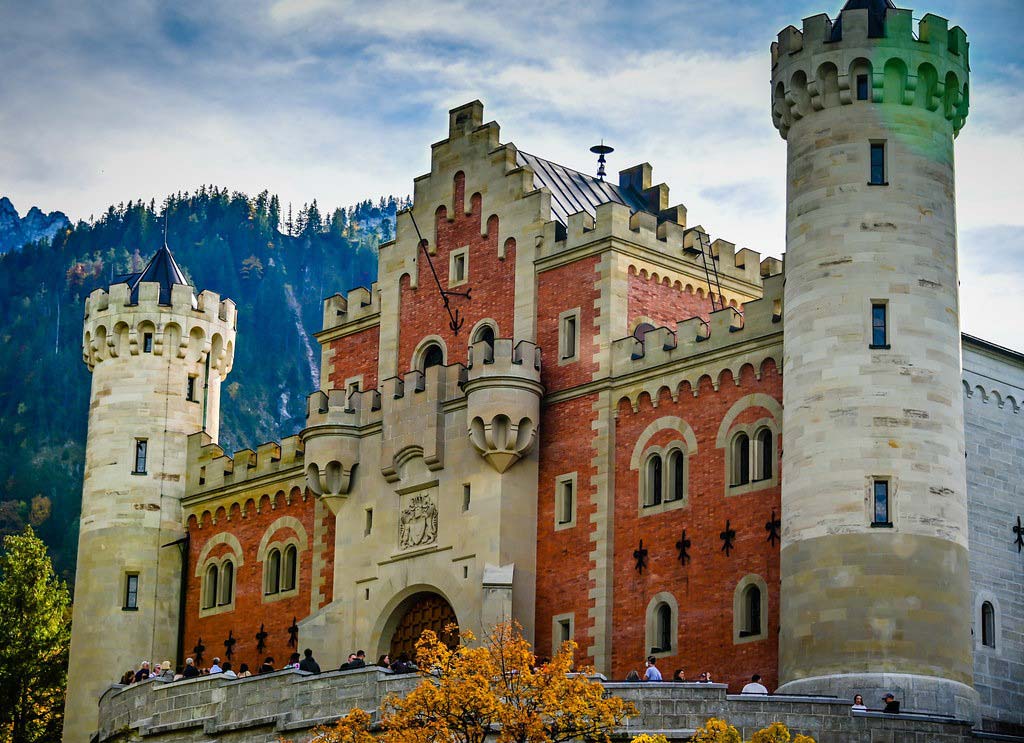
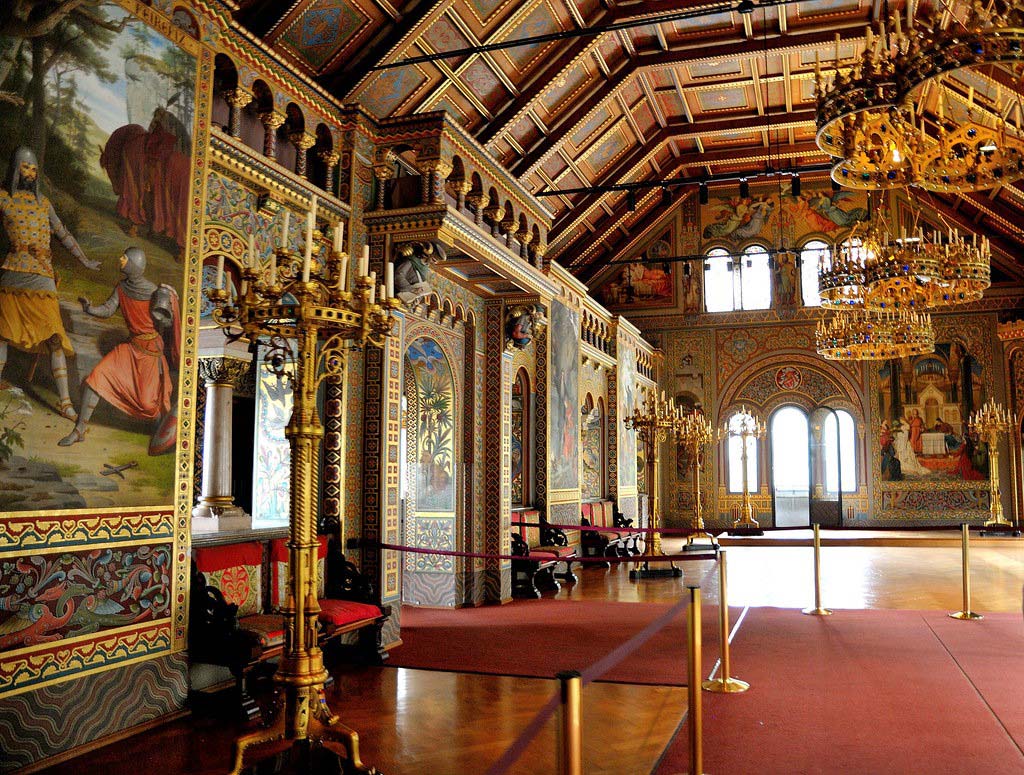
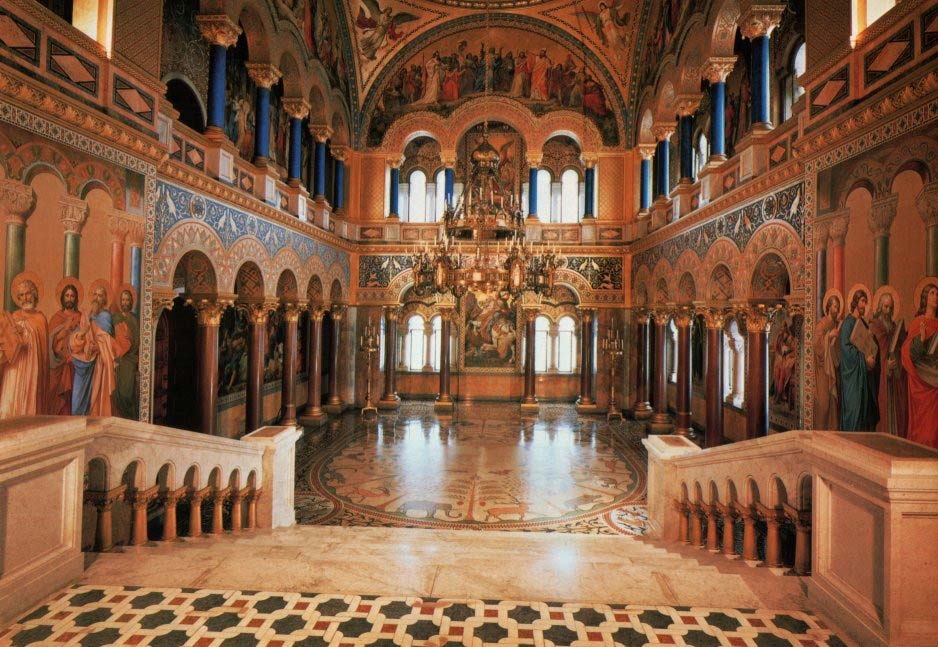
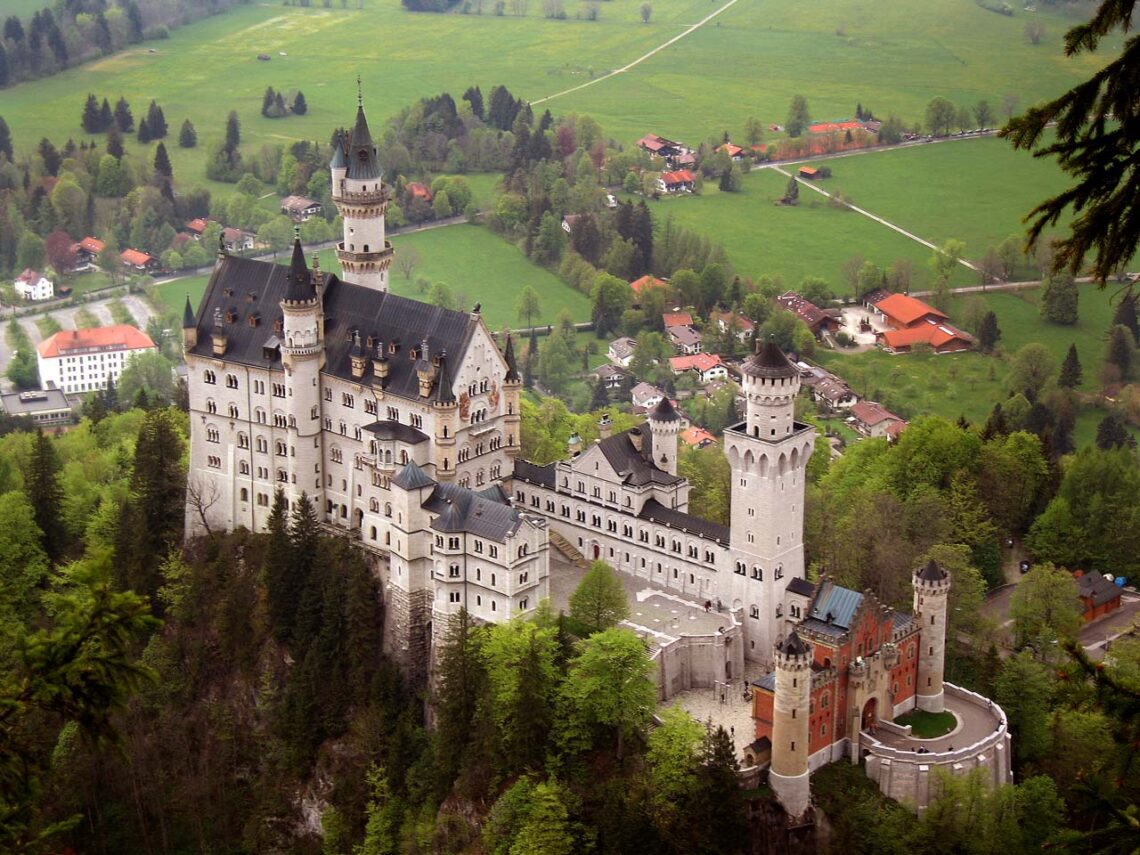
Neuschwanstein Castle represents the Romanesque Revival style, also known as neo-Romanesque, which was popular in Europe in the 19th century. It is characterized by round arches, towers, and decorative arcades. Neuschwanstein Castle was inspired by the medieval castles of Germany, France, and Spain’s Byzantine and Moorish architecture. The king also wanted to pay homage to the composer Richard Wagner, whom he greatly admired, and incorporated elements from his operas and characters into the castle’s design. Neuschwanstein Castle has a sophisticated lighting system that uses gas, oil, and electric lamps. The gas lamps were connected to a central gasworks in the basement, and the electric lamps were powered by a dynamo machine. Switches or timers could control the lamps, and some rooms had dimmers to adjust the brightness. The castle also has large windows and skylights that allow natural light to enter, contrasting light and shadow.
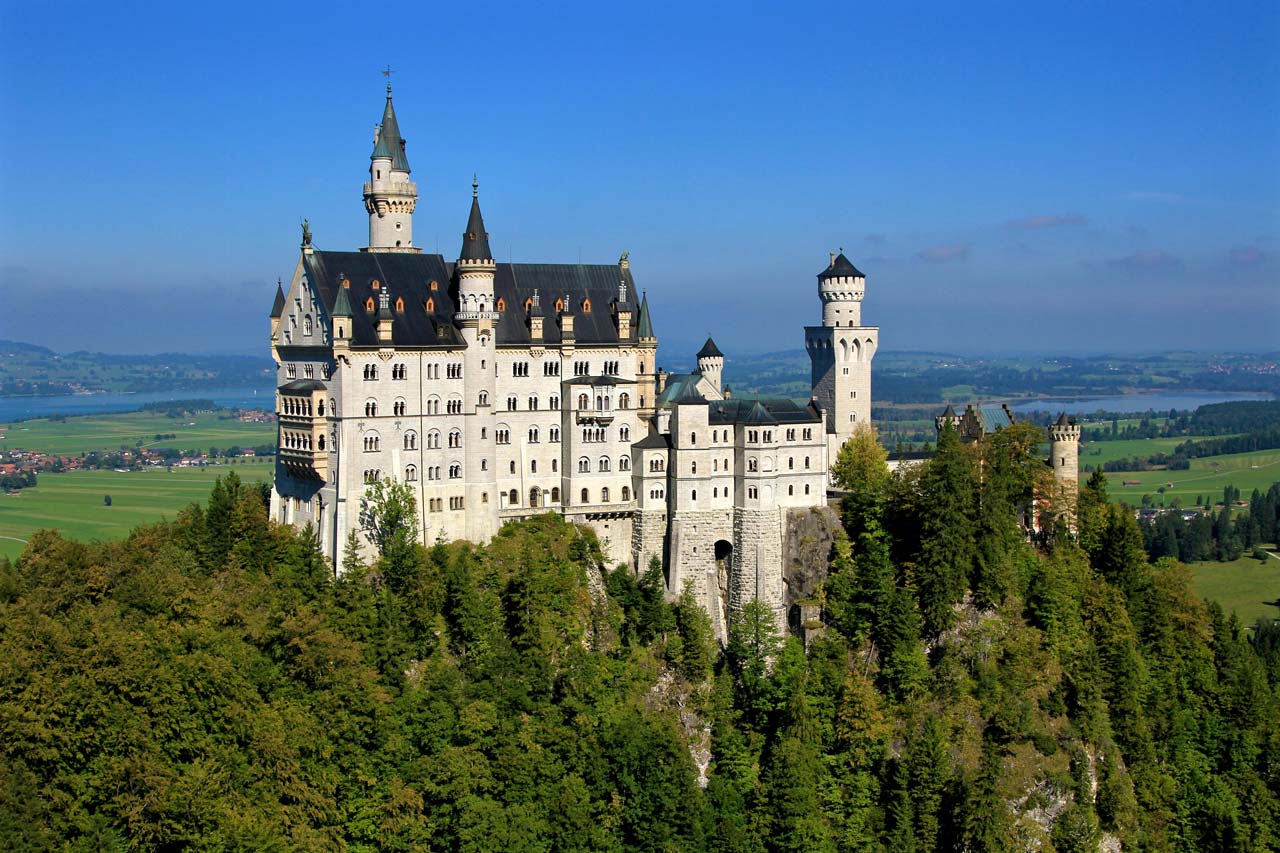
23. Fallingwater
The Fallingwater is a house built partly over a waterfall on Bear Run, a tributary of the Youghiogheny River, in southwestern Pennsylvania. It was designed as a weekend home for the Kaufmann family, who owned a department store in Pittsburgh. The house is considered one of the most famous examples of Wright’s organic architecture, which aims to create a harmonious relationship between nature and human-made structures. The Fallingwater is located in the Mill Run section of Stewart Township, Fayette County, Pennsylvania, 70 miles (113 kilometers) southeast of Pittsburgh. It is in the Laurel Highlands of the Allegheny Mountains, a region known for its scenic beauty and diverse forests. The house is now owned and operated by the Western Pennsylvania Conservancy, a nonprofit organization that preserves natural and historic sites. The Fallingwater was built between 1936 and 1939. Wright designed the house in 1935 after being commissioned by Edgar J. Kaufmann, the owner of Kaufmann’s Department Store, and his wife Liliane. Their son, Edgar Kaufmann Jr., was a student of Wright’s at his Taliesin Fellowship in Wisconsin, and he introduced his parents to the architect. Wright visited the site in 1935 and was inspired by the waterfall and the rock formations. He presented his drawings to the Kaufmanns in 1936, and the construction began later that year. The main house was completed in 1937, and the guest house was added in 1939.

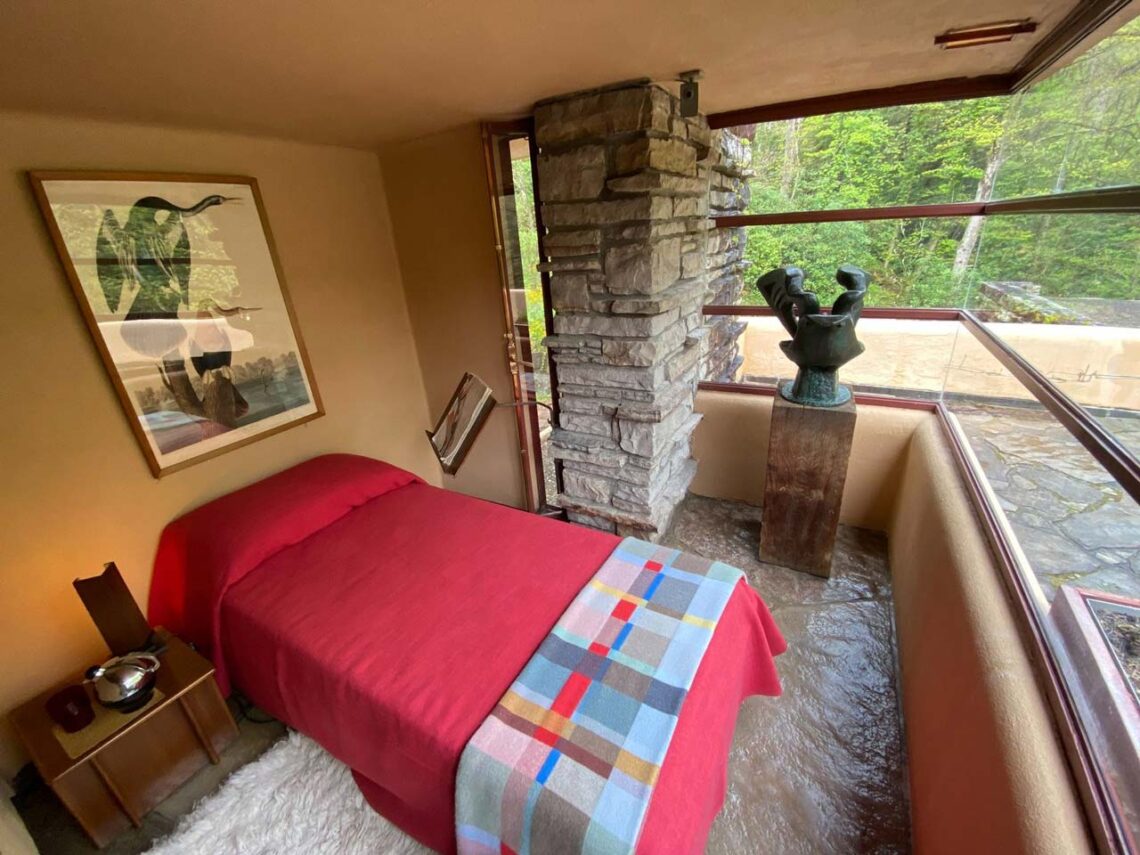
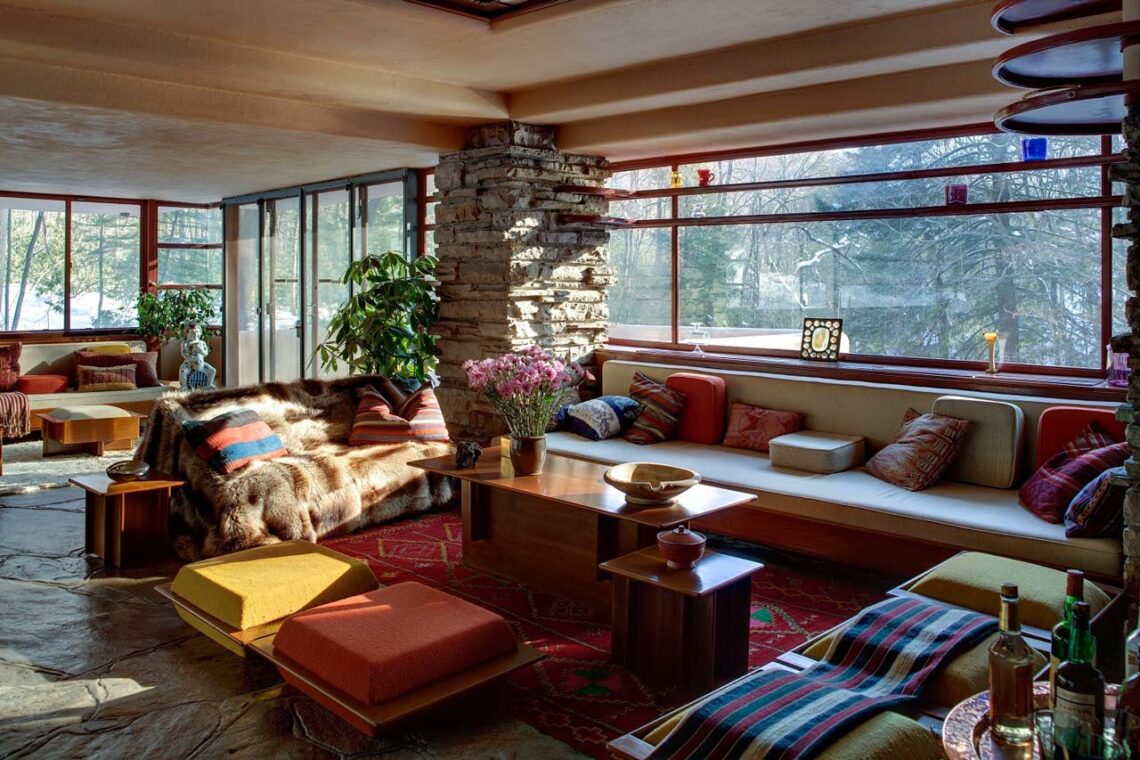
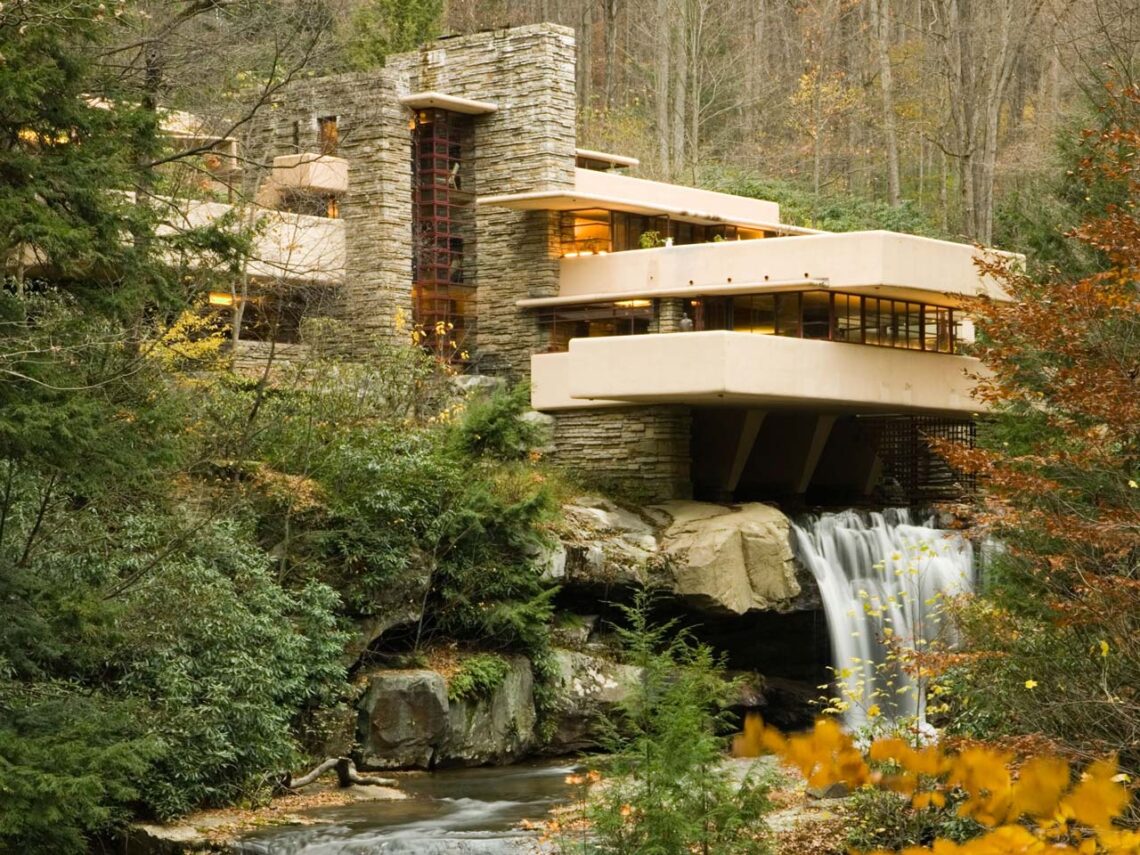
The Fallingwater represents the architectural trend or movement of organic architecture, pioneered by Wright and influenced by his mentor Louis Sullivan. Organic architecture is a philosophy that seeks to integrate the natural environment and the human-made structure, using materials, forms, and colors derived from nature. Organic architecture also emphasizes the individuality and creativity of the architect, as well as the client’s needs and preferences. Wright believed that organic architecture could enhance the quality of life and the spiritual connection of the inhabitants with nature. The Fallingwater shows the historical design influences of Wright’s previous works and those of other architects and cultures he admired. Some of the influences seen in Fallingwater are Wright’s Prairie School style, which he developed in the early 20th century and features horizontal lines, low-pitched roofs, open floor plans, and large windows that create a sense of spaciousness and continuity with the landscape. Wright’s Usonian style, which he developed in the 1930s, features modest and affordable houses adapted to the climate and the site, using local materials, radiant heating, and passive solar design. Wright’s Japanese influence, which he acquired from his visits to Japan and his admiration for its architecture and art, especially the woodblock prints of Hiroshige and Hokusai. Wright was impressed by the Japanese sense of balance, harmony, and simplicity, as well as their use of cantilevers, sliding doors, and screens.

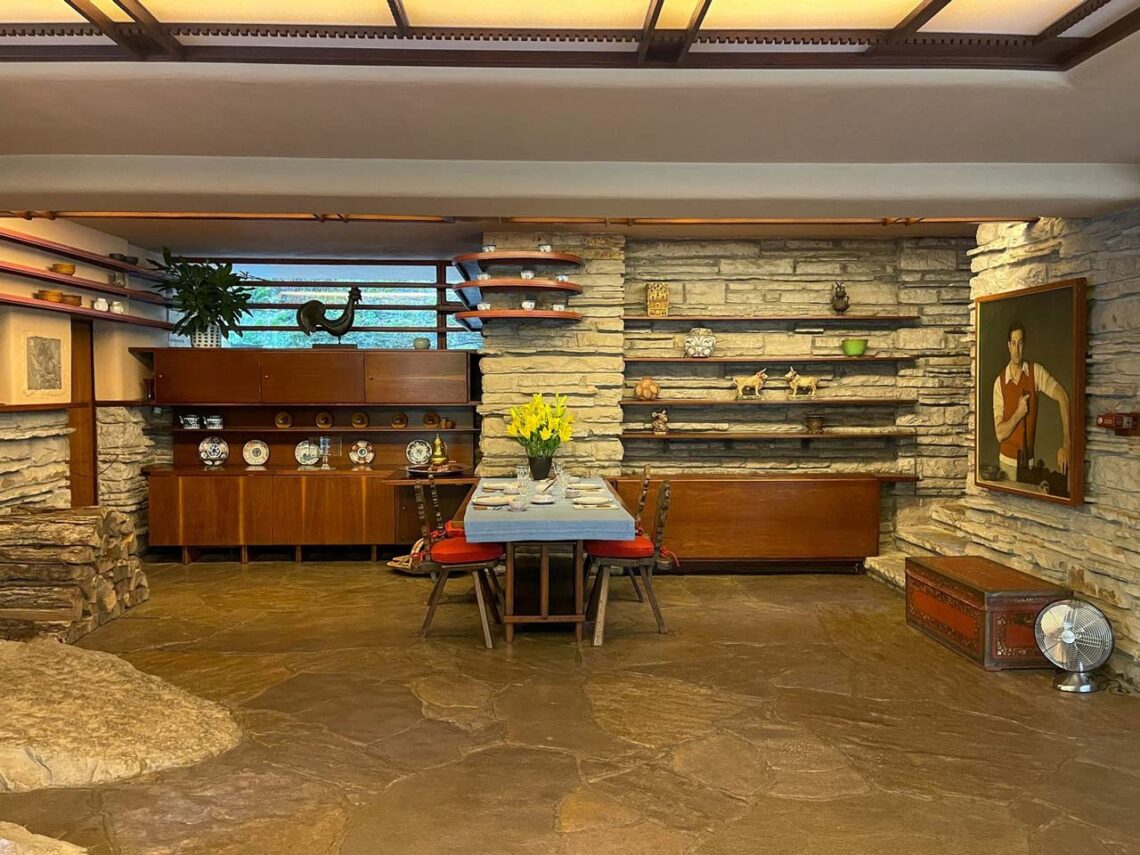
24. Flatiron Building
The Flatiron Building is a triangular 22-story steel-framed New York City skyscraper completed in 1902. It is one of the city’s oldest surviving skyscrapers and a landmark of the Flatiron District neighborhood. The Flatiron Building is located at 175 Fifth Avenue, at the intersection of Fifth Avenue, Broadway, and East 22nd Street. The building’s 87-foot back end is on East 22nd Street, while its northern peak is on East 23rd Street. The Flatiron Building was built between 1901 and 1902 by the Fuller Company, a construction firm that acquired the site from the Newhouse family. The building was originally named the Fuller Building, but it soon became known as the Flatiron Building because of its resemblance to a cast-iron clothes iron.
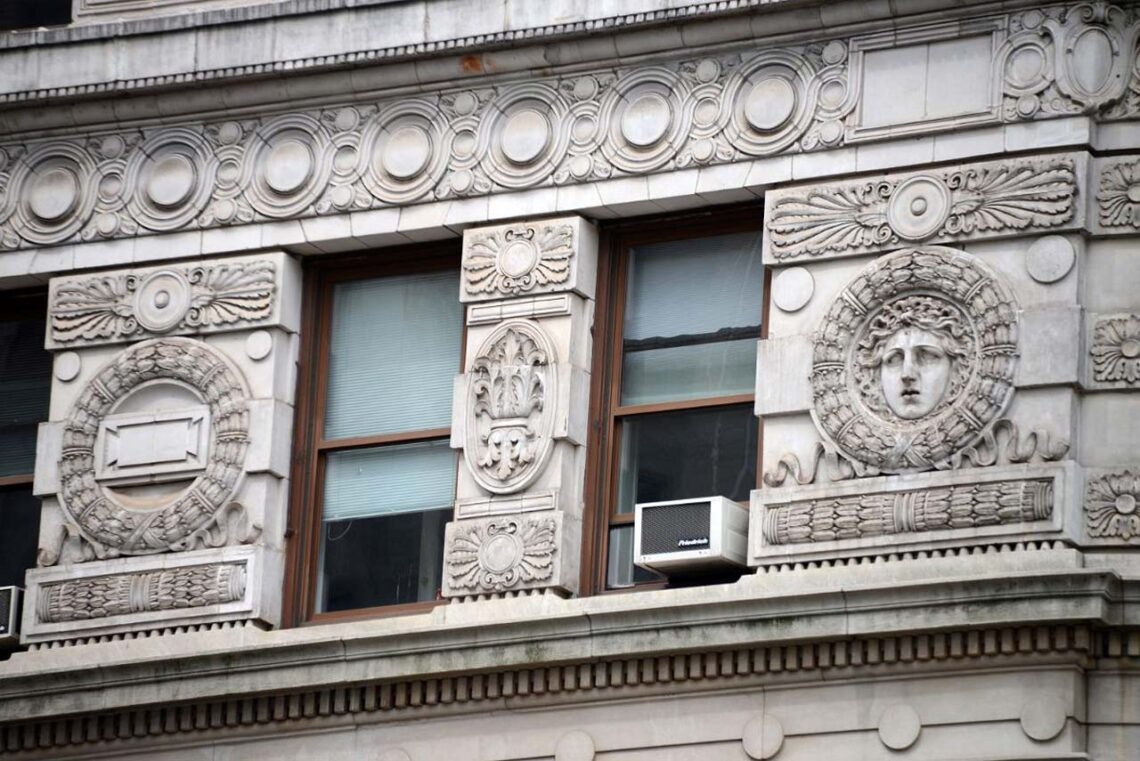
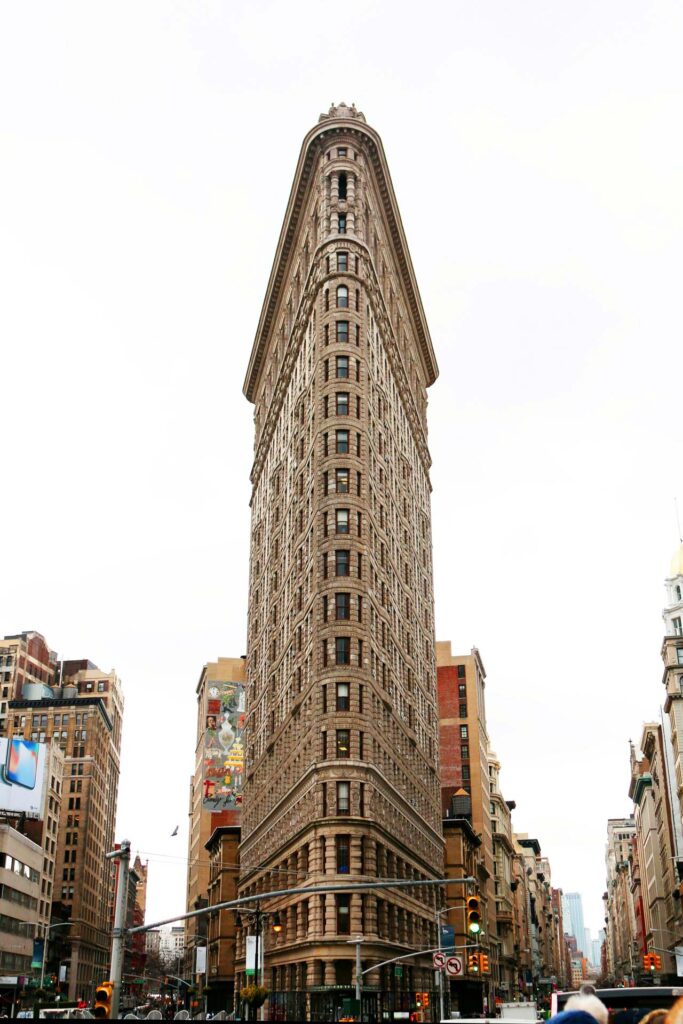
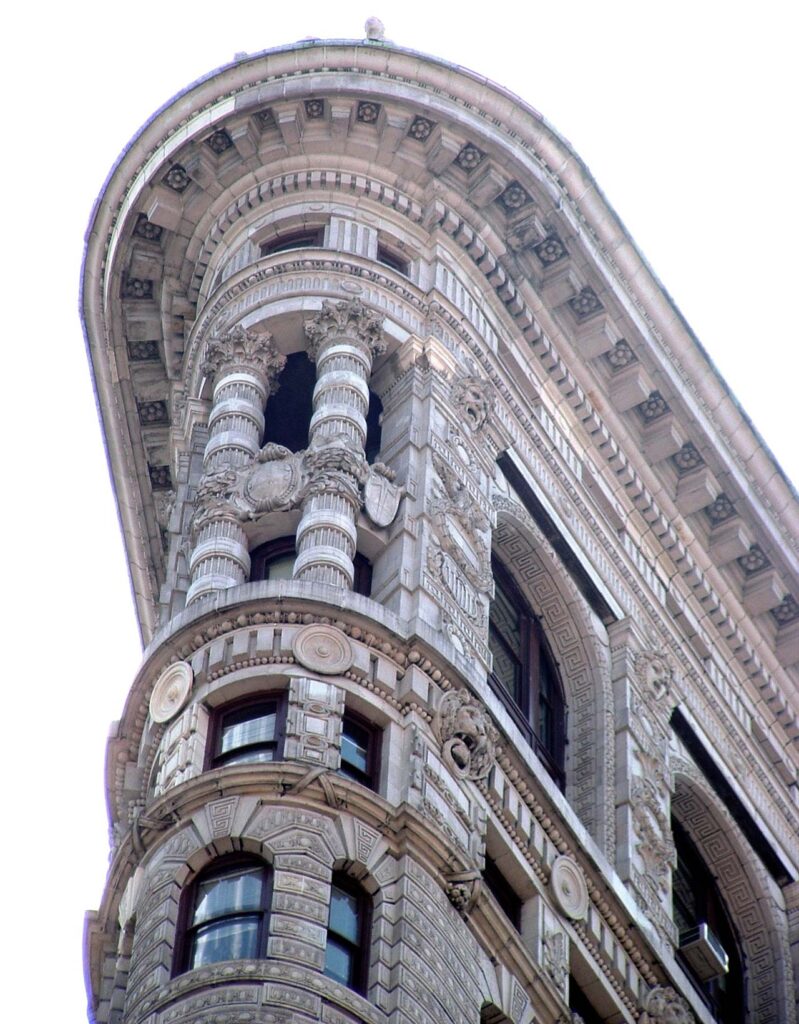
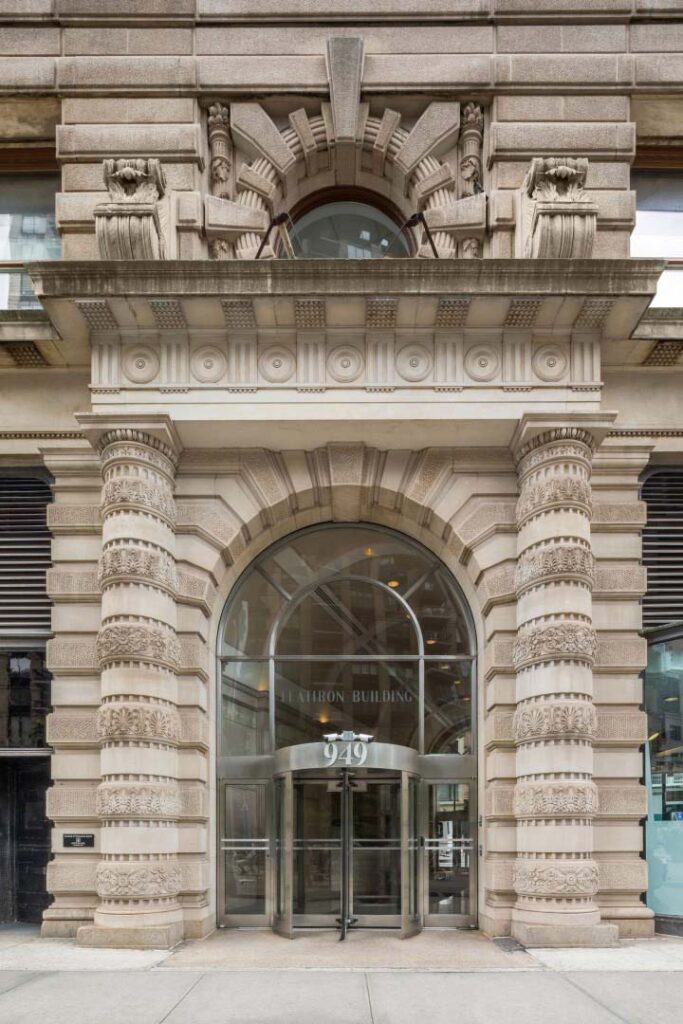
The Flatiron Building represents the architectural trend of Beaux-Arts Classicism, which was popular in the United States at the turn of the 20th century. Beaux-Arts Classicism was influenced by the French academic style of architecture, which emphasized symmetry, proportion, and ornamentation. The Flatiron Building shows historical design influences from the Italian Renaissance and the Chicago School of Architecture. The building’s facade is divided vertically into three sections, similar to the components of a classical column: a base, a shaft, and a capital. The base is made of limestone and has arched windows and decorative details. The shaft is made of terracotta and has rectangular windows and a grid-like pattern. The capital is made of metal and has a projecting cornice and a one-story penthouse. The building also has a steel frame, a new technology that allows for large windows and a slender structure.
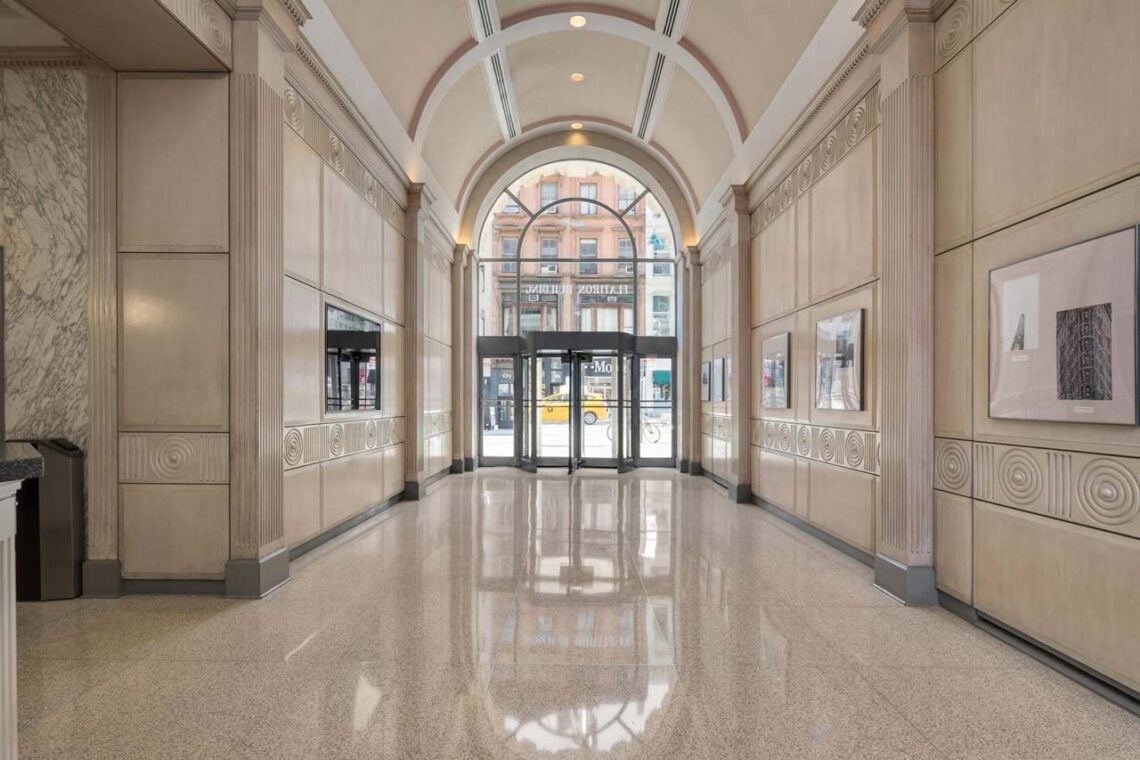
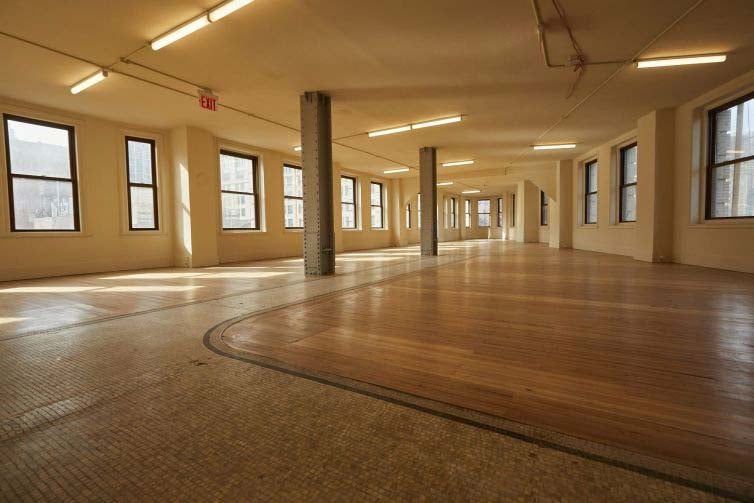
The Flatiron Building has unique lighting and shading techniques that create a dynamic and dramatic effect. The building’s triangular shape and curved facade reflect and refract the sunlight at different daytime angles. The building also casts long shadows on the surrounding streets and buildings, especially in the morning and evening. Its lighting and shading have inspired many photographers and artists, such as Alfred Stieglitz, Edward Steichen, and Childe Hassam.
25. Sydney Opera House
The Sydney Opera House is a multi-venue performing arts center in Sydney, New South Wales, Australia. It is regarded as one of the world’s most famous and distinctive buildings and a masterpiece of 20th-century architecture. The Sydney Opera House is located on the foreshore of Sydney Harbour, on Bennelong Point, adjacent to the Sydney central business district and the Royal Botanic Gardens. The Sydney Opera House was built between 1959 and 1973 after Danish architect Jørn Utzon won an international competition to design it in 1957. Queen Elizabeth II formally opened the building on 20 October 1973.
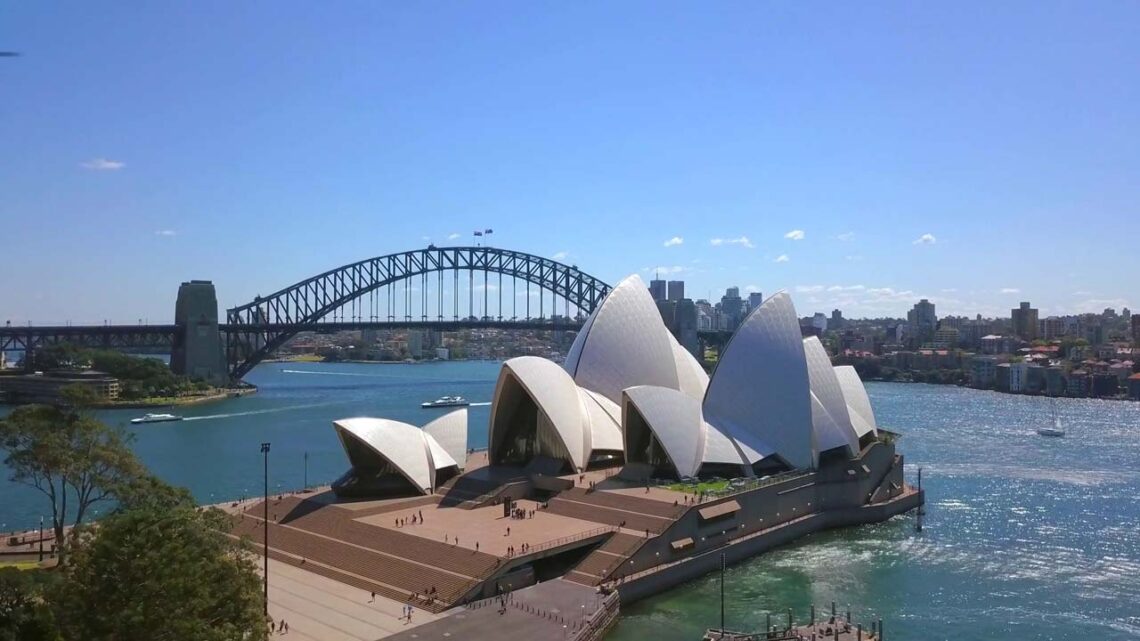
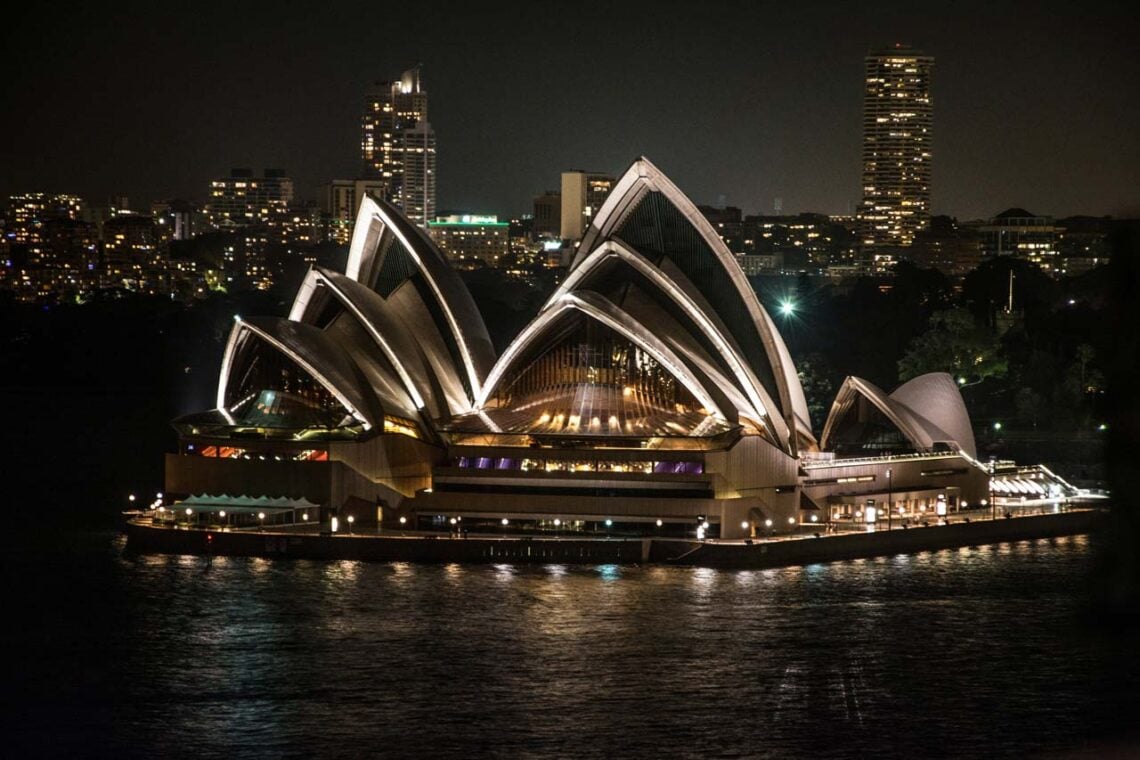
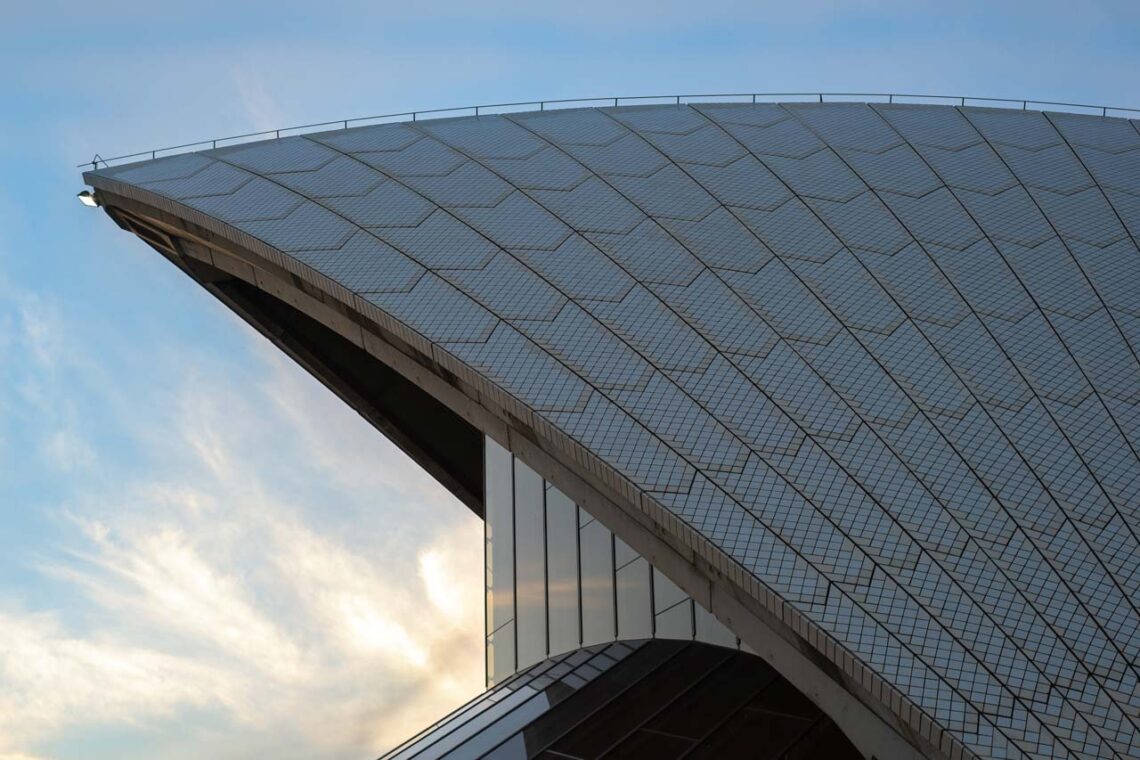
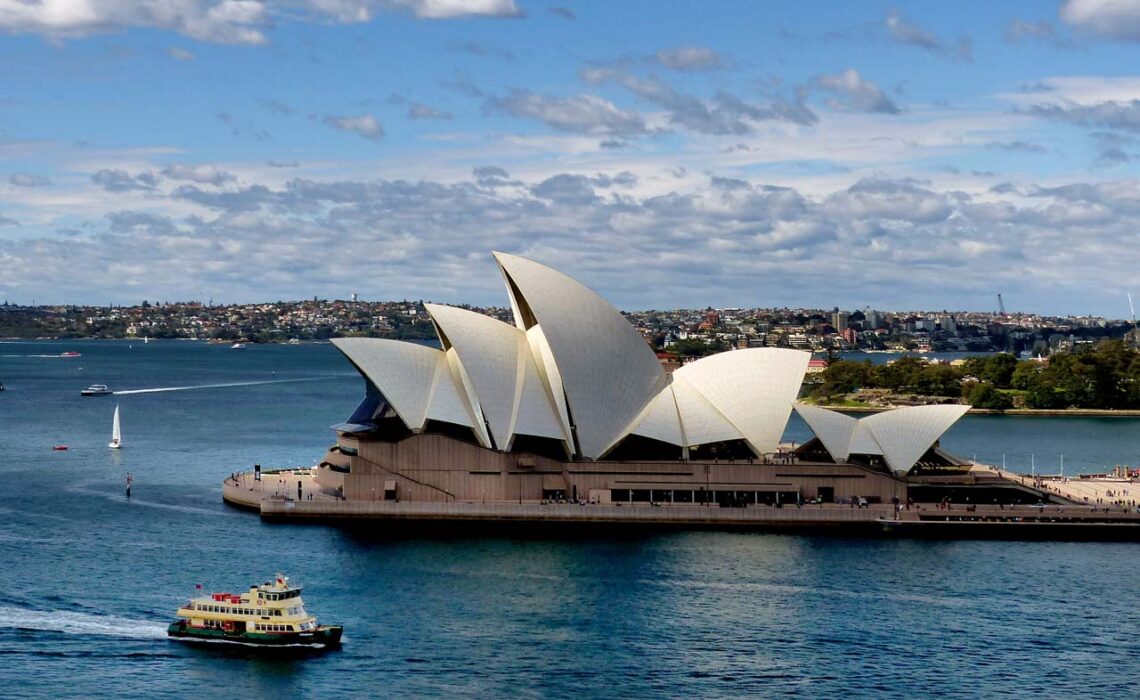
The Sydney Opera House represents the architectural trend or movement of expressionism, characterized by organic forms, dynamic shapes, and emotional effects. The building’s design was inspired by the sails of ships, the shells of marine creatures, and the segments of oranges. The historical design influences visible in the Sydney Opera House include the Mayan use of platforms, the Chinese method of additive architecture, and the Scandinavian tradition of craftsmanship. Utzon was influenced by these cultures and their techniques of building with prefabricated elements, platforms, and natural materials.
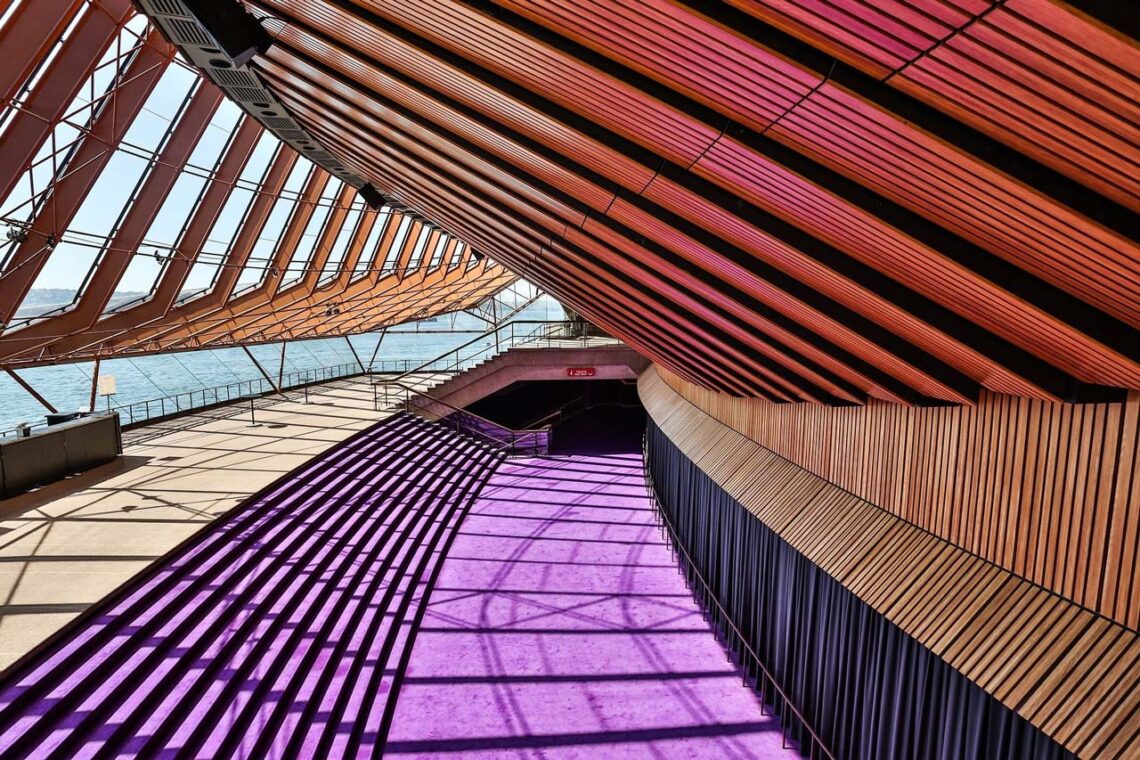
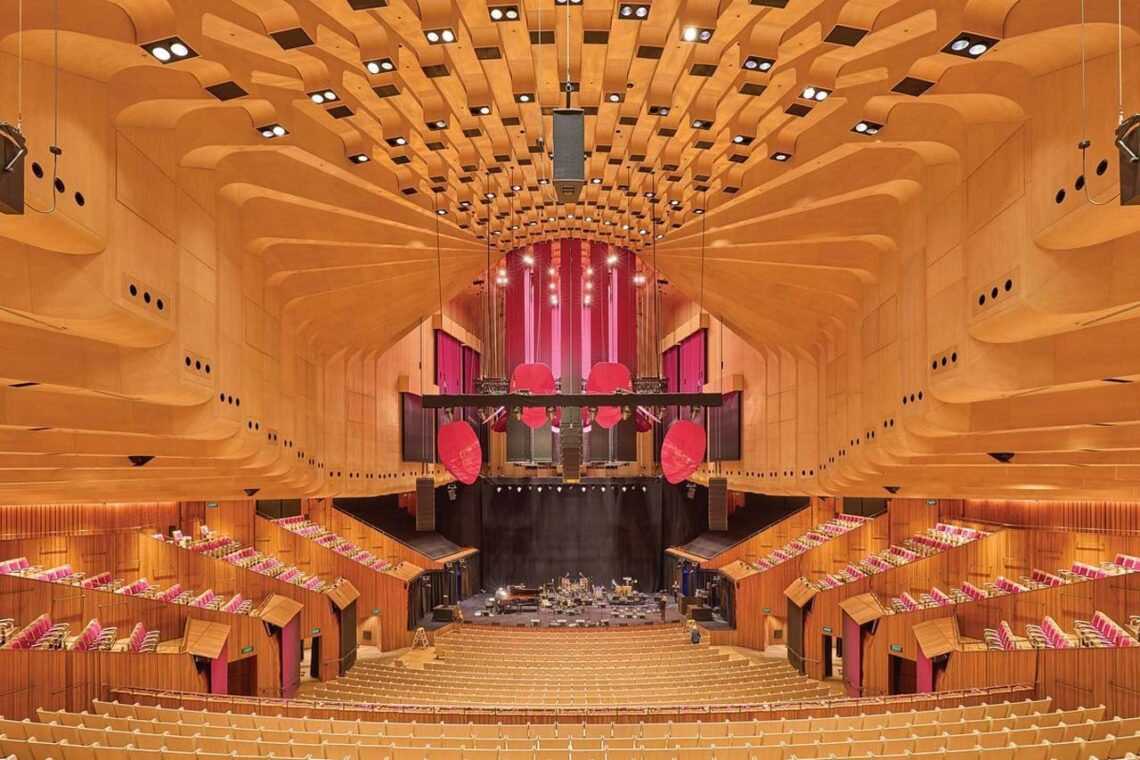
The unique lighting and shading techniques in the Sydney Opera House include using natural light, artificial light, and projection mapping to highlight the building’s structure and create theatrical effects. The building’s shells are covered with white tiles that reflect the changing colors of the sky and the water, while the interior spaces are illuminated by various types of lamps and fixtures that enhance the mood and ambiance of the performances. Its exterior is also used as a canvas for projection mapping, which is a technique of projecting images and animations onto the surface of the building, creating spectacular visual shows.
26. The White House
The White House is the official residence and workplace of the President of the United States. It is a white-colored neoclassical building with three floors and more than 100 rooms. It is on a plot of land that covers about 7.3 hectares (18 acres). The construction of the White House began in 1792, and it was first occupied by President John Adams in 1800. The original design was by Irish-born architect James Hoban, who modeled it after an Anglo-Irish villa in Dublin called the Leinster House. The White House was burned by the British in 1814 and rebuilt by Hoban in 1817. It has undergone several renovations and expansions since then, such as adding the entrances, the Truman balcony, and the Oval Office.

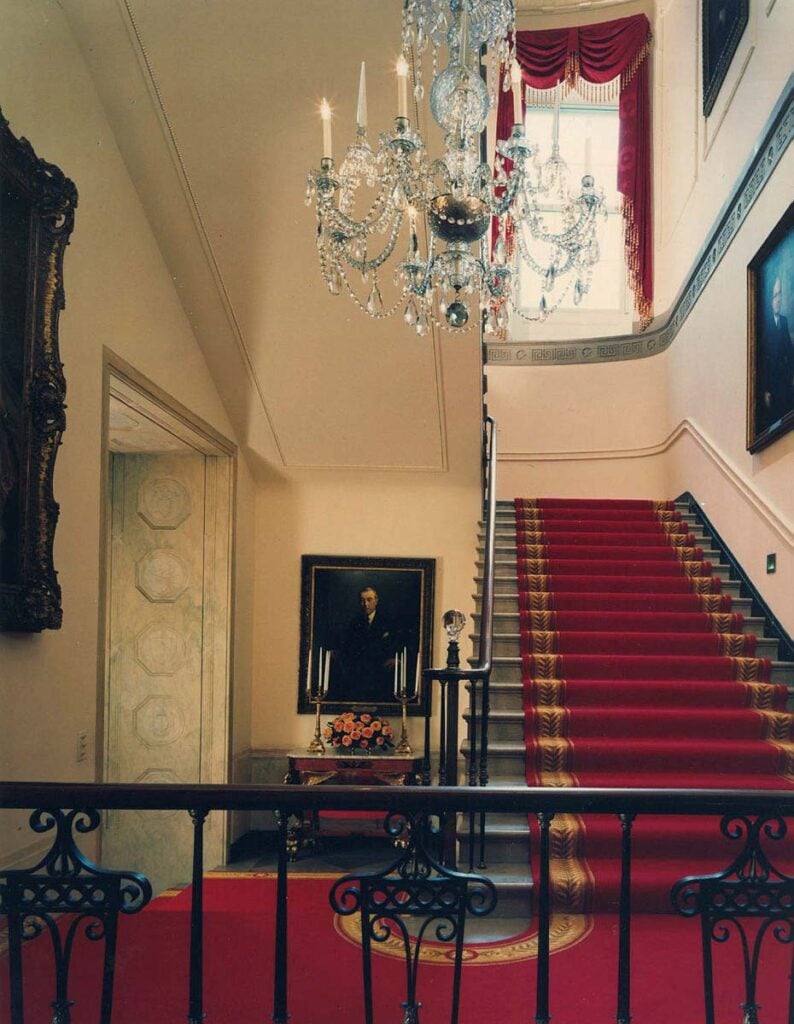
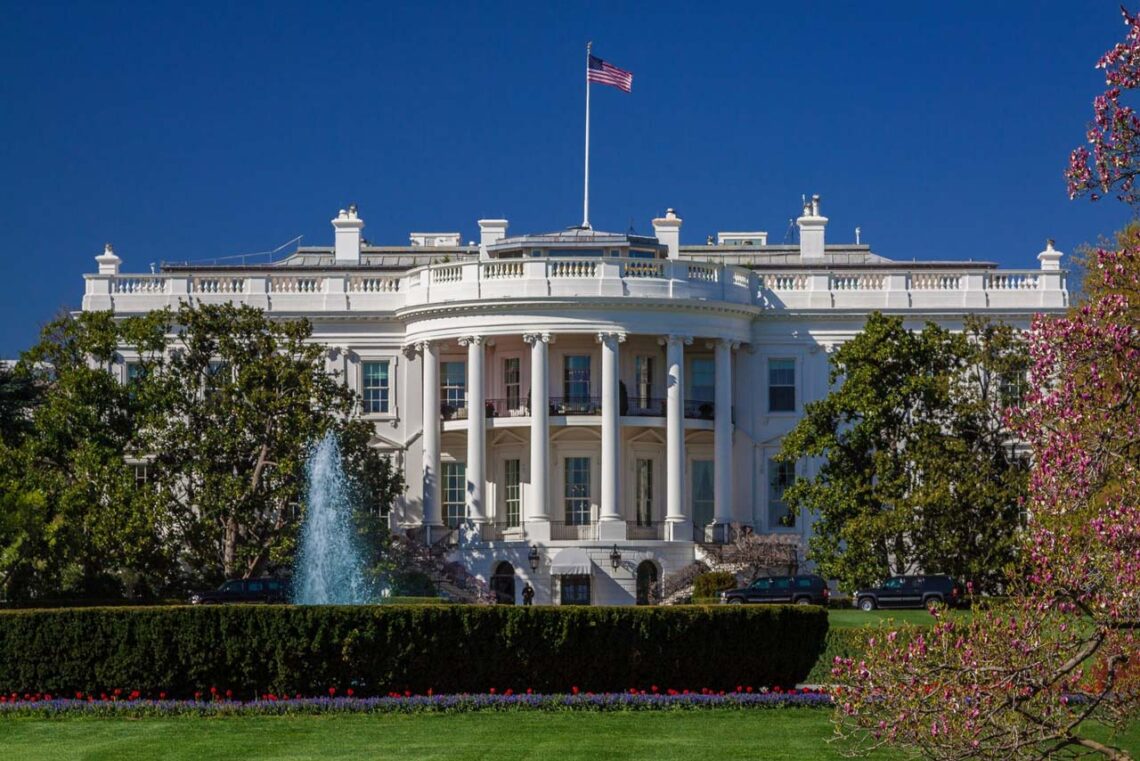
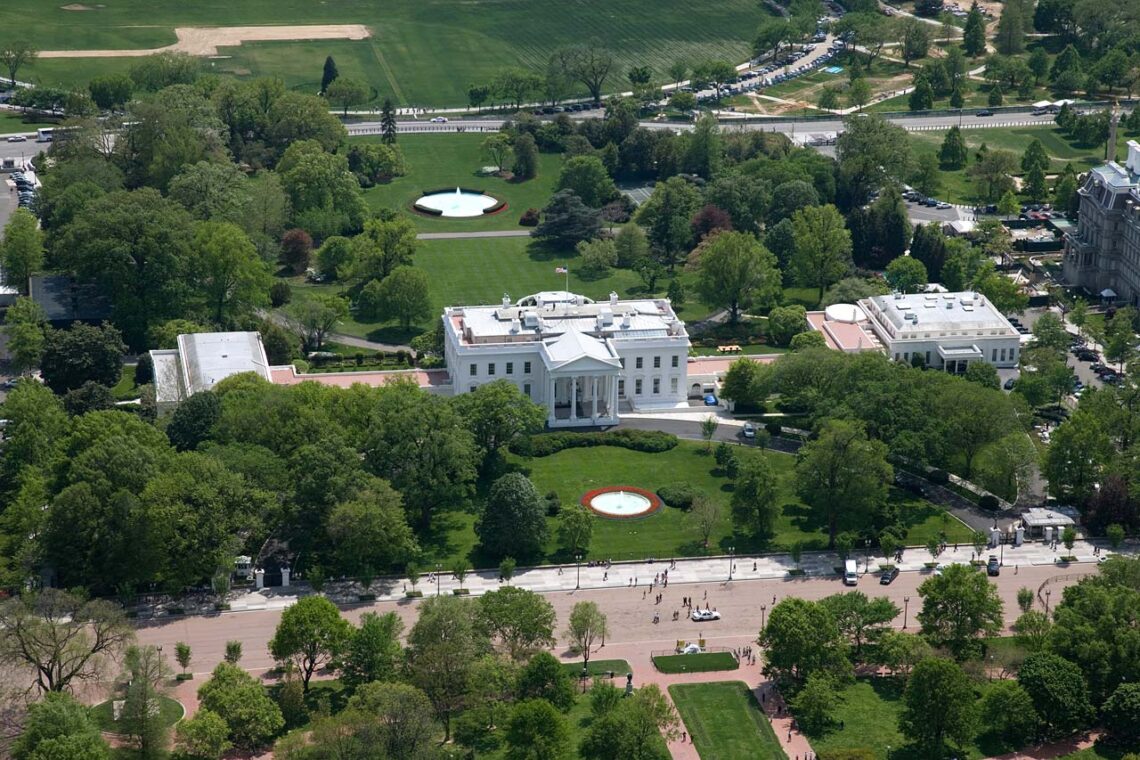
The White House represents the neoclassical architectural style, influenced by the classical architecture of ancient Greece and Rome. Neoclassical buildings are characterized by symmetrical shapes, columns, pediments, and decorative motifs. The White House also reflects some elements of Palladian architecture, developed by Italian architect Andrea Palladio in the 16th century and inspired by classical forms. Palladian features include the rusticated stone facade and the central block with four columns. The historical design influences visible in the White House include the Georgian style of the original structure, which was popular in Britain and its colonies in the 18th century. Georgian buildings are simple, elegant, and balanced, with rectangular windows and doors, and often have a central hallway and staircase. The White House also shows the influence of French furniture and decoration, which President James Madison and his wife Dolley introduced after the rebuilding in 1817. French style is known for its ornate and luxurious details, such as gilded mirrors, crystal chandeliers, and silk curtains.

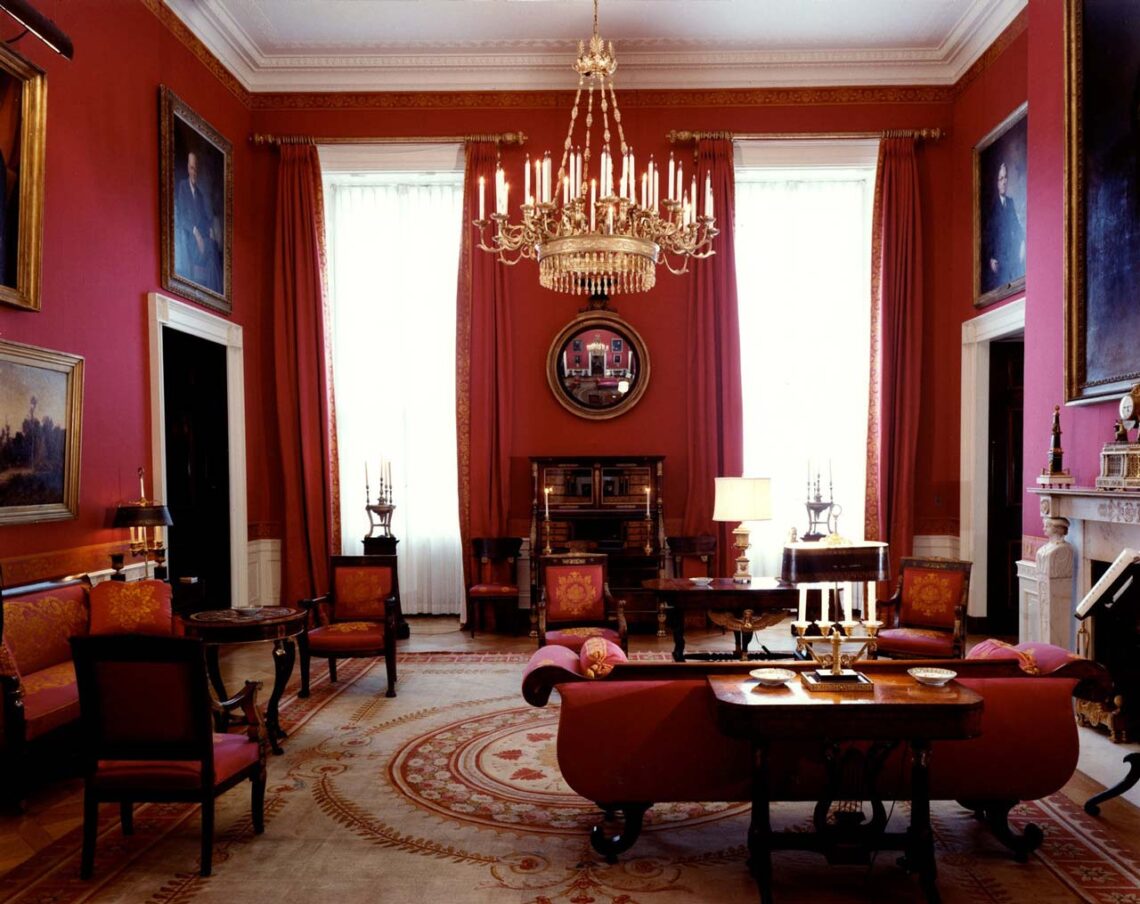
The unique lighting and shading techniques in the White House include using natural light from the large windows and skylights, which create a bright and airy atmosphere in some rooms. The White House also uses artificial lighting, such as electric lamps, candles, and gaslights, to create different moods and effects on different occasions. The State Dining Room has a large chandelier that can be dimmed or brightened according to the event. The White House also uses shading techniques, such as curtains, blinds, and shutters, to control the amount and direction of light entering the rooms. These techniques can also create patterns and textures on the walls and floors, depending on the time of day and the season.
27. The Shard
The Shard is a skyscraper in London that has 95 floors and is 1,016 feet (309.6 meters) tall. It is the tallest building in the United Kingdom and the sixth-tallest in Europe. The Shard has offices, residences, restaurants, a hotel, and a public viewing gallery. It is in the London Bridge Quarter, near the River Thames and the Tower Bridge. It is part of the London Bridge Station, one of the city’s busiest transport hubs. The Shard was built between 2009 and 2012 and was officially opened on July 5, 2012. The construction cost was $607 million (€508 million, £435 million). It was designed by the Italian architect Renzo Piano, who also designed the Pompidou Centre in Paris and the Whitney Museum in New York.
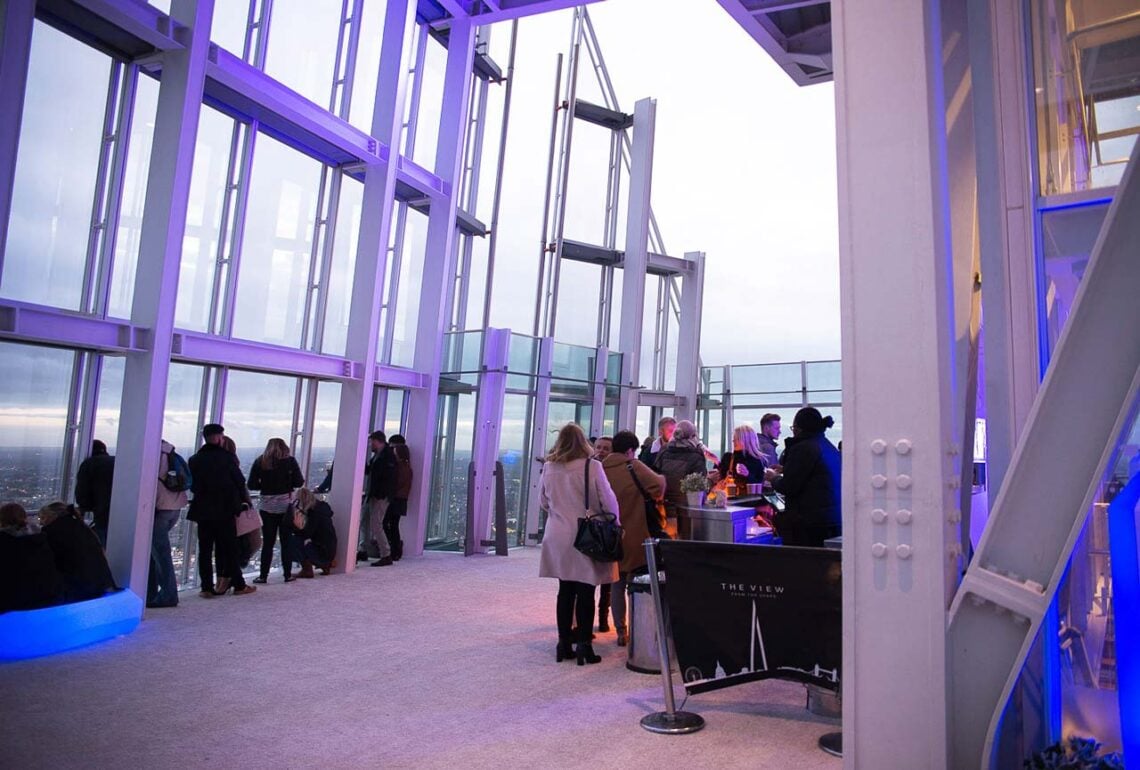
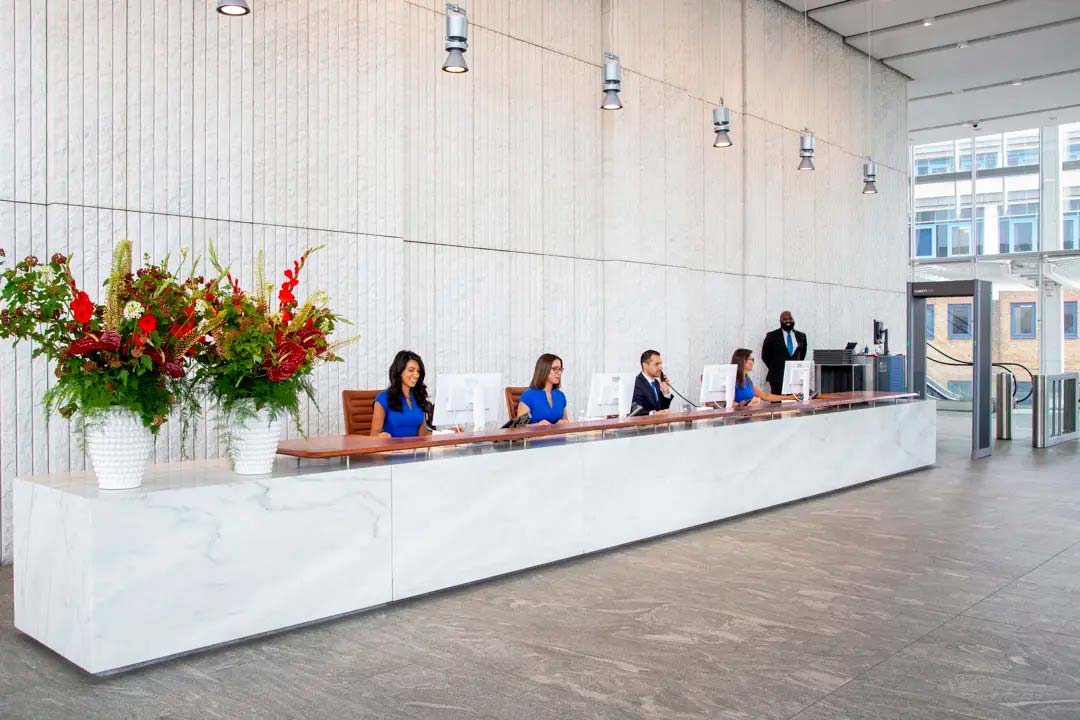
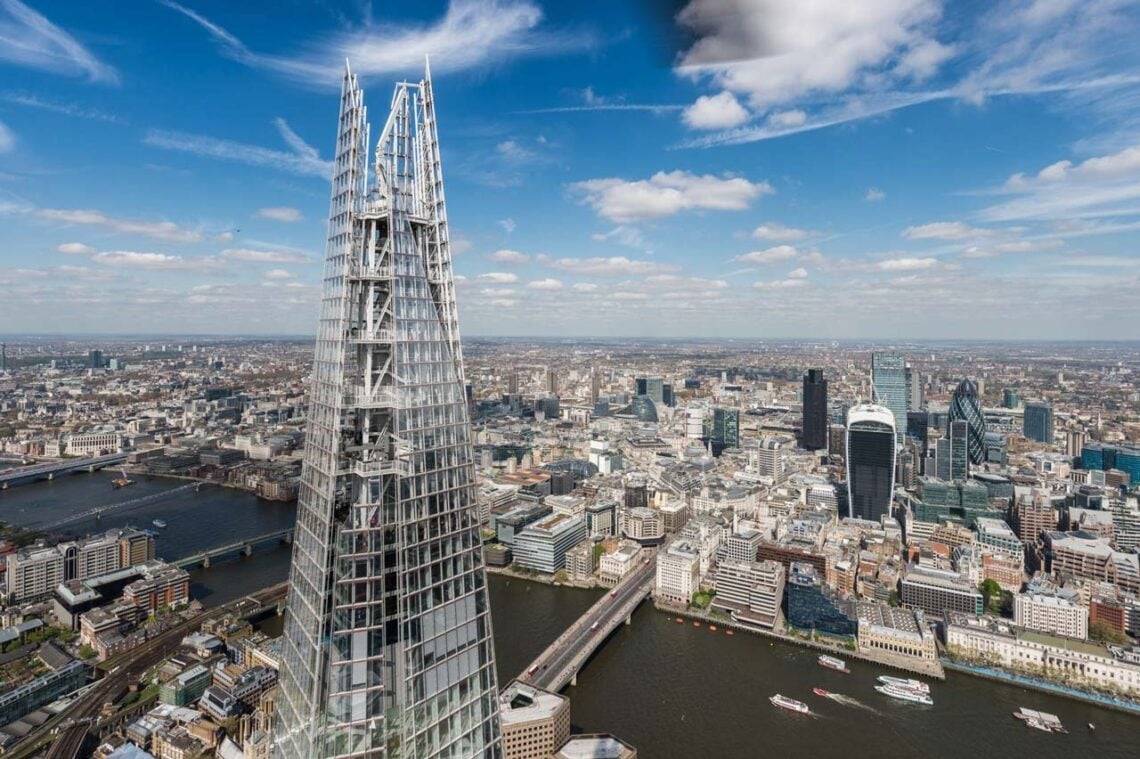
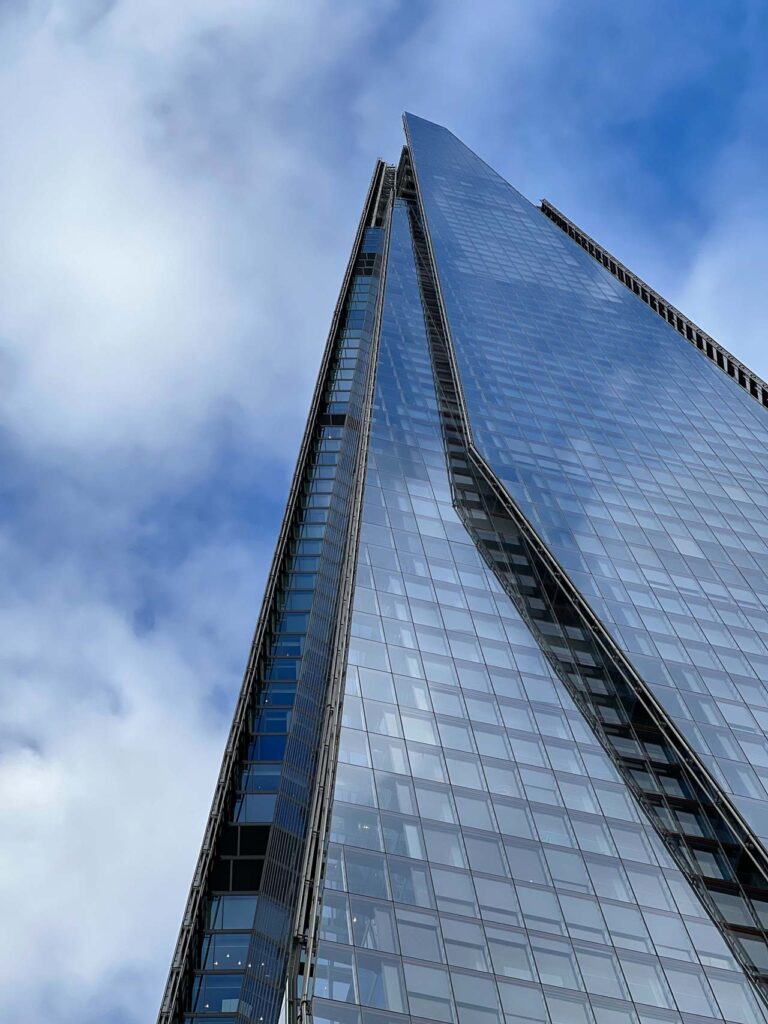
The Shard represents neo-futurism’s architectural trend or movement, characterized by dynamic and expressive forms, technological innovation, and environmental sustainability. Neo-futurism is influenced by the earlier movements of futurism and modernism, which aimed to create new and progressive designs for the urban environment. The Shard has historical design influences from the Gothic spires of London’s churches, the masts of the ships that sailed on the Thames, and the railway lines that converge at the London Bridge Station. It also reflects the diversity and vibrancy of London, as it changes its appearance according to the weather, the time of day, and the angle of view. The Shard uses lighting and shading techniques to enhance its visual impact and reduce energy consumption. It has a glass facade that allows natural light to enter the building and reduces the need for artificial lighting. The Shard also has a system of blinds that automatically adjust to the sun’s position and prevent overheating and glare. LED lights illuminate it at night, creating different patterns and colors.
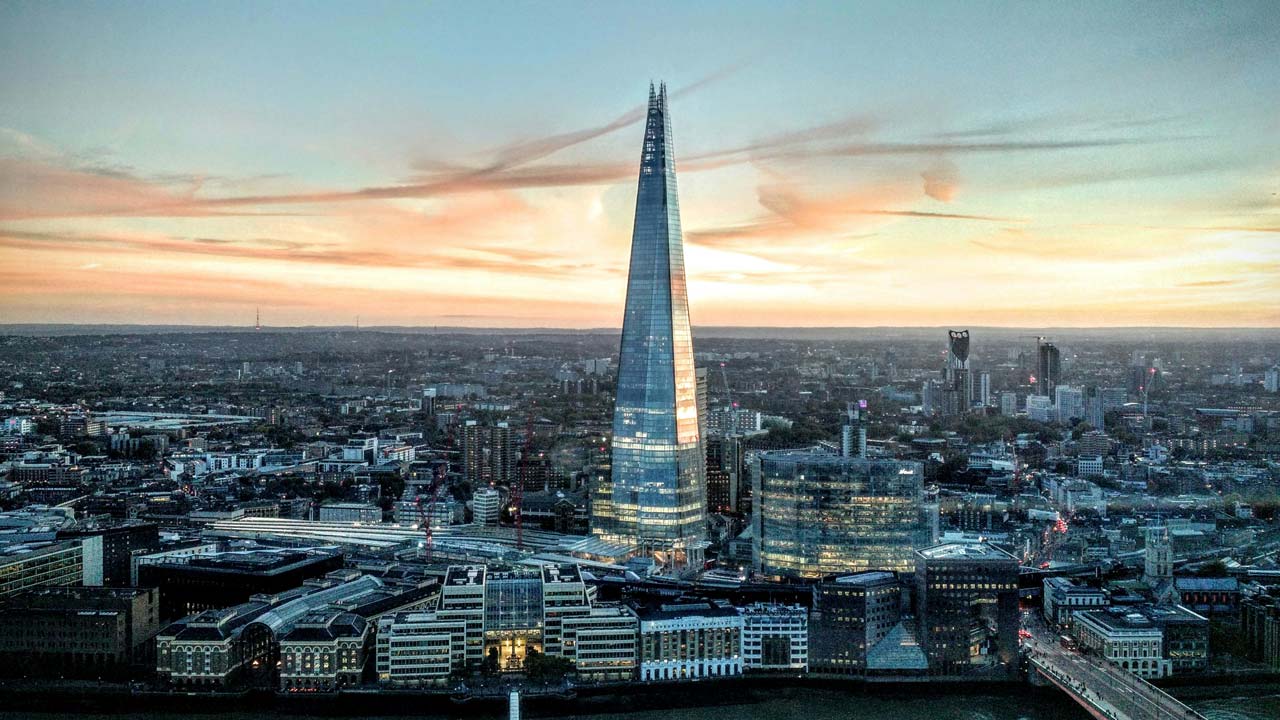
28. Acropolis of Athens
The Acropolis of Athens is an ancient citadel that contains the remains of several ancient buildings of great architectural and historical significance, such as the Parthenon, the Erechtheion, and the Temple of Athena Nike. The Acropolis of Athens is located on a rocky outcrop above Athens, Greece, with a surface area of 7.4 acres (3 hectares). It is 490 feet (150 meters) above sea level. The Acropolis of Athens was built over several centuries, from the 6th century BC. The most important monuments were constructed in the 5th century BC under the leadership of the Athenian statesman Pericles.
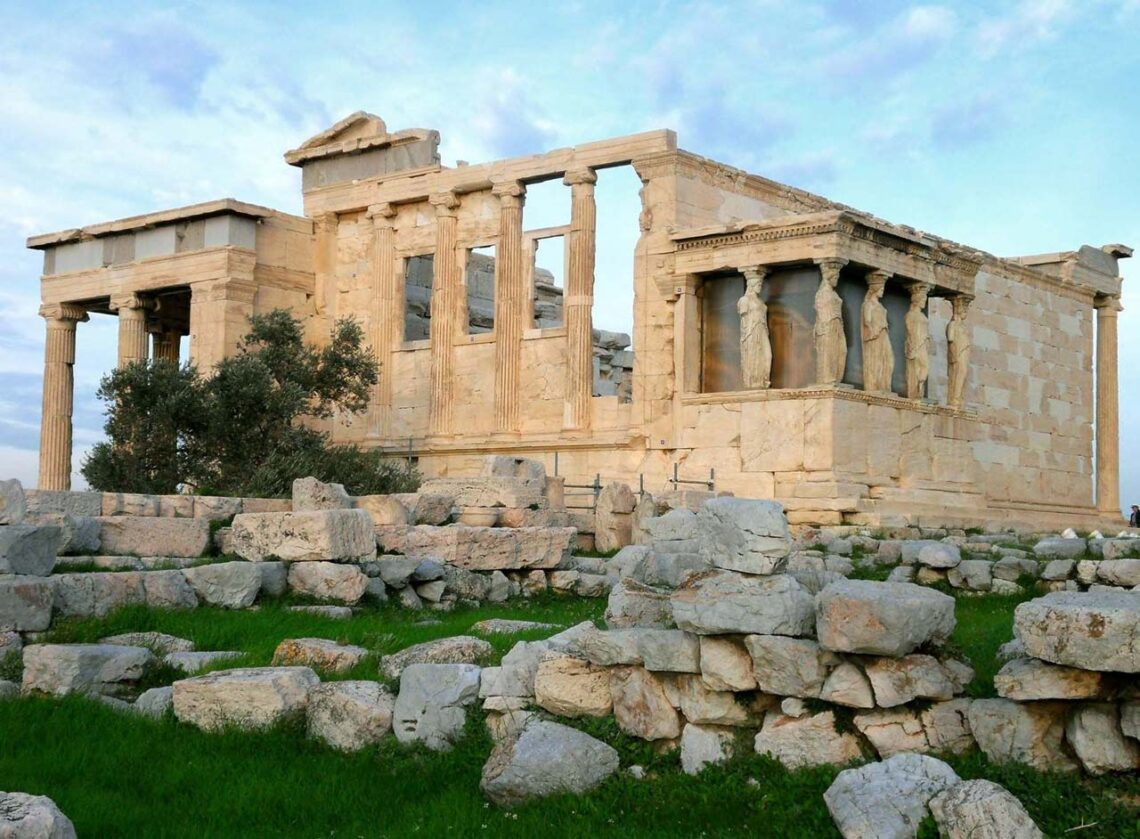
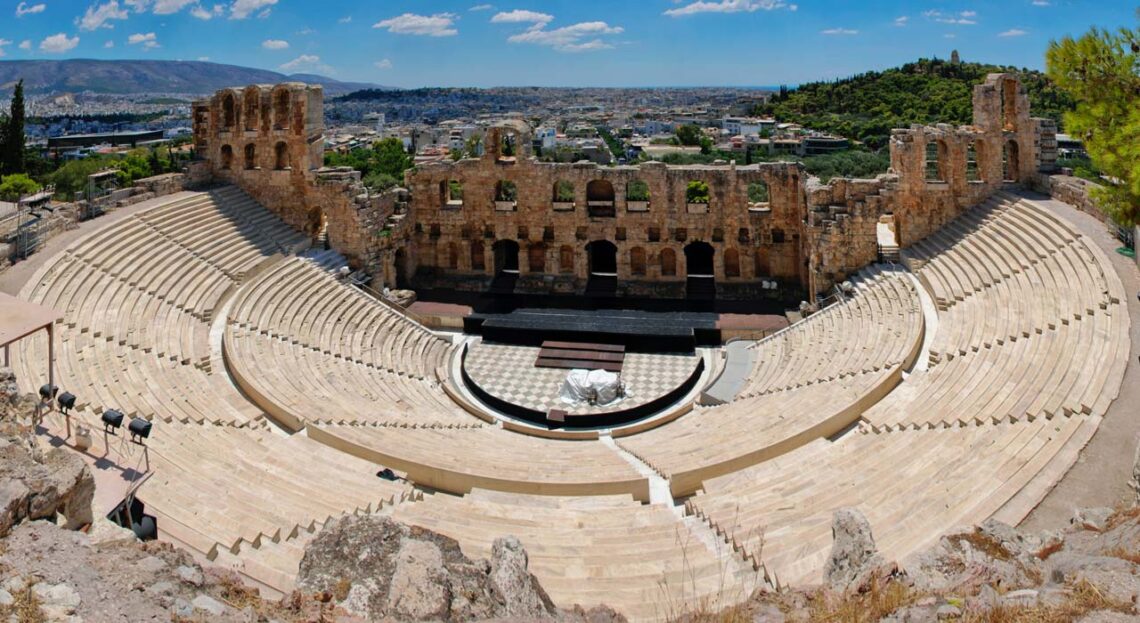
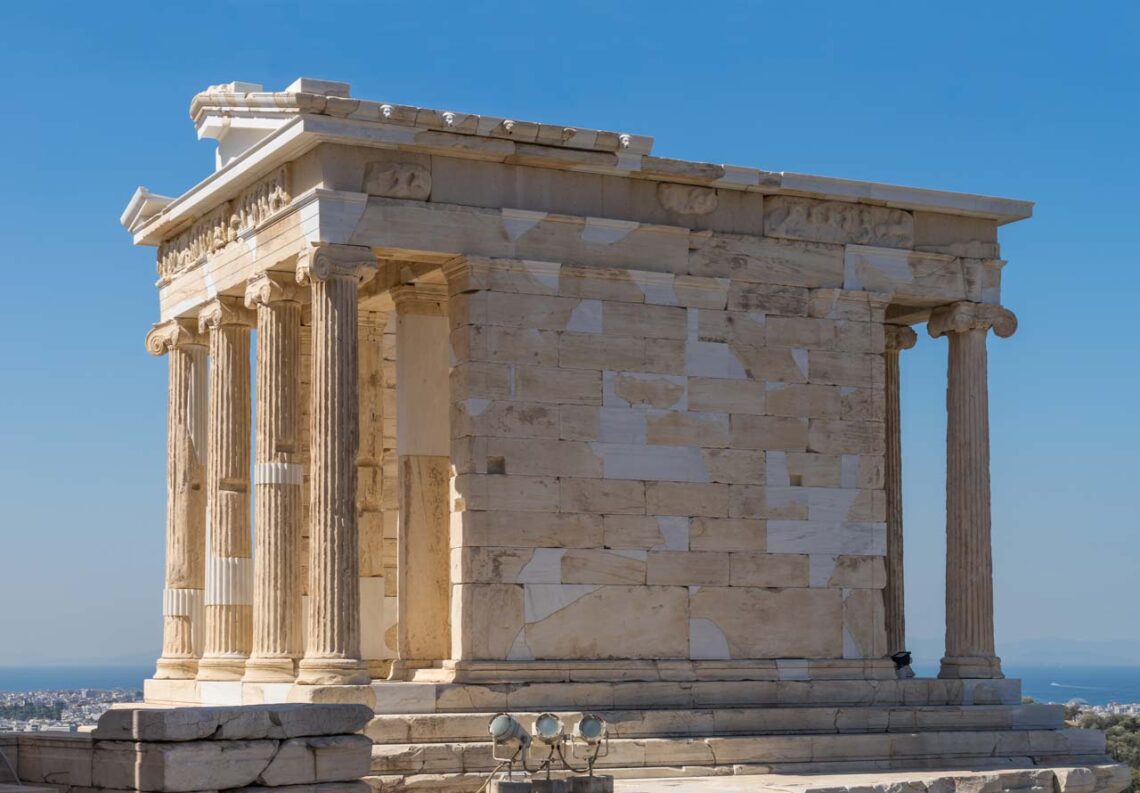
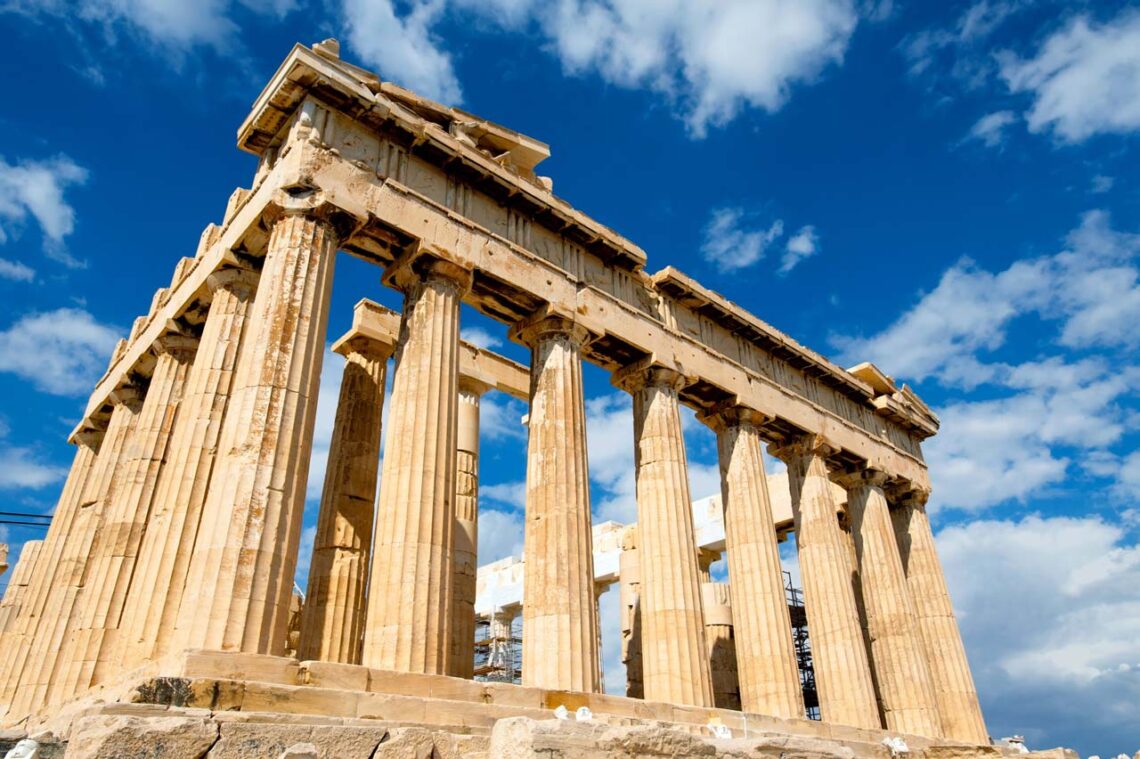
The Acropolis of Athens represents the classical Greek style of architecture, characterized by columns, pediments, friezes, and sculptures. The classical Greek style is divided into three orders: Doric, Ionic, and Corinthian. The Acropolis of Athens features examples of all three orders, mainly Doric and Ionic. The historical design influences visible in the Acropolis of Athens include the Mycenaean, Persian, and Roman cultures. The Acropolis was originally a Mycenaean palace and fortress, and some of its walls date back to the 13th century BC. The Persians attacked and damaged the Acropolis in the 5th century BC, which motivated the Athenians to rebuild it as a symbol of their victory and glory. The Acropolis was later modified and embellished by the Romans, who added statues, altars, and temples. The lighting and shading techniques in the Acropolis of Athens are based on the principles of optical refinements, which aim to correct the visual distortions caused by the natural light and the human eye. These techniques include using the architectural elements’ curvature, tapering, inclination, and spacing and using different colors and materials to create contrast and harmony.
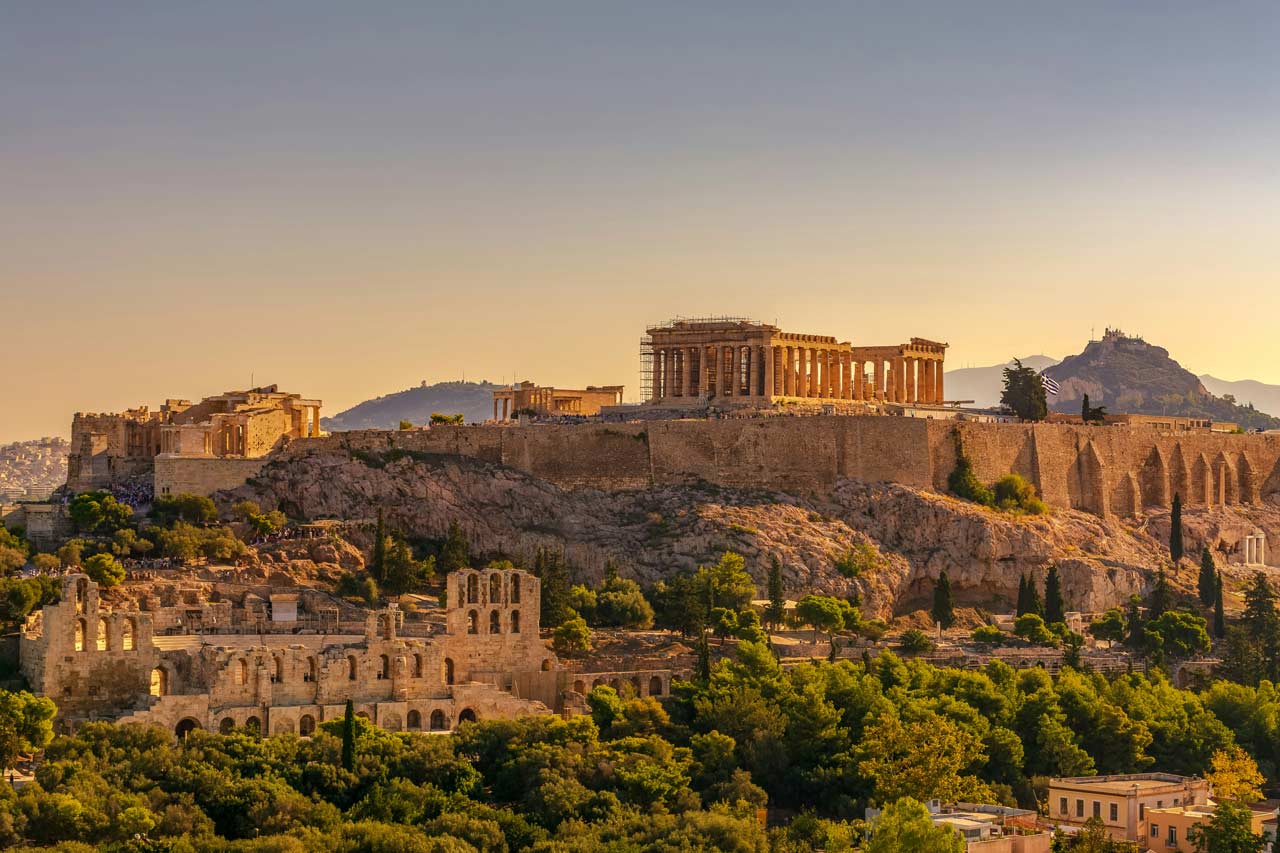
29. Forbidden City
The Forbidden City is a palace complex in Beijing, China, that was the home of the Chinese emperors and their households for over 500 years. It was also the ceremonial and political center of the Chinese empire from the Ming dynasty to the end of the Qing dynasty. The Forbidden City is located in the center of the Imperial City of Beijing, surrounded by several imperial gardens and temples. It covers an area of 178 acres or 7.75 million square feet (720,000 square meters), with 980 buildings and 9,999 rooms. The Forbidden City was built from 1406 to 1420, commissioned by the Yongle emperor of the Ming dynasty. It was first officially occupied by the court in 1420.
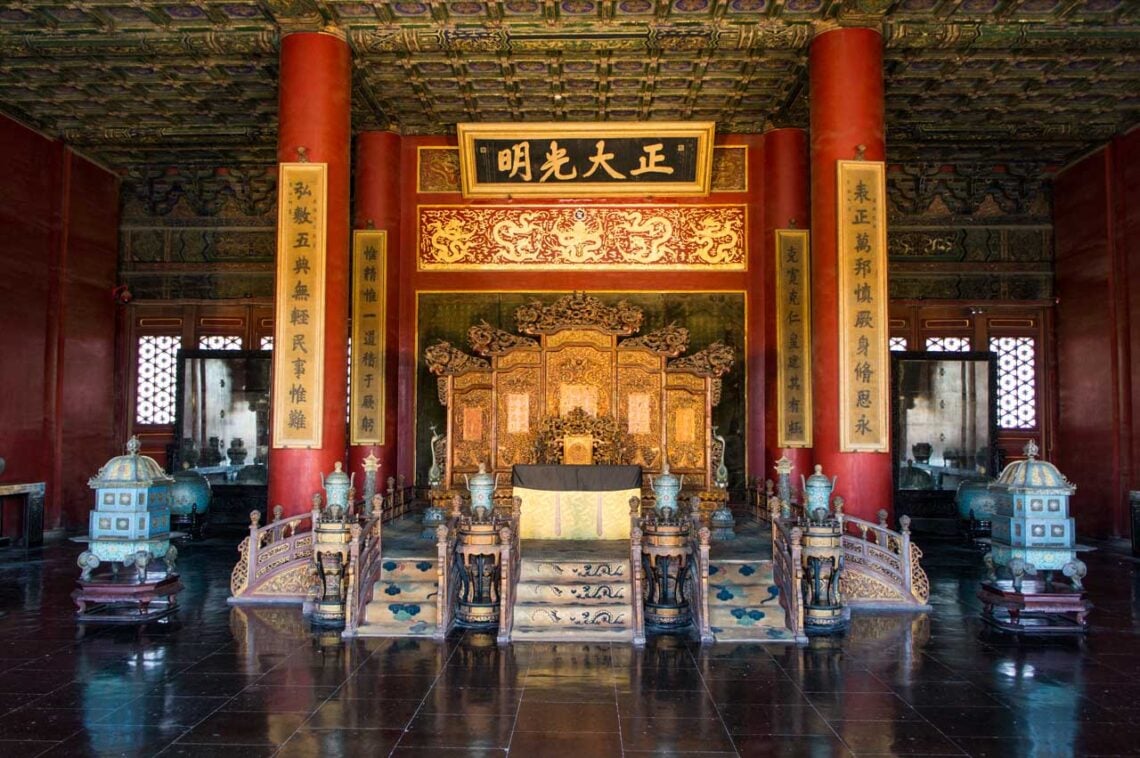
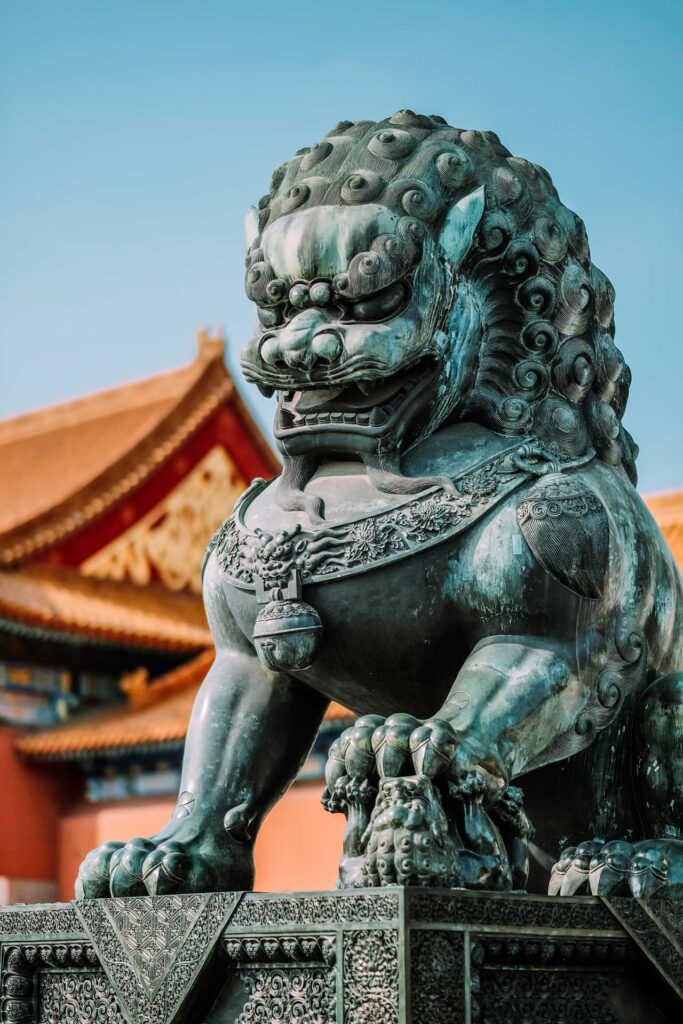
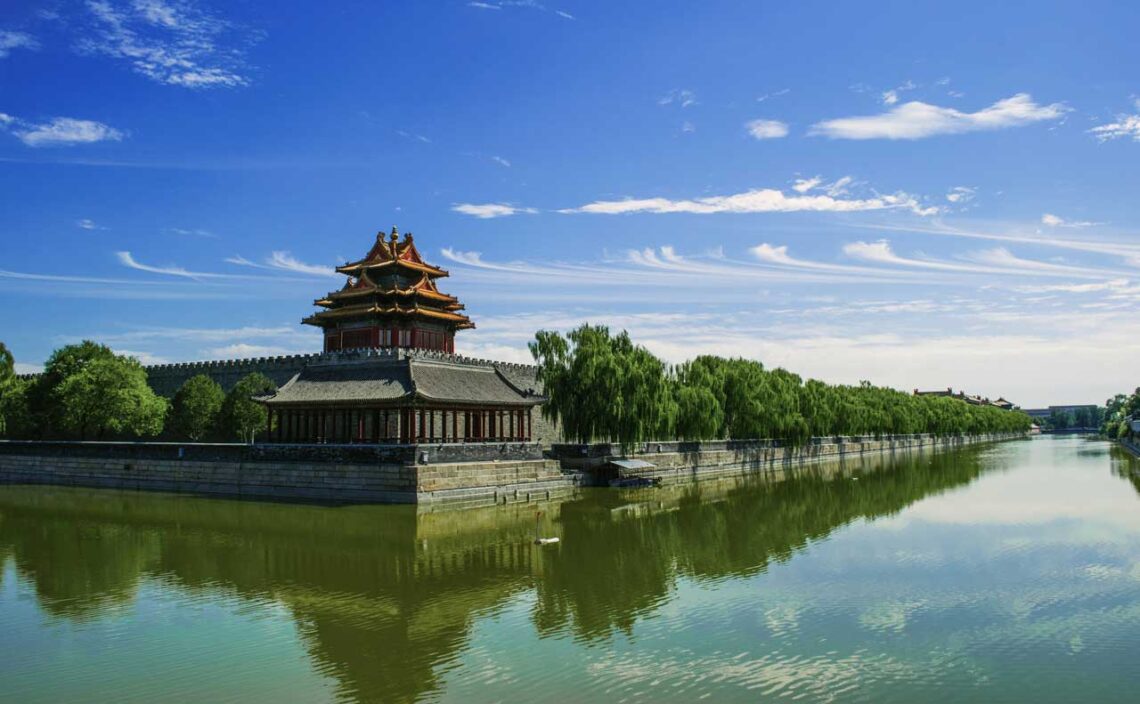
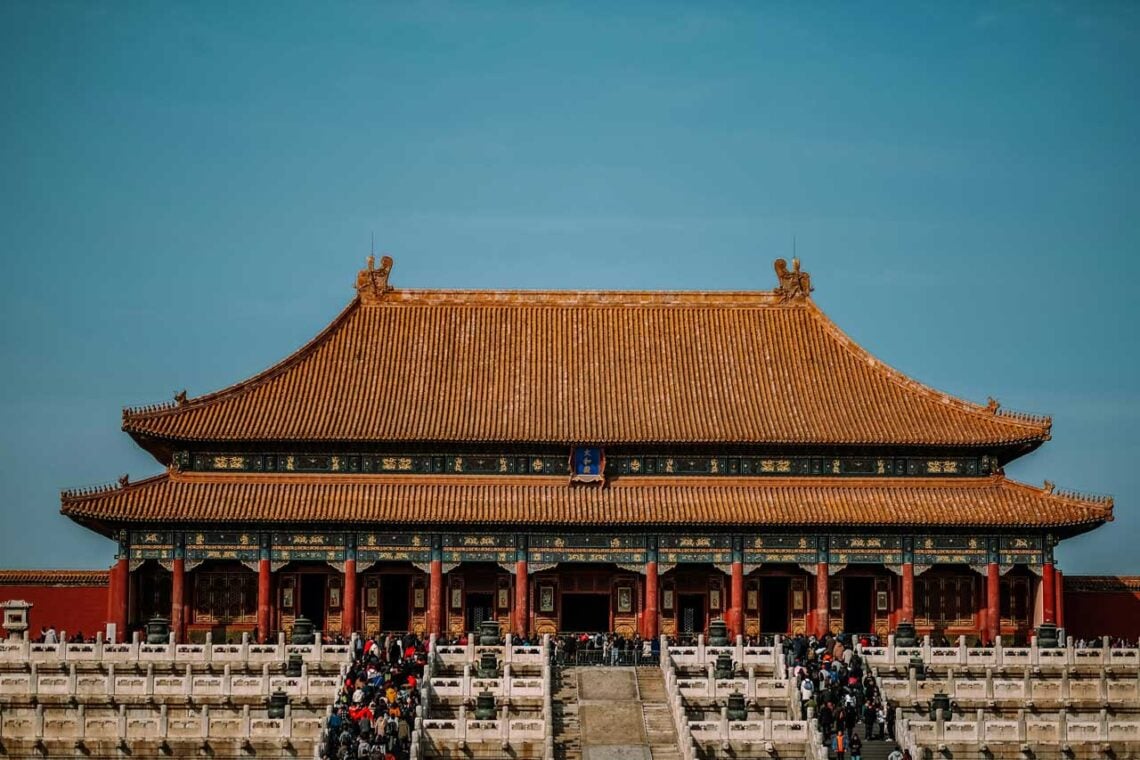
The Forbidden City represents traditional Chinese palatial architecture, which is influenced by feng shui and cosmology principles. The layout and design of the palace complex reflect the hierarchical order and harmony of the universe, as well as the status and power of the emperor. The historical design influences in the Forbidden City include the styles and elements of the previous dynasties, such as the Tang, Song, Yuan, and Ming. The palace complex also incorporates features of Tibetan, Mongolian, and Manchu cultures, such as the yellow glazed tiles, the dragon motifs, and the Hall of Supreme Harmony. The use of courtyards, roofs, eaves, windows, and screens mainly achieves the lighting and shading techniques in the Forbidden City. The courtyards provide natural light and ventilation, while the roofs and eaves create shadows and contrast. The windows and screens allow the light to filter through and create patterns and effects.
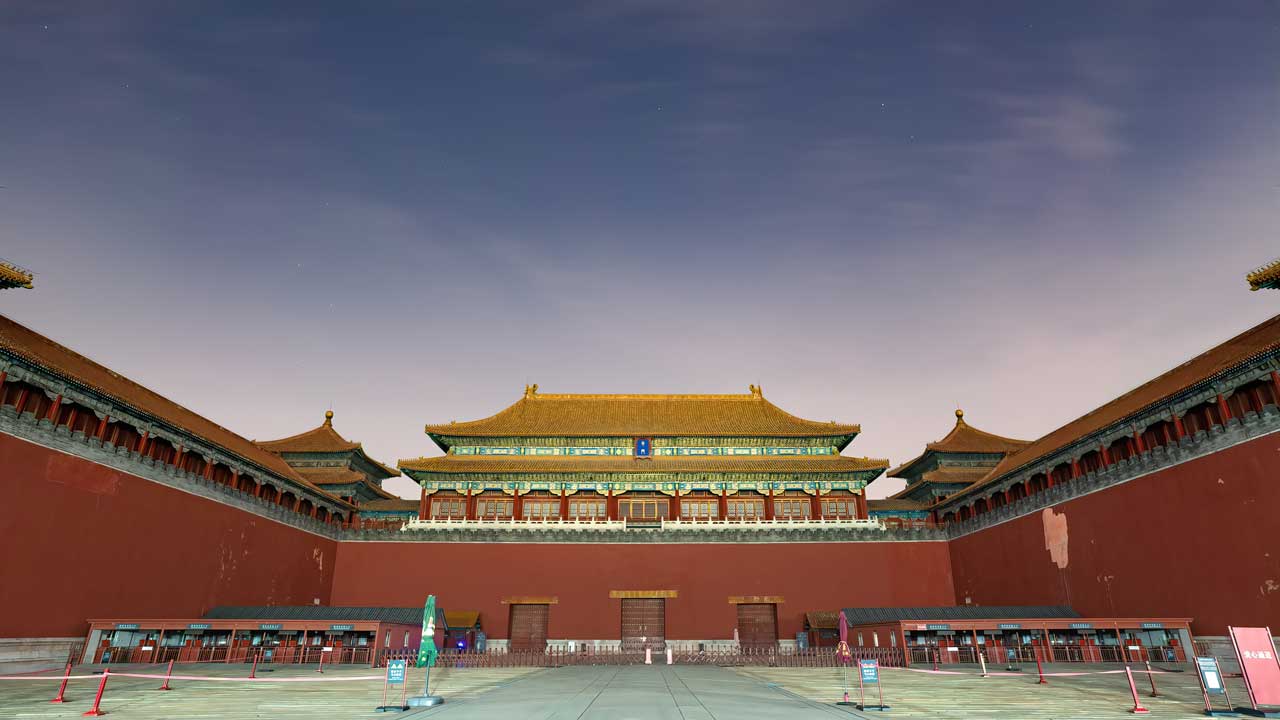
30. Cathédrale Notre-Dame de Paris
The Cathédrale Notre-Dame de Paris is a medieval Catholic cathedral dedicated to the Virgin Mary. It is one of the most emblematic monuments of Paris and France. It is considered one of the finest examples of French Gothic architecture. The Cathédrale Notre-Dame de Paris is located on the Île de la Cité, an island in the Seine River, in the 4th arrondissement of Paris. The cathedral’s address is Parvis Notre-Dame – Place Jean-Paul-II, Paris. The construction of the Cathédrale Notre-Dame de Paris began in 1163 under Bishop Maurice de Sully and was largely completed by 1260, though it was modified in succeeding centuries. The cathedral was consecrated to the Virgin Mary on 19 May 1182.
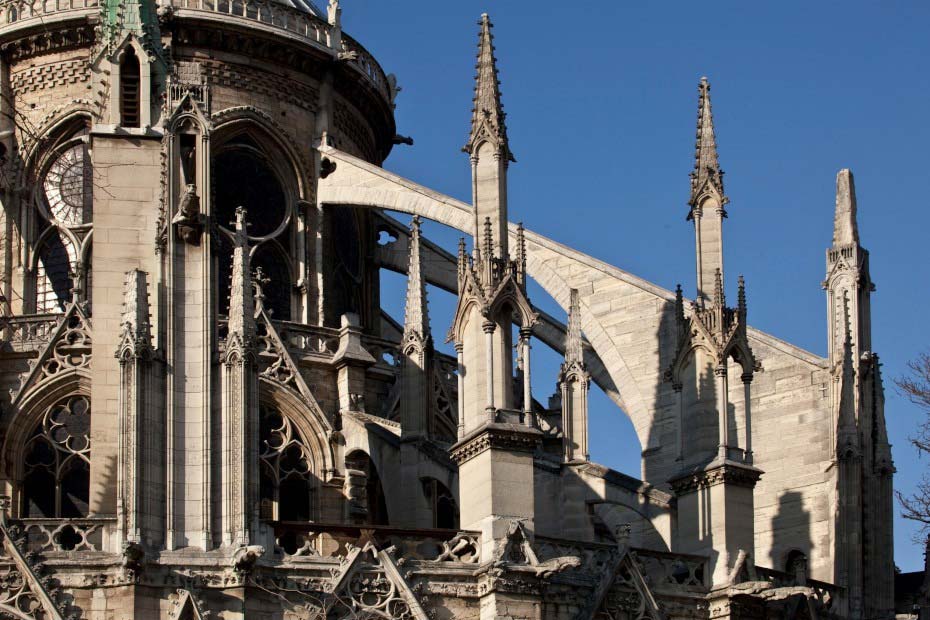
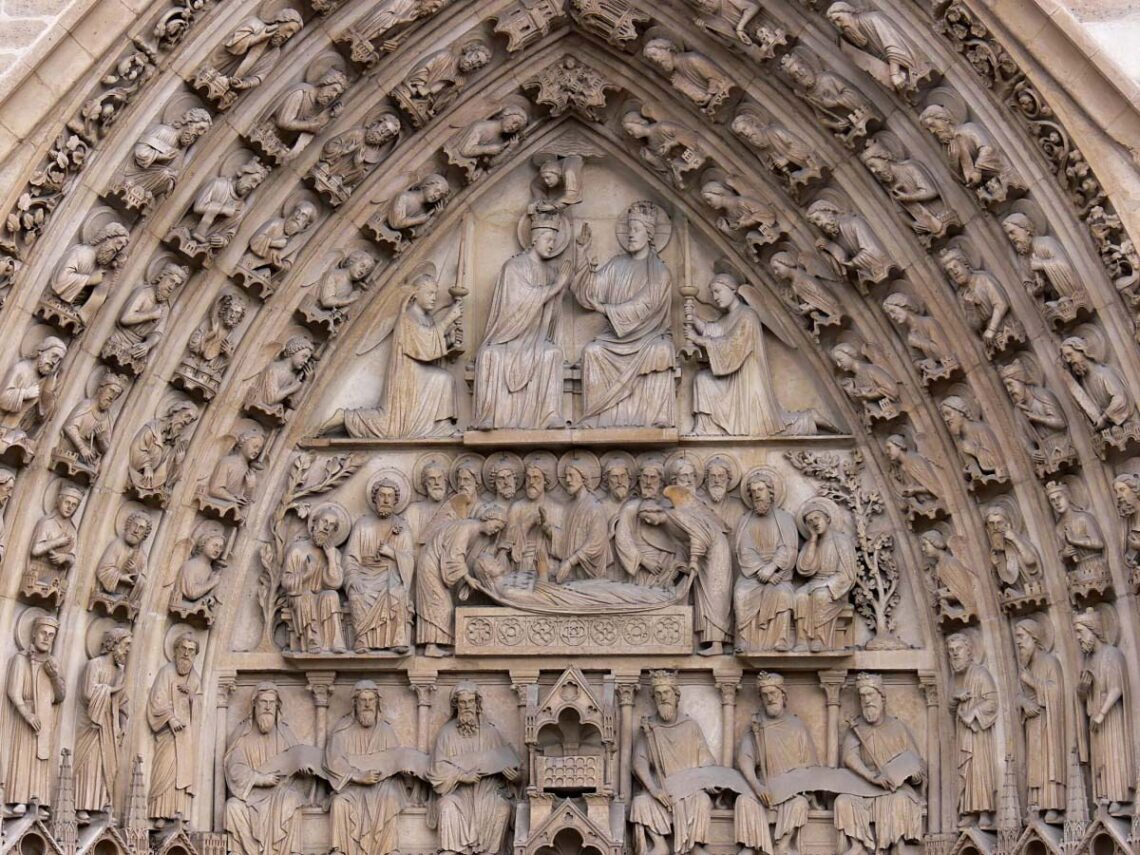
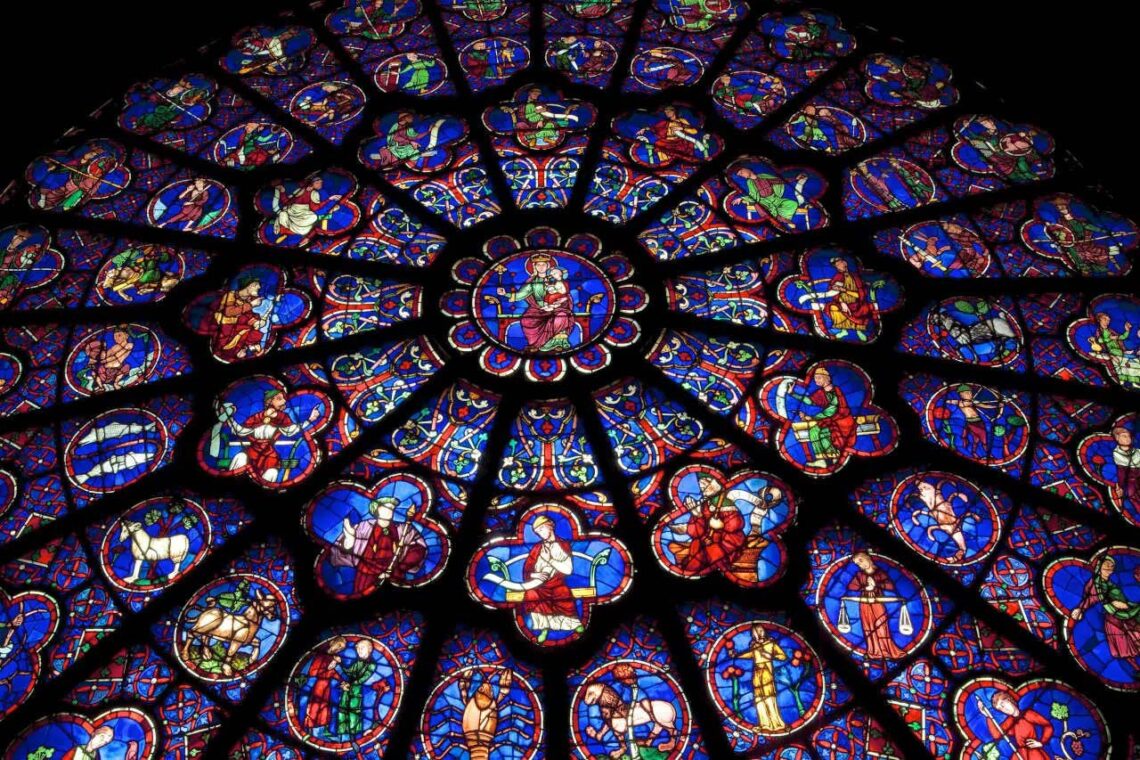
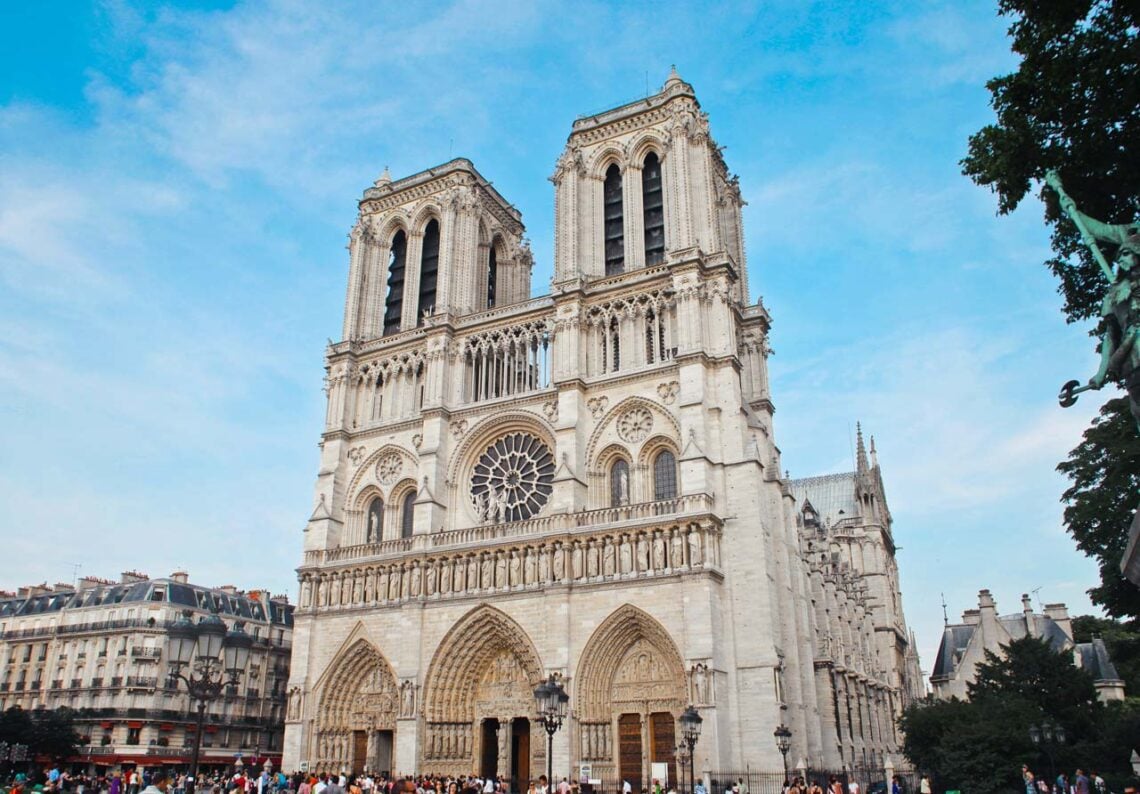
The Cathédrale Notre-Dame de Paris represents the French Gothic architectural style, which emerged in the 12th century and lasted until the 16th century. This style is characterized by using the rib vault and flying buttress, the pointed arch, the rose window, and the naturalism and abundance of sculptural decoration. The Cathédrale Notre-Dame de Paris reflects the historical influences of various periods and cultures. The cathedral incorporates Romanesque, Byzantine, and Islamic art elements and the innovations of the Gothic style. The cathedral also displays the artistic and religious changes of the Renaissance, the Baroque, the Enlightenment, and the Romantic eras. The Cathédrale Notre-Dame de Paris uses various lighting and shading techniques to create a dramatic and harmonious effect. The cathedral’s stained glass windows, especially rose ones, filter the sunlight and create a colorful and luminous atmosphere. The cathedral’s vaulted ceilings, arches, and columns contrast light and shadow, enhancing the sense of depth and height. The cathedral’s sculptures and carvings also play with light and shade, creating a realistic and expressive impression.
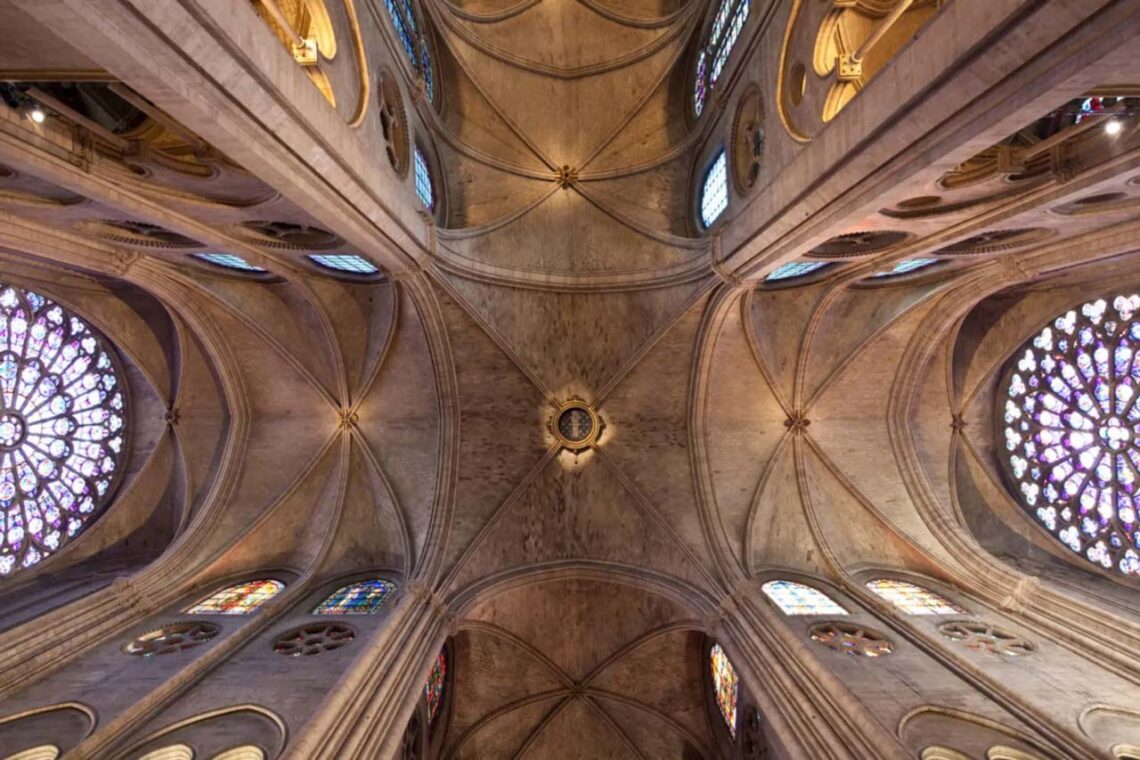
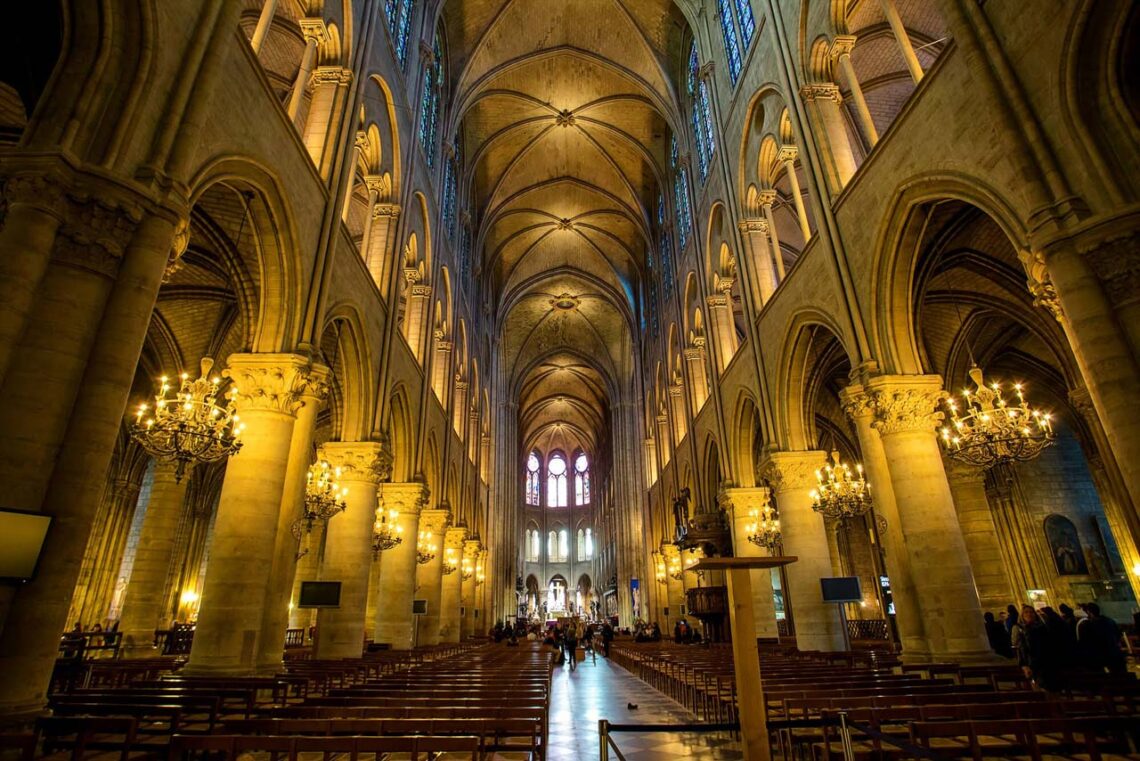
31. Potala Palace
The Potala Palace is a fortress-like complex that served as the winter residence of the Dalai Lamas, Tibet’s spiritual and temporal leaders, from 1649 to 1959. It is also a museum and a World Heritage Site since 1994. The Potala Palace is located on the Red Hill, or Marpo Ri, in Lhasa, the capital city of the Tibet Autonomous Region in China. It is between two monasteries, Drepung and Sera, and overlooks the old city of Lhasa. The Potala Palace was built in several stages over centuries. King Songtsen Gampo formed the first palace in the 7th century, but it was destroyed by lightning and war. The current palace was started by the 5th Dalai Lama in 1645 and completed by the 13th Dalai Lama in the early 20th century.
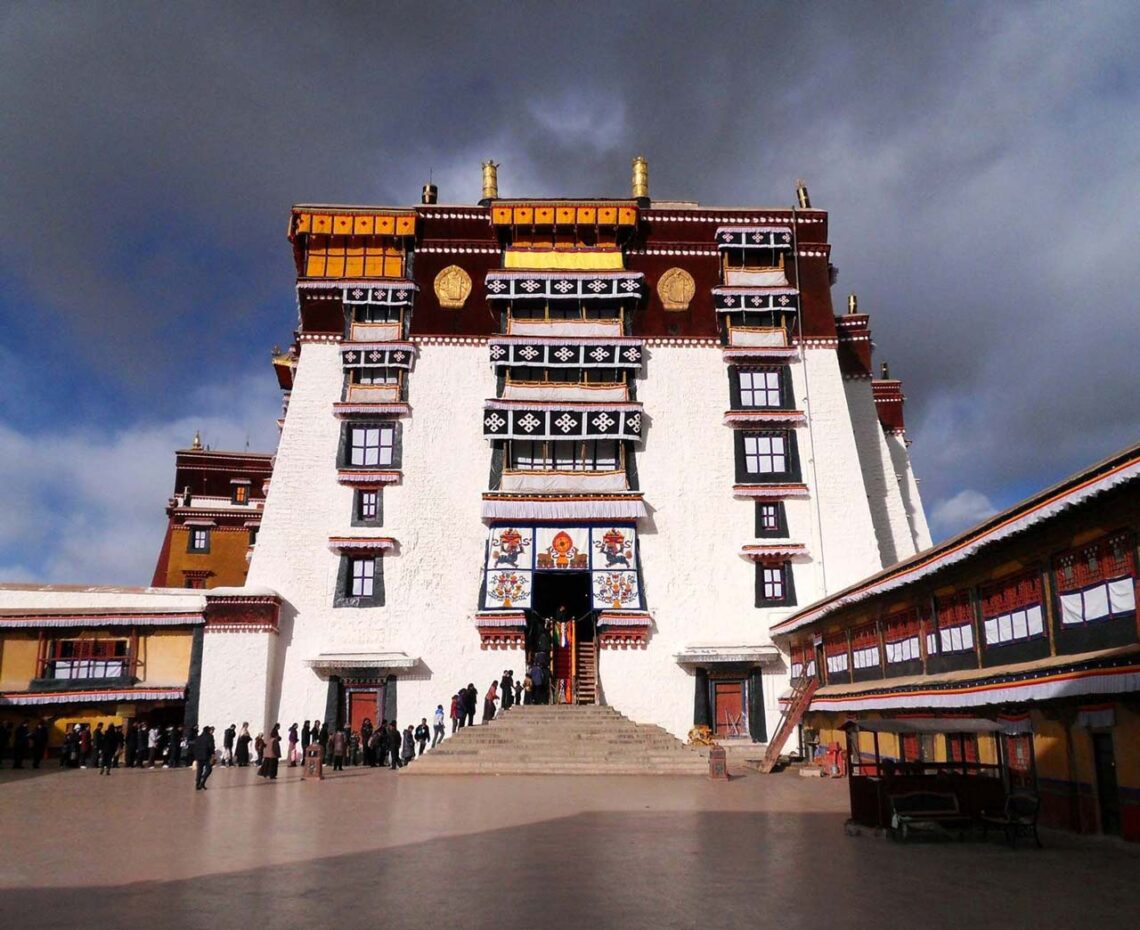
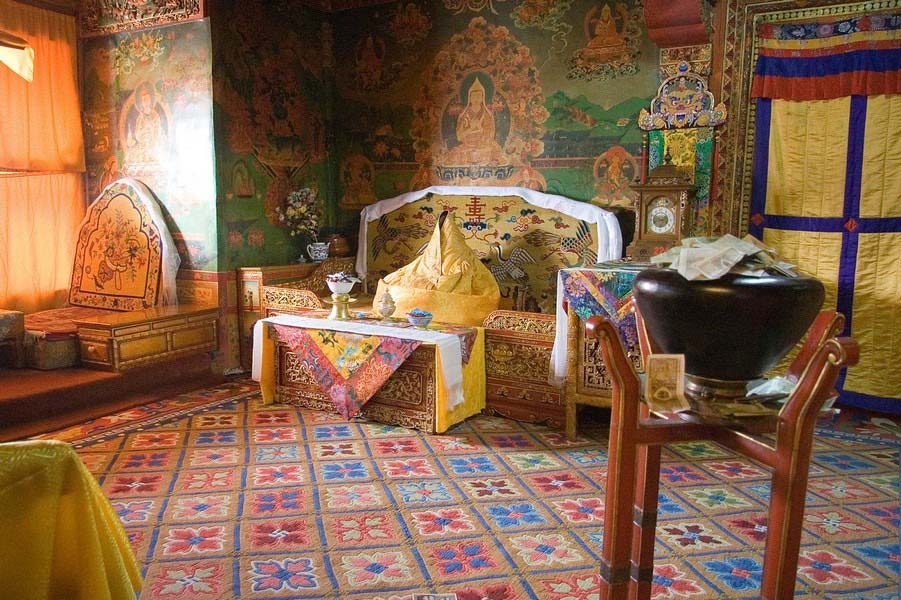
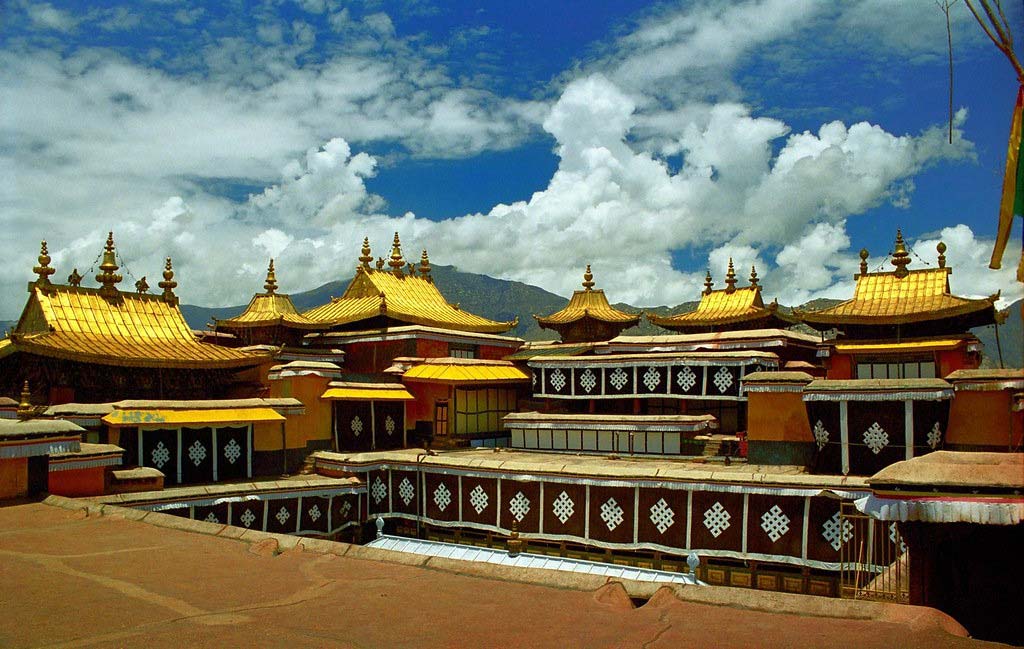

The Potala Palace represents the Tibetan Buddhist architectural style, influenced by Indian, Nepalese, and Chinese traditions. The palace consists of two main sections: the White Palace, which is the administrative and secular area, and the Red Palace, which is the religious and sacred area. The palace has 13 stories, over 1,000 rooms, 10,000 shrines, and 200,000 statues. The historical design influences visible in the Potala Palace are mainly from the Indian and Nepalese cultures, which introduced Buddhism to Tibet. The palace features pagoda roofs, carved woodwork, mural paintings, and mandala patterns. The palace also incorporates Chinese elements, such as glazed tiles, dragon motifs, and lanterns. The lighting and shading techniques in the Potala Palace are based on the natural light and the orientation of the building. The palace faces south, allowing sunlight to enter the windows and illuminate the interior. It also uses butter lamps, candles, and incense burners to create a warm and spiritual atmosphere. The palace has thick stone walls and small windows to keep the heat inside and the cold outside. It also uses different colors to create contrast and harmony, such as white for purity, red for power, and gold for glory.
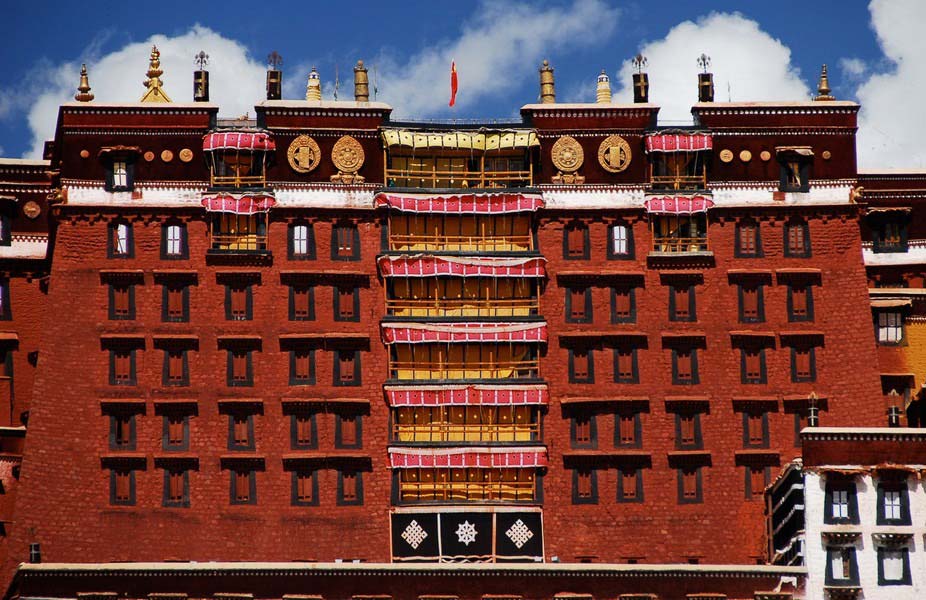
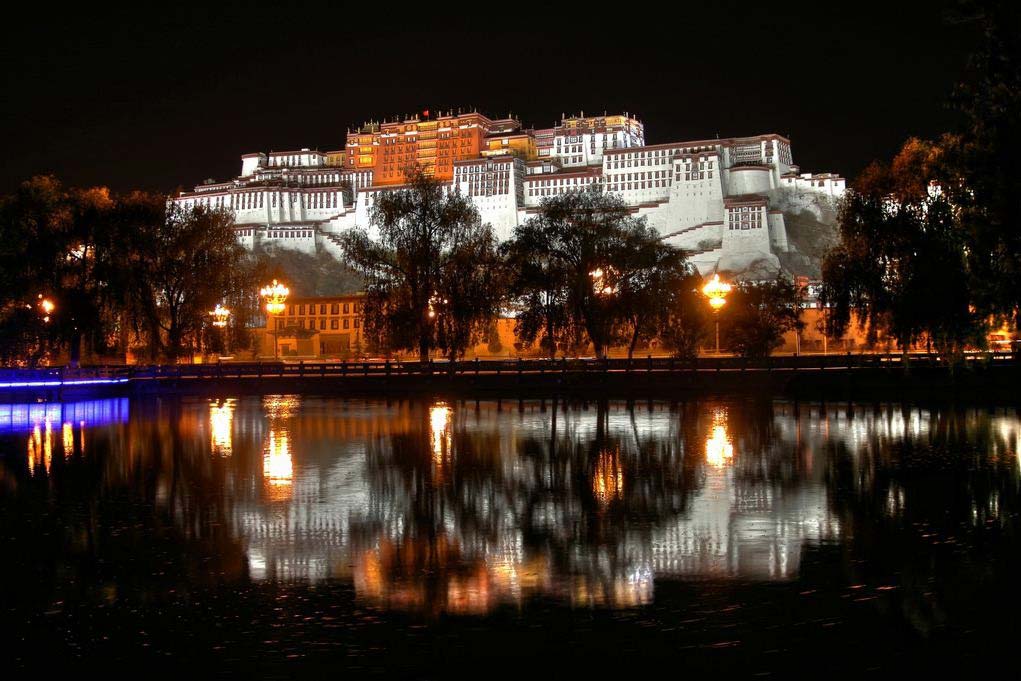
32. Villa Savoye
The Villa Savoye is a modernist villa and gate lodge in Poissy, a small town outside Paris, France. It was designed by the Swiss-French architect Le Corbusier and his cousin Pierre Jeanneret and built between 1928 and 1931 using reinforced concrete. The Villa Savoye is located at 82, Rue de Villiers, 78300 Poissy, Poissy, Yvelines, France. It is on a green field on an otherwise wooded plot of land, with a magnificent view of the landscape to the northwest. The Villa Savoye was built from 1928 to 1931. It was commissioned by Pierre and Eugénie Savoye, a wealthy couple who wanted a country retreat for their family. They gave Le Corbusier total freedom to express his vision.
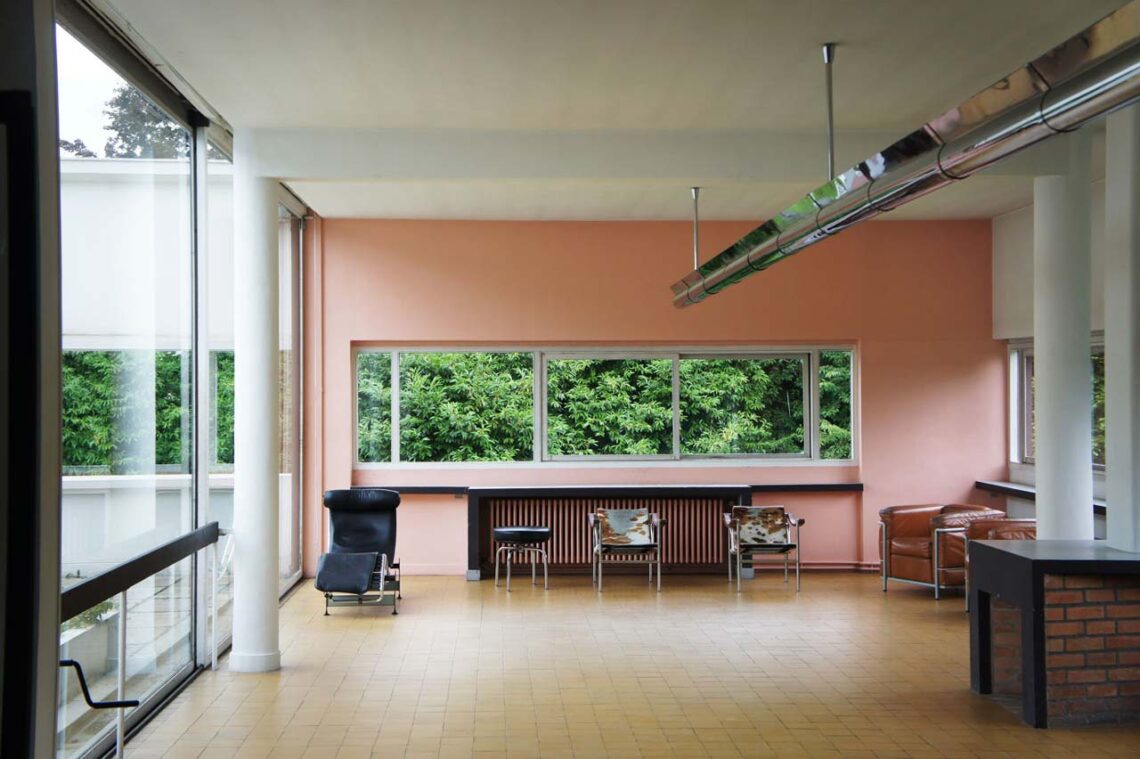
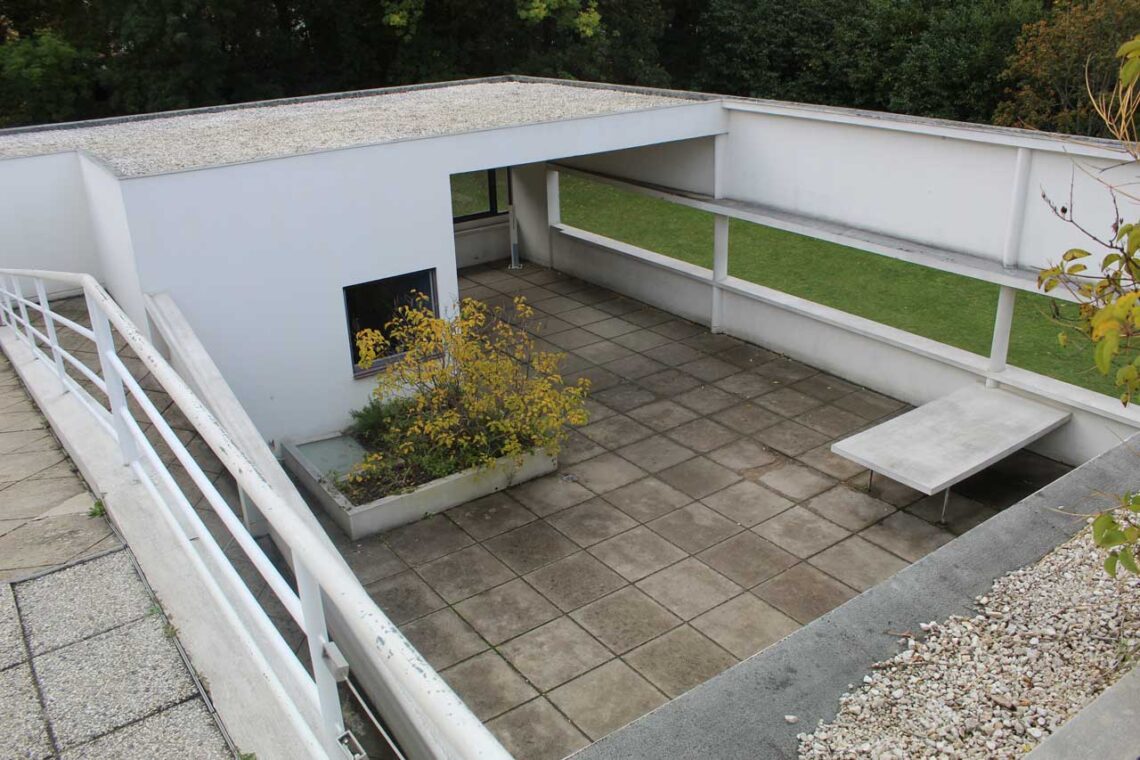
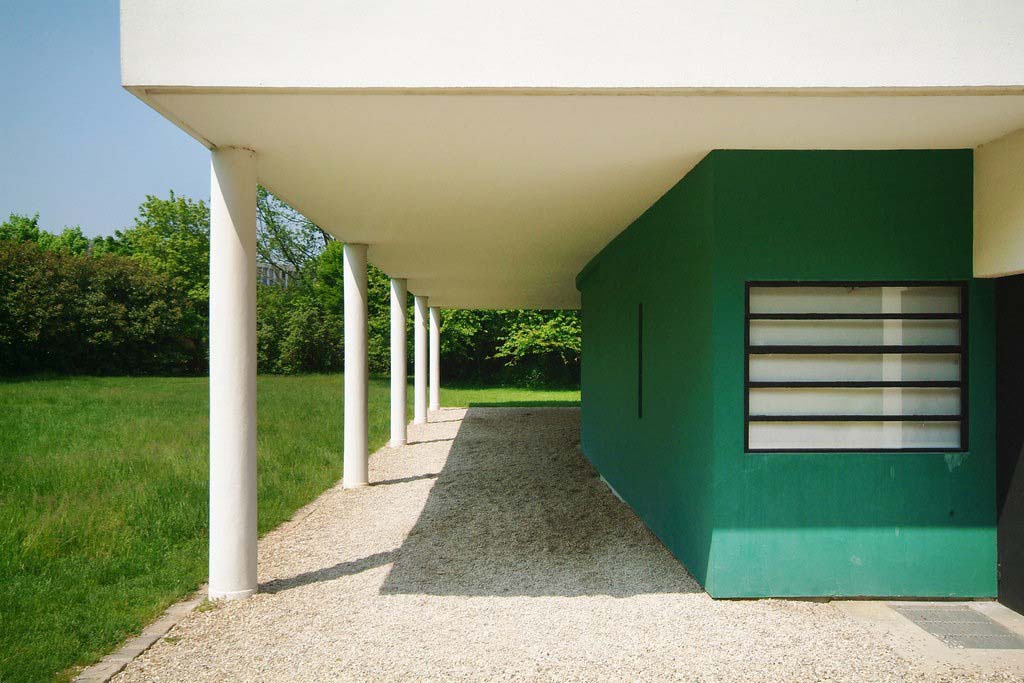
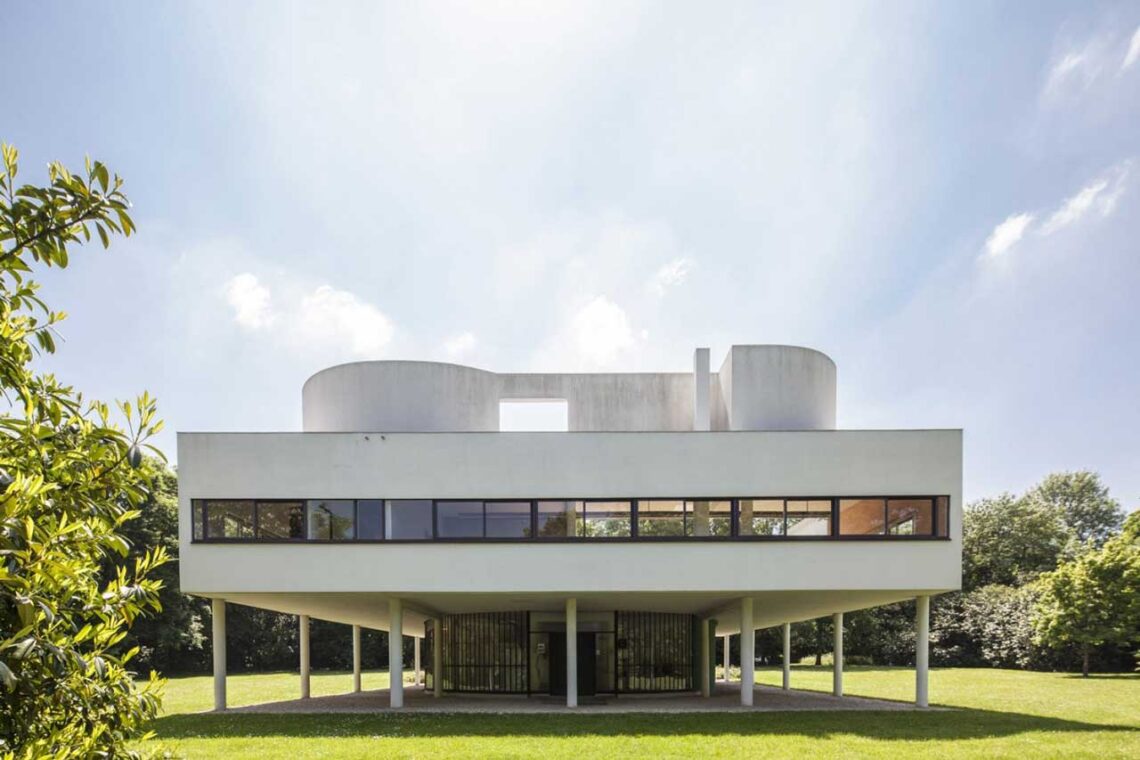
The Villa Savoye represents the origins of modern architecture and is one of the most easily recognizable and famous examples of the International style. It is an exemplar of Le Corbusier’s “five points” for new constructions, which are: pilotis (slender columns that support the building and raise it above the ground), roof garden (a flat roof that serves as a terrace and a garden), free plan (a floor plan that is not constrained by load-bearing walls), free facade (a facade that is independent of the structural system and can have any shape or arrangement of windows), and ribbon windows (long horizontal windows that provide natural light and ventilation). The Villa Savoye is influenced by historical design elements such as classical proportions, symmetry, and geometry. It also draws inspiration from the industrial aesthetics of ocean liners, airplanes, and automobiles, which Le Corbusier admired for their functional beauty. The villa synthesizes these influences, creating a new and original expression of modernity.
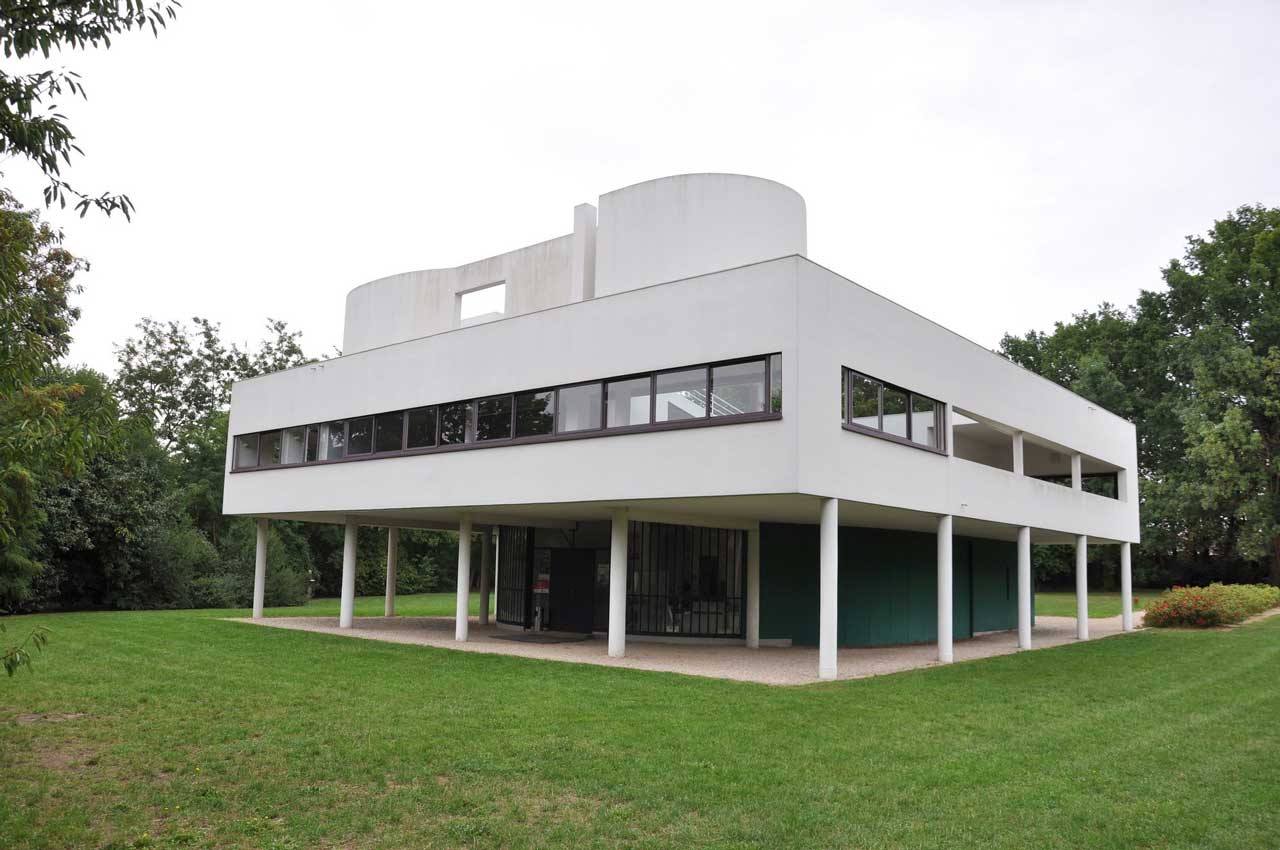
The Villa Savoye uses various lighting and shading techniques to create different effects and moods in the interior spaces. The entrance hall has a circular cut-out in the ceiling that allows natural light to enter and creates a contrast with the dark walls. The living room has a large window that frames the view of the garden and the landscape and a skylight that provides indirect illumination. The bedrooms have sliding shutters that can regulate the amount of light and privacy. The roof garden has a curved wall that reflects the sunlight and creates a dynamic shadow pattern on the floor. The villa also has artificial lighting fixtures integrated into the design, such as the corridor’s strip lights and the bathroom’s circular lamps.
33. St. Paul’s Cathedral
St. Paul’s Cathedral is an Anglican cathedral in London, England, and is the seat of the Bishop of London. The cathedral serves as the mother church of the Diocese of London. St. Paul’s Cathedral is located on Ludgate Hill at the highest point of the City of London. The nearest London Underground station is St Paul’s, which is 142 yards (130 meters) from the cathedral. The current structure of St. Paul’s Cathedral was completed in 1710 after the previous Gothic cathedral was largely destroyed in the Great Fire of London in 1666. Sir Christopher Wren designed the cathedral in the English Baroque style.
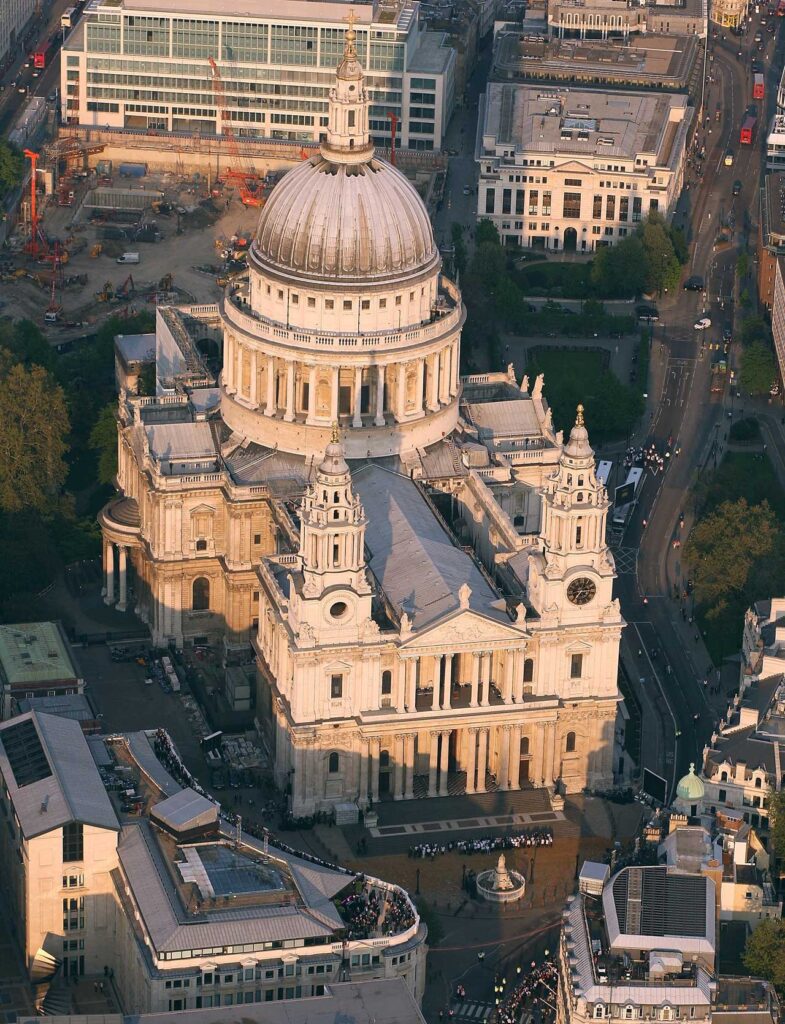
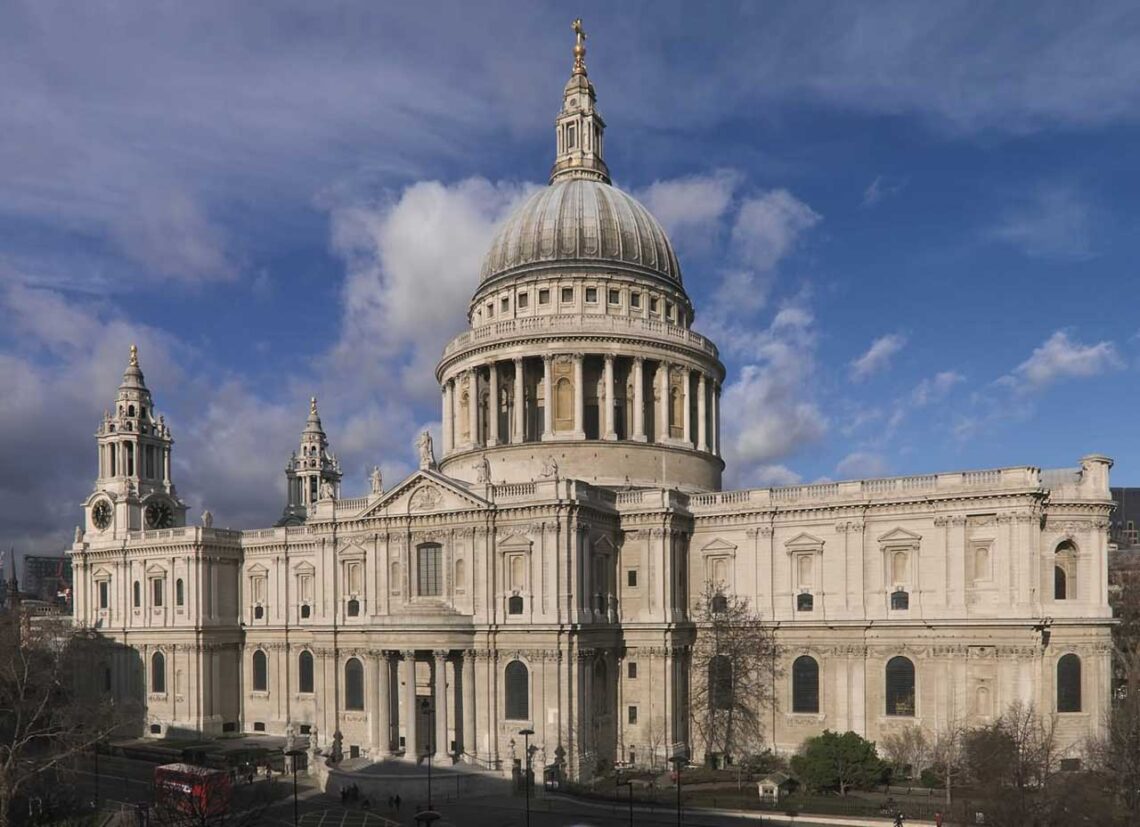
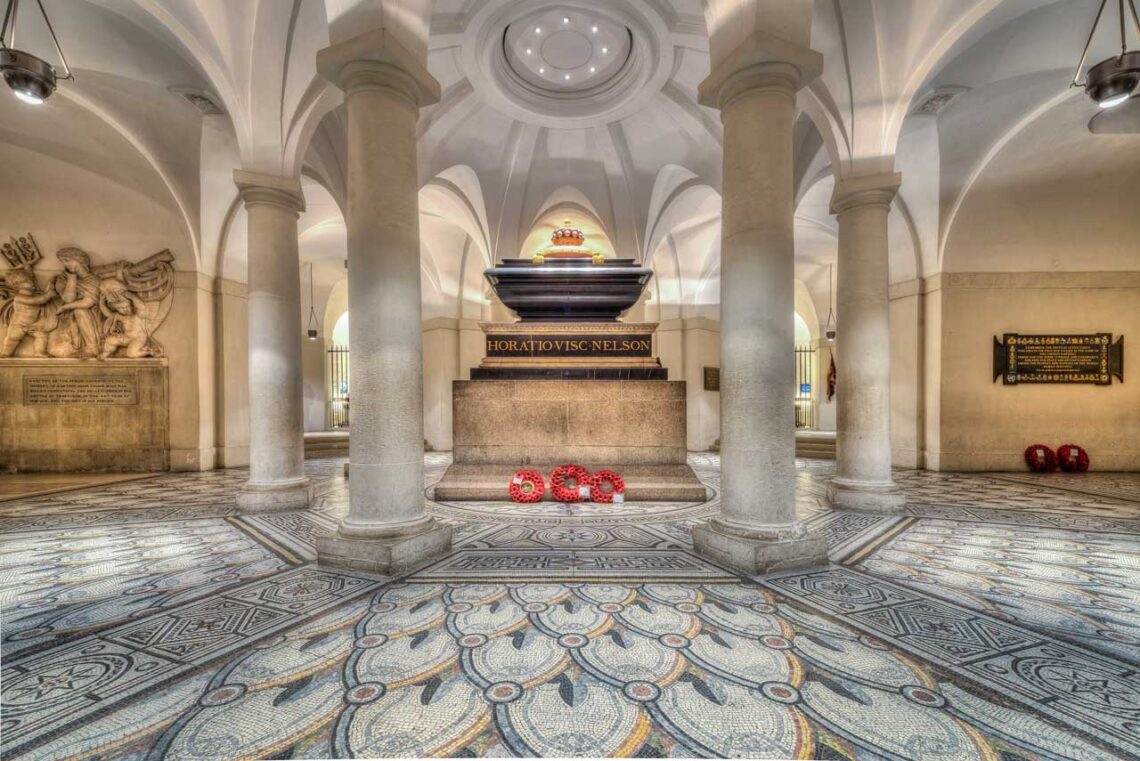
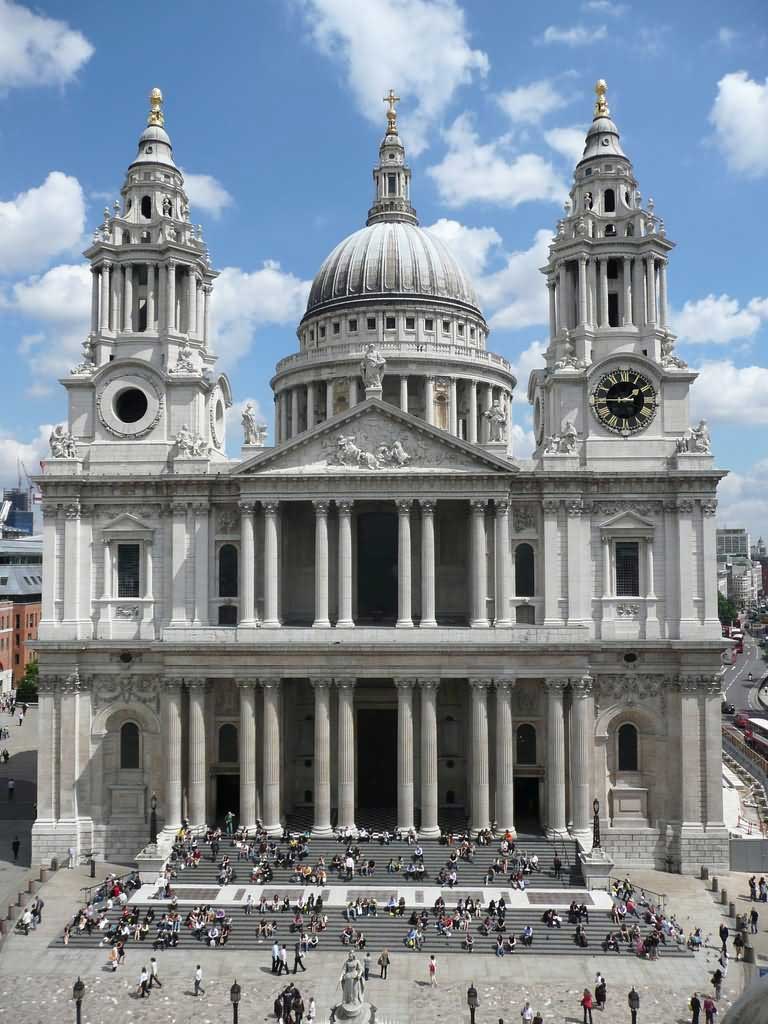
St. Paul’s Cathedral represents the English Baroque a style of architecture that emerged in the late 17th and early 18th centuries. The English Baroque uses classical elements, such as columns, pediments, and domes, combined with dynamic forms, rich ornamentation, and dramatic effects of light and shade. St. Paul’s Cathedral reflects the historical influences of various architectural traditions, such as the Roman, Byzantine, Gothic, Renaissance, and Palladian. Some of the notable features that show these influences are the dome, which St. Peter’s Basilica inspired in Rome; the west front, which resembles a Roman temple; the quire, which has Gothic vaults and tracery; the crossing tower, which recalls the lantern of Florence Cathedral; and the entrance, which follows the principles of Andrea Palladio.
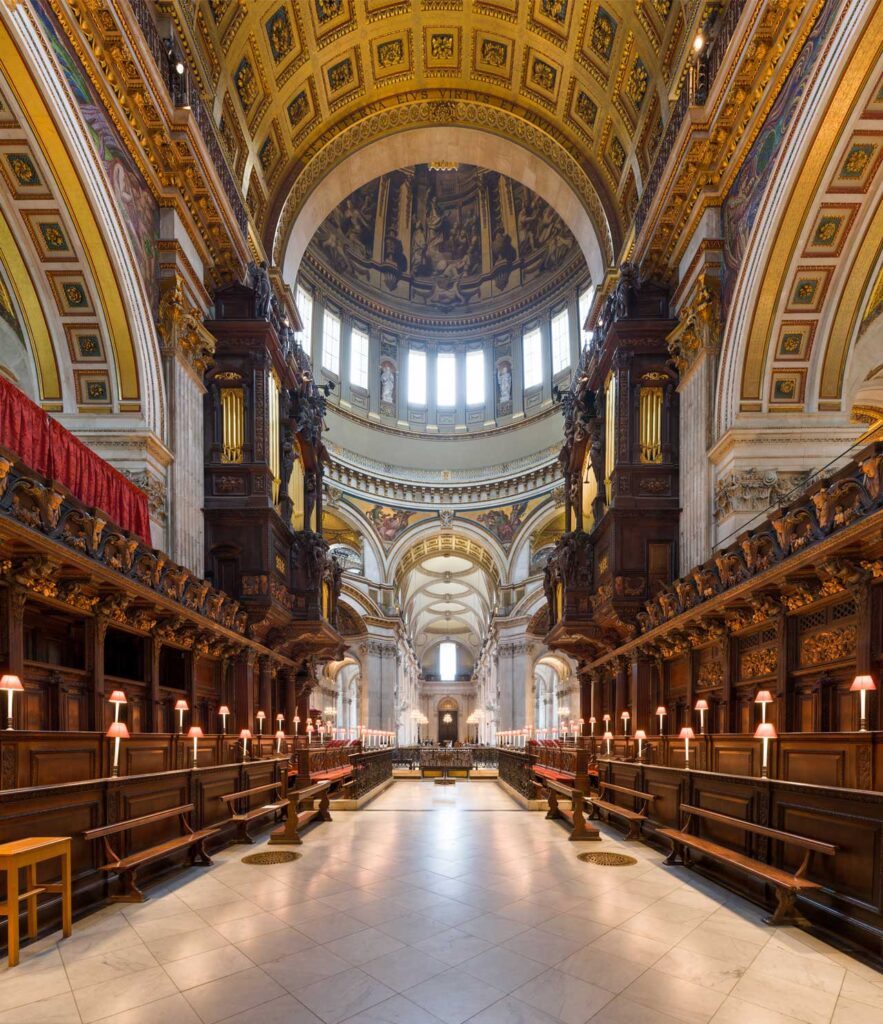
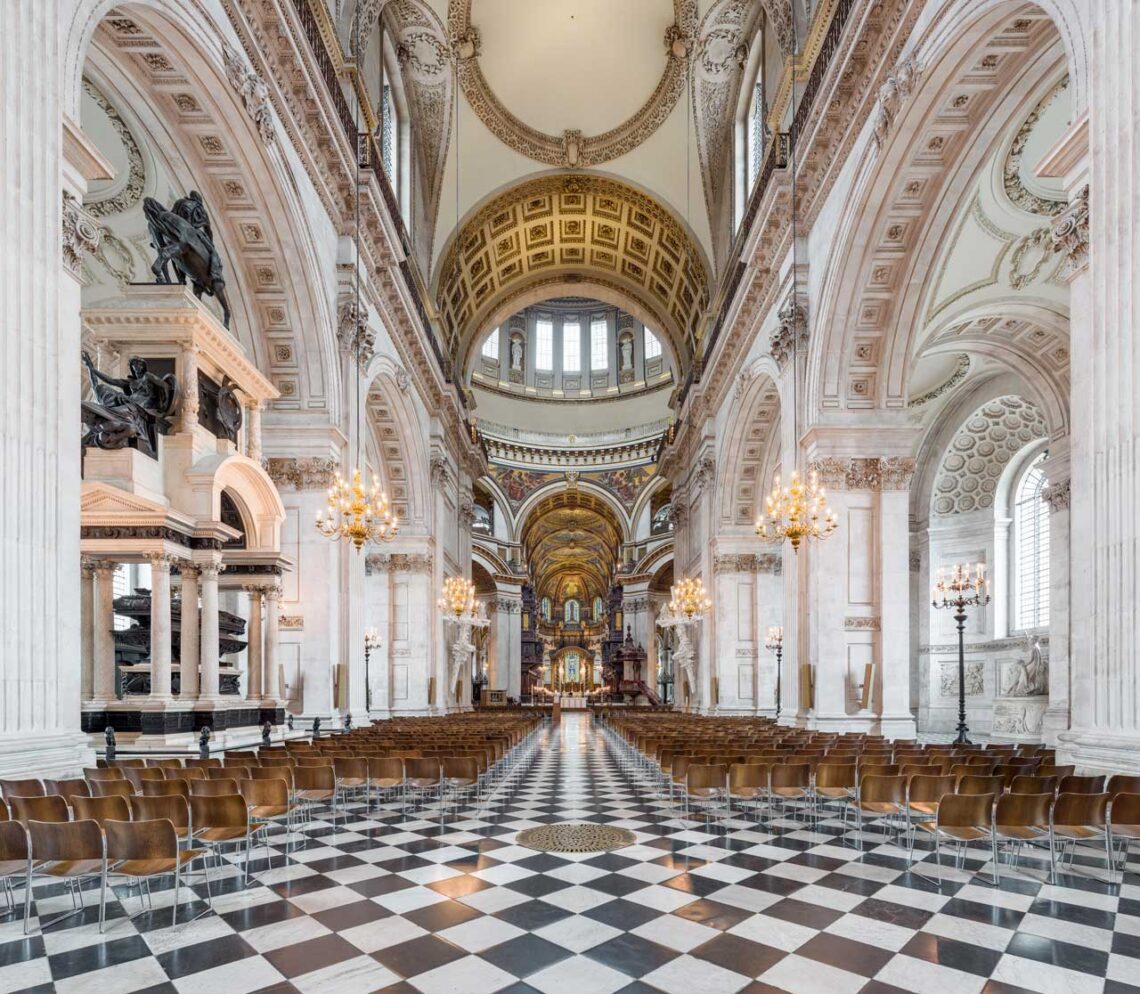
St. Paul’s Cathedral employs various lighting and shading techniques to create a sense of drama and contrast. The dome, for example, has three layers: the outer dome, which is visible from the outside; the inner dome, which is visible from the inside; and the brick cone, which supports the lantern. The inner dome has a series of windows that allow natural light to enter and illuminate the paintings on the ceiling. The lantern also has windows that cast light on the golden ball and cross at the top. The nave and the transepts have large clerestory windows that fill the space with light. The quire and the chapels have smaller windows that create a more intimate and subdued atmosphere. The cathedral’s exterior has projecting buttresses, cornices, and sculptures that form shadows and highlight the curves and angles of the building.
34. Cologne Cathedral
The Cologne Cathedral is a Roman Catholic cathedral church in Cologne, Germany. It is the seat of the Archbishop of Cologne and the administration of the Archdiocese of Cologne. It is also a popular German Catholicism and Gothic architecture monument and a UNESCO World Heritage Site. The Cologne Cathedral is located in the city center of Cologne, on the banks of the Rhine River. It is near the main railway station and the Hohenzollern Bridge. It is easily accessible by public transport and by foot. The construction of the Cologne Cathedral began in 1248 with the laying of a foundation stone but was halted around 1560, unfinished. Attempts to complete the construction began around 1814, but the project was not properly funded until the 1840s. The tower was completed to its original medieval plan in 1880.
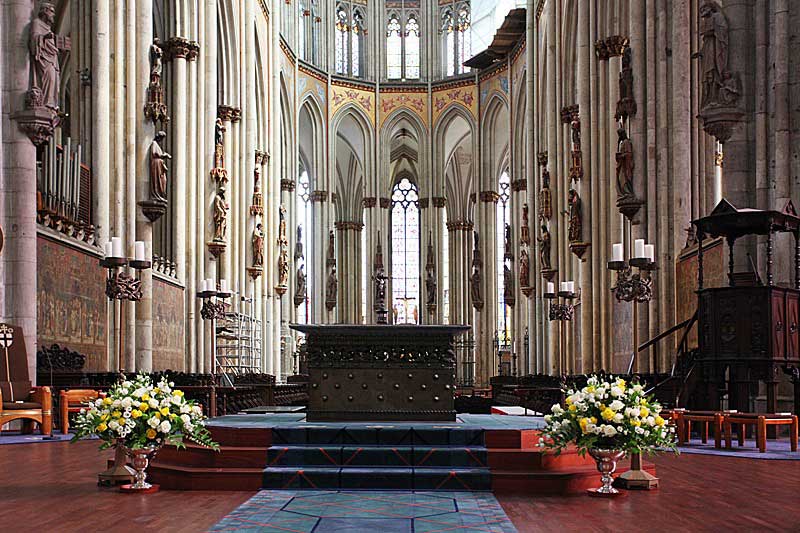
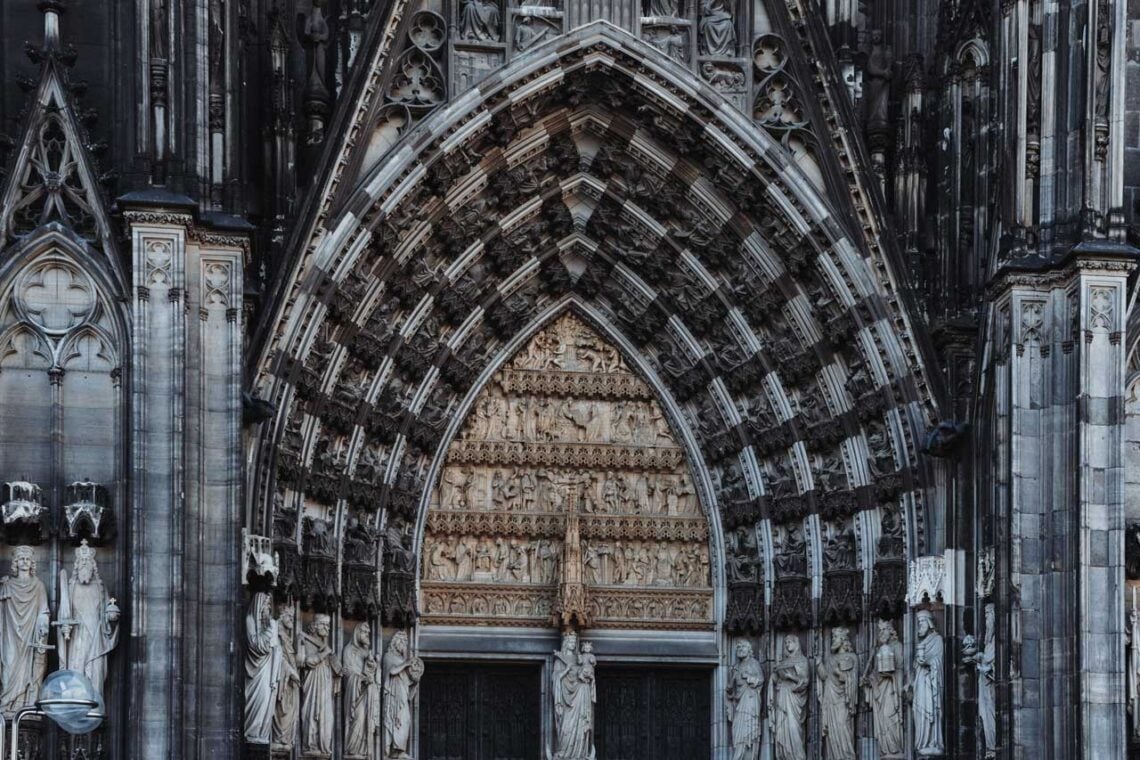
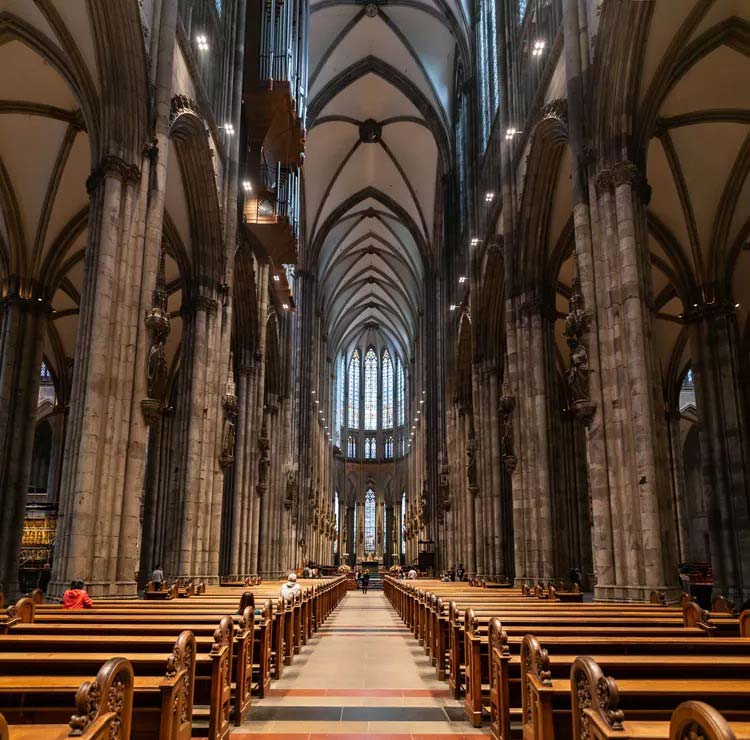
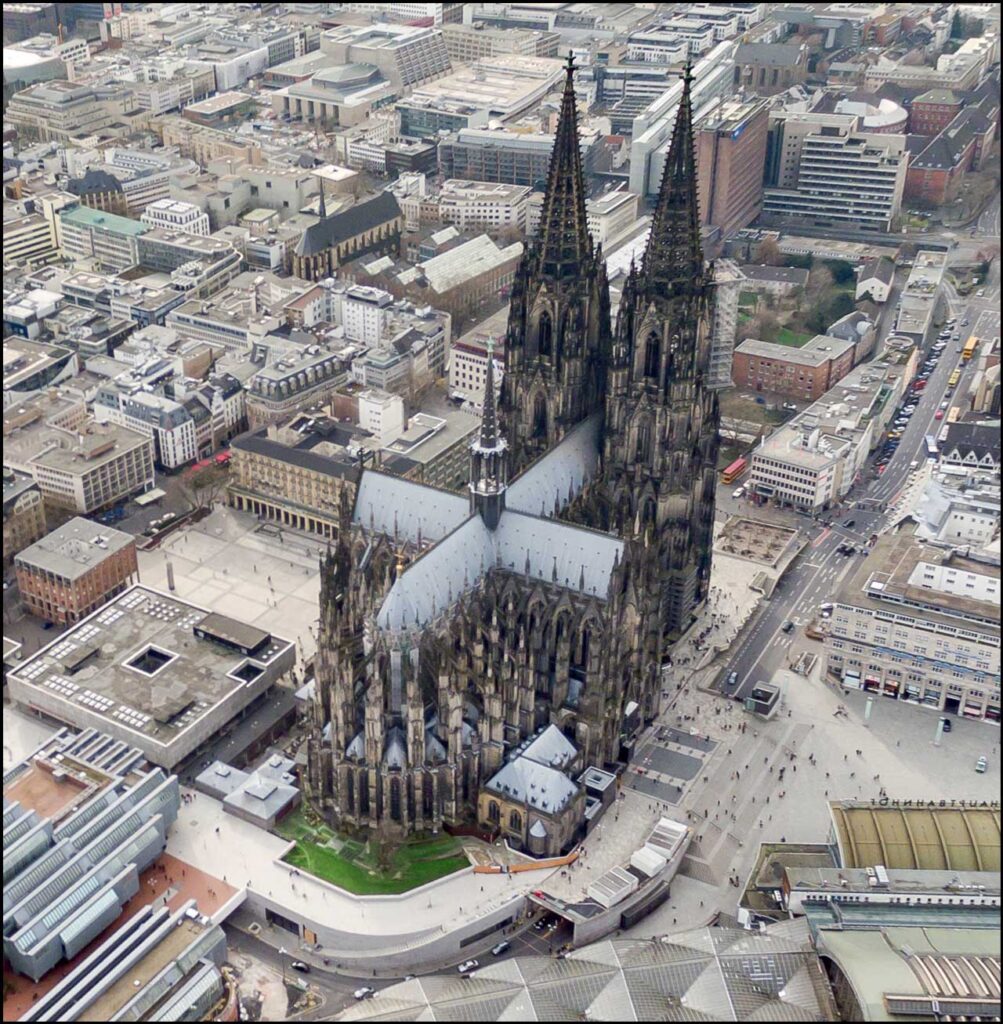
The Cologne Cathedral represents the Gothic architectural style, popular in Europe from the 12th to the 16th century. Gothic architecture is characterized by pointed arches, ribbed vaults, flying buttresses, large windows, and intricate details. The Cologne Cathedral is the largest Gothic church in Northern Europe and has the second-tallest spires in the world. The historical design influences in the Cologne Cathedral are mainly from the French Gothic cathedrals, such as Notre-Dame de Paris and Amiens Cathedral. These examples inspired The Cologne Cathedral and adopted their features, such as the three-aisled nave, transept, choir, radiating chapels, and rose windows. The Cologne Cathedral also incorporated elements from the local Romanesque tradition, such as the west work, the octagonal towers, and the arcades.
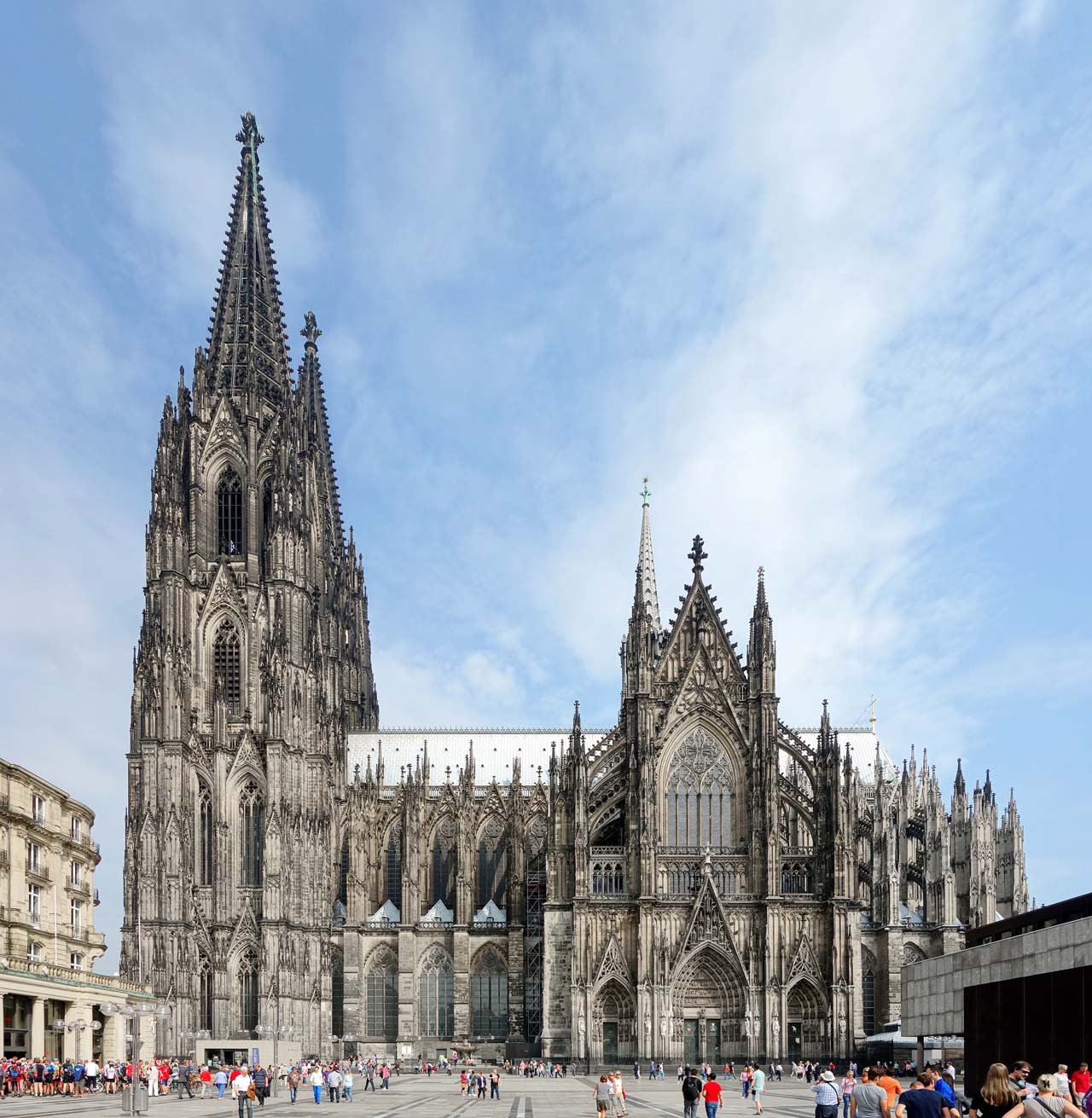
The lighting and shading techniques in the Cologne Cathedral are based on the contrast between the dark stone walls and the bright stained glass windows. The windows cover 107,639 square feet (10,000 square meters) of the cathedral and depict various scenes from the Bible, the saints, and the history of Cologne. The windows create a colorful and luminous atmosphere inside the cathedral, especially when the sun shines through them. The windows also filter the light and cast shadows on the walls, creating a dynamic and dramatic effect.
35. Bran Castle
Bran Castle is a medieval fortress built by the Saxons in 1377, who were given the privilege by Louis I of Hungary. It is also known as Dracula’s Castle because of its association with the fictional character created by Bram Stoker; however, there is no evidence that Stoker knew anything about this castle or that it was related to Vlad the Impaler, the historical figure who inspired Dracula. Bran Castle is located in Bran, a village 16 miles (25 kilometers) southwest of Brașov, in central Romania’s Transylvanian Alps (Southern Carpathian Mountains). It is on a rocky hill overlooking a valley that connects Transylvania and Wallachia. Bran Castle was built in 1377 as a defensive structure against the Ottoman Empire and a customs post on the mountain pass. It was completed in 1388 and underwent several modifications and expansions over the centuries. Queen Marie of Romania used it as a royal residence from 1920 to 1938, she restored and decorated it with art and furniture. It is now a museum and a tourist attraction, displaying the collections of Queen Marie and the castle’s history.
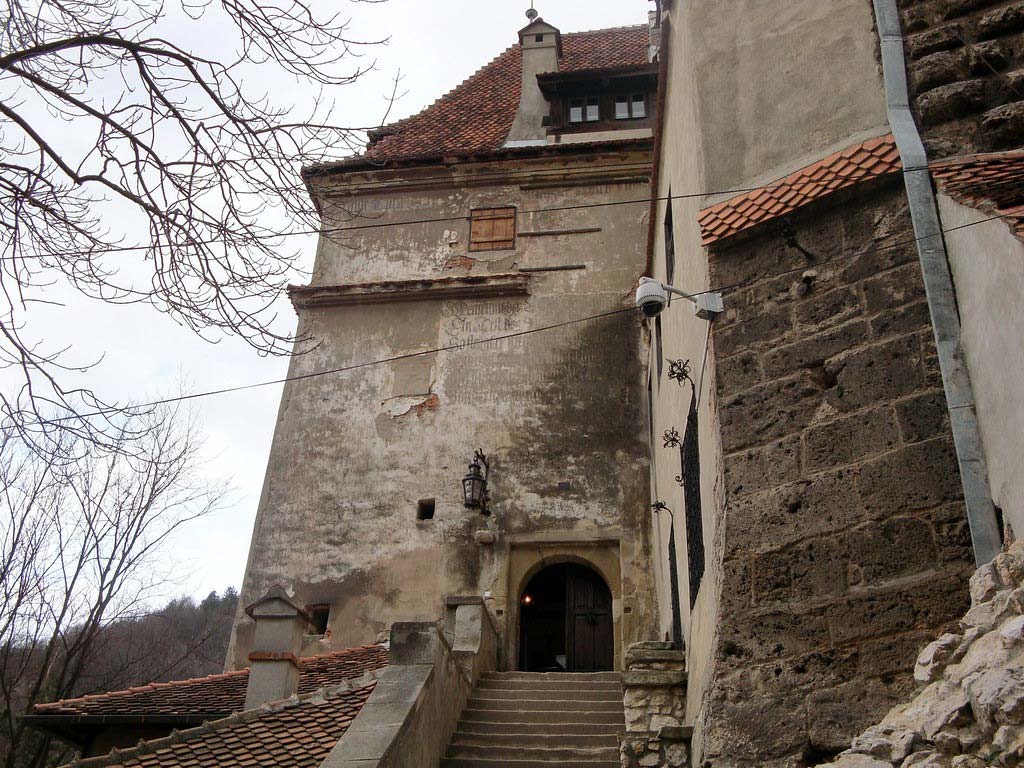
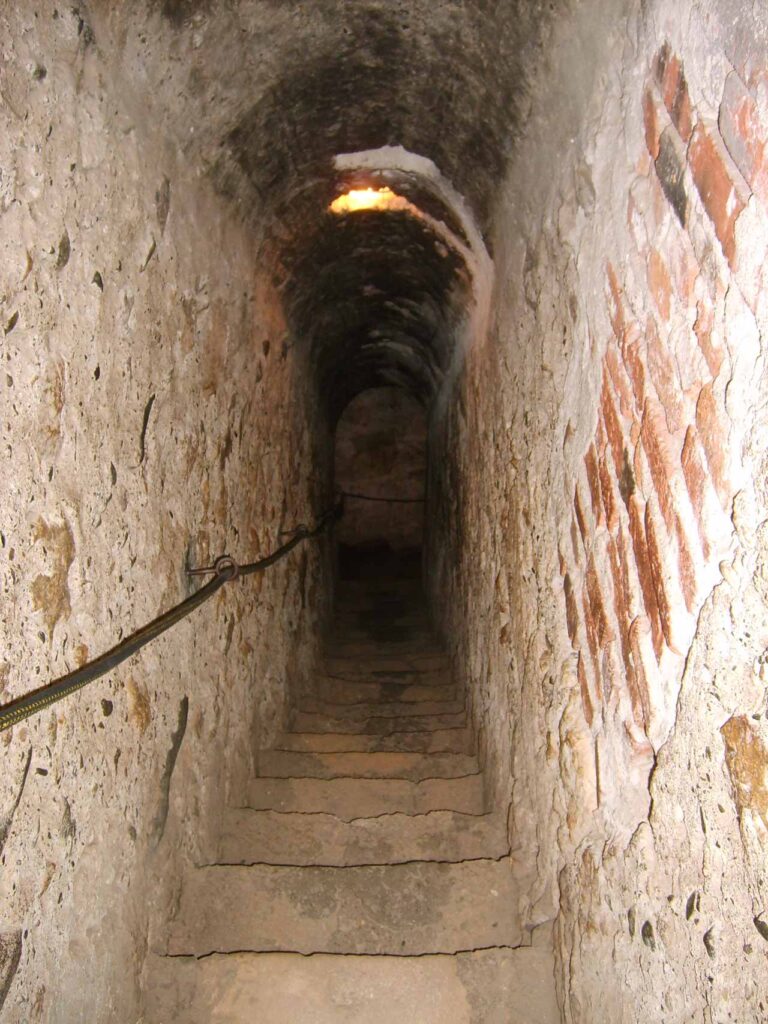
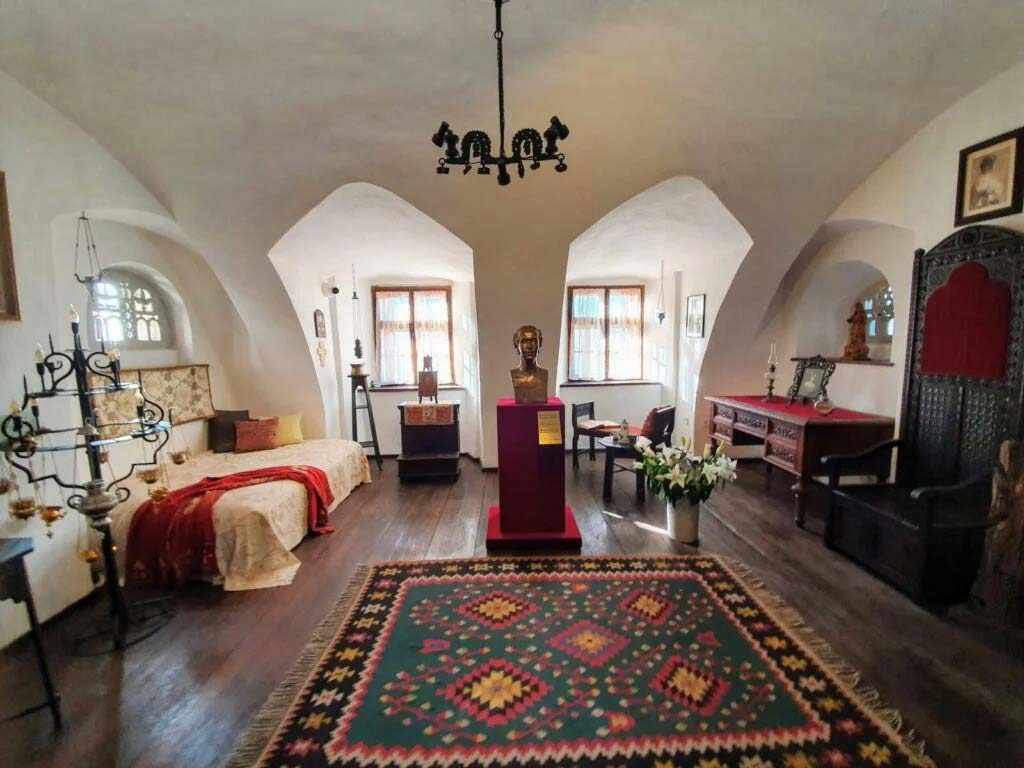
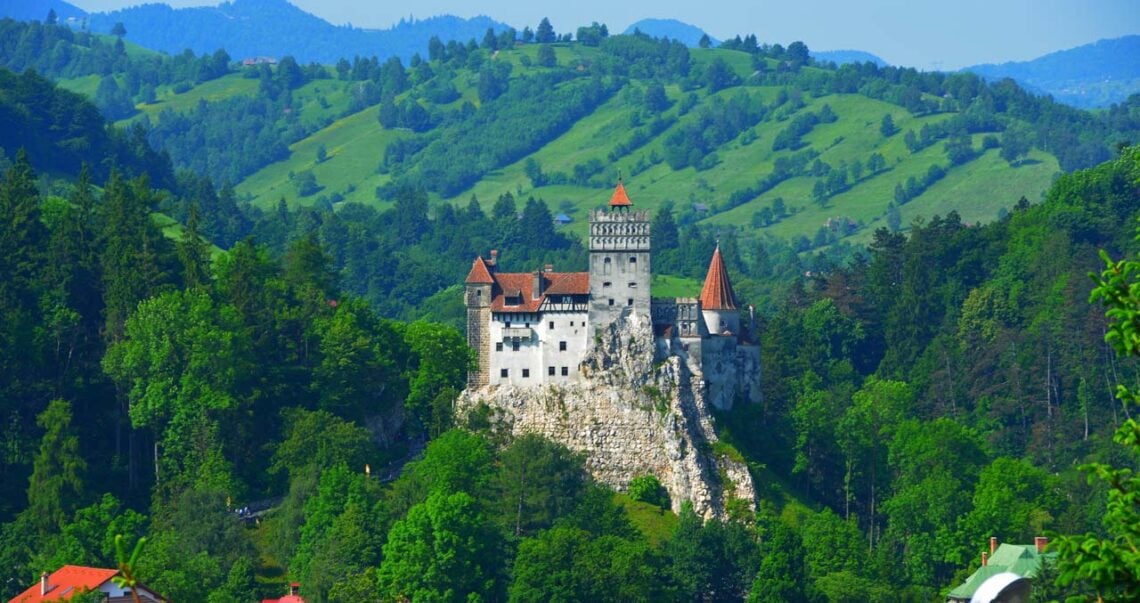
Bran Castle represents the medieval architectural style, characterized by thick stone walls, narrow windows, pointed arches, and towers. It is rectangular, with four corner towers and a central courtyard. It also has a drawbridge, a secret passage, and a dungeon. The castle combines Gothic, Renaissance, and Baroque styles, reflecting the different periods of its construction and renovation. Its location and owners’ historical and cultural context influenced Bran Castle. It reflects the Germanic heritage of the Saxons who built it and the region’s Romanian and Hungarian influences. It also shows the personal tastes and preferences of Queen Marie, who added elements of Romanian folk art, Oriental rugs, and English furniture to the castle. The castle also incorporates features related to the legend of Dracula, such as a wooden stake, a torture device, and a coffin.
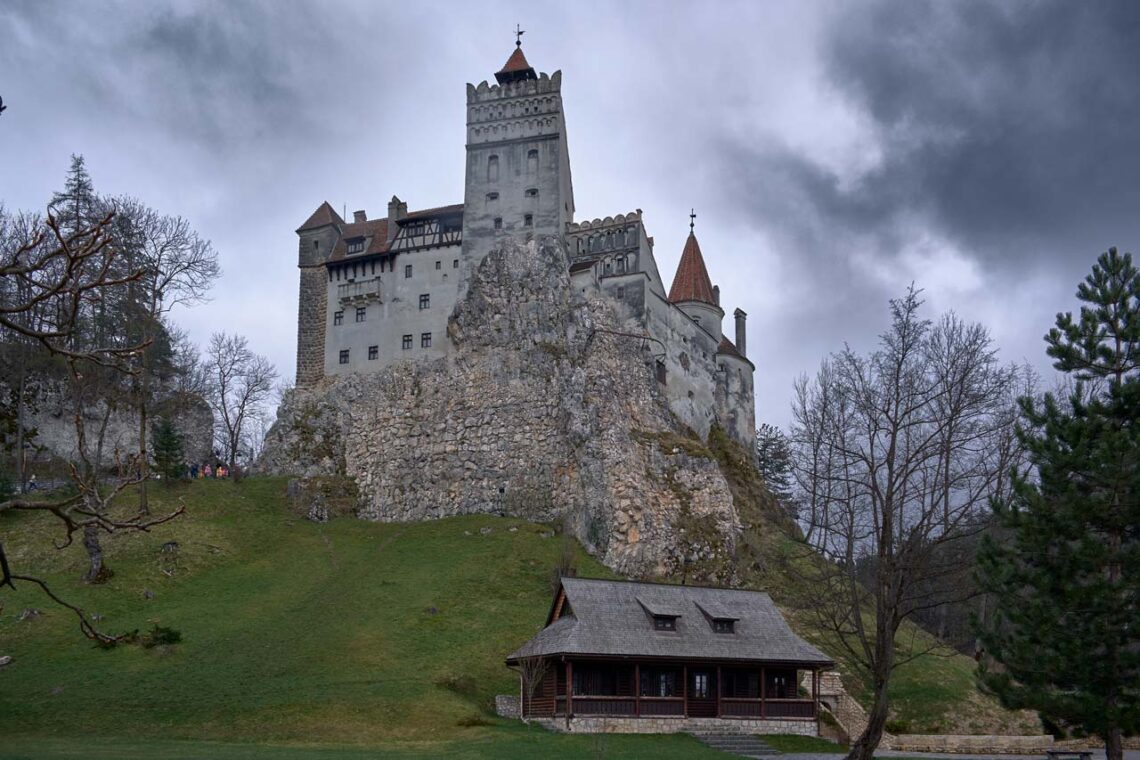
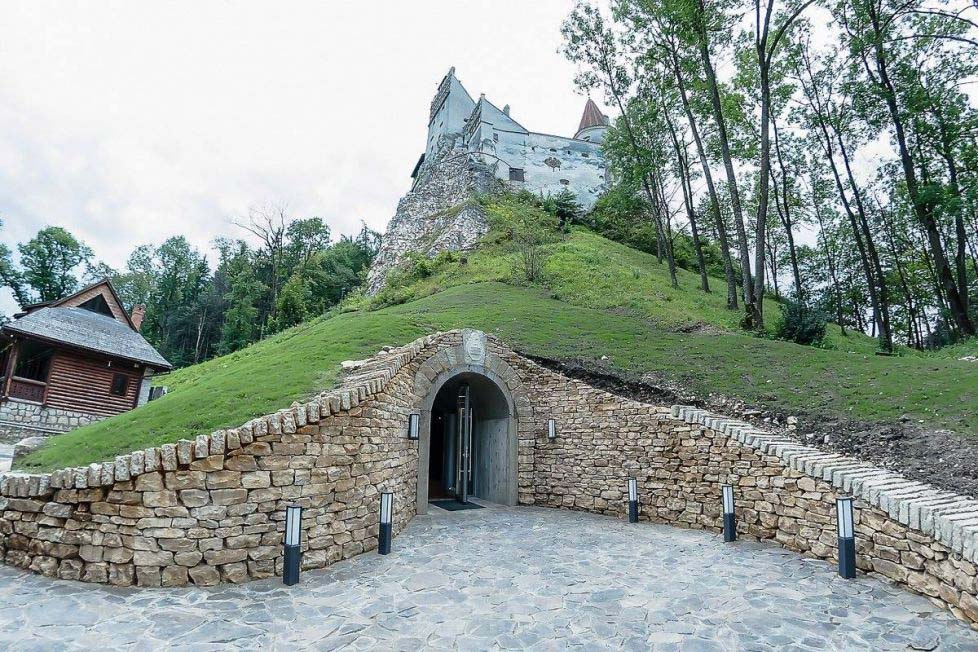
Bran Castle uses natural and artificial lighting and shading techniques to create different effects and atmospheres. The castle has many windows, some stained glass, that allow natural light to enter and illuminate the rooms. The castle also has lamps, candles, and fireplaces that provide artificial light and warmth. The castle uses shading techniques such as curtains, shutters, and awnings to control the amount and direction of light and create contrast and shadows. The castle also uses colors, textures, and patterns to enhance or reduce the impact of light and shade.
36. St. Basil’s Cathedral
St. Basil’s Cathedral is an Orthodox church in Red Square of Moscow and is one of Russia’s most popular cultural symbols. The building, now a museum, is officially known as the Cathedral of the Intercession of the Most Holy Theotokos on the Moat, or Pokrovsky Cathedral. The cathedral is located southeast of Red Square, near the Kremlin and the Moskva River. It is easily accessible by metro, bus, or taxi. The cathedral’s address is Red Square, 2, Moscow, Russia, 109012. St. Basil’s Cathedral was built from 1555 to 1561 on orders from Tsar Ivan the Terrible and commemorates the capture of Kazan and Astrakhan. A tenth chapel was built in 1588 over the grave of the venerated local saint Vasily (Basil). The cathedral’s completion, with its colors, was made in 1683.
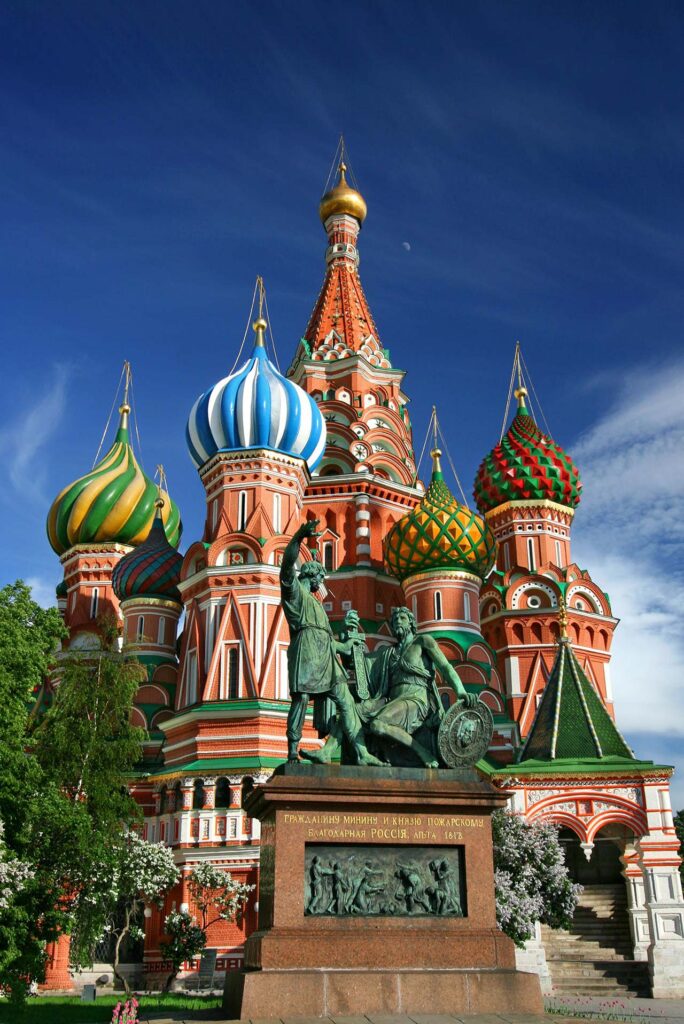
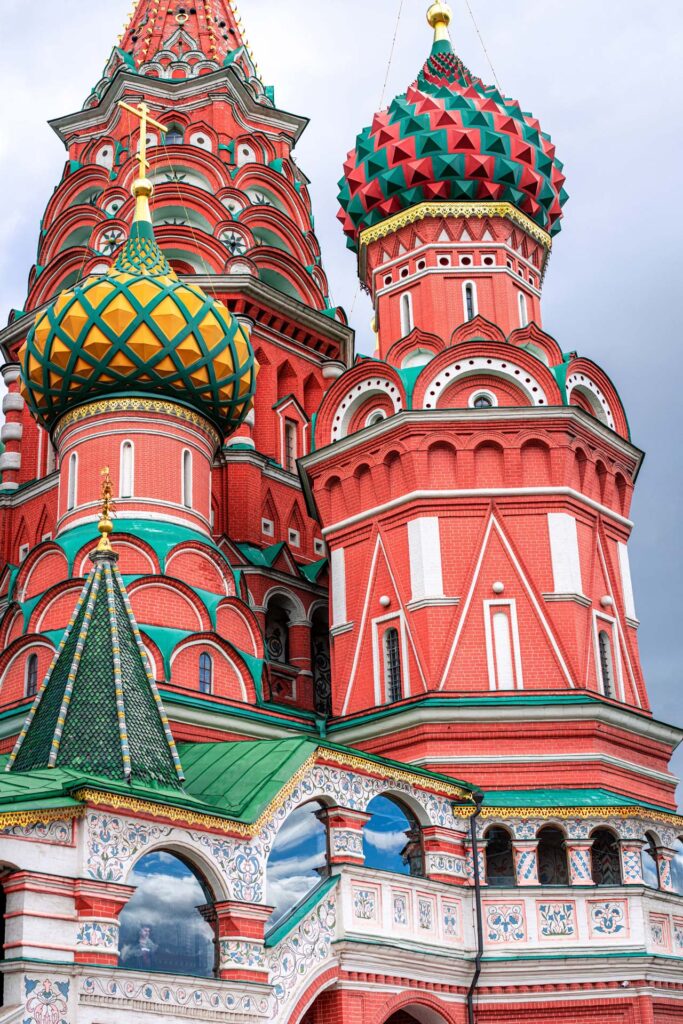
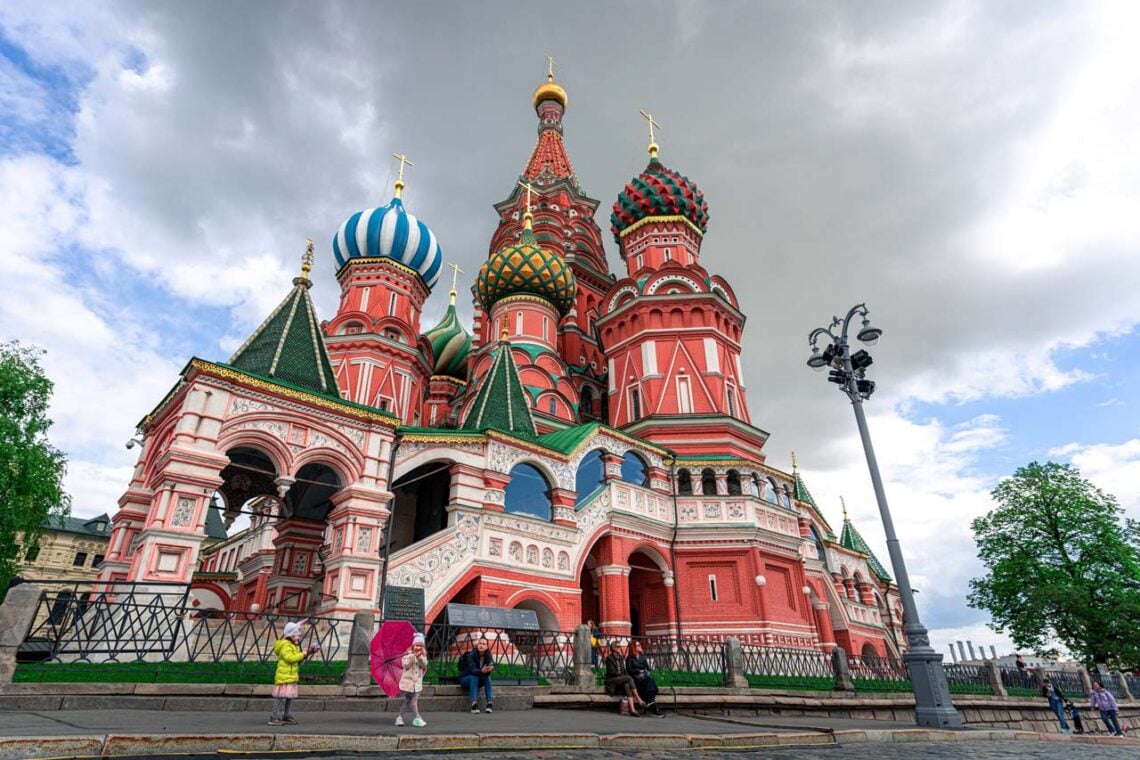
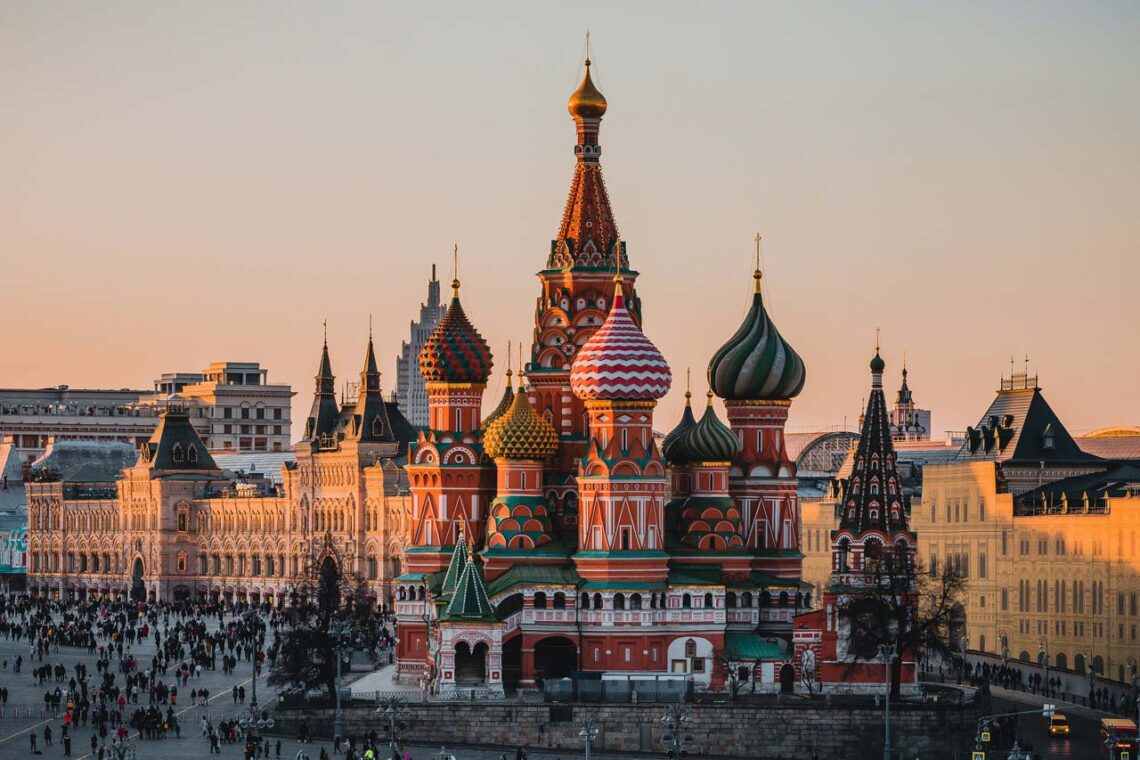
St. Basil’s Cathedral represents a unique blend of Russian and Byzantine architectural styles, with influences from Central Asian and Islamic cultures. The cathedral has nine domes, each corresponding to a different church, and is shaped like the flame of a bonfire rising into the sky. The cathedral foreshadowed the climax of Russian national architecture in the 17th century. The historical design influences in the cathedral include the tented roofs and onion domes of medieval Russian churches, the colorful tiles and patterns of Central Asian mosques, and the geometric shapes and arches of Byzantine basilicas. The biblical description of the Heavenly City and the Jerusalem Temple inspired the cathedral’s design. St. Basil’s Cathedral’s lighting and shading techniques are based on the contrast between the bright colors of the domes and the dark red brick walls. The domes are painted with various hues and patterns, creating a dynamic and festive impression. The walls are decorated with white stone carvings and windows, creating a sense of depth and texture. The cathedral’s interior is illuminated by natural light from the windows and artificial light from the lamps and candles.
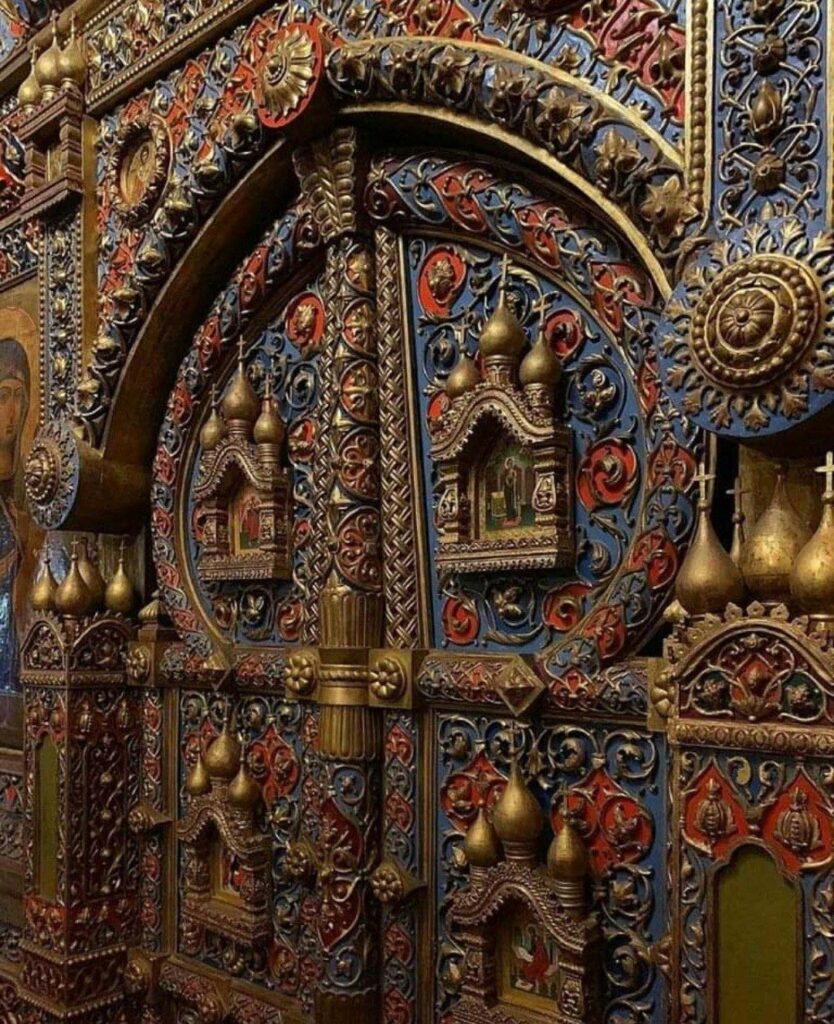
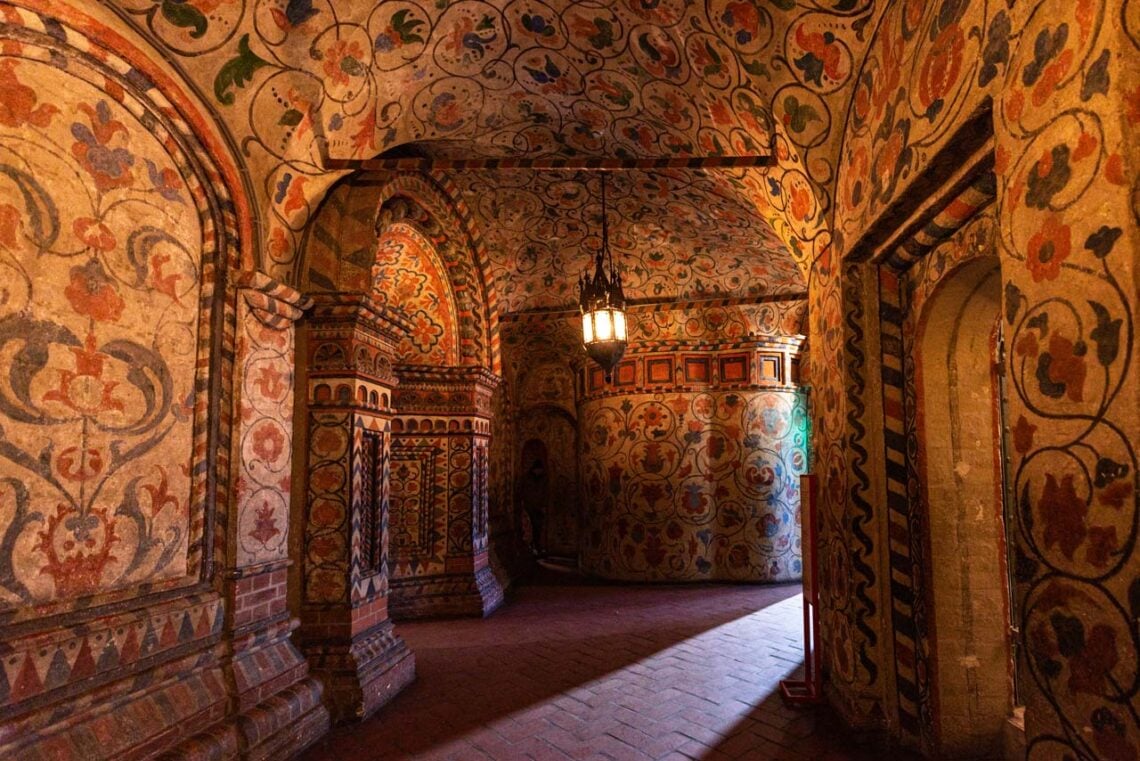
37. The Gateway Arch
The Gateway Arch is a monument in St. Louis, Missouri that sits along the west bank of the Mississippi River. It is the world’s tallest arch and Missouri’s tallest accessible building. It is also considered the tallest human-made monument in the Western Hemisphere. The Gateway Arch is located at 100 Washington Avenue, St. Louis, Missouri, 63102, U.S. It is part of the Gateway Arch National Park, including the Old Courthouse and the Museum at the Gateway Arch. The Gateway Arch was built between 1963 and 1965 and was inaugurated on June 10, 1967. The construction cost was $13 million (€11.83 million, £11.31 million).
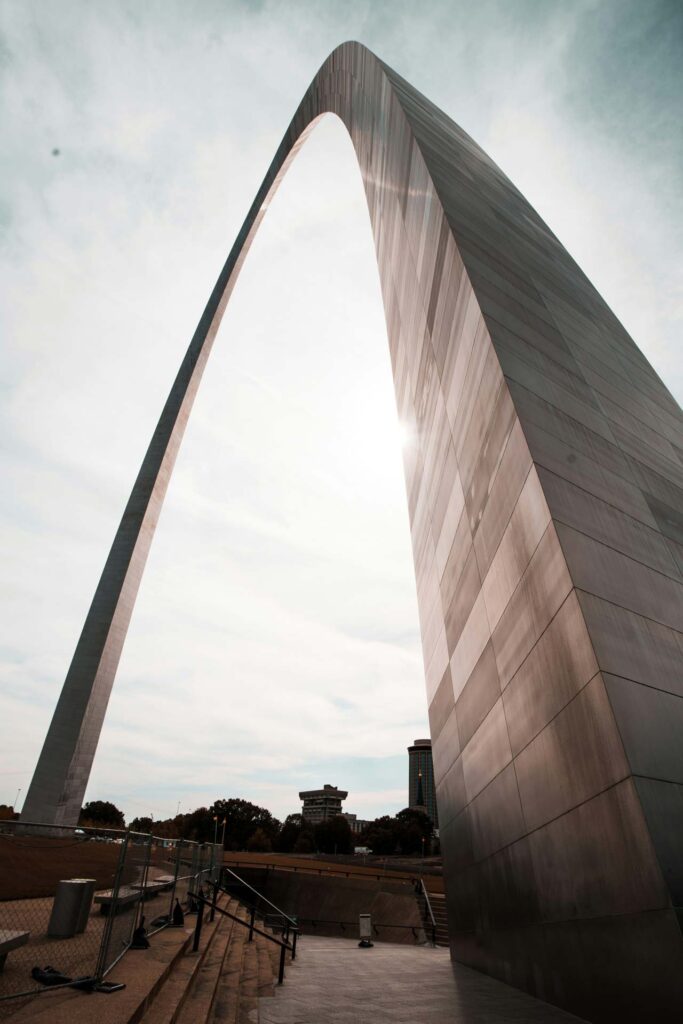
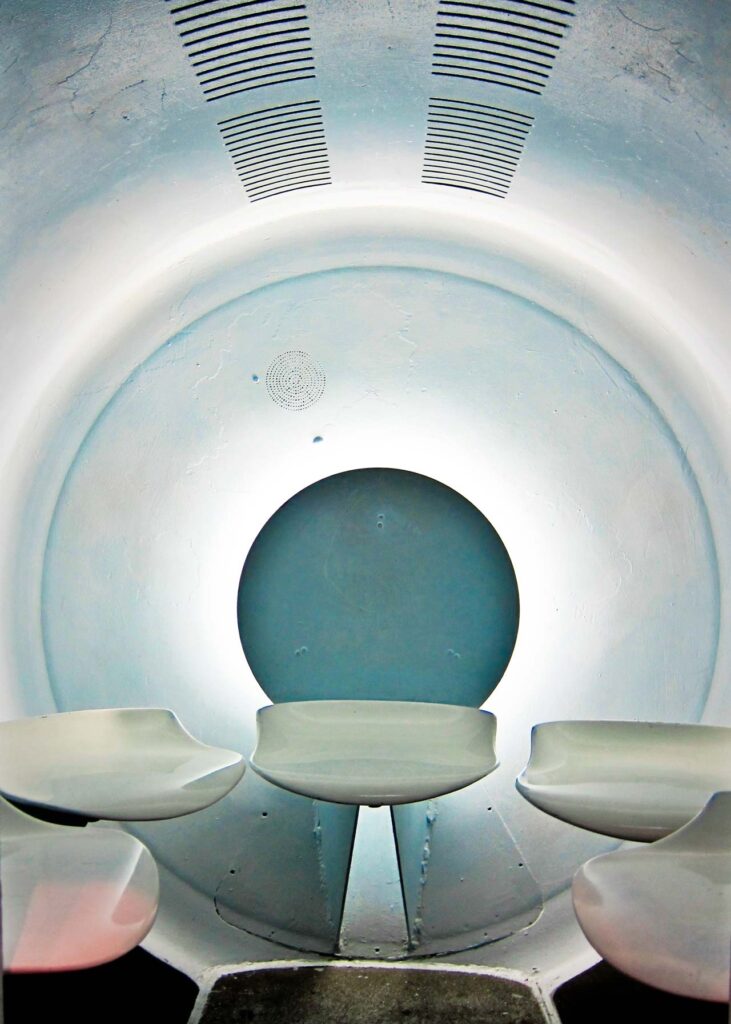
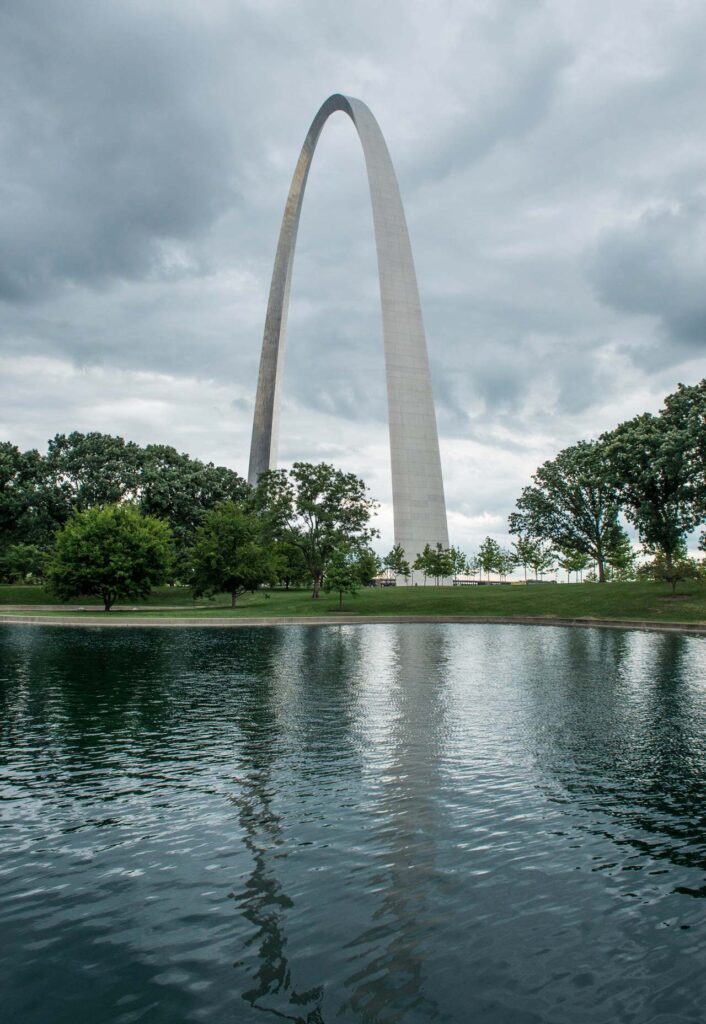
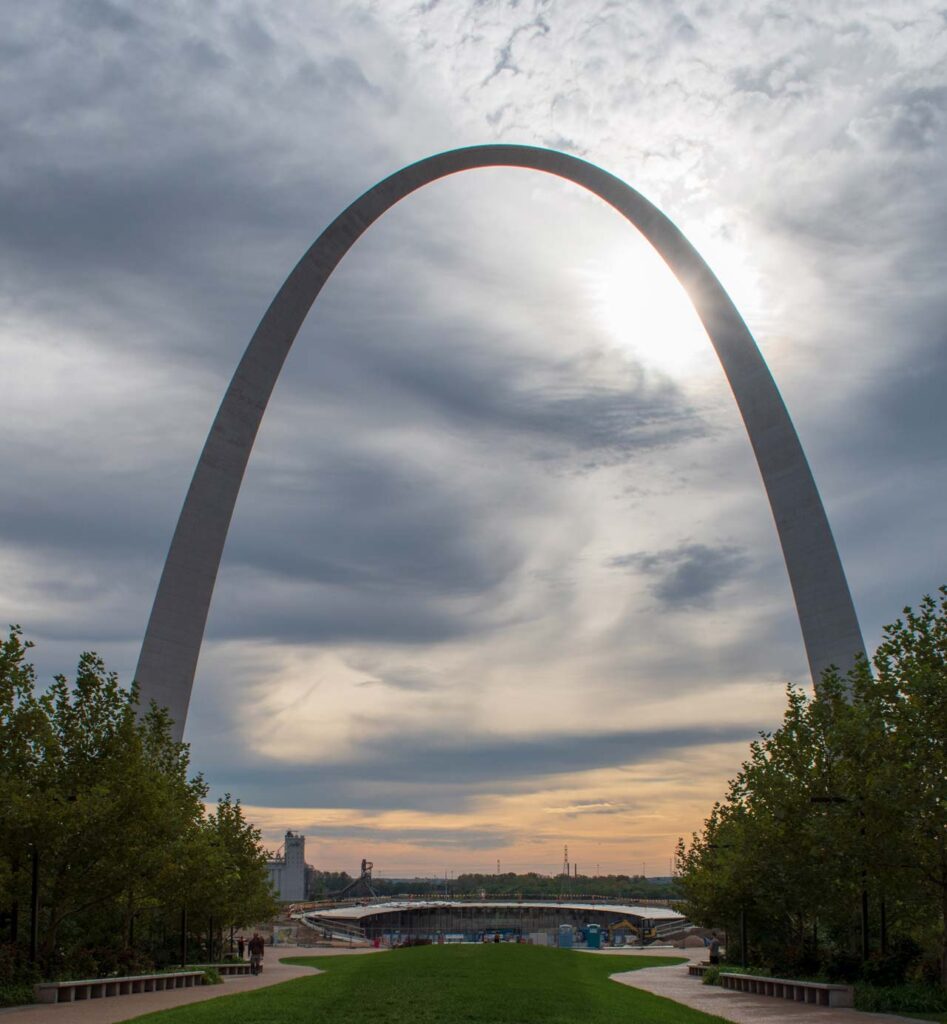
The Gateway Arch represents the architectural style of structural expressionism. This style emphasizes using materials and forms to express the structure and function of a building. The Gateway Arch is an example of a weighted catenary arch, a curved shape that supports itself by tension and compression. Historical designs of arches and monuments influenced the Gateway Arch. The architect, Eero Saarinen, was inspired by the Roman Arch of Constantine and the Washington Monument. He also studied the engineering of bridges and dams. He wanted to create a symbol of the United States’ westward expansion in the 19th century. The Gateway Arch uses lighting and shading techniques to enhance its appearance and visibility. The arch is clad in stainless steel, which reflects the sunlight and the colors of the sky. At night, the arch is illuminated by white floodlights from below. The lighting system can also change colors for special occasions. The arch also casts long shadows on the ground, contrasting with the surrounding landscape.
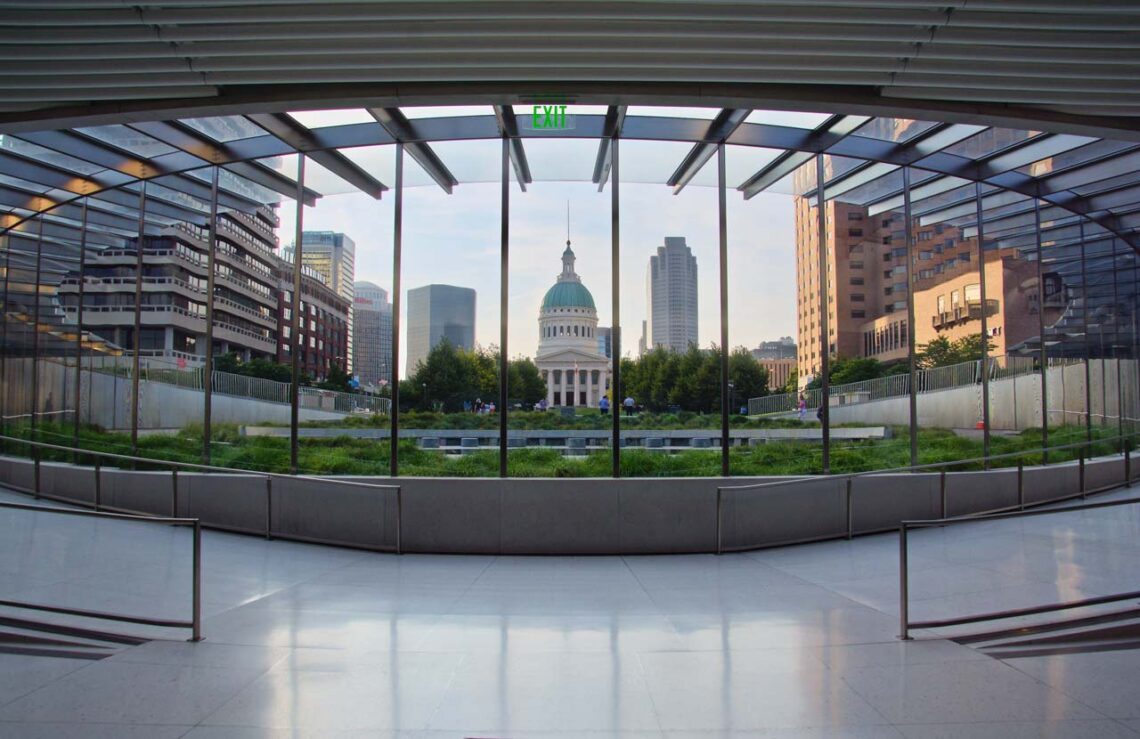
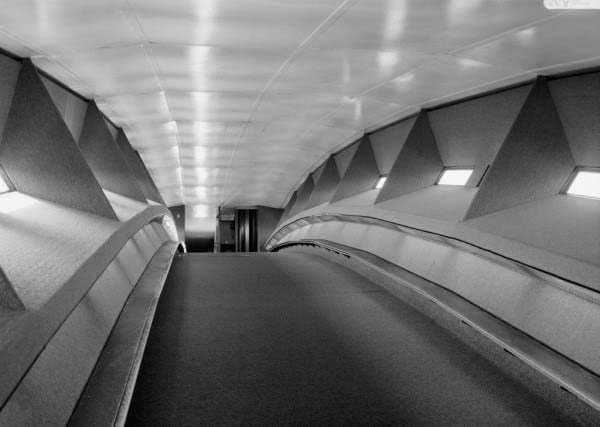
38. Lotus Temple
The Lotus Temple is a Bahá’í house of worship dedicated in December 1986. It is notable for its lotus-like shape, which has become a prominent attraction in New Delhi, India. Like all Bahá’í houses of worship, the Lotus Temple is open to all, regardless of religion or other qualifications. The Lotus Temple is in the Bahapur village of New Delhi, India. It is on a 9.7-hectare (23.9692 acre) site near Nehru Place, a commercial and residential area in South Delhi. The temple is surrounded by nine reflecting pools and gardens, which create a serene and peaceful atmosphere. The Lotus Temple was built for 10 years, from 1976 to 1986. The construction was done by ECC Construction Group of Larsen & Toubro Limited, a leading Indian engineering and construction company. The total cost of the project was $10.56 million (€9.61 million, £9.19 million), which was partly funded by a major donation from a Bahá’í practitioner, Ardishír Rustampúr of Hyderabad, who gave his entire life savings for the temple.
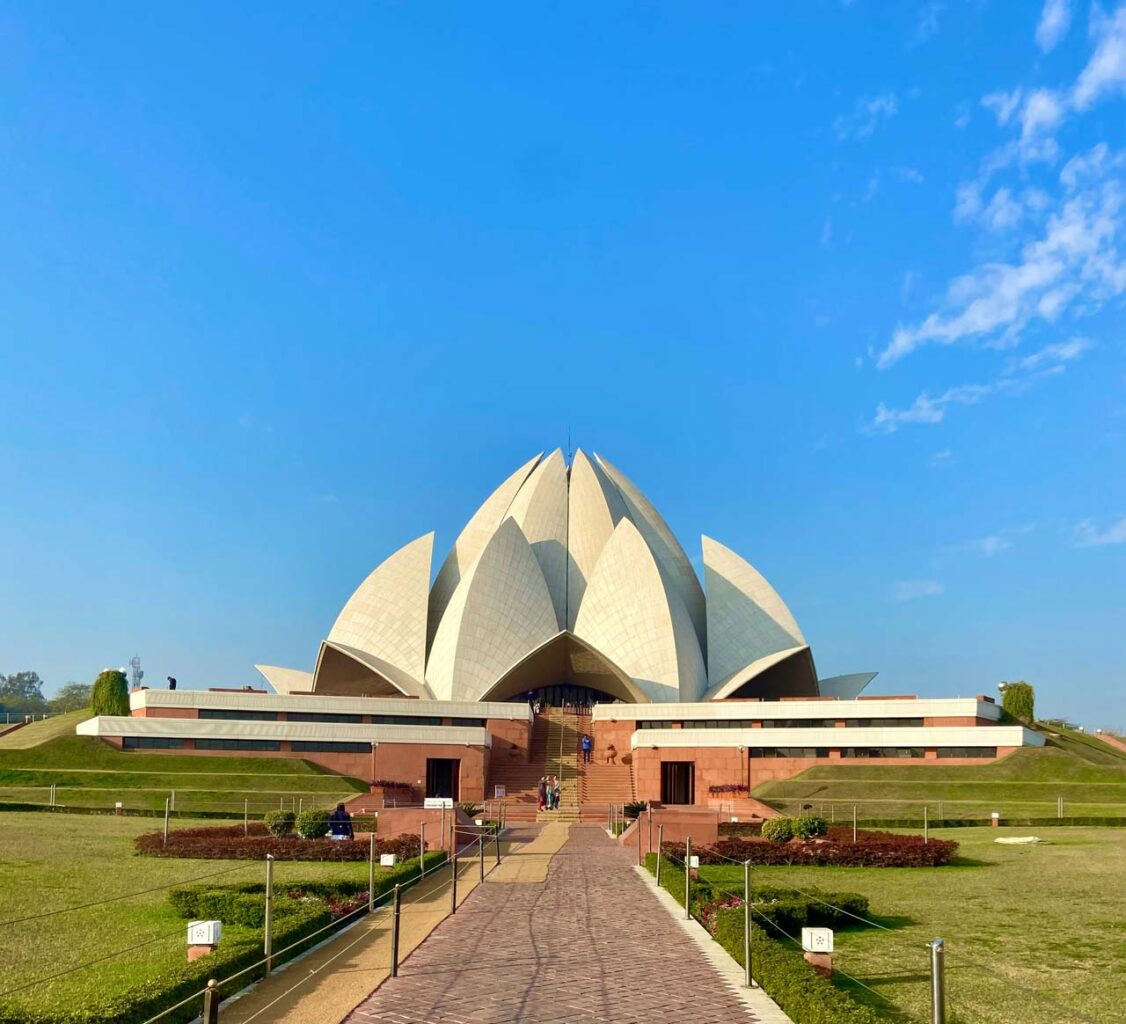
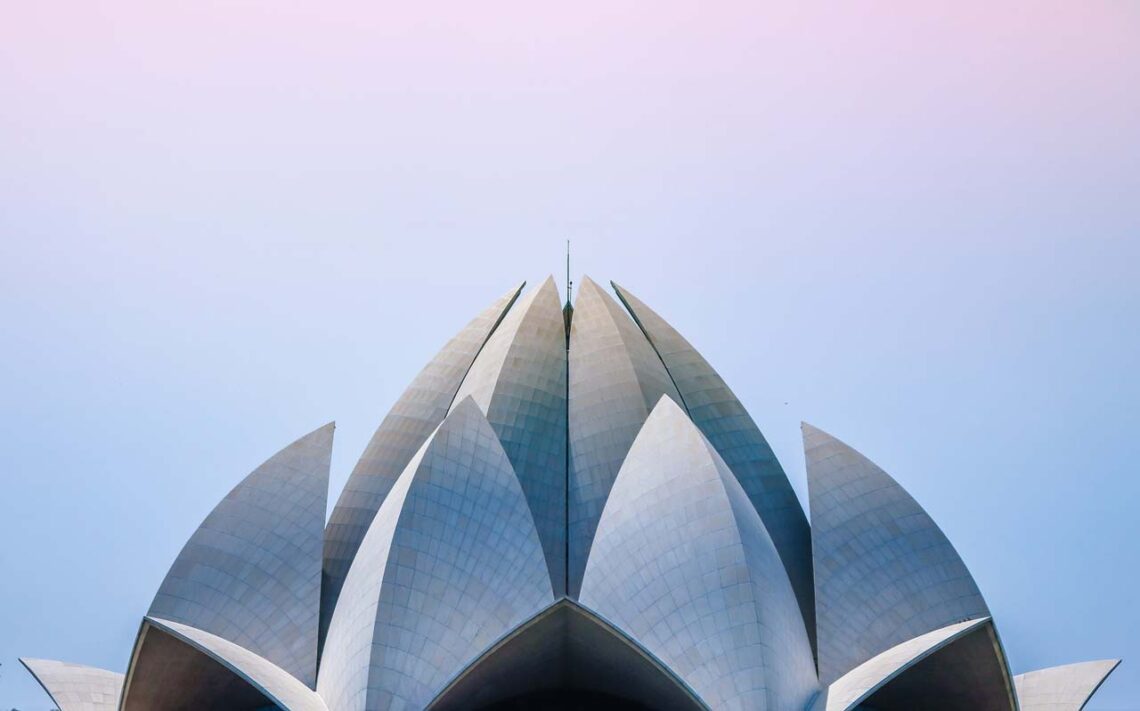
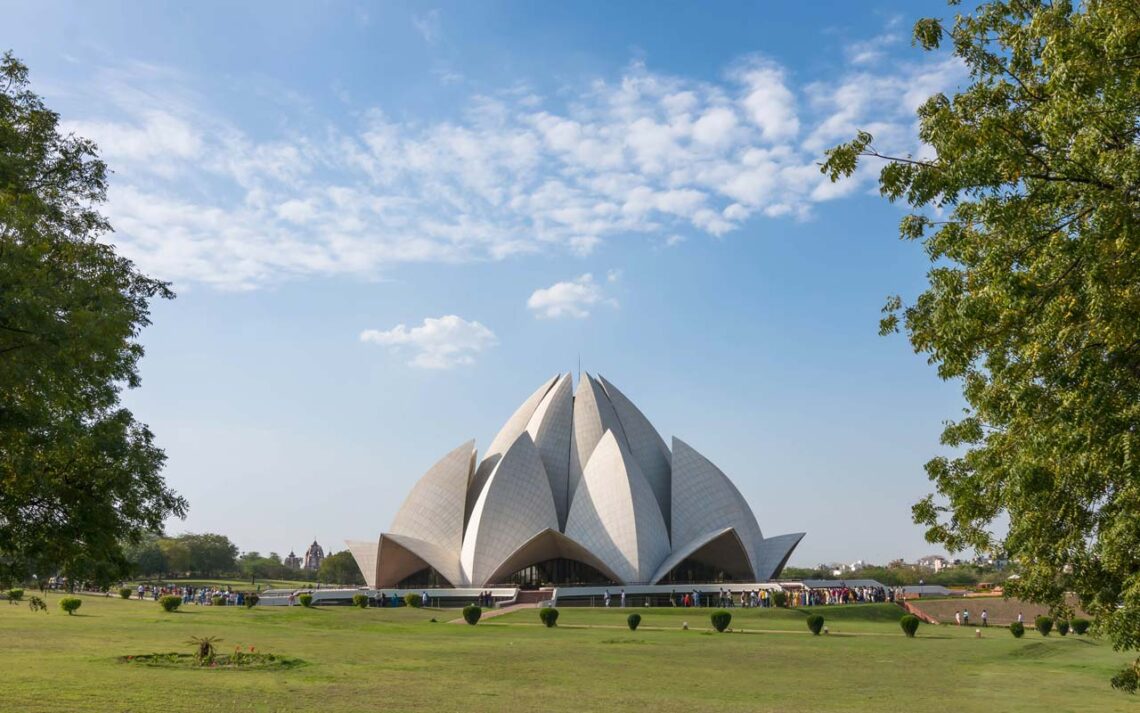
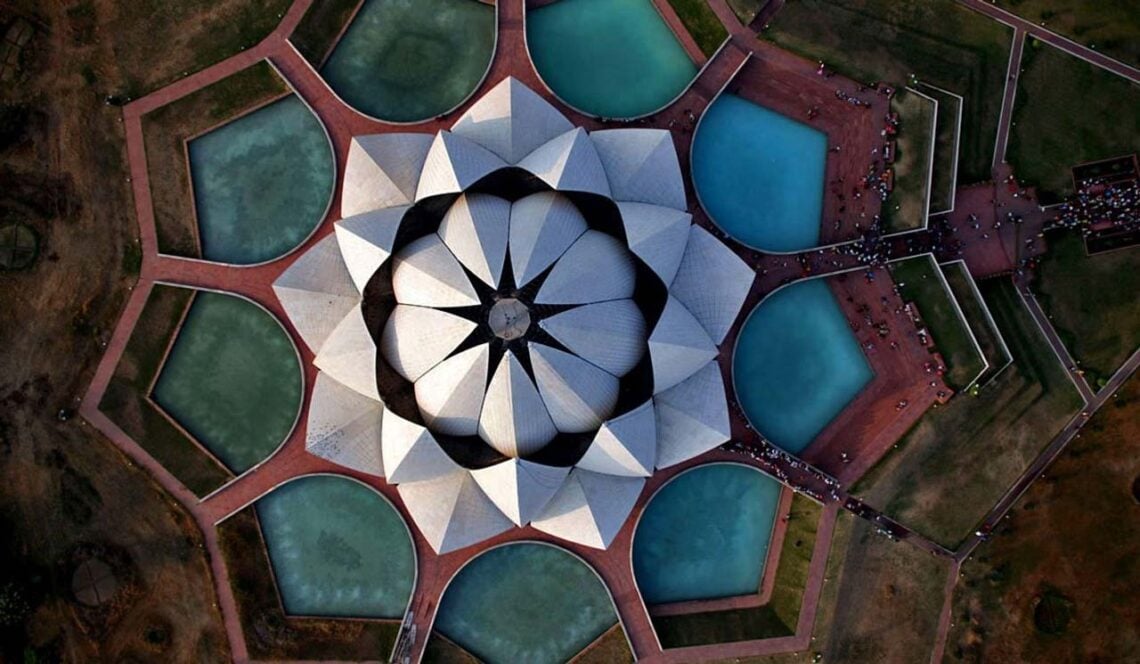
The Lotus Temple is an example of contemporary expressionist architecture, a style that is characterized by non-traditional and asymmetrical designs. The architect, Fariborz Sahba, an Iranian Bahá’í, was inspired by the lotus flower, a symbol of purity, beauty, and divinity in many Indian religions. He designed the temple to reflect the simplicity, clarity, and freshness of the Bahá’í faith and to symbolize the unity of mankind and religions. The Lotus Temple has some historical design influences from various cultures and traditions. The lotus shape is derived from ancient Indian art and architecture, often using the lotus motif as a decorative or spiritual symbol. The temple also incorporates some aspects of Islamic architecture, such as arches, domes, and geometric patterns. The white marble cladding of the temple is reminiscent of the Taj Mahal, another famous monument in India. The temple also has some similarities with other Bahá’í houses of worship around the world, such as the use of nine-sided structures, which represent the world’s nine major religions.
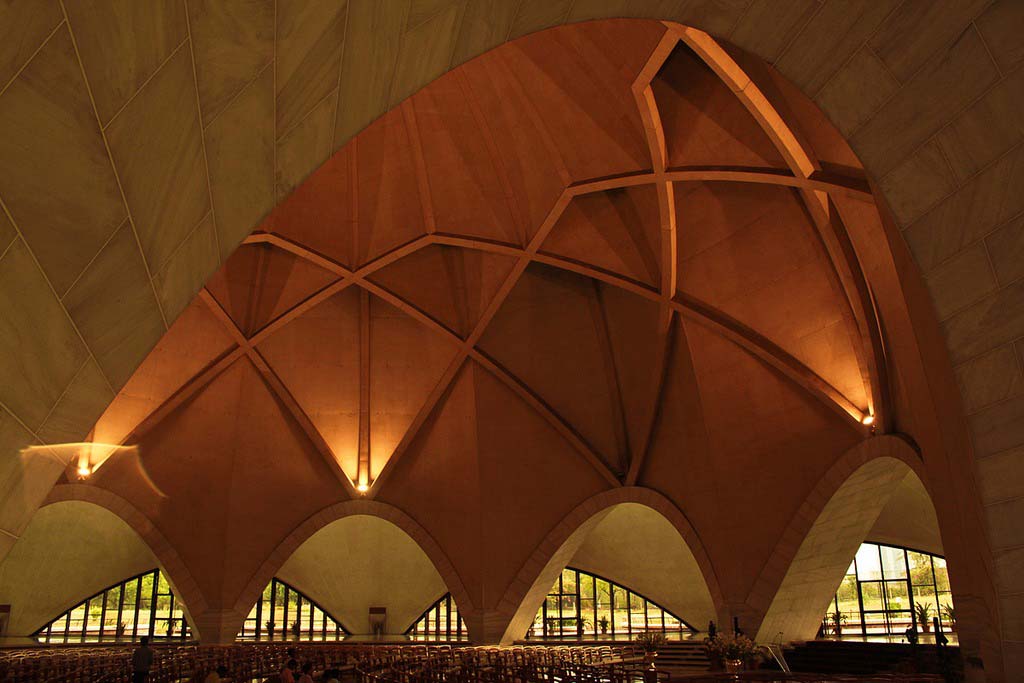
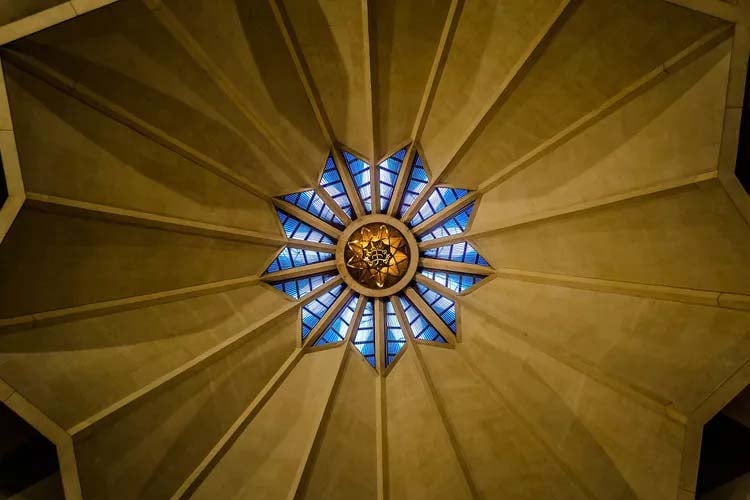
The Lotus Temple uses innovative lighting and shading techniques to create a stunning visual effect. The temple comprises 27 free-standing petals arranged in three ranks of nine each. The first two ranks curve inward, embracing the inner dome, while the third rank turns outward, forming canopies over the nine entrances. The petals have openings at the top and bottom, which allow natural light and ventilation to enter the temple. The petals also have glazing at the apex of the inner petals, underneath the outer petals, and on the external side of the entrance petals, which function as skylights. The light thus filters into the central hall in the same way as it passes through the lotus flower. The temple also has a large glass and steel skylight at the top of the structure, which lets in more natural light. The external illumination of the temple is arranged to make the lotus structure appear floating on water at night. The reflecting pools around the temple also enhance the lighting and shading effects, contrasting the white marble and the blue water.
39. Fairmont Le Château Frontenac
The Fairmont Le Château Frontenac is a luxury hotel the Canadian Pacific Railway company built as part of its series of grand railway hotels. It is one of the most iconic landmarks in Quebec City and Canada. It has hosted many notable guests, such as Queen Elizabeth II, Franklin D. Roosevelt, Winston Churchill, and Céline Dion. The Fairmont Le Château Frontenac is located in Old Quebec, within the historic district’s Upper Town, on the southern side of Place d’Armes. It overlooks the Saint Lawrence River and the Plains of Abraham, where the Battle of the Plains of Abraham took place in 1759. The Fairmont Le Château Frontenac was designed by American architect Bruce Price, who was inspired by the châteaux of the Loire Valley in France. The construction began in May 1892 and the hotel opened on December 18, 1893. The hotel was expanded on three occasions, in 1908, 1924, and 1993, adding more rooms, wings, and towers.
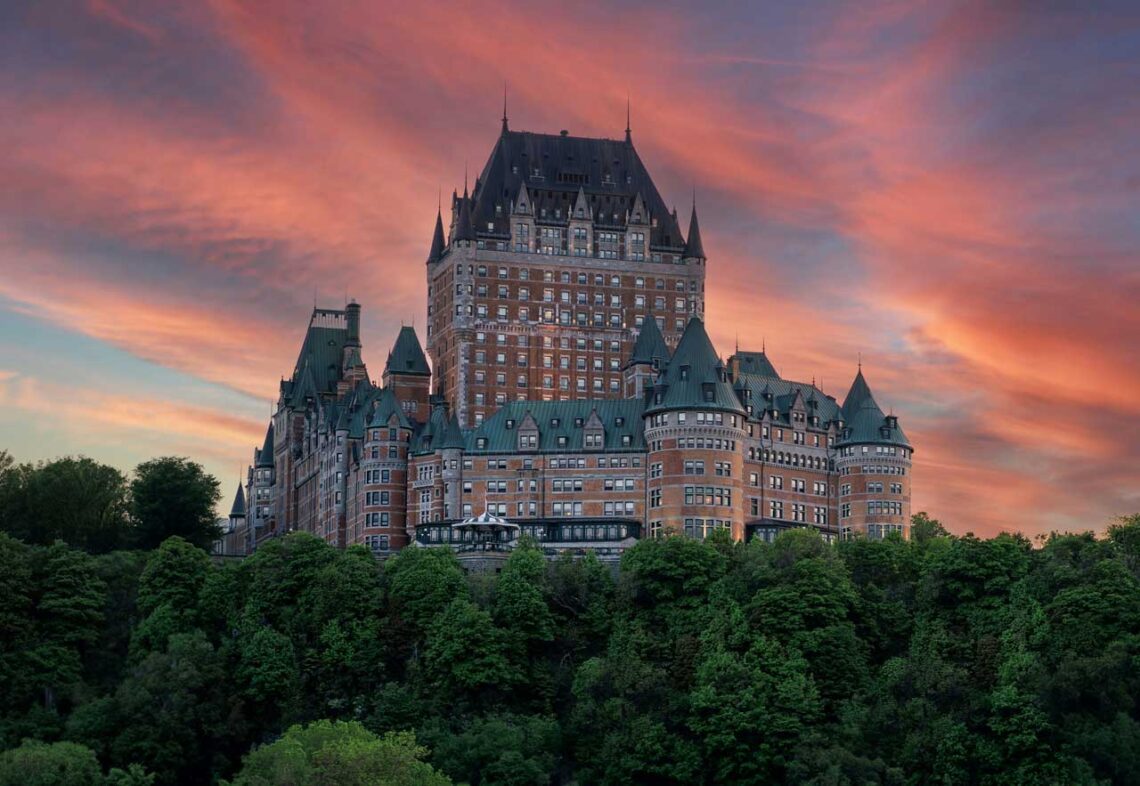
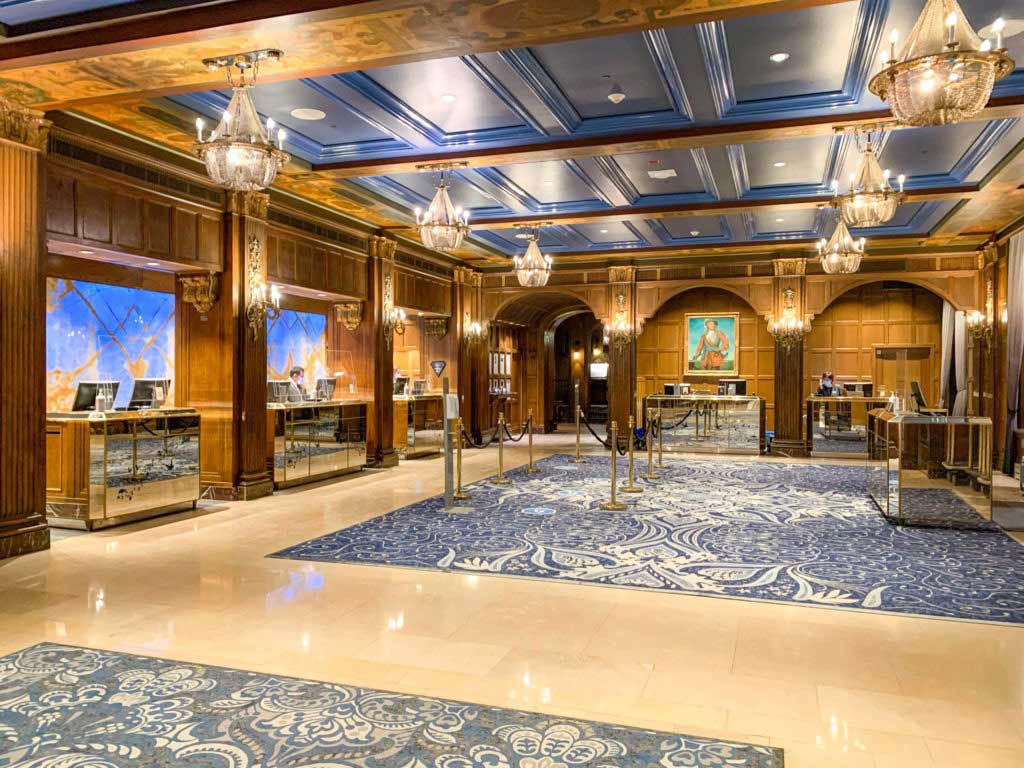
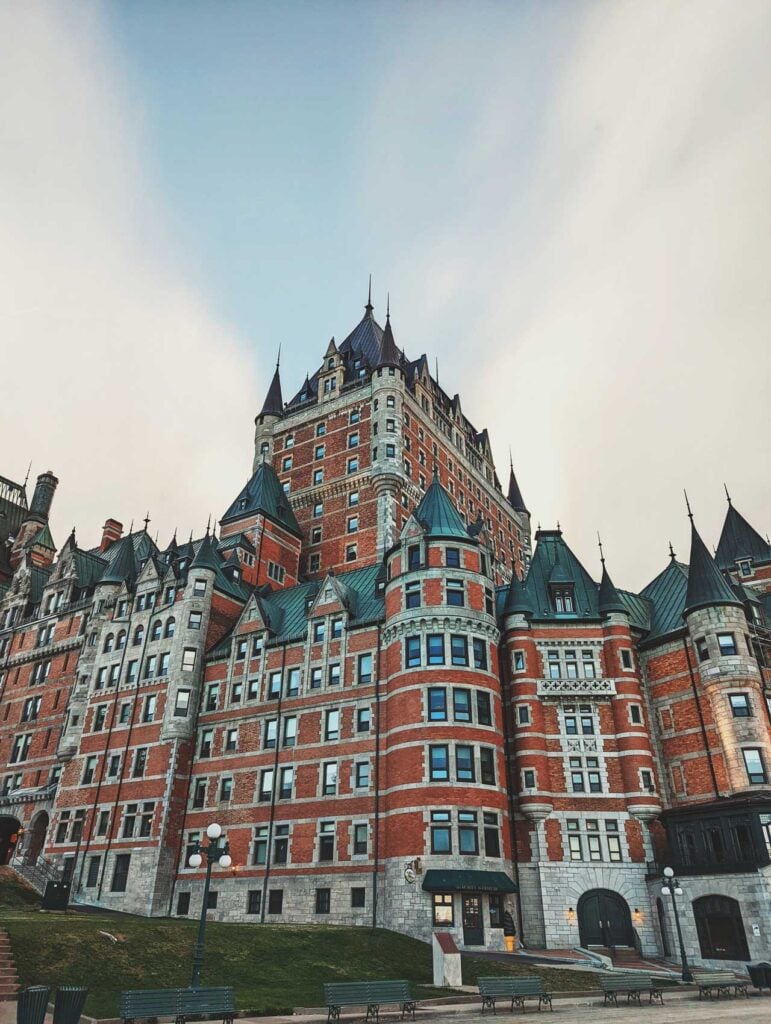
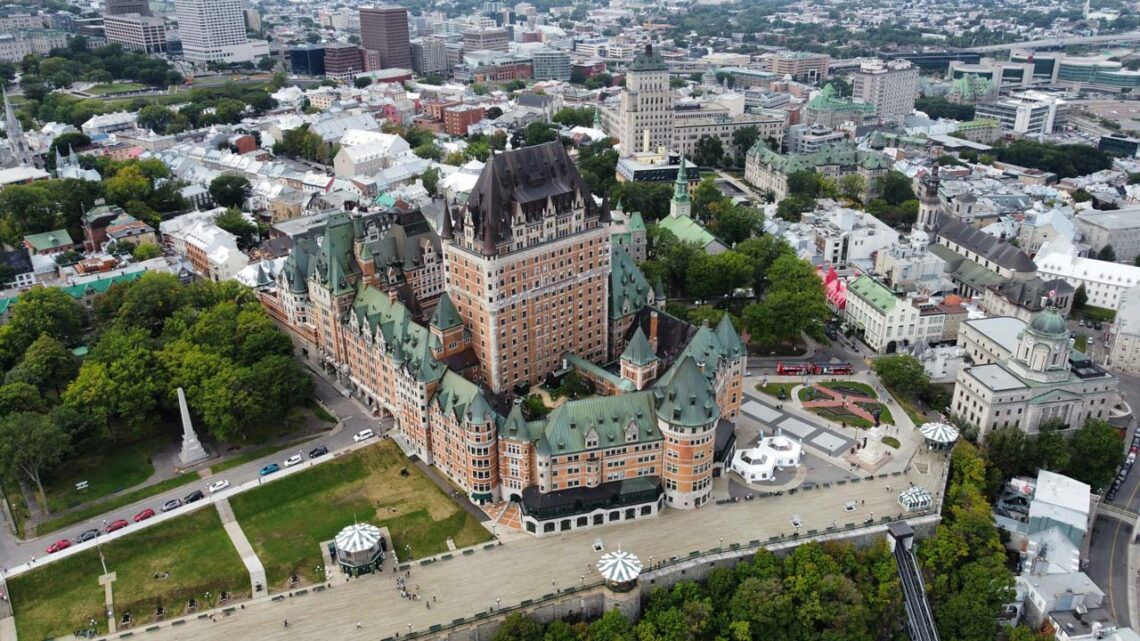
The Fairmont Le Château Frontenac represents the Châteauesque architectural style, a revival of the French Renaissance architecture of the 16th century. The style is characterized by steeply pitched roofs, elaborate dormers, turrets, spires, and gables, often decorated with finials, crests, and shields. The style was popularized in North America by the Canadian Pacific Railway, which built several Châteauesque hotels along its routes. The Fairmont Le Château Frontenac reflects the historical design influences of various periods and regions, such as the medieval castles of Europe, the Scottish baronial style, the Gothic Revival style, and the Beaux-Arts style. The hotel also incorporates elements of the local Quebecois culture, such as the copper roof, the stone walls, the fleur-de-lis motifs, and the coat of arms of Louis de Buade de Frontenac, the governor of New France for whom the hotel is named.
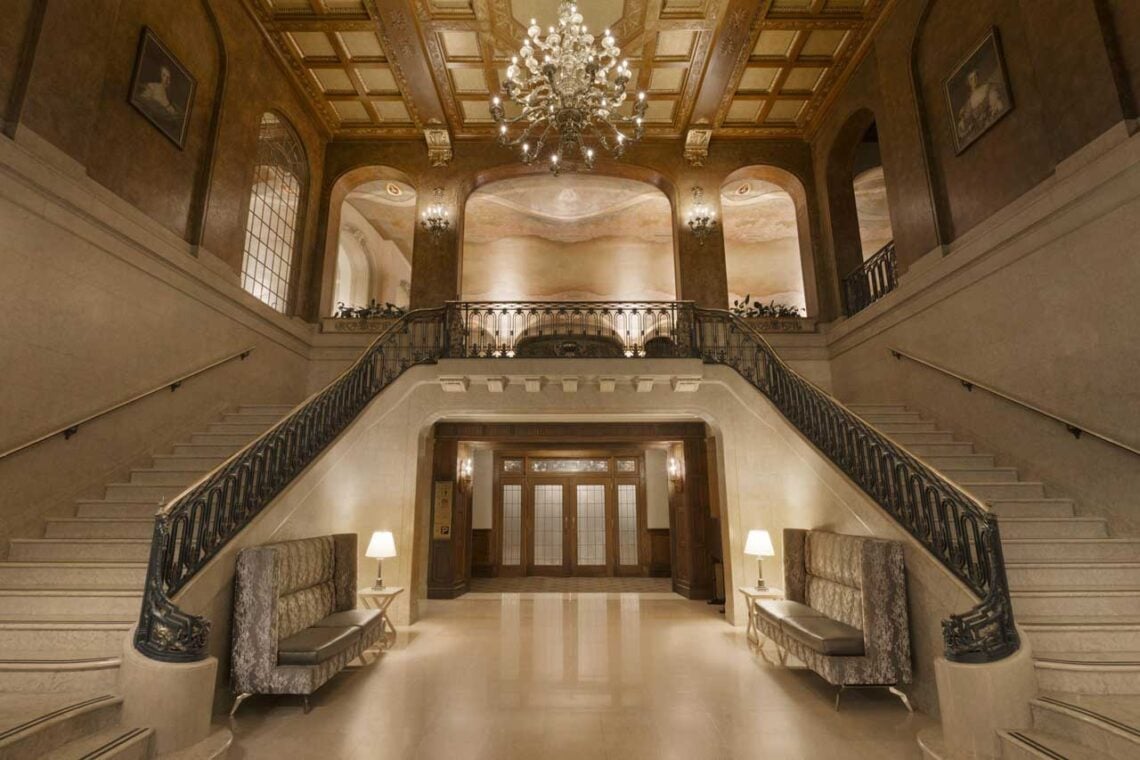
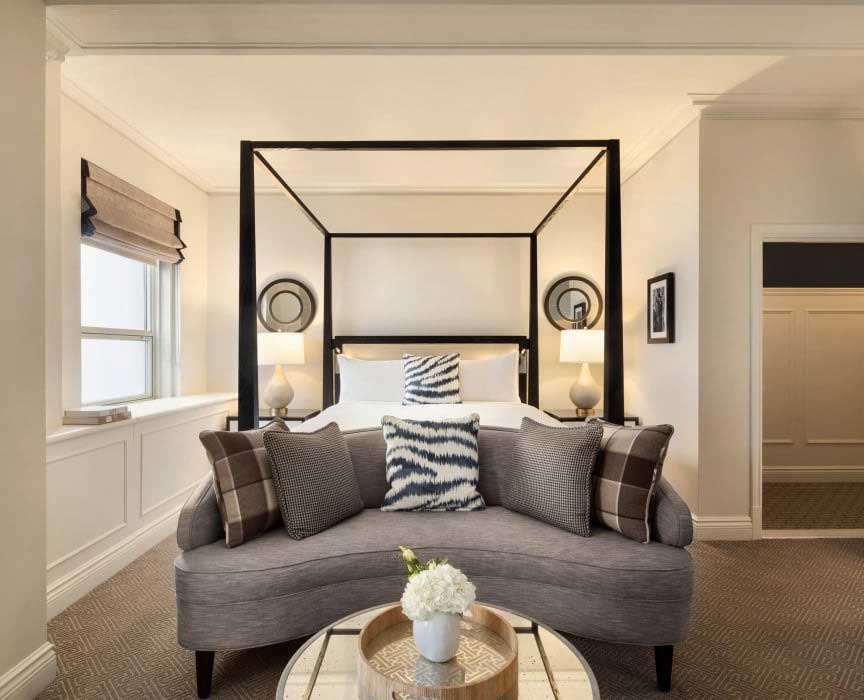
The Fairmont Le Château Frontenac uses various lighting and shading techniques to enhance its appearance and ambiance. The hotel employs a warm and soft lighting scheme, using chandeliers, lamps, sconces, and candles to create a cozy and romantic atmosphere. The hotel also uses natural light, especially from the large windows that offer panoramic views of the river and the city. The hotel uses shading techniques, such as curtains, blinds, and awnings, to control the amount of light and heat that enters the rooms and to create contrast and depth.
40. Dancing House
The Dancing House is a modern building with an unusual shape resembling a pair of dancers. It is also known as Ginger and Fred, after the famous American dance duo Fred Astaire and Ginger Rogers. The building houses offices, a hotel, and a restaurant. The Dancing House is located on the Rašín Embankment, a riverside avenue in the city center of Prague. It stands on a plot that was previously occupied by a house that was destroyed by the US bombing of Prague in 1945. The site was vacant until 1992 when the construction of the Dancing House began. The Dancing House was designed by two architects: Vlado Milunić, a Croatian-Czech architect who lived in the neighboring plot, and Frank Gehry, a Canadian-American architect famous for his deconstructivist style. The Dutch insurance company Nationale-Nederlanden financed the building, which wanted to use it as its headquarters. The construction was completed in 1996, and the building received the Time magazine’s Design of the Year award in 1997.
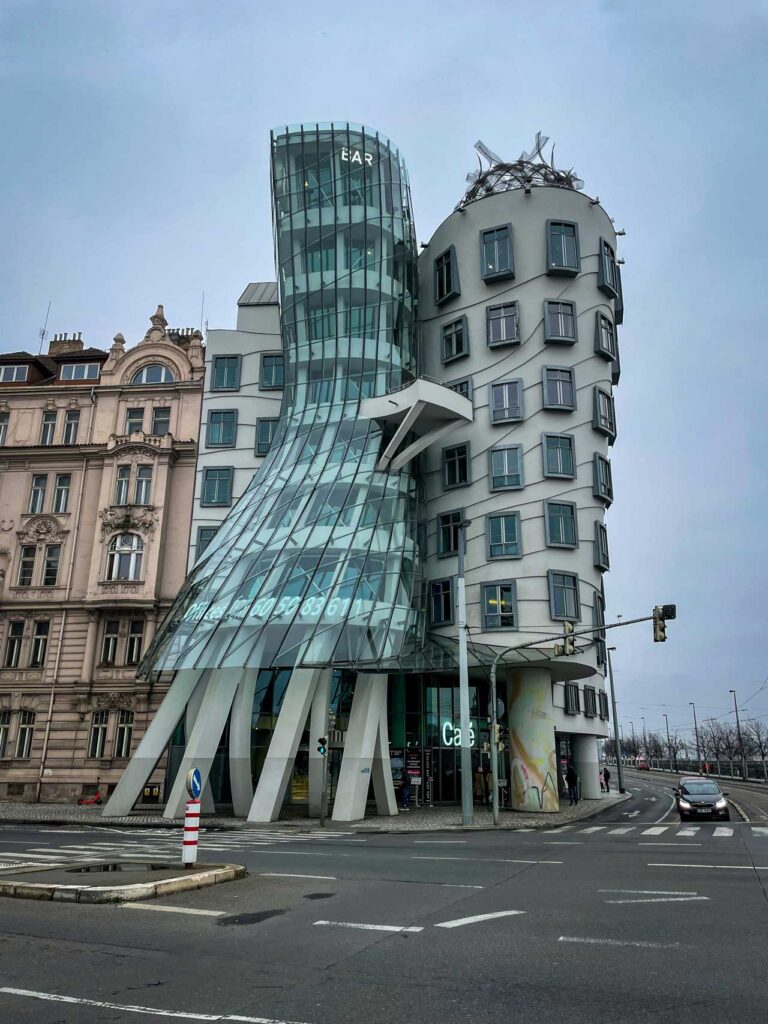
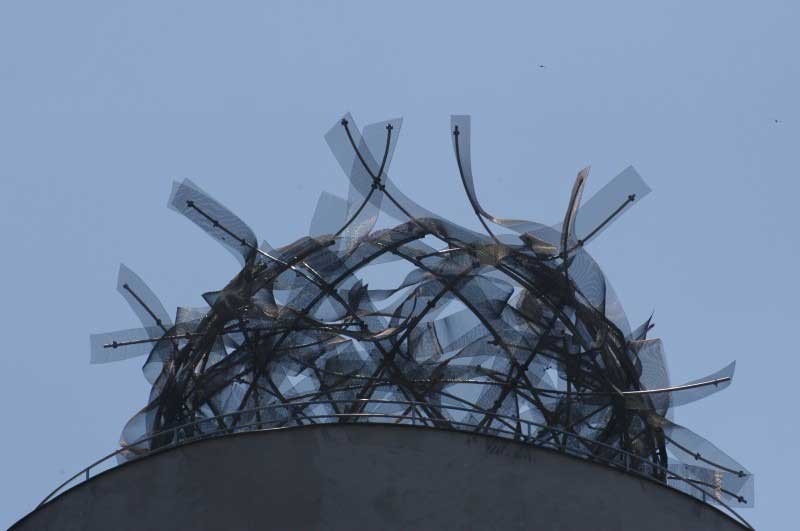
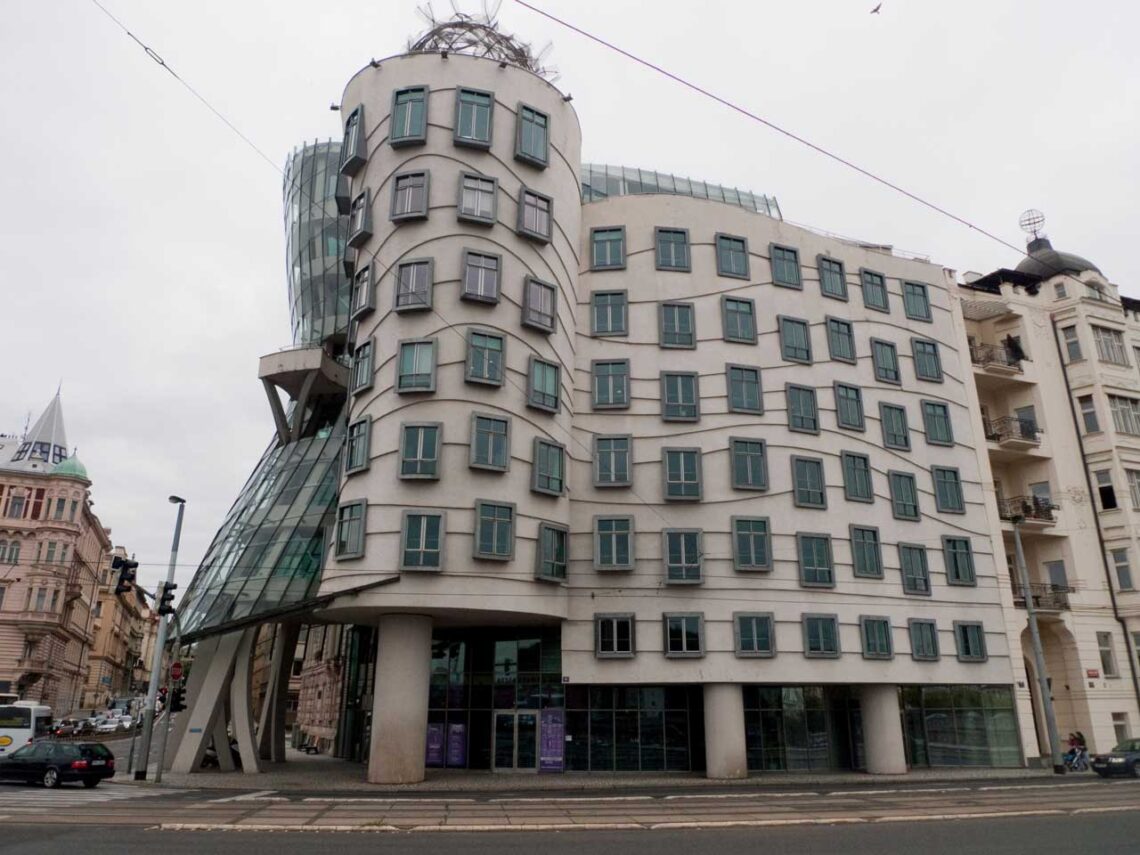
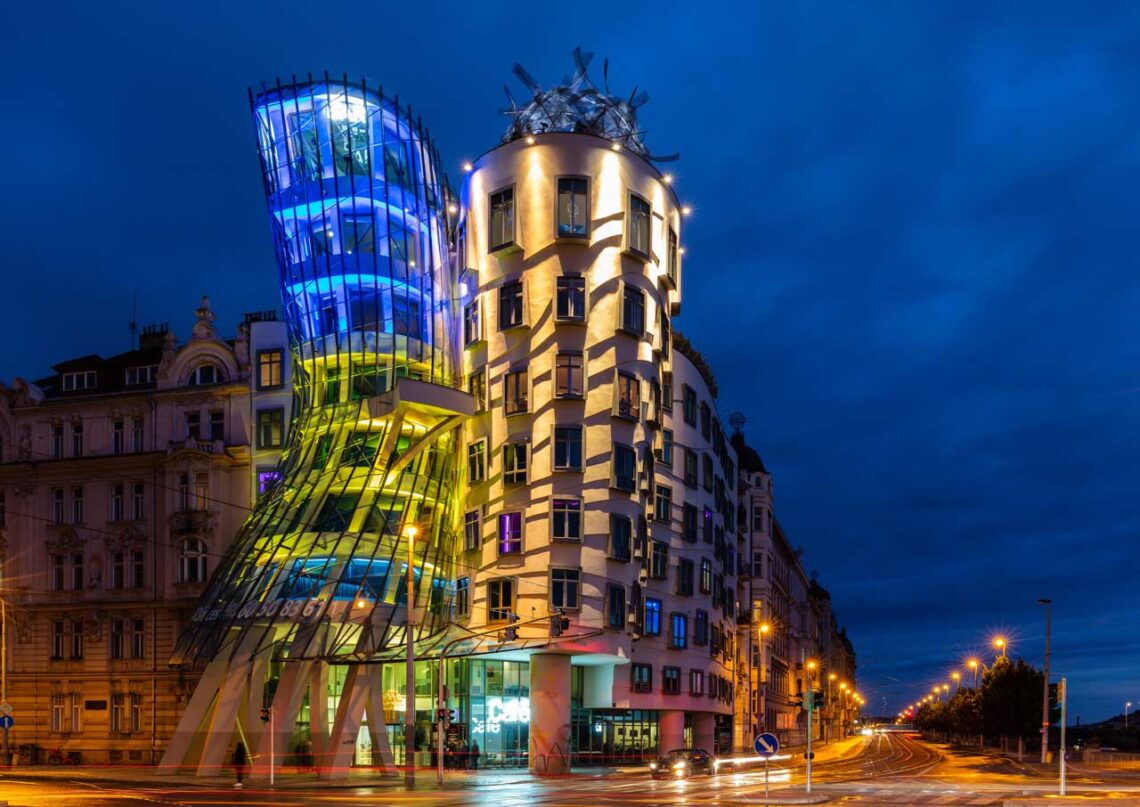
The Dancing House exemplifies deconstructivist architecture, a postmodern style emphasizing incongruity, fragmentation, and asymmetry. Deconstructivist buildings appear to be “deconstructed” as if breaking away from the traditional rules of geometry and harmony. Deconstructivism is sometimes called new baroque, as it shares some features with the baroque style, such as complexity, dynamism, and distortion. The Dancing House reflects Prague’s historical and cultural context, a city that has experienced many political and social changes throughout its history. The building symbolizes the transition of Czechoslovakia from a communist regime to a parliamentary democracy, as well as the diversity and creativity of its people. The building also pays homage to the rich architectural heritage of Prague, which includes Gothic, Renaissance, Baroque, and Art Nouveau styles. The Dancing House contrasts with the surrounding buildings and complements them with its curved glass facade that mirrors the river and the skyline.
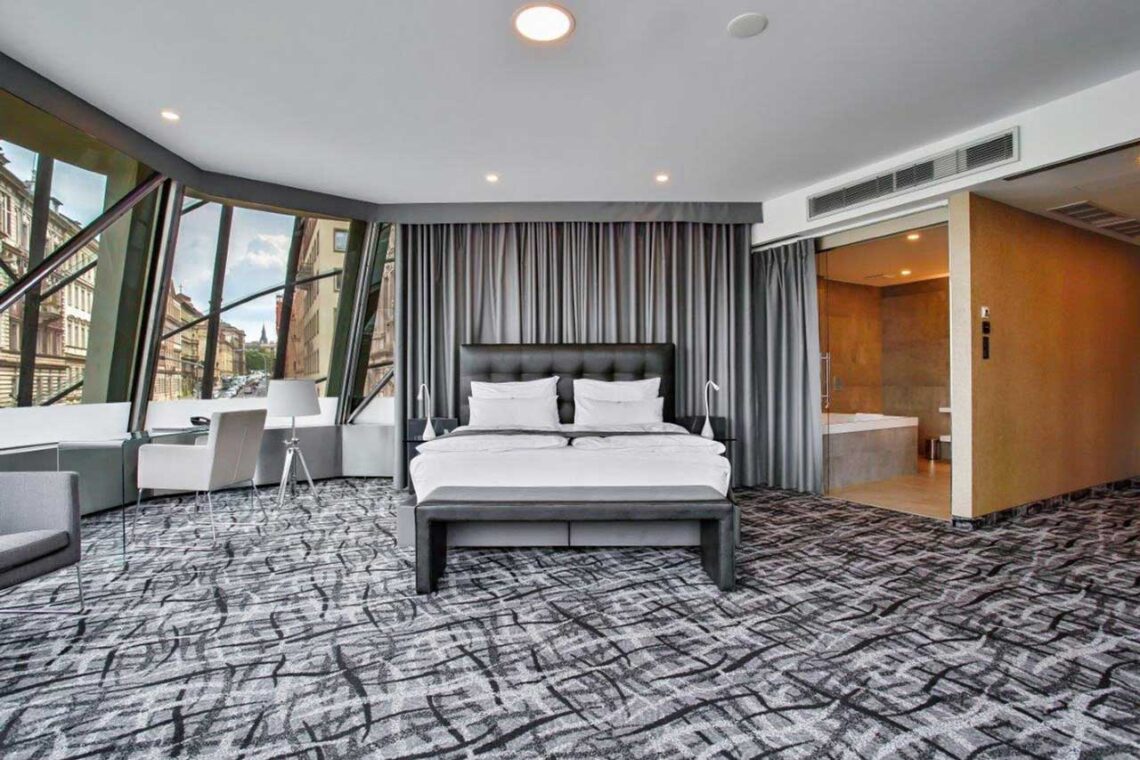
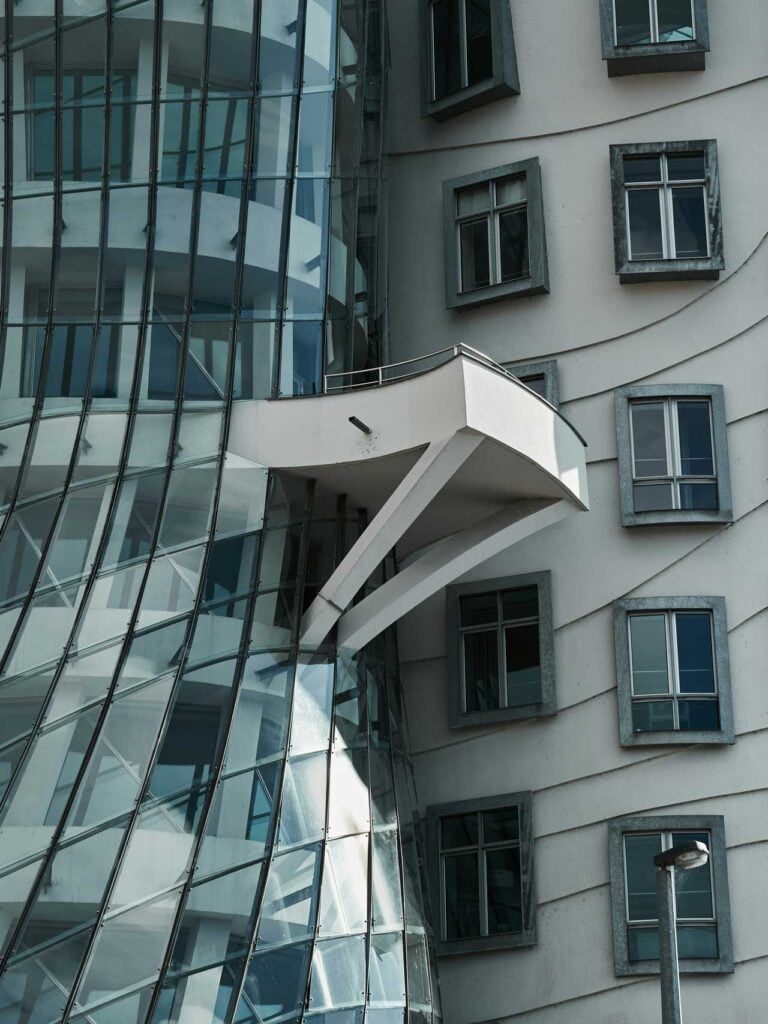
The Dancing House uses various lighting and shading techniques to create different effects and moods. The building has 99 concrete panels, each with a different shape and dimension, that support the glass structure. The panels create shadows and patterns on the glass, depending on the angle and intensity of the sunlight. The glass also reflects and refracts the light, creating a dynamic and colorful appearance. The building is illuminated at night by artificial lights that highlight its curves and contours. The lights also change colors, creating a playful and festive atmosphere.
41. Sultan Ahmed Mosque (The Blue Mosque)
The Blue Mosque is the popular name of the Sultan Ahmed Mosque, a mosque built by Sultan Ahmed I between 1609 and 1617. It is one of the most famous landmarks in Istanbul and a symbol of Ottoman architecture. It is still a functioning mosque today and a tourist attraction. The Blue Mosque is located in the Fatih district of Istanbul, on the southeast side of the old Byzantine Hippodrome, near the Hagia Sophia and the Topkapı Palace. It is in the heart of the imperial city, where the Ottoman sultans ruled for centuries. The mosque’s address is Sultan Ahmet Mahallesi, Atmeydanı Cd. No:7, 34122 Fatih/İstanbul, Turkey. The Sultan Ahmed Mosque or the Blue Mosque was built by Sultan Ahmed I, who ascended to the throne at 13 in 1603. He wanted to leave his mark on the city and to rival the Hagia Sophia, a converted Christian church that was the most important mosque of the Ottoman Empire. He commissioned Sedefkar Mehmed Agha, a famous architect Mimar Sinan pupil, to design and construct the mosque. The construction began in 1609 and was completed in 1617, just before the sultan’s death.
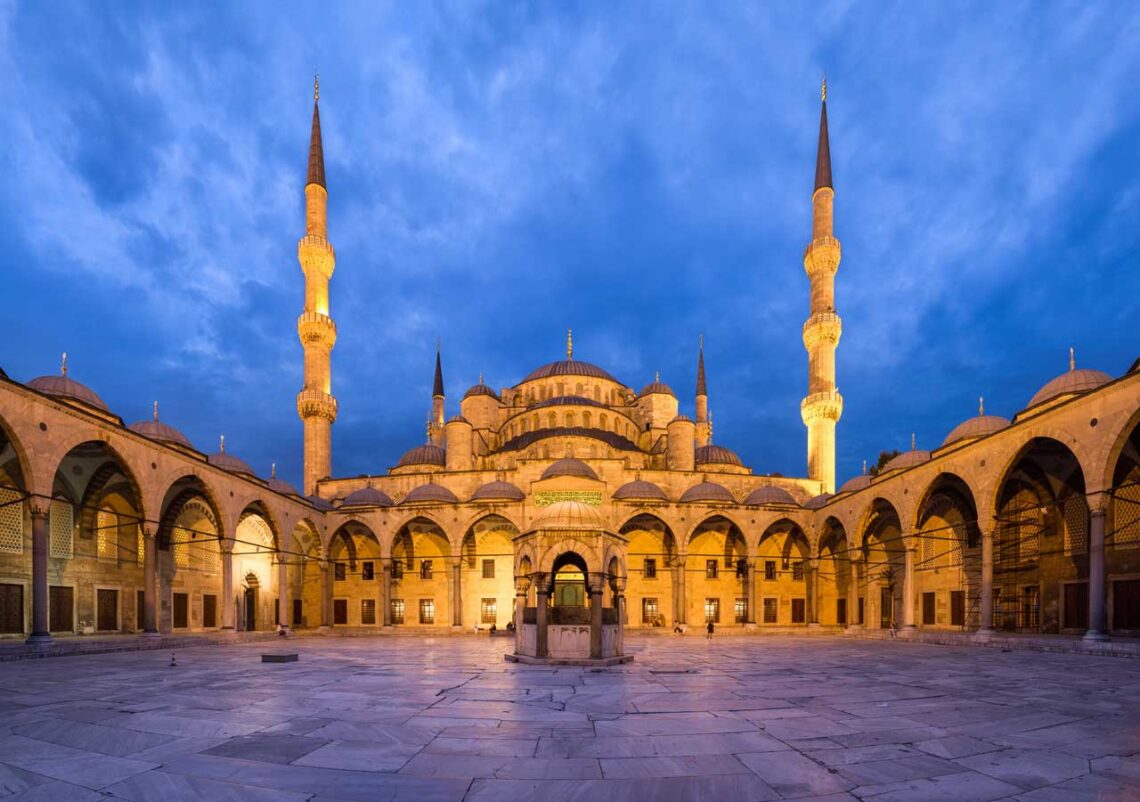
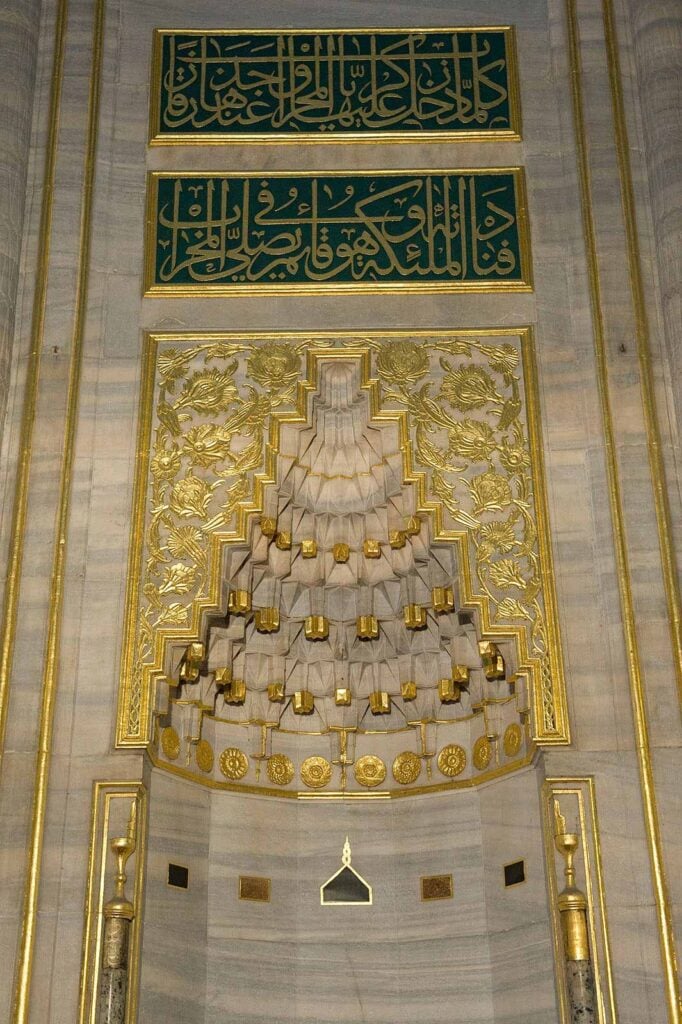
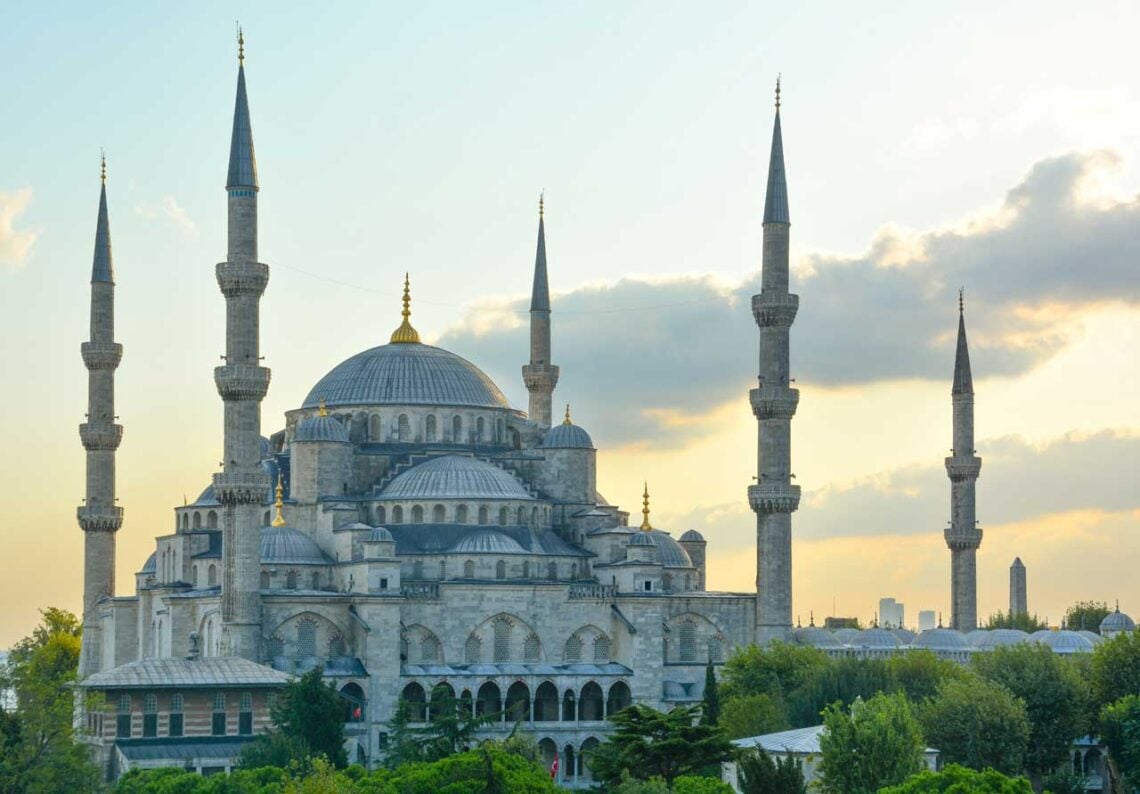
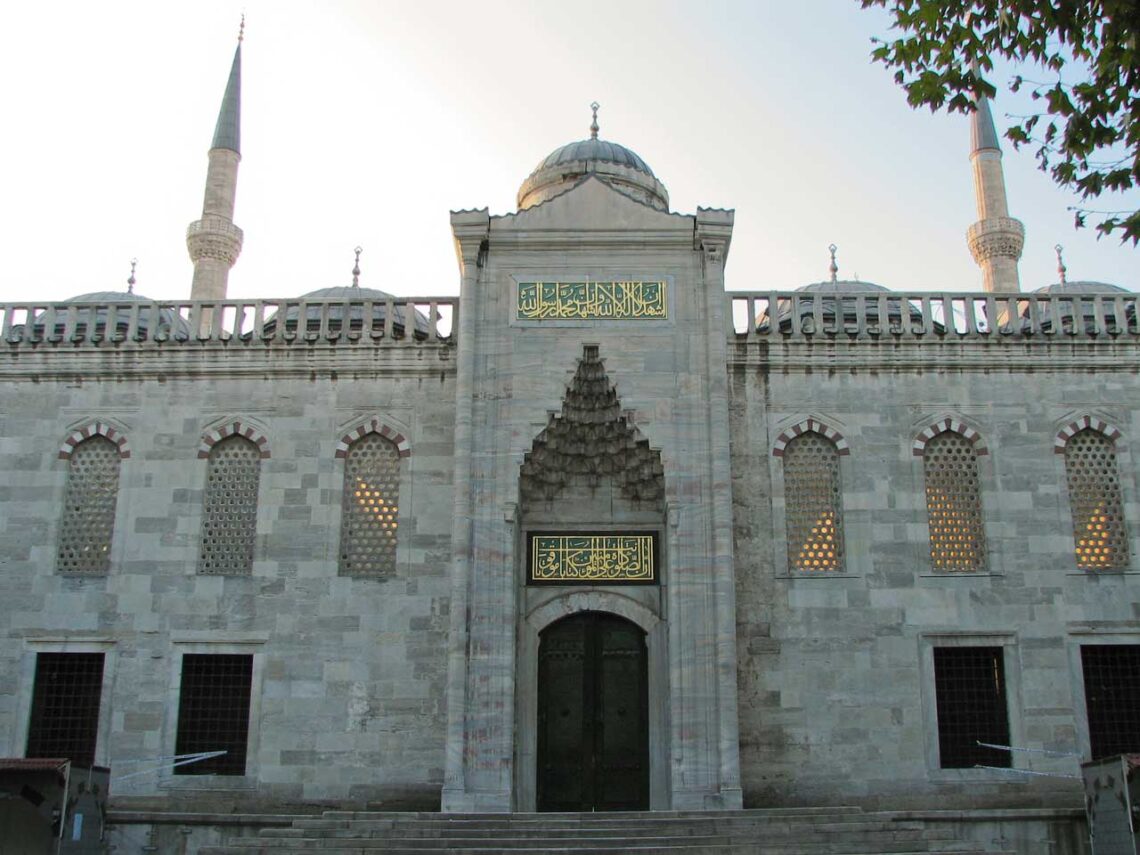
The Blue Mosque represents the classical Ottoman style of architecture, which was influenced by Byzantine, Persian, and Islamic traditions. The mosque has a symmetrical and harmonious layout, with a central dome surrounded by four semi-domes and six minarets. The mosque also features a large courtyard, a fountain, a madrasa, and a tomb. The mosque is decorated with thousands of Iznik tiles and painted floral motifs, mostly in blue, giving it its popular name. The mosque also has stained glass windows, calligraphic inscriptions, and carved marble. The Sultan Ahmed Mosque or the Blue Mosque has historical design influences from various sources. The most obvious one is the Hagia Sophia, which stands across from the mosque and is the model for its domed structure and placement in the city. The mosque also borrows elements from the Selimiye Mosque in Edirne, another masterpiece by Mimar Sinan, such as the slender minarets and the spacious courtyard. The mosque also reflects Persian and Islamic influences, especially in the tilework, the floral patterns, and the geometric shapes.
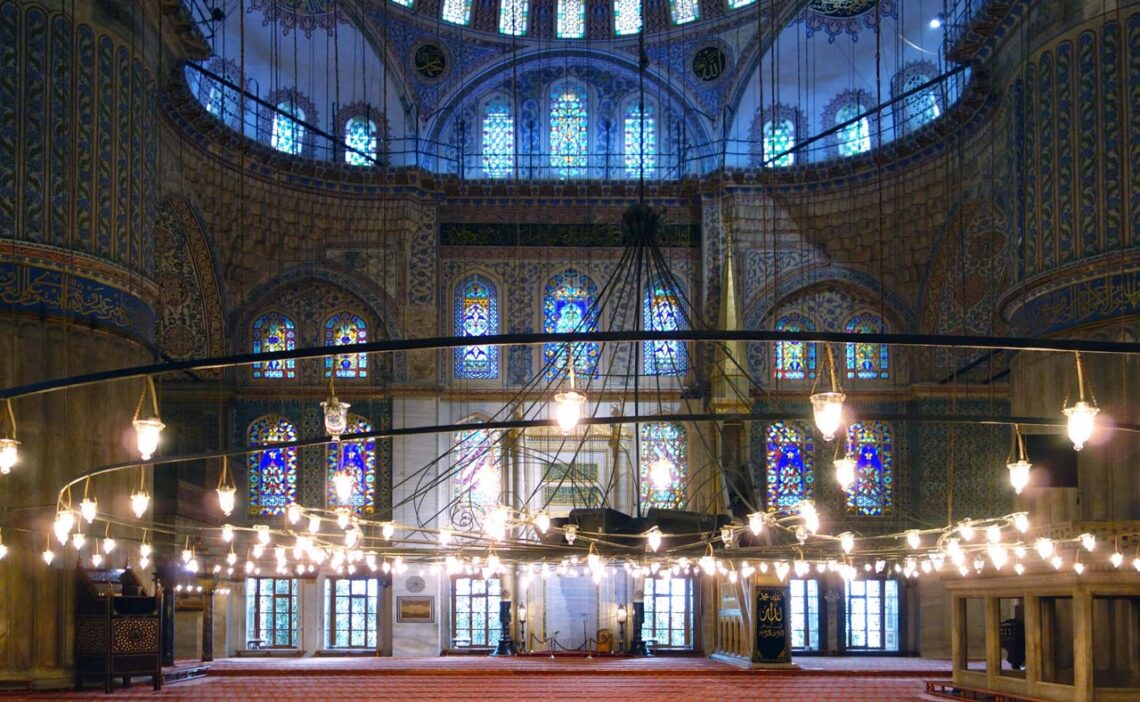
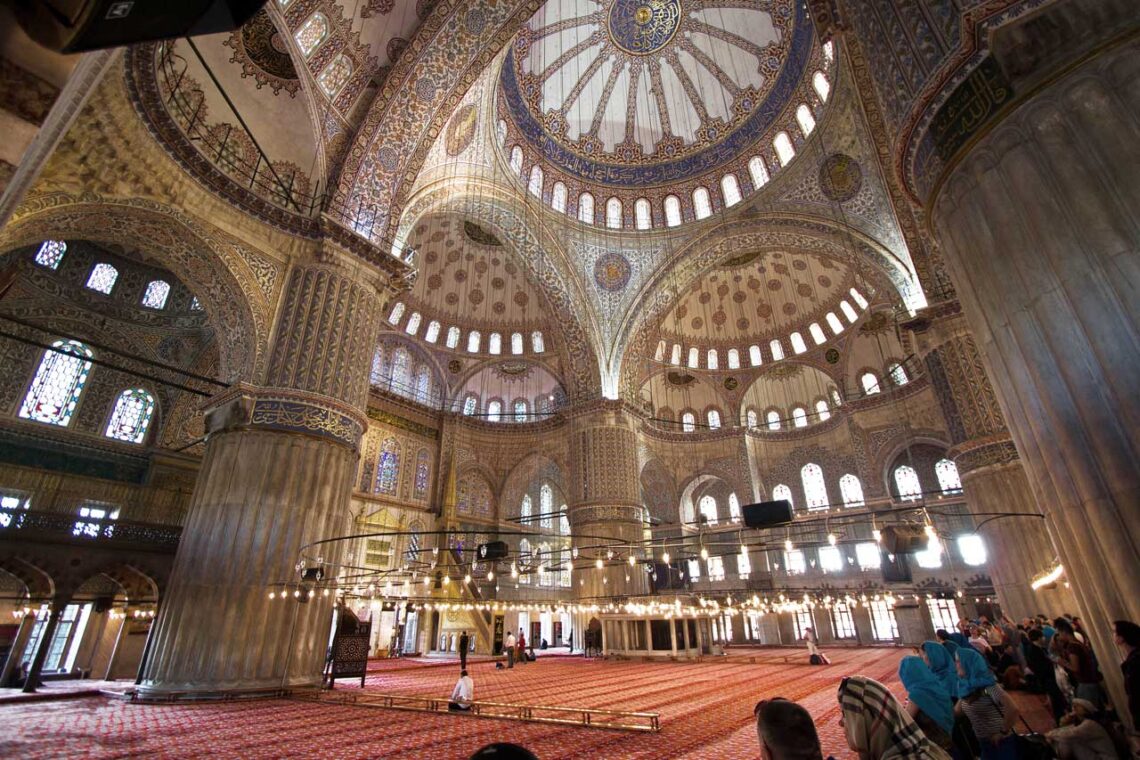
The Blue Mosque has lighting and shading techniques that create a lovely effect inside the prayer hall. The main dome has 260 windows, while the semi-domes and the walls have more than 200 windows, which allow natural light to enter the mosque. The windows are filled with stained glass of different colors, creating a colorful and luminous atmosphere. The mosque also has chandeliers and lamps that illuminate the interior at night. The mosque’s shading techniques include arches, vaults, and domes, which create a sense of depth and height. The mosque also has a blind arcade on the exterior walls, which adds texture and shadow.
42. Louvre Pyramid
The Louvre Pyramid is a large glass-and-metal structure that serves as the main entrance to the Louvre Museum in Paris. It is surrounded by three smaller pyramids in the main courtyard of the Louvre Palace. The Louvre Pyramid is located in the center of Paris, on the Right Bank of the River Seine. It is near the Tuileries Garden and the Place de la Concorde. The address of the Louvre Museum is Rue de Rivoli, 75001 Paris, France. The Louvre Pyramid was built between 1985 and 1989 as part of the Grand Louvre project, an initiative to expand and renovate the museum. It was designed by the Chinese-American architect I.M. Pei, who President François Mitterrand chose.
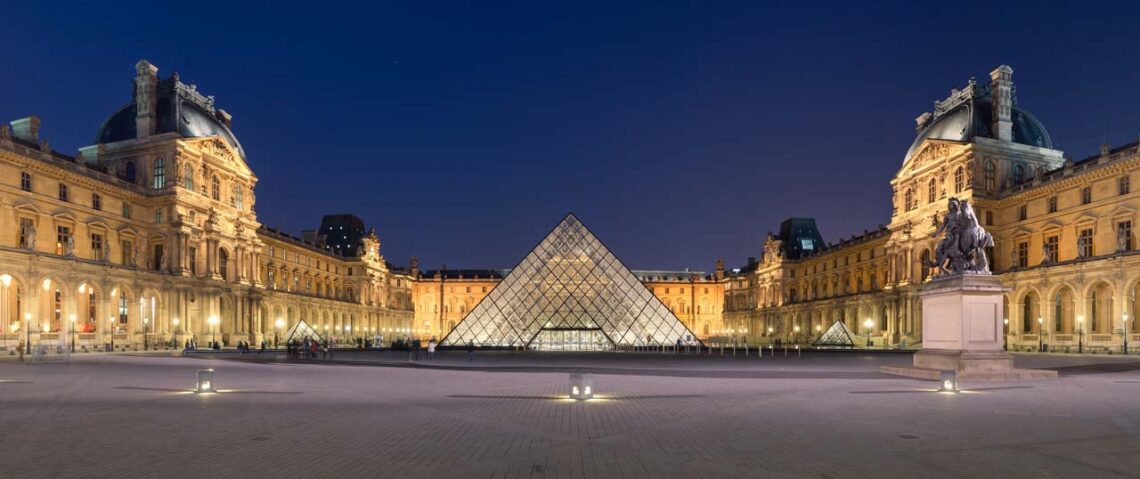
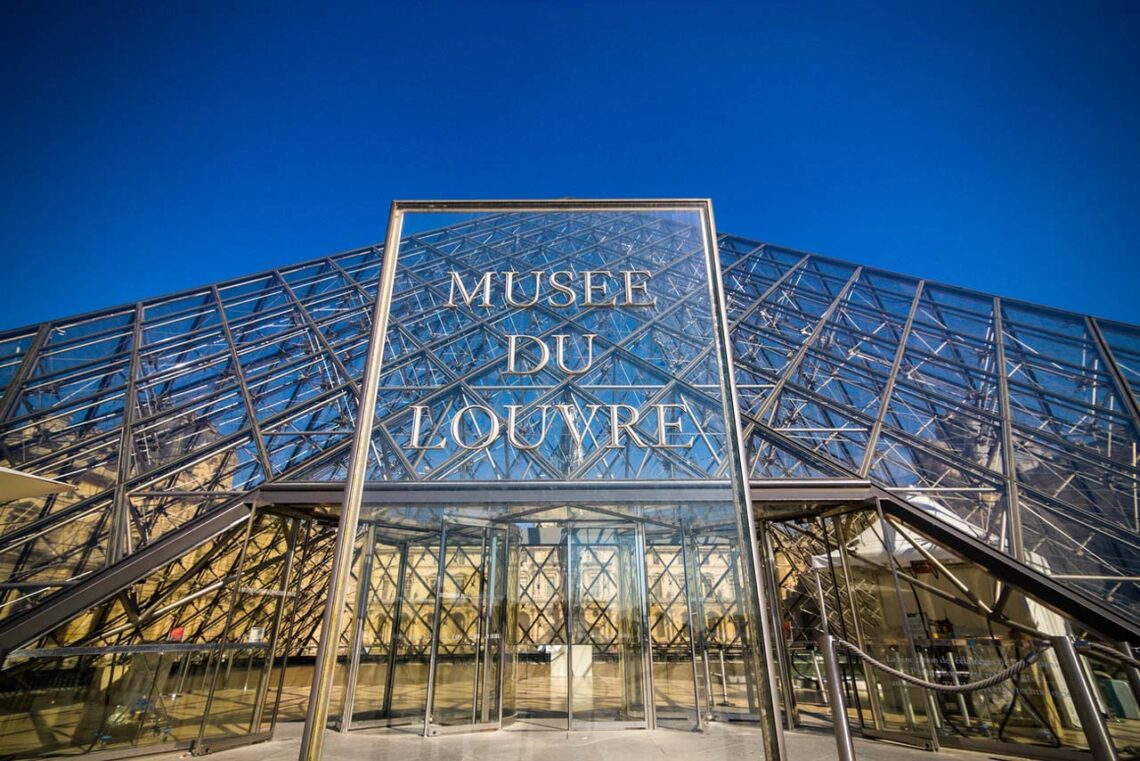
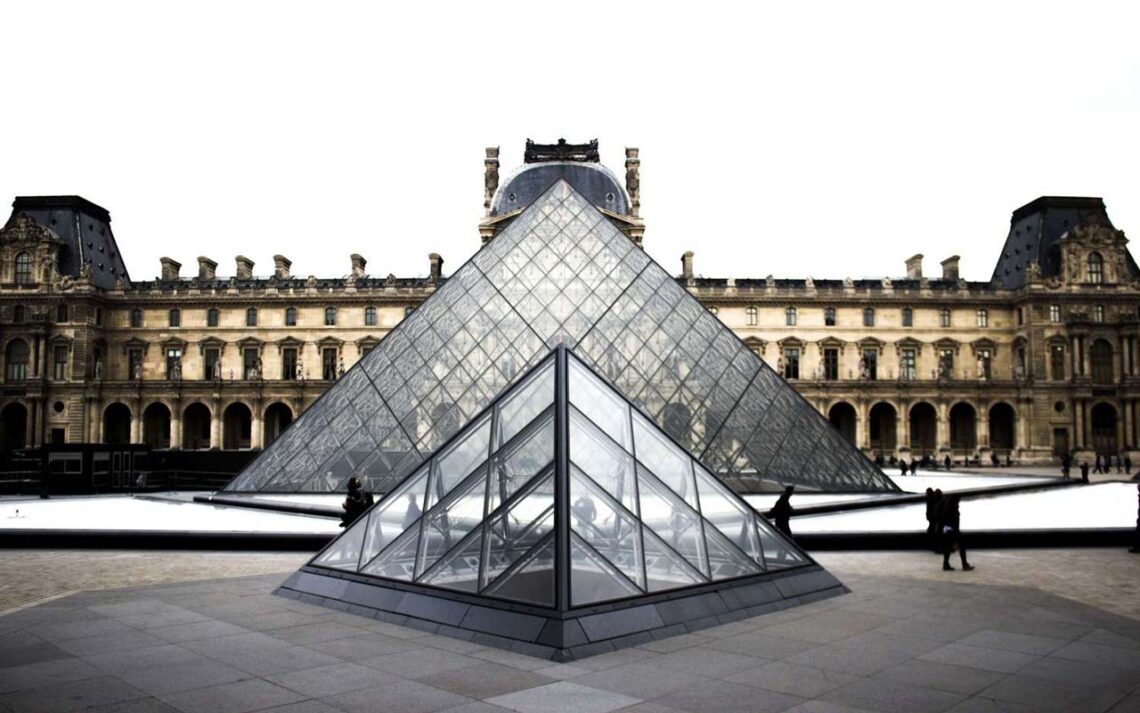
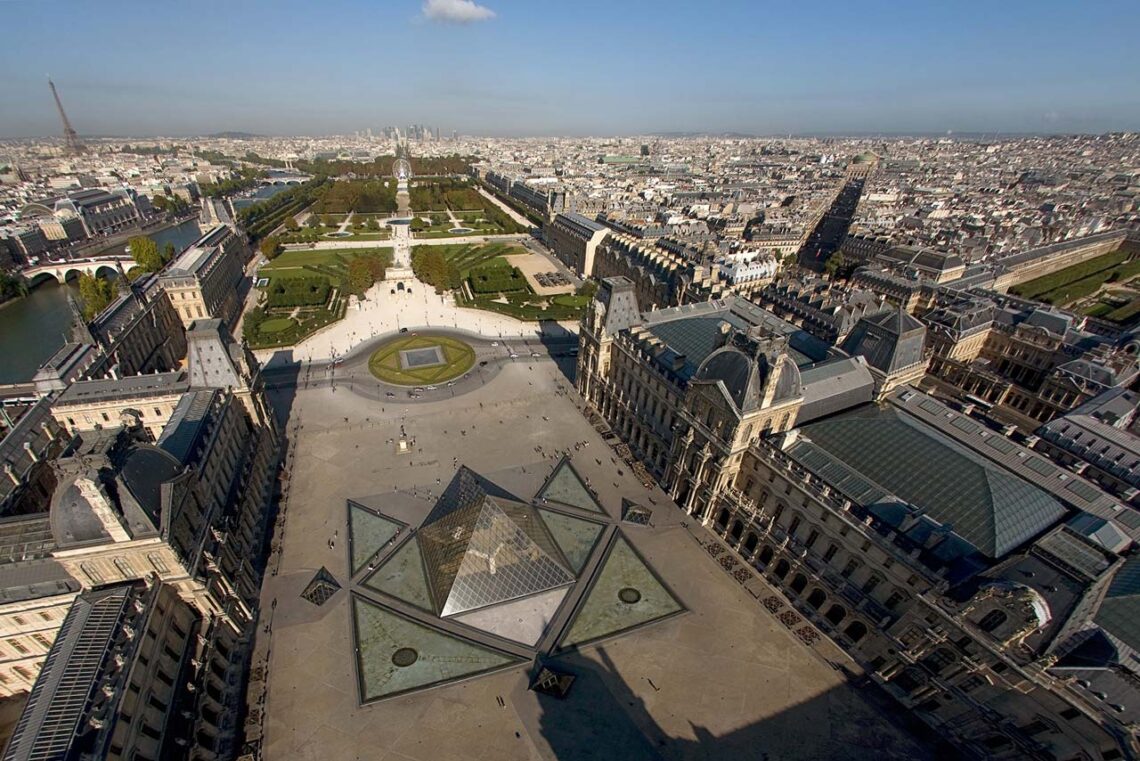
The Louvre Pyramid represents the architectural trend of postmodernism, which combines elements from different historical styles and cultures. The pyramid contrasts with the classical French Renaissance style of the Louvre Palace, creating a dialogue between the old and the new. The Louvre Pyramid is influenced by the historical design of Ancient Egyptian pyramids, which symbolize the sun and immortality. The pyramid also echoes the obelisk shape at the Place de la Concorde, a gift from Egypt to France in the 19th century. The pyramid has a similar angle to the Great Pyramid of Giza. The Louvre Pyramid uses lighting and shading techniques to create a dynamic and transparent effect. The pyramid comprises 673 glass segments that reflect and refract the natural light during the day. At night, the pyramid is illuminated by artificial lights from inside. The pyramid also creates interesting shadows on the ground and the palace’s walls.
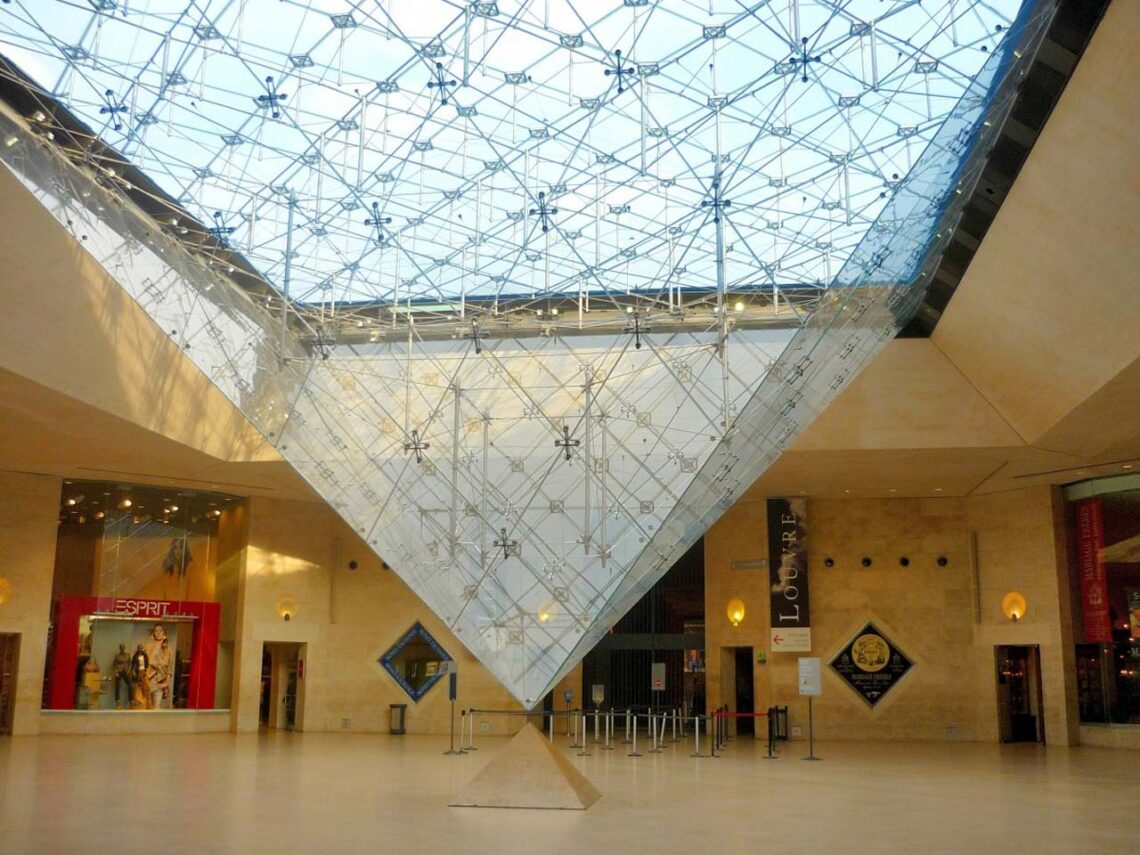
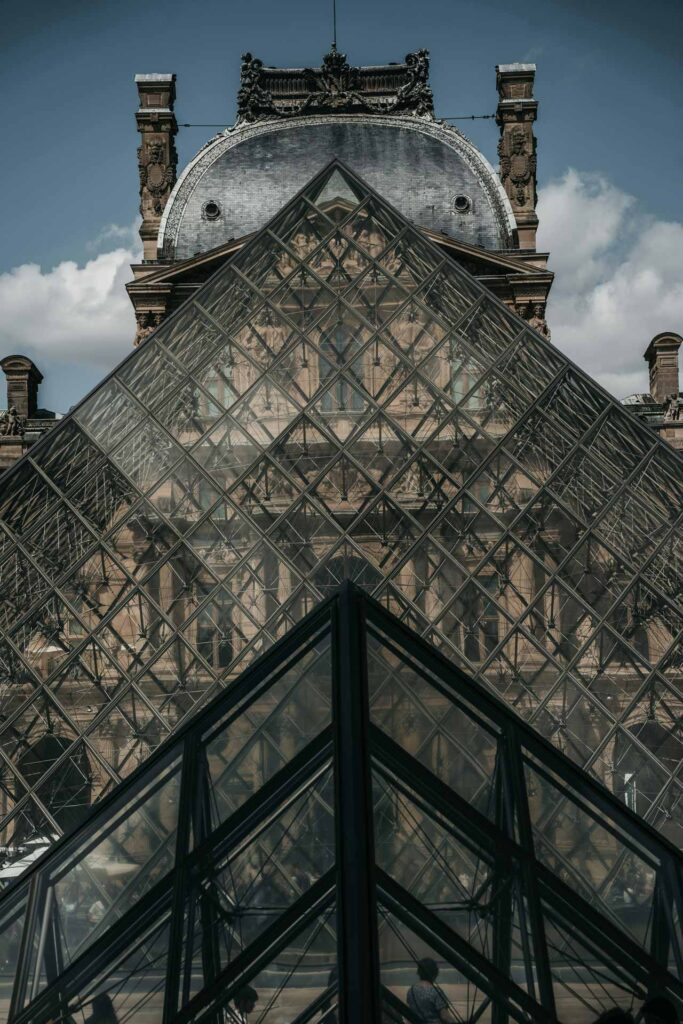
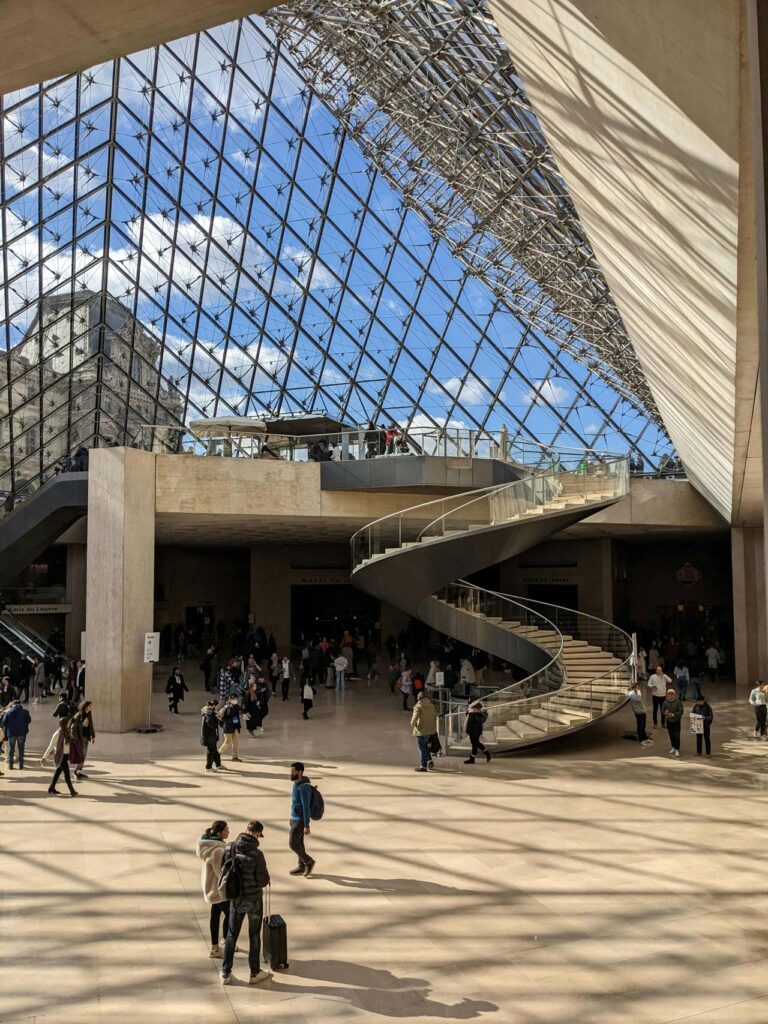
43. Casa Milà
The Casa Milà is a modernist building in Barcelona, Spain, designed by the architect Antoni Gaudí. It is also known as La Pedrera, meaning “the stone quarry” because of its rough appearance. The Casa Milà is located at 92 Passeig de Gràcia, a main avenue in the Eixample district of Barcelona. It is near other famous buildings by Gaudí, such as the Casa Batlló and the Sagrada Família. The Casa Milà was built between 1906 and 1912, commissioned by Pere Milà and his wife Roser Segimon, a wealthy couple who wanted a unique and luxurious residence. Gaudí was in charge of the design and construction, assisted by his collaborators Josep Maria Jujol, Domènec Sugrañes, and Joan Rubió.
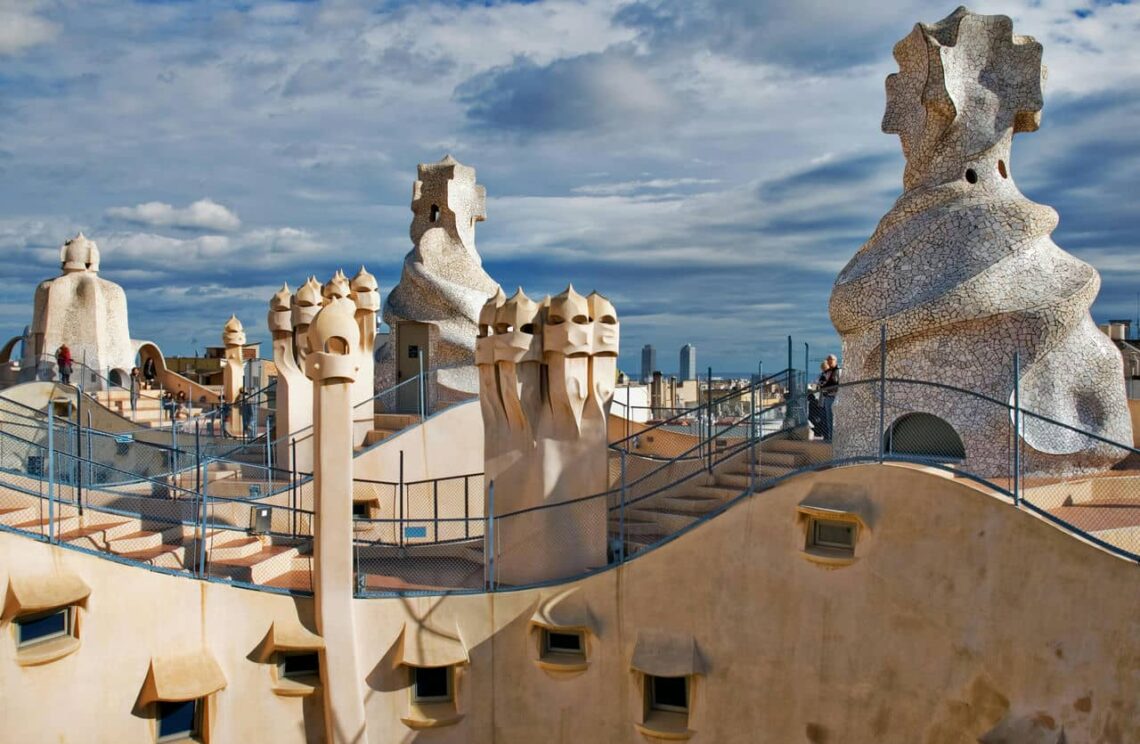
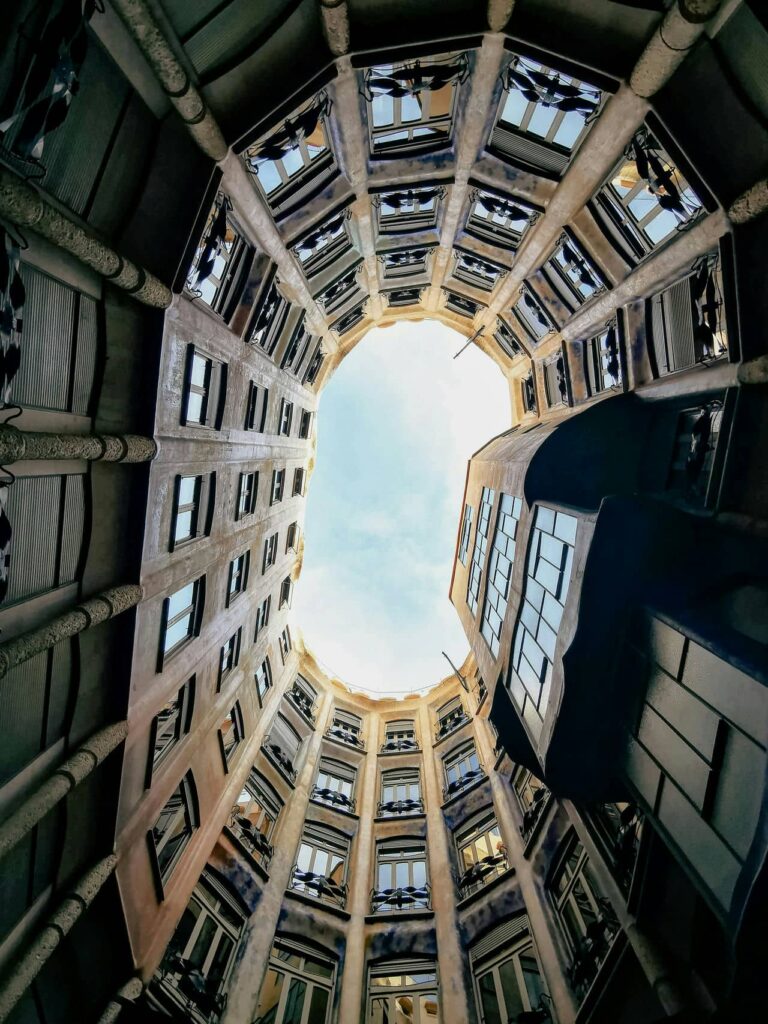
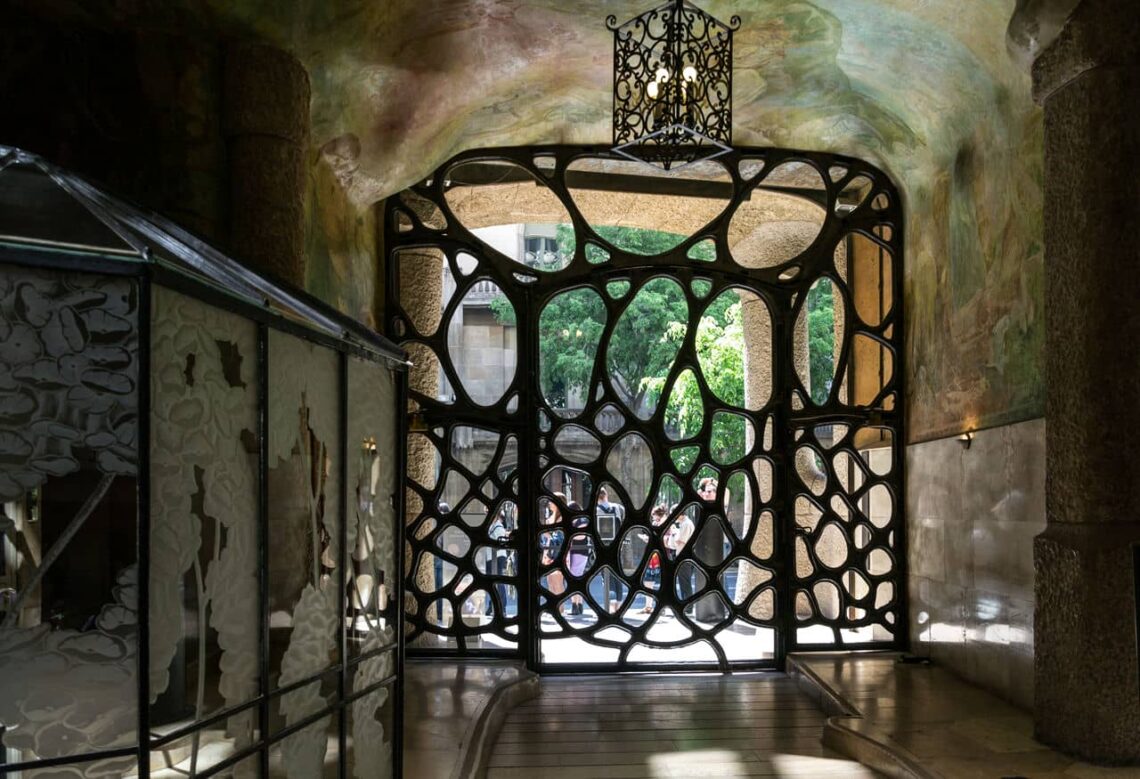
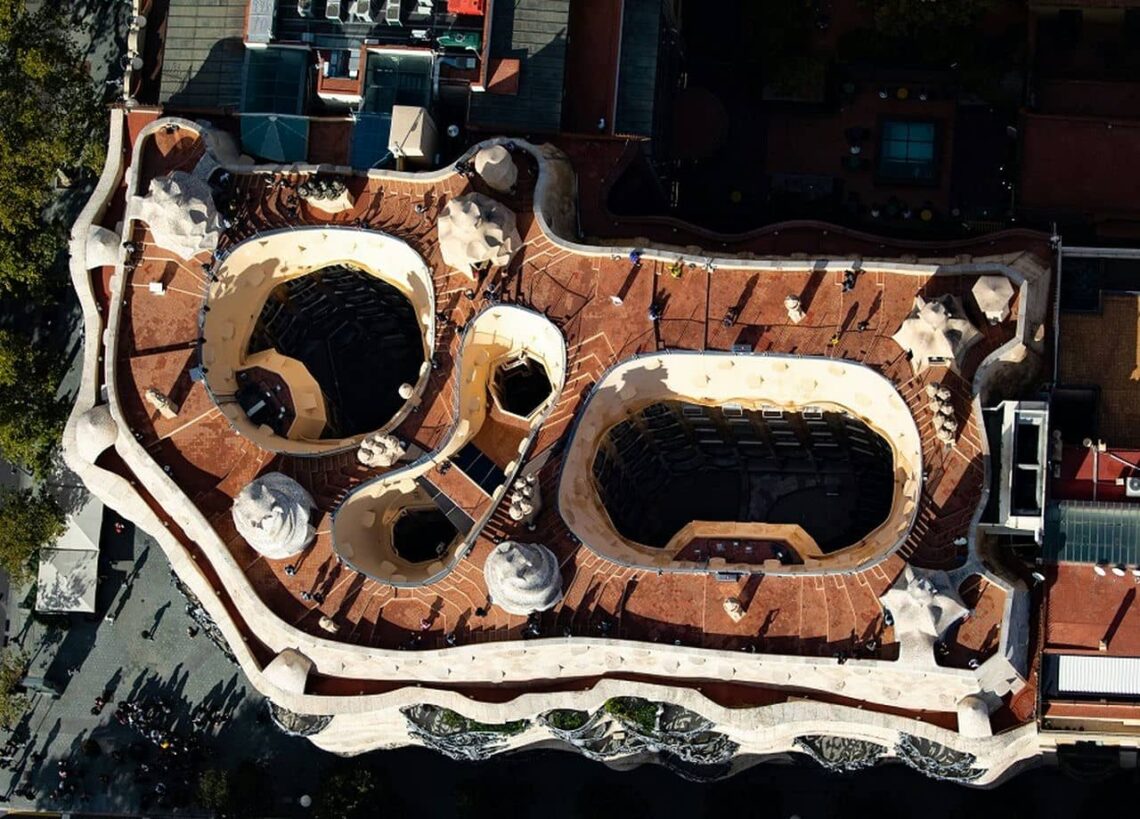
The Casa Milà represents the modernist or art nouveau movement, which emerged in Europe at the end of the 19th century and the beginning of the 20th century. The movement was characterized by using organic forms, curved lines, asymmetry, and ornamentation inspired by nature. Gaudí was one of the most influential and original modernist architects who developed his style based on his religious, artistic, and cultural vision. The Casa Milà shows the historical design influences of Gaudí, influenced by various sources, such as Gothic architecture, Catalan tradition, oriental art, and natural forms. Some examples of these influences are the arches and vaults in the structure, the ceramic tiles and wrought iron in the decoration, the arabesque motifs and geometric patterns in the facade, and the shapes of plants and animals on the roof.
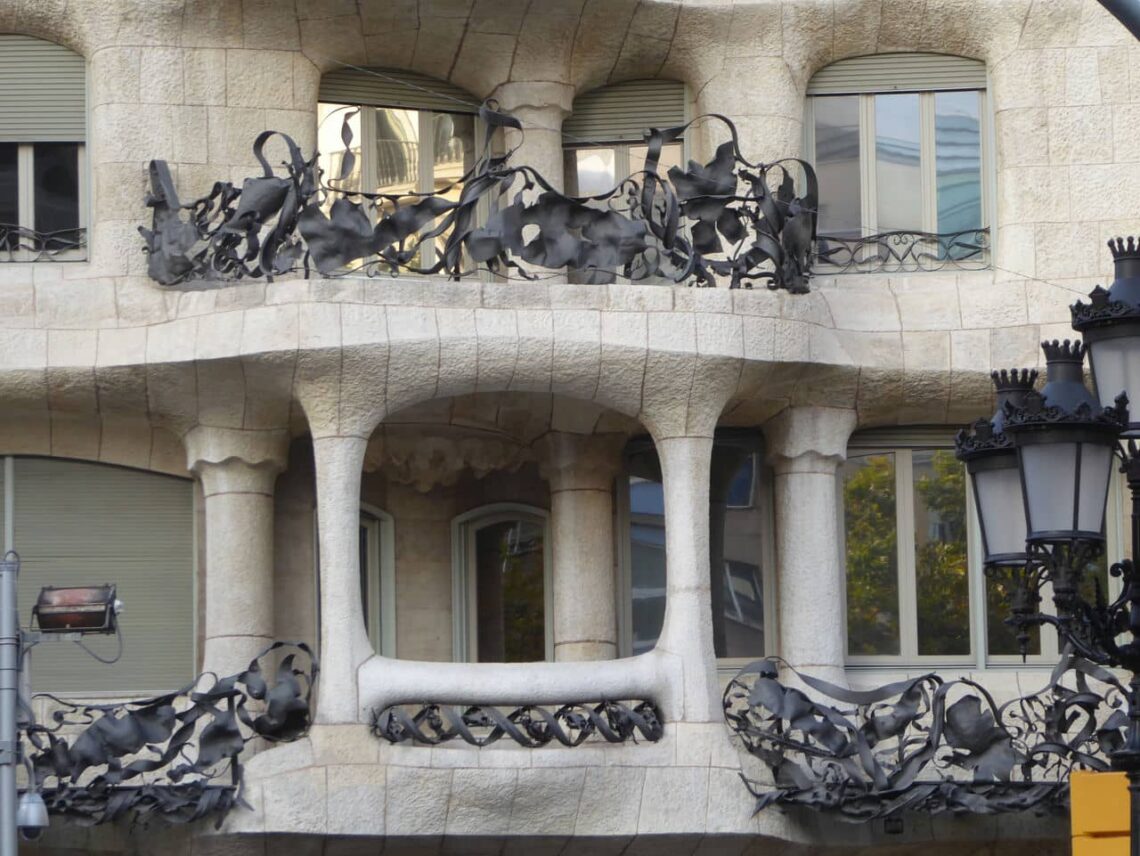
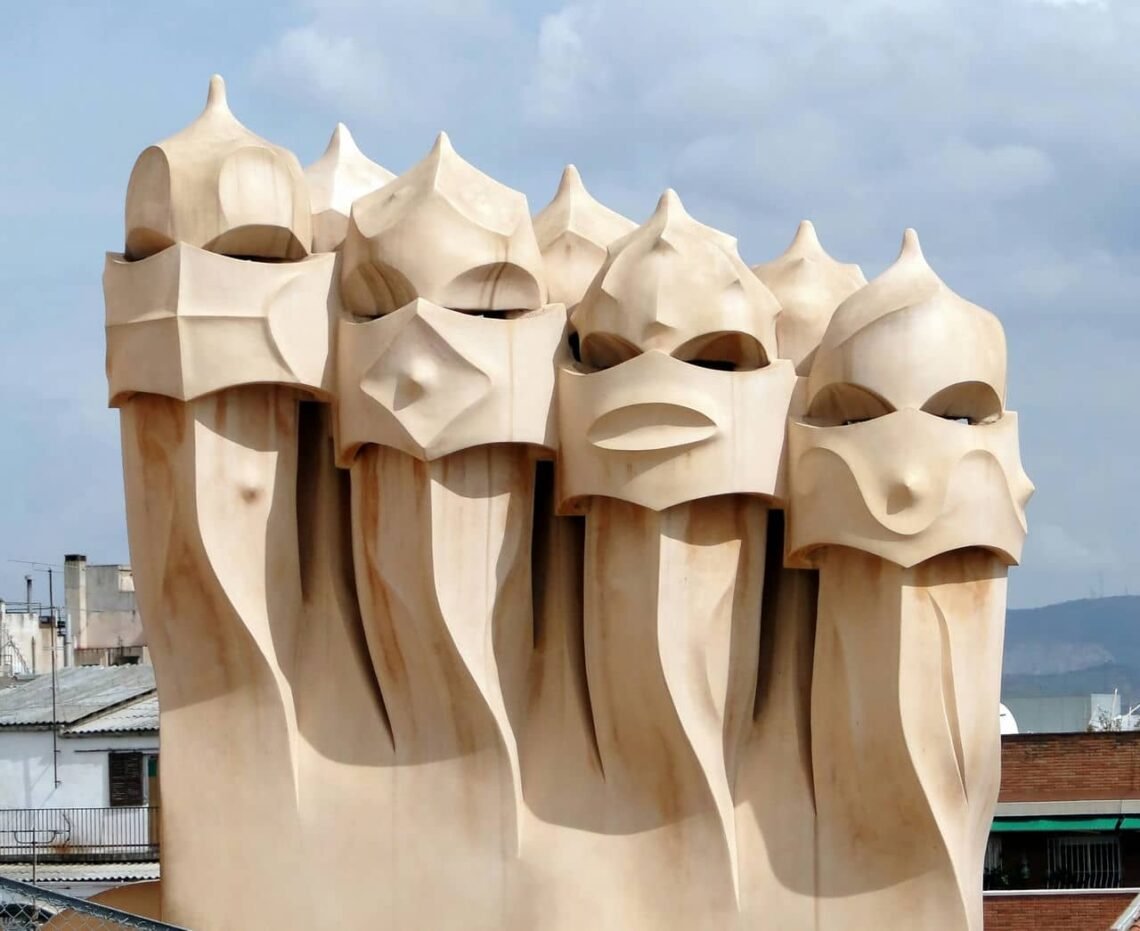
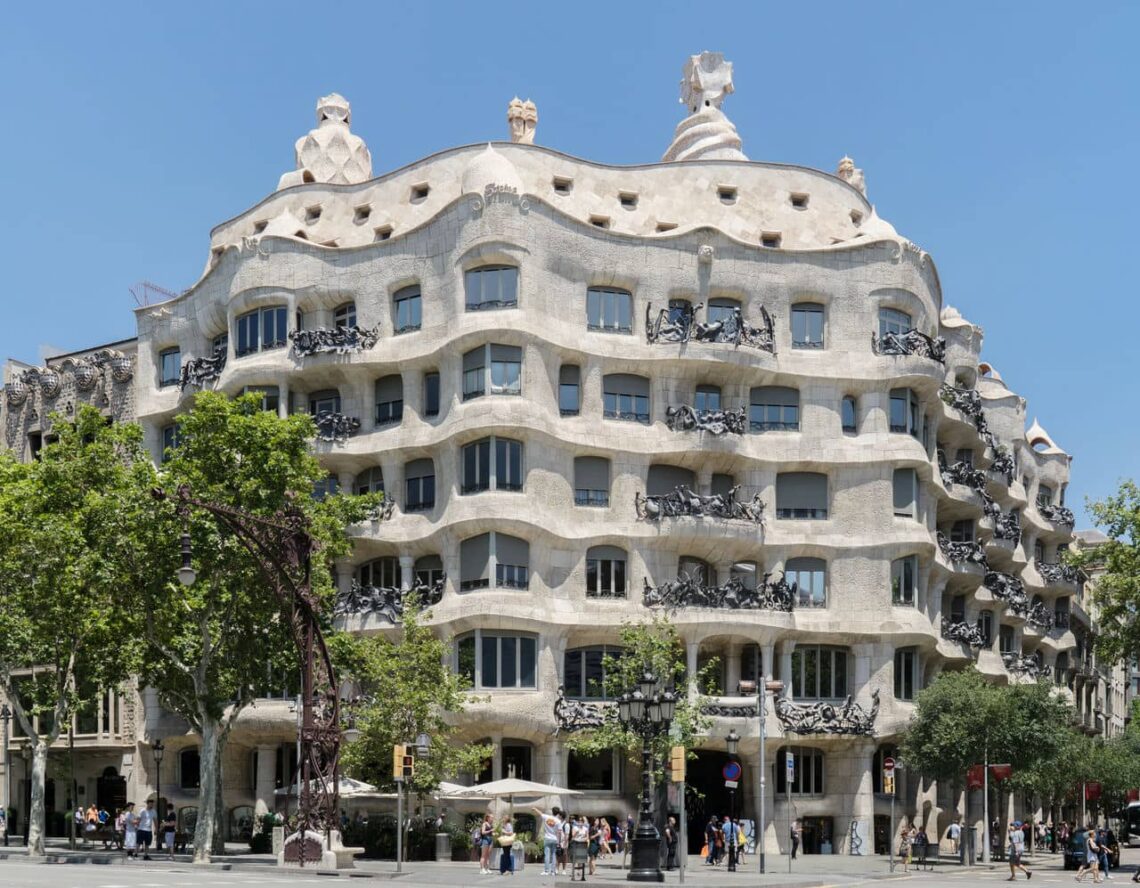
The Casa Milà uses various lighting and shading techniques to create different effects and atmospheres in the interior and exterior spaces. Gaudí designed the facade with large windows and balconies that allow natural light to enter the rooms. He also created courtyards that serve as light wells and ventilation shafts. He placed skylights and chimneys on the roof that cast shadows and reflections on the surface. He also used artificial lighting to highlight the building’s sculptural elements and colors.
44. The Centre Pompidou
The Centre Pompidou is a cultural complex that houses a public library, a museum of modern art, and a center for music and acoustic research. It is also known as the Pompidou Centre in English or Beaubourg by the locals. The Centre Pompidou is located in the Beaubourg area of the 4th arrondissement of Paris, near Les Halles, rue Montorgueil, and the Marais. Its address is Place Georges Pompidou, Paris, Île-de-France, 75004. The Centre Pompidou was built between 1971 and 1977 and was officially opened on 31 January 1977 by President Valéry Giscard d’Estaing. It was commissioned by President Georges Pompidou, who wanted to create a new cultural hub in Paris. The architects who designed the building were Renzo Piano, Richard Rogers, Gianfranco Franchini, and the engineering firm Arup.
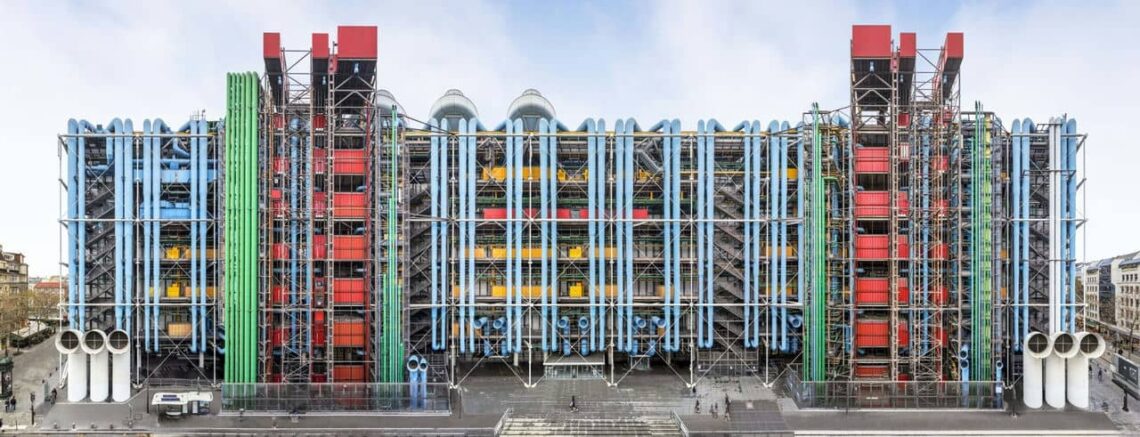
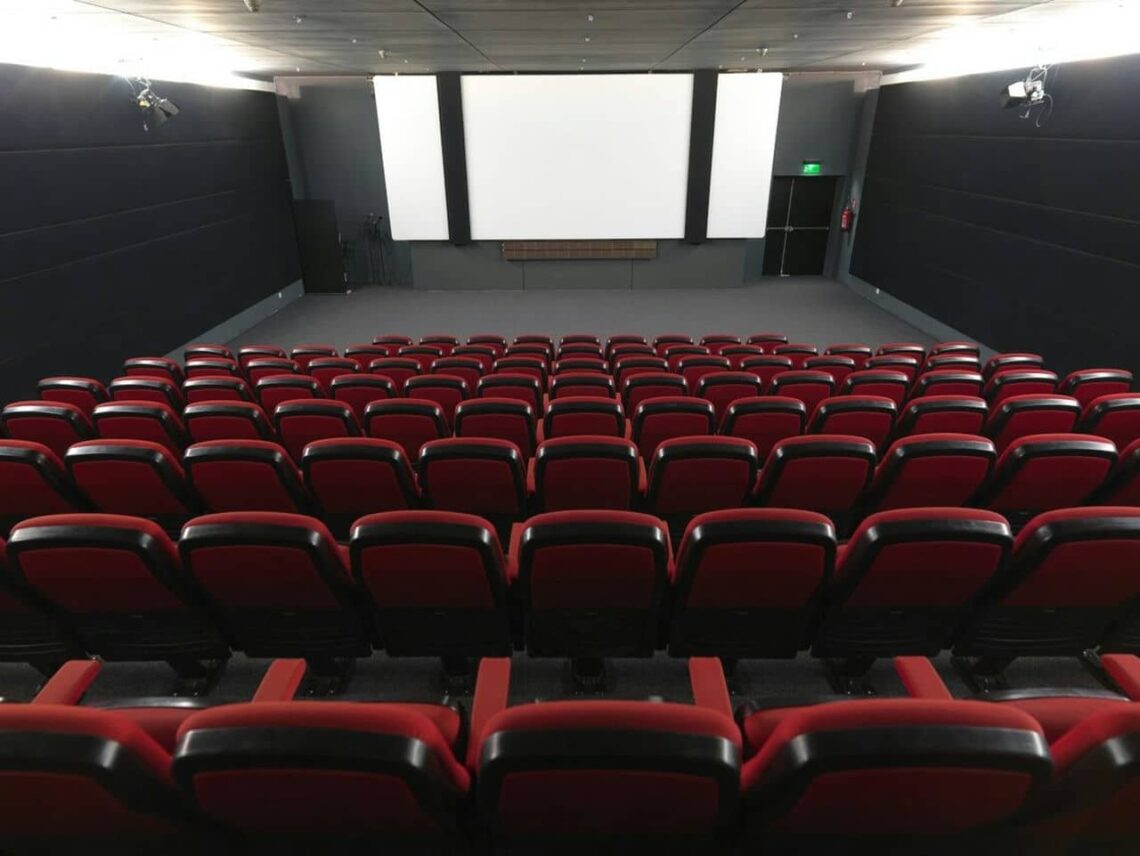
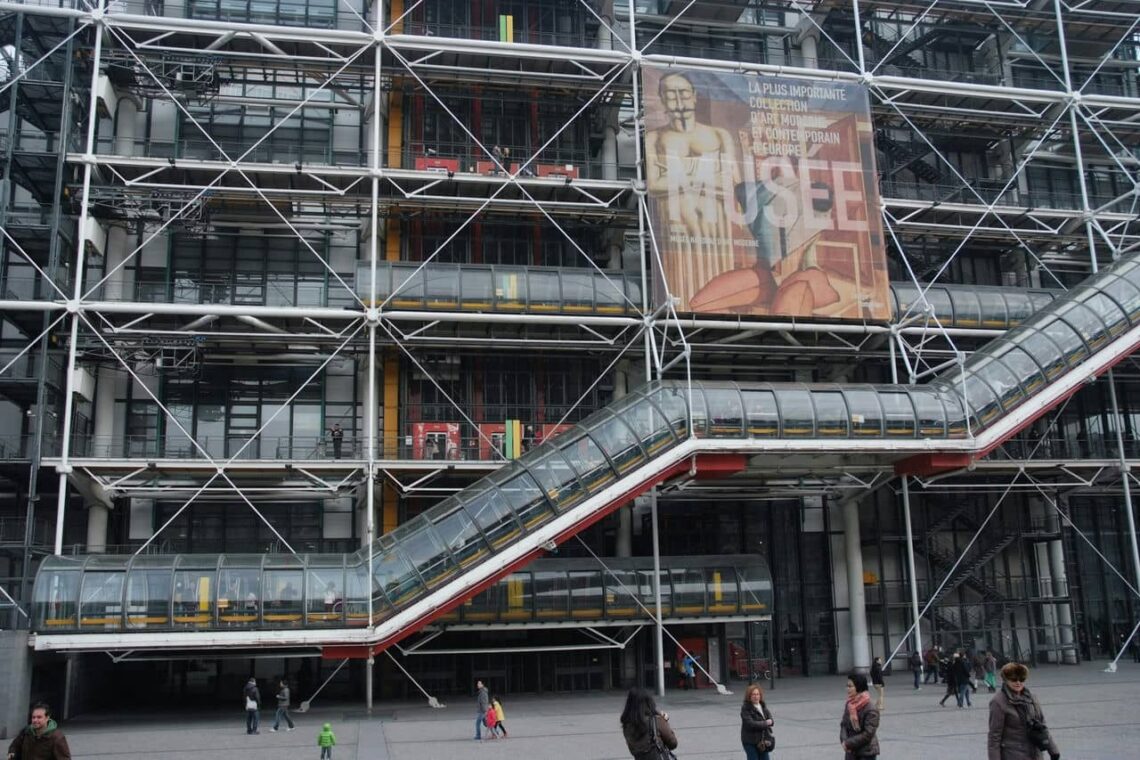
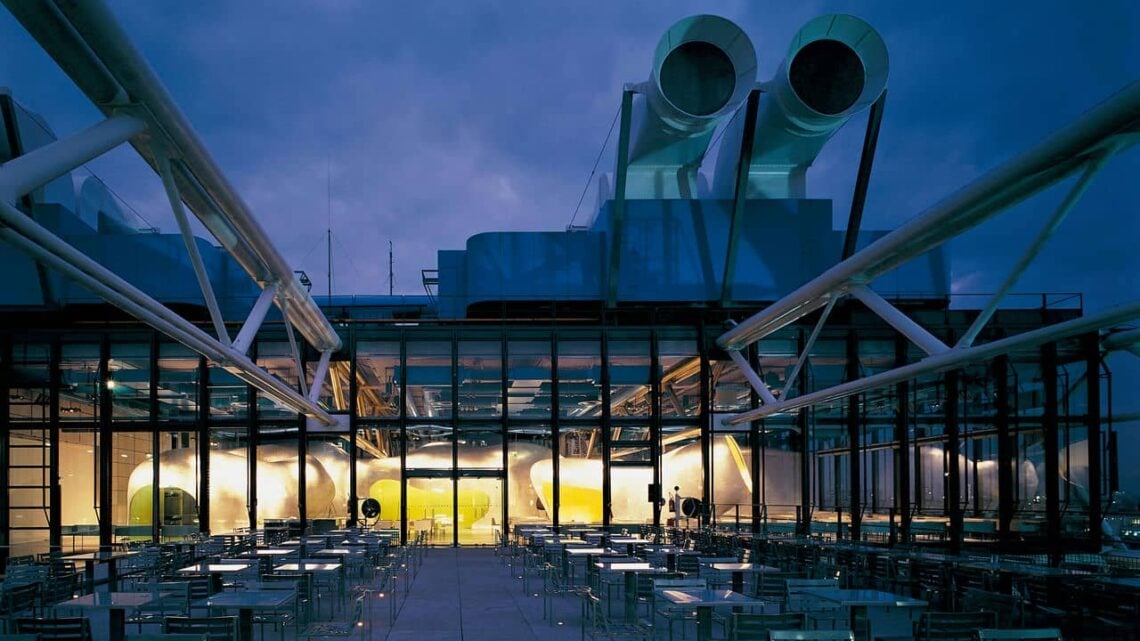
The Centre Pompidou represents the architectural trend or high-tech or structural expressionism movement. The style features exposed structural elements, such as steel beams, pipes, ducts, and cables, usually hidden in conventional buildings. The building is also flexible and modular, with movable walls and floors that can be adapted to different functions and exhibitions. The Centre Pompidou is influenced by historical design movements such as the Bauhaus, Russian Constructivism, and the British Archigram. These movements experimented with new forms, materials, and technologies and aimed to create functional and democratic architecture for modern society. The Centre Pompidou also draws inspiration from the industrial aesthetics of the nearby Les Halles, the former food market of Paris.
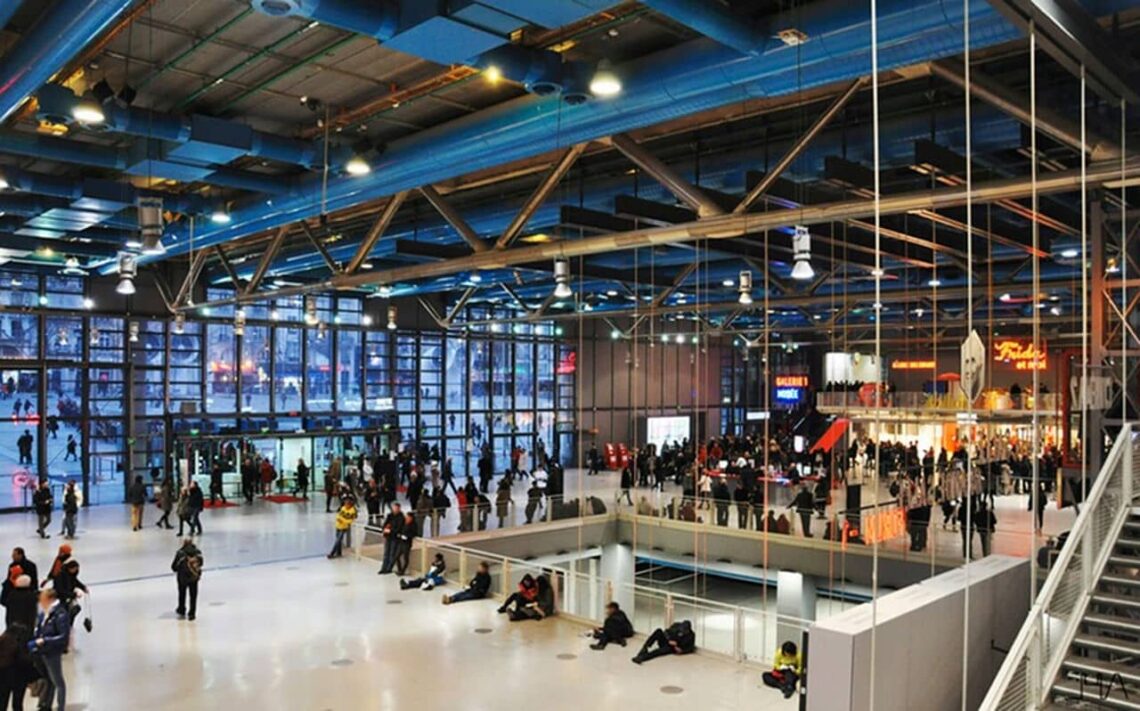
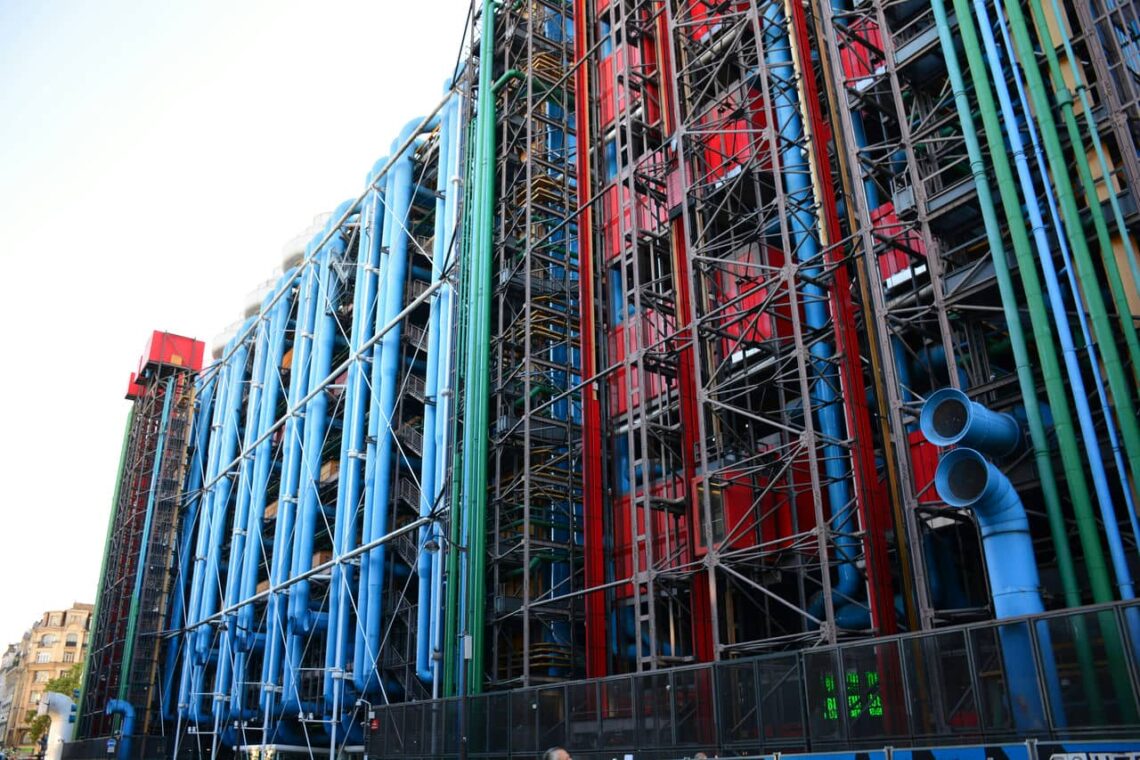
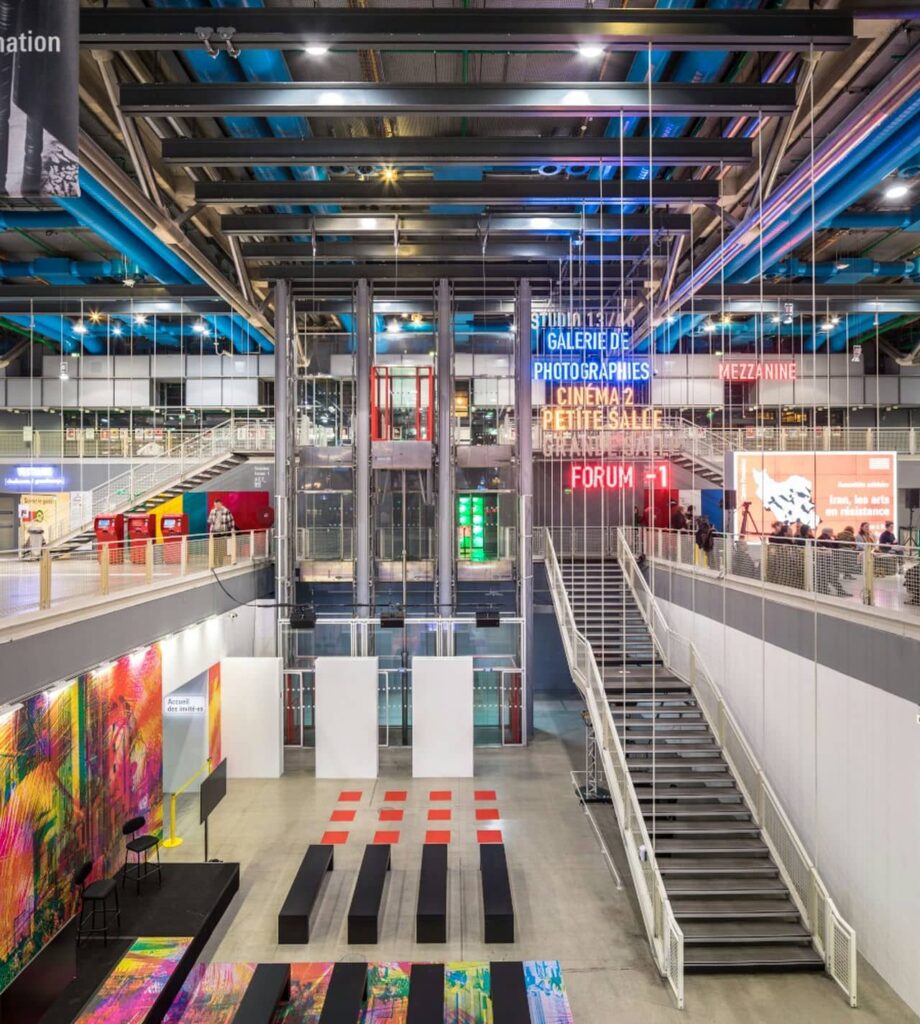
The Centre Pompidou uses various lighting and shading techniques to enhance its appearance and energy efficiency. The building has large glass facades that allow natural light to enter the interior spaces, while the external metal structure provides shade and reduces heat gain. The building also has a system of adjustable blinds and louvers that can control the amount and direction of sunlight. The building also uses artificial lighting to create different effects and moods, such as the colorful illumination of the escalators and the tubes at night.
45. Château de Chenonceau
The Château de Chenonceau is a French castle that spans the river Cher near the village of Chenonceaux. It is one of the most famous castles of the Loire Valley, a region known for its historical and cultural heritage. The Château de Chenonceau is located in the department of Indre-et-Loire, in France’s Centre-Val de Loire region. It is 133 miles (214 kilometers) southwest of Paris and 21 miles (34 kilometers) east of Tours, the regional capital. The Château de Chenonceau was built in several stages, starting from the 11th century. The original castle was burned down in 1412, and a new one was built in the 1430s. In 1513, Thomas Bohier, a royal chamberlain, bought the castle and demolished most of it, except for the medieval keep. He and his wife Katherine Briçonnet built a new residence between 1515 and 1521. In 1555, Diane de Poitiers, the mistress of King Henry II, commissioned the bridge over the river. In 1570, Catherine de’ Medici, the widow of Henry II, added the gallery on the bridge.
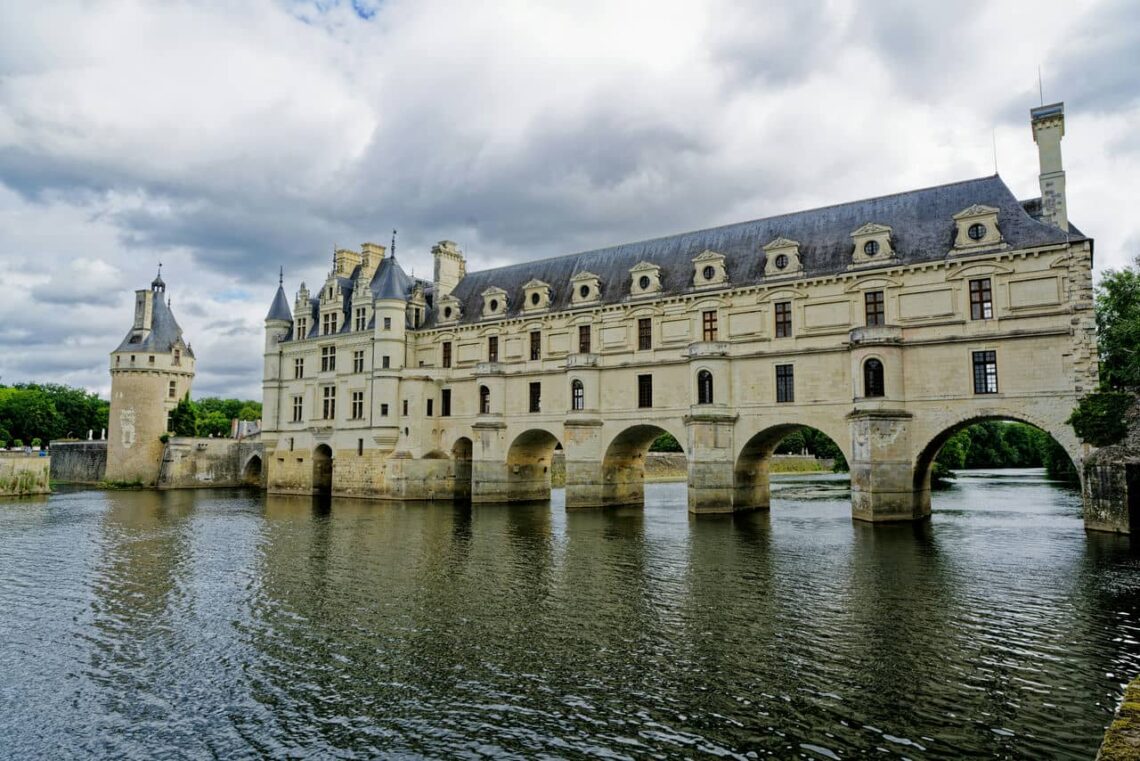
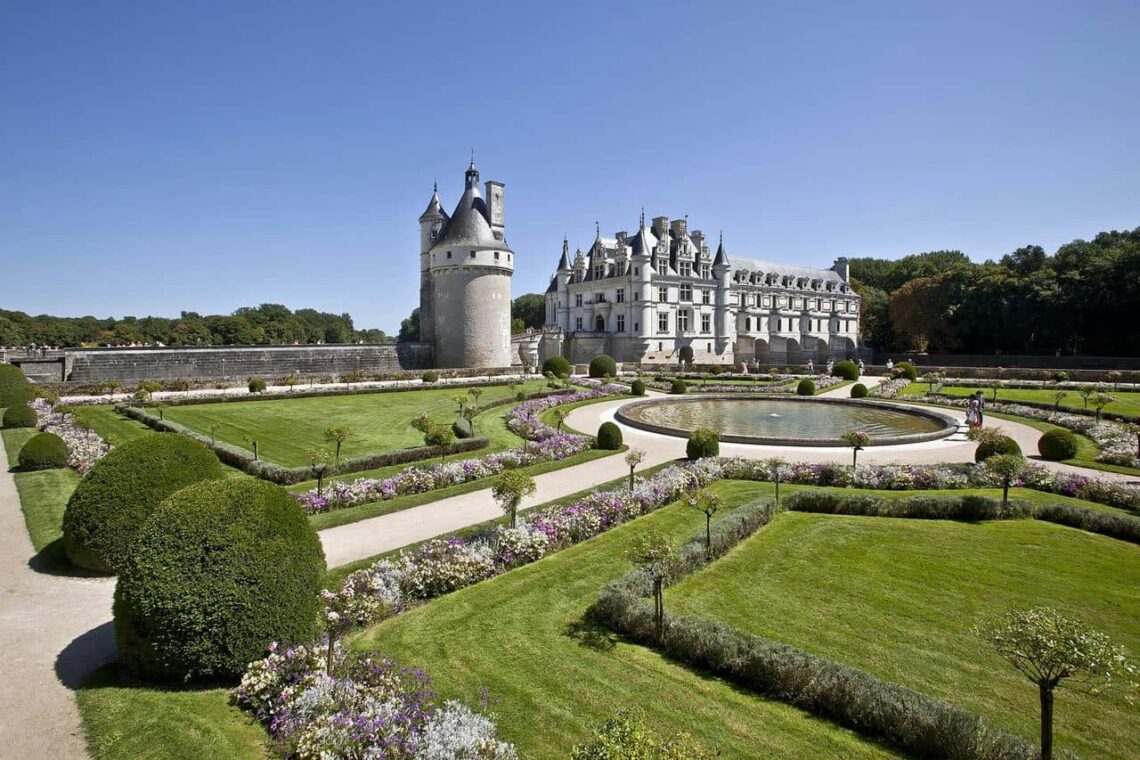
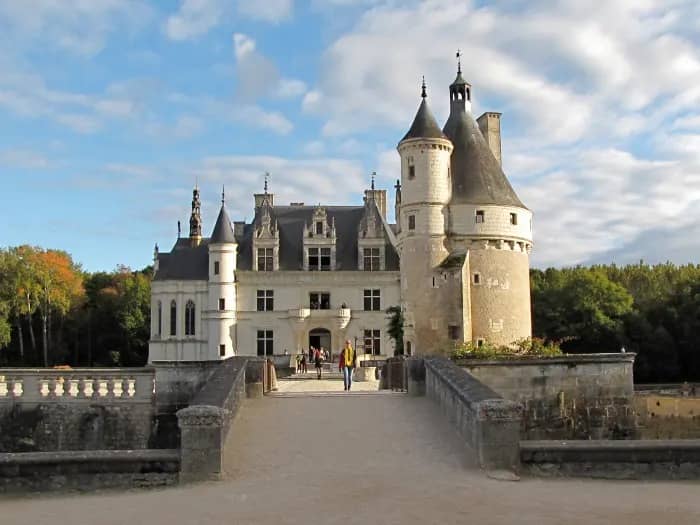
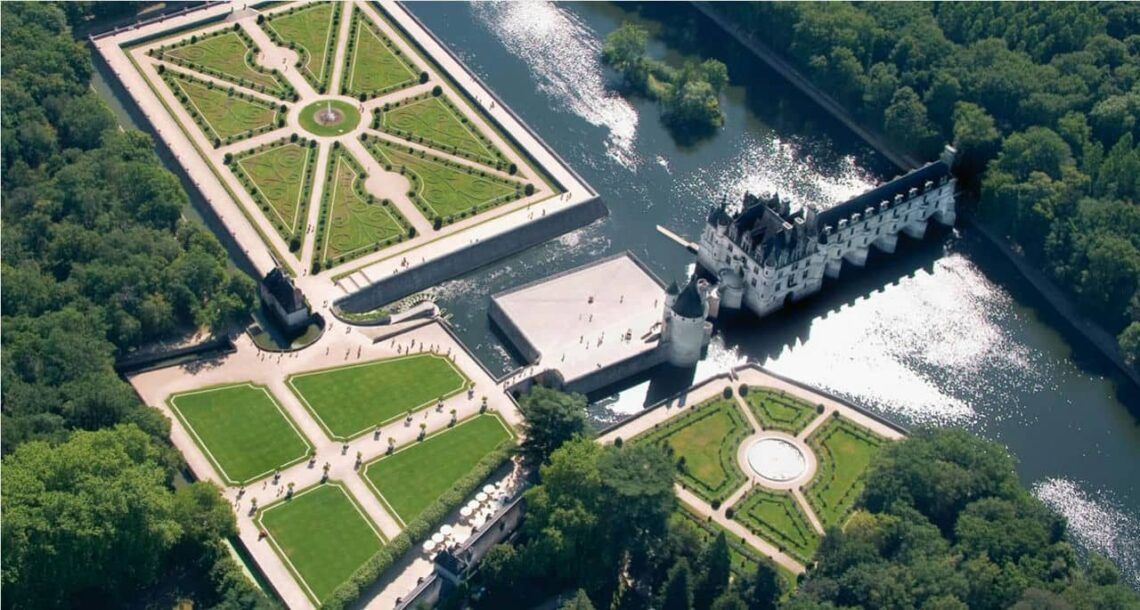
The Château de Chenonceau blends late Gothic and early Renaissance architectural styles. The Gothic elements include the pointed arches, the ribbed vaults, and the vertical lines. The Renaissance elements include the classical columns, the symmetrical façades, and the ornamental details. The château also reflects the influence of Italian architecture, especially in the bridge and gallery design. The Château de Chenonceau is influenced by the history and the personalities of its owners and residents. The castle was owned by several women, who left their mark on its decoration and landscaping. For example, Diane de Poitiers created the formal gardens on the right bank of the river, while Catherine de’ Medici created the gardens on the left bank. The château also witnessed important historical events, such as the French Wars of Religion, the French Revolution, and the World Wars. During World War I, the gallery was used as a hospital, while in World War II, the castle was a passage between the Nazi-occupied and the free zones of France.
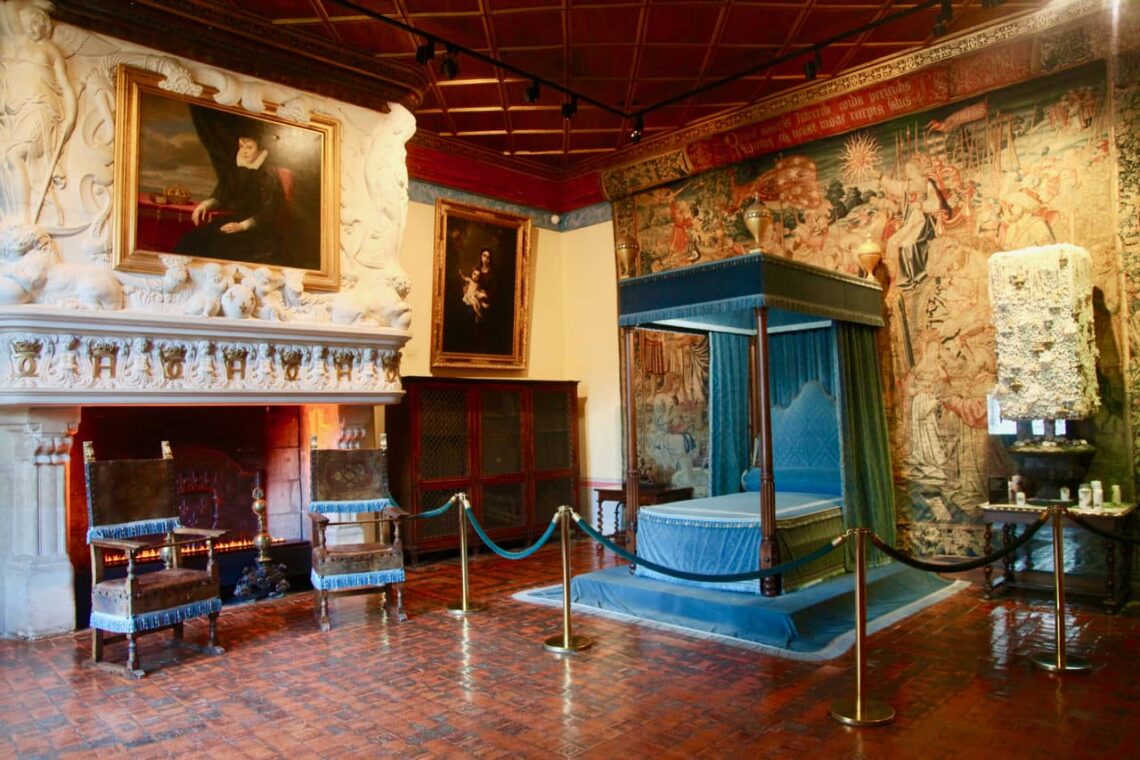
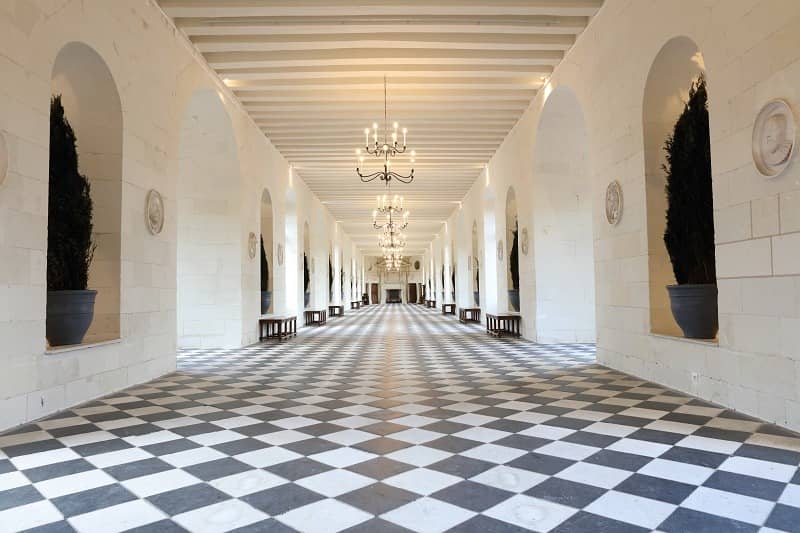
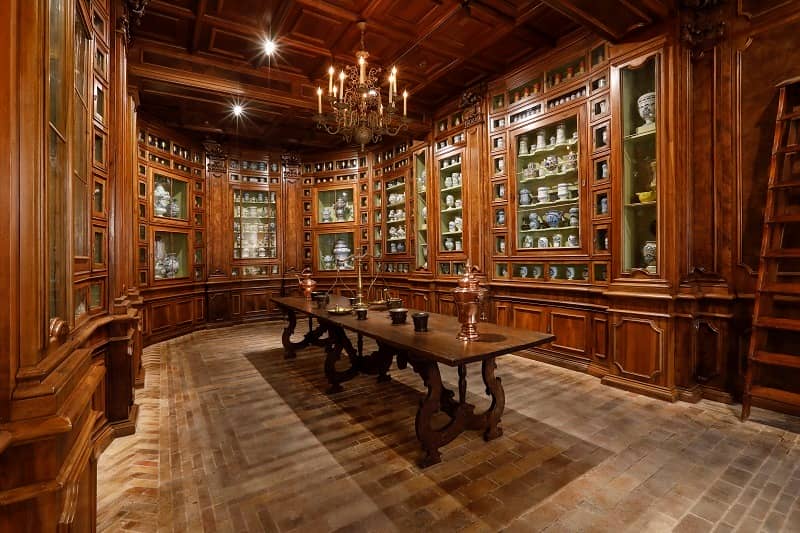
The Château de Chenonceau uses various lighting and shading techniques to create different effects and atmospheres. The castle has large windows that allow natural light to enter and illuminate the rooms. The windows also offer scenic views of the river and the gardens. The château also has artificial lighting, such as chandeliers, candles, and lamps, that create a warm and cozy ambiance. The château uses shading techniques, such as curtains, drapes, and shutters, to control the amount and the direction of light. The château also uses colors, textures, and patterns to create contrast and harmony in its interior design.
46. Bilbao
The Bilbao is not a single building but a city in northern Spain, the largest in the province of Biscay and the Basque Country. It is also the main urban area in the Greater Basque region. The Bilbao is located in the north-central part of Spain, 10 miles (16 kilometers) south of the Bay of Biscay, where the estuary of Bilbao is formed. Its main urban core is surrounded by two small mountain ranges with an average elevation of 1,300 feet (400 meters). The Bilbao was founded on June 15, 1300, by Diego López V de Haro, head of the powerful Haro family, as a commercial hub for the export of wool and iron. Throughout the 19th and 20th centuries, it experienced heavy industrialization and urban transformation, becoming the second-most industrialized region of Spain, behind Barcelona.
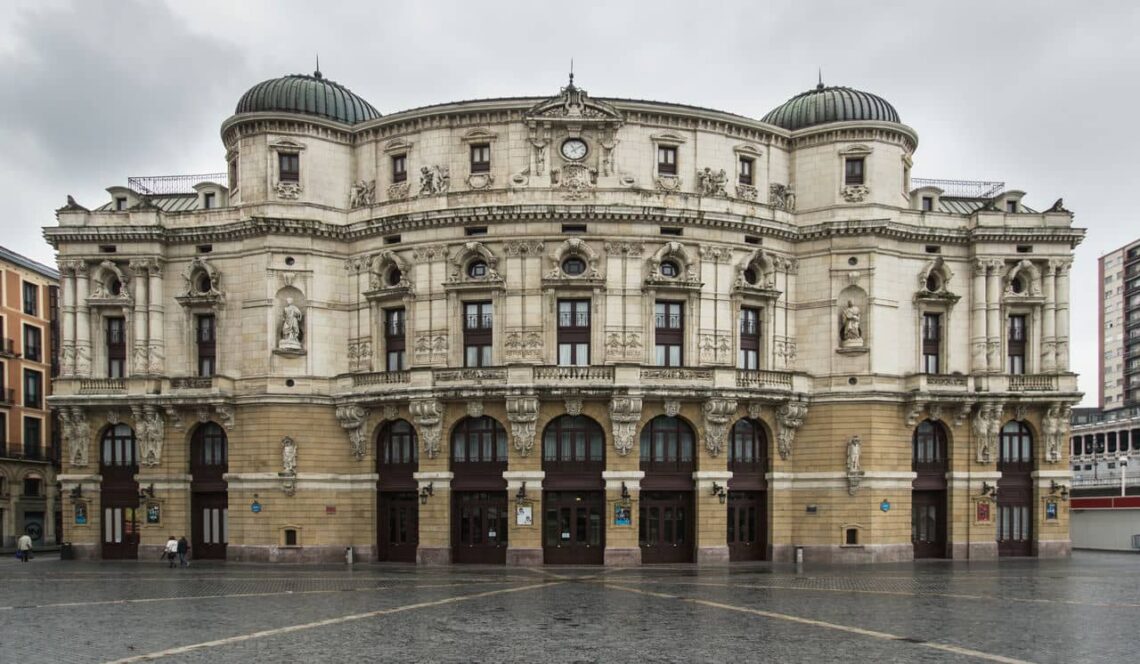
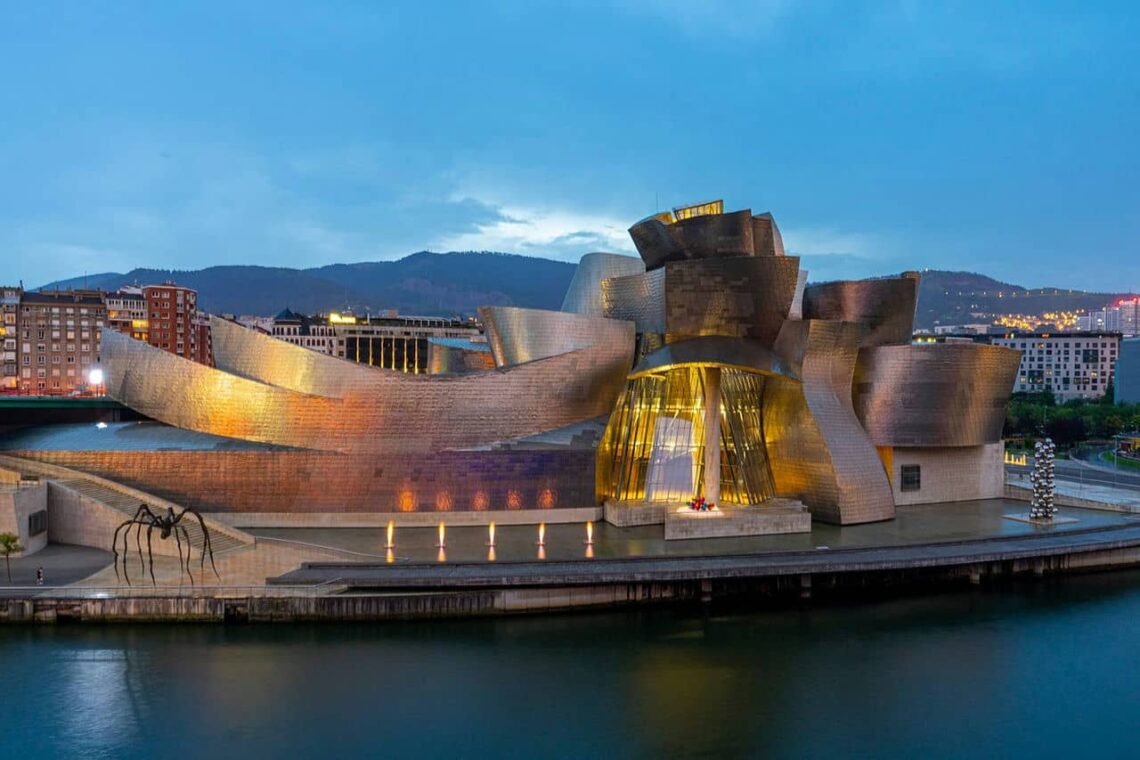
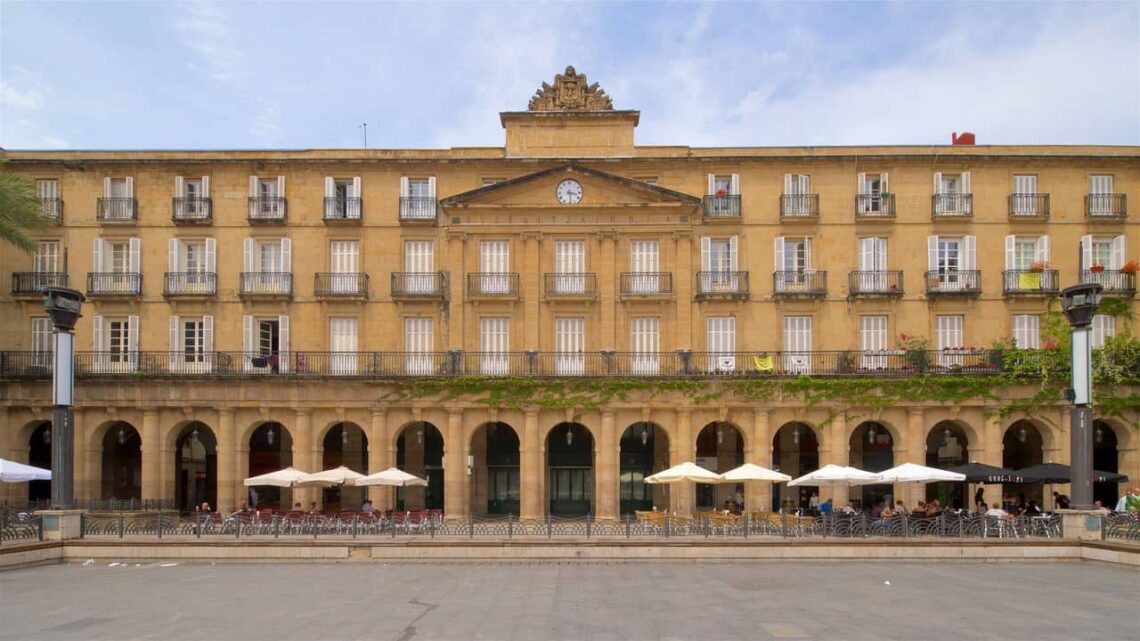
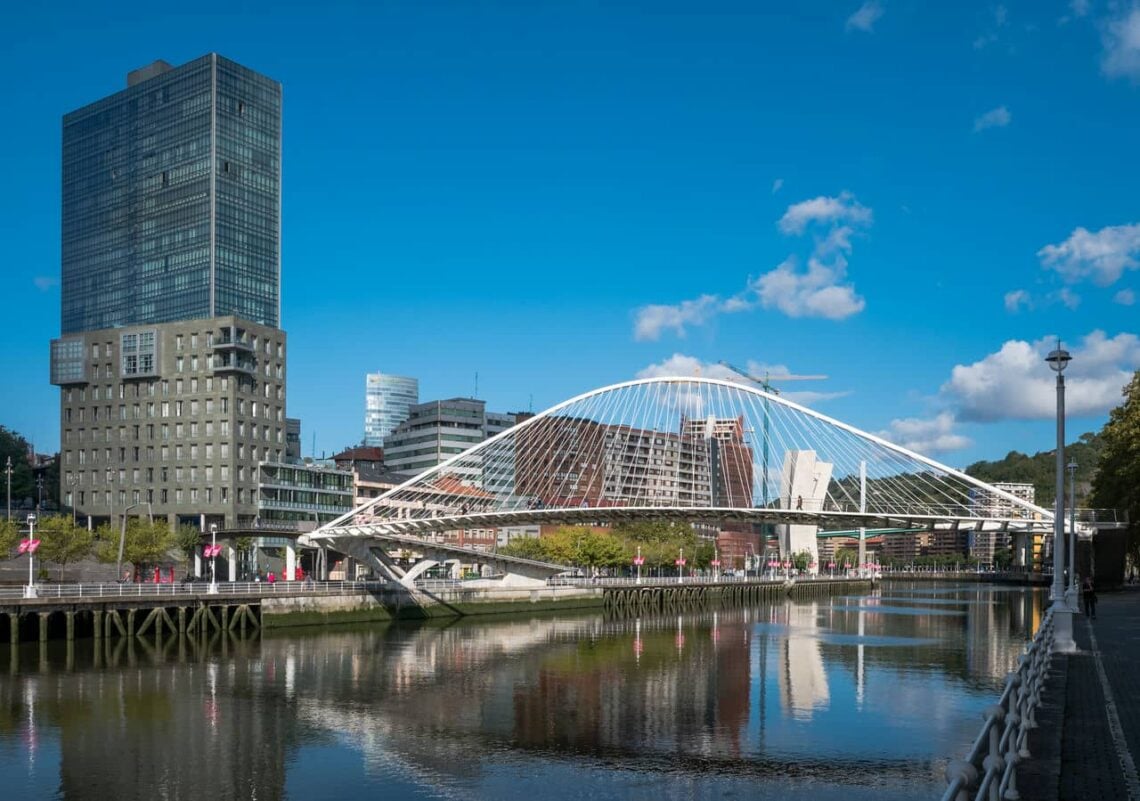
The Bilbao represents a mix of architectural trends and movements, from the historic Casco Viejo (Old Town) buildings to the avant-garde structures of the Abandoibarra district. The city’s most famous example of contemporary architecture is the Guggenheim Museum, designed by Frank Gehry and opened in 1997. The Bilbao reflects the historical influences of various cultures and styles, such as the Gothic, Renaissance, Baroque, Neoclassical, Eclectic, Modernist, and Art Deco. Some notable examples are the Santiago Cathedral, the Arriaga Theatre, the City Hall, the Plaza Nueva, and the Casa Montero. The Bilbao uses various lighting and shading techniques to enhance the beauty and functionality of its buildings. The Guggenheim Museum has a titanium facade that shimmers and changes color depending on the light and angle of view, and the Zubizuri Bridge has a translucent glass floor that allows people to see the river below, while the Basque Health Department Headquarters has a curved glass skin that distorts and reproduces the image of the environment.
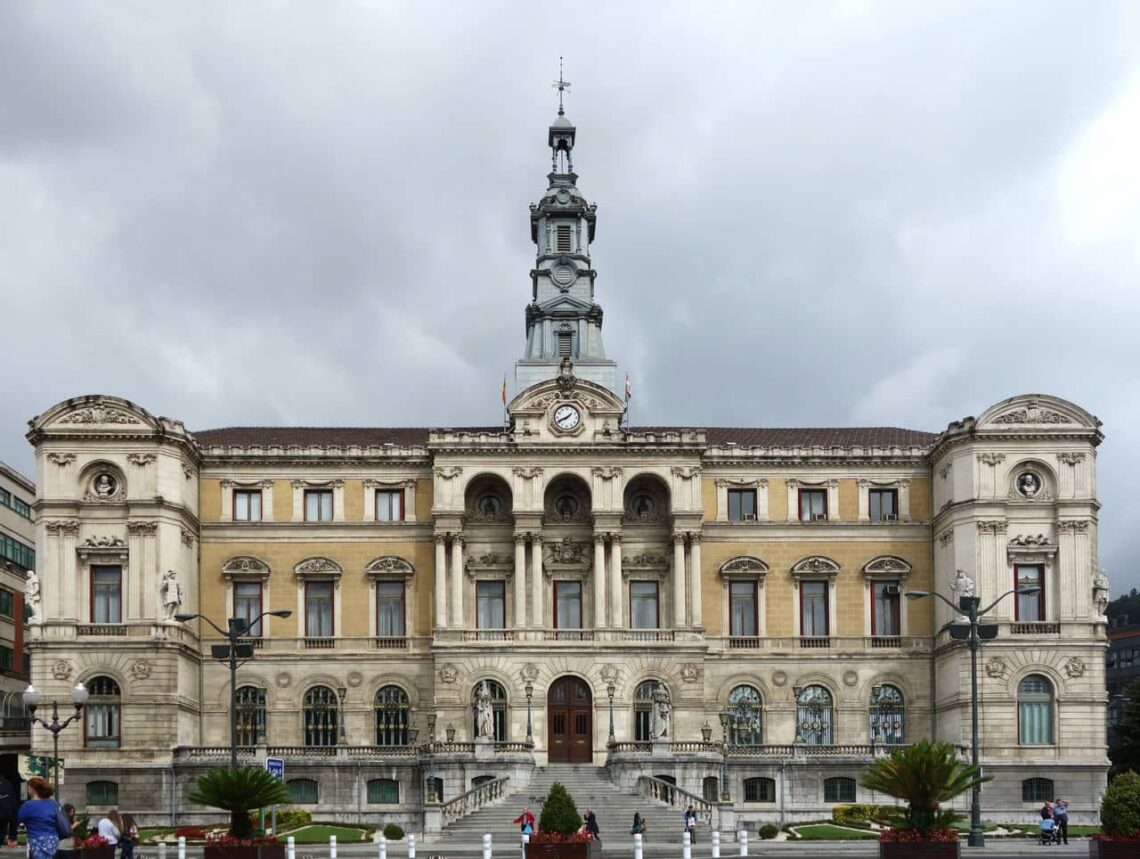
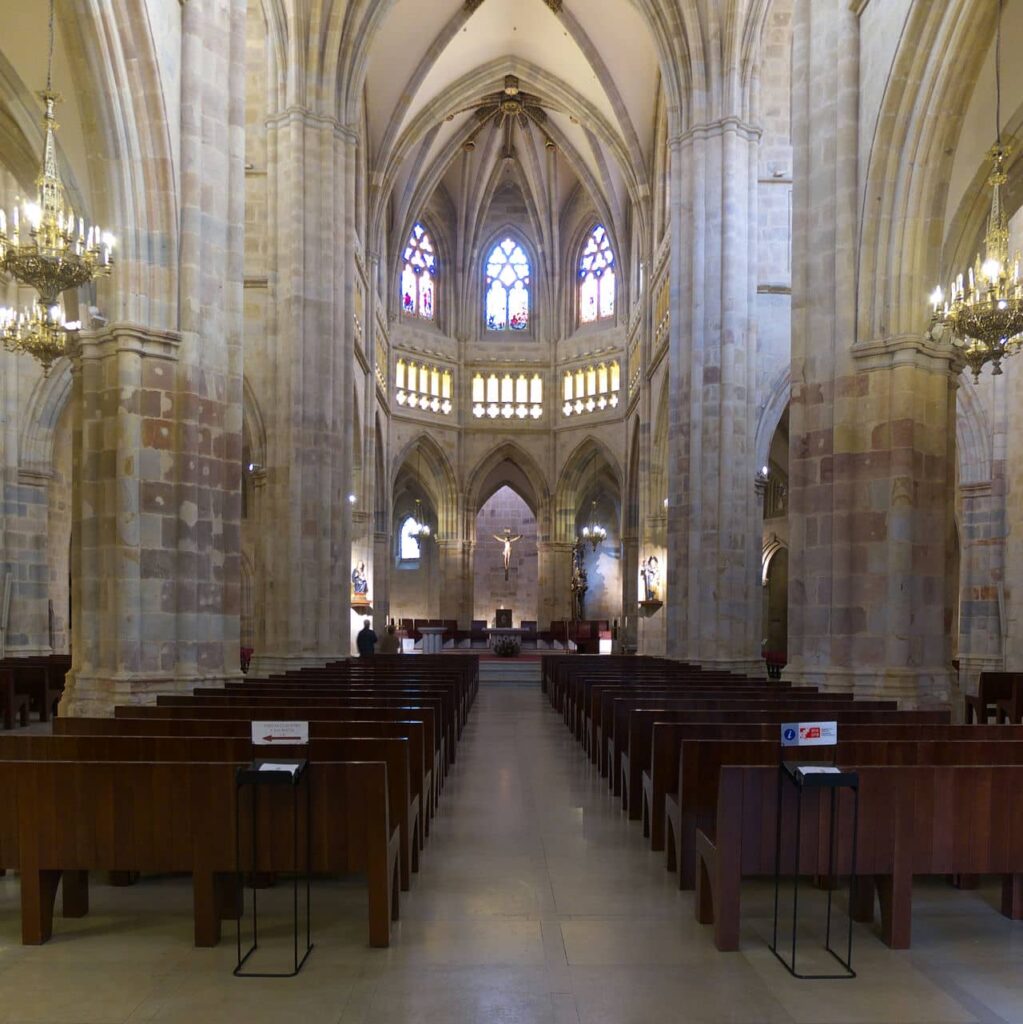
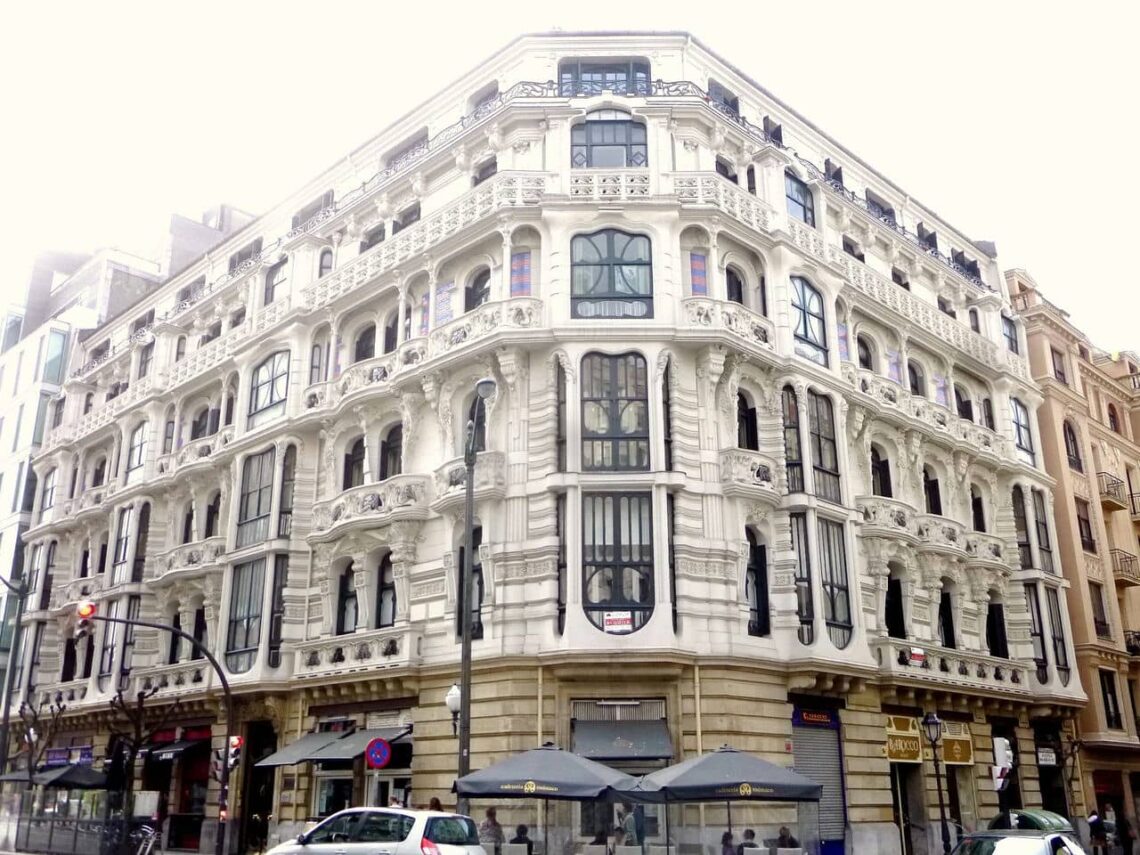
47. Great Mosque of Djenne
The Great Mosque of Djenne is a large building made of mud bricks in the Sudano-Sahelian style of architecture. It is a place of Muslim worship and a symbol of the community of Djenne, Mali. It is also one of the most famous landmarks in Africa and a World Heritage Site. The Great Mosque of Djenne is located in Djenne, Mali, on the flood plain of the Bani River. Djenne is one of the oldest cities in sub-Saharan Africa and a former center of trade, learning, and Islam. The Great Mosque of Djenne was built around the 13th century by King Koi Konboro, the first Muslim ruler of Djenne. It was rebuilt several times over the centuries, and the current structure dates from 1907. It is maintained by the residents, who re-plast it with mud yearly during a festival called the Crépissage de la Grand Mosquée.
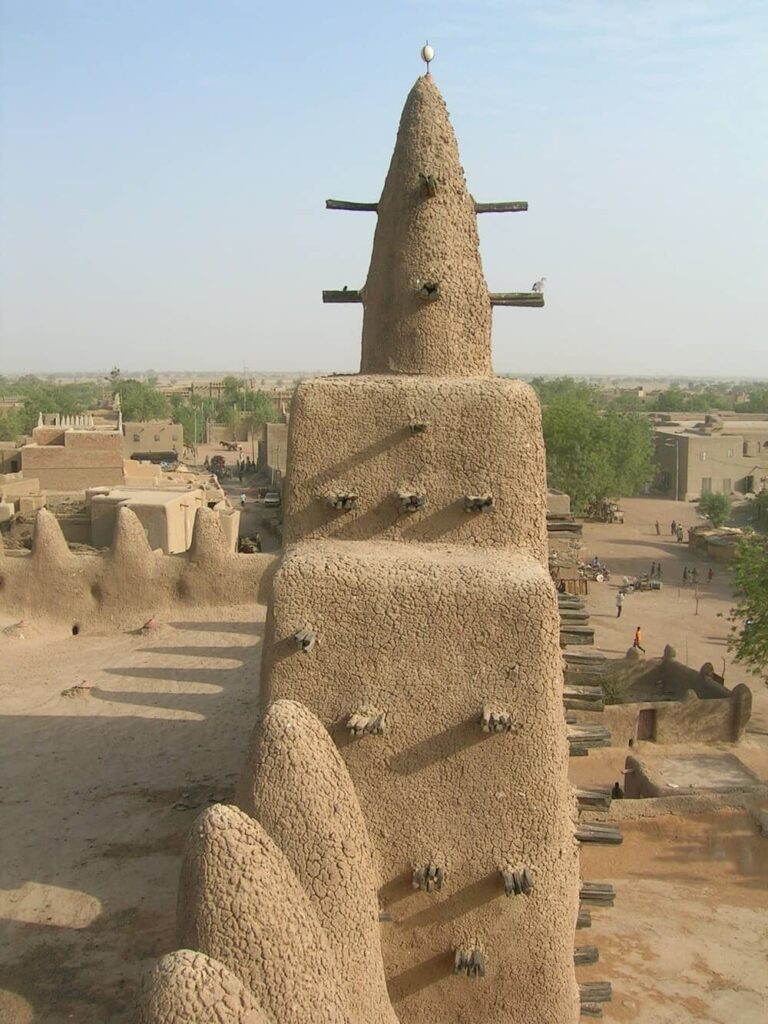
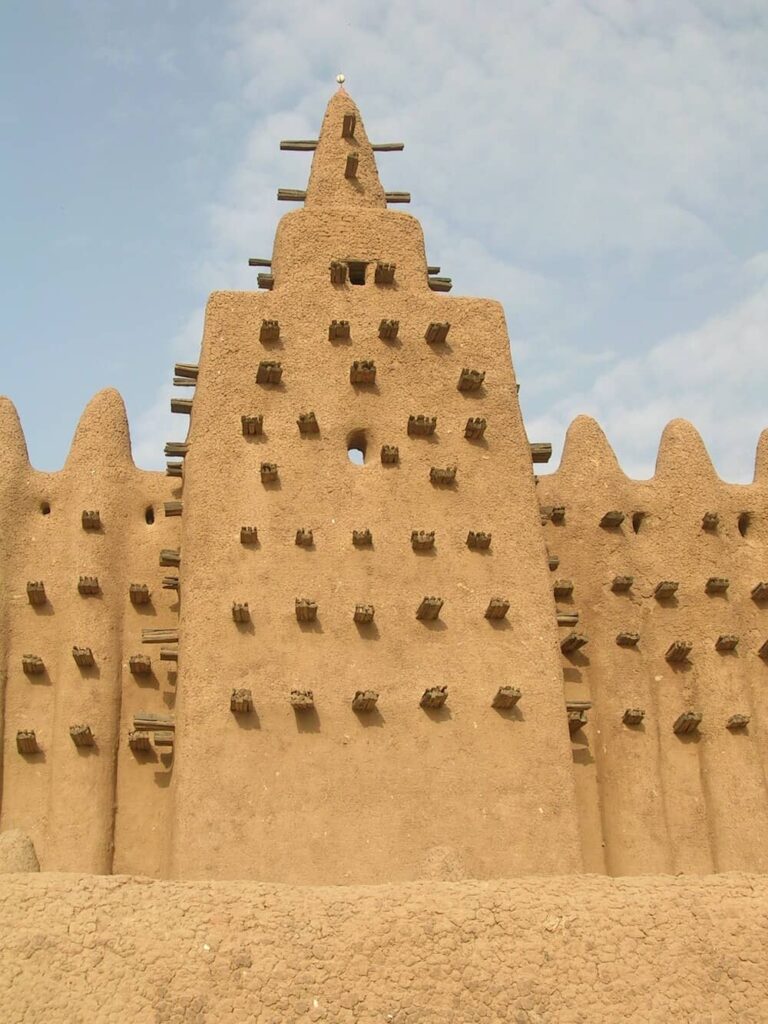
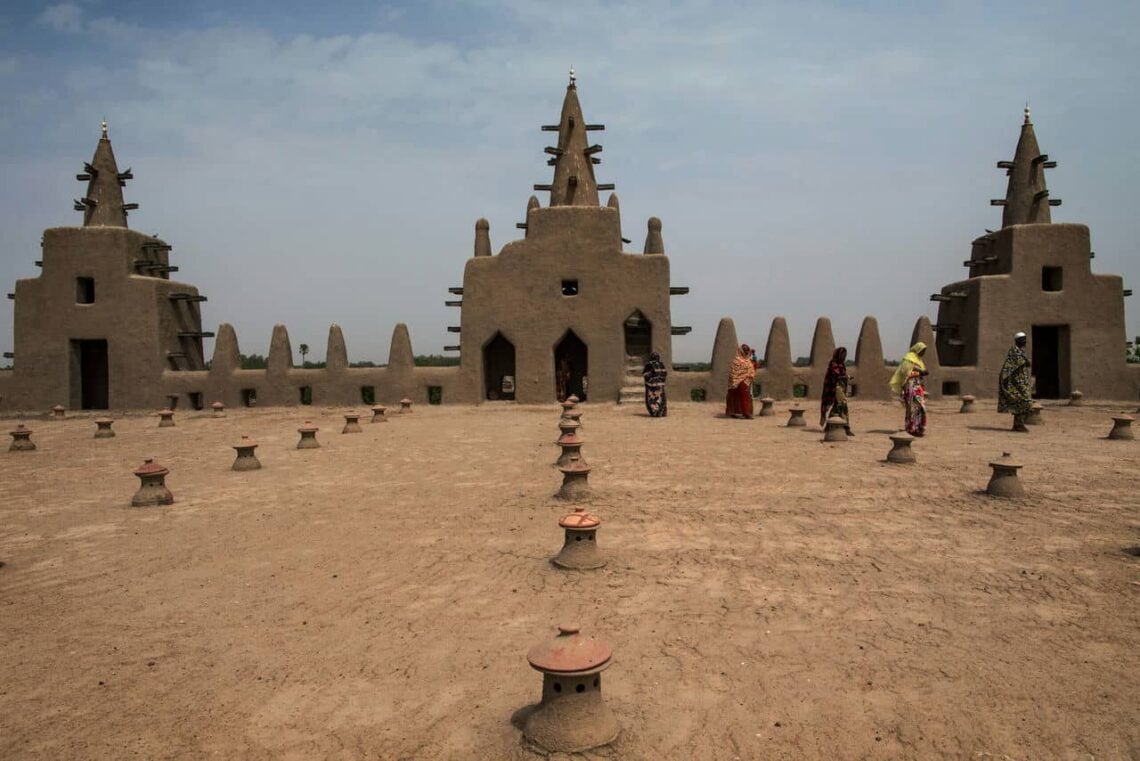
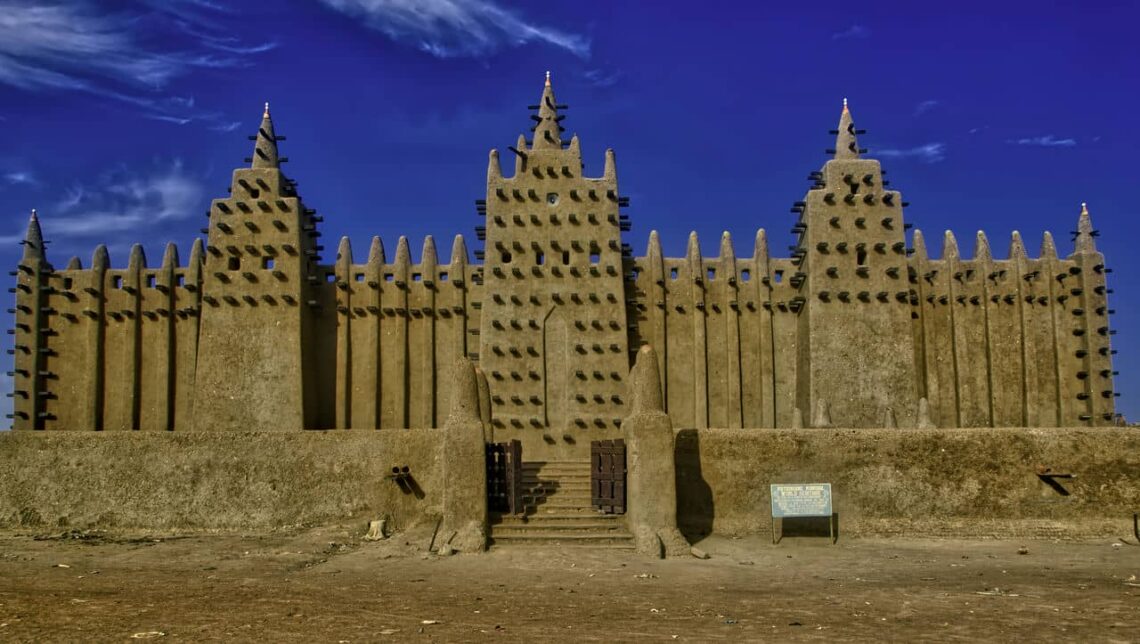
The Great Mosque of Djenne represents the Sudano-Sahelian architectural style, characterized by mud bricks, adobe plaster, wooden beams, and toron (rods of palm wood). The style is influenced by the local climate, materials, and traditions of West Africa. It is also adapted to the Islamic requirements of prayer and orientation. The historical design influences visible in the Great Mosque of Djenne include the pre-Islamic vernacular architecture of the region, such as the Tukulor huts and the Tellem cliff dwellings. The mosque also incorporates Moroccan and Andalusian architectural elements, such as the square minaret, horseshoe arches, and ribbed domes. The mosque is decorated with geometric patterns, ostrich eggs, and ceramic discs.
The lighting and shading techniques in the Great Mosque of Djenne are based on natural light and ventilation. The mosque has many small openings on the walls and the roof that allow the light to enter and create patterns on the interior surfaces. The mosque also has large wooden shutters that can be opened or closed to regulate the temperature and the amount of light. The thick mud walls and the roof terraces provide insulation and shade from the heat and the sun.
48. Konark Sun Temple
The Konark Sun Temple is a 13th-century Hindu temple dedicated to the sun god Surya. It is one of the few sun temples built in India and the most famous one. The temple is designed as a giant stone chariot with 12 wheels and seven horses, symbolizing the sun’s movement across the sky. The Konark Sun Temple is located on the eastern coast of India, about 22 miles (35 kilometers) northeast of Puri in Odisha. It is near the Chandrabhaga River, which was once considered sacred by the locals. The temple faces the east so that the first rays of the sun can illuminate the main entrance. The Konark Sun Temple was built by King Narasimhadeva I of the Eastern Ganga dynasty around 1250 CE. He was a powerful ruler who expanded his kingdom and patronized art and culture. He commissioned the temple to symbolize his political and religious authority, and a tribute to the sun god believed to cure diseases and grant boons. The temple was constructed by thousands of artisans and craftsmen who used local sandstone and iron beams to create the magnificent structure.
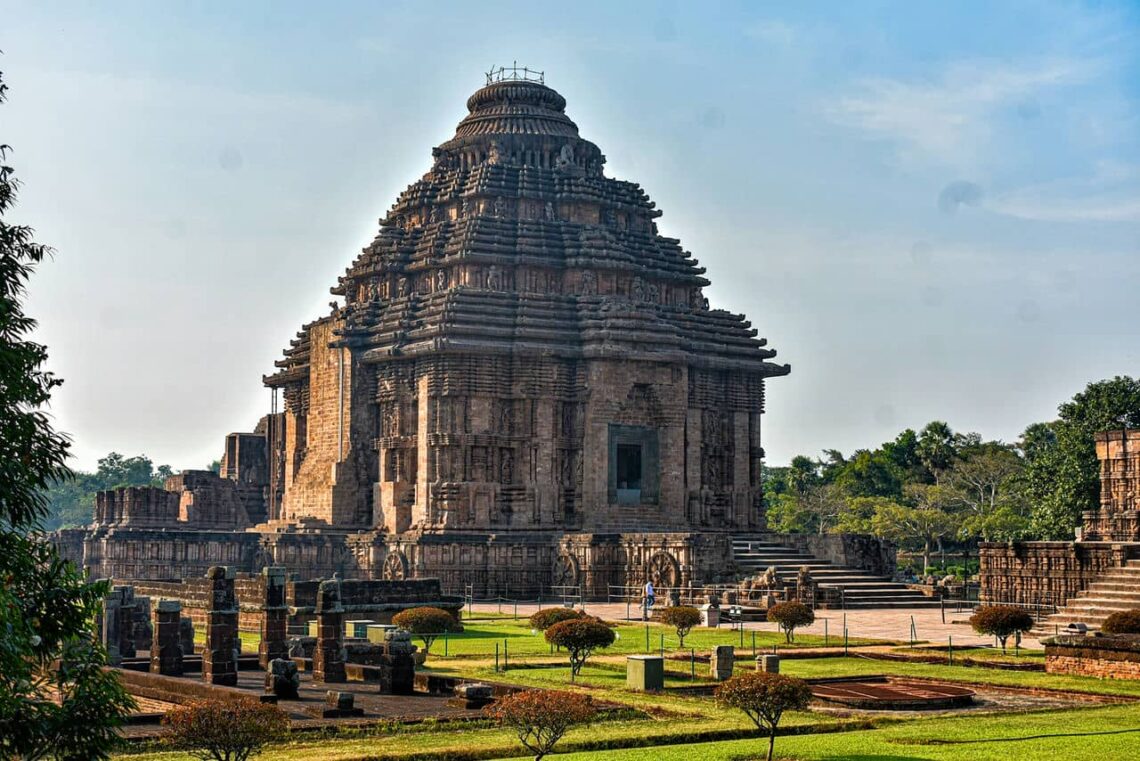
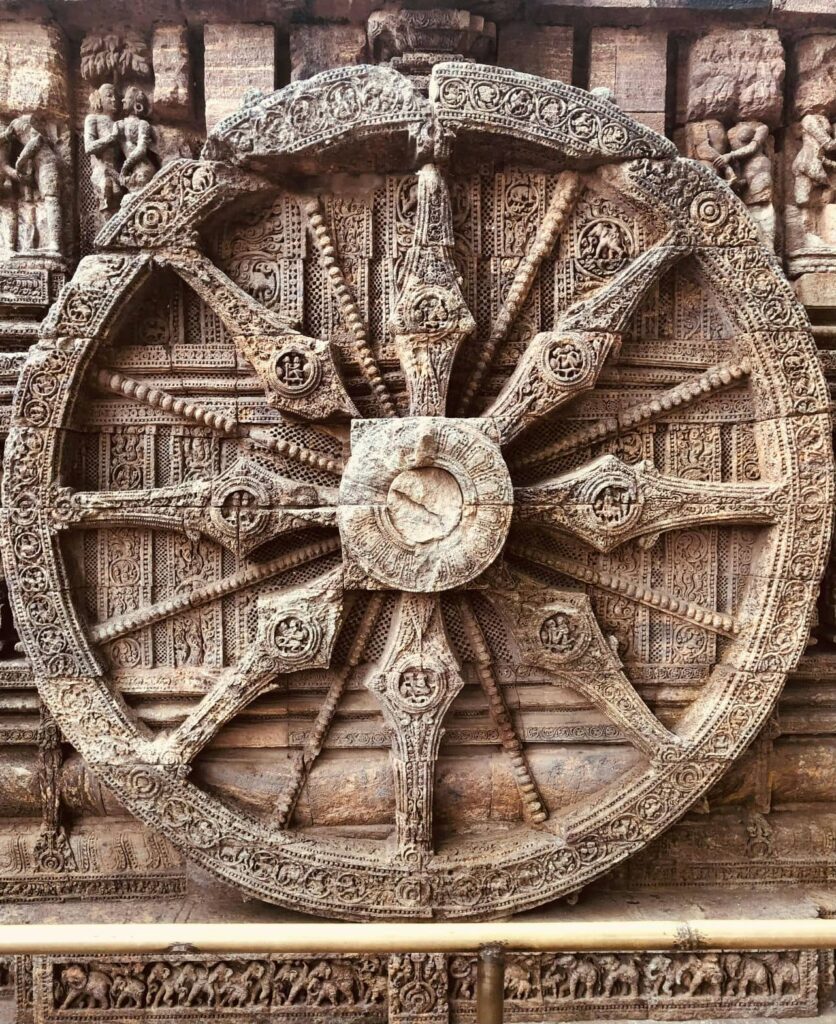
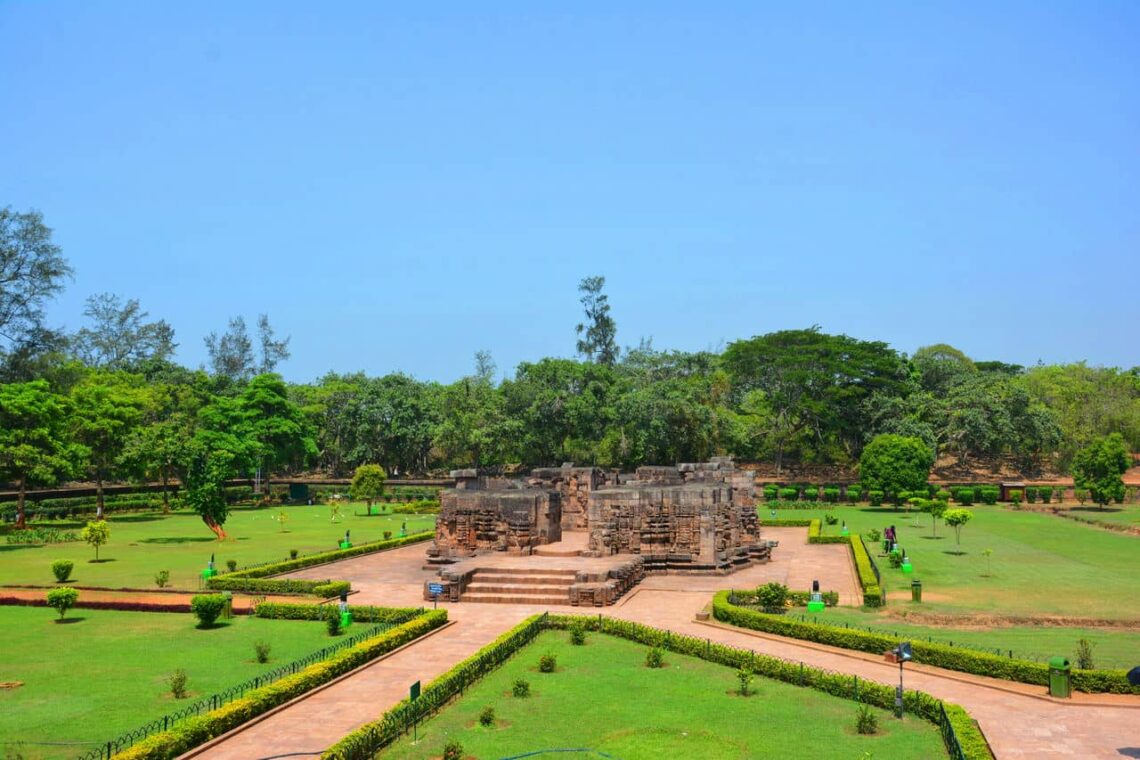
The Konark Sun Temple represents the Kalinga style of architecture, which flourished in Odisha from the 7th to the 13th century CE. This style is characterized by curved roofs, elaborate carvings, and intricate sculptures. The Kalinga style reflects the influence of various regional and foreign cultures, such as Buddhism, Jainism, Shaivism, Vaishnavism, and Islam. The Konark Sun Temple is considered the pinnacle of this style, as it showcases the artistic and technical excellence of the Kalingan builders. The Konark Sun Temple is influenced by various historical and cultural factors, such as mythology, astronomy, geometry, and eroticism. The temple depicts scenes from the Hindu epics, such as the Ramayana and the Mahabharata, and legends about the sun god and his consorts. The temple also incorporates elements of astronomy, such as the 12 wheels representing the 12 months, the seven horses representing the seven days, and the 24 spokes representing the 24 hours. The temple also follows the principles of geometry, such as the square, the circle, and the hexagon, considered sacred shapes in Hinduism. The temple also displays erotic sculptures, which are meant to symbolize the union of the human and the divine and the celebration of life and fertility.
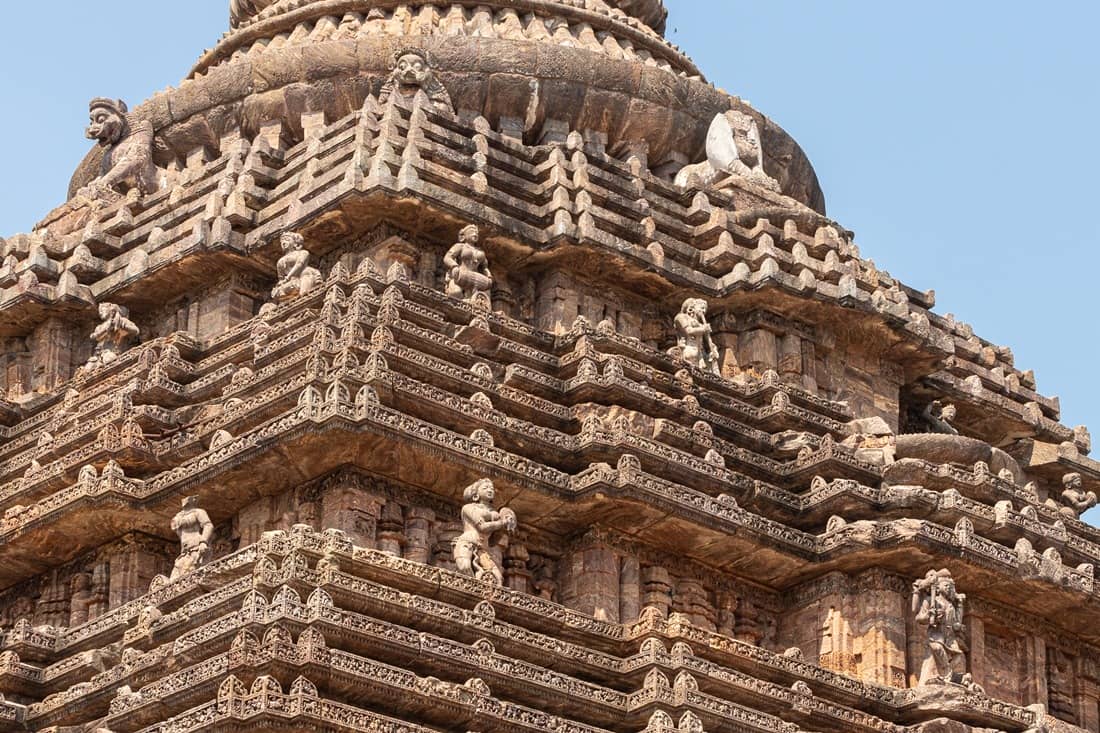
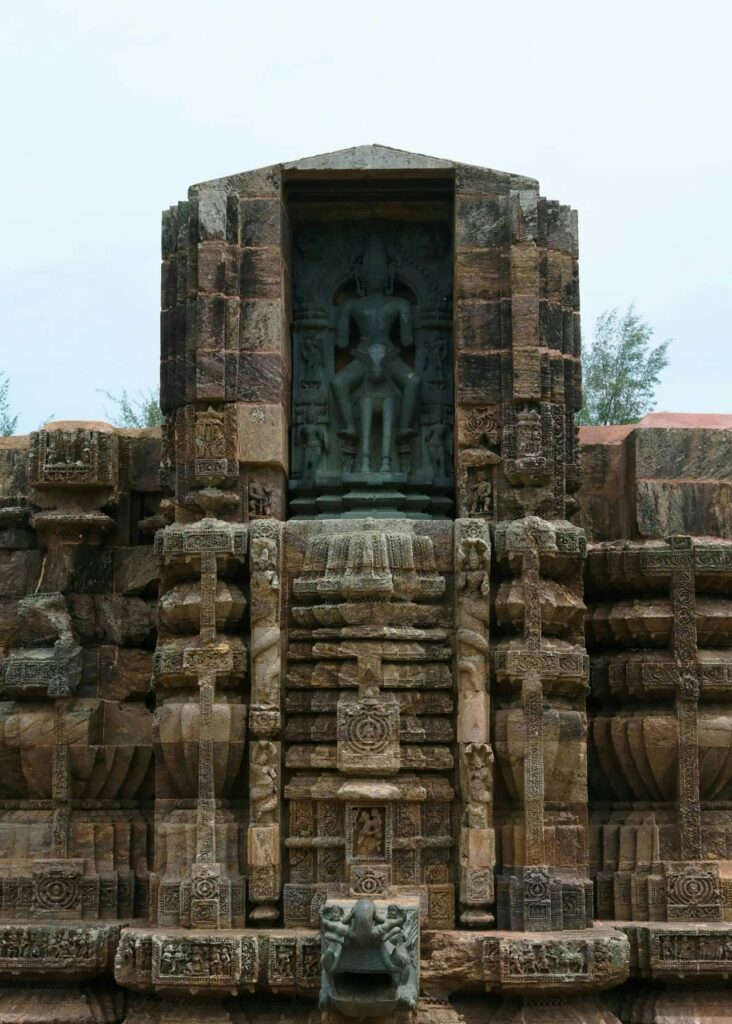
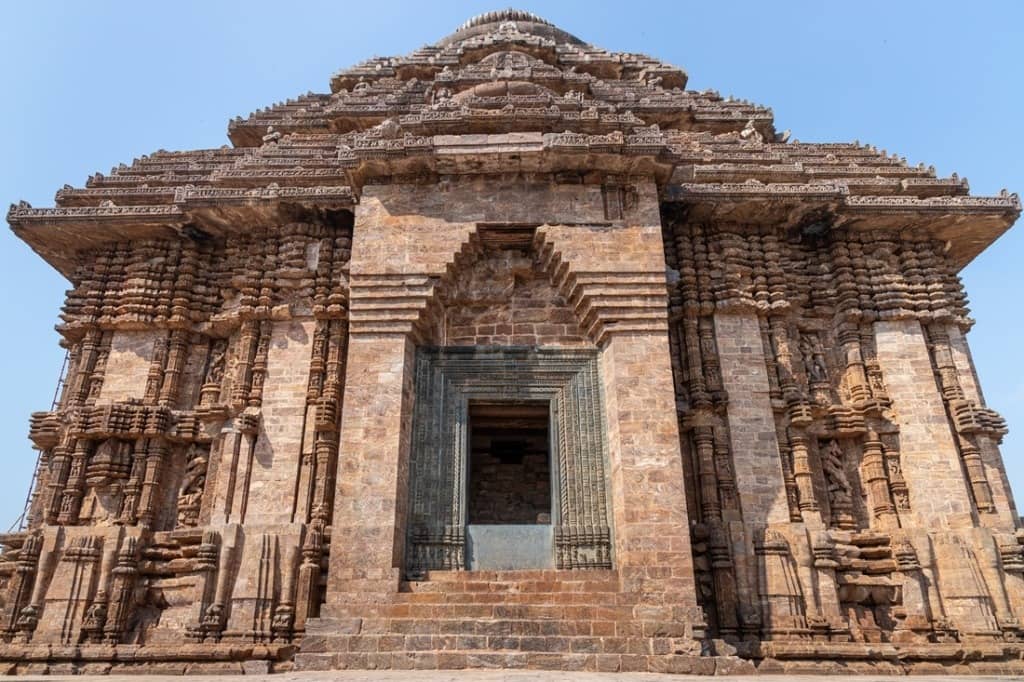
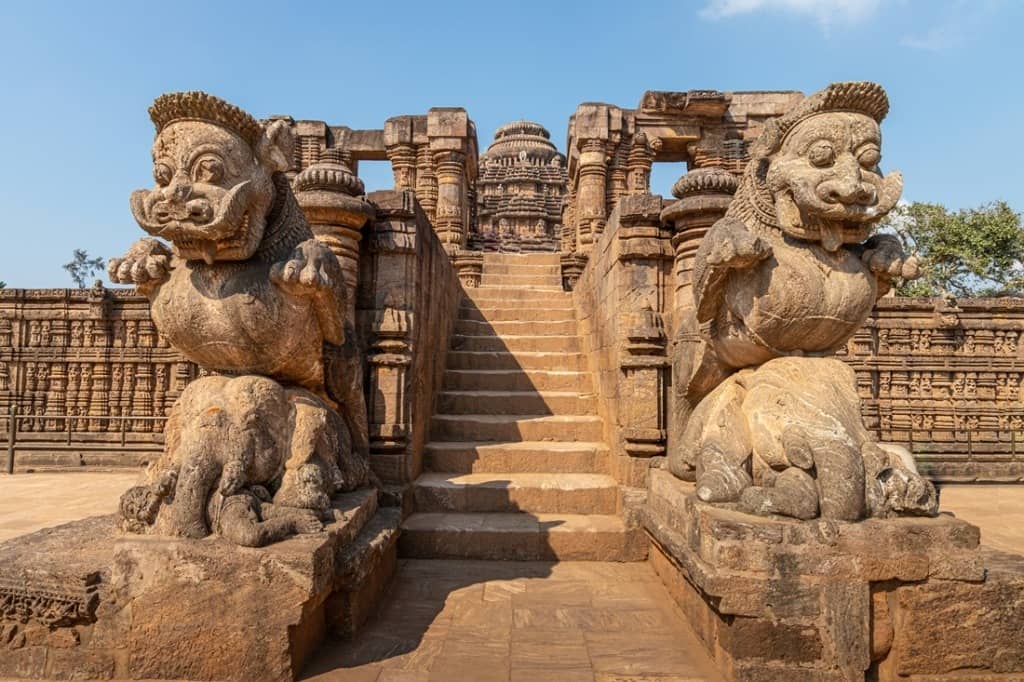
The Konark Sun Temple uses various lighting and shading techniques to create a dramatic effect on the viewers. The temple is oriented so that the sun’s rays fall on different parts of the temple at other times, making a dynamic play of light and shadow. The temple also has perforated stone screens, which allow the light to filter through and create patterns on the walls and floors. The temple also has carved projections and recessions, enhancing the sculptures’ depth and dimension. The temple also has hidden magnets, which are said to create an illusion of levitation and suspension.
49. Setas de Sevilla
The Setas de Sevilla is a large, predominantly wood structure located at La Encarnación Square in the old quarter of Seville, Spain. It accommodates a traditional market, restaurants, a performance square, an archaeological museum, and a rooftop terrace with a panoramic view of Seville’s old city. The Setas de Sevilla is situated in the heart of Seville, the capital and largest city of the autonomous community of Andalusia in southern Spain. It is accessible by public transport, such as buses, metro, tram, and bike. It is also within walking distance of many other attractions, such as the Cathedral, the Alcázar, and the Santa Cruz neighborhood. The Setas de Sevilla was built between 2005 and 2011 after a city-sponsored competition that selected the design of German architect Jürgen Mayer H. The project faced many technical problems, budget and schedule overruns, and cost $113 million (€102.83 million, £98.31 million) to complete. The structure was made of 123,601.3 cubic feet (3,500 cubic meters) of micro-laminated Finnish pine and is marketed as the world’s largest wood structure.
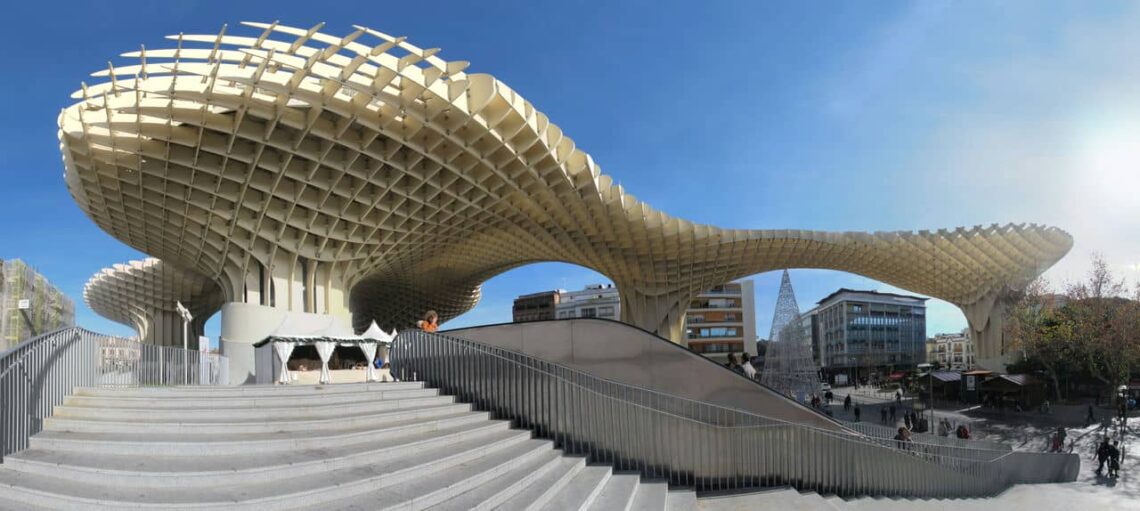
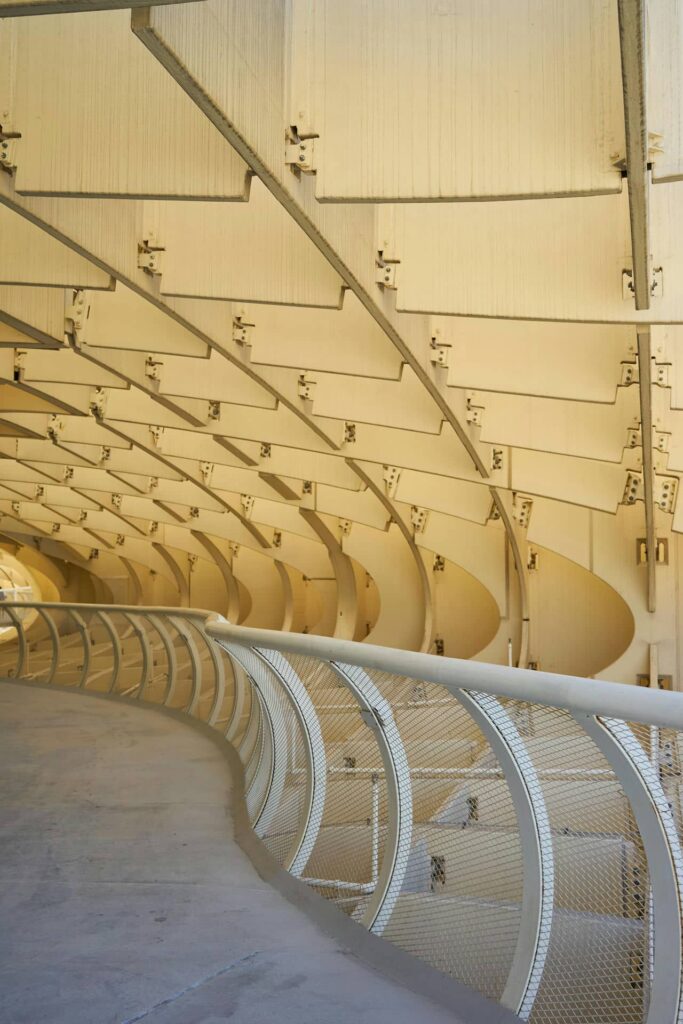
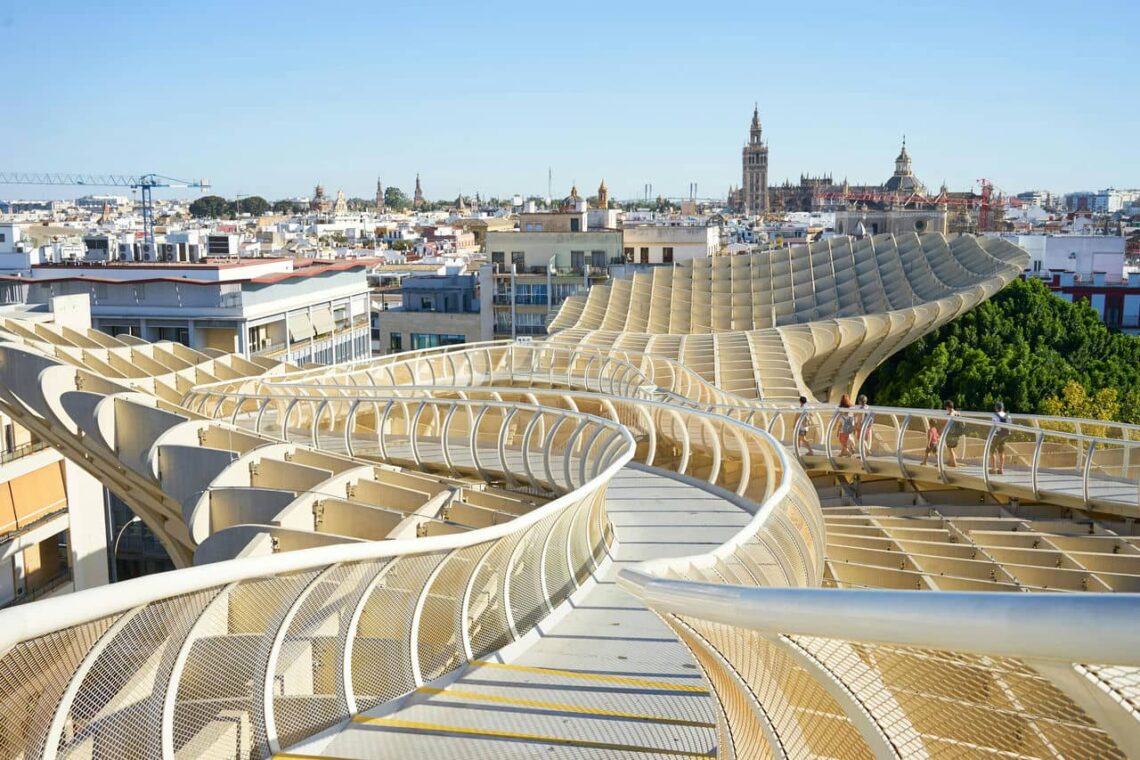
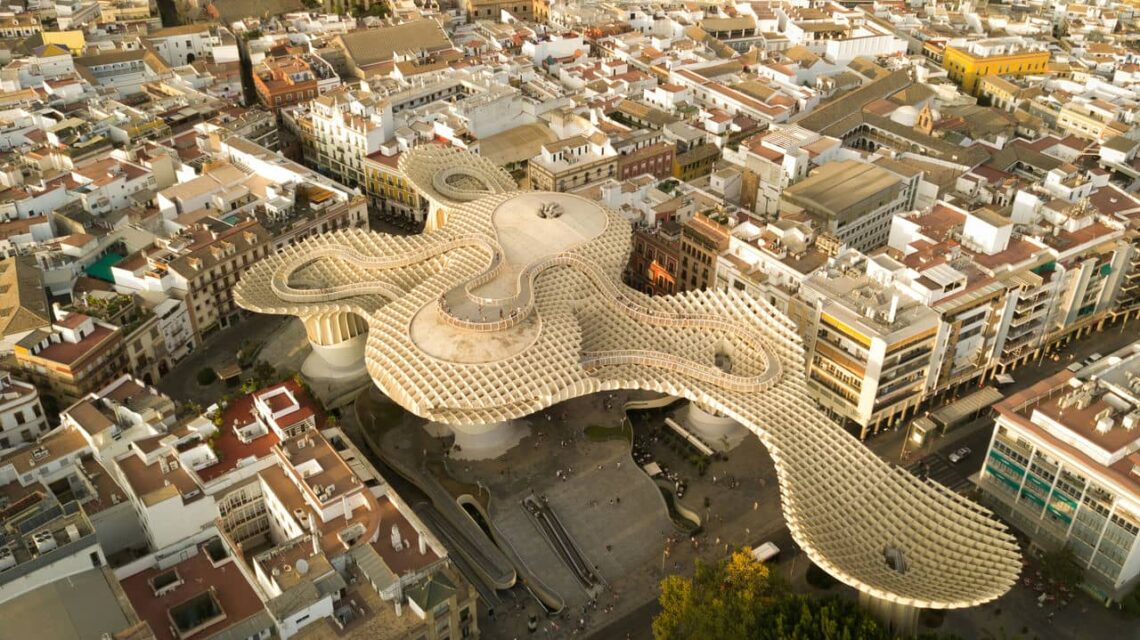
The Setas de Sevilla represents a contemporary architectural trend that combines organic forms, innovative materials, and urban regeneration. The structure is inspired by the vaults of the Cathedral of Seville and the ficus trees in the nearby Plaza de Cristo de Burgos. It also resembles a giant pergola or a cluster of mushrooms, hence its nickname. The Setas de Sevilla aims to create a new icon for the city and a new public space for its citizens and visitors. The Setas de Sevilla reflects the historical design influences of Seville, a city shaped by various cultures and civilizations over the centuries. The structure incorporates Roman, Moorish, Gothic, Renaissance, Baroque, and Modernist styles and references local traditions and crafts. The wooden parasols echo the arches and domes of Islamic architecture, while the hexagonal tiles that cover the surface evoke the azulejos, which are glazed ceramic tiles that decorate many buildings in Seville.
The Setas de Sevilla uses lighting and shading techniques to enhance its aesthetic and functional qualities. The structure provides shade and ventilation for the plaza below, creating a comfortable microclimate for the activities in the area. The structure also features a dynamic lighting system that changes colors and patterns according to the time of day and the season. The lighting system contrasts the warm wood and the cool metal, highlighting the structure’s curves and angles. The lighting system also creates a visual dialogue with the surrounding monuments, such as the Giralda Tower and the Metropolitano building.
50. The Basilica of the Sacred Heart of Paris
The Basilica of the Sacred Heart of Paris also simply known as Sacré-Coeur is a Roman Catholic church and minor basilica dedicated to the Sacred Heart of Jesus. It was formally approved as a national historic monument by the National Commission of Patrimony and Architecture on December 8, 2022. The Basilica of the Sacred Heart of Paris is located at the summit of Montmartre’s butte, the city’s highest point. It overlooks the entire city of Paris and its suburbs. It is the capital’s second most popular tourist destination after the Eiffel Tower. The Basilica of the Sacred Heart of Paris was built between 1875 and 1914 and consecrated in 1919 after World War I. It was proposed by Bishop Felix Fournier in 1870 following the defeat of France and the Prussians’ capture of Emperor Napoleon III in the Franco-Prussian War. He attributed France’s defeat to the country’s moral decline since the French Revolution and proposed a new Parisian church dedicated to the Sacred Heart of Jesus. The basilica was designed by Paul Abadie, whose Neo-Byzantine-Romanesque plan was selected from among seventy-seven proposals.
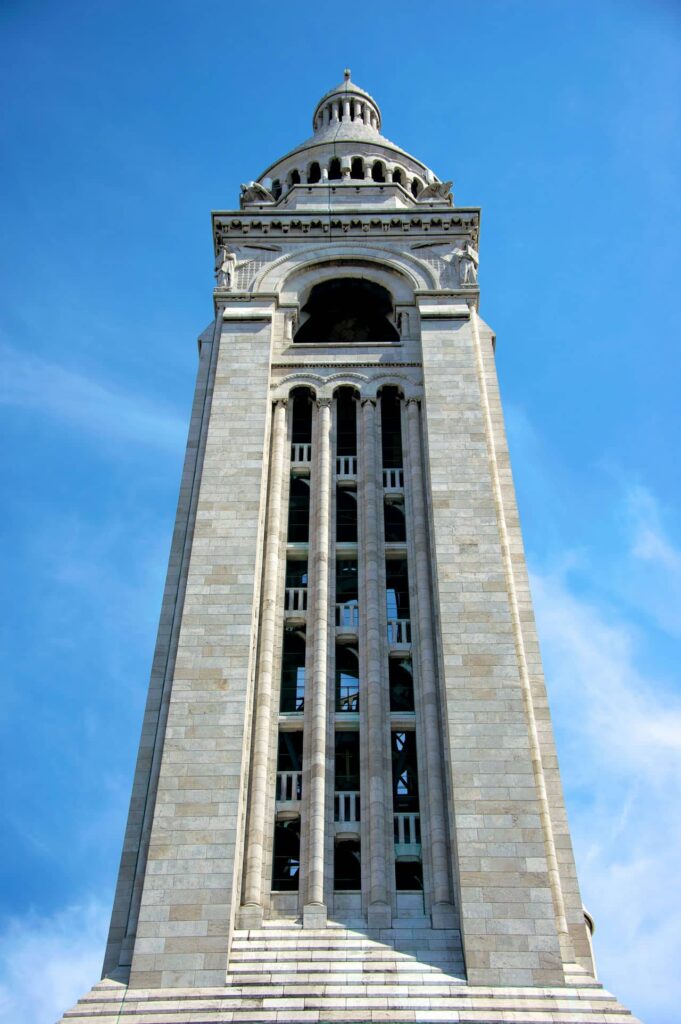
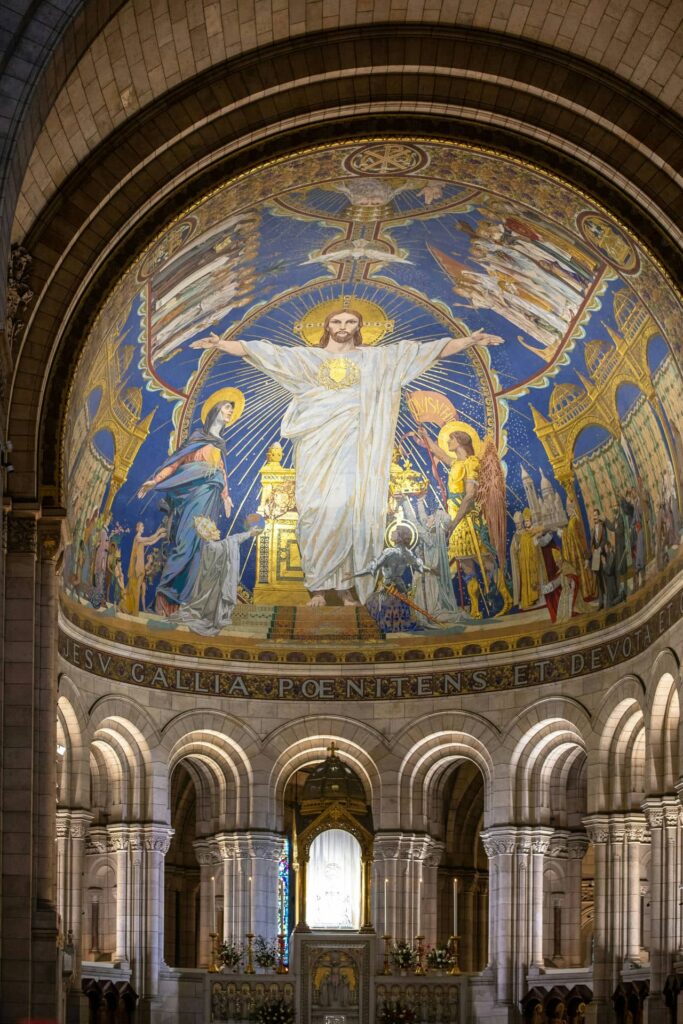
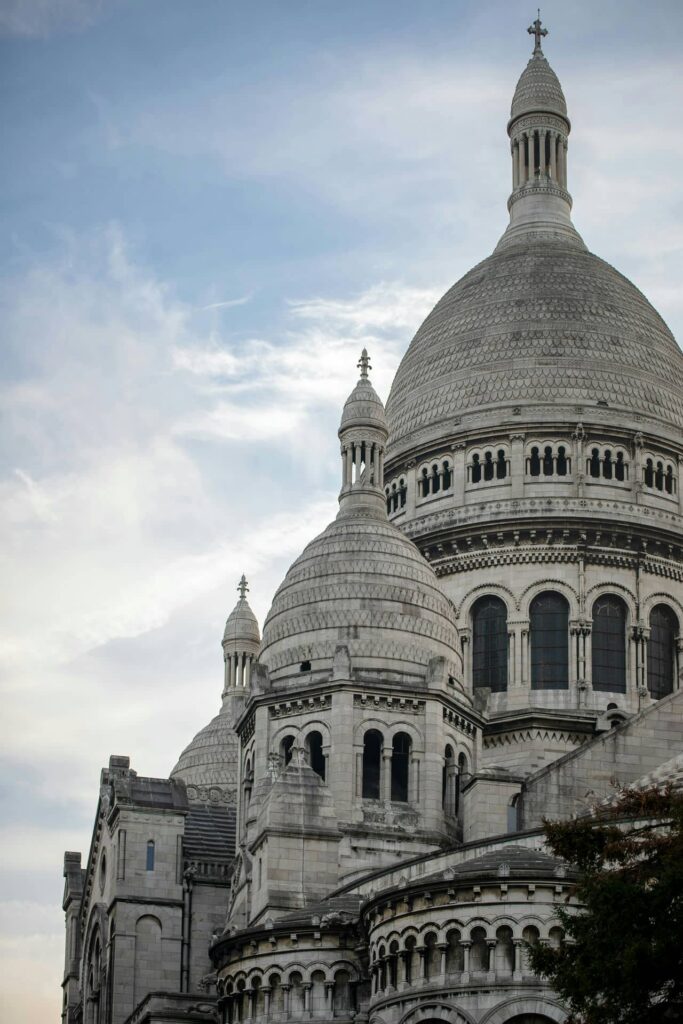
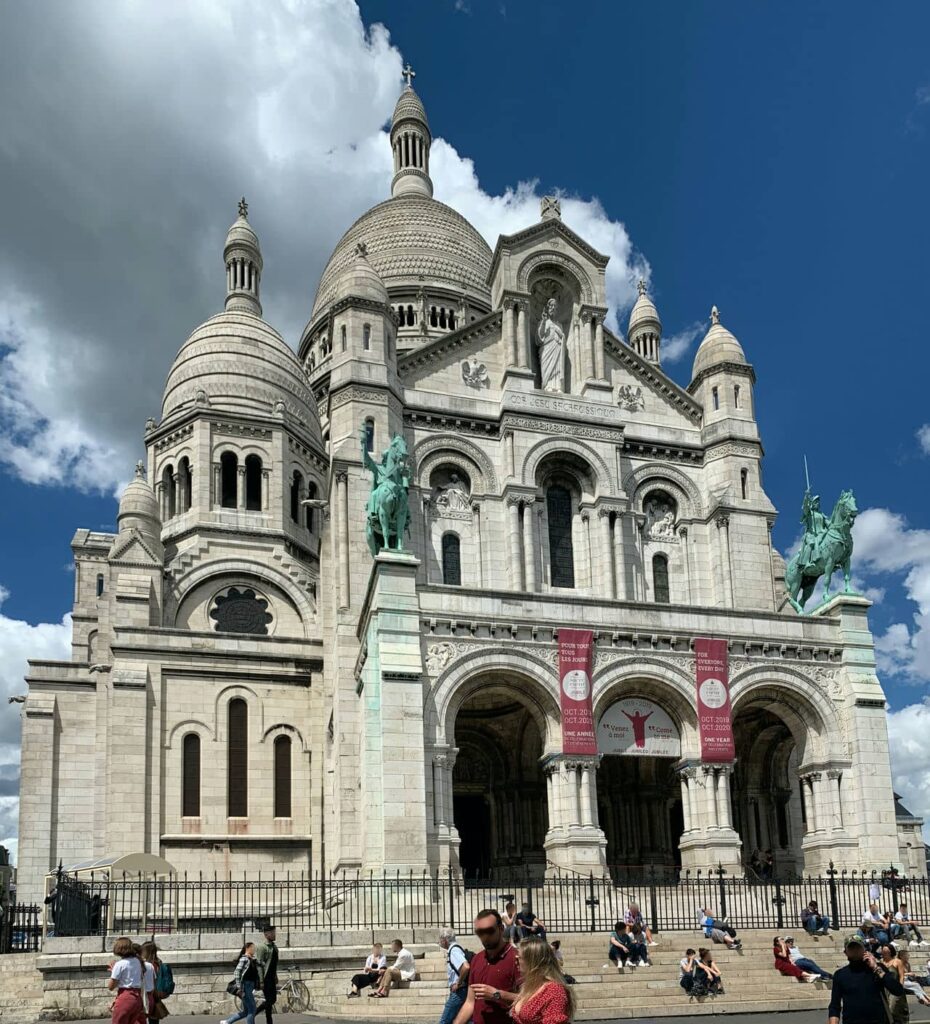
The Basilica of the Sacred Heart of Paris or the Sacré-Coeur represents the Neo-Byzantine-Romanesque architectural style, combining Byzantine and Romanesque architectural elements. The Neo-Byzantine-Romanesque style was popular in the late 19th and early 20th centuries, especially for religious buildings. It features domes, arches, columns, mosaics, and rich ornamentation. The Basilica of the Sacred Heart of Paris is influenced by various historical and cultural sources. The basilica’s design was inspired by the Hagia Sophia in Istanbul, the Saint-Front Cathedral in Périgueux, and the Pantheon in Rome. The basilica’s location on the butte of Montmartre is traditionally associated with the martyrdom of Saint-Denis, the patron saint of Paris. The basilica’s white color is due to the use of travertine stone, which exudes calcite and ensures the whiteness of the building. The basilica’s interior is decorated with mosaics, sculptures, paintings, and stained glass windows that depict scenes from the Bible and the history of France.
The Basilica of the Sacred Heart of Paris uses various lighting and shading techniques to create a harmonious and luminous atmosphere. The basilica’s exterior is illuminated by natural light, which reflects off the white stone and the golden dome. The basilica’s interior is lit by artificial light, which enhances the colors and details of the mosaics and the artworks. The basilica’s dome has a lantern that allows light to enter from above. The basilica’s apse has a large window that offers a panoramic view of the city. The basilica’s nave has a series of windows that contrast light and shadow.
51. Cathedral of Brasília
The Cathedral of Brasília is the Roman Catholic cathedral serving Brasília, Brazil, and the seat of the Archdiocese of Brasília. The hyperboloid structure is constructed from 16 concrete columns weighing 90 tons each. It has a stained glass ceiling, a bell tower, a baptistery, and four bronze sculptures representing the four Evangelists. The Cathedral of Brasília is located in Brasília, the capital city of Brazil. It is situated in the Eixo Monumental, the central axis of the town, near the National Congress and the Three Powers Plaza. It is one of the main attractions and landmarks of Brasília. The Cathedral of Brasília was designed by Brazilian architect Oscar Niemeyer and engineered by Brazilian structural engineer Joaquim Cardozo. The cornerstone for the cathedral was laid in September 1958, but the construction was delayed due to political and financial reasons. The cathedral was consecrated in 1968, without a roof, and opened to the public in 1970.
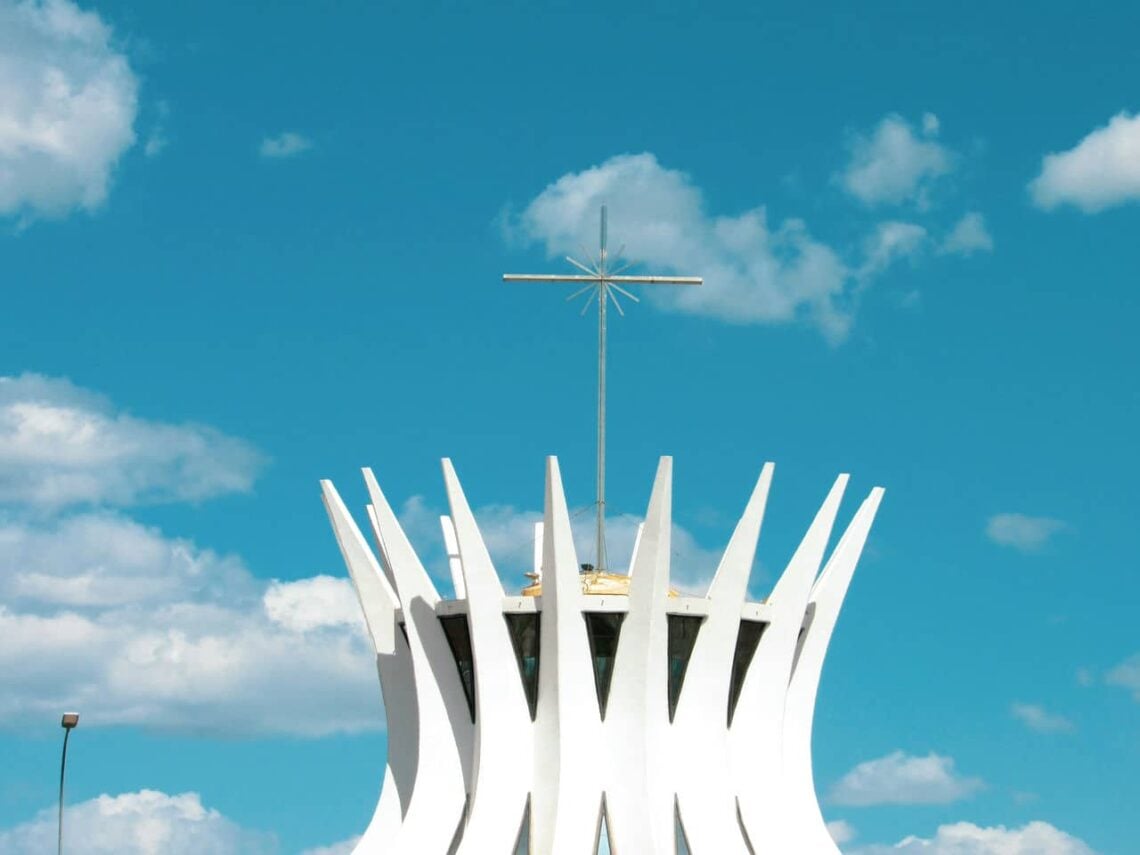
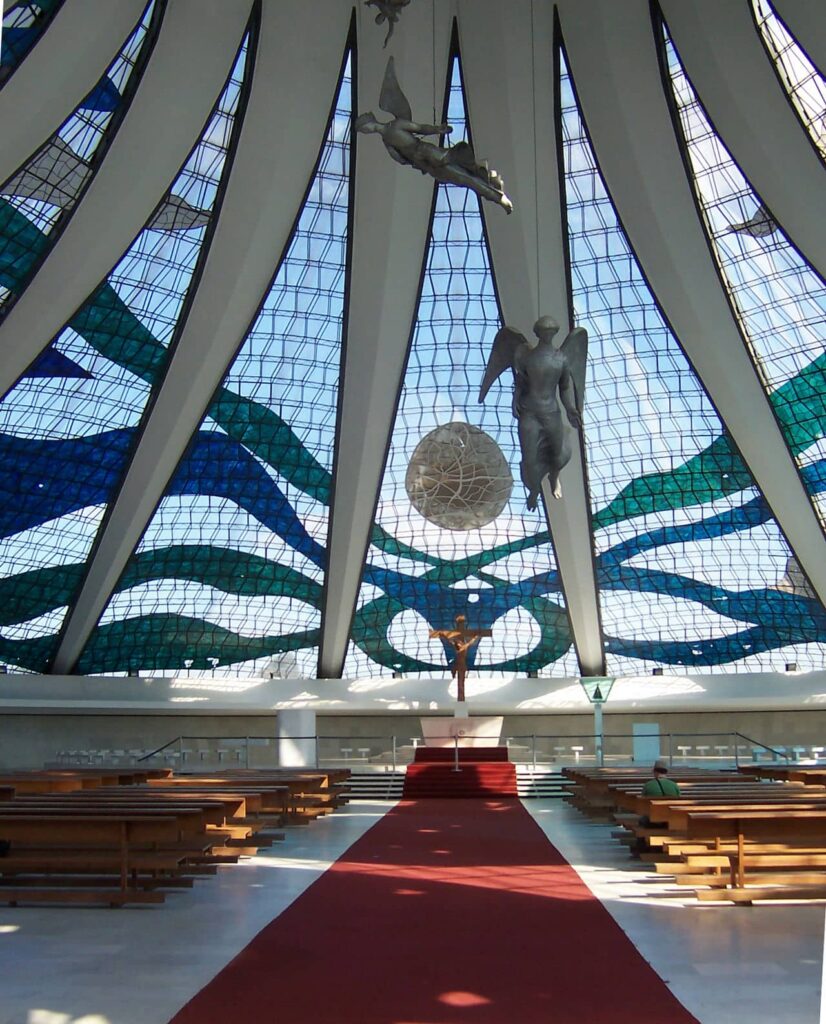
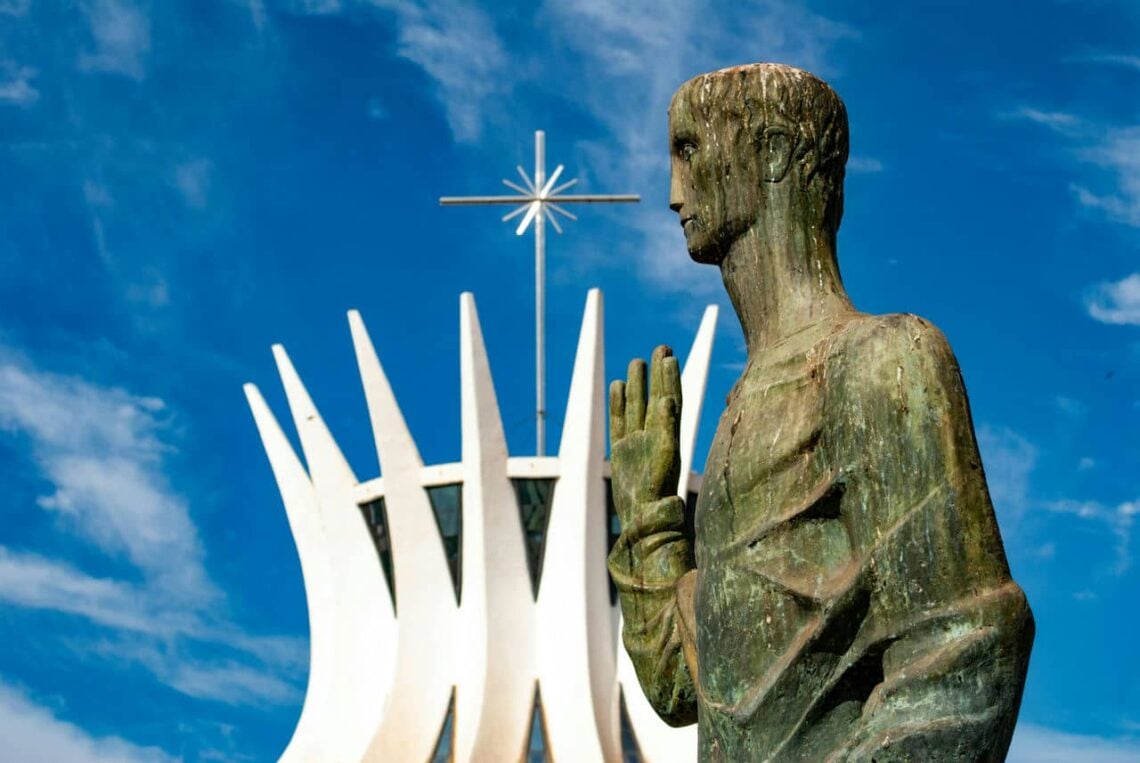
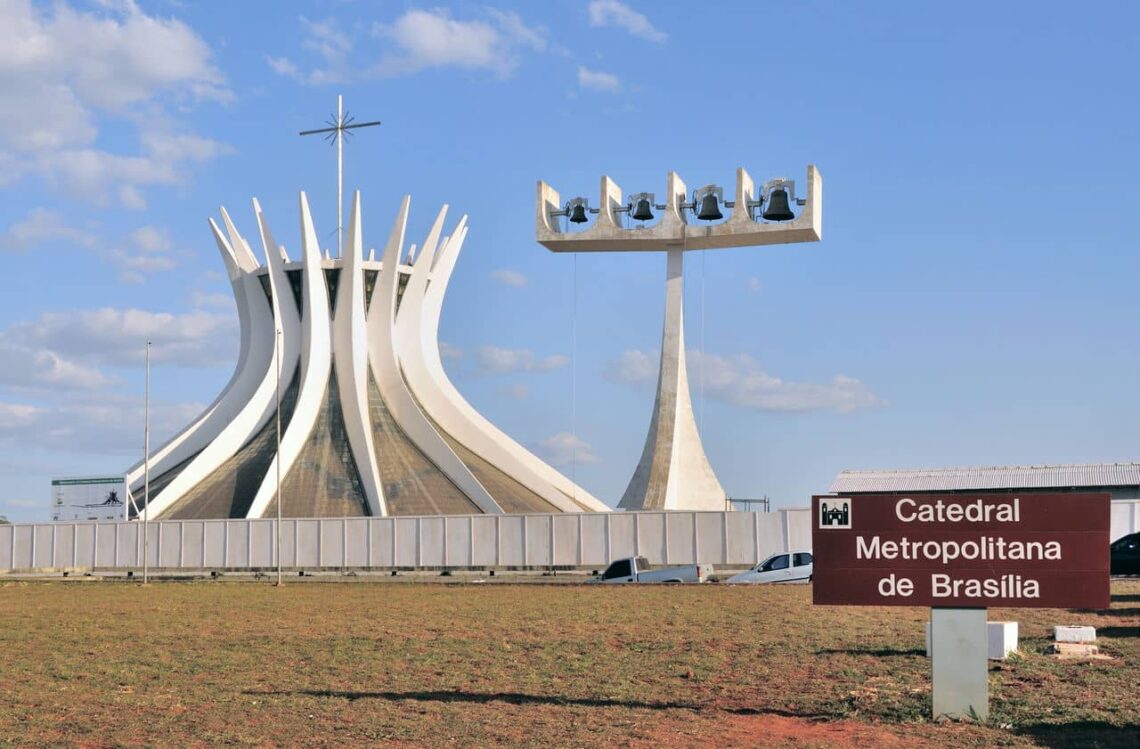
The Cathedral of Brasília represents the modernist architectural trend or movement that emerged in the 20th century. Modernist architecture is characterized by the use of new materials, technologies, and forms and the rejection of historical styles and ornamentation. The Cathedral of Brasília is an example of modernist architecture because it uses concrete, steel, and glass to create a unique and innovative shape that expresses the spirit of the new capital city. The historical design influences in the Cathedral of Brasília are mainly from the Gothic and Baroque periods. The Gothic influence can be seen in the verticality, the pointed arches, and the cathedral’s stained glass windows. The Baroque influence can be seen in the curves, the dynamism, and the symbolism of the cathedral. Niemeyer was inspired by the Gothic and Baroque styles, but he also added his personal touch and creativity to the design.
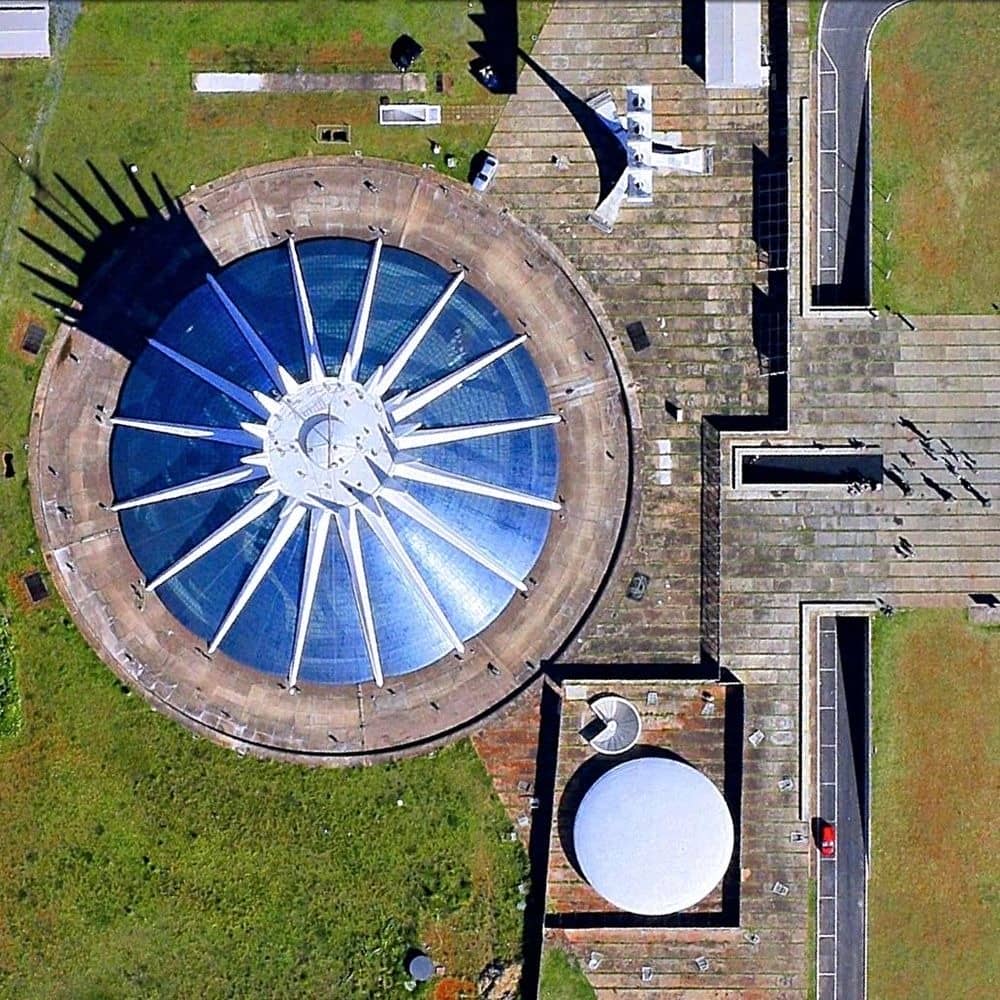
The lighting and shading techniques in the Cathedral of Brasília are based on the contrast between light and dark and the reflection and refraction of light. The cathedral has a dark tunnel at the entrance, which creates a dramatic effect when the visitors emerge into the bright space with a glass roof. The glass roof comprises 16 pieces of fiberglass, each 33 feet (10 meters) wide at the base and 98 feet (30 meters) long, inserted between the concrete pillars. The stained glass work, created by Marianne Peretti, is in shades of blue, green, white, and brown, creating a colorful and luminous atmosphere inside the cathedral. The reflecting pool surrounding the cathedral roof helps to cool the cathedral and also reflects the cathedral’s light and shape.
52. Frauenkirche Dresden
The Frauenkirche Dresden is a Lutheran church that was destroyed during the Allied bombing of Dresden in World War II and reconstructed between 1994 and 2005. It is also known as the Church of Our Lady and is dedicated to the Virgin Mary. It symbolizes peace and reconciliation and is a prominent landmark of Dresden’s skyline. The Frauenkirche Dresden is located in the center of Dresden, the capital of the German state of Saxony. It stands on the Neumarkt square, surrounded by several baroque buildings rebuilt after the war. The church is open to visitors and offers various services, concerts, exhibitions, and events. The Frauenkirche Dresden was built between 1726 and 1743 by the architect George Bähr. He designed the church in a baroque style, with a large dome that the Hagia Sophia inspired in Istanbul. The church replaced an older Romanesque church that had been the seat of an archpriest in the Meissen Diocese until the Reformation.
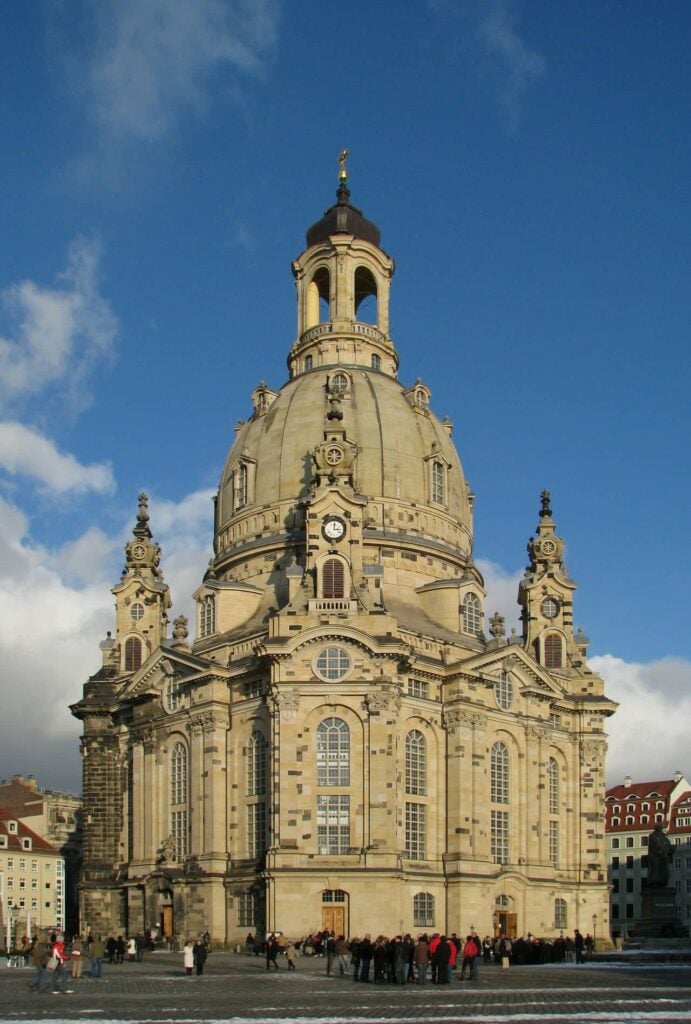
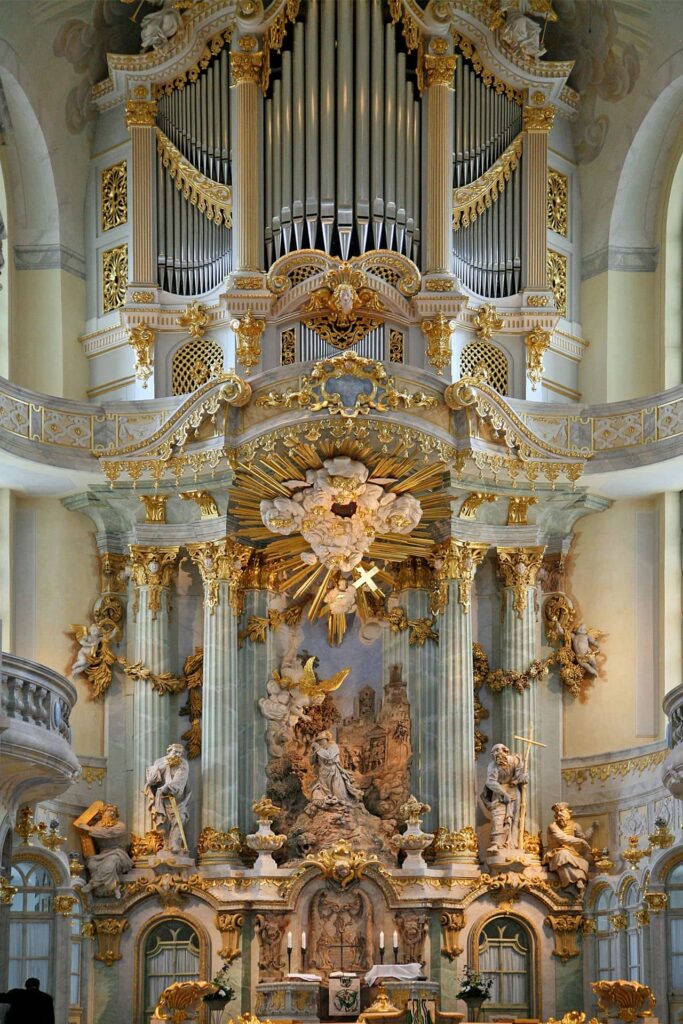
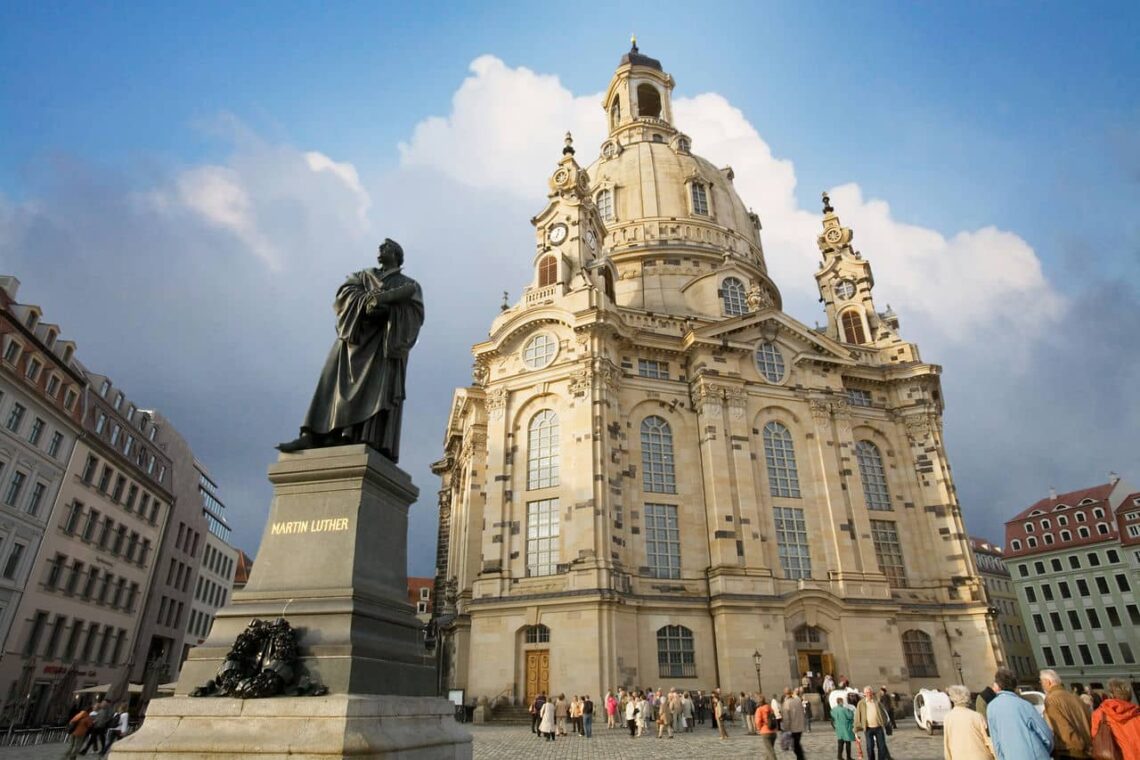
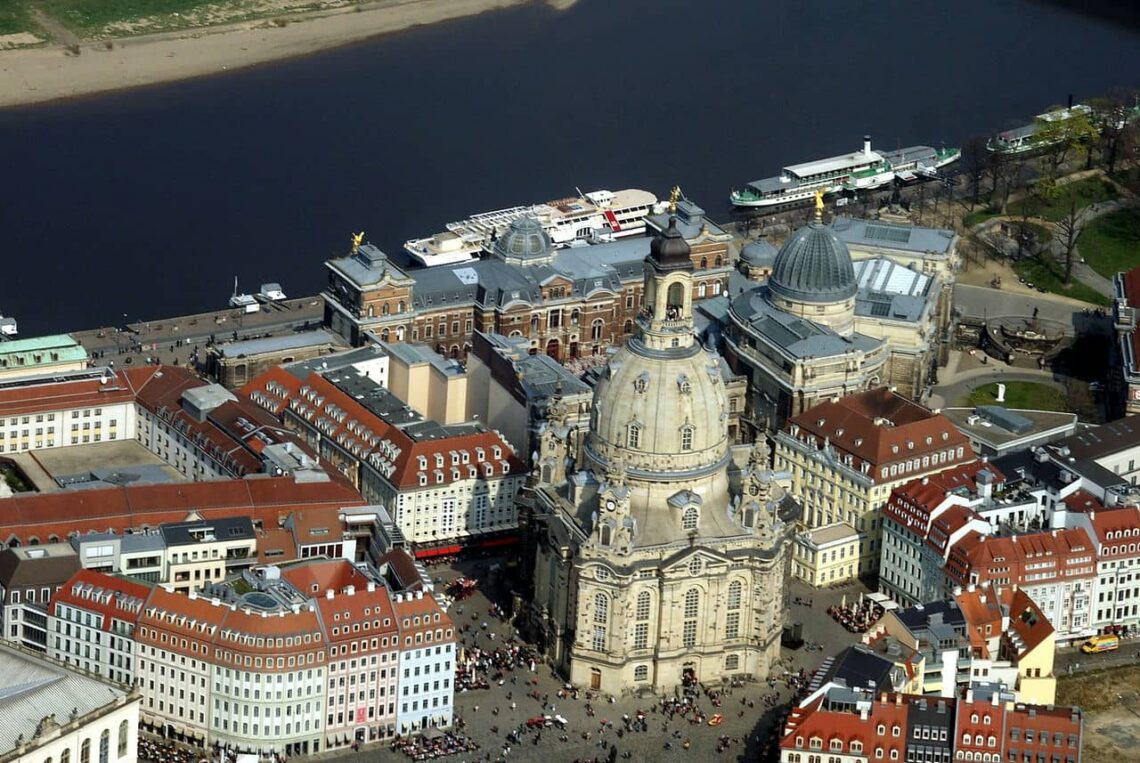
The Frauenkirche Dresden represents the Protestant sacred architecture of the 18th century. It was built as a sign of the citizens’ will to remain Protestant after their ruler had converted to Catholicism to become the king of Poland. It also reflects Dresden’s artistic and cultural flourishing under the patronage of Augustus the Strong and his son, Augustus III. The Frauenkirche Dresden shows the historical influences of various European styles and regions on its design and decoration. The church’s exterior is influenced by the Italian and French baroque, while the interior is more influenced by the German and Austrian baroque. The dome is influenced by Byzantine and Ottoman architecture, while the Flemish and Dutch paintings influence the altar.
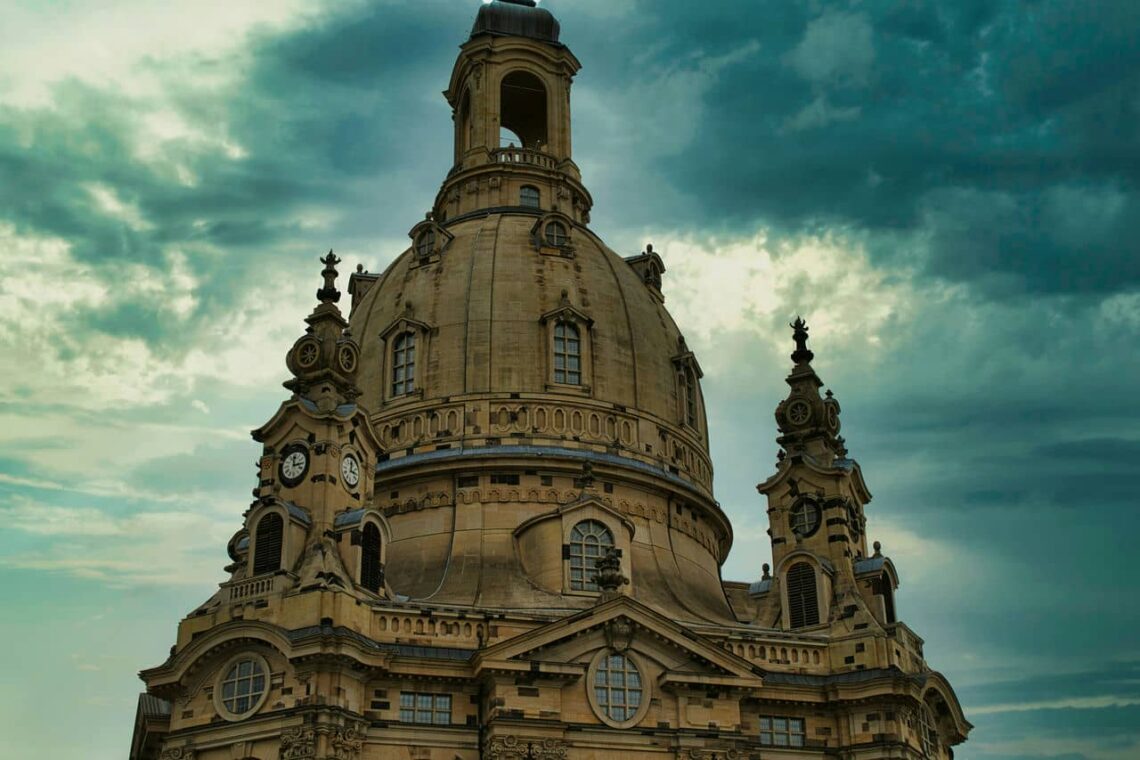
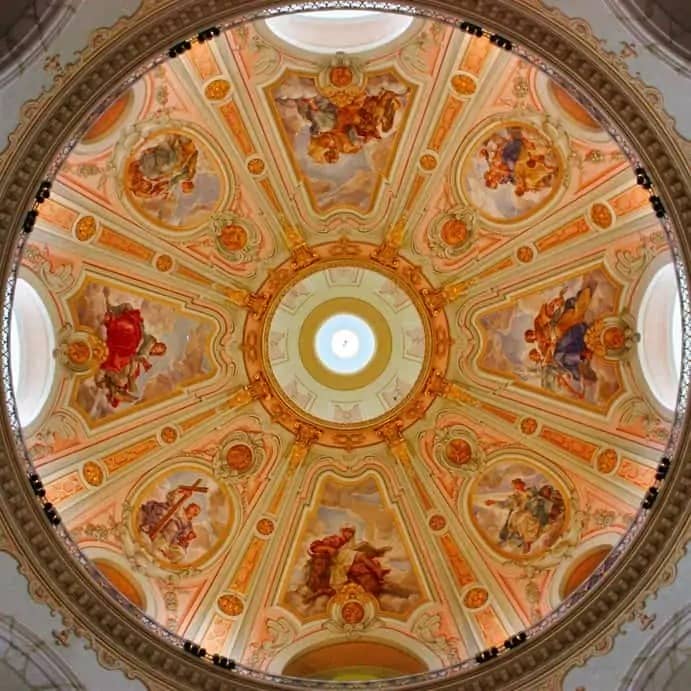
The Frauenkirche Dresden uses natural and artificial lighting and shading techniques to create a harmonious and expressive atmosphere in the church. The windows are arranged in a way that allows the sunlight to enter the church at different angles and times of the day, creating a dynamic and changing effect. The artificial lighting is designed to complement the natural lighting and highlight the architectural and artistic features of the church. The shading is achieved using different colors and materials, such as sandstone, marble, stucco, and gold, that contrast or blend.
53. Mosque-Cathedral of Córdoba
The Mosque-Cathedral of Córdoba is a religious building that was originally a mosque and later converted into a cathedral. It is one of the most important monuments of Islamic architecture and a UNESCO World Heritage Site. The Mosque-Cathedral of Córdoba is located in the city of Córdoba, in the region of Andalusia, in southern Spain. It is situated in the historic center of the town, near the Roman bridge over the Guadalquivir River. The Mosque-Cathedral of Córdoba was built in several stages between the 8th and the 16th centuries. The Umayyad ruler Abd al-Rahman I created the first structure in 784-786 on the site of a former Visigothic church. His successors expanded and embellished the mosque, especially Abd al-Rahman III and al-Hakam II, who added the minaret and the mihrab. The mosque was converted into a cathedral in 1236 after the Christian conquest of Córdoba by King Ferdinand III of Castile. A Renaissance nave and transept were inserted into the center of the building in the 16th century, by order of Emperor Charles V.
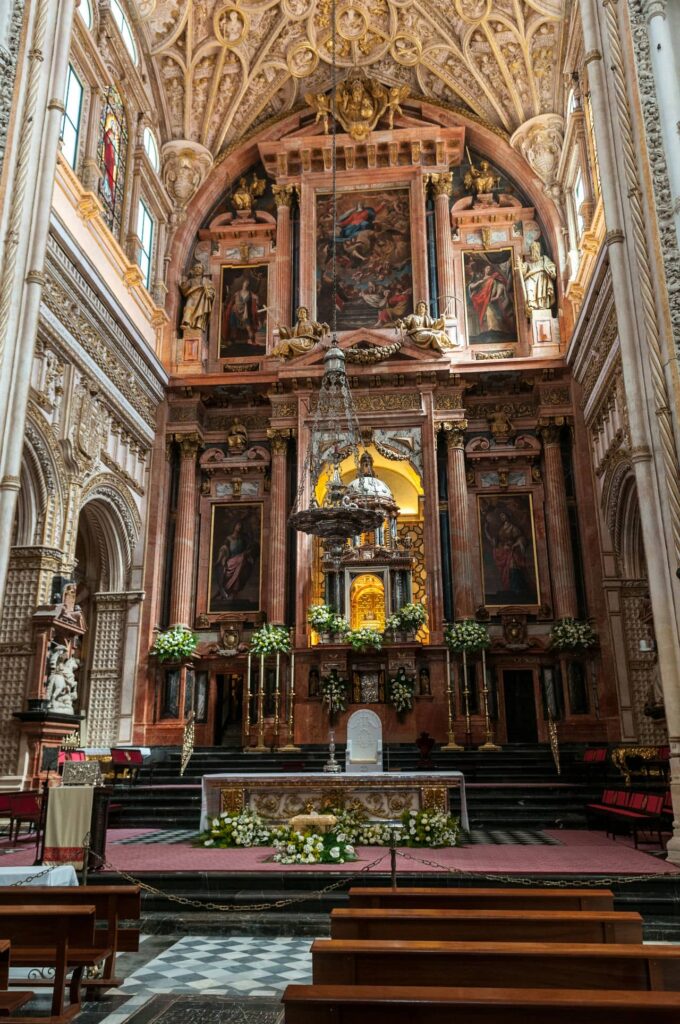
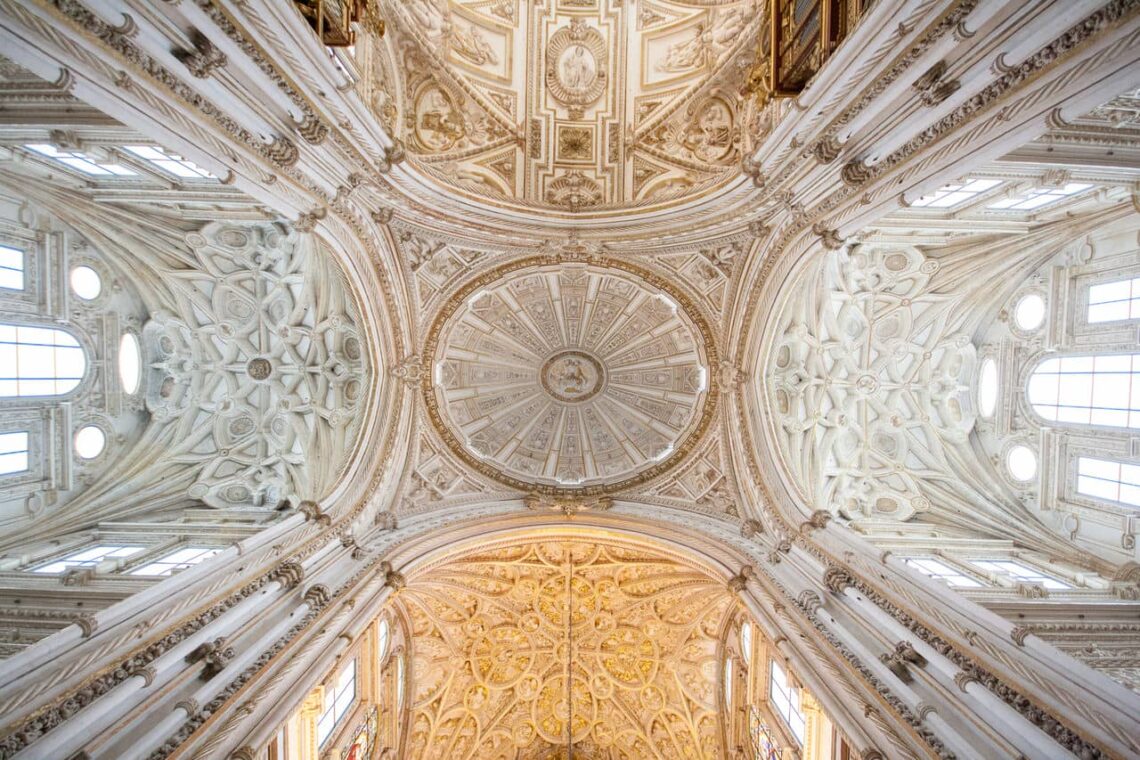
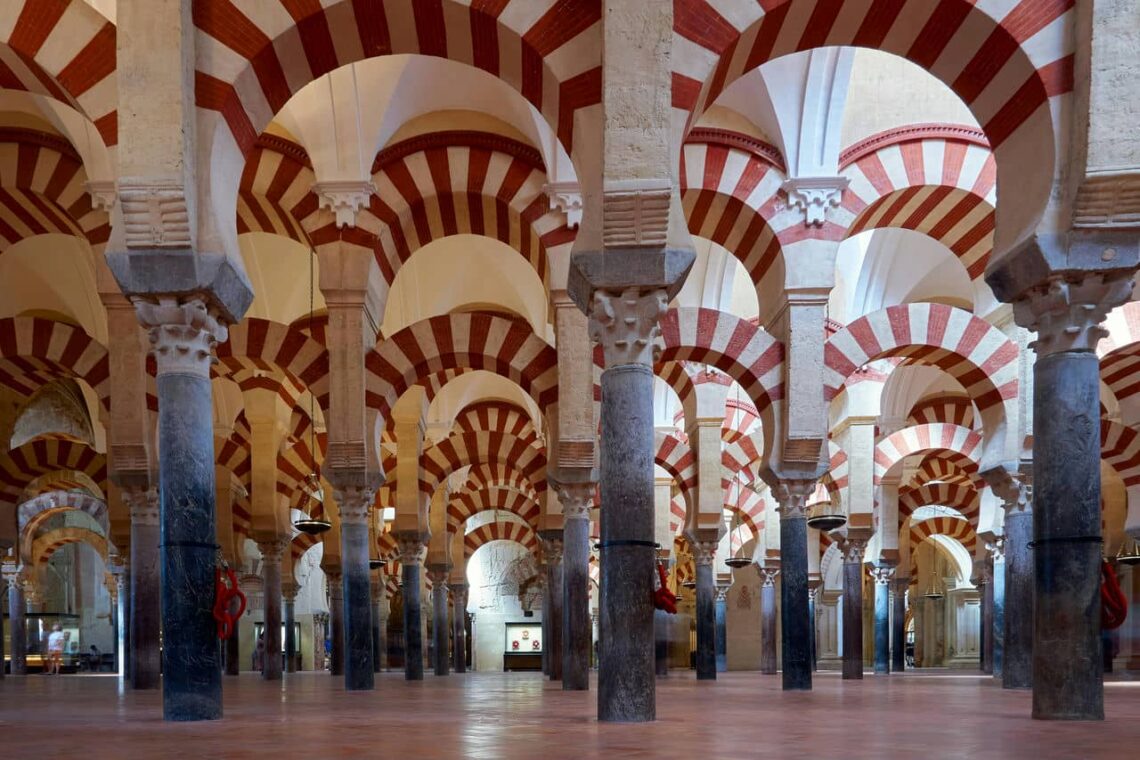
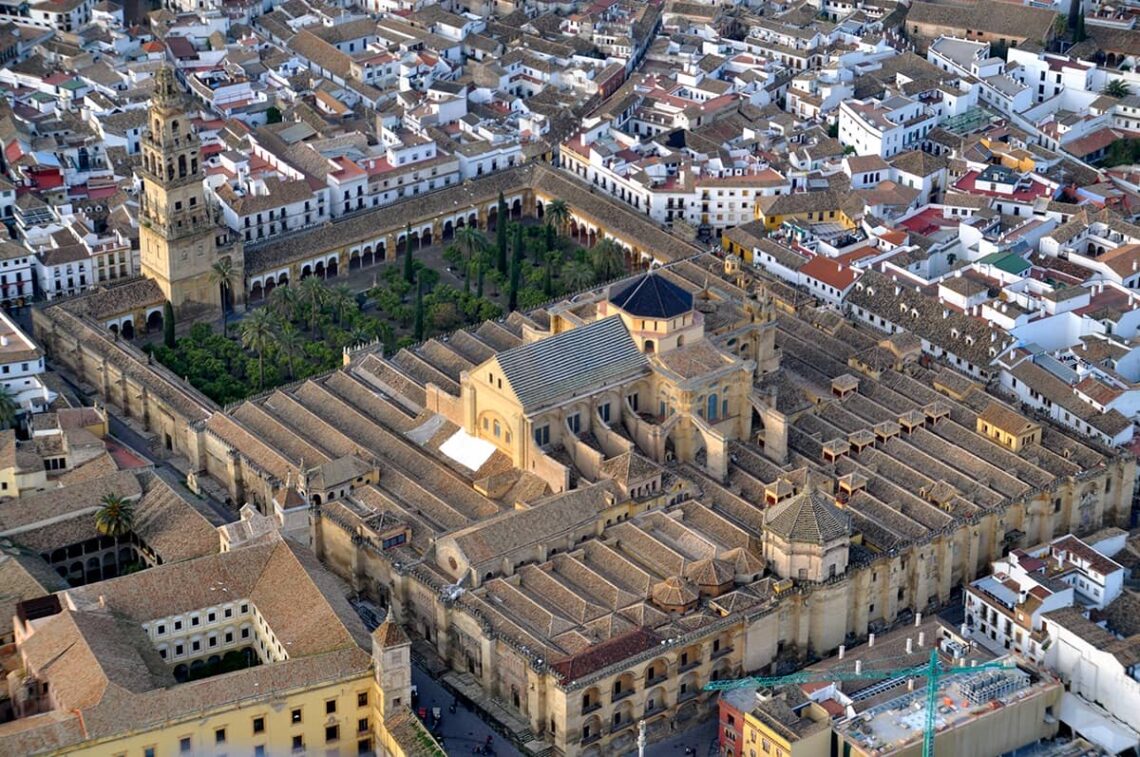
The Mosque-Cathedral of Córdoba represents the architectural trend or movement of Moorish or Andalusian art, a fusion of Islamic, Christian, and Jewish influences. It reflects the cultural diversity and tolerance of medieval Córdoba, a center of learning and civilization under the Umayyad dynasty. The historical design influences visible in the Mosque-Cathedral of Córdoba are mainly from the Byzantine, Roman, Visigothic, and Islamic traditions. The mosque features a hypostyle hall with over 850 columns, some reused from Roman and Visigothic buildings. The arches are decorated with alternating red and white voussoirs, creating a striking visual effect. The mihrab is a masterpiece of Islamic art, with intricate geometric and floral patterns and a dome of interlocking ribs. The cathedral incorporates Gothic, Renaissance, and Baroque elements, such as vaults, chapels, and altars.
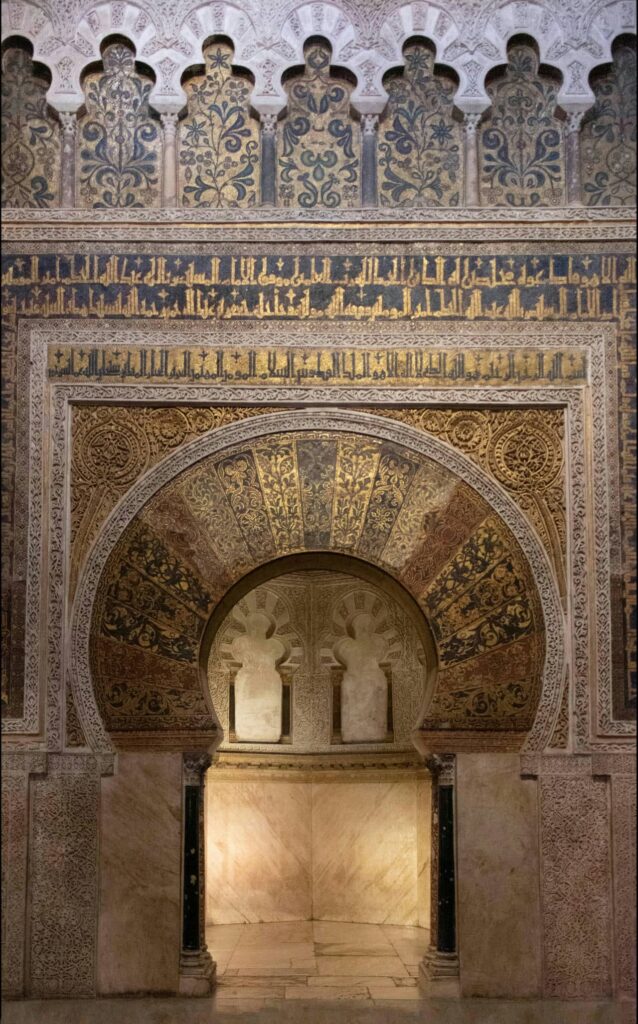
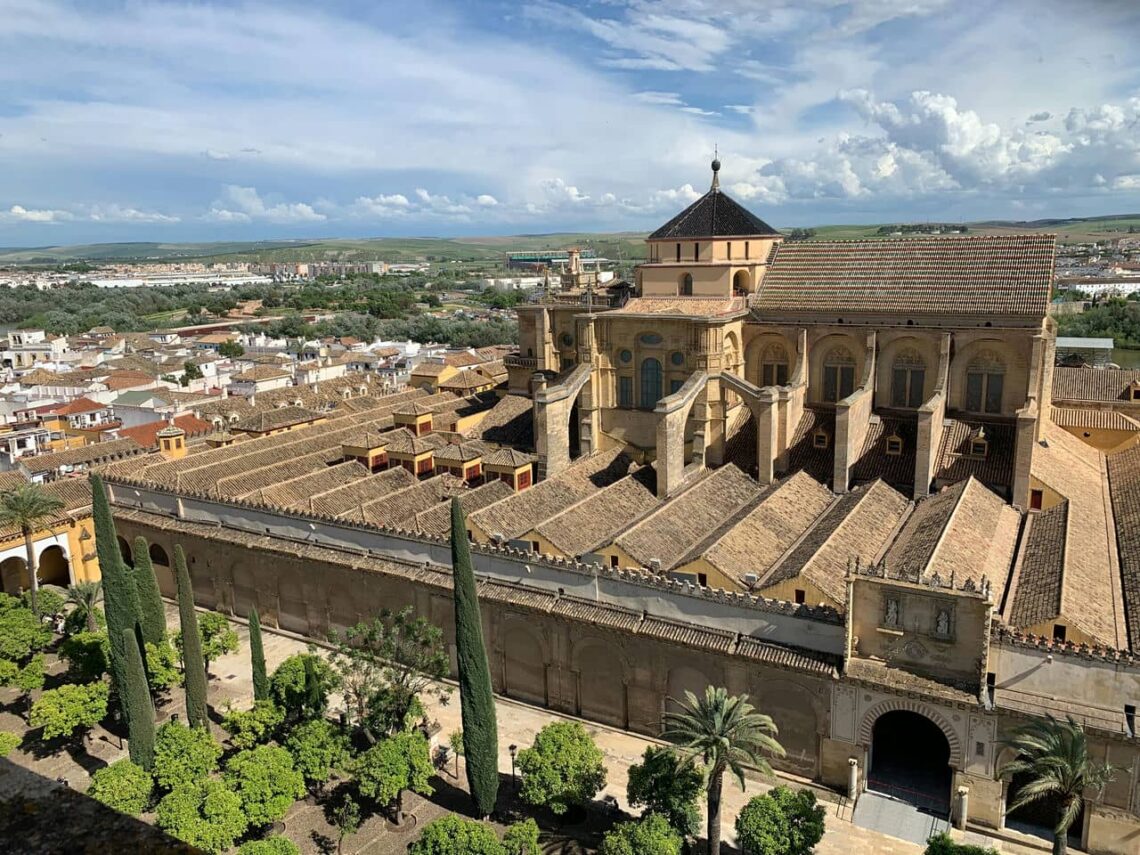
The lighting and shading techniques in the Mosque-Cathedral of Córdoba are designed to create a sense of harmony and spirituality. The mosque uses natural light from windows and skylights and artificial light from lamps and candles. The arches and the forest of columns filter and diffuse the light, creating a soft and serene atmosphere. The cathedral uses more direct and dramatic light from stained glass windows, chandeliers, and shadows from the sculptural elements, creating a contrast and a hierarchy of spaces.
54. Musée d’Orsay
The Musée d’Orsay is a museum that displays mainly French art from 1848 to 1914, including paintings, sculptures, furniture, and photography. It has the world’s largest collection of Impressionist and post-Impressionist masterpieces by artists such as Monet, Manet, Degas, Renoir, Cézanne, Seurat, Sisley, Gauguin, and van Gogh. The Musée d’Orsay is located on the Left Bank of the Seine River, opposite the Tuileries Gardens. It is housed in the former Gare d’Orsay, a Beaux-Arts railway station built between 1898 and 1900 for the 1900 Exposition Universelle. The Musée d’Orsay was constructed by three architects: Lucien Magne, Émile Bénard, and Victor Laloux. They designed the station in a Beaux-Arts style, with a classical facade, a large glass roof, and ornamental sculptures. The station was inaugurated in July 1900 and served as the terminus for the railways of southwestern France until 1939.
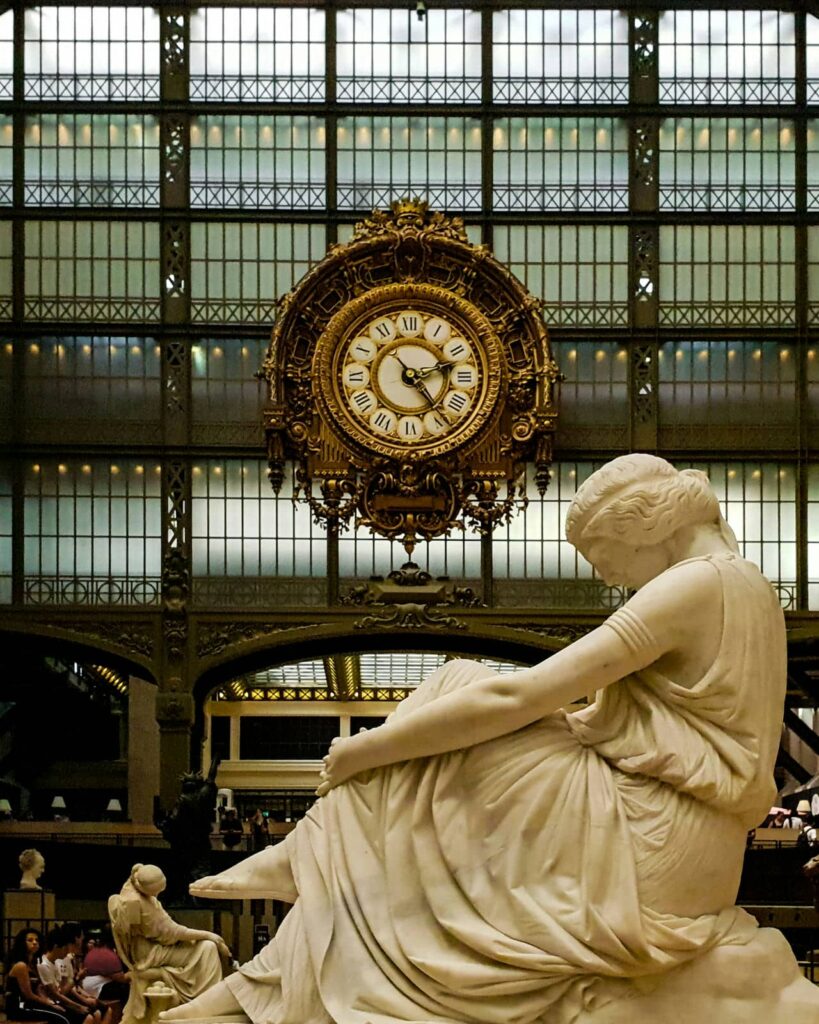
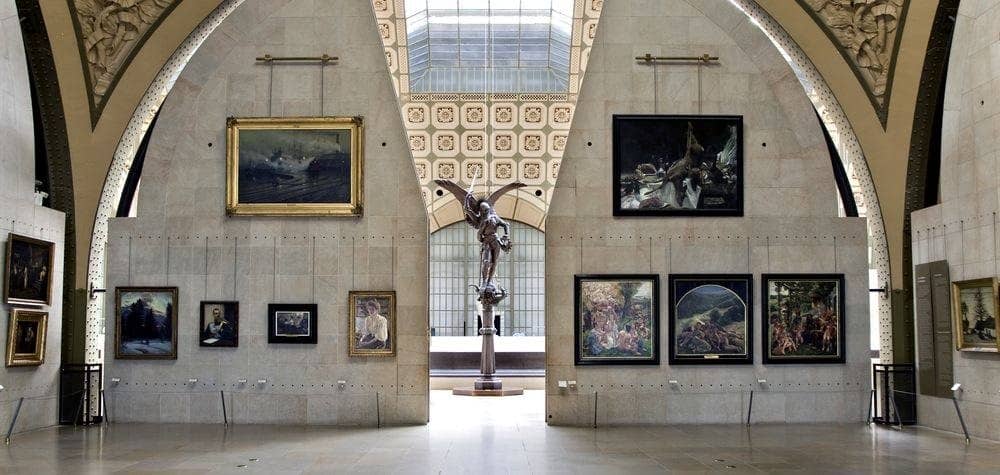
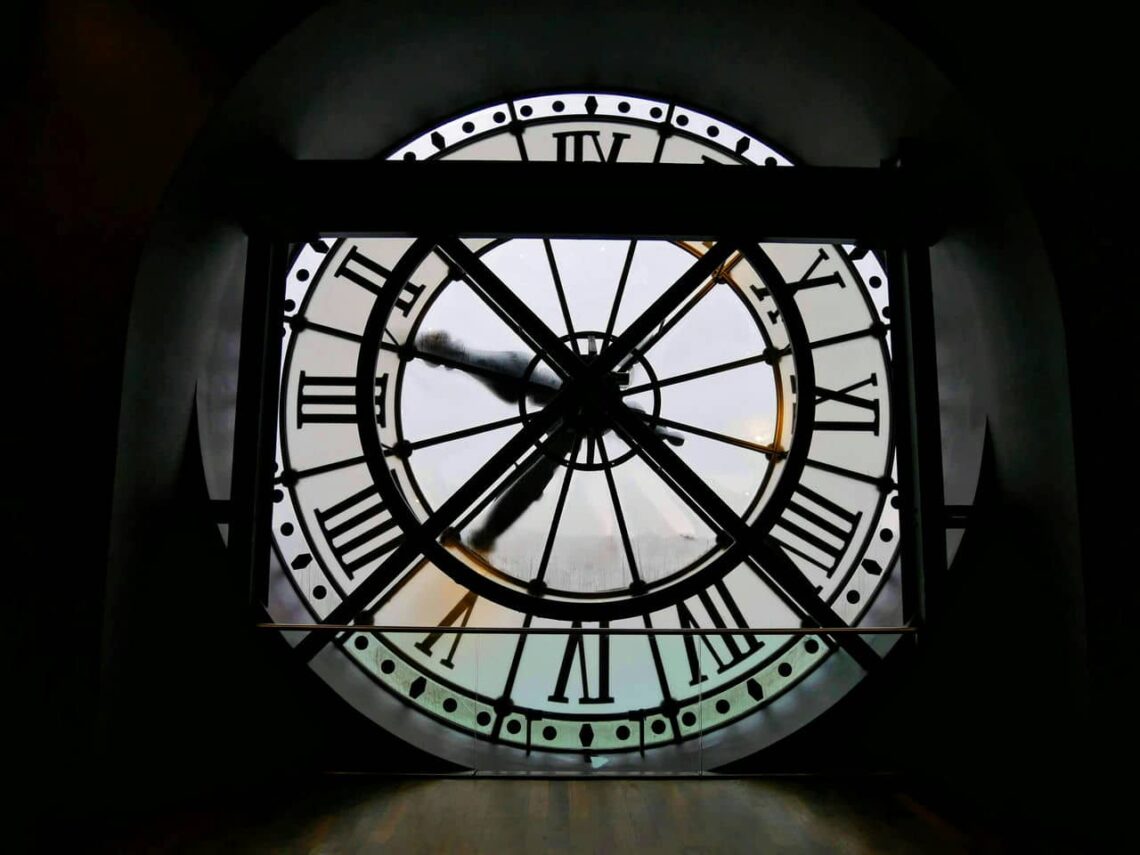
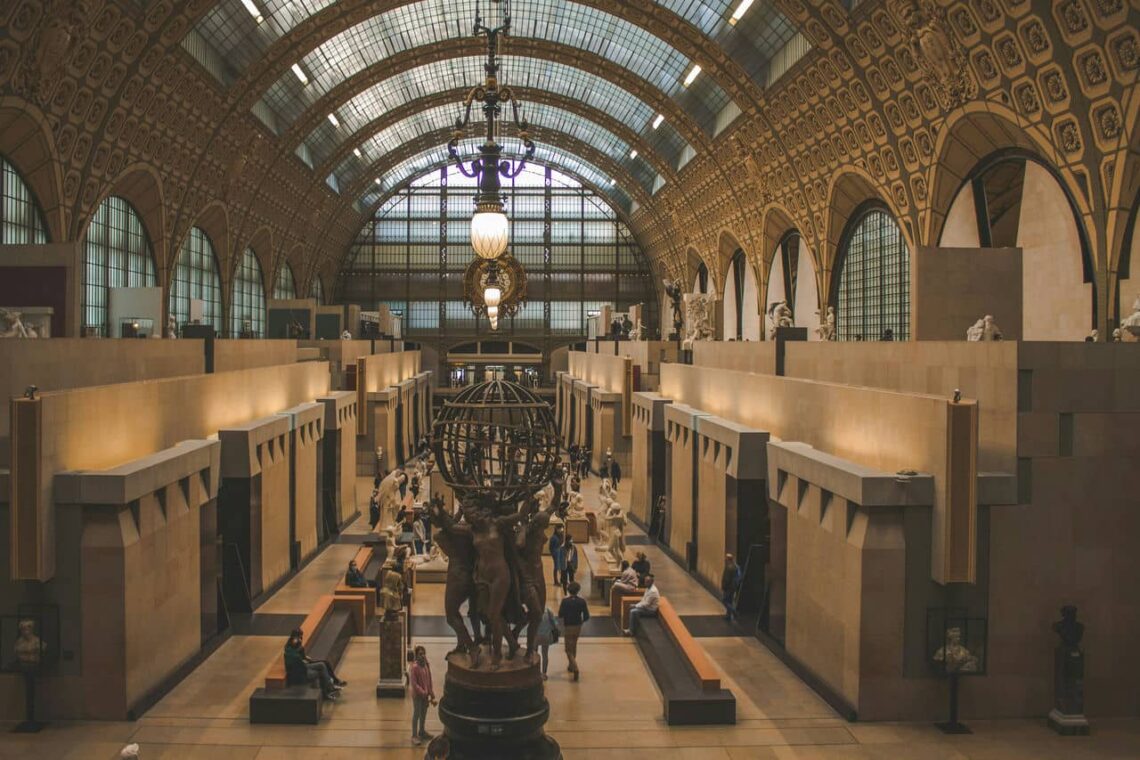
The Musée d’Orsay represents the architectural trend of historicism, which sought to revive and reinterpret the styles of the past. The Louvre and the Palais de Justice inspired the station’s facade, while the interior combined elements of metal, glass, and stone. The station was considered an anachronism at the time, as it masked the modern technology of the trains with a traditional appearance. The Musée d’Orsay shows the historical design influences of the 19th and early 20th centuries, such as Romanticism, Realism, Impressionism, Symbolism, Art Nouveau, and Art Deco. The museum’s collections reflect the period’s social, political, and cultural changes, as well as the artistic innovations and movements that emerged. The museum also displays the works of foreign artists who influenced or were influenced by French art, such as Whistler, Klimt, Munch, and Rodin. The Musée d’Orsay uses natural and artificial lighting techniques to enhance the artworks and the architecture. The glass roof allows natural light to enter the main hall, creating a spacious and luminous atmosphere. The artificial lighting is designed to highlight the colors and textures of the paintings and sculptures and create contrasts and shadows. The museum also uses skylights, windows, and lamps to create different effects and moods in the galleries.
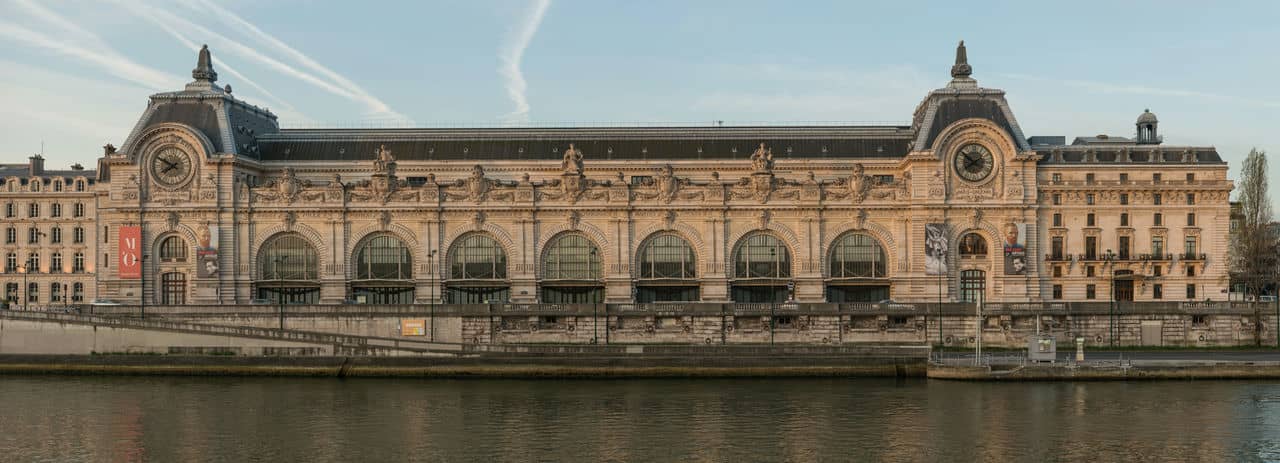
55. Lloyd’s Building
The Lloyd’s Building is the home of the insurance institution Lloyd’s of London, which deals with international insurance cases. The building is a leading example of radical Bowellism architecture, in which the services for the building, such as ducts and lifts, are located on the exterior to maximize space in the interior. The Lloyd’s Building is located on the former site of East India House on Lime Street, in London’s main financial district, the City of London. The building is next to the Willis Building, another skyscraper designed by Richard Rogers. The Lloyd’s Building was designed by the architect firm Richard Rogers & Partners and built between 1978 and 1986. It replaced the original Lloyd’s building built on this site in 1928 with the design of Sir Edwin Cooper. The 1928 building’s entrance was preserved, forming a rather incongruous attachment to the 1986 structure.
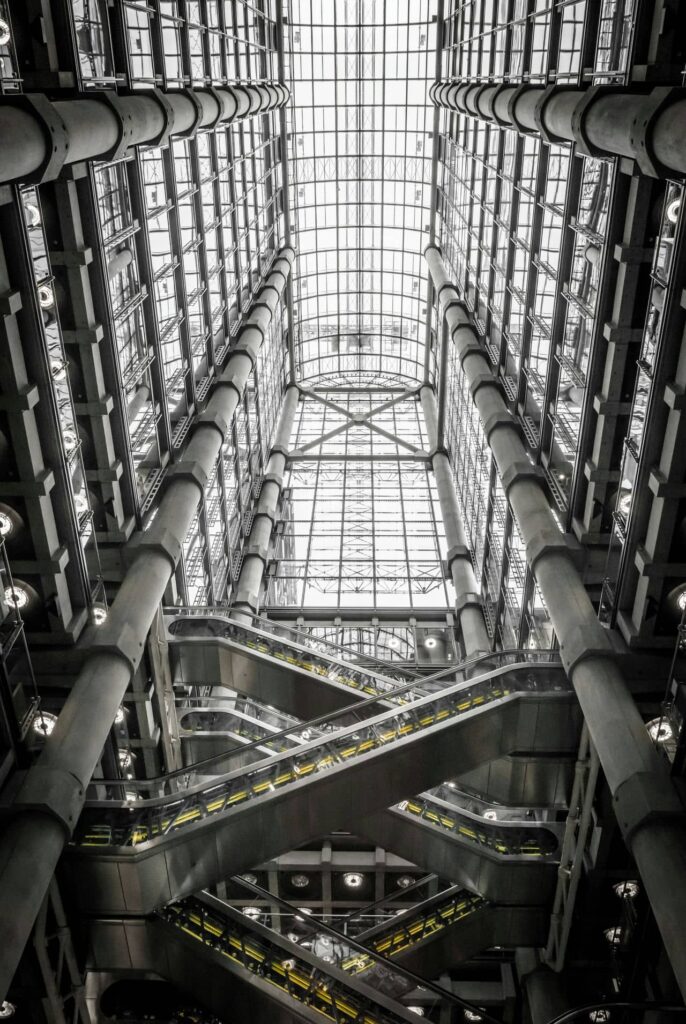
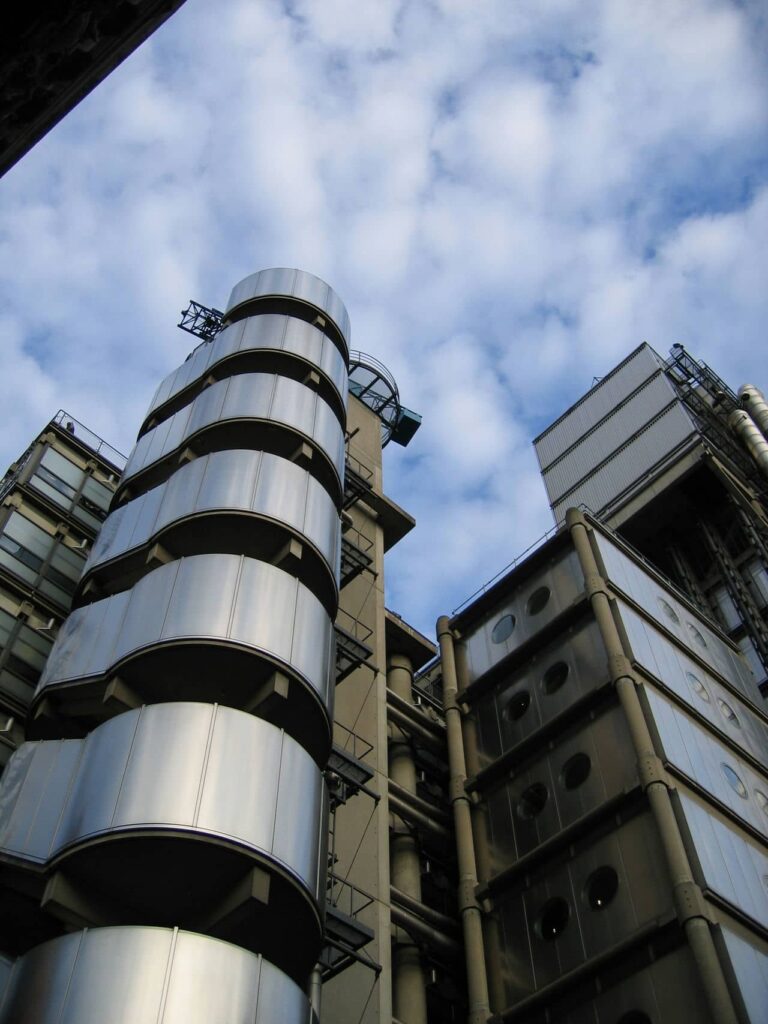
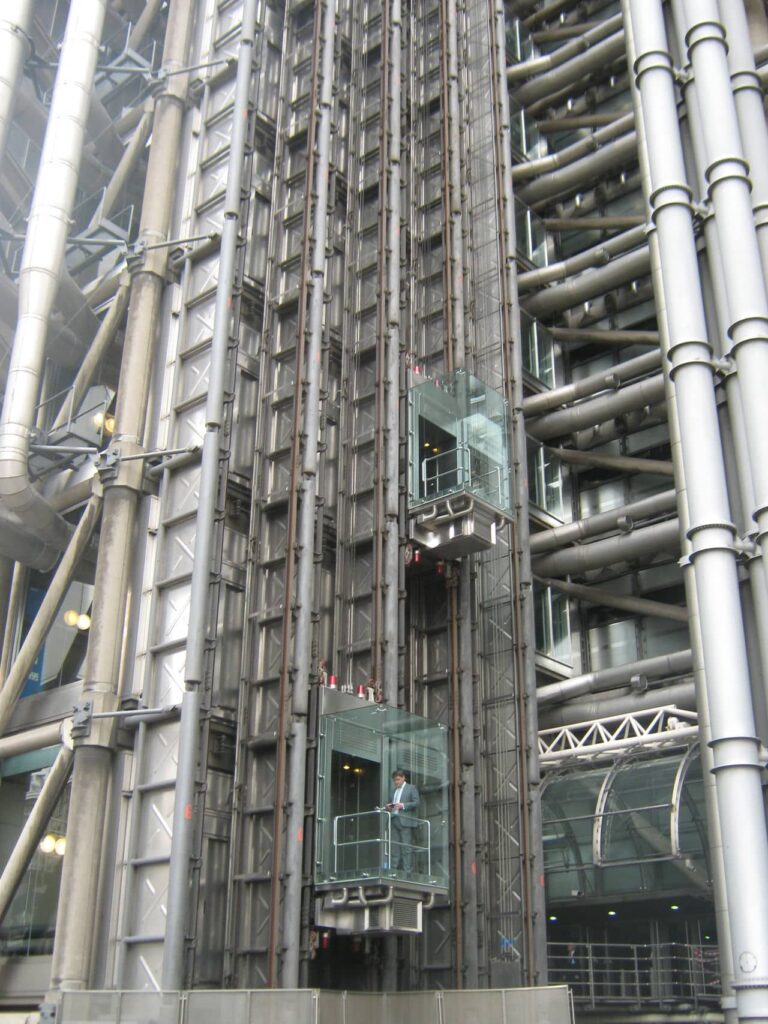

The Lloyd’s Building represents the high-tech architectural style which emerged in the 1970s and 1980s. High-tech architecture uses industrial materials, prefabricated components, exposed structures, and functional elements. High-tech architecture aims to express the technological innovation and complexity of modern society. The Lloyd’s Building is influenced by the historical design of the Centre Pompidou in Paris, which was also designed by Richard Rogers with Renzo Piano. The Centre Pompidou was the first building to apply the concept of Bowellism, exposing its services and structure on the facade. The Lloyd’s Building also draws inspiration from the Gothic Revival style, which was popular in the 19th century and featured intricate details, pointed arches, and vertical emphasis. The Lloyd’s Building incorporates these elements in its stainless steel cladding, glass curtain walls, and towers.
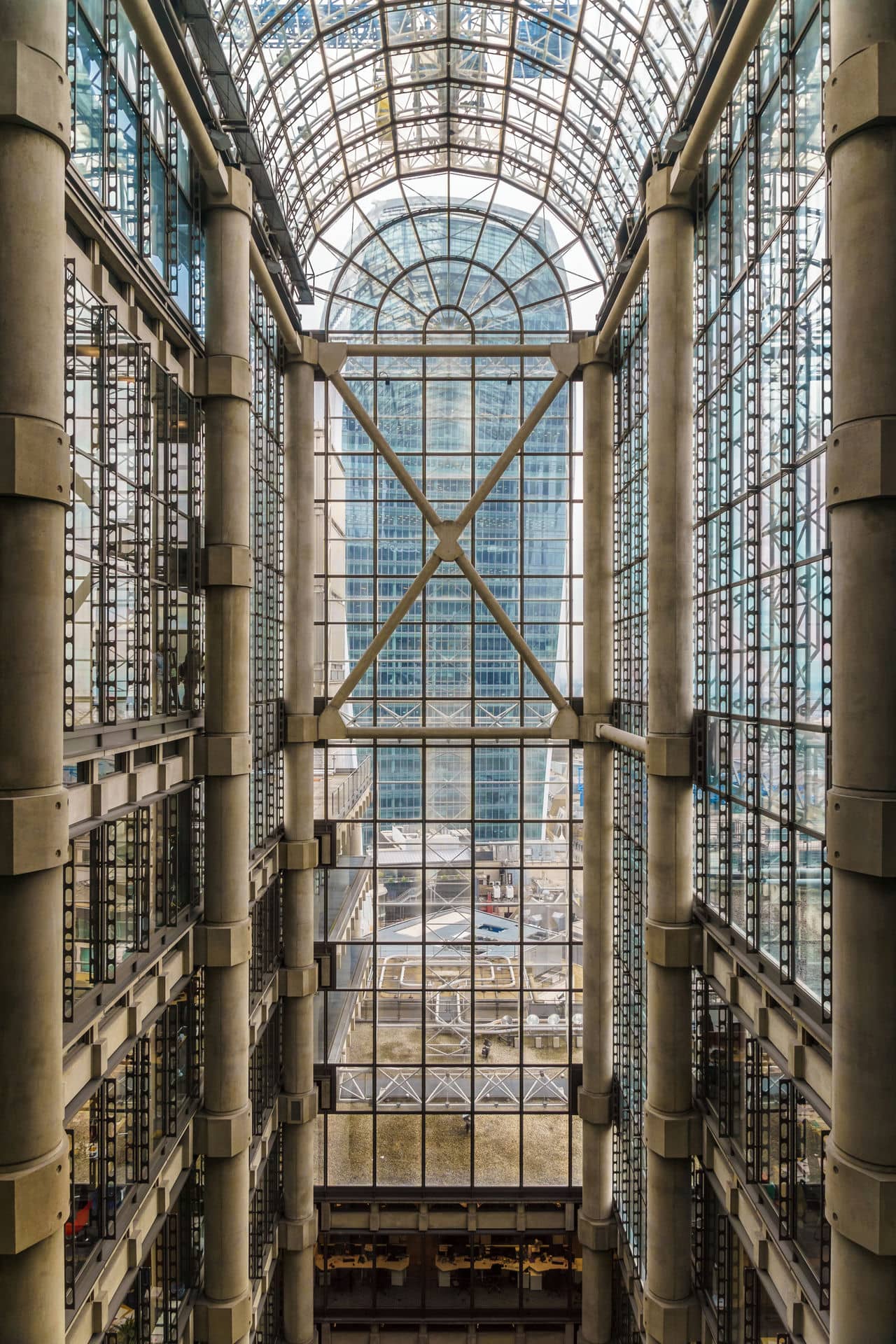
The Lloyd’s Building uses various lighting and shading techniques to create a dynamic and comfortable environment for its occupants. The building has large windows that allow natural light to enter the interior spaces, reducing the need for artificial lighting. The building also has external blinds that can be adjusted to control the amount of sunlight and heat entering the building, improving the thermal performance and energy efficiency. The building also has internal lighting that can be dimmed or brightened according to the time of day and the users’ mood. The building also has spotlights and floodlights that illuminate the exterior at night, creating a striking visual effect.
56. São Paulo Museum of Art
The São Paulo Museum of Art is an art museum located on Paulista Avenue in the city of São Paulo, Brazil. It is well known for its headquarters, a concrete and glass structure designed by Lina Bo Bardi, whose main body is supported by two lateral beams over a 243-foot (74-meter) freestanding space. It is considered a city landmark and a main symbol of modern Brazilian architecture. The São Paulo Museum of Art is in the heart of São Paulo, on the intersection between two overlapping roads, Avenida Paulista and the tunnel of the Avenida 9 de Julho. One side of the site faces the street and the other faces the Trianon Park, where once stood the Belvedere Trianon. From there, one can see the center of the city and the Sierra de Cantareira. The São Paulo Museum of Art was founded in 1947 by Assis Chateaubriand and Pietro Maria Bardi and is maintained as a non-profit institution. The museum was initially located on the second floor of the building of the newspapers associated with an area of 10,800 square feet (1,000 square meters), opened on October 2, 1947; however, the architect Lina Bo Bardi initially conceived the need for its headquarters. The building was constructed on the site of the former Belvedere Trianon on Avenida Paulista, which was donated to the Mayor by the engineer Joaquín Eugenio de Lima, builder of the Avenida Paulista and forerunner of modern urbanism in Brazil. The construction of the museum started in 1956 and was completed in 1968.
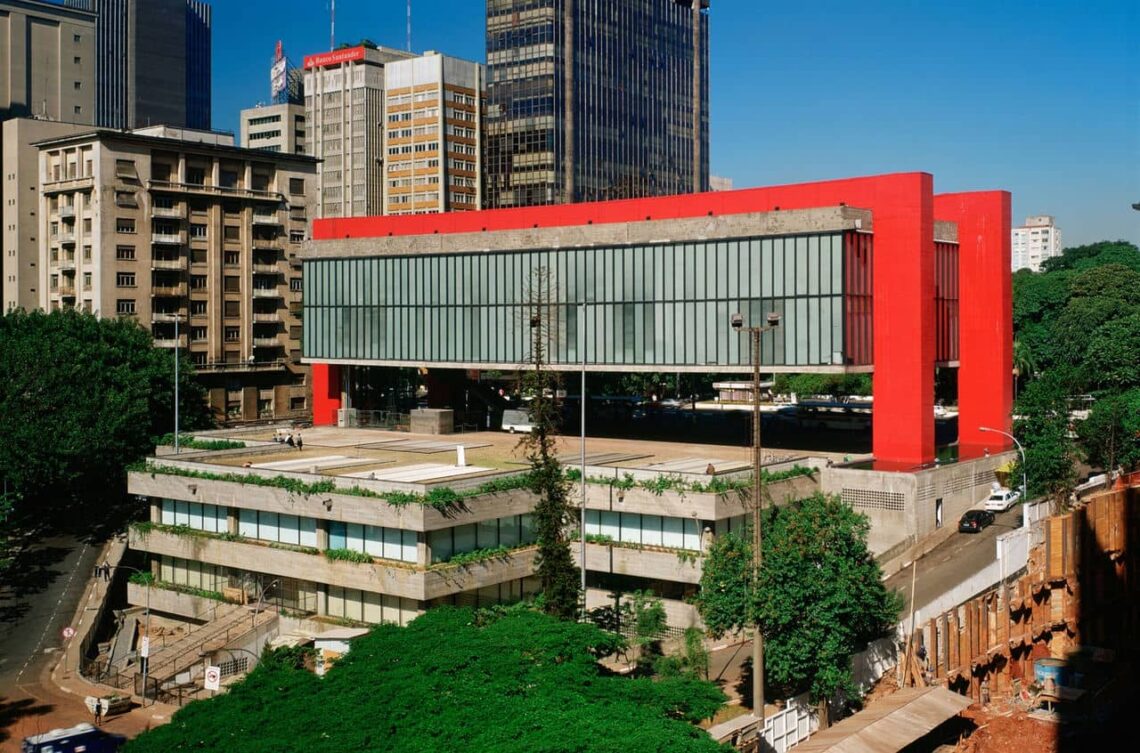
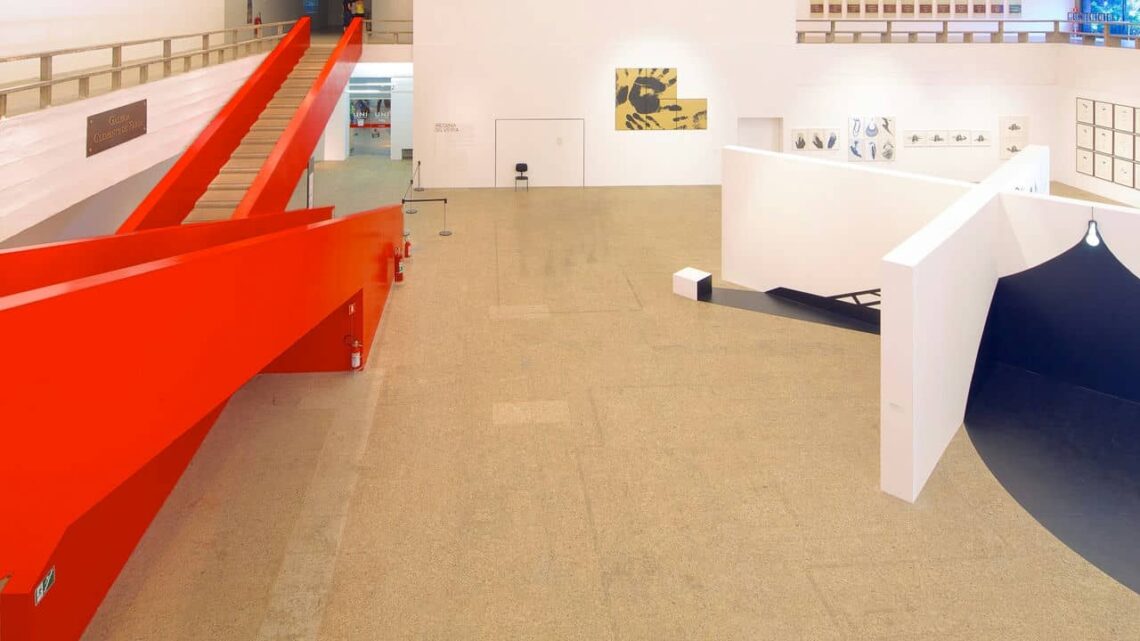
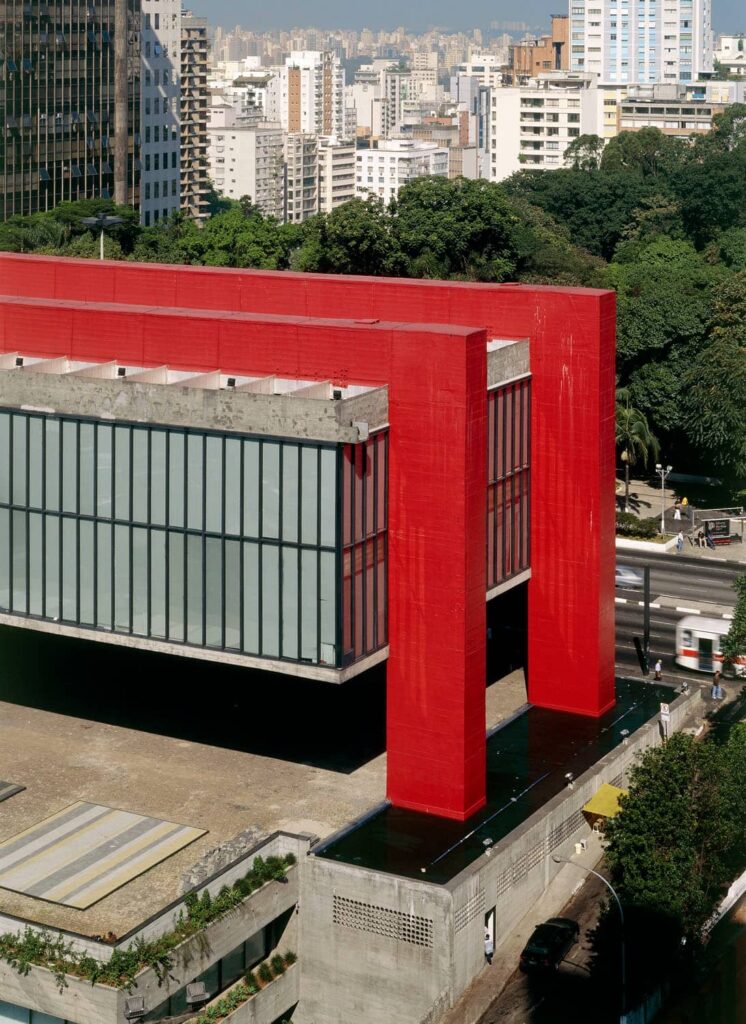
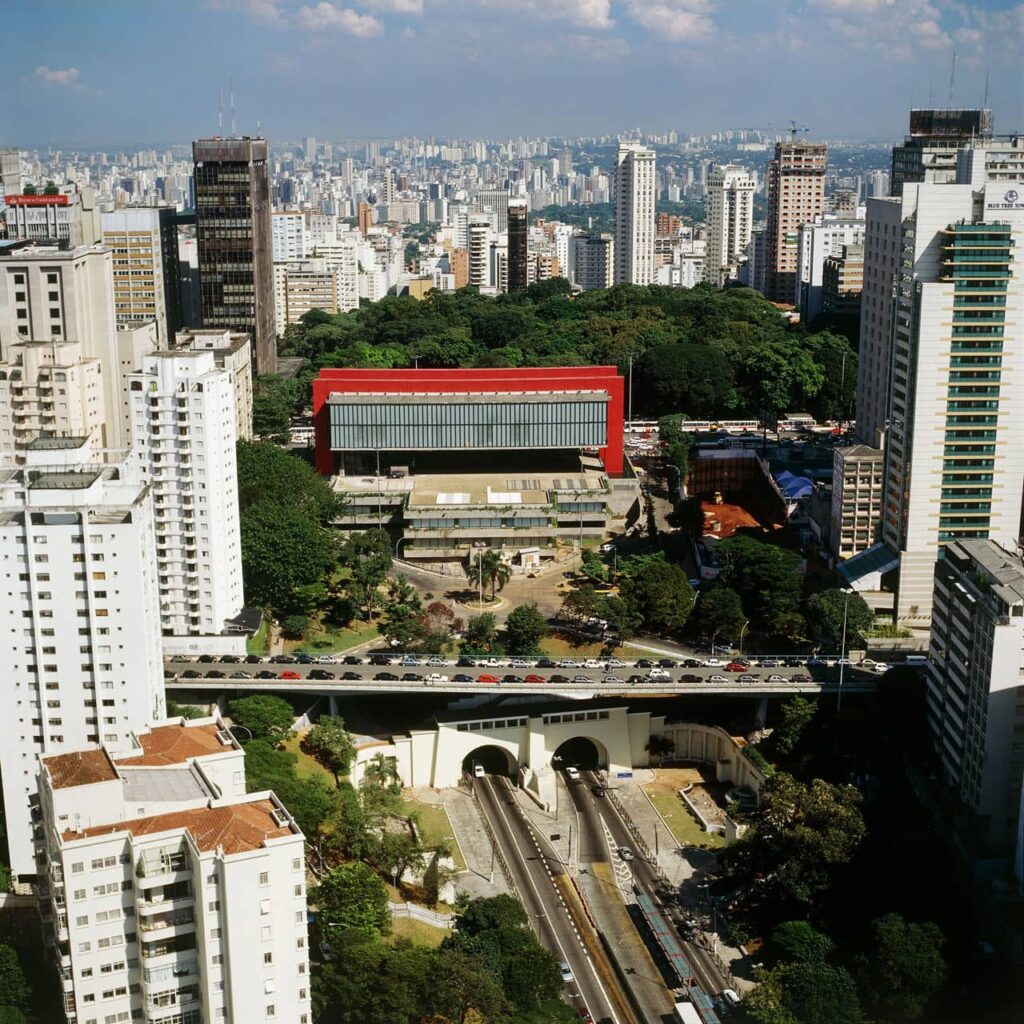
The São Paulo Museum of Art represents a modernist architectural trend or movement that emerged in Brazil in the 1950s and 1960s, influenced by the European avant-garde and the local cultural context. The museum is characterized by its bold structural design, use of concrete and glass as expressive materials, integration with the urban landscape, and social and educational function. The historical design influences visible in the São Paulo Museum of Art are diverse and complex, reflecting the eclectic and innovative vision of Lina Bo Bardi. Some of the influences are the Constructivist architecture style that flourished in the Soviet Union and Germany at the beginning of the 20th century, especially in the use of concrete and geometric forms; the Brazilian colonial architecture, especially in the use of tiles and wood in the interior spaces; the Italian Renaissance, especially in the use of the crystal easels to display the paintings as if they were floating in the air; and the Brazilian popular culture, especially in the use of colors and textures in the furniture and objects.
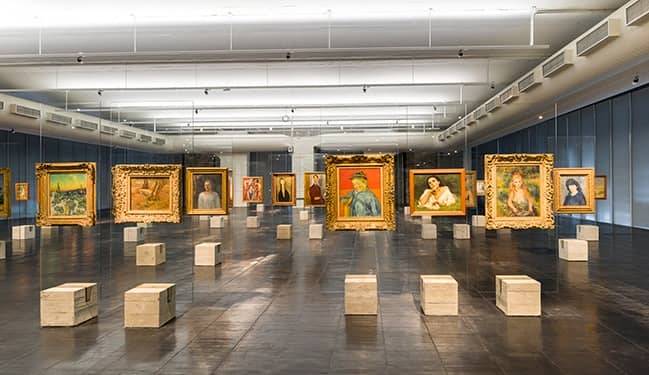
The lighting and shading techniques in the São Paulo Museum of Art are based on the natural and artificial illumination of the main exhibition hall, a large open space with glass walls and ceiling. The natural light enters through the glass panels and is filtered by the concrete beams and the metal grid that covers the ceiling, creating a dynamic and varied effect of light and shadow. The artificial light is provided by spotlights and fluorescent tubes attached to the metal grid and can be adjusted according to the needs of the exhibition. The lighting and shading techniques aim to enhance the visibility and appreciation of the artwork and create a contrast between the interior and exterior spaces.
57. The Great Pyramid of Giza
The Great Pyramid of Giza is the largest Egyptian pyramid and served as the tomb of pharaoh Khufu, who ruled during the Fourth Dynasty of the Old Kingdom. It is the oldest and only Seven Wonders of the Ancient World. It is the most famous monument of the Giza pyramid complex, part of the UNESCO World Heritage Site “Memphis and its Necropolis.” The Great Pyramid of Giza is located on the Giza plateau near the modern city of Cairo, on the west bank of the Nile River in northern Egypt. It is at the north end of the line of the three pyramids at Giza, along with the pyramids of Khafre and Menkaure. The Great Pyramid of Giza was built in the early 26th century BC for about 27 years, during the reign of Khufu, the second king of Egypt’s 4th dynasty. He was also known as Cheops in Greek sources. The pyramid was constructed by quarrying an estimated 2.3 million large blocks weighing 6 million tonnes and transporting them by boat and sled to the site.
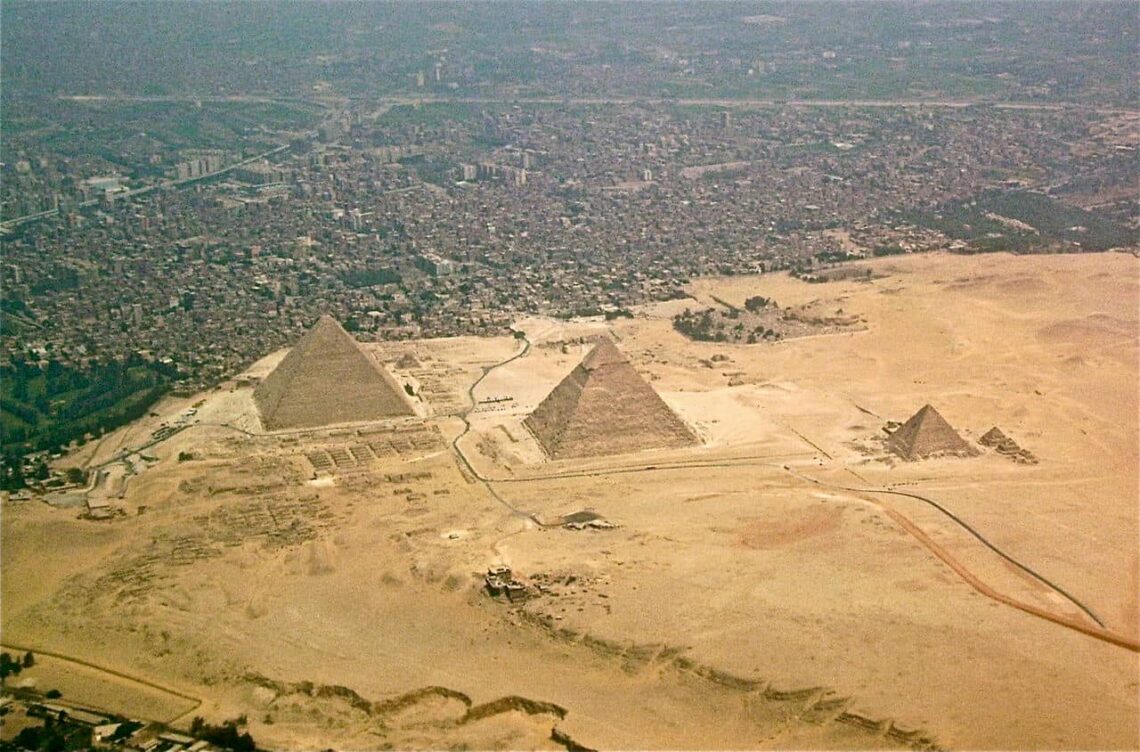
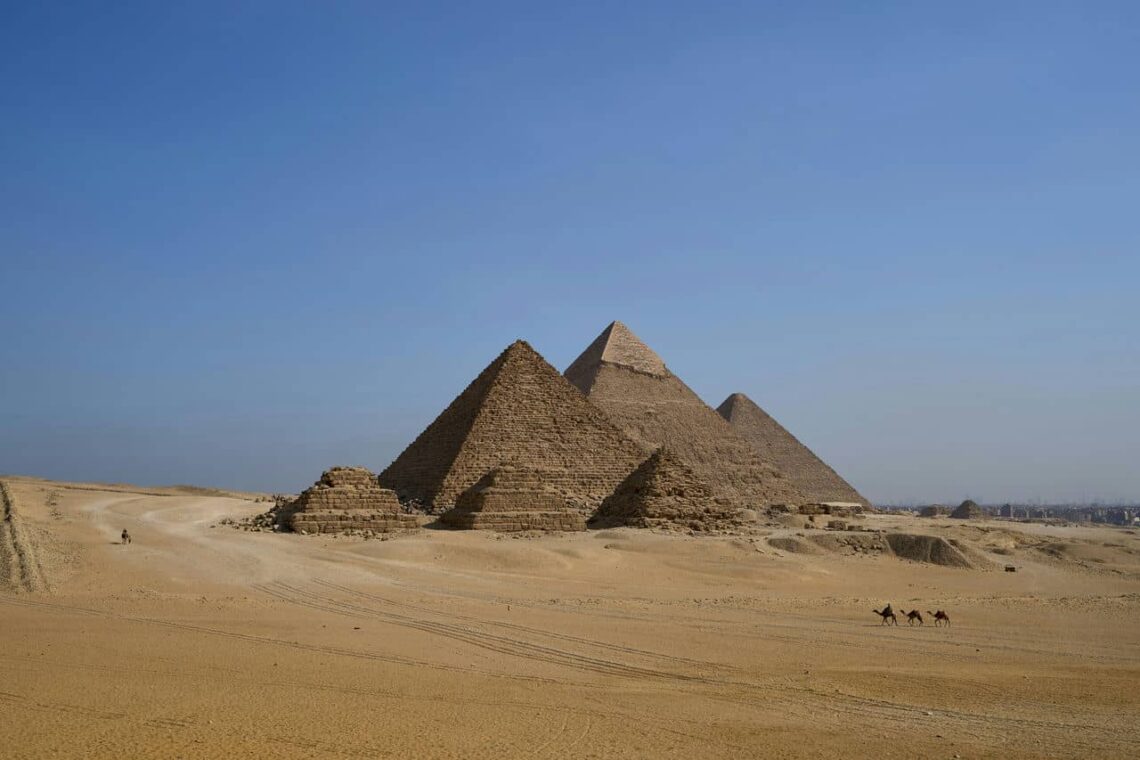
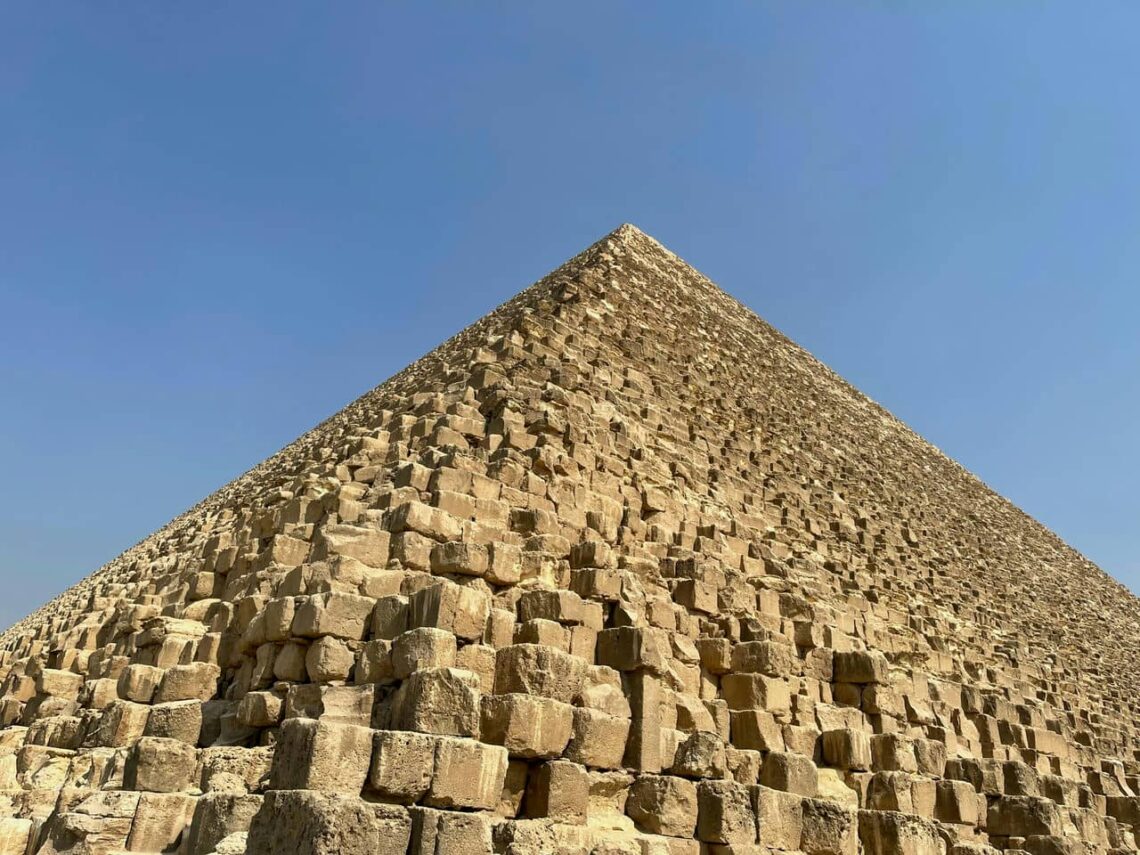
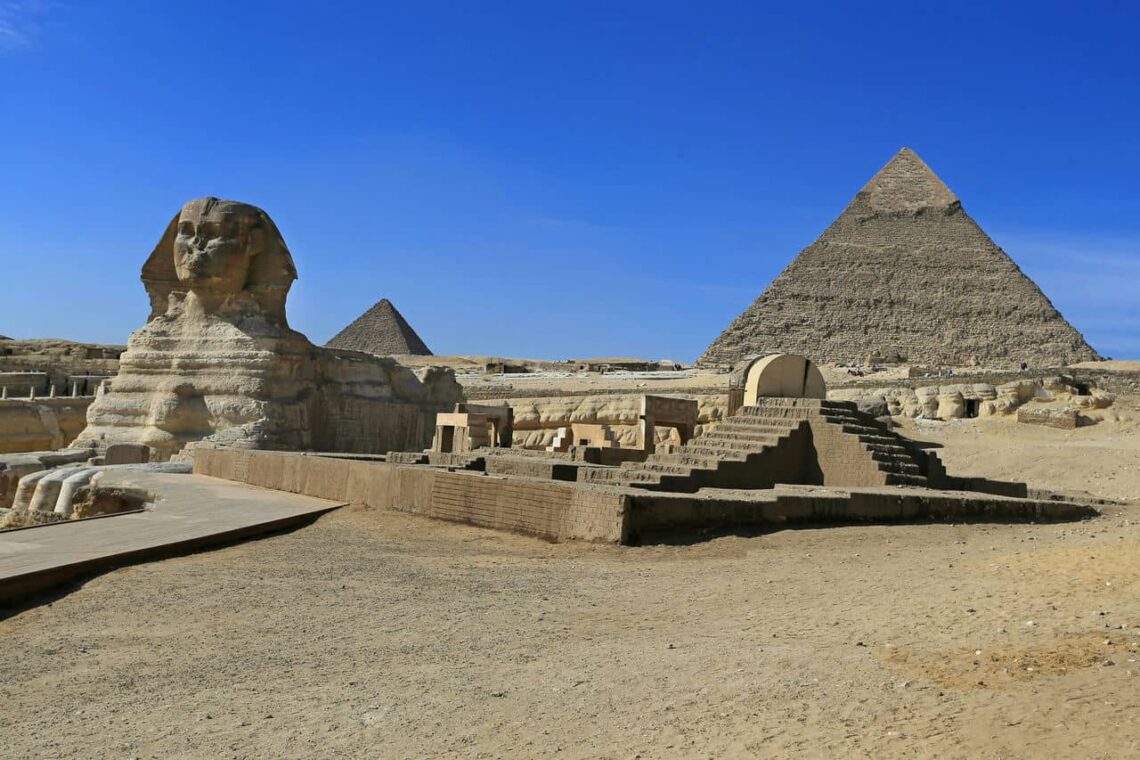
The Great Pyramid of Giza represents the architectural trend or movement of pyramid building, a common practice in ancient Egypt for royal tombs. Pyramids were symbols of the pharaoh’s power and connection to the gods and were designed to protect and preserve their bodies and belongings for the afterlife. The pyramid shape was also believed to reflect the primordial mound of creation from which the sun god emerged. The Great Pyramid of Giza shows the historical design influences of earlier pyramids, such as the Step Pyramid of Djoser, the Bent Pyramid of Sneferu, and the Red Pyramid of Sneferu. These pyramids were experiments to find the best shape, size, and angle for a stable and durable structure. The Great Pyramid of Giza culminated these trials, achieving the perfect proportions and dimensions for a true pyramid. It also incorporated advanced engineering and mathematical techniques, such as using pi and the golden ratio.
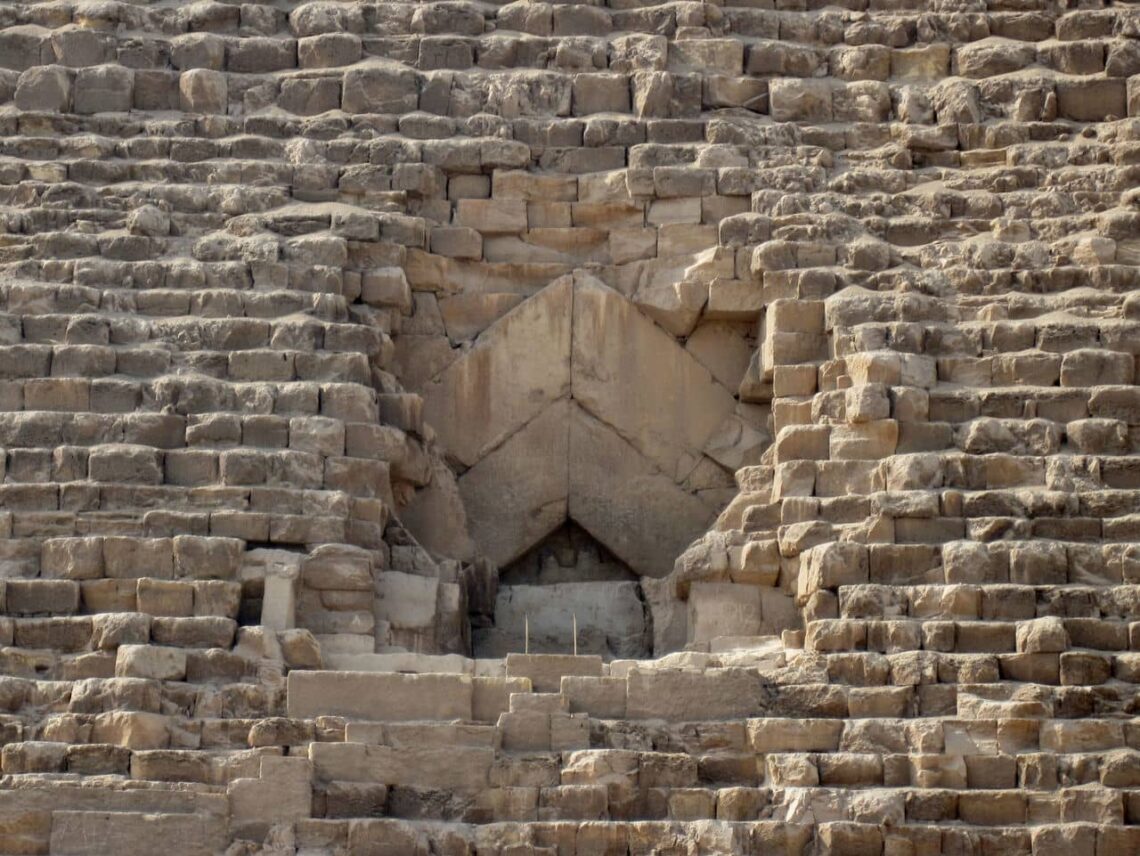
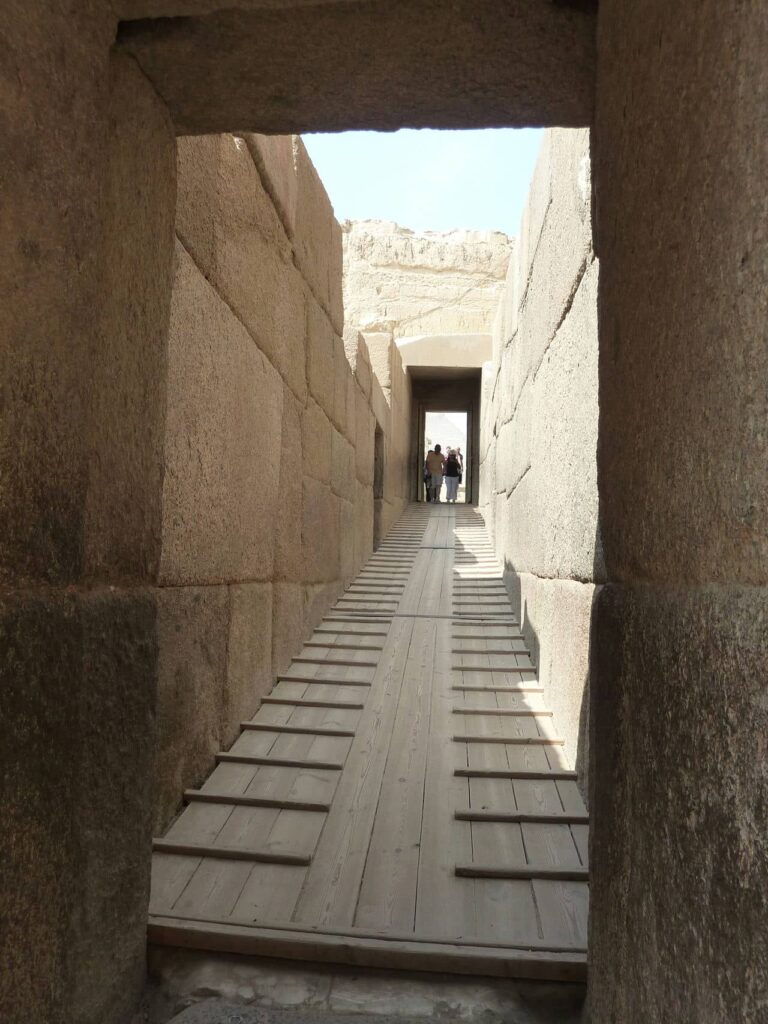
The Great Pyramid of Giza uses the lighting and shading techniques of orientation and alignment, casing and polishing, and internal chambers and shafts. The pyramid is oriented to the four cardinal points of the compass and is aligned with the stars of Orion’s belt, which were associated with the god Osiris. The pyramid was originally covered with smooth white limestone casing, which reflected the sunlight and made it shine brightly. The pyramid also has internal chambers and shafts designed to allow the passage of light and air and to direct the pharaoh’s soul to the sky.
58. Musée du Louvre
The Musée du Louvre is France’s national museum and art gallery, housed in part of a large palace in Paris. It is the world’s most-visited art museum, with a collection from ancient civilizations to the mid-19th century. It displays some of the most famous artworks in history, such as the Mona Lisa, the Venus de Milo, and the Winged Victory. The Musée du Louvre is located on the north bank of the Seine River in the 1st arrondissement of Paris. It is near the Tuileries Garden, the Place de la Concorde, and the Champs-Élysées. It covers an area of 786,000 square feet (73,000 square meters). King Philip II built The Musée du Louver as a fortress in the late 12th century. It was expanded and renovated over the centuries by various monarchs, such as Francis I, Henry IV, Louis XIV, and Napoleon I. It became a public museum in 1793, after the French Revolution. The most recent addition is the glass pyramid, designed by I.M. Pei and completed in 1989.
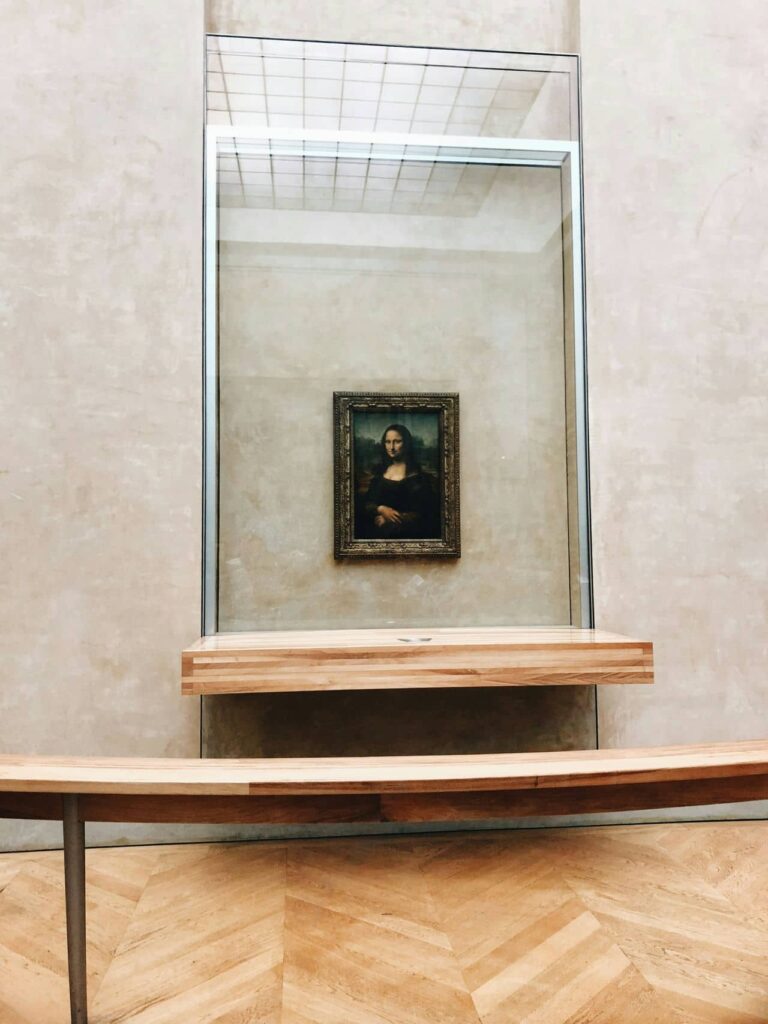
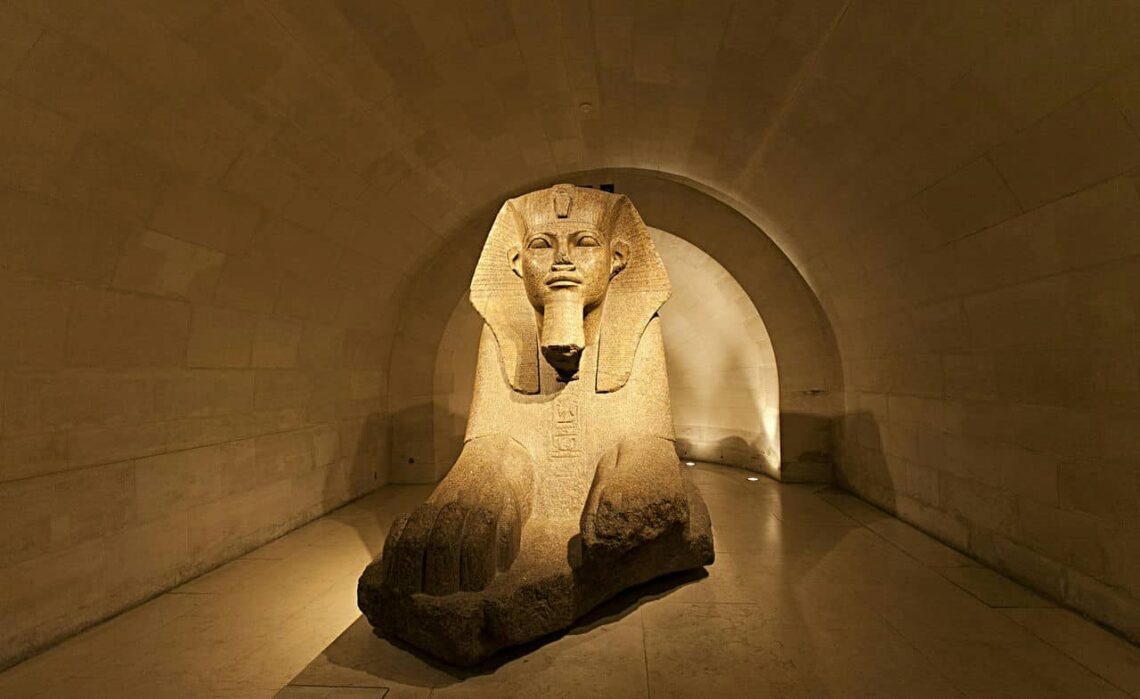
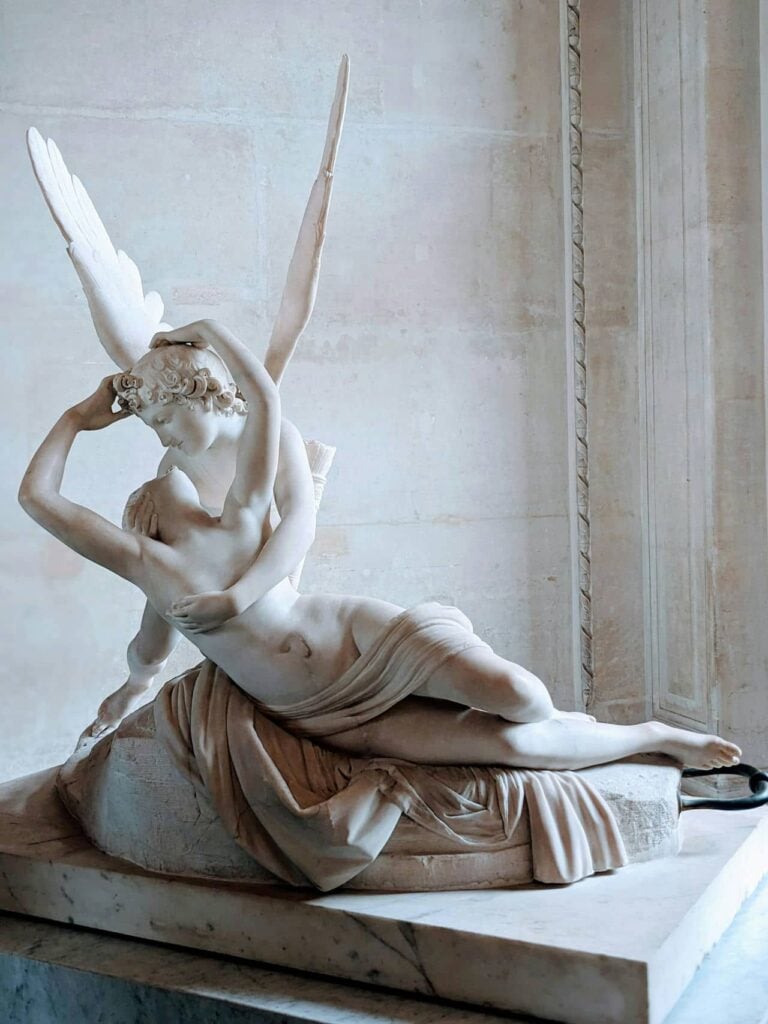
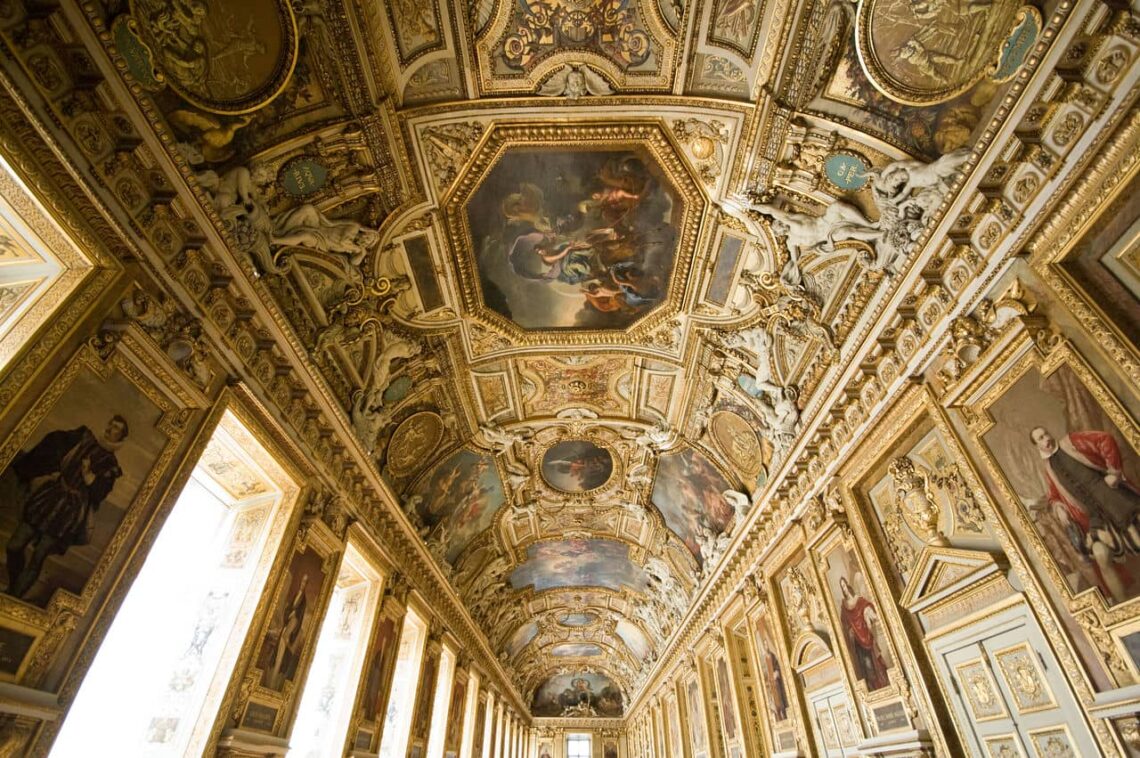
The Musée du Louvre represents a blend of different architectural styles and periods, reflecting its long and complex history. It combines medieval, Renaissance, classical, baroque, neoclassical, and modern architectural elements. It showcases the evolution of French art and culture and the influences of other civilizations. The Musée du Louvre is influenced by various historical and cultural sources, such as the ancient Egyptians, Greeks, Romans, Persians, and Mesopotamians. It also incorporates Italian, Flemish, Dutch, Spanish, and English art features. Some notable influences are the Italian Renaissance, the French Revolution, the Napoleonic Empire, and the Enlightenment. The Musée du Louvre uses various lighting and shading techniques to enhance its artworks’ visual impact and atmosphere. It employs natural, artificial, and mixed light, depending on the type and location of the exhibits. It uses contrast, color, and texture to create different effects and moods. Some examples are the dramatic lighting of the Mona Lisa, the soft lighting of the Venus de Milo, and the bright lighting of the Winged Victory.
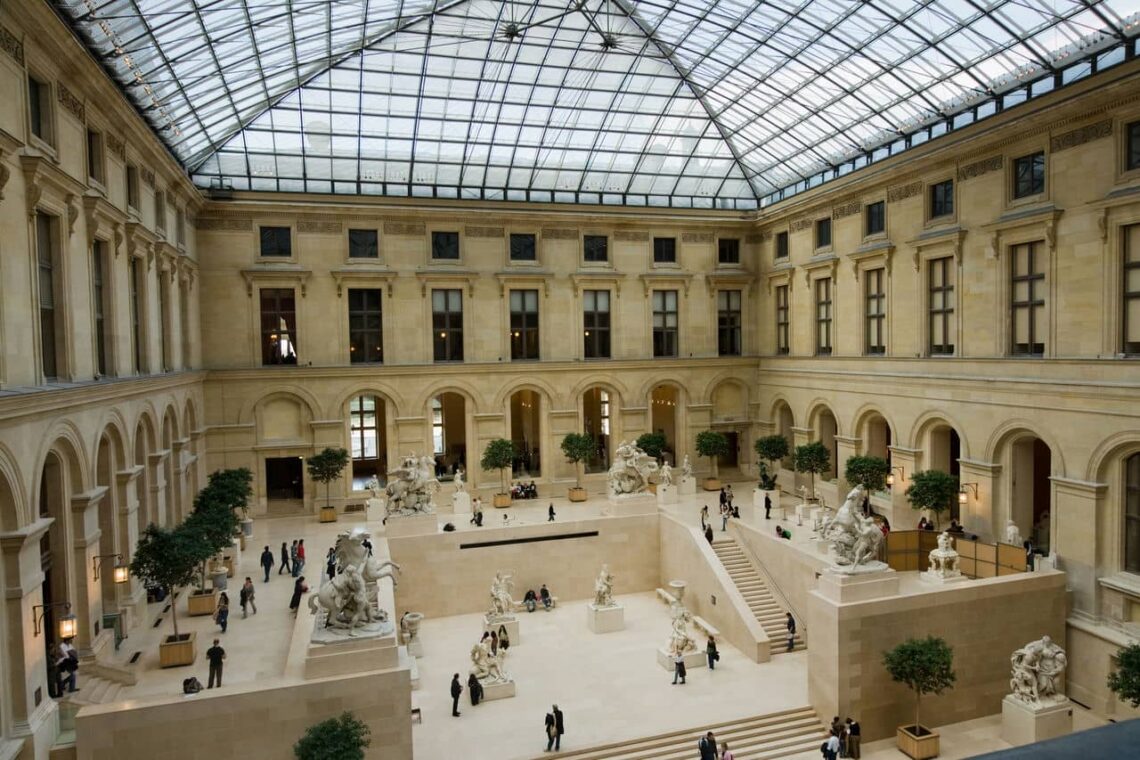
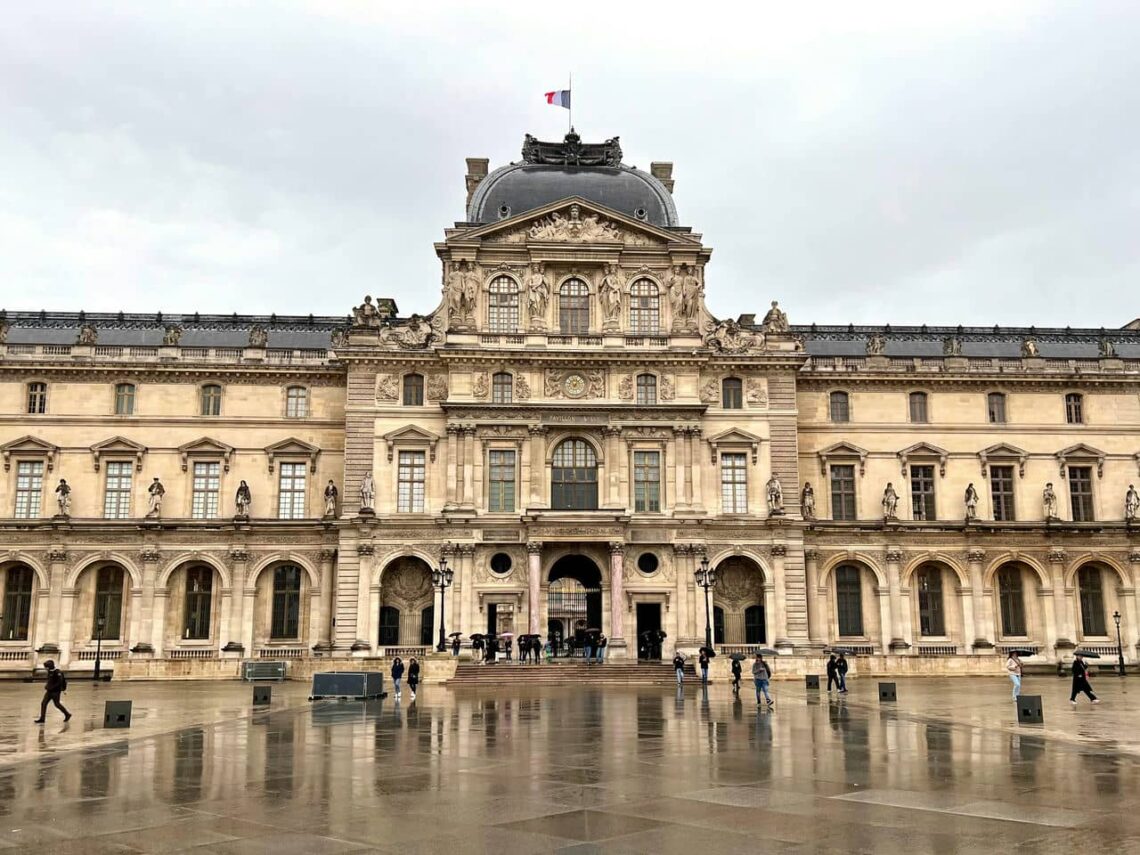
59. Niterói Contemporary Art Museum
The Niterói Contemporary Art Museum is a museum of modern art located in the city of Niterói, Rio de Janeiro, Brazil. It is one of the city’s most famous landmarks and a symbol of its cultural life. The Niterói Contemporary Art Museum is on a cliff above Guanabara Bay, offering panoramic views of Rio de Janeiro and Sugarloaf Mountain. It is surrounded by a public square, a reflecting pool, and a beach. The museum has a collection of over 1,200 works of contemporary art, mostly from Brazilian artists. The Niterói Contemporary Art Museum was designed by the popular Brazilian architect Oscar Niemeyer, known for his curvy and futuristic buildings. Niemeyer was assisted by the structural engineer Bruno Contarini, who had worked with him on previous projects. The museum was completed in 1996 when Niemeyer was 89 years old.
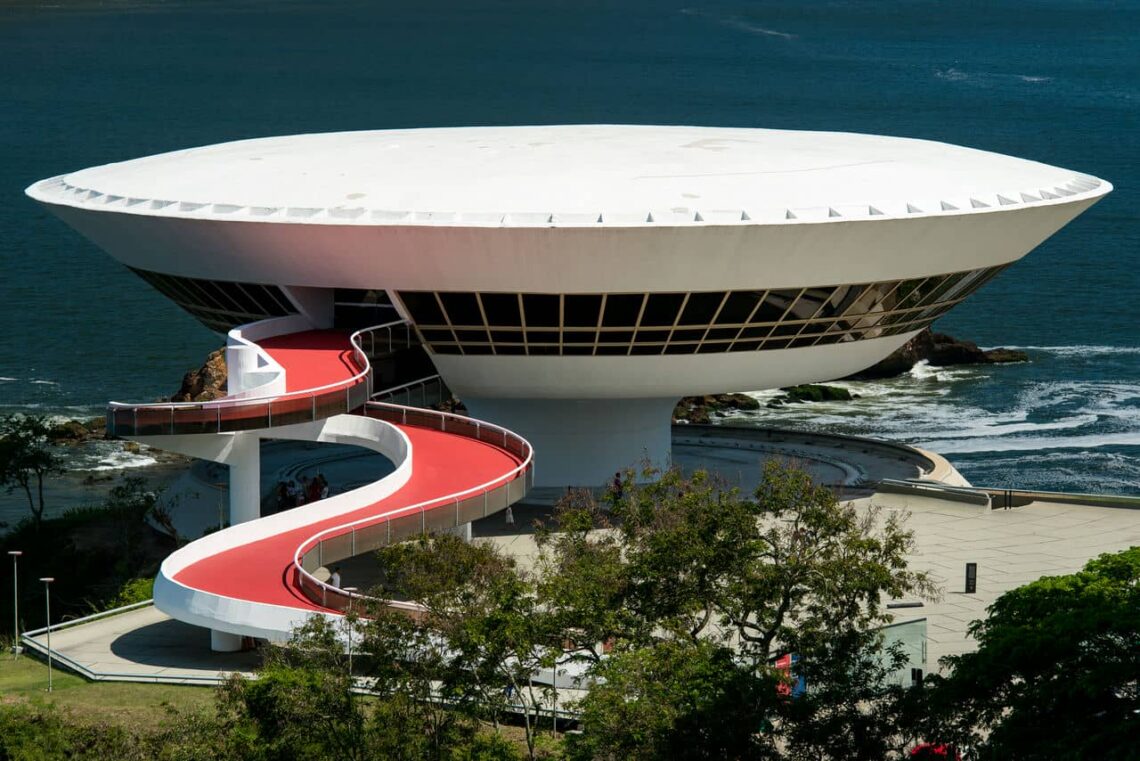
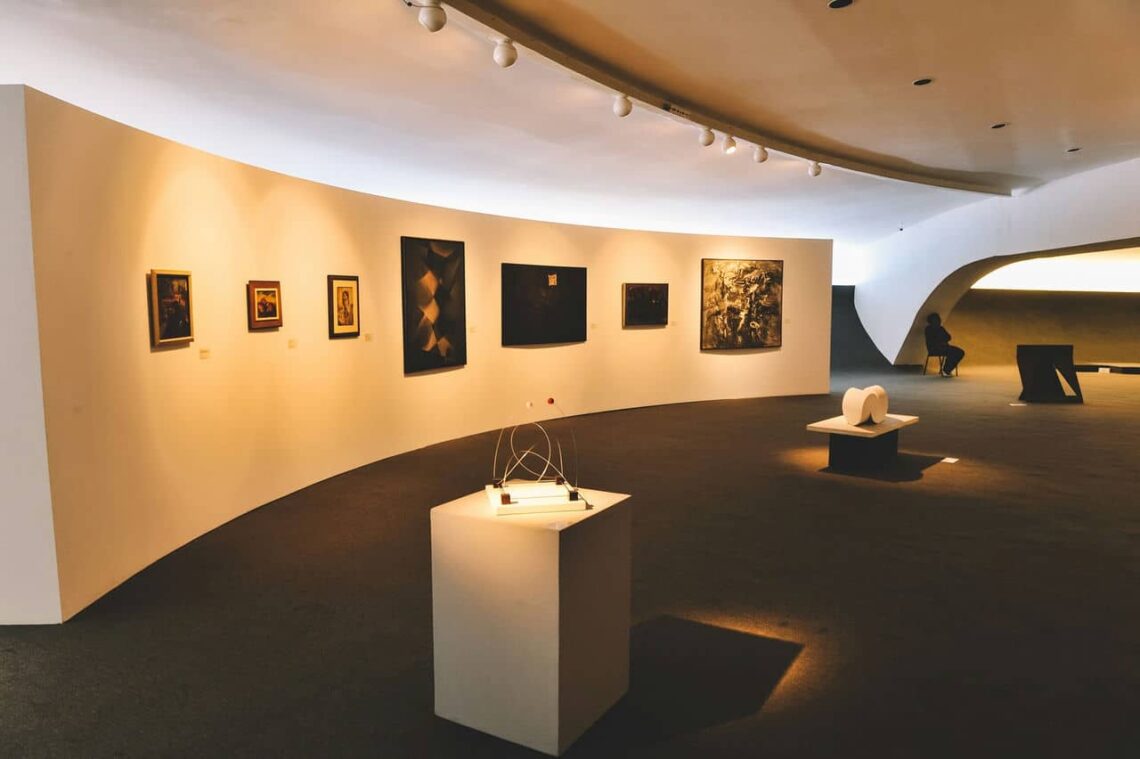
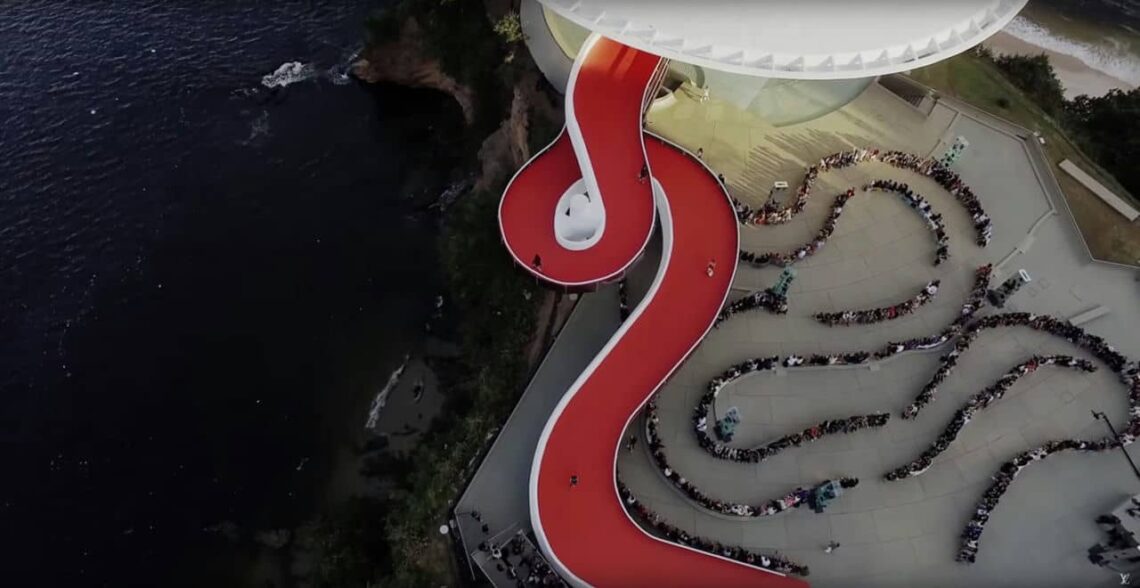
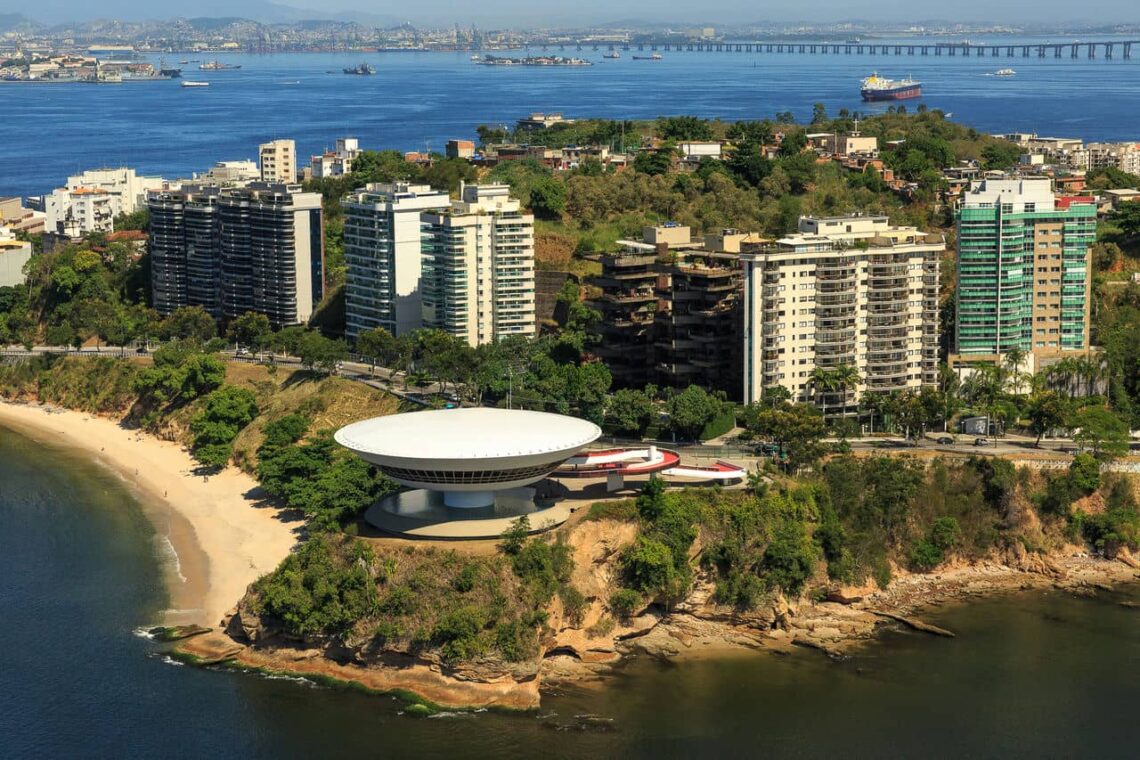
The Niterói Contemporary Art Museum is an example of the architectural style known as organic architecture, which is inspired by natural forms and shapes. Niemeyer said that the museum’s design came naturally from the site and that he wanted it to look like a flower that rises from the rocks. The museum’s shape has also been compared to a UFO, a saucer, or a hat. The Niterói Contemporary Art Museum reflects Niemeyer’s influences from various historical and artistic movements, such as modernism, surrealism, and constructivism. Niemeyer was influenced by the works of Le Corbusier, Picasso, Mondrian, and others. He also incorporated Brazilian culture and history elements, such as the indigenous and African heritage, the tropical landscape, and the social issues.
The Niterói Contemporary Art Museum uses natural and artificial lighting techniques to create different effects and moods. The museum has a large circular window that allows natural light to enter and illuminate the interior. The window also frames the view of the bay and the city. The museum also has spotlights and colored lights highlighting the artwork and the structure. The Niterói Contemporary Art Museum also uses shading techniques to control the temperature and glare inside the museum. The museum has a concrete dome that covers the main exhibition hall and protects it from the sun and the rain. The dome also contrasts the light and the shadow, enhancing the museum’s sculptural quality. The museum also has a metal brise-soleil that filters the light and creates patterns on the floor.
60. Barcelona Pavilion
The Barcelona Pavilion, sometimes known as the Mies Van Der Rohe Pavilion is a modernist building designed by Ludwig Mies van der Rohe and Lilly Reich as the German Pavilion for the 1929 International Exposition in Barcelona, Spain. The pavilion was intended to showcase Germany’s cultural and technological achievements after World War I. The Barcelona Pavilion is located on Montjuïc, a hill in Barcelona that overlooks the city and the Mediterranean Sea. The pavilion is near the Magic Fountain of Montjuïc and the National Palace, which hosts the main exhibition hall. The Barcelona Pavilion was built in 1929 by a team of German and Spanish craftsmen supervised by Mies and Reich. The pavilion was dismantled in 1930 after the exhibition ended and reconstructed in 1986 by a group of architects led by Ignasi de Solà-Morales.
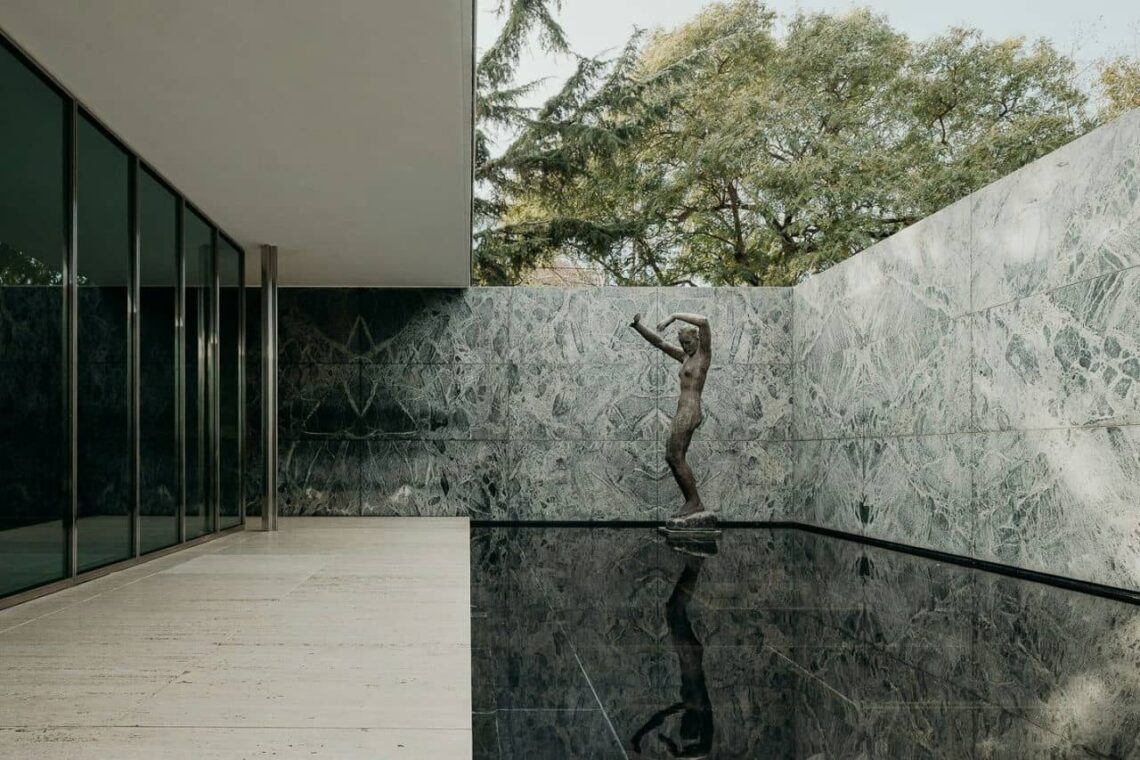
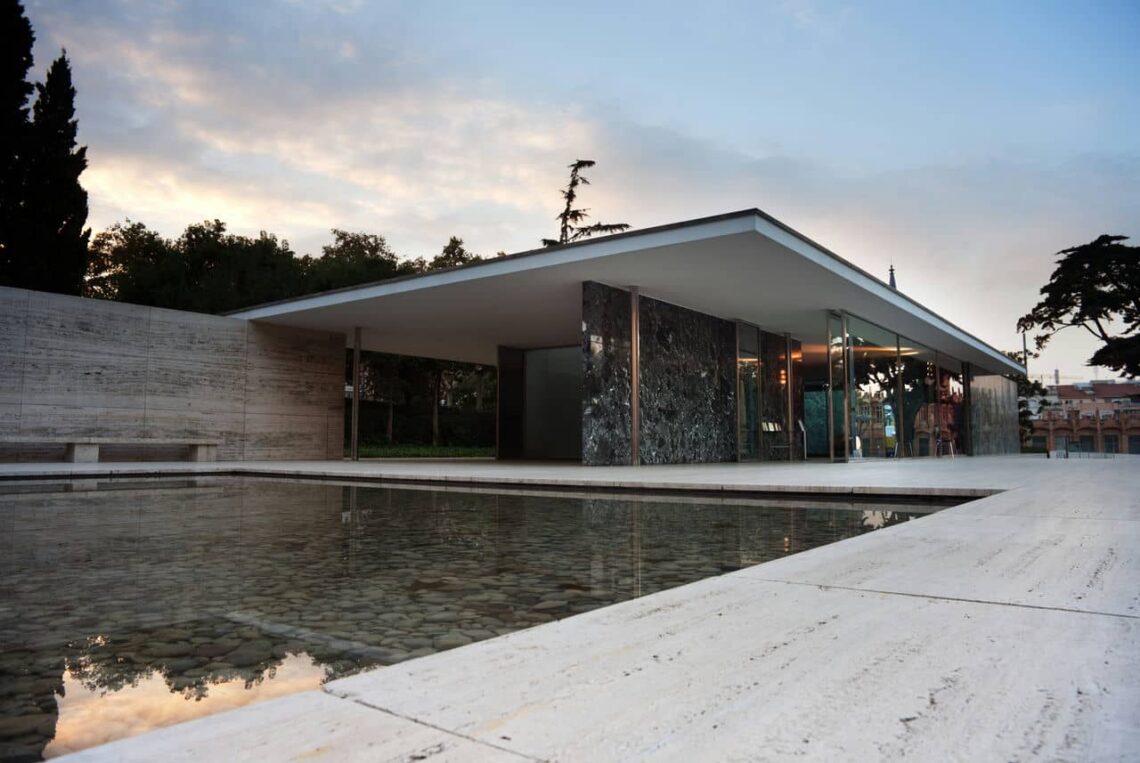
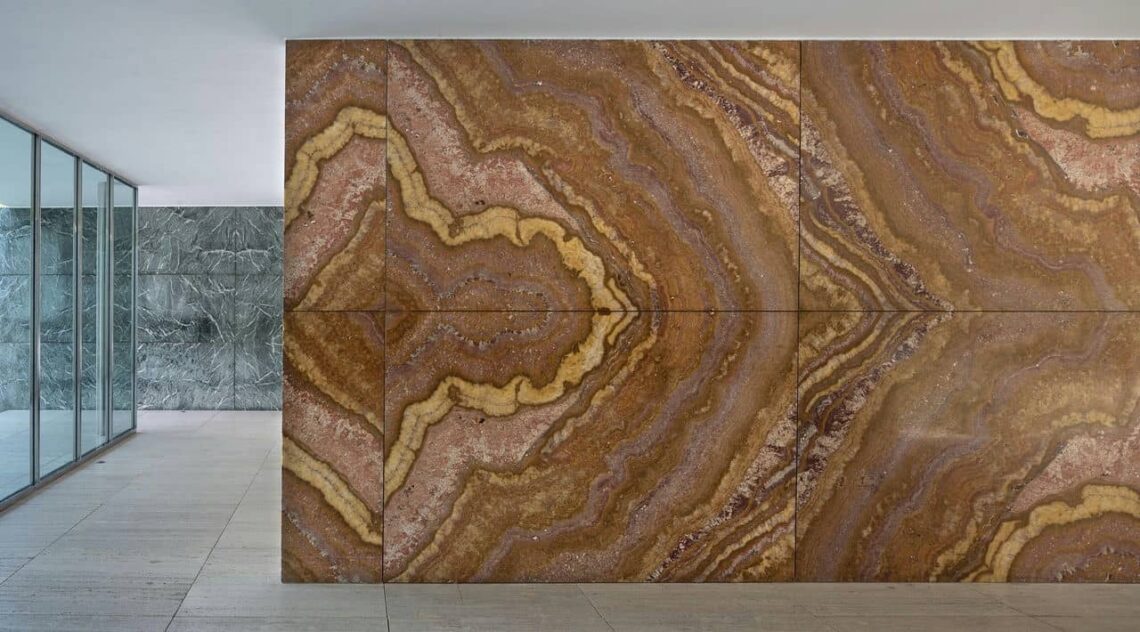
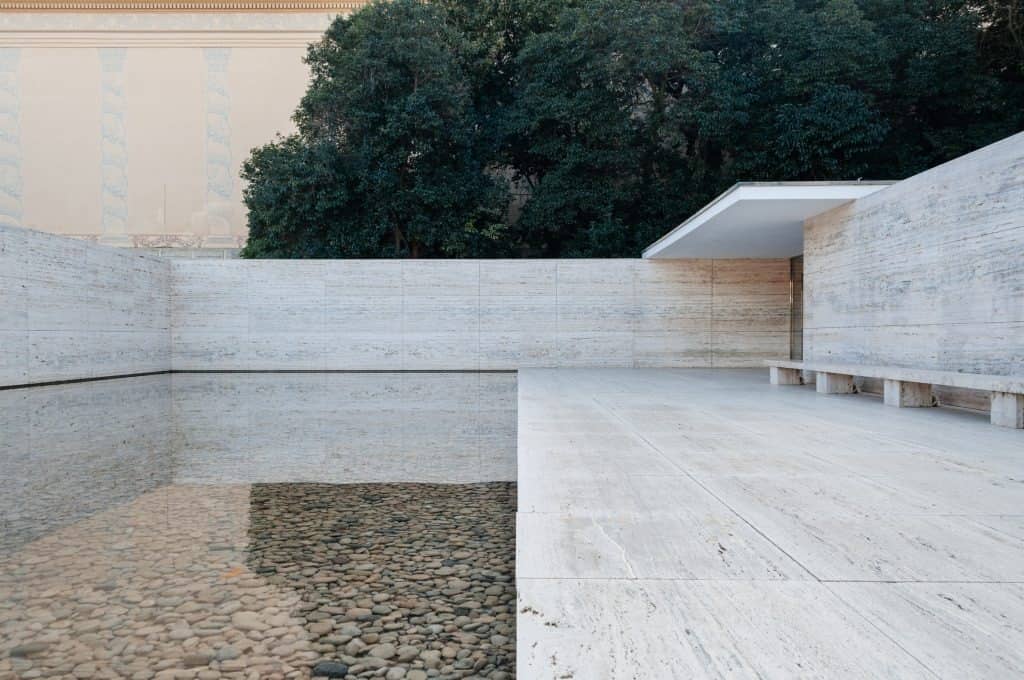
The Barcelona Pavilion represents the architectural trend or movement of the International Style, which emerged in the 1920s and 1930s as a response to the social and economic changes of the industrial age. The International Style is characterized by simple geometric forms, minimal ornamentation, functional design, and new materials such as steel, glass, and concrete. The Barcelona Pavilion is influenced by the historical design of ancient Greek and Roman architecture and the contemporary works of the De Stijl and Bauhaus movements. The pavilion references the classical ideals of harmony, proportion, and order and the modern concepts of abstraction, rationality, and innovation.
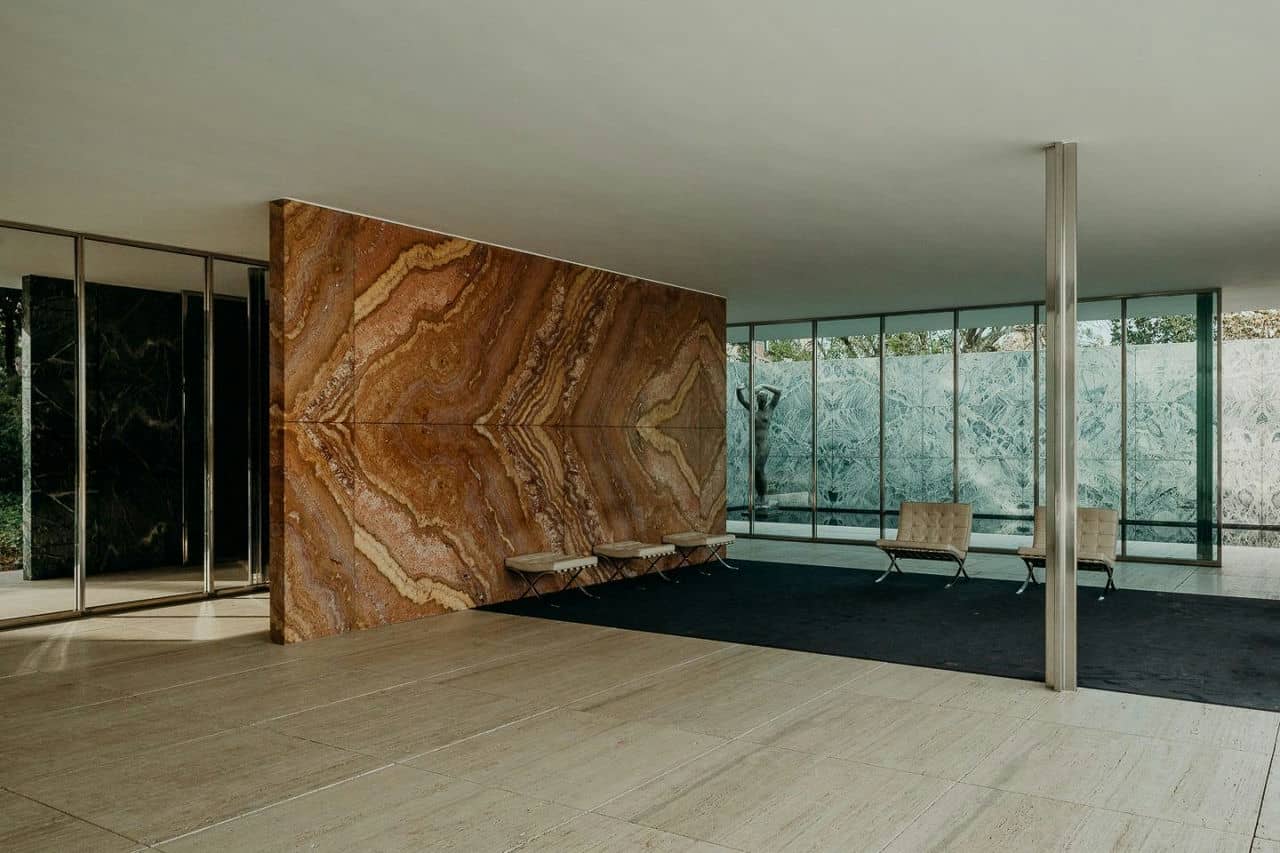
The Barcelona Pavilion uses natural and artificial lighting and shading techniques to create a dynamic and expressive spatial experience. The pavilion has large glass walls that allow natural light to enter and reflect on the polished surfaces of the marble and water. The pavilion also has concealed electric lights illuminating the interior and exterior at night. The pavilion has movable fabric curtains that can be adjusted to control the amount and direction of light and shade.
61. Harpan
The Harpan is a modern art museum located in Reykjavík, Iceland. It features exhibitions of contemporary Icelandic and international artists and concerts, performances, and events. The Harpan also houses a cinema, a library, a restaurant, and a gift shop. The Harpan is situated on the waterfront of Reykjavík, overlooking the Faxaflói bay and the mountains. It is part of the Reykjavík Harbour development project, which aims to revitalize and connect the old harbor area with the city center. The Harpan was built between 2007 and 2011 by the Danish-Icelandic artist Olafur Eliasson and the Icelandic architectural firm Henning Larsen Architects. The Icelandic government and the private company Landsbankinn funded the construction.
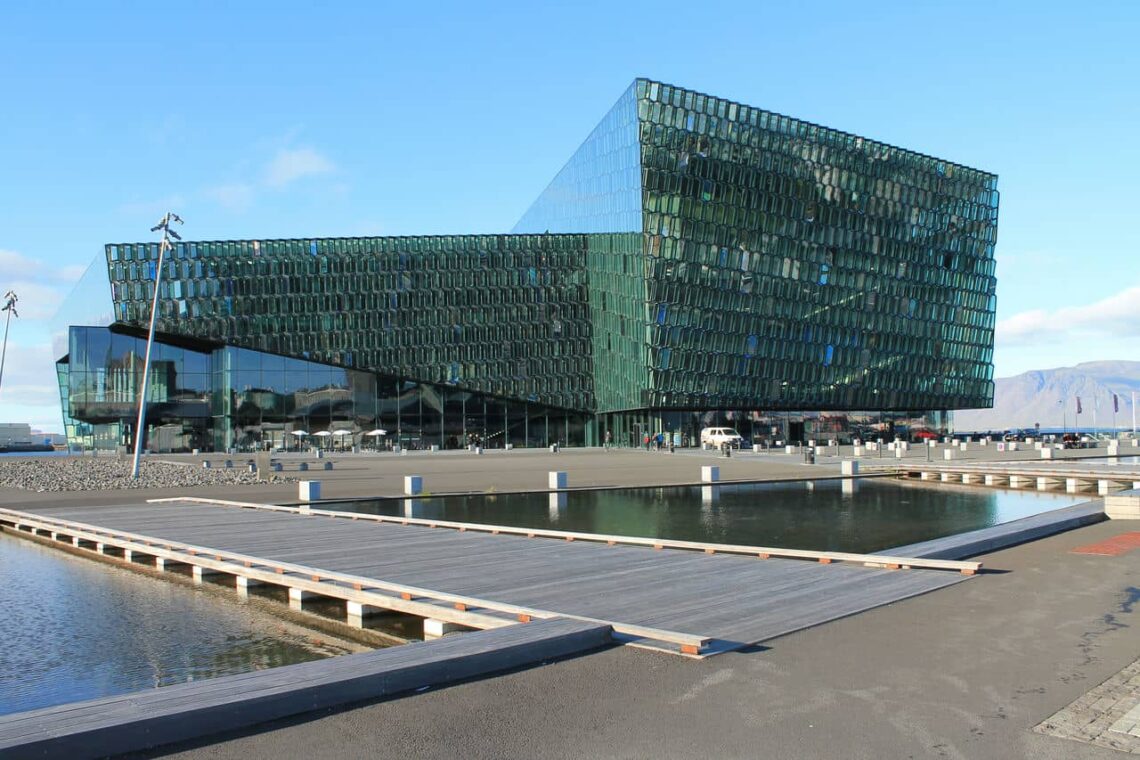
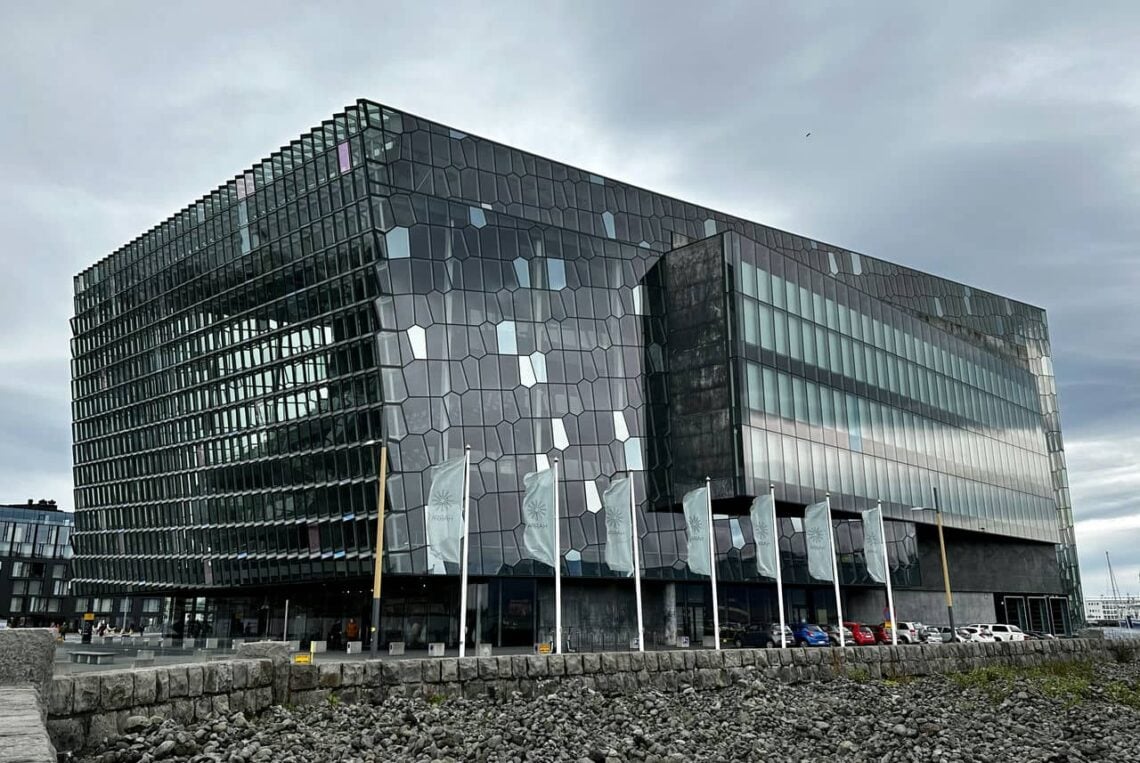
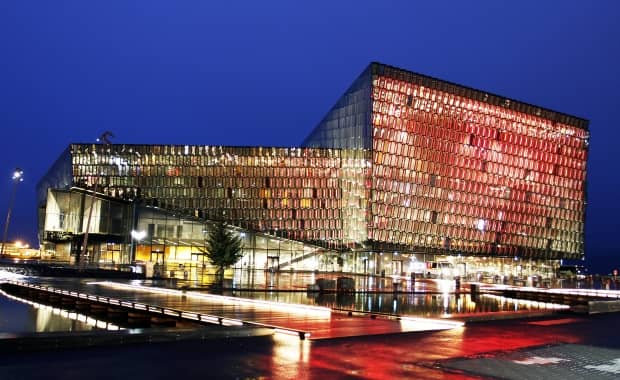
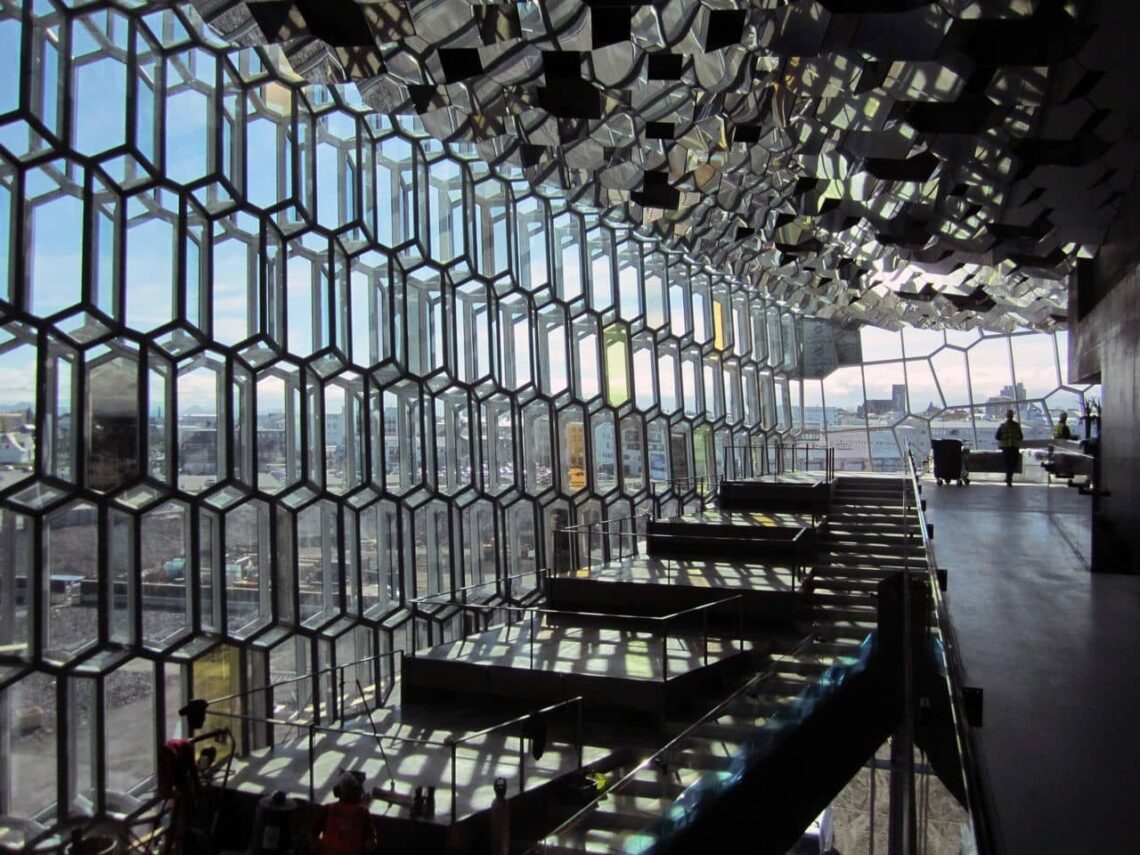
The Harpan represents the neo-futurist architectural trend or movement characterized by dynamic shapes, innovative materials, and environmental awareness. Harpan’s design is inspired by the geology and culture of Iceland and the light and sound of the Nordic region. The historical design influences visible in the Harpan are mainly from Nordic modernism and Icelandic vernacular architecture. The Harpan’s structure consists of a simple steel frame covered by a complex glass facade, which reflects the contrast between the rational and the organic. The Harpan’s facade also resembles the basalt columns that are common in Iceland’s landscape, as well as the fish scales that are symbolic of Iceland’s fishing industry.

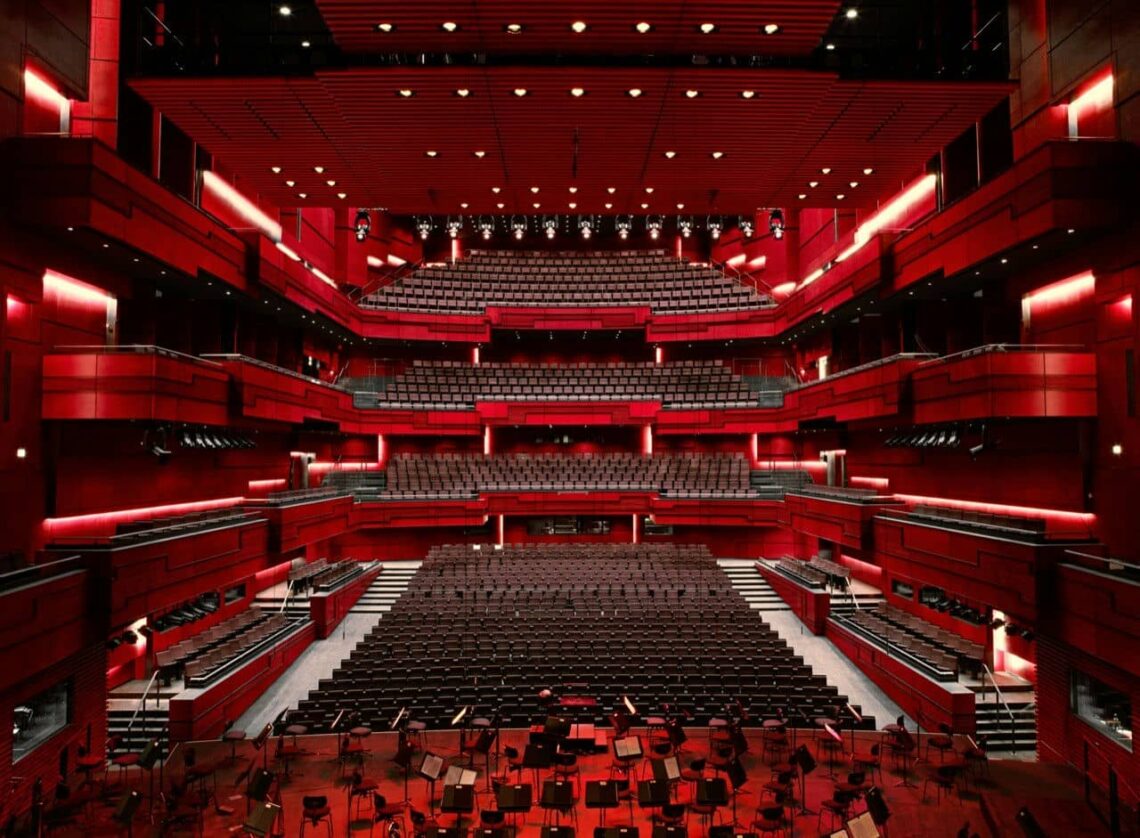
The lighting and shading techniques in the Harpan are based on the concept of quasi-bricks, which are modular glass units arranged in various patterns and colors. The Harpan’s facade comprises more than 1000 quasi-bricks of different sizes and shapes, each with an LED light inside. The quasi-bricks can create other effects depending on the time of day, the season, and the events happening inside the Harpan. The quasi-bricks also act as solar panels that generate electricity for the Harpan.
What are the most amazing architectural buildings in Europe?
Listed below are the most amazing architectural buildings in Europe:
- Eiffel Tower: The Eiffel Tower is a symbol of Paris and France and one of the most visited monuments in the world. It was built in 1889 for the World’s Fair and is named after its engineer, Gustave Eiffel. The tower is 1,063 feet (324 meters) tall and has three levels that offer panoramic views of the city. The tower is also illuminated at night, creating a spectacular sight.
- Colosseum: The Colosseum is an ancient amphitheater in Rome, Italy, completed in 80 AD. It was used for gladiator fights, animal hunts, and other public spectacles. The Colosseum could hold up to 80,000 spectators and had a complex system of lifts, trapdoors, and tunnels. The Colosseum is a Roman engineering and architectural masterpiece and a UNESCO World Heritage Site.
- La Sagrada Familia: The Sagrada Familia is a basilica in Barcelona, Spain, designed by the famous architect Antoni Gaudi. The basilica’s construction began in 1882 and is still unfinished today. The Sagrada Familia is a unique example of modernist architecture with organic shapes, rich colors, and intricate details. The basilica has 18 towers, each representing a different religious figure, and it has a stunning interior with stained glass windows and vaulted ceilings.
- Saint Basil’s Cathedral: Saint Basil’s Cathedral is a church in Moscow, Russia, built in the 16th century by Ivan the Terrible. The church is famous for its colorful onion-shaped domes, each with a different pattern and design. The church is also known as the Cathedral of the Intercession of the Most Holy Theotokos on the Moat, located in the Red Square. The church symbolizes Russian culture and history and is a UNESCO World Heritage Site.
- Notre-Dame de Paris: Notre-Dame de Paris is a Gothic cathedral in Paris, France, that was built between the 12th and 14th centuries. The cathedral is renowned for its architectural features, such as rose windows, flying buttresses, and gargoyles. The cathedral is also home to the famous bell tower, where the fictional character Quasimodo lived. The cathedral was severely damaged by a fire in 2019, but it is being restored to its original glory.
What are the most amazing architectural buildings in the USA?
Listed below are the most amazing architectural buildings in the USA:
- Empire State Building: The Empire State Building, located in New York City, is one of the most iconic skyscrapers in the world. It was the tallest building in the world for 40 years, from 1931 to 1971. It has 102 floors and is elevated at 1,250 feet (381 meters). The Empire State Building symbolizes American ingenuity and ambition and is a popular tourist attraction. It offers spectacular views of the city from its observation decks.
- The White House: The White House, located in Washington, DC, is the official residence and workplace of the president of the United States. It was built between 1792 and 1800 and has been the home of every president since John Adams. The White House is a neoclassical masterpiece with a portico, columns, and a dome. It is also a museum of American history, containing many artifacts and artworks. The White House is a symbol of democracy and leadership and a site of national and global significance.
- Golden Gate Bridge: The Golden Gate Bridge in San Francisco is one of the world’s most beautiful engineering marvels. It spans the Golden Gate Strait, connecting San Francisco and Marin County. It was completed in 1937 and was the longest and tallest suspension bridge in the world. It has a total length of 8,981 feet (2,737 meters) and a height of 746 feet (227 meters). The Golden Gate Bridge symbolizes innovation and is a landmark on the West Coast.
- United States Capitol: The United States Capitol, located in Washington, DC, is the seat of the legislative branch of the federal government. It houses the Congress, consisting of the Senate and the House of Representatives. It was built between 1793 and 1811 and has been expanded and renovated several times. It has a neoclassical style, with a dome, rotunda, and wings. The United States Capitol symbolizes the nation’s founding and governance and a repository of art and culture.
- Biltmore Estate: The Biltmore Estate, located in Asheville, North Carolina, is the largest privately owned house in the United States. It was built between 1889 and 1895 by George Vanderbilt, a member of the wealthy Vanderbilt family. It has 250 rooms, 35 bedrooms, 43 bathrooms, and 65 fireplaces. It has a French Renaissance style, with a chateau, gardens, and a winery. The Biltmore Estate symbolizes the Gilded Age and opulence, a tourist attraction, and a historic landmark.
What are the most amazing architectural buildings in Africa?
Listed below are the most amazing architectural buildings in Africa:
- Lideta Market: Lideta Market is a shopping center in Addis Ababa, Ethiopia. It was built by Vilalta Studio using lightweight concrete. The design has a perforated façade that controls the natural light and ventilation. The cut-out pattern and white shell mimic a traditional Ethiopian fabric. Lideta Market is a modern example of African architecture that blends tradition and innovation.
- Hikma Complex: Hikma Complex is a community space and library in Dandaji, Niger. It was designed by Mariam Kamara and Yasaman Esmaili of Studio Chahar. The complex restored a former Hausa mosque that had fallen into disrepair. The building uses compressed-earth bricks and materials sourced from nearby. Hikma Complex is a remarkable project that preserves and enhances Nigerian heritage.
- Kenneth Dike Library: Kenneth Dike Library is a university library in Ibadan, Nigeria. It was built in 1948 and named after the first indigenous principal and vice-chancellor of the University of Ibadan. The library has a unique design that keeps the inside cool during warm days. The library houses important literature, including Arabic manuscripts. Kenneth D*ke Library is a historic and iconic building in Nigeria.
- Mapungubwe Interpretation Centre: Mapungubwe Interpretation Centre is a visitors’ center in Limpopo, South Africa. It was built in 2006 by Peter Rich Architects and Michael Ramage. The center showcases the history and culture of the Mapungubwe Kingdom, a UNESCO World Heritage Site. The center uses vaulted structures made of local soil and timber. Mapungubwe Interpretation Centre is a stunning example of sustainable and organic architecture in Africa.
- Great Mosque of Djenné: The Great Mosque of Djenné is a religious building in Djenné, Mali. It was built in 1907 on the site of an earlier mosque dating back to the 13th century. The mosque is made of mud bricks and has a distinctive style with toron (wooden beams) and ostrich eggs. The mosque is the largest mud-brick building in the world and a symbol of Malian culture.
What are the most amazing architectural buildings in Australia?
Listed below are the most amazing architectural buildings in Australia:
- Sydney Opera House: Sydney Opera House is a world-famous landmark showcasing Australian architecture’s beauty and innovation. It was designed by Danish architect Jørn Utzon and completed in 1973. The building consists of a series of white shells that resemble sails or waves, and it sits on a peninsula surrounded by water. The opera house hosts various cultural events and performances and is a UNESCO World Heritage Site.
- Eureka Tower: Eureka Tower is the tallest building in Melbourne and the second tallest in Australia. It stands at 975 feet (297.3 meters) and has 91 floors. It was named after the Eureka Stockade, a rebellion of gold miners in 1854. The tower features a gold-plated glass crown and a red stripe representing the revolt’s bloodshed. The tower also has a public observation deck called the Skydeck, which offers panoramic views of the city and a glass cube that extends from the building.
- Parliament House: Parliament House is the seat of the Australian government and the symbol of democracy in the country. It was opened in 1988 and replaced the old Parliament House, now a museum. The new building was designed by Mitchell/Giurgola & Thorp Architects and features a distinctive triangular shape and a grass-covered roof that blends with the landscape. The building also has a 266-foot (81-meter) flagpole that flies the Australian flag and a forecourt that contains a mosaic of Aboriginal art.
- Royal Exhibition Building: The Royal Exhibition Building is a historic building built in Melbourne for the International Exhibition of 1880. It was the first building in Australia to be listed as a UNESCO World Heritage Site, and it is one of the few surviving examples of 19th-century exhibition halls worldwide. The building was designed by Joseph Reed and has a classical style with a dome, a colonnade, and a clock tower. The building still hosts various events and exhibitions and is also the site of the opening of the first Australian Parliament in 1901.
- Budj Bim Cultural Landscape: Budj Bim Cultural Landscape is a unique and ancient site demonstrating the ingenuity and culture of the Gunditjmara people, the land’s traditional owners. The site consists of a complex system of stone channels, dams, and weirs to trap and harvest eels, stone houses, and ceremonial grounds. The site dates back to about 6,600 years ago and predates the pyramids of Egypt. The site is also a UNESCO World Heritage Site and a living cultural heritage still maintained by the Gunditjmara people.
What are the most amazing architectural buildings in Asia?
Listed below are the most amazing architectural buildings in Asia:
- Petronas Towers: The Petronas Towers are twin skyscrapers in Kuala Lumpur, Malaysia. They are the tallest twin towers in the world, standing at 1,483 feet (452 meters). They were designed by Argentine architect Cesar Pelli and completed in 1998. The towers feature Islamic motifs and a sky bridge that connects them. They are symbols of Malaysia’s cultural diversity and economic growth.
- Taj Mahal: The Taj Mahal is a white marble mausoleum in Agra, India. It was built by Mughal emperor Shah Jahan in memory of his beloved wife, Mumtaz Mahal, who died in 1631. The Taj Mahal is considered one of the world’s most beautiful and romantic buildings and a masterpiece of Islamic art and architecture. It took 22 years and 20,000 workers to complete the complex, which includes a mosque, a garden, and other structures.
- Angkor Wat: Angkor Wat is a temple complex in Siem Reap, Cambodia. It was built by the Khmer king Suryavarman II in the 12th century as a Hindu temple dedicated to Vishnu. Later, it was converted into a Buddhist temple. Angkor Wat is the largest religious monument in the world, covering an area of 162 hectares (402 acres). It is famous for its intricate carvings, towers, and moats. It is also a UNESCO World Heritage Site and a national symbol of Cambodia.
- Burj Khalifa: The Burj Khalifa is a skyscraper in Dubai, United Arab Emirates. It is the tallest building in the world, reaching a height of 2,717 feet (828 meters). It was designed by American architect Adrian Smith and completed in 2010. The Burj Khalifa has 163 floors and contains offices, hotels, residences, and observation decks. It is a marvel of engineering and design and a landmark of Dubai’s ambition and innovation.
- Forbidden City: The Forbidden City is a palace complex in Beijing, China. It was the imperial residence of the Ming and Qing dynasties from 1420 to 1912. The Forbidden City is the world’s largest and best-preserved ancient palace, with 980 buildings and 8,886 rooms. It showcases Chinese culture, history, and art, a UNESCO World Heritage Site and a popular tourist attraction.
What architectural landmarks utilize the most innovative structural engineering?
Listed below are the architectural landmarks that utilize the most innovative structural engineering:
- Burj Khalifa: Burj Khalifa is the tallest building in the world, reaching 2,717 feet (828 meters) in height. It uses a buttressed core system to support its slender shape and resist wind loads. The building also features a complex cladding system that reduces heat gain and reflects sunlight. Burj Khalifa is a symbol of Dubai’s ambition and innovation.
- Sydney Opera House: Sydney Opera House is a masterpiece of modern architecture designed by Jørn Utzon. It consists of a series of precast concrete shells that form the iconic roof structure. The shells are supported by a massive podium and a network of steel cables and beams. The opera house is a cultural landmark and a UNESCO World Heritage Site.
- Beijing National Stadium: Beijing National Stadium, also known as the Bird’s Nest, was the main venue for the 2008 Olympic Games. It was designed by Herzog & de Meuron and Arup. The stadium has a distinctive lattice structure that resembles a bird’s nest. The structure is composed of steel tubes welded together in a random pattern. The stadium is a remarkable example of parametric design and structural optimization.
- Millau Viaduct: Millau Viaduct is the world’s tallest bridge, with 1,125 feet (343 meters) above the valley floor. It was designed by Norman Foster and Michel Virlogeux. The bridge spans 1.53 miles (2.46 kilometers) across the Tarn River in southern France. It has seven slender pylons that support a steel deck through cable-stays. The bridge is a marvel of engineering and aesthetics.
- Guggenheim Museum Bilbao: Guggenheim Museum Bilbao is a contemporary art museum designed by Frank Gehry. It has a complex and irregular shape that is covered with titanium panels. The museum is supported by a steel frame that adapts to the varying geometry. The museum is a landmark of deconstructivist architecture and a catalyst for urban regeneration.
What is the most accessible architectural wonder for architects to visit and study?
The most accessible architectural wonder for architects to visit and study is the Bourse de Commerce—Pinault Collection in Paris, France. The museum, designed by Japanese architect Tadao Ando, is a remarkable example of transforming a historic building into a contemporary art space. Ando preserved the original structure of the 18th-century circular building, which was once a grain exchange, and added a minimalist concrete cylinder inside it. The result is a stunning contrast between the old and the new, creating a dialogue between the past and the present.
How do travel destinations with architectural landmarks influence modern architectural practices?
Travel destinations with architectural landmarks influence modern architectural practices in two main ways: by inspiring new designs and by preserving old traditions. Architectural landmarks are buildings or structures with historical, cultural, or aesthetic significance that attract tourists worldwide. They showcase human civilizations’ creativity, skill, and diversity across time and space. Architectural landmarks often influence new designs, demonstrating innovation, beauty, or functionality. For example, the Sydney Opera House in Australia was inspired by the sails of ships and the shells of the nearby harbor. It is now one of the world’s most iconic and recognizable buildings and a symbol of modern architecture. The Burj Khalifa in Dubai, United Arab Emirates, is the tallest building in the world and a marvel of engineering and design. It incorporates elements of Islamic architecture, such as geometric patterns and arches, and features that reflect the local culture and environment, such as the shape of a desert flower and the use of water and light.
What travel destinations offer architects the opportunity to study unique construction methods?
The travel destinations that offer architects the opportunity to study unique construction methods are Barcelona, Spain, Cairo, Egypt, and Shanghai, China. Firstly, Barcelona, Spain, is a city that showcases a variety of architectural styles, from Roman to Gothic to Modernist. One of the city’s most famous architects was Antoni Gaudi, who designed some of the world’s most original and innovative buildings, such as Park Guell and Casa Batllo. His use of organic forms, colorful tiles, and intricate details make his works stand out and inspire many architects today. Secondly, Cairo, Egypt, has a rich architectural history dating back to ancient times. The pyramids near Cairo are one of the oldest and largest wonders of the world and a mysterious feat of engineering and design. The city also has examples of Islamic architecture, such as mosques and minarets, that reflect the cultural and religious influences of the region. The Cairo Tower, the Cairo Opera House, and the International Stadium are modern structures that contrast historic ones. Lastly, Shanghai, China, is a city that has undergone rapid development and transformation in the past few decades, resulting in a skyline that is filled with skyscrapers and futuristic buildings. The city is a hub of innovation and creativity, where architects experiment with new materials, technologies, and forms. Some of the notable buildings in Shanghai are the Oriental Pearl Tower, the Shanghai World Financial Center, and the Shanghai Tower, which is the second-tallest building in the world.
Which architectural landmarks are a must-visit for architects interested in skyscraper design?
3 architectural landmarks are a must-visit for architects interested in skyscraper design. Firstly, Burj Khalifa in Dubai is the tallest building in the world, reaching 2,717 feet (828 meters) in height. It has a unique design that combines Islamic architecture with modern engineering. The building has three sections that twist and taper as they rise, creating a dynamic and elegant form. The building also features a spire, an observation deck, a hotel, offices, residences, and a fountain. Secondly, One World Trade Center in New York is the main building of the rebuilt World Trade Center complex, destroyed in the 9/11 attacks. It stands at 1,776 feet (541 meters), the same as the original height of the Twin Towers. Its simple, sleek design reflects the sky and the city. The building has a square base that gradually transforms into an octagon and then a smaller square at the top, creating a faceted appearance. The building also has a spire, a museum, a memorial, offices, and an observation deck. Lastly, the Shard in London is the tallest building in the United Kingdom, reaching 1,016 feet (310 meters). It has a distinctive design that resembles a shard of glass, hence its name. The building has a triangular base that splits into eight sloping facets that taper to a point. The building also has a jagged crown that creates a dynamic skyline. The building houses a hotel, offices, residences, restaurants, and a viewing platform.
How do architectural landmarks impact the local tourism economy and infrastructure?
Architectural landmarks impact the local tourism economy and infrastructure as they attract tourists who want to experience the culture and history of a place. Tourism is a major source of income for many countries. Investing in tourism infrastructure, such as transport, hotels, and recreation facilities, improves the quality and accessibility of tourist services, which leads to more visitors, higher revenues, and more jobs for the local economy. Tourism, however, also has some negative impacts on the environment and society. Architectural landmarks may suffer from overuse, pollution, or vandalism by tourists. Tourism may also disrupt the local life and culture by changing the residents’ land use, economy, and values. Tourism development, therefore, should be balanced with preserving and promoting the architectural heritage and the well-being of the local community.
What role do local materials play in the construction of these landmarks?
Local materials play an important role in the construction of landmarks, as they reflect the culture, history, and environment of the place where they are built. Local materials also have practical advantages, such as availability, affordability, and suitability for the local climate and terrain.
Which wonder serves as a prime example of Modernist architecture?
The Sydney Opera House is a wonder that is a prime example of Modernist architecture. It was designed by Danish architect Jørn Utzon and completed in 1973. The Sydney Opera House is famous for its distinctive roof shells resembling sails or waves. The roof shells are made of precast concrete panels covered with ceramic tiles. The Sydney Opera House reflects the principles of Modernism, such as functionalism, minimalism, and innovation. The building has a clear division of functions, with the roof shells containing the auditoriums and the podium housing the support facilities. The design is minimalist, with no unnecessary ornamentation or decoration. The building also showcases the innovative use of technology and engineering, such as the complex geometry of the roof shells, the structural system of arches and cables, and the acoustic design of the halls.
How are Gothic architectural elements incorporated into a landmark architectural building?
Gothic architectural elements are incorporated into a landmark architectural building by integrating distinctive features such as pointed arches, ribbed vaults, and flying buttresses, which are utilized to achieve specific structural and aesthetic goals. The pointed arches, for instance, distribute weight more efficiently than round arches, allowing for taller and more spacious interiors. Ribbed vaults provide additional support and distribute the weight of the ceiling, enabling the construction of larger, open spaces. Flying buttresses, external structures that transfer the weight of the walls to supportive piers, are employed to counterbalance the outward thrust of the vaulted ceilings, ensuring stability and structural integrity.
Which wonder combines multiple architectural styles seamlessly?
The Hagia Sophia in Istanbul, Turkey, seamlessly combines multiple architectural styles. It was originally built as a Christian basilica in the 6th century, it later transformed into a mosque and is now a museum. The structure showcases a harmonious blend of Byzantine and Islamic architectural elements. The Hagia Sophia’s exterior features a grand dome, towering minarets, and intricate stone masonry. Its interior features vast open spaces with beautiful mosaics, marble columns, and delicate calligraphy. The building’s architectural fusion demonstrates the cultural and historical transitions that occurred in the region.


